Lewes Downs

Lewes Downs - Malling Down Nature Reserve (img 2)
Lower part of The Coombe dry valley viewed from The Snout, showing a V shaped cross-section typical of valleys eroded by streamflow. The slopes are underlain by Chalk bedrock but the flat valley bottom is underlain by a narrow strip of Head deposits (coombe rock).
Photograph taken: 04/02/2008
Image file: DSCN1449ed.jpg

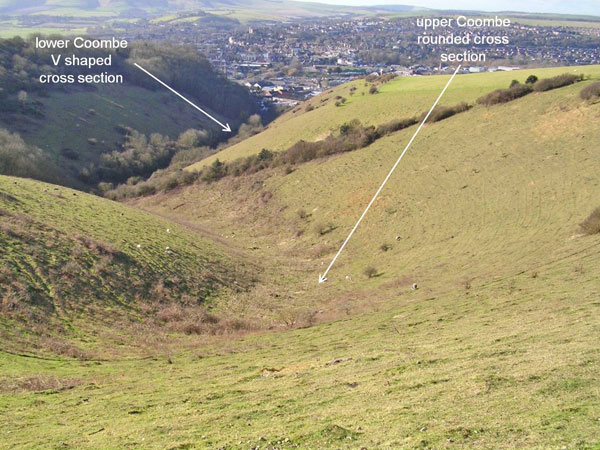
Lewes Downs - Malling Down Nature Reserve (img 3)
The Coombe dry valley viewed from the head of the north branch. Although the lower part of The Coombe dry valley has a V shaped cross section typical of valleys eroded by streamflow, the upper branches have a more rounded cross section, indicative of the role of periglacial weathering and solifluction in their formation. The slopes are underlain by Chalk bedrock but the flat valley bottom is underlain by a narrow strip of Head deposits (coombe rock).
Photograph taken: 04/02/2008
Image file: DSCN1450edann.jpg

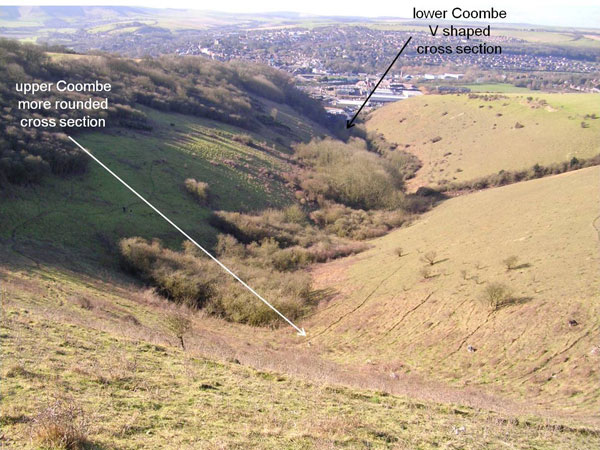
Lewes Downs - Malling Down Nature Reserve (img 4)
The Coombe dry valley viewed from the head of the south branch. Although the lower part of The Coombe dry valley has a V shaped cross section typical of valleys eroded by streamflow, the upper branches have a more rounded cross section, indicative of the role of periglacial weathering and solifluction in their formation. The slopes are underlain by Chalk bedrock but the flat valley bottom is underlain by a narrow strip of Head deposits (coombe rock).
Photograph taken: 04/02/2008
Image file: DSCN1451edann.jpg

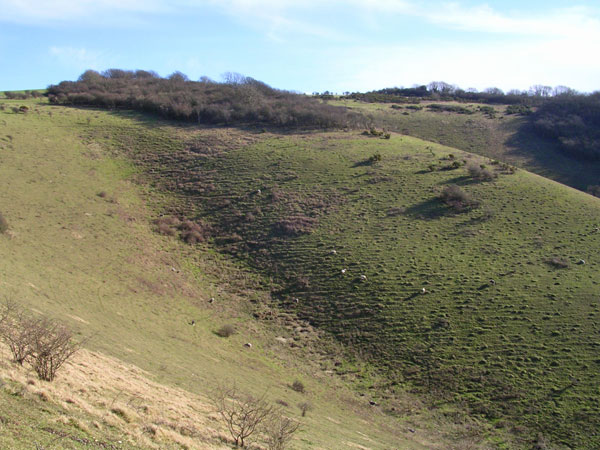
Lewes Downs - Malling Down Nature Reserve (img 5)
The rounded head of the north branch of The Coombe dry valley and the upper part of The Snout, a rounded ridge separating it from the south branch. The Snout shows well developed terracettes formed by downslope soil creep.
Photograph taken: 04/02/2008
Image file: DSCN1452ed.jpg

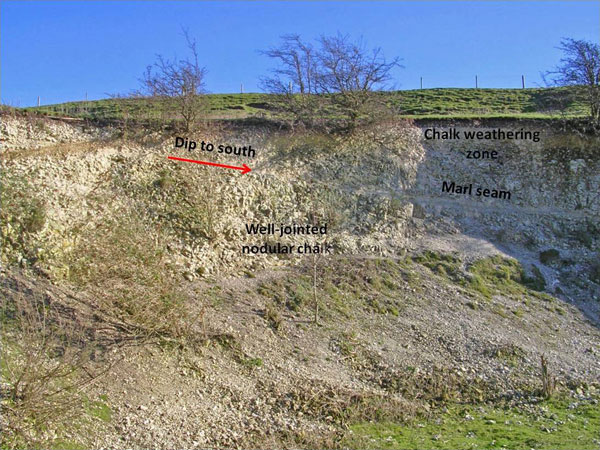
Lewes Downs - Malling Down Nature Reserve (img 6)
On the west side of the path from the north side of the Coombe to New Pit is a small pit exposing part of the Lewes Nodular Chalk. The face is up to 3 m high. For at least a metre below the ground surface the Chalk is disturbed by weathering, possibly including periglacial frost shattering. Below this the nodular Chalk bedrock is broken up by close-spaced jointing. The dip is to the right (south) as shown by the prominent marl seam.
Grid ref TQ42301107.
Photograph taken: 04/02/2008
Image file: DSCN1455edann.jpg

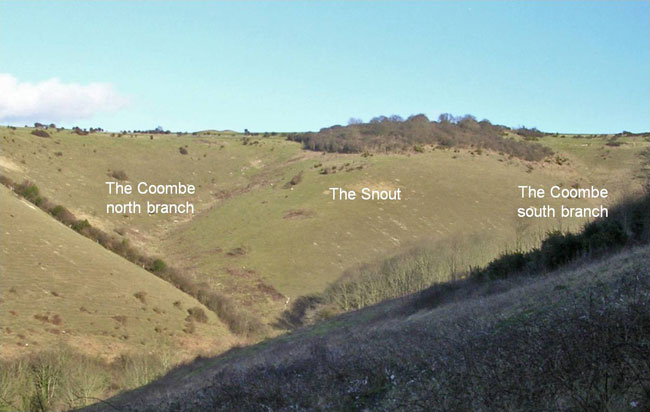
Lewes Downs - Malling Down Nature Reserve (img 7)
View of the upper part of The Coombe dry valley where it branches north and south of The Snout, a rounded ridge separating the two branches. The rounded slopes are underlain by Chalk bedrock but the valley bottoms are underlain by a narrow strip of Head deposits (coombe rock).
Photograph taken: 04/02/2008
Image file: DSCN1468cropedann.jpg


Lewes Downs - Southerham Nature Reserve (img 8)
Looking east from the footpath above Oxteddle Bottom dry valley towards the junction of Bible Bottom and Caburn Bottom dry valleys. Note the asymmetric valley bottom profile with gentle slopes to the left and steeper slopes to the right. A scallop shaped hollow has developed on the north facing slope to the right. This may have been a site of persistent snow banks in cold periods.
Photograph taken: 04/02/2008
Image file: DSCN1471edann.jpg

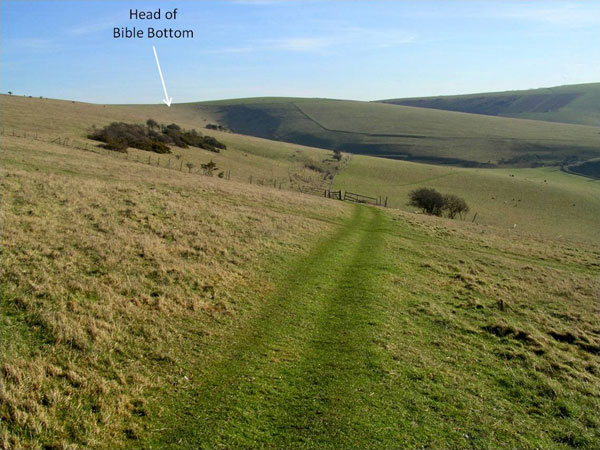
Lewes Downs - Southerham Nature Reserve (img 9)
Looking east from the footpath above Oxteddle Bottom dry valley towards the head of Bible Bottom dry valley.
Photograph taken: 04/02/2008
Image file: DSCN1472edann.jpg

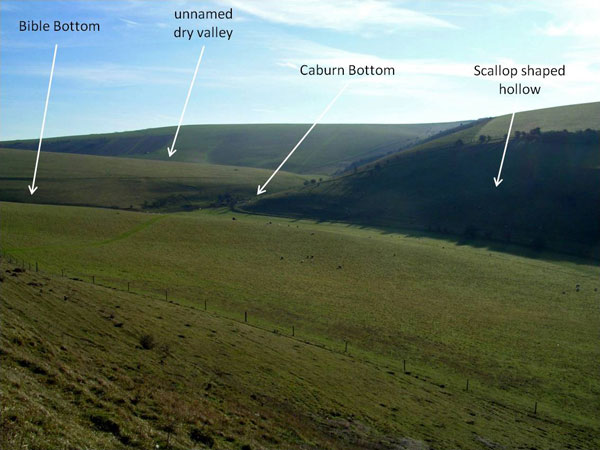
Lewes Downs - Southerham Nature Reserve (img 10)
View from the footpath above Oxteddle Bottom dry valley towards the junction of Bible Bottom and Caburn Bottom dry valleys. Note the asymmetric valley bottom profile with gentle slopes to the left and steeper slopes to the right. A scallop shaped hollow has developed on the north facing slope to the right. This may have been a site of persistent snow banks in cold periods.
Photograph taken: 04/02/2008
Image file: DSCN1473edann.jpg

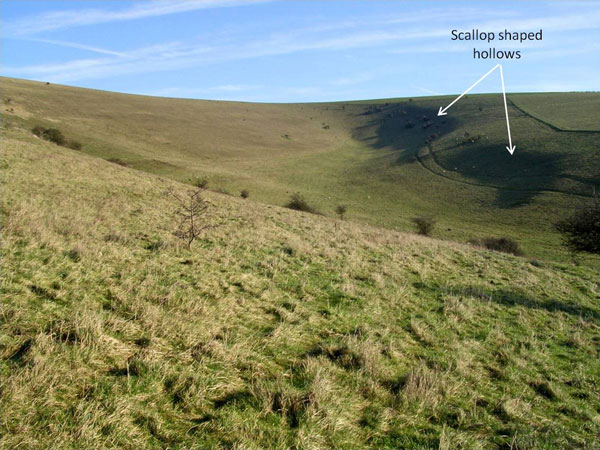
Lewes Downs - Southerham Nature Reserve (img 11)
Looking north east to the bowl shaped head of the Bible Bottom dry valley. Note the rounded valley bottom profile indicative of the role of periglacial weathering in its formation. The north west facing slopes at the right of the photo have developed scallop shaped hollows. These may have been sites of persistent snow patches in periglacial times.
Photograph taken: 04/02/2008
Image file: DSCN1475edann.jpg

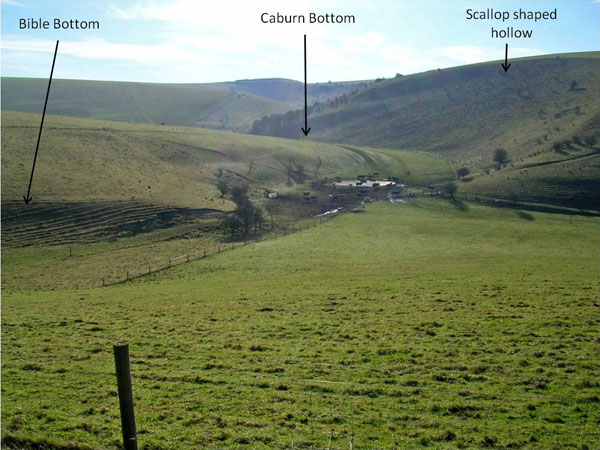
Lewes Downs - Southerham Nature Reserve (img 12)
Looking south across the junction between Bible Bottom and Caburn Bottom. Note the asymmetric valley bottom profile of Caburn Bottom with gentle slopes to the left and steeper slopes to the right. A scallop shaped hollow has developed on the steep north facing slope to the right. This may have been a site of persistent snow banks in cold periods. Mount Caburn is on the skyline.
Photograph taken: 04/02/2008
Image file: DSCN1477edann.jpg

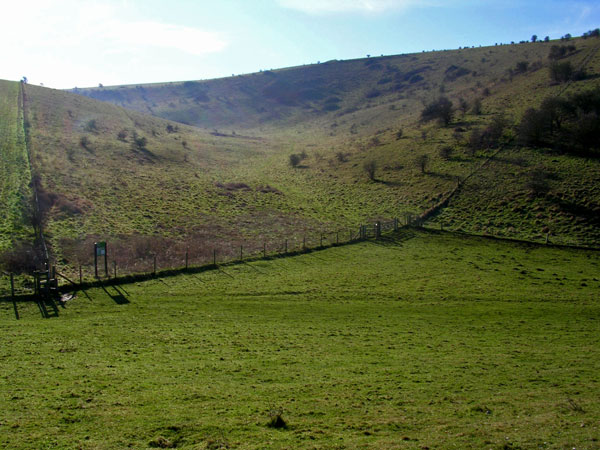
Lewes Downs - Mount Caburn Nature reserve (img 13)
Looking south up the middle part of Caburn Bottom dry valley. Note the rounded cross section, indicative of the role of periglacial weathering and solifluction in its formation. The cross section has an asymmetric profile with steeper slopes on the right. The slopes are underlain by Chalk bedrock but the flat valley bottom is underlain by a narrow strip of head deposits (coombe rock).
Photograph taken: 04/02/2008
Image file: DSCN1479ed.jpg

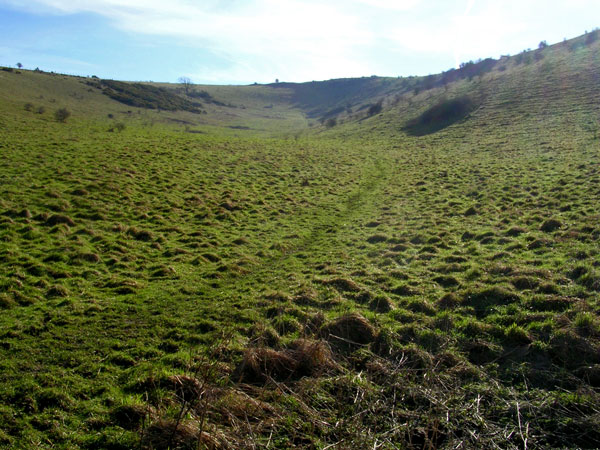
Lewes Downs - Mount Caburn Nature reserve (img 14)
Looking SE up the upper part of Caburn Bottom dry valley to Mount Caburn. Note the rounded cross section, indicative of the role of periglacial weathering and solifluction in 1ts formation. The slopes are underlain by Chalk bedrock but the flat valley bottom is underlain by a narrow strip of Head deposits (coombe rock).
Photograph taken: 04/02/2008
Image file: DSCN1481ed.jpg

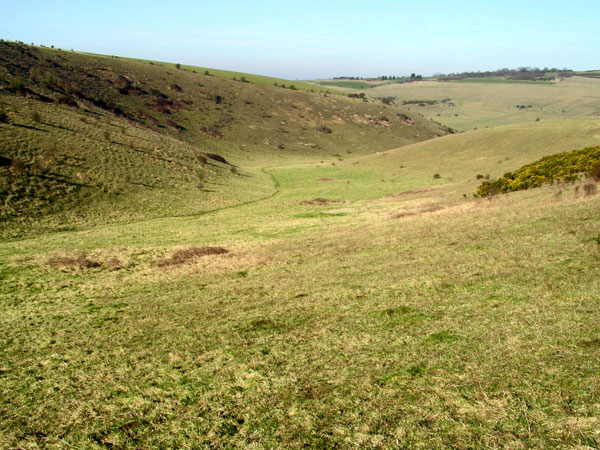
DUPLICATE (img 15)
DUPLICATE
Image file: DSCN1483croped.jpg

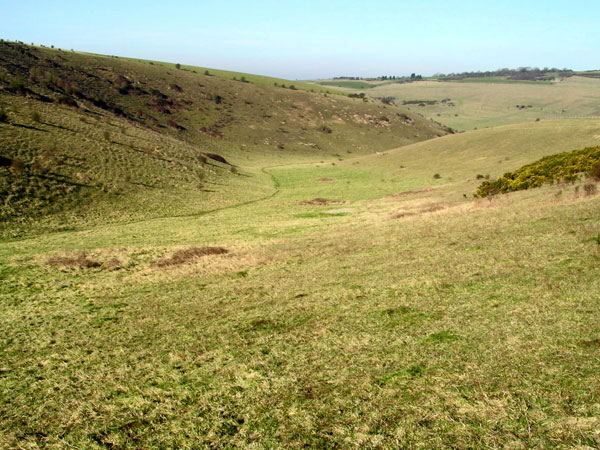
Lewes Downs - Mount Caburn Nature reserve (img 16)
Looking NE towards the middle part of Caburn Bottom dry valley which develops an asymmetric cross section profile with gentler slopes to the right and steeper slopes to the left.
Photograph taken: 04/02/2008
Image file: DSCN1483cropped.jpg

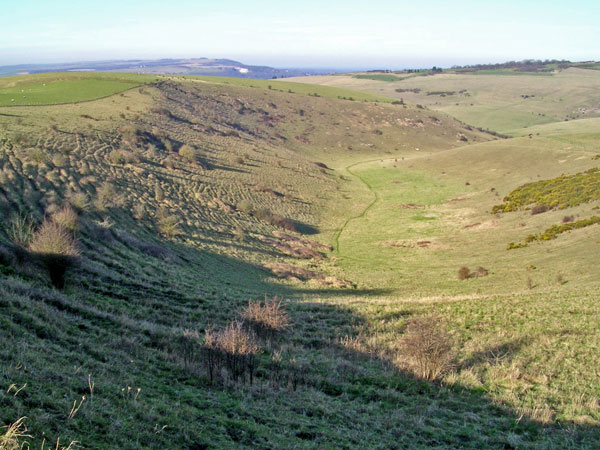
Lewes Downs - Mount Caburn Nature reserve (img 17)
Looking NE down Caburn Bottom from Mount Caburn. The dry valley shows a transition from a rounded cross section in its upper part to an asymmetric cross section by the middle part.
Photograph taken: 04/02/2008
Image file: DSCN1484ed.jpg


Lewes Downs - Mount Caburn Nature reserve (img 18)
View SW from Mount Caburn across to the main scarp of the South Downs. The crest of the intervening Kingston-Beddingham anticline is marked by the raised area of Lower Rise where a residual patch of Grey Chalk overlies Gault Clay. In the foreground is a steep coombe (dry valley) with rounded slopes and head deposits beneath the valley floor.
Photograph taken: 04/02/2008
Image file: DSCN1486edann.jpg

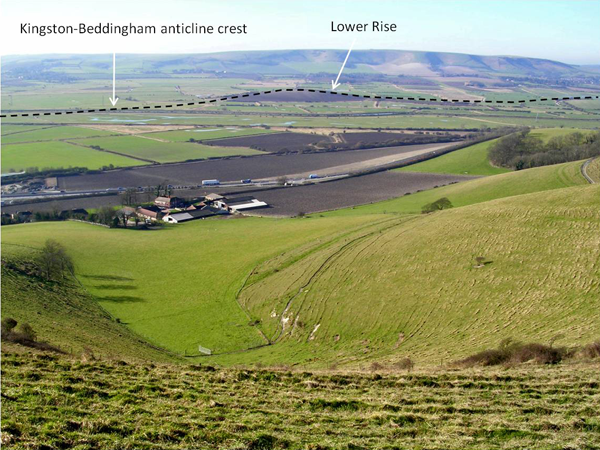
DUPLICATE (img 19)
DUPLICATE
Image file: DSCN1486edann.png

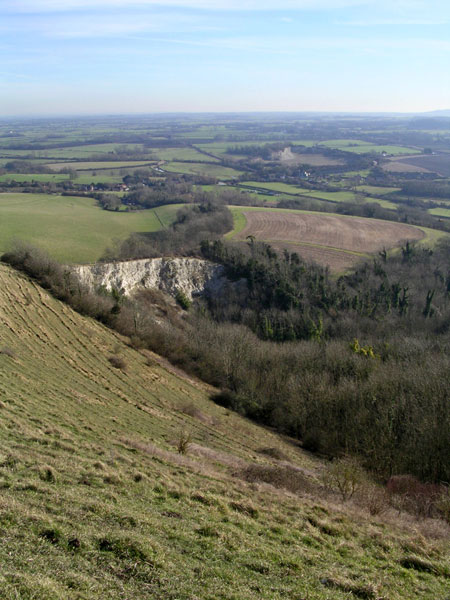
Lewes Downs - Mount Caburn Nature reserve (img 20)
View ESE from top of Mount Caburn showing Caburn chalk pit in the foreground and Balcombe Pit in the background. The Caburn Pit exposes New Pit Chalk and Lewes Chalk while the Balcombe Pit exposes older Zig Zag Chalk.
Photograph taken: 04/02/2008
Image file: DSCN1489ed.jpg

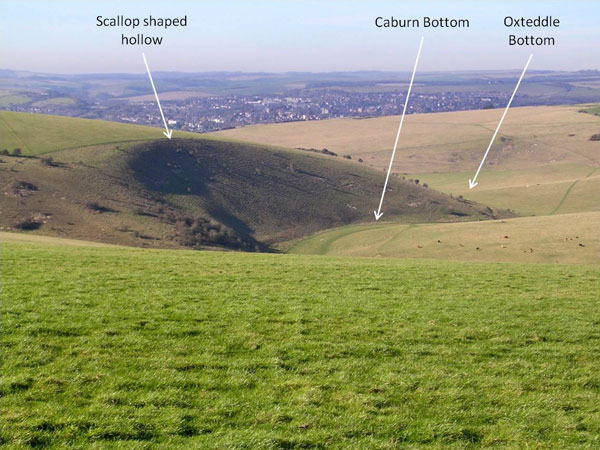
Lewes Downs - Southerham Nature Reserve (img 21)
Lower part of Caburn Bottom viewed from the east. Note the asymmetric valley bottom profile of Caburn Bottom with gentle slopes to the right and steeper slopes to the left. A scallop shaped hollow has developed on the steep NE facing slope to the left. This may have been a site of persistent snow banks in cold periods.
Photograph taken: 04/02/2008
Image file: DSCN1492edann.jpg

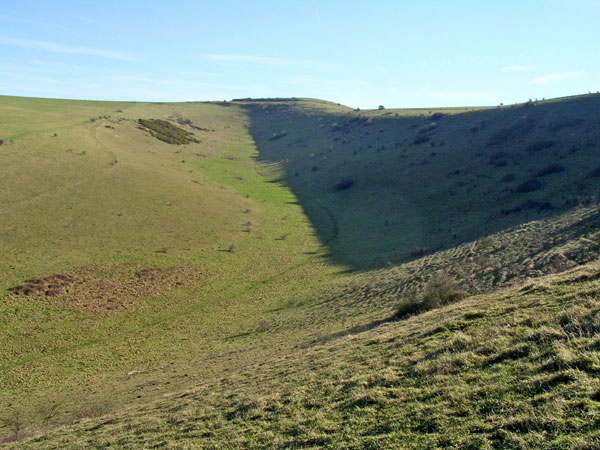
Lewes Downs - Mount Caburn Nature reserve (img 22)
The upper part of Caburn Bottom dry valley beneath Mount Caburn. Note the bowl shaped head of the valley.
Photograph taken: 04/02/2008
Image file: DSCN1498ed.jpg

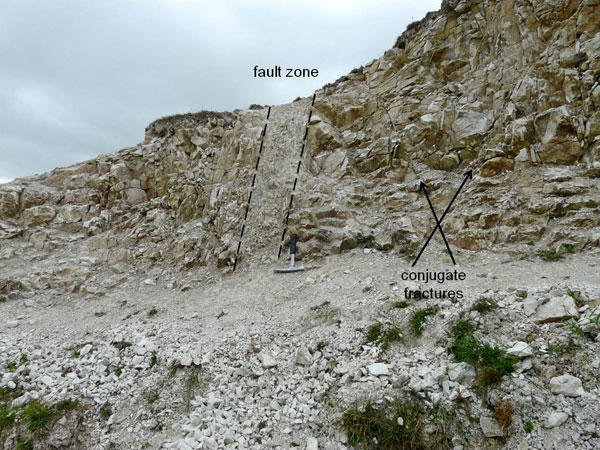
Lewes Downs - Glyndebourne Pit 2 (img 23)
Detail of Glyndebourne Pit 2 showing a fault zone cutting almost vertically through the chalk. The fault zone is filled with fine-grained, damaged rock called fault gouge. To the right of the fault zone the chalk shows two intersecting fractures oriented at about 45° to each other. These are called conjugate fractures. Geological hammer for scale.
Photograph taken: 06/07/2008
Image file: P1000188edann.jpg


Lewes Downs - Southerham Nature Reserve (img 24)
Glyndebourne pit 2 exposing jointed and fractured New Pit Chalk with New Pit Marl 1 at the top of the main face. Fossils found here include bivalves (Inoceramus), brachipods (Orbirhynchia) and ammonite moulds (Collignoniceras).
Photograph taken: 06/07/2008
Image file: P1000191edann.jpg


East Sussex Local Geological Sites - Balcombe Pit (img 25)
Eastern end of Balcombe Pit exposing Zig Zag Chalk above West Melbury Marly Chalk.
Photograph taken: 14/06/2011
Grid ref TQ46070859
Direction ESE
Image file: P1030405ed.jpg


East Sussex Local Geological Sites - Caburn Pit (img 26)
Caburn Pit from Mt Caburn showing the upper cliffs in Lewes Chalk. Dip is to the left (north) on the southern flank of the Caburn syncline.
Photo taken (with zoom lens): 14/06/2011
Grid ref TQ44510887
Direction ENE
Image file: P1030438edann.jpg

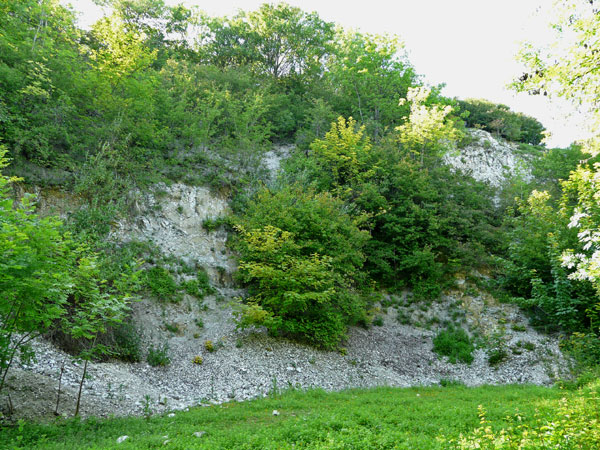
East Sussex Local Geological Sites - Glyndebourne Pit (img 27)
Vegetated western end of main face of Glyndebourne Pit exposing lowermost section of New Pit Chalk. Talus obscures top of Holywell Chalk.
Photograph taken: 14/06/2011
Grid ref TQ44771014
Direction NNW
Image file: P1030442ed.jpg

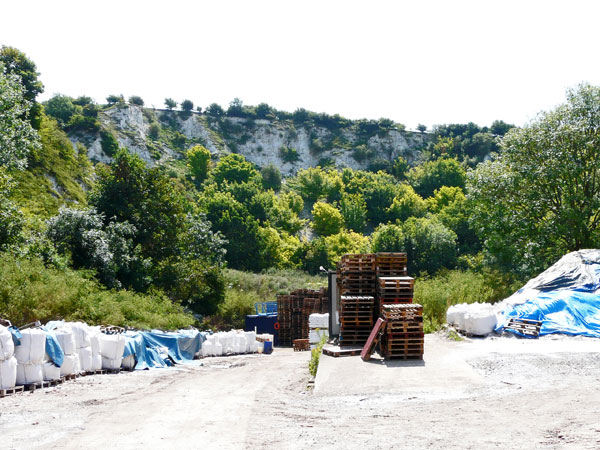
East Sussex Local Geological Sites - New Pit (img 28)
View from floor of New Pit quarry floor showing extensive tree and shrub cover on the lower face. Upper face visible at head of quarry exposes Lewes Nodular Chalk. Top of face is 40 m above quarry floor.
Photograph taken: 05/07/2011
Grid ref TQ42431128
Direction SSE
Image file: P1030623ed.jpg

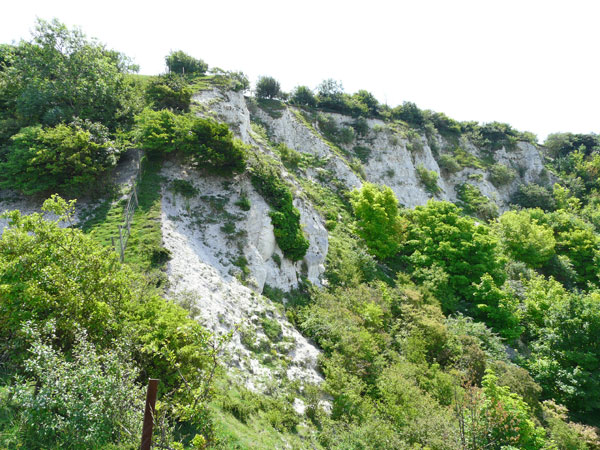
Lewes Downs - Malling Down Nature Reserve (img 29)
Head of quarry from nature reserve land to east. The bluff in the foreground exposes the upper New Pit Chalk and the face above exposes lower Lewes Chalk.
Photograph taken: 05/07/2011
Grid ref TQ42531123
Direction south
Image file: P1030627ed.jpg

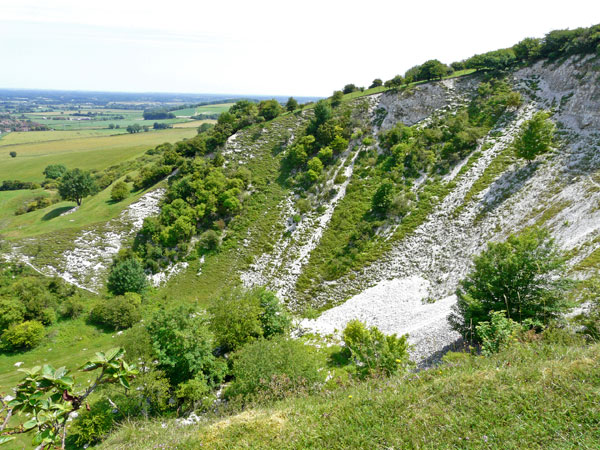
East Sussex Local Geological Sites - Bridgewick Pit (img 30)
East side of quarry showing steep partly vegetated talus slopes below the chalk faces.
Photograph taken: 05/07/2011
Grid ref TQ43041120
Direction east
Image file: P1030631ed.jpg

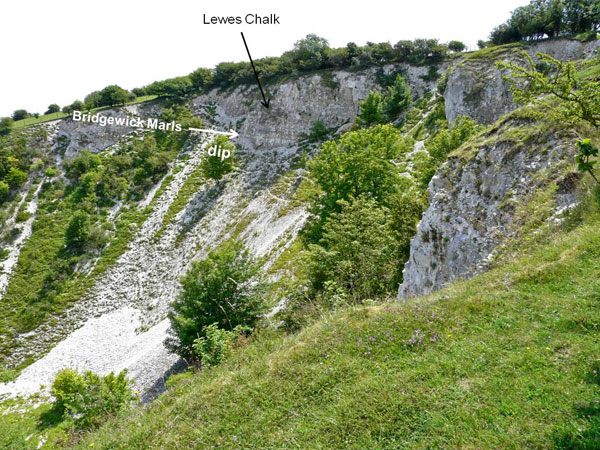
East Sussex Local Geological Sites - Bridgewick Pit (img 31)
Head of quarry from west side. Cliffs expose lower Lewes Chalk between the Bridgewick and Southerham Marls.
Photograph taken:05/07/2011
Grid ref TQ43041120
Direction ESE
Image file: P1030632edann.jpg

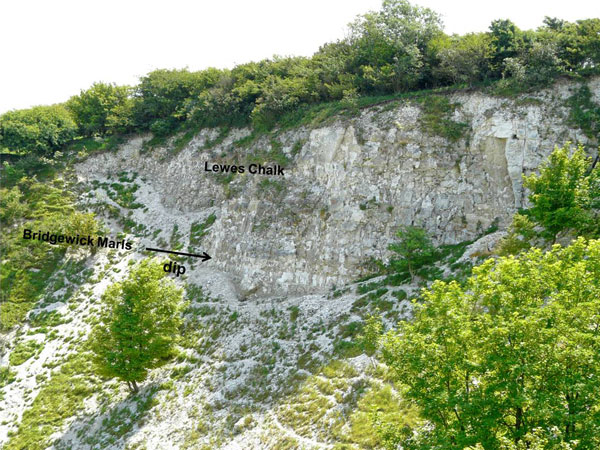
East Sussex Local Geological Sites - Bridgewick Pit (img 32)
Chalk face at SE corner of quarry exposing lower Lewes Chalk with Bridgewick Marls near the base. Photo taken with zoom lens.
Photograph taken: 05/07/2011
Grid ref TQ43041120
Direction ESE
Image file: P1030633edann.jpg

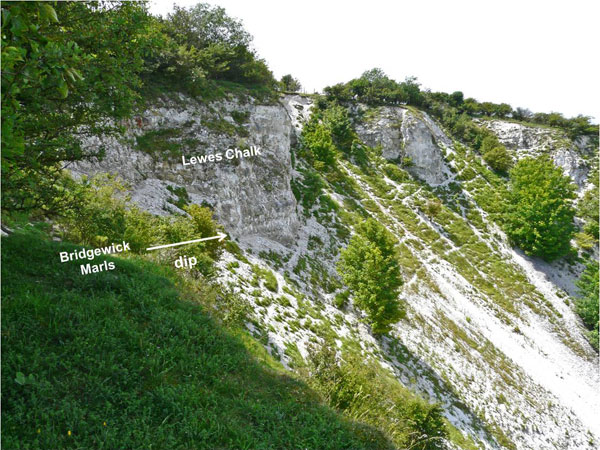
East Sussex Local Geological Sites - Bridgewick Pit (img 33)
Head of quarry from east side showing steep partly vegetated talus slopes below the faces cut in lower Lewes Chalk.
Photograph taken: 05/07/2011
Grid ref TQ43161116
Direction west
Image file: P1030637edann.jpg


East Sussex Local Geological Sites - Bridgewick Pit (img 34)
West side of quarry showing steep partly vegetated talus slopes below the chalk faces cut in lower Lewes Chalk.
Photograph taken: 05/07/2011
Grid ref TQ43161116
Direction WNW
Image file: P1030638.jpg

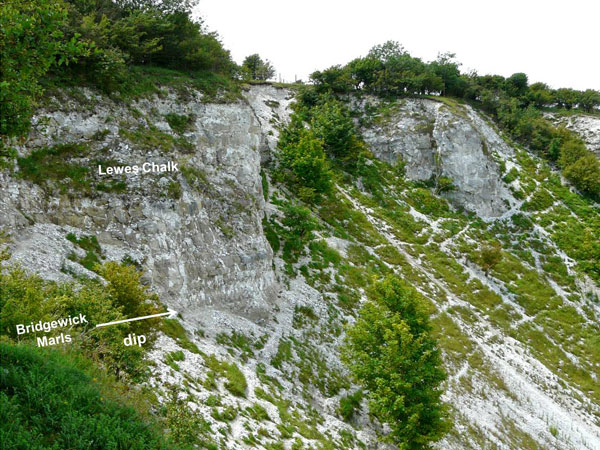
East Sussex Local Geological Sites - Bridgewick Pit (img 35)
Head of quarry from east side showing faces cut in lower Lewes Chalk. Bridgewick Marls exposed at base of cliff.
Photograph taken: 05/07/2011
Grid ref TQ43161116
Direction west
Image file: P1030639edann.jpg

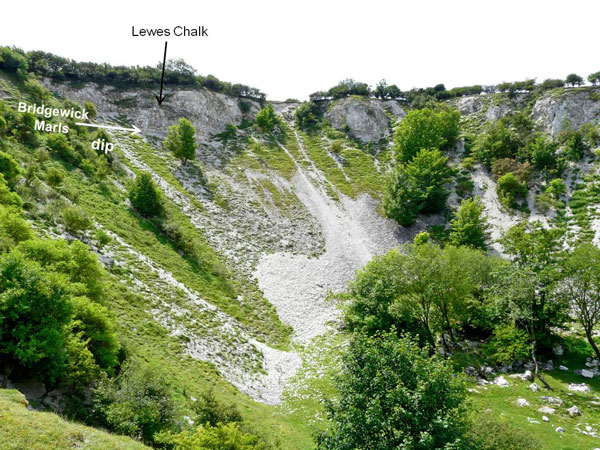
East Sussex Local Geological Sites - Bridgewick Pit (img 36)
Chalk faces at head of quarry with steep partly vegetated talus slopes below. The quarry floor is relatively open.
Photograph taken: 05/07/2011
Grid ref TQ43151123
Direction SSW
Image file: P1030641edann.jpg


East Sussex Local Geological Sites - Bridgewick Pit (img 37)
The quarry floor and lower talus slopes are relatively open and accessible for examining boulders and rock fragments.
Photograph taken:05/07/2011
Grid ref TQ43111125
Direction south
Image file: P1030644edcropann.jpg

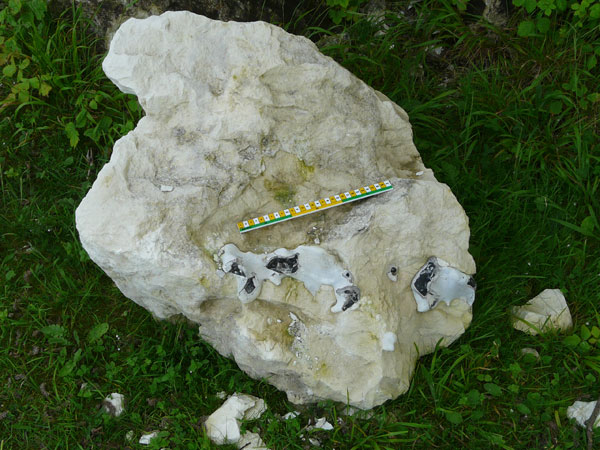
East Sussex Local Geological Sites - Bridgewick Pit (img 38)
Chalk boulder on floor of quarry showing detail of tubular flints with complex 3D shapes formed by infilling of burrows created by marine animals in the original chalk sediments.
30 cm scale.
Photograph taken:05/07/2011
Grid ref TQ43101120
Image file: P1030647.jpg

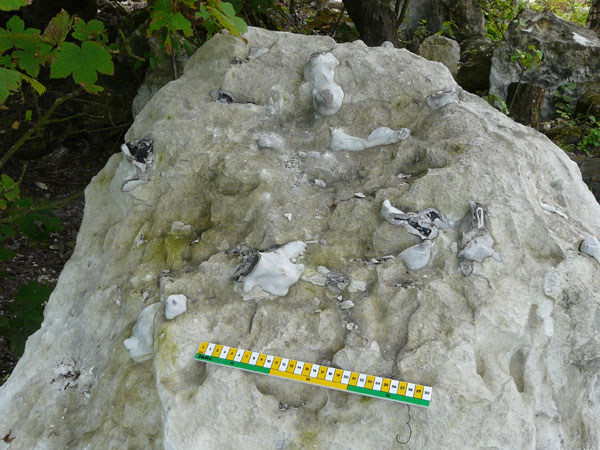
East Sussex Local Geological Sites - Bridgewick Pit (img 39)
Large chalk boulder on floor of quarry showing tubular flints with complex 3D shapes formed by infilling of burrows created by marine animals in the original chalk sediments.
30 cm scale.
Photograph taken:05/07/2011
Grid ref TQ43101120
Image file: P1030649.jpg

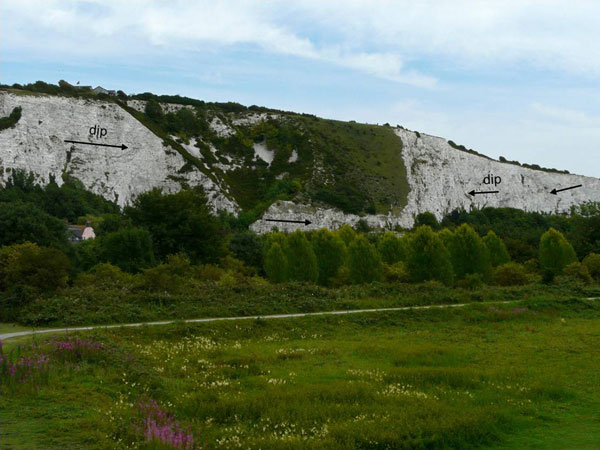
Lewes Downs - Lewes Railway Land Nature reserve (img 40)
Chalk face between Navigation Pit on left and Southerham Works Quarry on right viewed from west bank of River Ouse. This section crosses the Caburn Syncline with gentle dip to right (south) in Navigation Pit and steeper dip to the left (north) in Southerham Works Quarry. Dip flattens beneath the vegetated cliff section close to the axis of the syncline. The cliffs expose Lewes Chalk overlain by Seaford Chalk.
Photograph taken: 05/07/2011
Grid ref TQ42111001
Direction ESE
Image file: P1030652edann.jpg

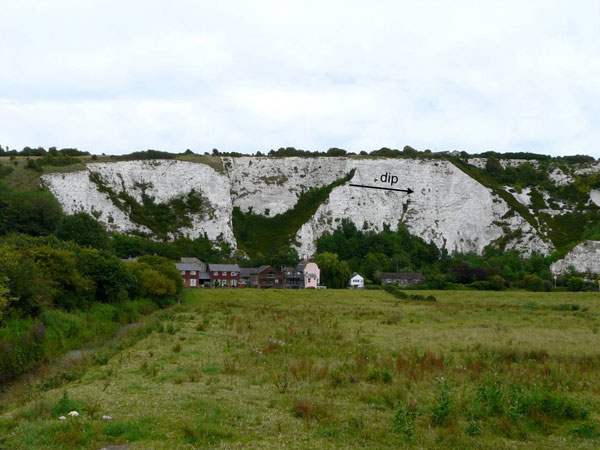
Lewes Downs - Lewes Railway Land Nature reserve (img 41)
Chalk faces of the Navigation Pit viewed from Lewes Railway Land Nature Reserve. The South Portal of the Cuilfail Tunnel is at the left. Cliffs up to 65 m high expose Lewes Chalk overlain by Seaford Chalk with gentle dip to right (south) on the northern limb of the Caburn syncline.
Photograph taken: 05/07/201
Grid ref TQ42220988
Direction east
Image file: P1030653edann.jpg


Lewes Downs - Navigation Pit (img 42)
Chalk faces of the Navigation Pit viewed from Lewes Railway Land Nature Reserve. The South Portal of the Cuilfail Tunnel is at the left. Cliffs up to 65 m high expose Lewes Chalk overlain by Seaford Chalk with gentle dip to right (south) on the northern limb of the Caburn syncline.
Photograph taken: 05/07/2011
Grid ref TQ42220988
Direction east
Image file: P1030653edann_a.jpg

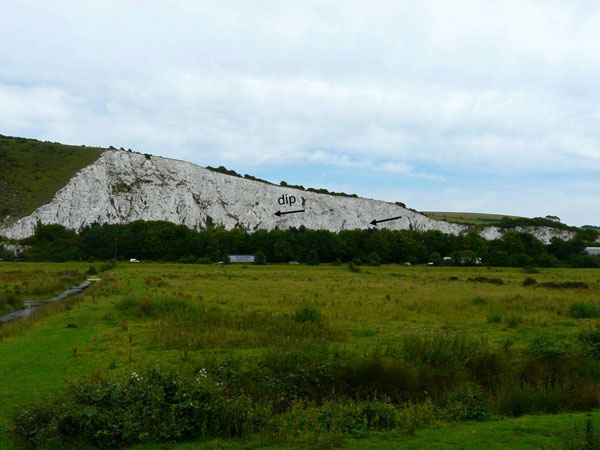
East Sussex Local Geological Sites - Southerham Works Quarry (img 43)
Southerham Works Quarry viewed from footpath west of the River Ouse. Sequence is from Holywell Chalk at right through Lewes Chalk to lower Seaford Chalk at the highest part of the face at left. Exposes southern flank of Caburn Syncline with steep dip to north at right diminishing to sub-horizontal dip at the left. Industrial estate is hidden from view by trees.
Photograph taken: 05/07/2011
Grid ref TQ42270970
Direction ESE
Image file: P1030654edann.jpg

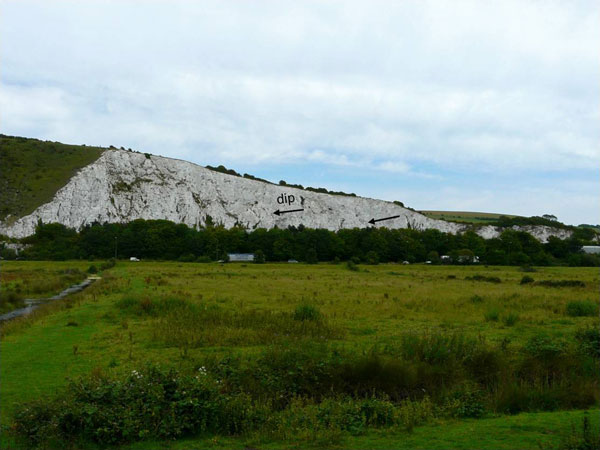
Lewes Downs - Lewes Railway Land Nature reserve (img 44)
Southerham Works Quarry viewed from footpath west of the River Ouse. Sequence is from Holywell Chalk at right through Lewes Chalk to lower Seaford Chalk at the highest part of the face at left. Exposes southern flank of Caburn Syncline with steep dip to north at right diminishing to sub-horizontal dip at the left. Industrial estate is hidden from view by trees.
Photograph taken: 05/07/2011
Grid ref TQ42270970
Direction ESE
Image file: P1030654edann2.jpg

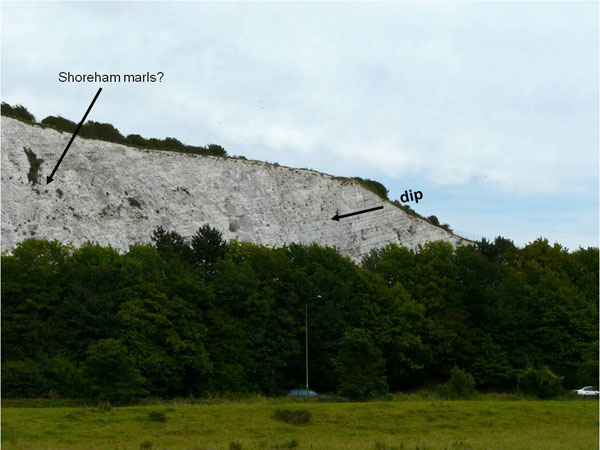
East Sussex Local Geological Sites - Southerham Works Quarry (img 45)
Central part of quarry viewed from footpath west of the River Ouse. The face exposes Lewes Chalk with marl seams and numerous flint bands and Seaford Chalk (above Shoreham marls). Shows the southern flank of Caburn Syncline with steep dip to the left (north). Industrial estate is hidden from view by trees.
Photo taken (with zoom lens): 05/07/2011
Grid ref TQ42400974
Direction SE
Image file: P1030657edann.jpg


East Sussex Local Geological Sites - Southerham Works Quarry (img 46)
Northern end of quarry viewed from footpath west of the River Ouse. The face is up to 60 m high and exposes mainly Lewes Chalk with Seaford Chalk (above Shoreham marls) towards the top. Shows southern flank of Caburn Syncline with dip diminishing to sub-horizontal dip at the left (north). Industrial estate is hidden from view by trees.
Photograph taken: 05/07/2011
Grid ref TQ42480976
Direction east
Image file: P1030658edann.jpg

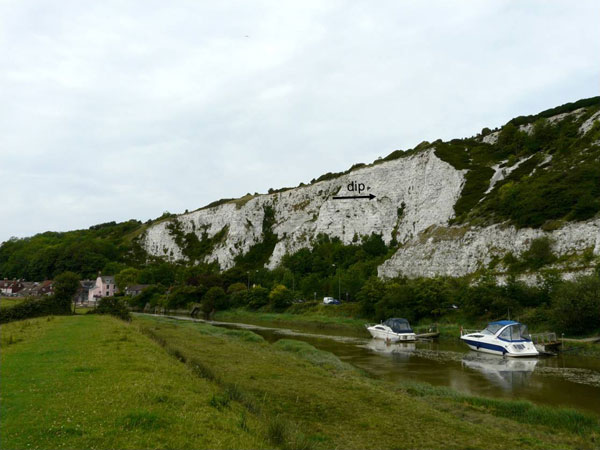
Lewes Downs - Lewes Railway Land Nature reserve (img 47)
Chalk faces of Navigation Pit viewed from riverside footpath. The South Portal of the Cuilfail Tunnel is at the left. Cliffs up to 65 m high expose Lewes Chalk overlain by Seaford Chalk with gentle dip to right (south) on the northern limb of the Caburn syncline.
Photograph taken: 05/07/2011
Image file: P1030660edann.jpg

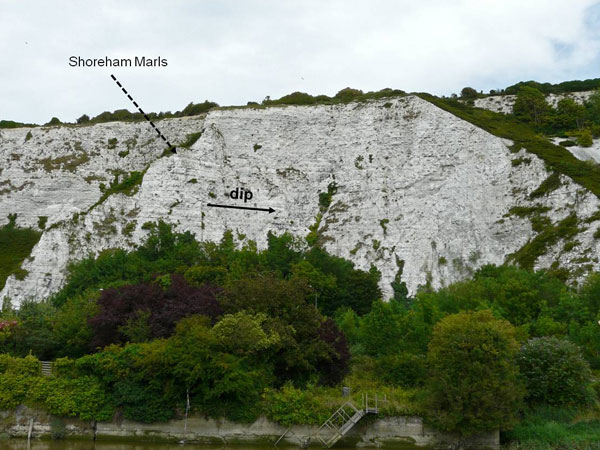
East Sussex Local Geological Sites - Navigation Pit (img 48)
South end of quarry viewed from west bank of River Ouse. Cliffs expose Lewes Chalk overlain by Seaford Chalk with gentle dip to right (south) flattening towards the axis of the Caburn Syncline. Base of Seaford Chalk (Shoreham Marls) is at about 2/3 of the cliff height. Inclined faces at left and right may follow major natural joints or fractures.
Photograph taken: 05/07/2011
Grid ref TQ42450988
Direction NE
Image file: P1030663edann.jpg

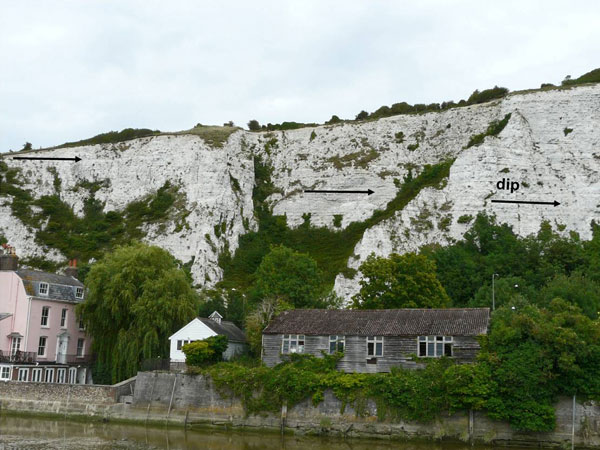
East Sussex Local Geological Sites - Navigation Pit (img 49)
Centre of quarry viewed from west bank of River Ouse. Cliffs expose Lewes Chalk overlain by Seaford Chalk with gentle dip (5°) to right (south). Vertical and inclined faces at centre may follow major natural joints or fractures.
Photograph taken: 05/07/2011
Grid ref TQ42440991
Direction NE
Image file: P1030664edann.jpg

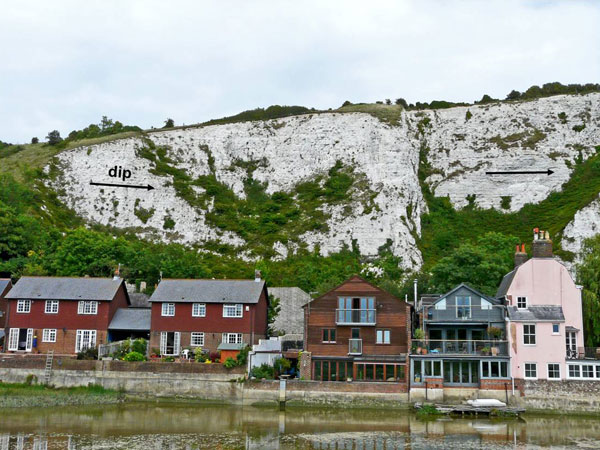
East Sussex Local Geological Sites - Navigation Pit (img 50)
North end of quarry viewed from west bank of River Ouse. Cliffs expose Lewes Chalk overlain by Seaford Chalk with gentle dip (5°) to right (south). Base of Seaford Chalk is close to the top of the cliff at left (north) end.
Photograph taken: 05/07/2011
Grid ref TQ42400994
Direction NE
Image file: P1030665edann.jpg

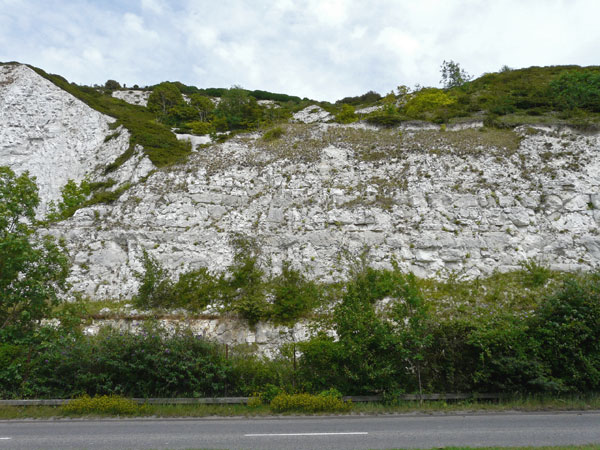
East Sussex Local Geological Sites - Navigation Pit (img 51)
Exposure of Lewes Nodular Chalk at south end of quarry by the A26. About 20 m high. Section from top Kingston Beds to Cliffe beds includes marls, flint bands and hardgrounds. Bedding dip is horizontal at the right end of the exposure approaching the axis of the Caburn Syncline.
Photograph taken: 05/07/2011
Grid ref TQ42510988
Direction ENE
Image file: P1030666ed.jpg

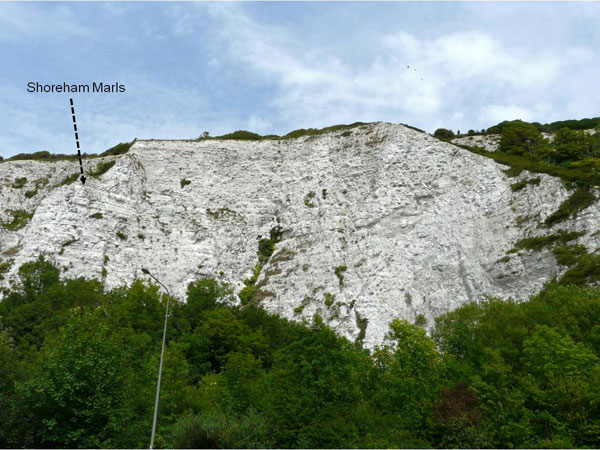
East Sussex Local Geological Sites - Navigation Pit (img 52)
South end of quarry viewed from A26. Cliffs expose Lewes Chalk overlain by Seaford Chalk with gentle dip to right (south). Base of Seaford Chalk (Shoreham Marls) is at about 2/3 of the cliff height. Inclined faces at left and right may follow major natural joints or fractures.
Photograph taken: 05/07/2011
Grid ref TQ42500992
Direction ENE
Image file: P1030667cropann.jpg

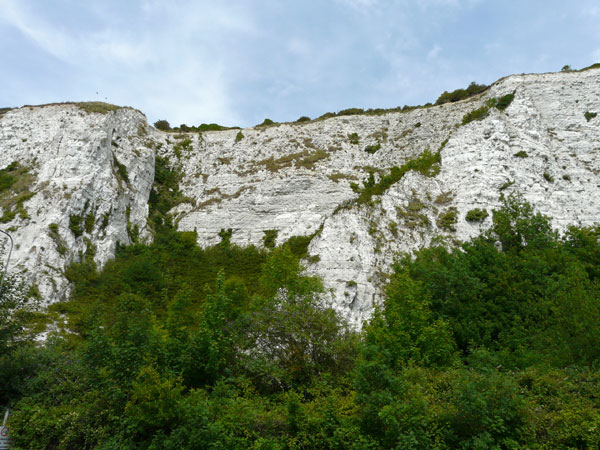
East Sussex Local Geological Sites - Navigation Pit (img 53)
Centre of quarry viewed from A26. Cliffs expose Lewes Chalk overlain by Seaford Chalk with gentle dip to right (south). Vertical and inclined faces at centre may follow major natural joints or fractures.
Photograph taken: 05/07/2011
Grid ref TQ42480996
Direction ENE
Image file: P1030668ed.jpg

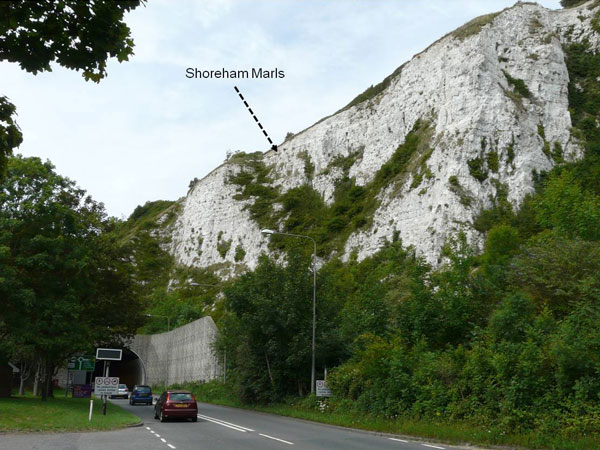
East Sussex Local Geological Sites - Navigation Pit (img 54)
North end of quarry above the Culfail Tunnel portal. Cliffs expose Lewes Chalk overlain by Seaford Chalk with gentle dip to right (south). Base of Seaford Chalk (Shoreham Marls) is close to the top of the cliff at the far end.
Photograph taken: 05/07/2011
Grid ref TQ42490994
Direction north
Image file: P1030671ann.jpg

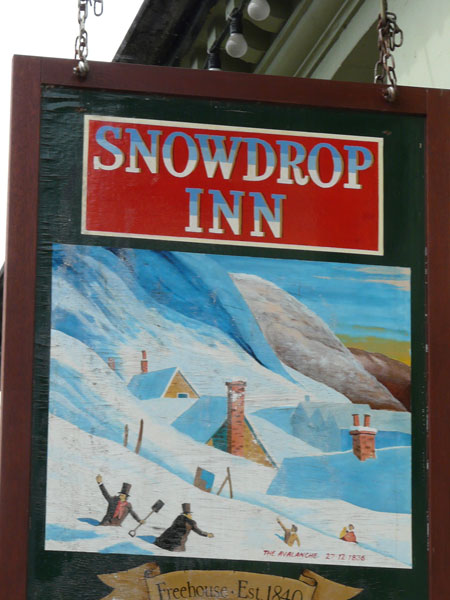
East Sussex Local Geological Sites - Navigation Pit (img 55)
Snowdrop Inn sign commemorating the large snow avalanche of 1836 which came down the very steep slopes above the modern Cuilfail Tunnel location.
Photograph taken: 05/07/2011
Image file: P1030675.jpg

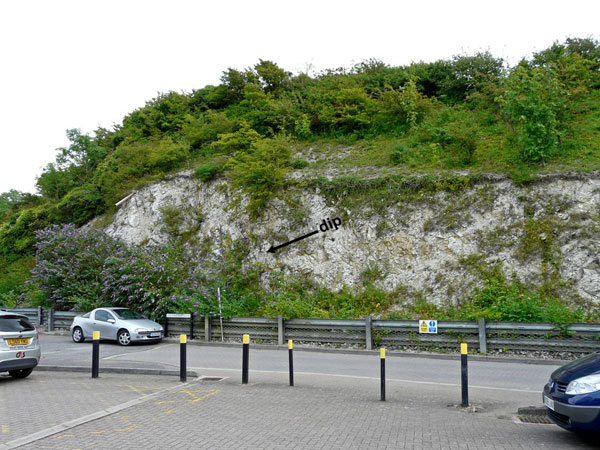
East Sussex Local Geological Sites - Southerham Works Quarry (img 56)
Low exposures at southern end of quarry showing Holywell Nodular Chalk dipping about 30° to the left (north). Vegetation is encroaching on the face and stratigraphic and structural features are obscured.
Photograph taken: 14/07/2011
Grid ref TQ42590936
Direction ESE
Image file: P1030958edann.jpg

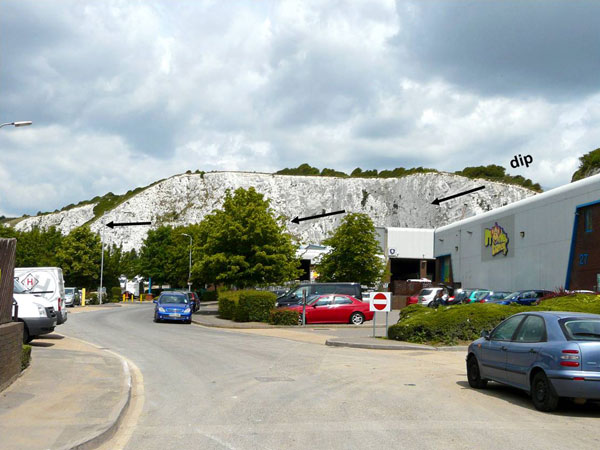
East Sussex Local Geological Sites - Southerham Works Quarry (img 57)
High face of the northern half of the quarry viewed from southern part of the estate. Exposes Lewes Chalk and the overlying lower Seaford Chalk. Beds dip to the left (north) on the southern limb of the Caburn Syncline. The dip flattens to the north approaching the axis of the syncline.
Photograph taken: 14/07/2011
Grid ref TQ42600943
Direction north
Image file: P1030963edann.jpg

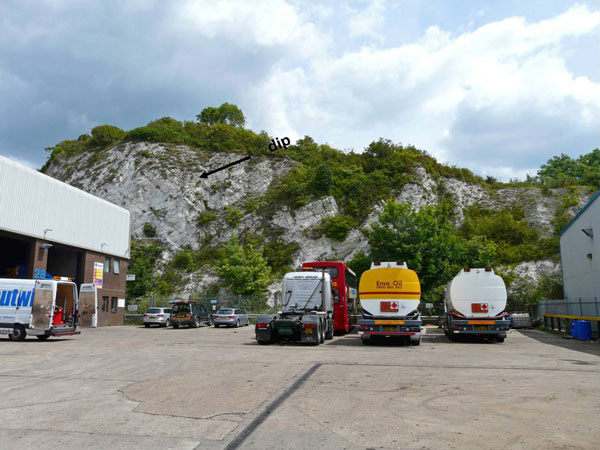
East Sussex Local Geological Sites - Southerham Works Quarry (img 58)
Face near southern end of quarry exposing Lewes Nodular Chalk (from base to Lewes Marl) with numerous flint bands and marl seams. Dip is about 20° to the left (north). Vegetation is encroaching on the exposure and obscuring stratigraphic and structural features.
Photograph taken: 14/07/2011
Grid ref TQ42630950
Direction east
Image file: P1030967edann.jpg

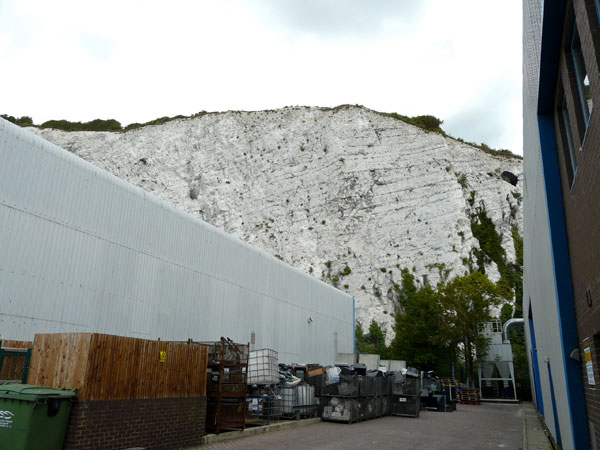
East Sussex Local Geological Sites - Southerham Works Quarry (img 59)
Face near centre of quarry exposing Lewes Nodular Chalk with marl seams and numerous flint bands, steeply dipping to the left (north). Two parallel thrust faults dipping at about 45° are visible on the right side of the face.
Photograph taken: 14/07/2011
Grid ref TQ42640961
Direction ENE
Image file: P1030971ed.jpg

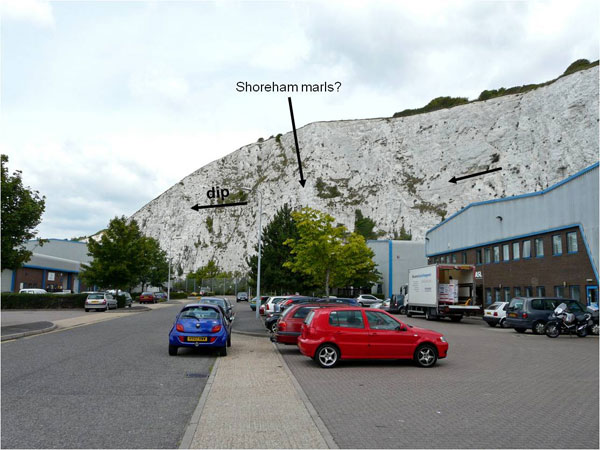
East Sussex Local Geological Sites - Southerham Works Quarry (img 60)
Northern quarry face viewed from centre of the estate. Exposes Lewes Chalk and the overlying lower Seaford Chalk (above Shoreham marls). Dips at left are sub-horizontal near the axis of the Caburn Syncline.
Photograph taken: 14/07/2011
Grid ref TQ42620962
Direction north
Image file: P1030972edann.jpg

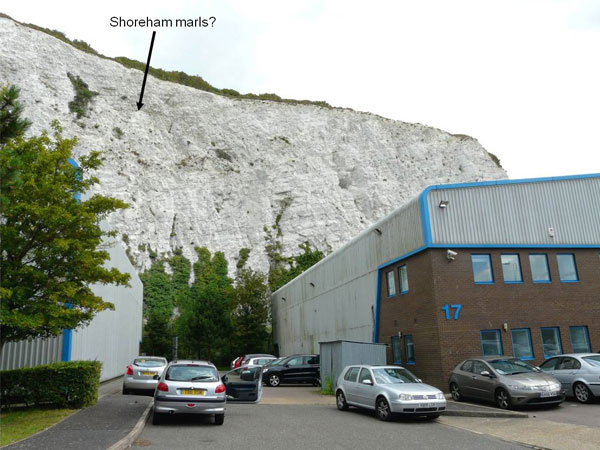
East Sussex Local Geological Sites - Southerham Works Quarry (img 61)
Face near centre of quarry exposing Lewes Nodular Chalk with marl seams and numerous flint bands, dipping steeply to the left (north). The top of the face exposes Seaford Chalk, above the Shoreham marls.
Photograph taken: 14/07/2011
Grid ref TQ42640968
Direction east
Image file: P1030976edann.jpg

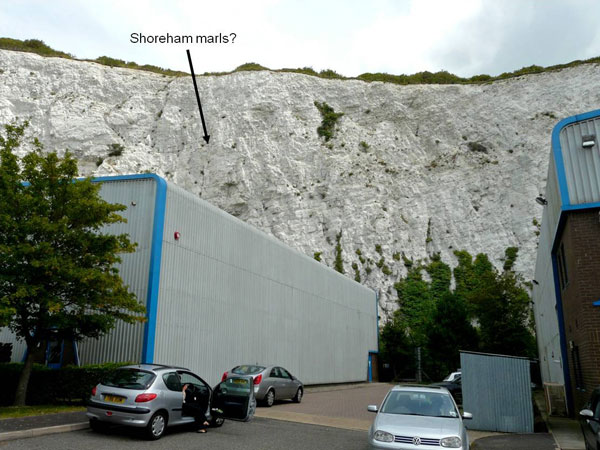
East Sussex Local Geological Sites - Southerham Works Quarry (img 62)
Face near centre of quarry exposing Lewes Nodular Chalk with marl seams and numerous flint bands, dipping steeply to the left (north). The top of the face exposes Seaford Chalk, above the Shoreham marls.
Photograph taken: 14/07/2011
Grid ref TQ42640967
Direction ENE
Image file: P1030977edann.jpg

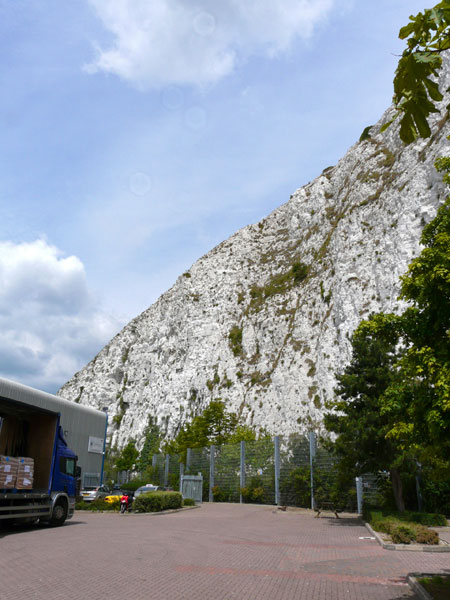
East Sussex Local Geological Sites - Southerham Works Quarry (img 63)
Northern end of quarry exposing Lewes Nodular Chalk. Dip is sub-horizontal approaching the axis of the Caburn Syncline.
Photograph taken: 14/07/2011
Grid ref TQ42640971
Direction NNW
Image file: P1030978ed.jpg

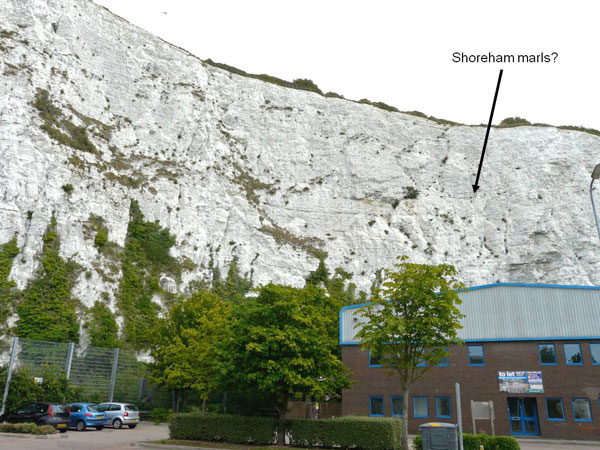
East Sussex Local Geological Sites - Southerham Works Quarry (img 64)
Northern quarry face exposing Lewes Chalk and the overlying lower Seaford Chalk (above Shoreham marls) in the higher part of the face. Dips are sub-horizontal near the axis of the Caburn Syncline.
Photograph taken: 14/07/2011
Grid ref TQ42630968
Direction NE
Image file: P1030980edann.jpg

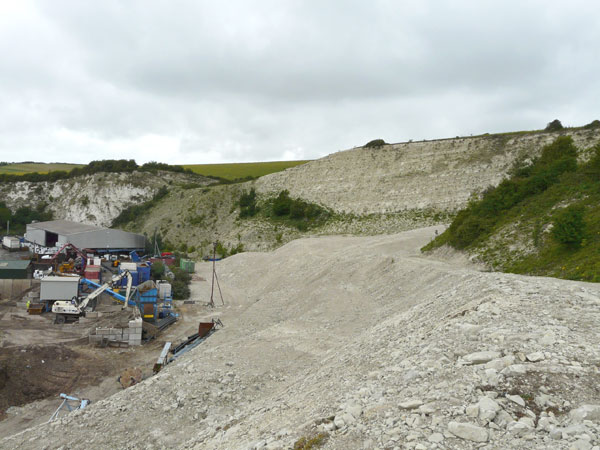
East Sussex Local Geological Sites - Machine Bottom Pit (img 65)
NE main face of Machine Bottom Pit from lower bench. Air-weathered cliffs to left and scraped face to right, both exposing Zig Zag Chalk. At the top of the scraped face Plenus Marls and Melbourn Rock are exposed.
Photograph taken: 18/07/2011
Grid ref TQ43270900
Direction NNW
Image file: P1040014ed.jpg


East Sussex Local Geological Sites - Southerham Grey Pit (img 66)
Southeastern section of main face of Southerham Grey Pit exposing West Melbury Marly Chalk.
Photograph taken: 20/10/2011
Grid ref TQ42750892
Direction ENE
Image file: P1050653ed.jpg

Hastings to Pett Level
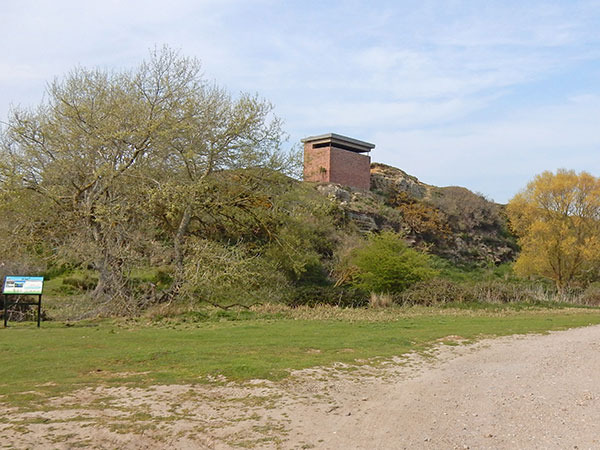
Hastings to Pett Beach SSSI: Toot Rock at Pett Levels (img 68)
Cliffs of former islet, isolated from sea about 5000 years ago. Outcrop of sandstone within the Wadhurst Clay formation.
Photo taken: 18/04/2019
Grid ref TQ89141363
Direction N
Image file: 1_DSCN3084.jpg


Hastings to Pett Beach SSSI: Toot Rock at Pett Levels (img 69)
Cliffs of former islet, isolated from sea about 5000 years ago. Outcrop of sandstone within the Wadhurst Clay formation.
Photo taken: 18/04/2019
Grid ref TQ89161366
Direction NW
Image file: 2_DSCN3078.jpg

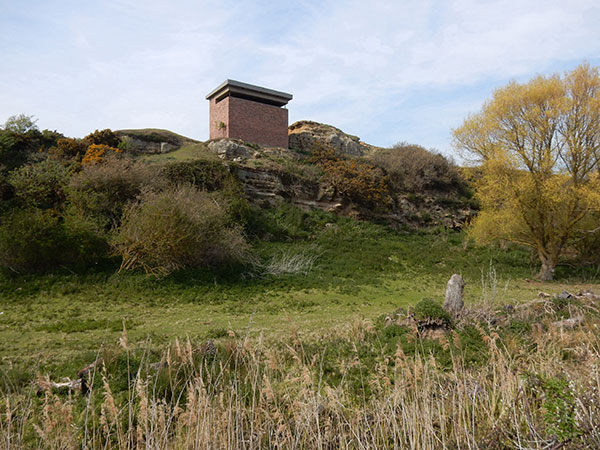
Hastings to Pett Beach SSSI: Toot Rock at Pett Levels (img 70)
Cliffs of former islet, isolated from sea about 5000 years ago. Outcrop of sandstone within the Wadhurst Clay formation.
Photo taken: 18/04/2019
Grid ref TQ89161366
Direction NW
Image file: 3_DSCN3077.jpg

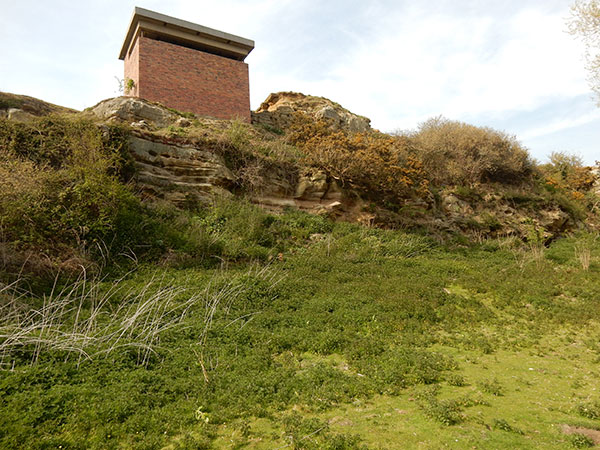
Hastings to Pett Beach SSSI: Toot Rock at Pett Levels (img 71)
Cliffs of former islet, isolated from sea about 5000 years ago. Outcrop of sandstone within the Wadhurst Clay formation.
Photo taken: 18/04/2019
Grid ref TQ89151368
Direction N
Image file: 4_DSCN3080.jpg

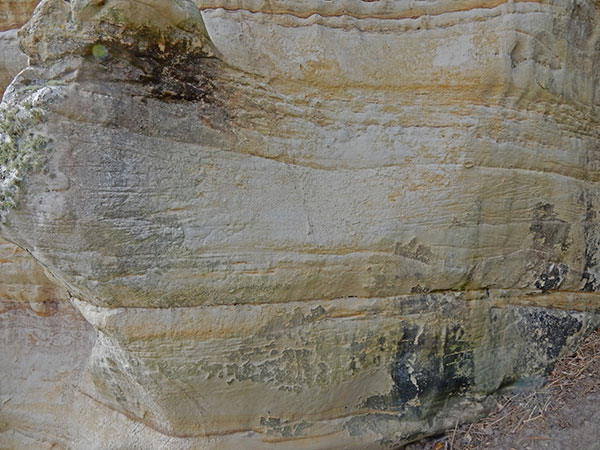
DUPLICATE (img 72)
DUPLICATE
Image file: 5_DSCN3081.jpg

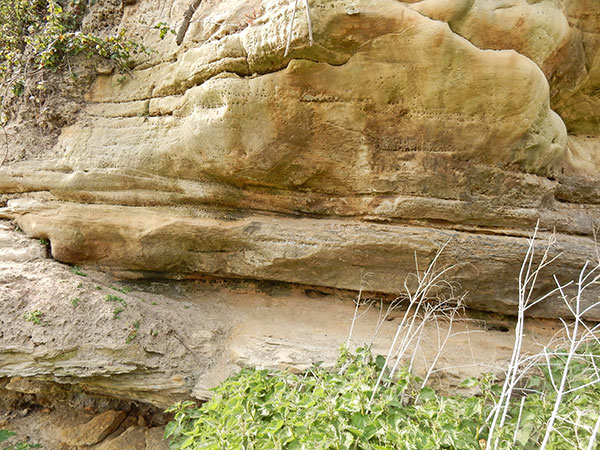
Hastings to Pett Beach SSSI: Toot Rock at Pett Levels (img 73)
Close-up of sandstone face showing bedding picked out by differential weathering, also some patches of honeycomb weathering.
Photo taken: 18/04/2019
Grid ref TQ89181373
Direction N
Image file: 6_DSCN3082.jpg

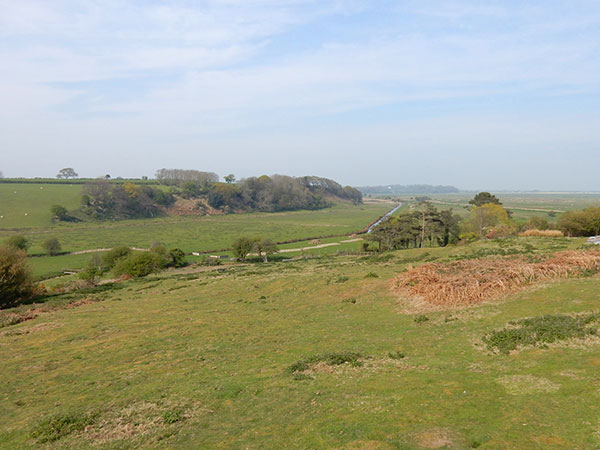
Hastings to Pett Beach SSSI: Toot Rock at Pett Levels (img 74)
Former sea cliff viewed from top of former islet Toot Rock, Pett Level.
Photo taken: 18/04/2019
Grid ref TQ89141372
Direction SE
Image file: 7_DSCN3083.jpg

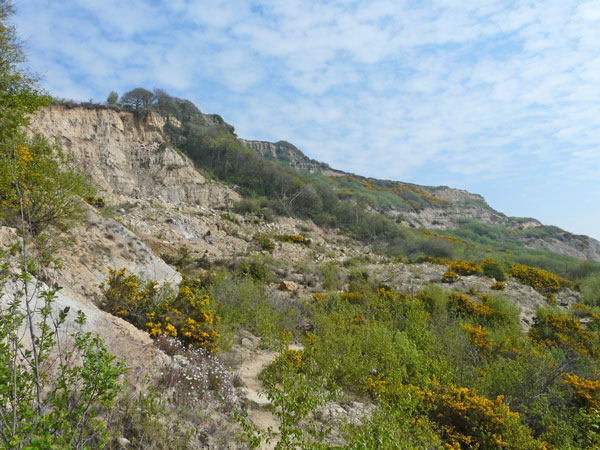
East Sussex Local Geological Sites - Coastal Section Ecclesbourne Glen to Fairlight Cove (img 75)
Upper part of cliffs at mouth of Fairlight Glen above landslipped area. Upper Ashdown Formation sandstones exposed with a local capping of Cliff End Sandstone (Wadhurst Clay Formation) at the highest point.
Photograph taken: 16/04/2011
Grid ref TQ85211062
Direction NE
Image file: P1030236ed.jpg


East Sussex Local Geological Sites - Coastal Section Ecclesbourne Glen to Fairlight Cove (img 76)
Coast west of Fairlight Glen. Cliffs expose upper Ashdown sandstones with a capping of Wadhurst Clay Formation including the Cliff End Sandstone. Beneath the cliffs is the extensive landslipped area of middle to lower Ashdown siltsones and mudstones underlying Covehurst Wood.
Photograph taken: 16/04/2011
Grid ref TQ85271056
Direction SW
Image file: P1030242ed.jpg


East Sussex Local Geological Sites - Coastal Section Ecclesbourne Glen to Fairlight Cove (img 77)
Beach below Fairlight Glen exposing silstones and mudstones and sandstones of the middle Ashdown Formation.
Photograph taken: 16/04/2011
Grid ref TQ85271056
Direction ENE
Image file: P1030245ed.jpg


East Sussex Local Geological Sites - Coastal Section Ecclesbourne Glen to Fairlight Cove (img 78)
Detail of lower cliff east of Fairlight Glen. Horizontally bedded siltstones with sandstone interbeds overlie thicker siltstone and sandstone beds infilling channels. The lower beds show intraformational deformation (folding and faulting) and fine lamination.
Photograph taken: 16/04/2011
Grid ref TQ85421065
Image file: P1030246ed.jpg

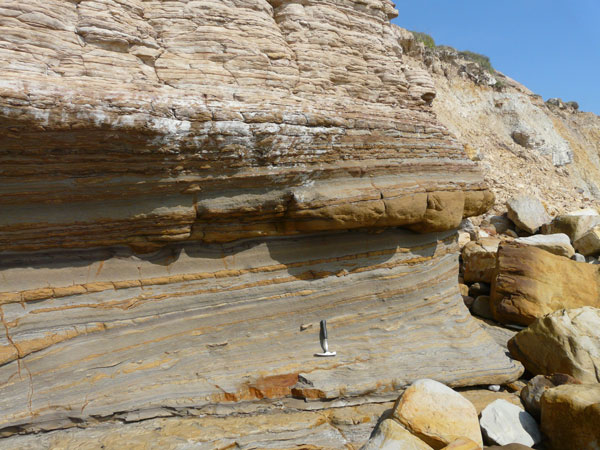
East Sussex Local Geological Sites - Coastal Section Ecclesbourne Glen to Fairlight Cove (img 79)
Detail of lower cliff east of Fairlight Glen. Thin bedded siltstones with sandstone interbeds overlie thin channel sandstone and a thicker cross-bedded siltstone unit. The siltstone contains ribs and irregular pods of fine sandstone probably representing dewatering structures.
Photograph taken: 16/04/2011
Grid ref TQ85421065
Image file: P1030248ed.jpg

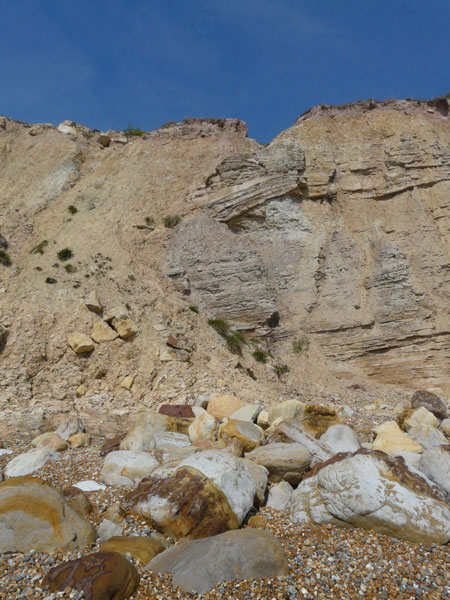
East Sussex Local Geological Sites - Coastal Section Ecclesbourne Glen to Fairlight Cove (img 80)
Low landslipped cliffs about 20 m high east of Fairlight Glen exposing interbedded sandstones and siltstones of the middle Ashdown Formation.
Photograph taken: 16/04/2011
Grid ref TQ85661075
Direction NNW
Image file: P1030249ed.jpg


East Sussex Local Geological Sites - Coastal Section Ecclesbourne Glen to Fairlight Cove (img 81)
Middle Ashdown Formation sandstone containing numerous carbonised plant fragments.
Photograph taken: 16/04/2011
Grid ref TQ85661075
Image file: P1030250.jpg

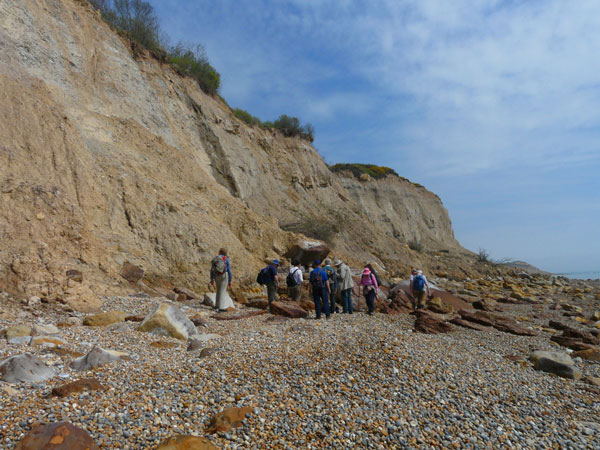
East Sussex Local Geological Sites - Coastal Section Ecclesbourne Glen to Fairlight Cove (img 82)
Cliffs up to 25 m high below Warren Glen exposing middle to lower Ashdown siltstones, mudstones and sandstones and subject to landslips.
Photograph taken: 16/04/2011
Grid ref TQ85831081
Direction ENE
Image file: P1030253ed.jpg


East Sussex Local Geological Sites - Coastal Section Ecclesbourne Glen to Fairlight Cove (img 83)
Cliffs up to 40 m high between Warren Glen and Lee Ness Ledge exposing lower Ashdown mudstones, siltstones and thin sandstones and subject to landslips.
Photograph taken: 16/04/2011
Grid ref TQ86151090
Direction ENE
Image file: P1030254ed.jpg

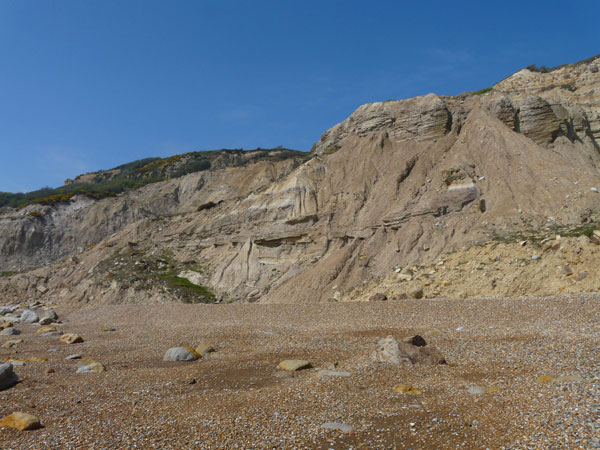
East Sussex Local Geological Sites - Coastal Section Ecclesbourne Glen to Fairlight Cove (img 84)
Cliffs up to 80 m high west of Lee Ness Ledge exposing lower Ashdown mudstones, siltstones and thin sandstones and subject to landslips.
Photograph taken: 16/04/2011
Grid ref TQ86551092
Direction NW
Image file: P1030255ed.jpg

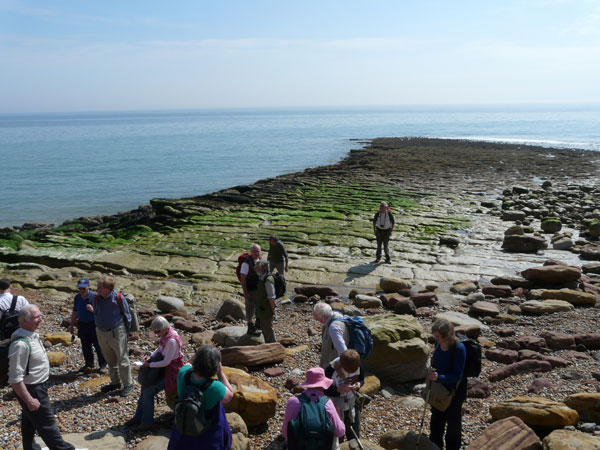
East Sussex Local Geological Sites - Coastal Section Ecclesbourne Glen to Fairlight Cove (img 85)
Lee Ness Ledge exposing Lee Ness Sandstone within the lower Ashdown Formation.
Photograph taken: 16/04/2011
Grid ref TQ86621092
Image file: P1030256.jpg

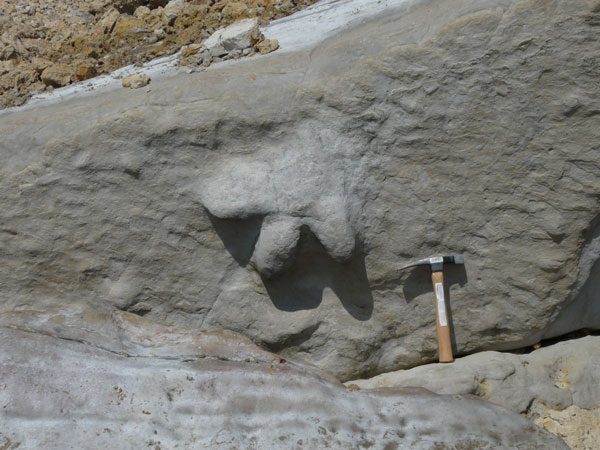
East Sussex Local Geological Sites - Coastal Section Ecclesbourne Glen to Fairlight Cove (img 86)
Cast of Iguanodontid footprint on fallen block of Lee Ness Sandstone (lower Ashdown Formation); just east of Lee Ness Ledge.
Photograph taken: 16/04/2011
Grid ref TQ86781111
Image file: P1030257.jpg


East Sussex Local Geological Sites - Coastal Section Ecclesbourne Glen to Fairlight Cove (img 87)
Cliffs up to 30 m high and subject to landslips east of Lee Ness Ledge. Within the lower Ashdown mudstones and siltstones is the massive Lee Ness Sandstone (3 m thick) dipping to the left (west) on the SW limb of the Fairlight Anticline. Beneath the main sandstone is a silty sandstone 2m thick and beneath this is silty mudstone. Dinosaur footprints are often found at the base of the Lee Ness Sandstone. Cliffs in the background rise up to 85 m.
Photograph taken: 16/04/2011
Grid ref TQ86921110
Direction NW
Image file: P1030259.jpg

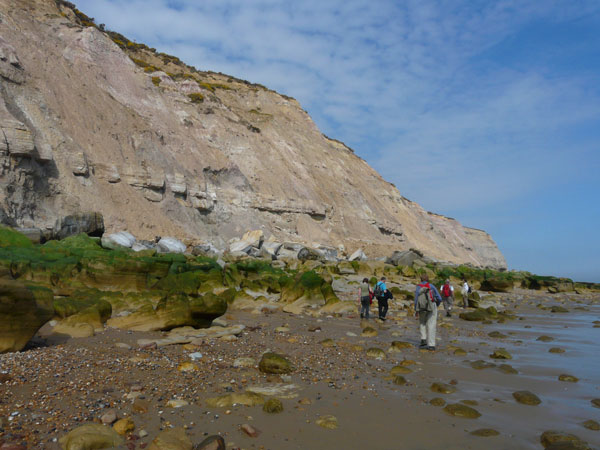
East Sussex Local Geological Sites - Coastal Section Ecclesbourne Glen to Fairlight Cove (img 88)
Cliffs up to 60 m high between Lee Ness Ledge and Goldbury Point exposing mudstones and siltstones of the lower Ashdown Formation. The prominent Lee Ness Sandstone is near the crest of the Fairlight Anticline here. To the right (east) it dips back to beach level at Goldbury Point.
Photograph taken: 16/04/2011
Grid ref TQ87181116
Image file: P1030260ed.jpg

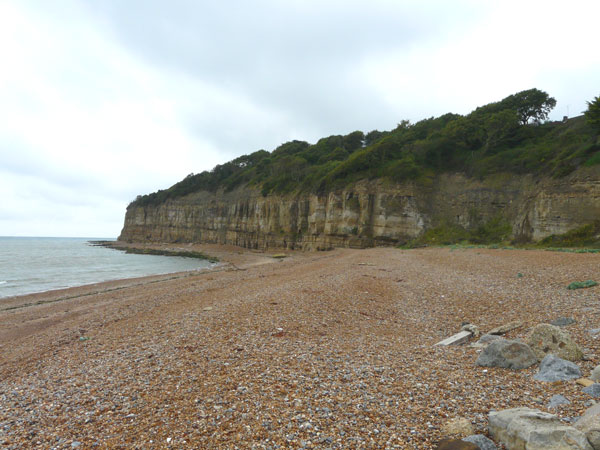
East Sussex Local Geological Sites - Coastal Section Cliff End (img 89)
Cliffs up to 25m high south of Pett Beach, exposing upper Ashdown Formation sandstones and the Cliff End Sandstone. The wooded section above corresponds to shales of the Wadhurst Clay Formation.
Photograph taken: 24/08/2011
Grid ref TQ88851309
Direction SW
Image file: P1050038ed.jpg


East Sussex Local Geological Sites - Coastal Section Cliff End (img 90)
Cliff End Sandstone overlain by shales of the Wadhurst Clay Formation. The more resistant Cliff End Pebble Bed stands out from the encasing shales.
Photograph taken: 24/08/2011
Grid ref TQ88801307
Direction NW
Image file: P1050041ed.jpg

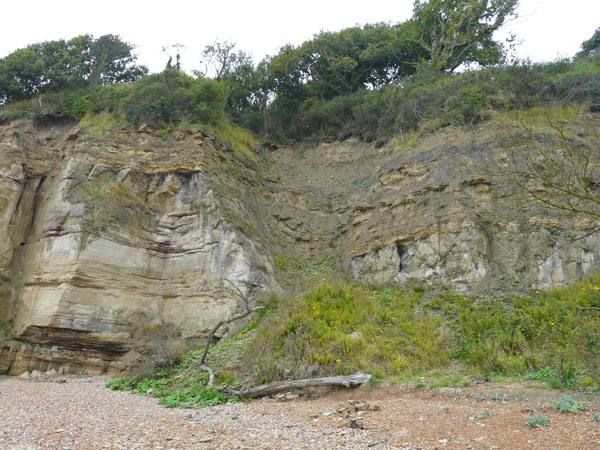
East Sussex Local Geological Sites - Coastal Section Cliff End (img 91)
Cliff End Fault is a normal fault. The fault plane dips steeply to the right (NNE) and the top of the Cliff End Sandstone and overlying shales are downfaulted in the same
Direction.
Photograph taken: 24/08/2011
Grid ref TQ88781305
Direction west
Image file: P1050044ed.jpg

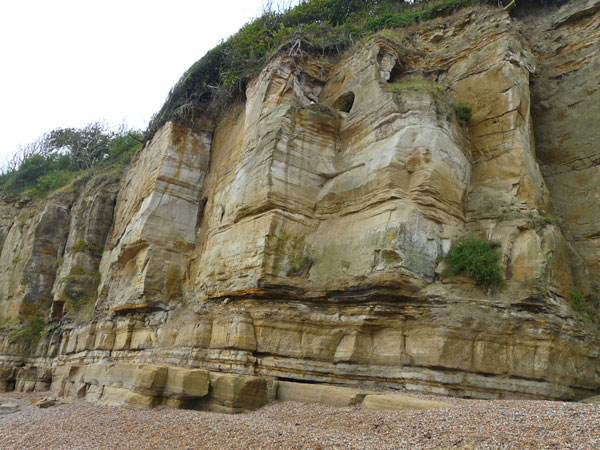
East Sussex Local Geological Sites - Coastal Section Cliff End (img 92)
Cliff section about 20 m high immediately south of the Cliff End Fault. Sandstones and siltstones of Ashdown Formation are overlain by the massive Cliff End Sandstone of the Wadhurst Clay Formation. Junction marked by clay-ironstone bed eroded to form a notch in the cliff.
Photograph taken: 24/08/2011
Grid ref TQ88771301
Direction SSW
Image file: P1050046ed.jpg

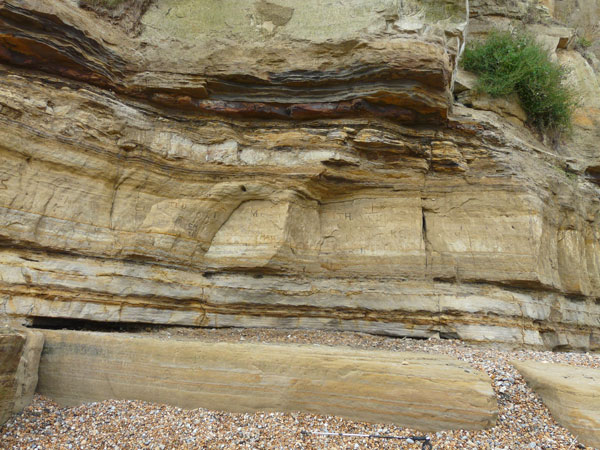
East Sussex Local Geological Sites - Coastal Section Cliff End (img 93)
Ashdown/Wadhurst junction at base of cliff shown in photo 4. Two sandstone layers are separated by a pale band with alternations of silt and fine sandstone. And overlain by a pebble bed at top Ashdown. The overlying clay ironstone marks the base of the Wadhurst Clay Formation. 1 m pole scale.
Photograph taken: 24/08/2011
Grid ref TQ88761301
Direction WNW
Image file: P1050047ed.jpg

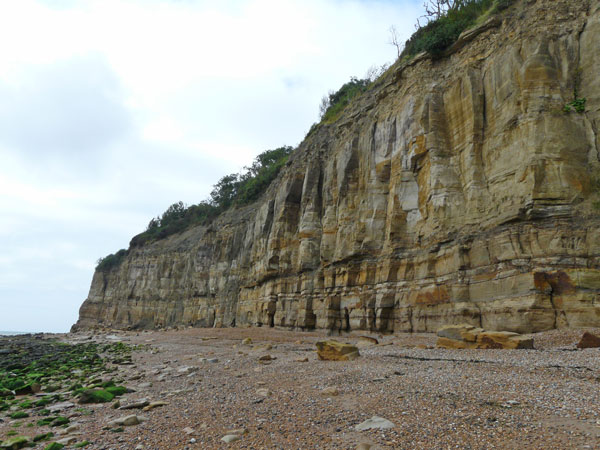
East Sussex Local Geological Sites - Coastal Section Cliff End (img 94)
Cliff section about 25 m high south of the Cliff End Fault. Sandstones and siltstones of Ashdown Formation are overlain by the massive Cliff End Sandstone of the Wadhurst Clay Formation. Junction marked by clay-ironstone bed eroded to form a notch in the cliff.
Photograph taken: 24/08/2011
Grid ref TQ88761298
Direction SSW
Image file: P1050049ed.jpg

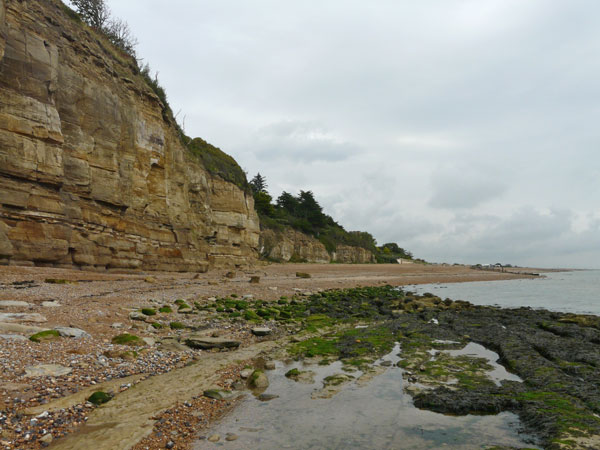
East Sussex Local Geological Sites - Coastal Section Cliff End (img 95)
Foreshore and cliffs south of Pett Beach. Dip is north towards Pett bringing the Cliff End Sandstone down to beach level at the end of the cliffs.
Photograph taken: 24/08/2011
Grid ref TQ88731290
Direction NNE
Image file: P1050051ed.jpg

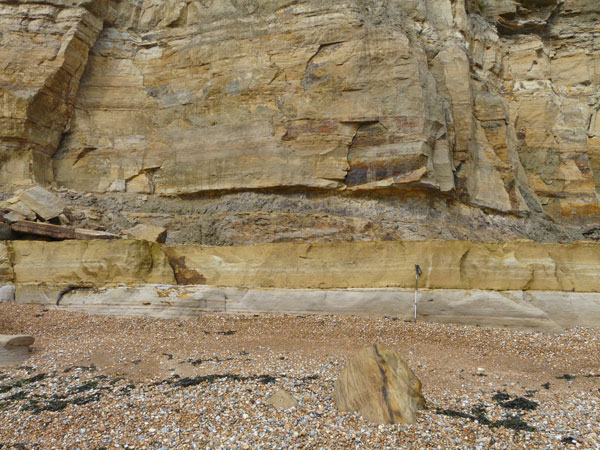
East Sussex Local Geological Sites - Coastal Section Cliff End (img 96)
Detail of Ashdown beds at foot of cliff. Two sandstone beds are separated by a layer of grey silty mudstone forming a channel fill. Cross bedding in lower sandstone.
1 m pole for scale.
Photograph taken: 24/08/2011
Grid ref TQ88711282
Direction west
Image file: P1050054ed.jpg

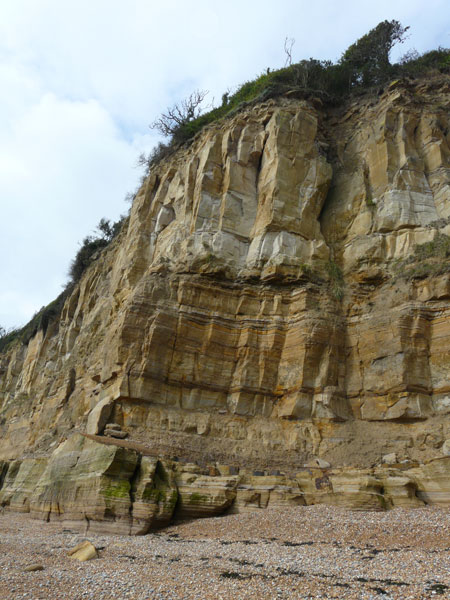
East Sussex Local Geological Sites - Coastal Section Cliff End (img 97)
Cliff section midway between Pett Beach and Fairlight Cove exposing Ashdown Formation sandstones with minor siltstone intervals overlain by massive Cliff End Sandstone (Wadhurst Clay Formation).
Photograph taken: 24/08/2011
Grid ref TQ88701278
Direction SW
Image file: P1050058ed.jpg

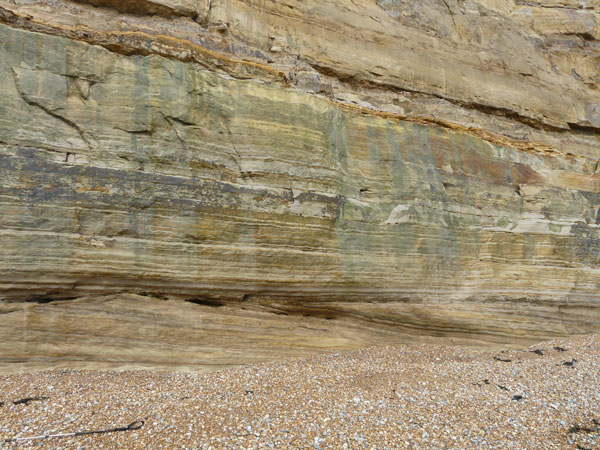
East Sussex Local Geological Sites - Coastal Section Cliff End (img 98)
Detail of Ashdown beds at foot of cliff. Basal unit comprises cross-bedded sandstones and is overlain by massive flat-bedded sandstone, separated from the next sandstone by a layer of grey silty mudstone.
1 m pole scale.
Photograph taken: 24/08/2011
Grid ref TQ88661271
Direction NW
Image file: P1050063ed2.jpg

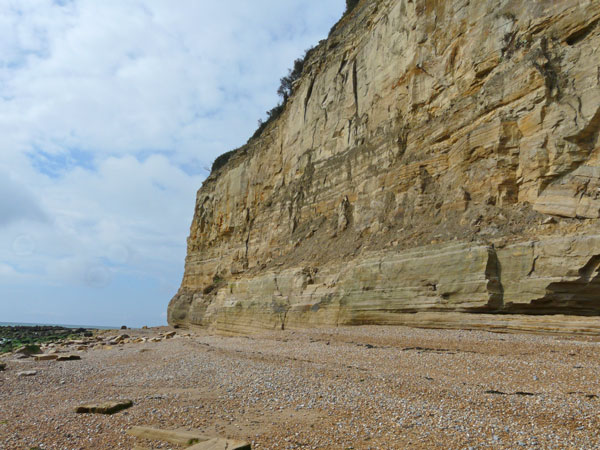
East Sussex Local Geological Sites - Coastal Section Cliff End (img 99)
Cliff section towards Fairlight Cove exposing Ashdown Formation sandstones with minor siltstone intervals overlain by massive Cliff End Sandstone (Wadhurst Clay Formation).
Photograph taken: 24/08/2011
Grid ref TQ88631261
Direction SSW
Image file: P1050064ed.jpg

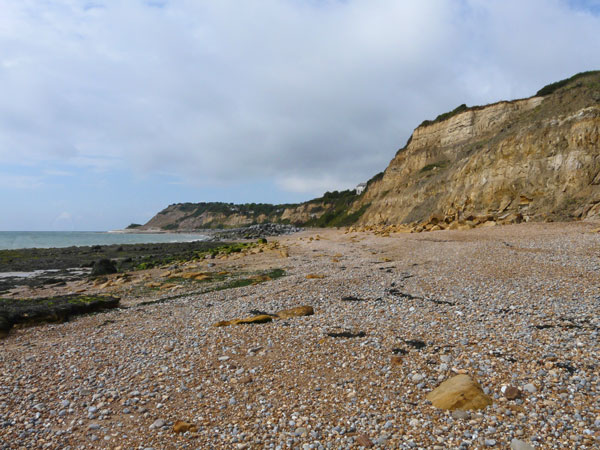
East Sussex Local Geological Sites - Coastal Section Fairlight Cove (img 100)
Fairlight Cove showing undefended cliffs in Ashdown sandstones in the foreground, a middle section protected by rock armour and in the background undefended cliffs in Ashdown mudstones.
Photograph taken: 24/08/2011
Grid ref TQ88571249
Direction SW
Image file: P1050069ed.jpg


East Sussex Local Geological Sites - Coastal Section Fairlight Cove (img 101)
Undefended cliffs about 20 m high in Ashdown sandstones with siltstone interbeds.
Photograph taken: 24/08/2011
Grid ref TQ88551244
Direction west
Image file: P1050071ed.jpg


East Sussex Local Geological Sites - Coastal Section Fairlight Cove (img 102)
he northern section of undefended cliffs exposing Ashdown sandstones with siltstone interbeds. The plane of Haddock's Reversed Fault is visible in the cliff in the background where it intersects the Cliff End Sandstone higher in the cliff.
Photograph taken: 24/08/2011
Grid ref TQ88461240
Direction NE
Image file: P1050073ed.jpg

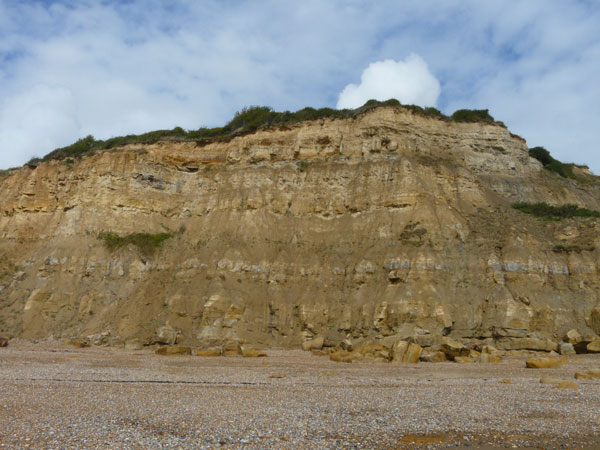
East Sussex Local Geological Sites - Coastal Section Fairlight Cove (img 103)
Undefended cliff section about 20 m high exposing Ashdown sandstones of varying thickness with siltstone interbeds.
Photograph taken: 24/08/2011
Grid ref TQ88461240
Direction NW
Image file: P1050074ed.jpg


East Sussex Local Geological Sites - Coastal Section Fairlight Cove (img 104)
Cliffs behind the rock armour exposing Ashdown Formation sandstones. Vegetation is encroaching on the lower and upper cliff faces. The shingle and ponds behind the rock armour are providing a new biological habitat.
Photograph taken: 24/08/2011
Grid ref TQ88281229
Direction SW
Image file: P1050078ed.jpg

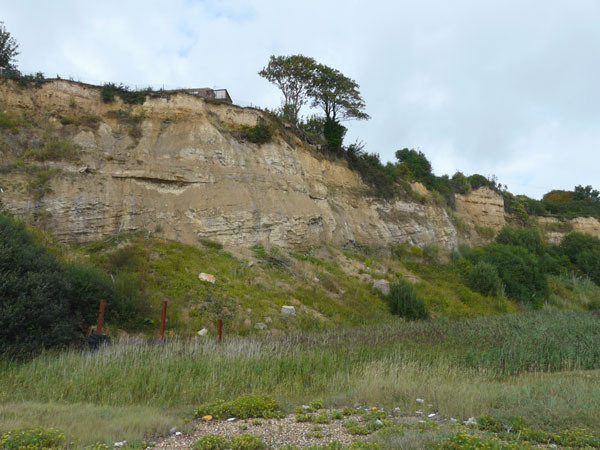
East Sussex Local Geological Sites - Coastal Section Fairlight Cove (img 105)
Cliff section about 15 m high exposing Ashdown Formation sandstones. Note the large-scale cross bedding in the lower unit.
Photograph taken: 24/08/2011
Grid ref TQ88111201
Direction north
Image file: P1050082ed.jpg


East Sussex Local Geological Sites - Coastal Section Fairlight Cove (img 106)
Undefended cliffs about 20 m high at the southern end of the site. In the foreground Ashdown sandstones are exposed and in the background, across the Fairlight Reversed Fault, the cliffs are cut in Ashdown mudstones.
Photograph taken: 24/08/2011
Grid ref TQ88081201
Direction SW
Image file: P1050083ed.jpg

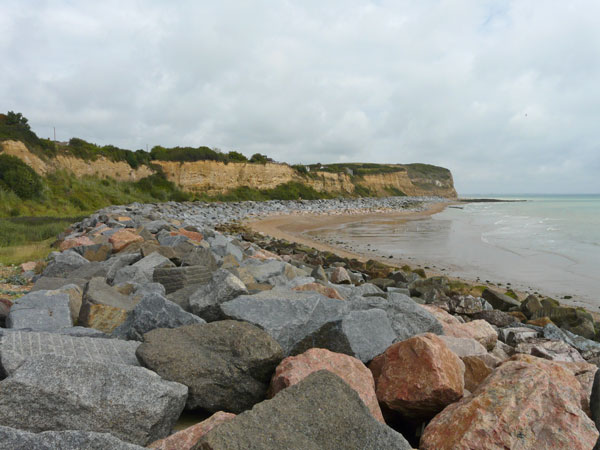
East Sussex Local Geological Sites - Coastal Section Fairlight Cove (img 107)
The centre of Fairlight Cove is protected by rock armour. Note the sandy foreshore with no exposure of the wavecut platform.
Photograph taken: 24/08/2011
Grid ref TQ88111203
Direction NNE
Image file: P1050084ed.jpg

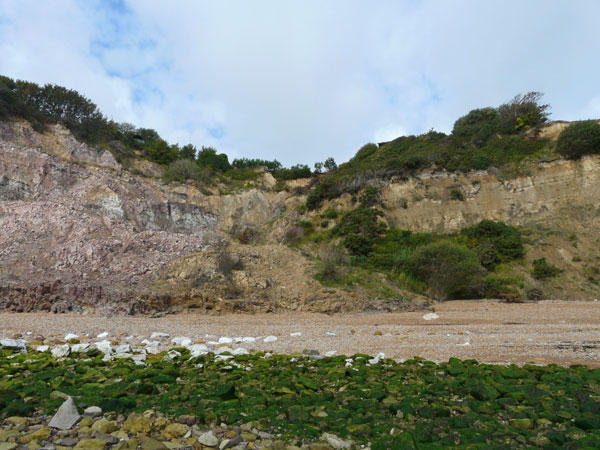
East Sussex Local Geological Sites - Coastal Section Fairlight Cove (img 108)
Fairlight Reversed Fault separating Ashdown mudstones on the left from younger Ashdown sandstones on the right. The fault plane dips steeply to the left (south) but is obscured by landslips and mudflows.
Photograph taken: 24/08/2011
Grid ref TQ88051193
Direction NW
Image file: P1050088ed.jpg

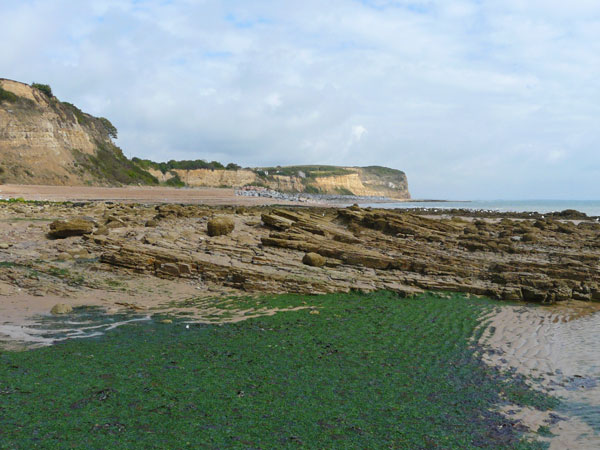
East Sussex Local Geological Sites - Coastal Section Fairlight Cove (img 109)
Ashdown Formation sandstones with large-scale cross-bedding exposed on the wavecut platform south of the rock armour sea defences.
Photograph taken: 24/08/2011
Grid ref TQ88021184
Direction NE
Image file: P1050091ed.jpg

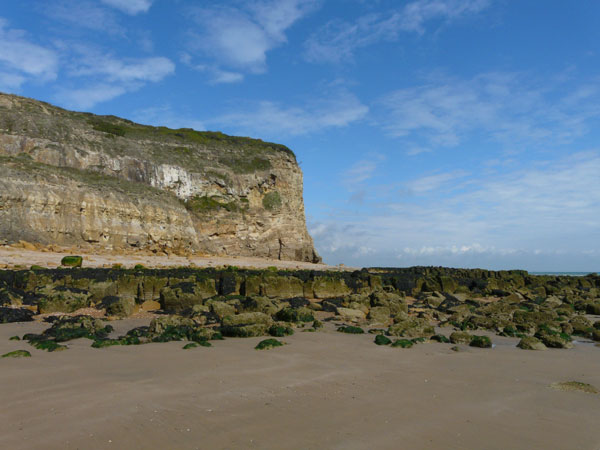
East Sussex Local Geological Sites - Coastal Section Fairlight Cove (img 110)
Haddock's Reversed Fault from the wavecut platform. The fault plane dips steeply towards the observer and is best exposed where it intersects the Cliff End Sandstone higher in the cliff.
Photograph taken: 24/08/2011
Grid ref TQ88491239
Direction NE
Image file: P1050097ed.jpg

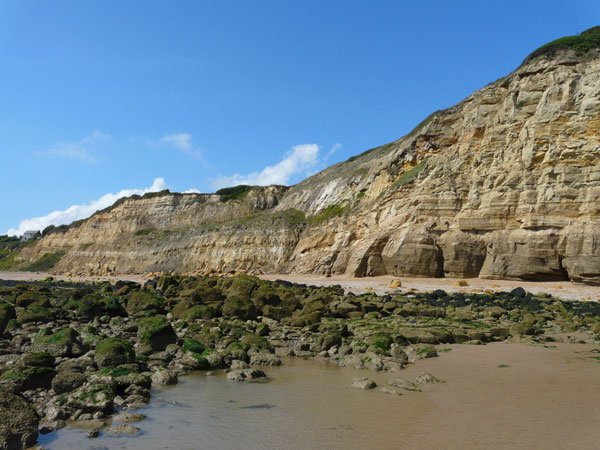
East Sussex Local Geological Sites - Coastal Section Fairlight Cove (img 111)
View along the line of Haddock's Reversed Fault from the wavecut platform. The fault plane dips steeply to the left (south) and at beach level separates massive sandstones on the right from thinner bedded sandstones on the left. It is best exposed where it intersects the Cliff End Sandstone higher in the cliff and further back.
Photograph taken: 24/08/2011
Grid ref TQ88621247
Direction WSW
Image file: P1050100ed.jpg


East Sussex Local Geological Sites - Coastal Section Cliff End (img 112)
Cliffs about 30 m high at Fairlight Cove just north of Haddock's Reversed Fault exposing Ashdown Formation sandstones overlain by Cliff End Sandstone and shales of the Wadhurst Clay Formation.
Photograph taken: 24/08/2011
Grid ref TQ88621247
Direction NW
Image file: P1050101ed.jpg

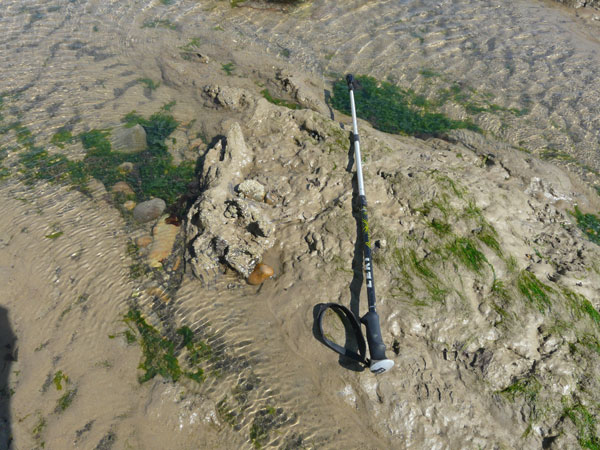
East Sussex Local Geological Sites - Coastal Section Cliff End (img 113)
Example of fossilised wood or roots from the submerged forest exposed at low tide below Pett Beach.
1 m pole for scale.
Photograph taken: 24/08/2011
Grid ref TQ88881301
Image file: P1050104.jpg

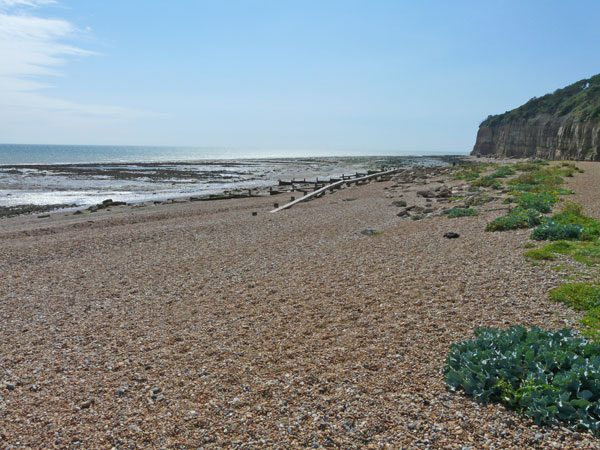
East Sussex Local Geological Sites - Coastal Section Cliff End (img 114)
Foreshore at south end of Pett Beach exposing submerged forest (5200 years old). Cliffs and wavecut platform in distance cut in Ashdown and Wadhurst Clay formations.
Photograph taken: 24/08/2011
Grid ref TQ88891317
Direction SW
Image file: P1050105ed.jpg


East Sussex Local Geological Sites - Coastal Section Foul Ness (img 115)
Protected cliffs behind Hastings Beach exposing mainly Ashdown Formation sandstones with a capping of Wadhurst Clay Formation, including the Cliff End Sandstone. Note small rocky exposure close to the breakwater.
Photograph taken: 24/08/2011
Grid ref TQ82900944
Direction NE
Image file: P1050107.jpg

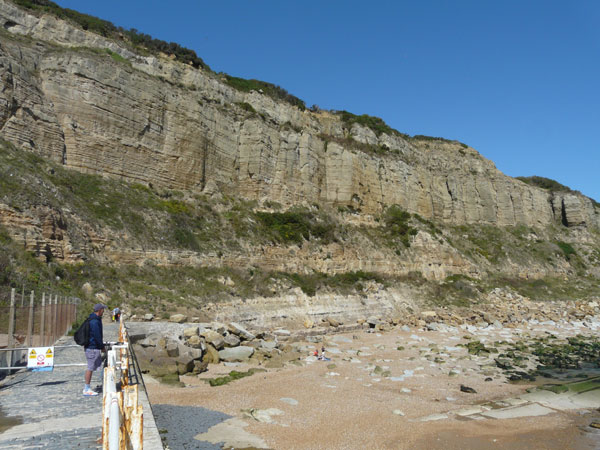
East Sussex Local Geological Sites - Coastal Section Foul Ness (img 116)
Start of the undefended cliffs at Hastings exposing mainly Ashdown Formation with silty mudstones at the base and overlying thick sandstones with interbedded siltstones. The Cliff End Sandstone marks the top of the cliffs.
Photograph taken: 24/08/2011
Grid ref TQ83040955
Direction NNE
Image file: P1050110.jpg

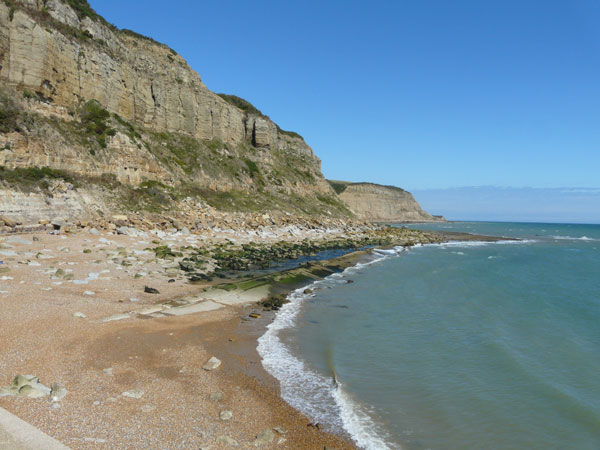
East Sussex Local Geological Sites - Coastal Section Foul Ness (img 117)
Undefended cliffs east of Hastings Beach exposing mainly Ashdown Formation sandstones with a capping of Wadhurst Clay Formation, including the Cliff End Sandstone. The foot of the cliffs is mainly covered by debris from rockfalls.
Photograph taken: 24/08/2011
Grid ref TQ83040955
Direction NE
Image file: P1050112ed.jpg

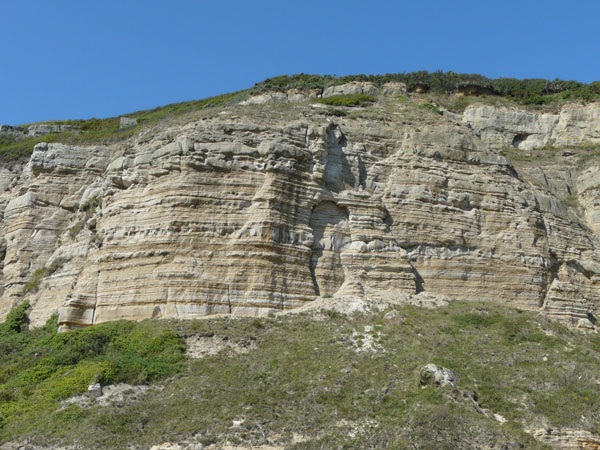
East Sussex Local Geological Sites - Coastal Section Foul Ness (img 118)
Protected cliff behind Hastings Beach exposing the upper part of the Ashdown Formation comprising sandstones with interbedded siltstones and more massive sandstone nearer the top. The lower slopes are largely vegetated.
Photograph taken: 24/08/2011
Grid ref TQ83040955
Direction NNW
Image file: P1050114.jpg


East Sussex Local Geological Sites - Coastal Section Foul Ness (img 119)
Undefended cliffs east of Hastings Beach exposing mainly Ashdown Formation sandstones with a capping of Wadhurst Clay Formation, including the Cliff End Sandstone. Silty mudstones of Fairlight facies are exposed at the base of the cliffs.
Photograph taken: 24/08/2011
Grid ref TQ83140964
Direction west
Image file: P1050116.jpg


East Sussex Local Geological Sites - Coastal Section Foul Ness (img 120)
Cliffs towards Ecclesbourne Glen. The Foul Ness Fault cuts across the middle part of the cliff section and is downthrown to the NE away from the observer by about 17 m. Up to the fault there is a lot of rockfall debris at the foot of the cliffs.
Photograph taken: 24/08/2011
Grid ref TQ83290965
Direction NE
Image file: P1050118ed.jpg


East Sussex Local Geological Sites - Coastal Section Foul Ness (img 121)
Cliffs towards Ecclesbourne Glen. The Foul Ness Fault cuts across the beach beyond (north of) the rocky wavecut platform. Up to the fault there is a lot of rockfall debris at the foot of the cliffs.
Photograph taken: 24/08/2011
Grid ref TQ83290965
Direction NE
Image file: P1050119.jpg


East Sussex Local Geological Sites - Coastal Section Foul Ness (img 122)
Cliffs north of the Foul Ness Fault towards Ecclesbourne Glen. At the base of the cliffs is a massive cross-bedded siltstone bed with stringers of fine sandstone. This section has little debris at the foot of the cliffs.
Photograph taken: 24/08/2011
Grid ref TQ83510983
Direction NNE
Image file: P1050123ed.jpg


East Sussex Local Geological Sites - Coastal Section Foul Ness (img 123)
Cliffs approaching Ecclesbourne Glen. At the base of the cliffs is a massive cross-bedded siltstone bed with stringers of fine sandstone.
Photograph taken: 24/08/2011
Grid ref TQ83580985
Direction NNE
Image file: P1050128.jpg

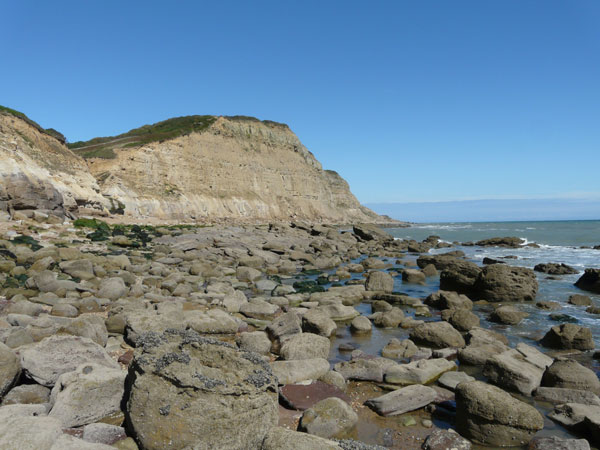
East Sussex Local Geological Sites - Coastal Section Foul Ness (img 124)
Boulder-strewn foreshore approaching Ecclesbourne Glen showing outcrops of cross-bedded siltstone (Ashdown Formation) in the middle distance. Cliffs expose mainly Ashdown Formation sandstones with a capping of Wadhurst Clay including the Cliff End Sandstone.
Photograph taken: 24/08/2011
Grid ref TQ83580985
Direction NE
Image file: P1050129.jpg

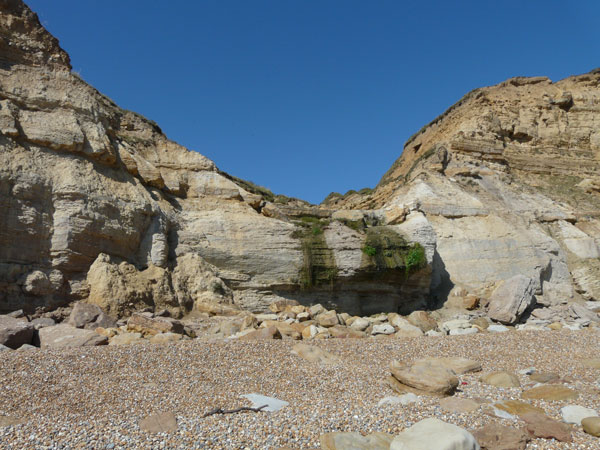
East Sussex Local Geological Sites - Coastal Section Foul Ness (img 125)
Hanging valley at Ecclesbourne Glen. Sandstones and siltstones of the Ashdown Formation.
Photograph taken: 24/08/2011
Grid ref TQ83700995
Direction north
Image file: P1050133.jpg


East Sussex Local Geological Sites - Coastal Section Ecclesbourne Glen to Fairlight Cove (img 126)
Hanging valley at Ecclesbourne Glen. Sandstones and siltstones of the Ashdown Formation.
Photograph taken: 24/08/2011
Grid ref TQ83700995
Direction north
Image file: P1050133a.jpg


East Sussex Local Geological Sites - Coastal Section Ecclesbourne Glen to Fairlight Cove (img 127)
Cliffs up to 75 m high east of Ecclesbourne Glen exposing mainly Ashdown Formation, dominantly sandstones with more siltstones in the lower part. The highest cliffs show a capping of Wadhurst Clay Formation including the Cliff End Sandstone.
Photograph taken: 24/08/2011
Grid ref TQ83700995
Direction ENE
Image file: P1050134.jpg


East Sussex Local Geological Sites - Coastal Section Ecclesbourne Glen to Fairlight Cove (img 128)
Silty sandstones in the middle of the Ashdown Formation with numerous carbonised plant fragments.
1 m pole for scale.
Photograph taken: 24/08/2011
Grid ref TQ83750997
Image file: P1050135.jpg


East Sussex Local Geological Sites - Coastal Section Ecclesbourne Glen to Fairlight Cove (img 129)
Hanging valley at Ecclesbourne Glen. Cliffs expose upper part of Ashdown Formation, dominantly sandstones with more siltstones in the lower part. A thin capping of Wadhurst Clay Formation, including the Cliff End Sandstone, is present at the top of the cliffs on either side of the glen. Sandstones in the middle of the Ashdown Formation outcrop on the forshore.
Photograph taken: 24/08/2011
Grid ref TQ83890994
Direction west
Image file: P1050138.jpg

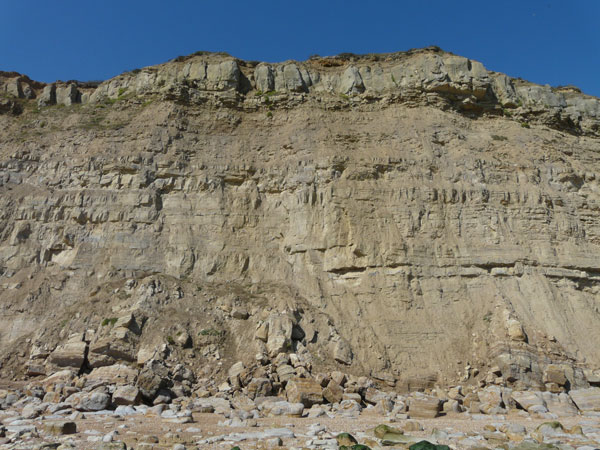
East Sussex Local Geological Sites - Coastal Section Ecclesbourne Glen to Fairlight Cove (img 130)
Cliffs 75 m high east of Ecclesbourne Glen exposing upper part of Ashdown Formation, dominantly sandstones with more siltstones in the lower part. A capping of Wadhurst Clay Formation, including the prominent Cliff End Sandstone, is present at the top of the cliffs on.
Photograph taken: 24/08/2011
Grid ref TQ83890994
Direction NNW
Image file: P1050139.jpg


East Sussex Local Geological Sites - Coastal Section Ecclesbourne Glen to Fairlight Cove (img 131)
Cliffs up to 90 m high between Ecclesbourne Glen and Covehurst Bay exposing mainly upper Ashdown Formation, dominantly sandstones with more siltstones in the lower part. The cliffs show a capping of Wadhurst Clay Formation including the prominent Cliff End Sandstone. Sandstones in the middle of the Ashdown Formation outcrop on the foreshore.
Photograph taken: 24/08/2011
Grid ref TQ83890994
Direction ENE
Image file: P1050140.jpg

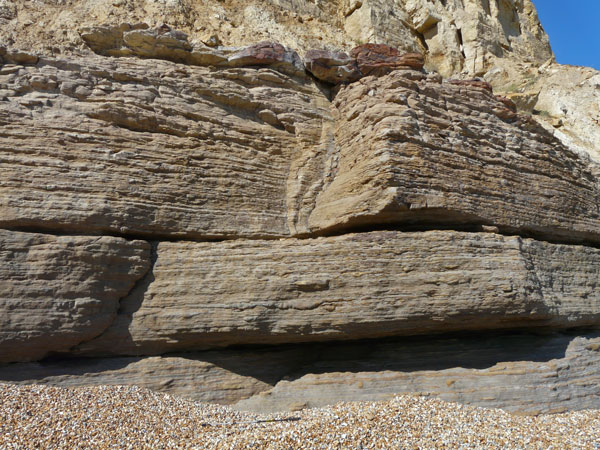
East Sussex Local Geological Sites - Coastal Section Foul Ness (img 132)
Ashdown Formation - massive cross-bedded siltstone bed with ribs and irregular pods of fine sandstone probably representing dewatering structures.
Photograph taken: 24/08/2011
Grid ref TQ83610990
Direction NNW
Image file: P1050143ed.jpg

Chichester Harbour, West of Longmere Point (SU70/13a)

West Sussex Local Geological Sites - Chichester Harbour - Longmere Point (img 134)
Sandy beach and edge of sand dunes linking Longmere Point with Pilsey Island. The RIGS site follows the coastline in the background.
Photo taken: 19/08/2010
Grid ref SU76530098
Direction NNW
Image file: P1020370ed.jpg

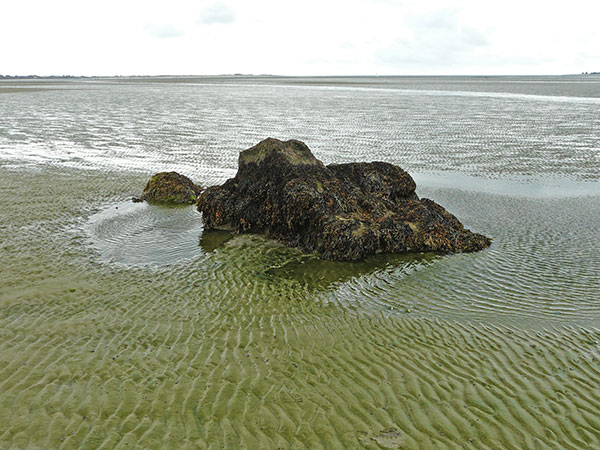
West Sussex Local Geological Sites - Chichester Harbour - Longmere Point (img 135)
Large seaweed-covered sarsen boulder at eastern end of foreshore. 1 m high and 2.5 m long.
Photo taken: 19/08/2010
Grid ref SU76370108
Direction SW
Image file: P1020371ed.jpg

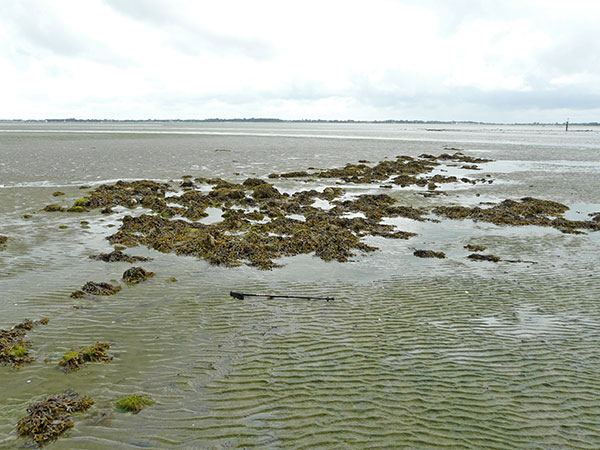
West Sussex Local Geological Sites - Chichester Harbour - Longmere Point (img 136)
Patch of seaweed-covered rocks and pebbles trending E-W along expected strike of Cenozoic deposits at formerly reported location of platform of weathered London Clay. The pebbles include septarian nodules.
1 m pole for scale.
Photo taken: 19/08/2010
Grid ref SU76330112
Direction SW
Image file: P1020373ed.jpg

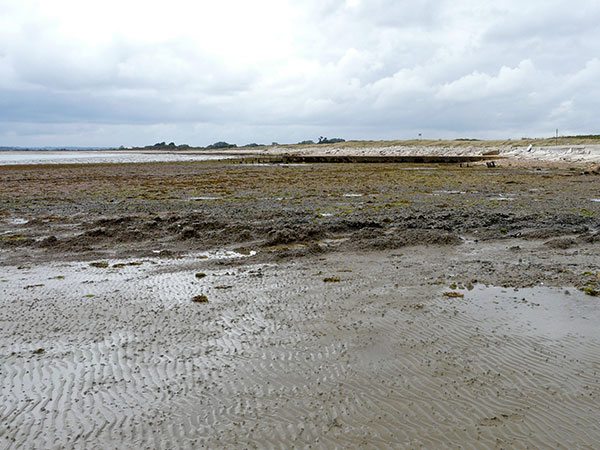
West Sussex Local Geological Sites - Chichester Harbour - Longmere Point (img 137)
Extensive shingle platform north of aircraft landing lights, showing outcrops of grey weathered clay, probably London Clay, in the foreground. Excavations here have revealed silts and a flint pebble bed probably representing the Harwich Formation.
Photo taken: 19/08/2010
Grid ref SU76090131
Direction north
Image file: P1020381ed.jpg


West Sussex Local Geological Sites - Chichester Harbour - Longmere Point (img 138)
Extensive shingle platform north of aircraft landing lights, showing patches of grey clay, probably London Clay, visible beneath the shingle.
Photo taken: 19/08/2010
Grid ref SU76070133
Direction SSE
Image file: P1020386ed.jpg

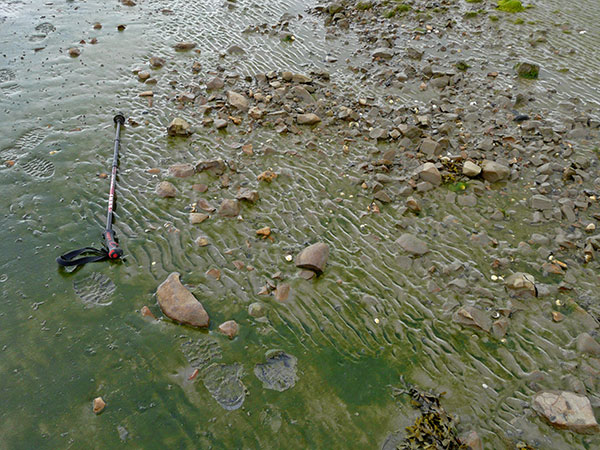
West Sussex Local Geological Sites - Chichester Harbour - Longmere Point (img 139)
Detail of pebble patch on foreshore. Fragments of septarian nodules occur amongst the shingle.
1 m pole for scale.
Photo taken: 19/08/2010
Grid ref SU76220120
Image file: P1020395ed.jpg

Chichester Harbour, Ella Nore (SU70/13b)
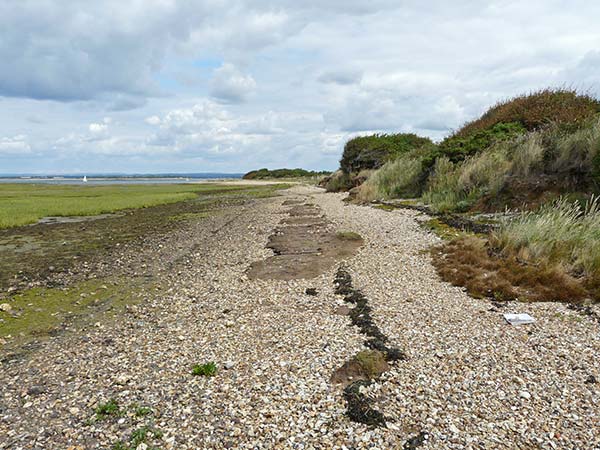
West Sussex Local Geological Sites - Chichester Harbour, Ella Nore (img 141)
Area A. Foreshore north of Snow Hill showing salt marsh at left, shingle beach with clay outcrops at centre and low banks at right. The clay outcrops are probably eroded Holocene (Recent) alluvial salt marsh deposits.
Photograph taken: 18/08/2010
Grid ref. SZ77359870
Direction north
Image file: P1020312ed.jpg

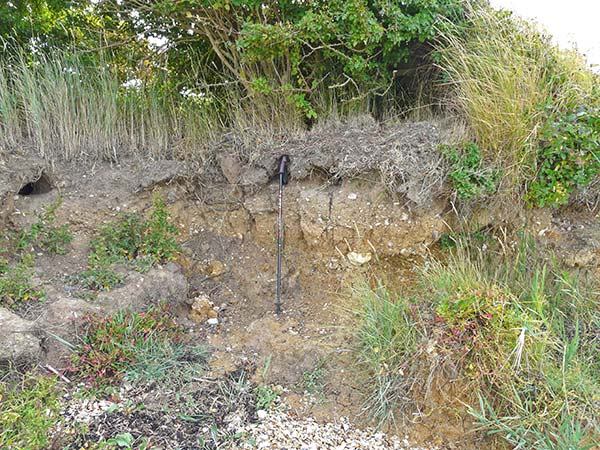
West Sussex Local Geological Sites - Chichester Harbour, Ella Nore (img 142)
Area A. Low bank opposite clay outcrops in Photo 1 exposing brickearth and thin flint gravels overlying brownish weathered London Clay.
1 m pole for scale.
Photograph taken: 18/08/2010
Grid ref. SZ77369881
Direction east
Image file: P1020313ed.jpg

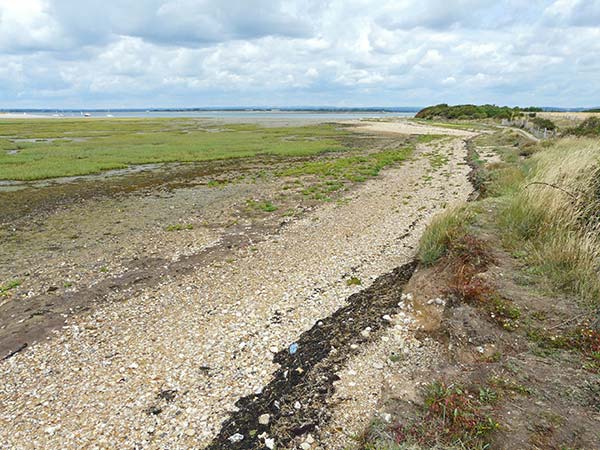
West Sussex Local Geological Sites - Chichester Harbour, Ella Nore (img 143)
Chichester Harbour from the footpath north of Snow Hill (Area A) showing salt marsh, shingle beach and low banks marking the harbour edge. These banks expose Pleistocene deposits. The clay outcrops at the edge of the salt marsh are probably eroded Holocene deposits.
Photograph taken: 18/08/2010
Grid ref. SZ77389889
Direction NNW
Image file: P1020316ed.jpg

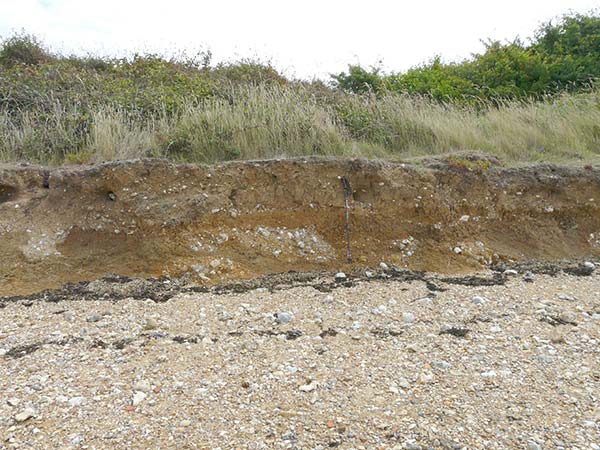
West Sussex Local Geological Sites - Chichester Harbour, Ella Nore (img 144)
Area A. Pleistocene flint gravels and raised beach sands exposed in low banks at hrabour edge.
1 m pole for scale.
Photograph taken: 18/08/2010
Grid ref. SZ77369889
Direction east
Image file: P1020318ed.jpg

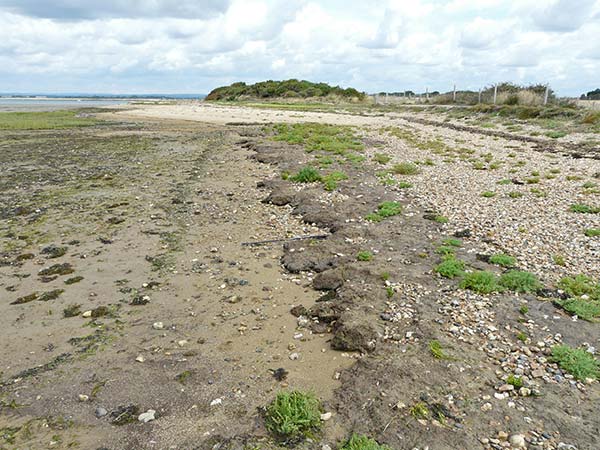
West Sussex Local Geological Sites - Chichester Harbour, Ella Nore (img 145)
Area A. Foreshore approaching Ella Nore showing present-day estuarine mud at left, eroded Holocene (Recent) clay at centre and shingle beach at right.
1 m pole for scale.
Photograph taken: 18/08/2010
Grid ref. SZ77369889
Direction north
Image file: P1020319ed.jpg

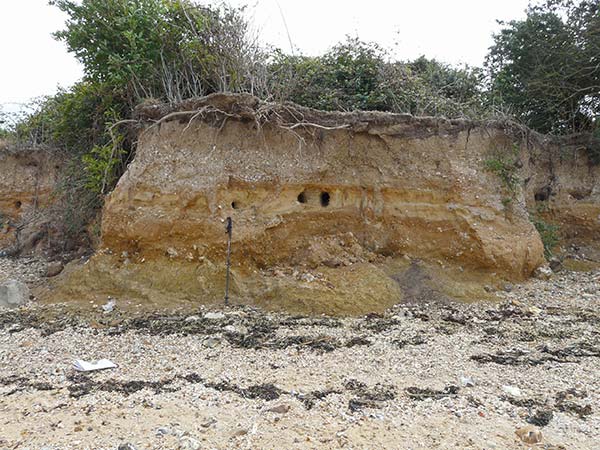
West Sussex Local Geological Sites - Chichester Harbour, Ella Nore (img 146)
Area B. Low cliff section showing weathered London Clay at base overlain by 1.5 m of Pleistocene raised beach sands and flint gravels overlain at top by 40 cm of brickearth.
1 m pole for scale.
Photograph taken: 18/08/2010
Grid ref. SZ77369916
Direction east
Image file: P1020322ed.jpg

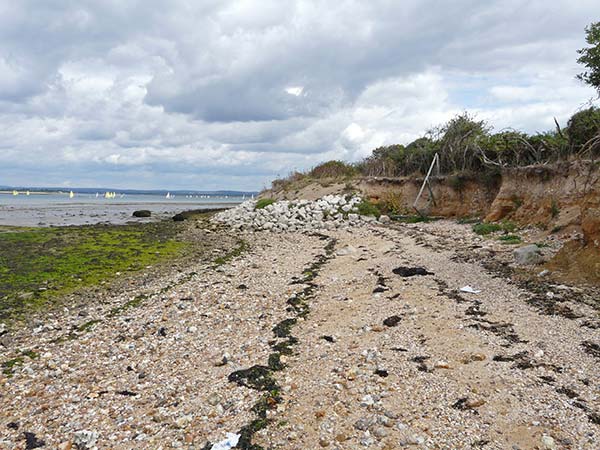
West Sussex Local Geological Sites - Chichester Harbour, Ella Nore (img 147)
Area B. Salt marsh on left, shingle beach at centre and low banks exposing Pleistocene deposits on weathered London Clay. Cliff to north obliterated by coastal defence rock armour. Large sarsen boulder visible on foreshore.
Photograph taken: 18/08/2010
Grid ref. SZ77369916
Direction north
Image file: P1020323ed.jpg

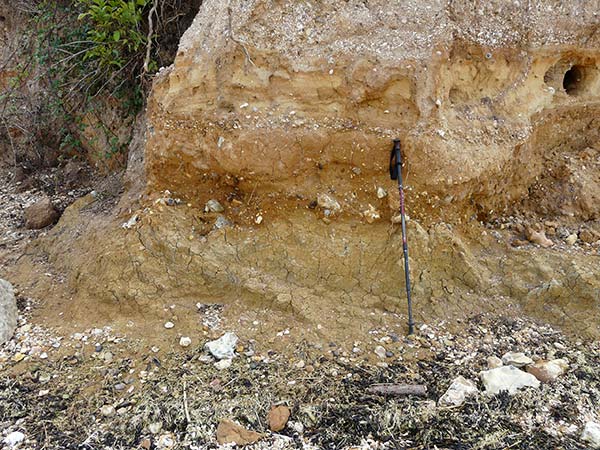
West Sussex Local Geological Sites - Chichester Harbour, Ella Nore (img 148)
Area B. Detail of low cliff section shown in photo 7 exposing raised beach sand and flint gravels overlying a wavy surface at the top of weathered London Clay. This type of surface has traditionally been interpreted as involutions caused by cryostatic pressure but could also be a result of loading.
1 m pole for scale.
Photograph taken: 18/08/2010
Grid ref. SZ77369916
Direction east
Image file: P1020324.jpg

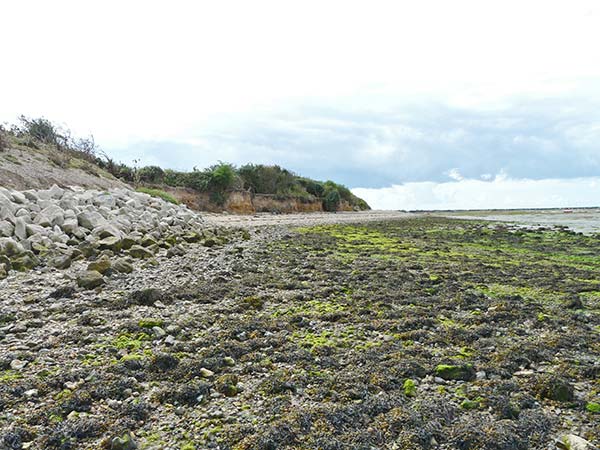
West Sussex Local Geological Sites - Chichester Harbour, Ella Nore (img 149)
View from southern end of Area B rock armour to the low cliff exposures of Pleistocene deposits overlying London Clay at the northern end of Area A.
Photograph taken: 18/08/2010
Grid ref. SZ77389924
Direction south
Image file: P1020325ed.jpg

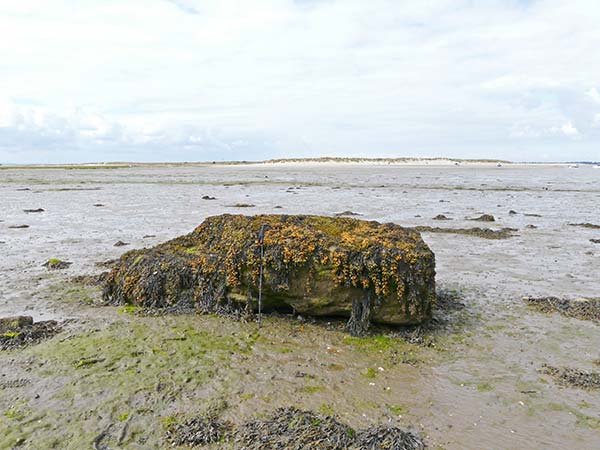
West Sussex Local Geological Sites - Chichester Harbour, Ella Nore (img 150)
Area C. Large sarsen boulder on foreshore with patches of the fossiliferous Turitella Bed (London Clay) in the foreground, showing through the estuarine mud.
1 m pole for scale. Sand dunes of East Head are visible across the inlet.
Photograph taken: 18/08/2010
Grid ref. SZ77389924
Direction west
Image file: P1020328ed.jpg

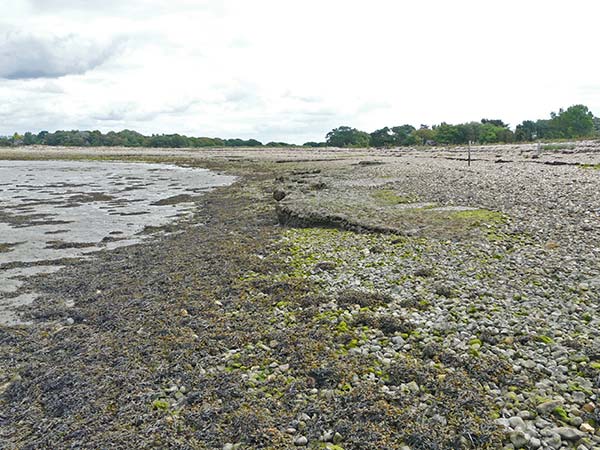
West Sussex Local Geological Sites - Chichester Harbour, Ella Nore (img 151)
Area D. Northern part of Ella Nore spit showing eroded outcrops of Holocene (Recent) alluvial salt marsh clays exposed by westward migration of the spit.
Photograph taken: 18/08/2010
Grid ref. SZ77629952
Direction ENE
Image file: P1020334ed.jpg


West Sussex Local Geological Sites - Chichester Harbour, Ella Nore (img 152)
Area D. The northern part of Ella Nore shingle spit. This is a reserve for nesting seabirds and entry is not permitted.
Photograph taken: 18/08/2010
Grid ref. SZ77629952
Direction east
Image file: P1020335ed.jpg

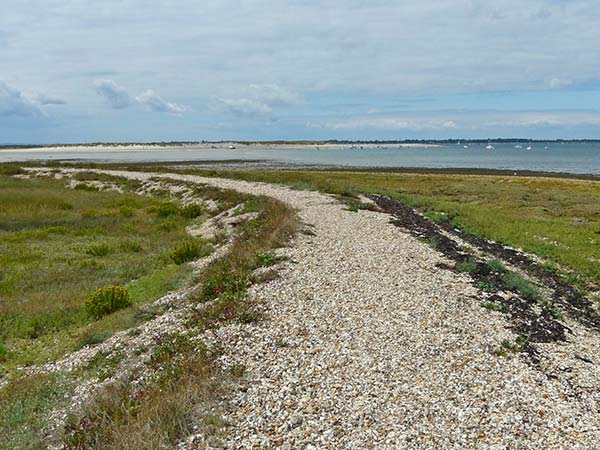
West Sussex Local Geological Sites - Chichester Harbour, Ella Nore (img 153)
Area D. View from Ella Nore spit north of Ella Nore Lane. The distant seaweed covered bank projecting out into the harbour marks the position of the Ella Nore Lane bed. The sand dunes of East Head are on the horizon.
Photograph taken: 18/08/2010
Grid ref. SZ77589950
Direction SW
Image file: P1020338ed.jpg


West Sussex Local Geological Sites - Chichester Harbour, Ella Nore (img 154)
Recurved tip of Ella Nore shingle spit and salt marsh beyond.
Photograph taken: 07/10/2010
Grid ref. SZ77799960
Direction SE
Image file: P1020700ed.jpg


West Sussex Local Geological Sites - Chichester Harbour, Ella Nore (img 155)
Ella Nore shingle spit from near the northern tip looking back to Ella Nore Lane.
Photograph taken: 07/10/2010
Grid ref. SZ77739959
Direction SW
Image file: P1020702ed.jpg

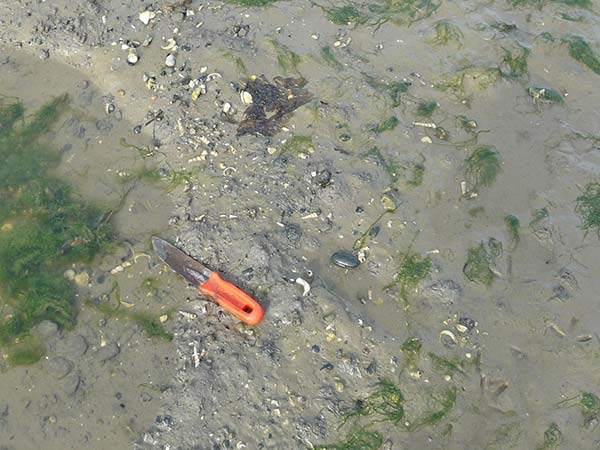
West Sussex Local Geological Sites - Chichester Harbour, Ella Nore (img 156)
Area C. Detail of patch of Turritella Bed (London Clay) showing through estuarine mud close to the sarsen boulder.
A number of Turritella and bivalve shells have been eroded from the clay and are lying on the surface.
Digging tool for scale 23 cm.
Photograph taken: 07/10/2010
Grid ref. SZ77389924
Image file: P1020716ed.jpg


West Sussex Local Geological Sites - Chichester Harbour, Ella Nore (img 157)
Area C. Large sarsen boulder on foreshore with patches of the fossiliferous Turitella Bed (London Clay) in the foreground, showing through the estuarine mud.
1 m pole for scale.
Photograph taken: 07/10/2010
Grid ref. SZ77389924
Direction NW
Image file: P1020717ed.jpg

Chichester Harbour, Dell Quay-Chichester Yacht Basin (SU70/13c)
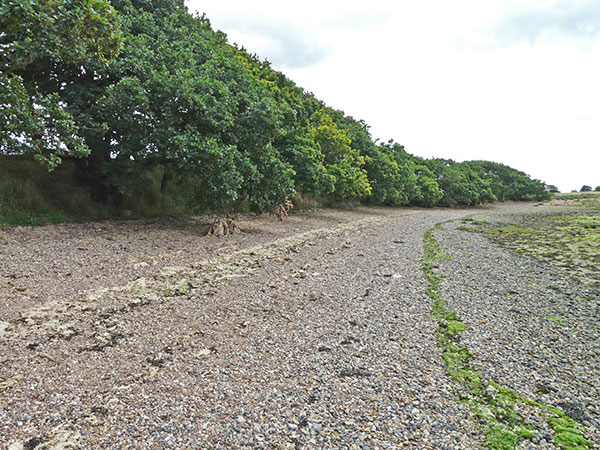
West Sussex Local Geological Sites - Chichester Harbour - Dell Quay to Chichester Marina (img 159)
Foreshore at location A. Exposures of the Reading Formation occur in the banks beneath the oaks growing at the edge of the harbour and at the head of the shingle beach.
Photograph taken: 05/08/2010
Grid ref. SU83610241
Direction south
Image file: P1020083ed.jpg

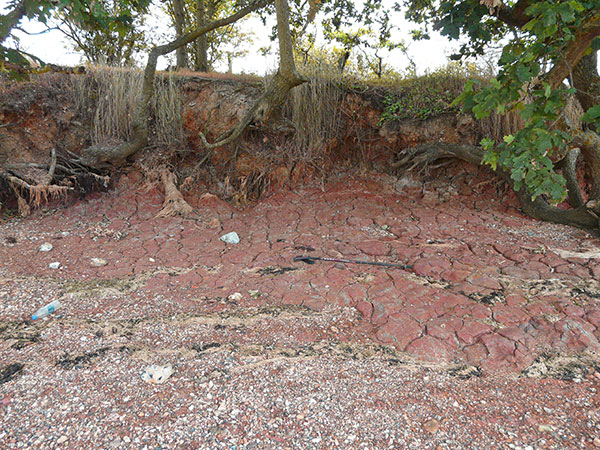
West Sussex Local Geological Sites - Chichester Harbour - Dell Quay to Chichester Marina (img 160)
Detail from location A: mottled red and grey clays of the Reading Formation exposed at head of beach platform and in bank behind.
1 m pole for scale.
Photograph taken: 05/08/2010
Grid ref. SU83620256
Direction east
Image file: P1020084ed.jpg


West Sussex Local Geological Sites - Chichester Harbour - Dell Quay to Chichester Marina (img 161)
Foreshore at location B. Exposures of the Reading Formation occur in the banks beneath the oaks growing at the edge of the harbour and at the head of the shingle beach.
Photograph taken: 05/08/2010
Grid ref. SU83630247
Direction south
Image file: P1020088ed.jpg

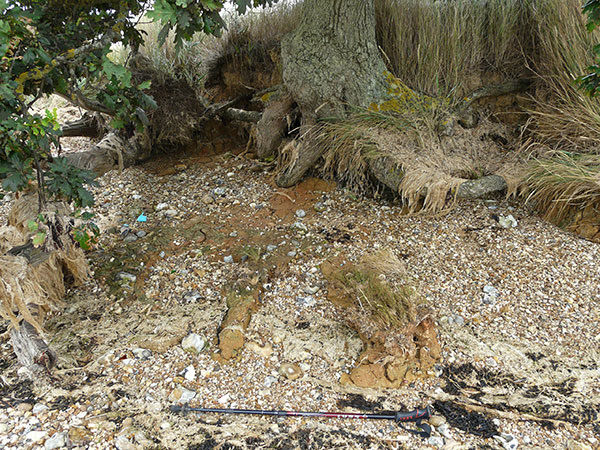
West Sussex Local Geological Sites - Chichester Harbour - Dell Quay to Chichester Marina (img 162)
Detail from location B: reddish brown clays of the Reading Formation exposed at head of the shingle beach and in the bank behind. Siltier layer in foreground.
1 m pole for scale.
Photograph taken: 05/08/2010
Grid ref. SU83610231
Direction east
Image file: P1020091ed.jpg


West Sussex Local Geological Sites - Chichester Harbour - Dell Quay to Chichester Marina (img 163)
Foreshore at location C. Exposures of the Reading Formation occur beneath the oaks growing at the edge of the harbour. The banks are frequently obscured by dumped concrete and rocks.
Photograph taken: 05/08/2010
Grid ref. SU83450213
Direction SW
Image file: P1020092ed.jpg

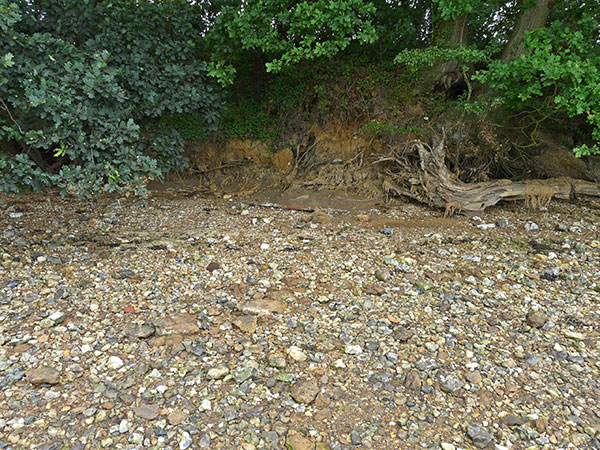
West Sussex Local Geological Sites - Chichester Harbour - Dell Quay to Chichester Marina (img 164)
Detail from location C: grey clay of the Reading Formation with sandy layers, exposed at the head of the shingle beach. The upper part of the bank exposes Pleistocene superficial deposits.
1 m pole for scale.
Photograph taken: 05/08/2010
Grid ref. SU83350201
Direction SE
Image file: P1020095ed.jpg


West Sussex Local Geological Sites - Chichester Harbour - Dell Quay to Chichester Marina (img 165)
Close-up of exposure shown in photo 6. Grey clay of the Reading Formation with sandy layers is exposed at the head of the shingle beach. The upper part of the bank exposes Pleistocene superficial deposits.
Photograph taken: 05/08/2010
Grid ref. SU83350201
Direction SE
Image file: P1020096ed.jpg

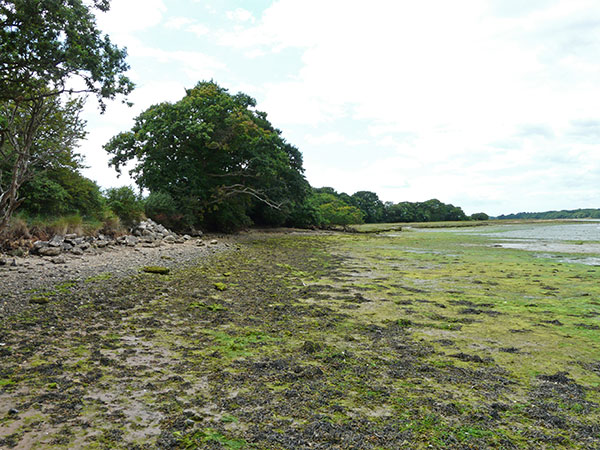
West Sussex Local Geological Sites - Chichester Harbour - Dell Quay to Chichester Marina (img 166)
Foreshore at location D. Exposures of the Reading Formation occur beneath the oaks growing at the edge of the harbour. The low banks are frequently obscured by dumped rocks.
Photograph taken: 05/08/2010
Grid ref. SU83210192
Direction SW
Image file: P1020098ed.jpg

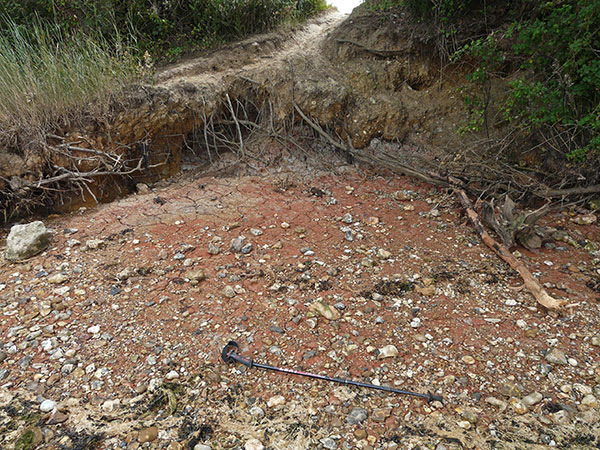
West Sussex Local Geological Sites - Chichester Harbour - Dell Quay to Chichester Marina (img 167)
Detail from location D: mottled red and grey clays of the Reading Formation exposed at the head of the shingle beach. Overlain in the bank by Quaternary superficial deposits.
1 m pole for scale.
Photograph taken: 05/08/2010
Grid ref. SU83160189
Direction SE
Image file: P1020099ed.jpg

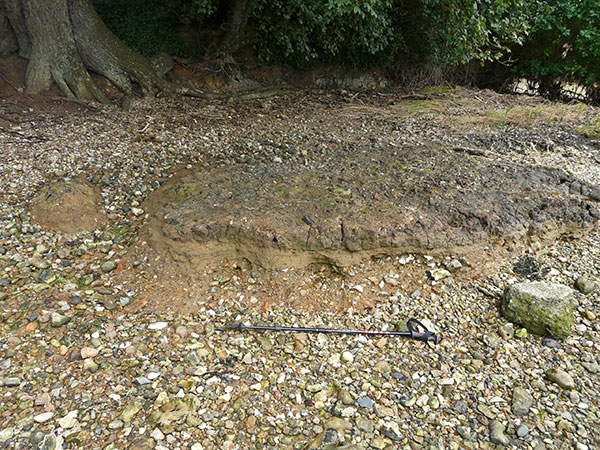
West Sussex Local Geological Sites - Chichester Harbour - Dell Quay to Chichester Marina (img 168)
Detail from location D: grey clays of the Reading Formation underlain by a sandy layer exposed at the head of the shingle beach.
1 m pole for scale.
Photograph taken: 05/08/2010
Grid ref. SU83070184
Direction SSE
Image file: P1020100ed.jpg

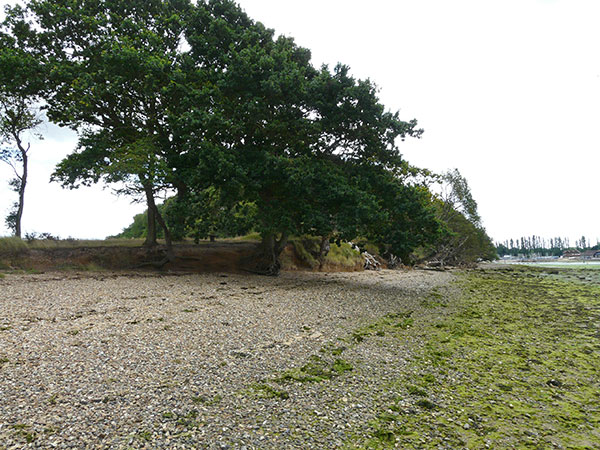
West Sussex Local Geological Sites - Chichester Harbour - Dell Quay to Chichester Marina (img 169)
Foreshore at location E. Exposures of the Harwich Formation occur beneath the oaks growing at the edge of the harbour. The banks in the foreground expose Quaternary superficial deposits of brickearth.
Photograph taken: 05/08/2010
Grid ref. SU82890181
Direction south
Image file: P1020101ed.jpg

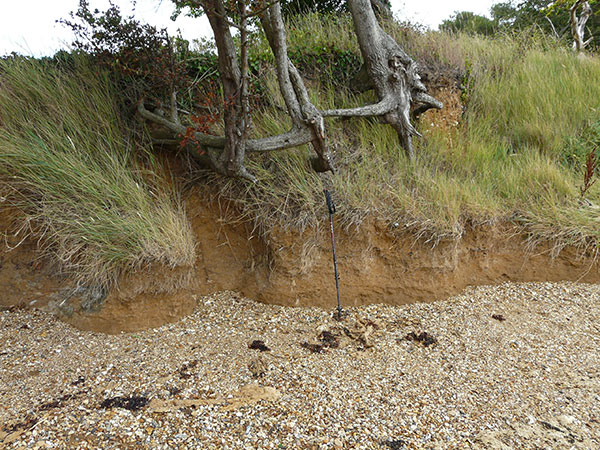
West Sussex Local Geological Sites - Chichester Harbour - Dell Quay to Chichester Marina (img 170)
Close-up of bank under trees shown in photo 11 exposing Pleistocene brickearth deposits.
1 m pole for scale.
Photograph taken: 05/08/2010
Grid ref. SU82900177
Direction SE
Image file: P1020102ed.jpg

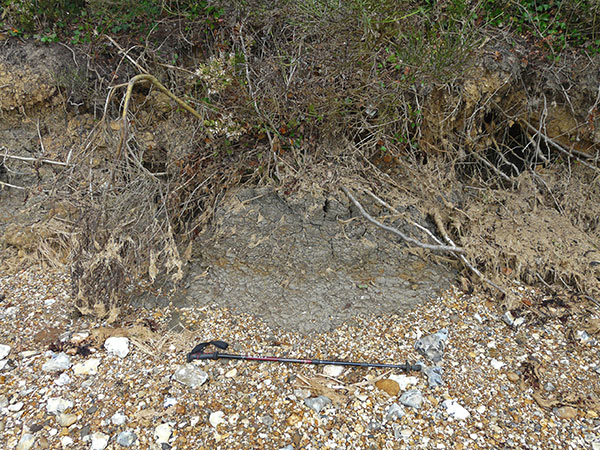
West Sussex Local Geological Sites - Chichester Harbour - Dell Quay to Chichester Marina (img 171)
Detail from location F: exposure of grey clays of the basal London Clay Formation.
1 m pole for scale.
Photograph taken: 05/08/2010
Grid ref. SU82850149
Direction east
Image file: P1020104ed.jpg


West Sussex Local Geological Sites - Chichester Harbour - Dell Quay to Chichester Marina (img 172)
Detail from location E. Exposures of the finely laminated calcareous sandstone of the upper Copperas Stone Band of the Harwich Formation at the head of the shingle beach.
Scale 30 cm.
Photograph taken: 05/08/2010
Grid ref. SU82860172
Image file: P1020105ed.jpg

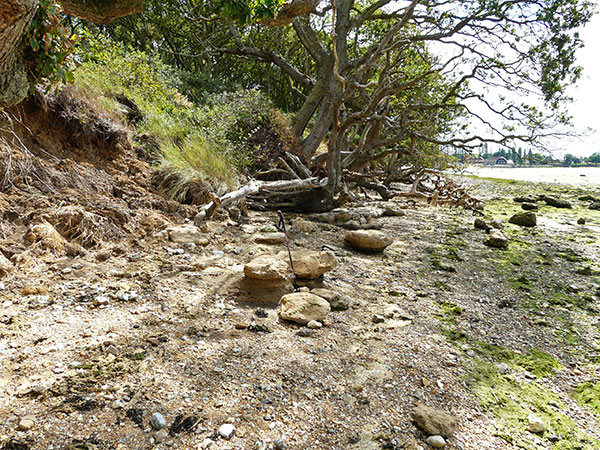
West Sussex Local Geological Sites - Chichester Harbour - Dell Quay to Chichester Marina (img 173)
Foreshore at location E. Exposures of the Copperas Stone Bands of the Harwich Formation occur here on the shingle beach.
Photograph taken: 05/08/2010
Grid ref. SU82870175
Direction south
Image file: P1020108ed.jpg

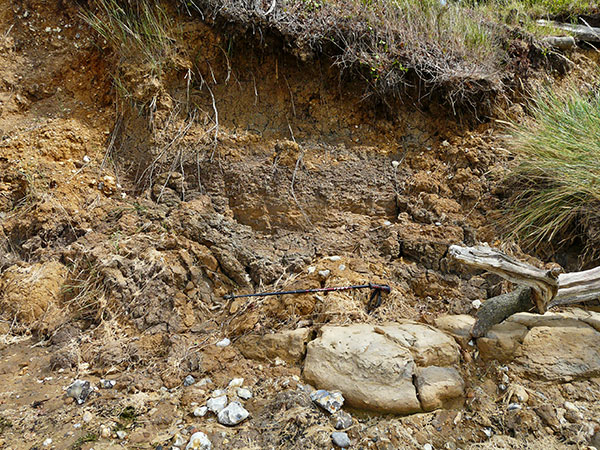
West Sussex Local Geological Sites - Chichester Harbour - Dell Quay to Chichester Marina (img 174)
Close-up of part of bank shown in photo 13 exposing Copperas Stone (Harwich Formation) at base overlain by basal London Clay. Pleistocene superficial deposits overlie the London Clay.
1 m pole for scale.
Photograph taken: 05/08/2010.
Grid ref. SU82870175
Direction ESE
Image file: P1020109ed.jpg

Lavant Stone Quarry (SU80/94)
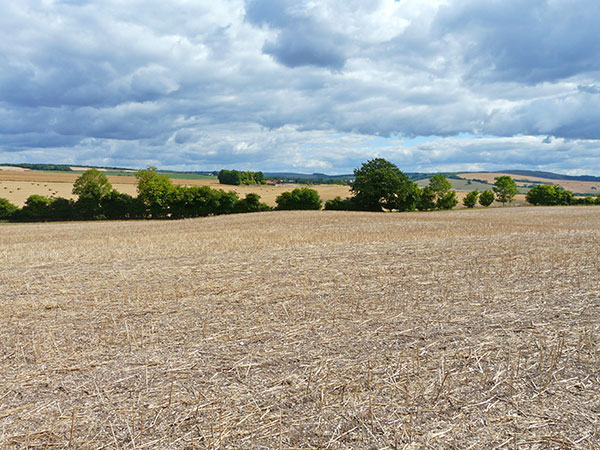
West Sussex Local Geological Sites - Lavant Stone Quarry (img 176)
Gentle mounding marks the location of the former Lavant Stone quarryin a cultivated field.
Photo taken: 05/08/2010
Grid ref SU83450979
Direction NE
Image file: P1020079ed.jpg

Elsted Road Cutting (SU81/156)
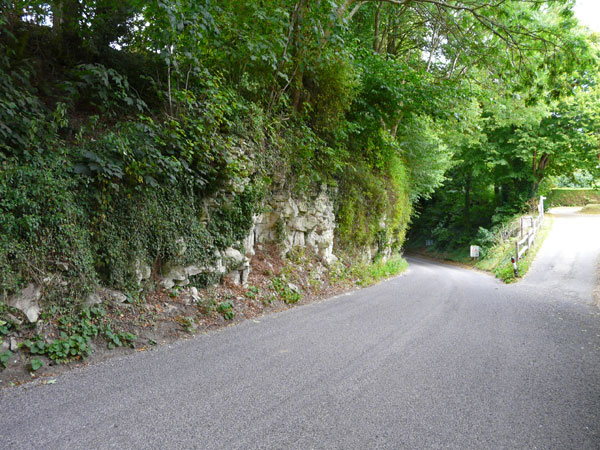
West Sussex Local Geological Sites - Elsted Road Cutting (img 178)
Left (west) end of the exposure opposite the pub, showing siltstones of the Upper Greensand Formation.
Photograph taken: 30/07/2010
Grid ref. SU81771966
Direction ENE
Image file: P1020053ed.jpg

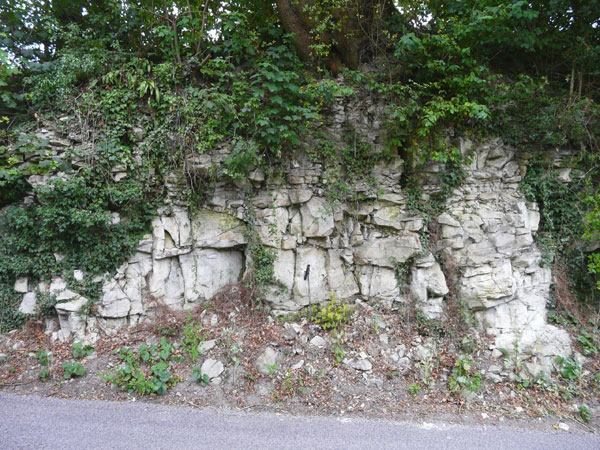
West Sussex Local Geological Sites - Elsted Road Cutting (img 179)
Left (west) end of Upper Greensand exposure opposite the pub, showing siltstones with thicker, more irregular beds in the lower part and numerous joints and fractures.
Height 4 m.
Photograph taken: 30/07/2010
Grid ref. SU81781966
Direction north
Image file: P1020054ed.jpg


West Sussex Local Geological Sites - Elsted Road Cutting (img 180)
Towards right (eastern) end of Upper Greensand exposure opposite the pub, showing siltstones with thicker, more irregular beds in the lower part and numerous joints and fractures.
Height up to 4 m.
Photograph taken: 30/07/2010
Grid ref. 81801966
Direction north
Image file: P1020056ed.jpg

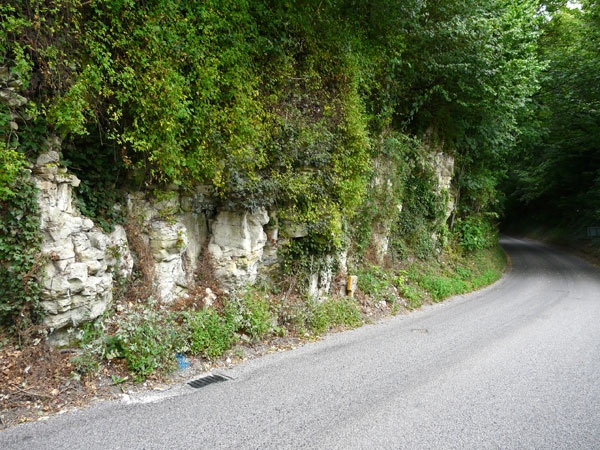
West Sussex Local Geological Sites - Elsted Road Cutting (img 181)
Towards right (east) end of Upper Greensand exposure opposite the pub, showing thick-bedded siltstones. 3 m high.
Photograph taken: 0/07/2010
Grid ref. SU81801966
Direction NE
Image file: P1020057ed.jpg

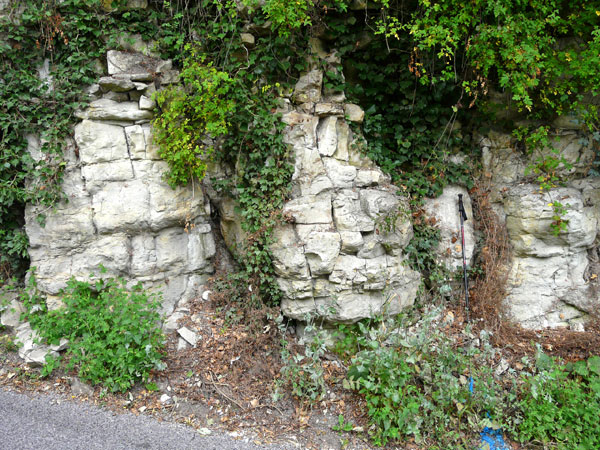
West Sussex Local Geological Sites - Elsted Road Cutting (img 182)
Closer view of exposure seen in photo 4 showing siltstone with thick beds and well-developed joints and fractures.
1m pole for scale.
Photograph taken: 30/07/2010
Grid ref. SU81801966
Direction north
Image file: P1020058ed.jpg


West Sussex Local Geological Sites - Elsted Road Cutting (img 183)
Closer view of left of exposure seen in photo 5 showing siltstone with thick beds and well-developed joints and fractures.
1m pole for scale.
Photograph taken: 30/07/2010
Grid ref. SU81801966
Direction NNE
Image file: P1020059ed.jpg

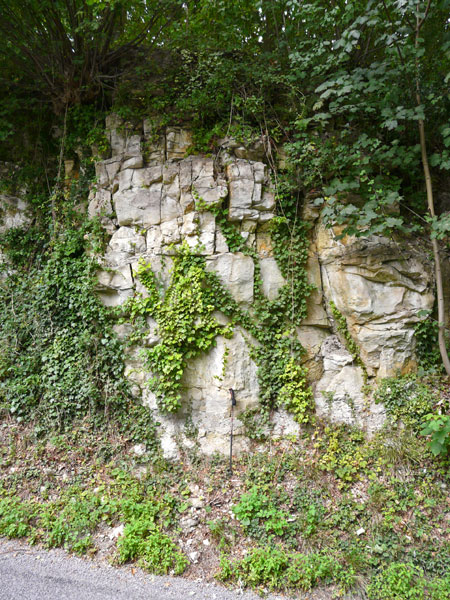
West Sussex Local Geological Sites - Elsted Road Cutting (img 184)
Relatively vegetation-free section at right (east) end of exposure showing siltstone with thick beds and well-developed joints and fractures.
1m pole for scale.
Photograph taken: 30/07/2010
Grid ref. SU81811967
Direction NNW
Image file: P1020060ed.jpg

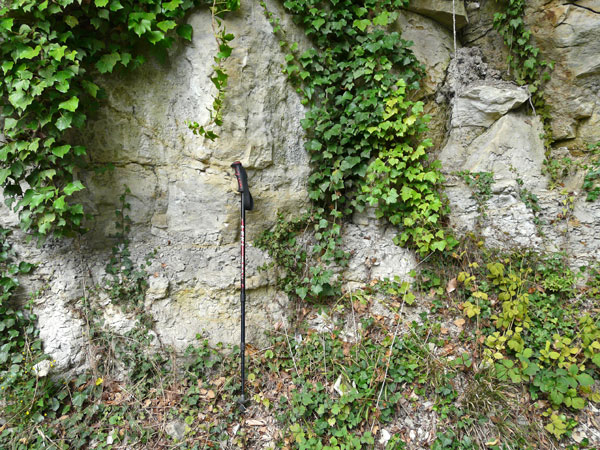
West Sussex Local Geological Sites - Elsted Road Cutting (img 185)
Close-up of base of exposure shown in photo 8 showing siltstone with thick beds and well-developed joints above a thinner bedded unit at the base.
1 m pole for scale.
Photograph taken: 30/07/2010
Grid ref. SU81811967
Direction NNW
Image file: P1020061ed.jpg

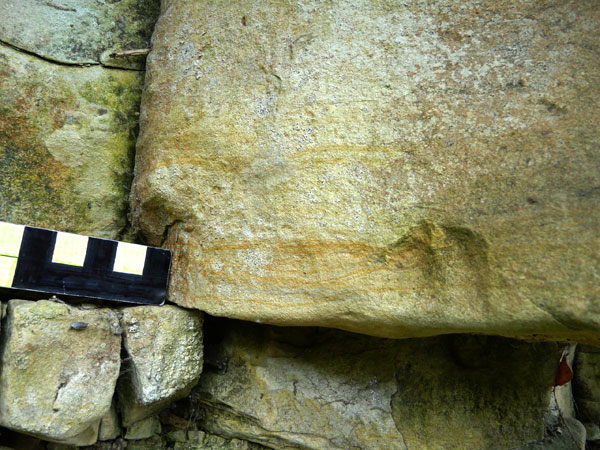
West Sussex Local Geological Sites - Elsted Road Cutting (img 186)
Detail of exposure in photo 2 showing streaky, wispy bedding in thick siltstone unit.
Scale has 2 cm graduations.
Photograph taken: 30/07/2010
Grid ref. SU81781966 Direction north
Image file: P1020062ed.jpg

Cocking Wind Gap (SU81/164)
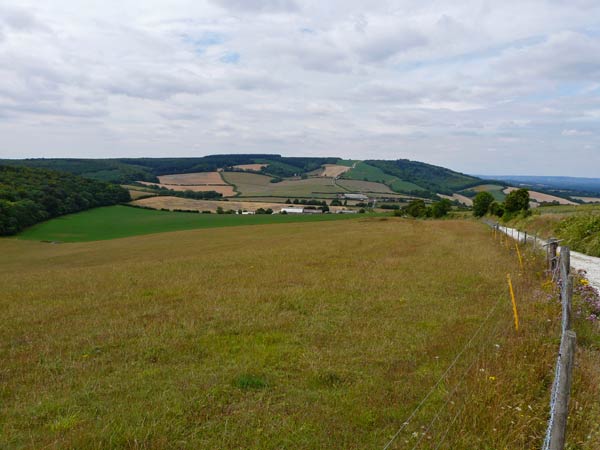
West Sussex Local Geological Sites - Cocking Wind Gap (img 188)
Cocking wind gap from the South Downs way to the east showing the low, flat and dry watershed where the crest of the downs is lowered by about 100 m. The top of the chalk escarpment to the right (north) is underlain by Zig Zag Chalk and the watershed is underlain successively by Holywell, New Pit, Lewes and Seaford Chalk. The strata dip gently to the left (south) on the northern limb of the Littlewood Syncline.
Photograph taken: 30/07/2010
Grid ref SU88581644
Direction west
Image file: P1020045ed.jpg

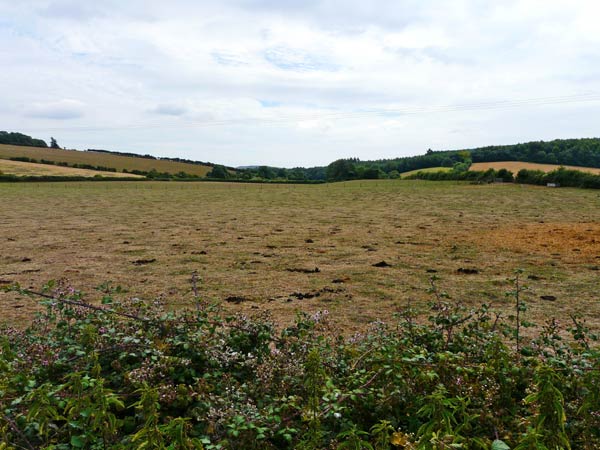
West Sussex Local Geological Sites - Cocking Wind Gap (img 189)
Flat and dry watershed of Cocking wind gap looking towards the head of the wide dry valley running south to the Lavant River and cut mainly in Lewes Chalk. The crest of the downs is lowered here by about 100 m.
Photograph taken: 30/07/2010
Grid ref SU87021667
Direction south
Image file: P1020047ed.jpg

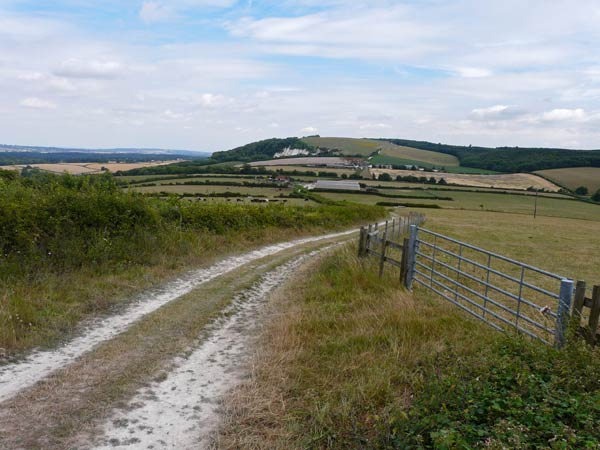
West Sussex Local Geological Sites - Cocking Wind Gap (img 190)
Cocking wind gap from the South Downs Way to the west showing the low, flat and dry watershed between the scarp dry valley to the north and the dip slope dry valley to the south. The steep upper part of the chalk escarpment to the left (north) is cut in Holywell and New Pit Chalk, exposed in Cocking Chalk Pit. The gentler slopes to the right (north) are underlain successively by Lewes and Seaford Chalk. Strata dip gently to the right (south).
Photograph taken: 30/07/2010
Grid ref SU86551687
Direction ESE
Image file: P1020048ed.jpg

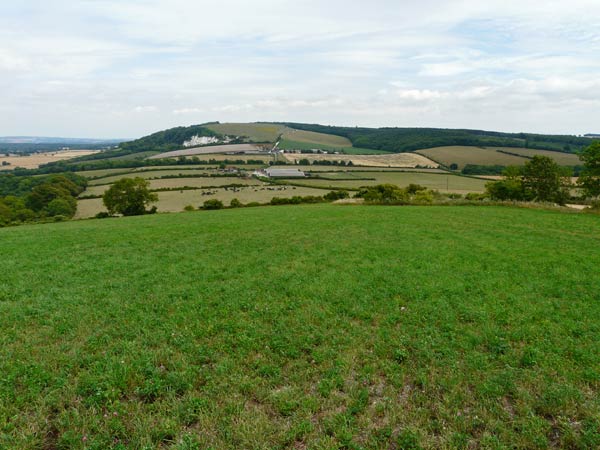
West Sussex Local Geological Sites - Cocking Wind Gap (img 191)
Cocking wind gap from the west showing the low, flat and dry watershed. The steep upper part of the chalk escarpment to the left (north) is cut in Holywell and New Pit Chalk, exposed in Cocking Chalk Pit. The gentler slopes to the right (north) are underlain successively by Lewes and Seaford Chalk. Strata dip gently to the right (south).
Photograph taken: 30/07/2010
Grid ref SU86551687
Direction ESE
Image file: P1020049ed.jpg


West Sussex Local Geological Sites - Cocking Wind Gap (img 192)
Cocking wind gap from the west showing the low, flat and dry watershed. The field in the foreground is underlain by New Pit Chalk.
Photograph taken: 30/07/2010
Grid ref. SU86291673
Direction ESE
Image file: P1020050.jpg

Cocking Chalk Pit (SU81/54)
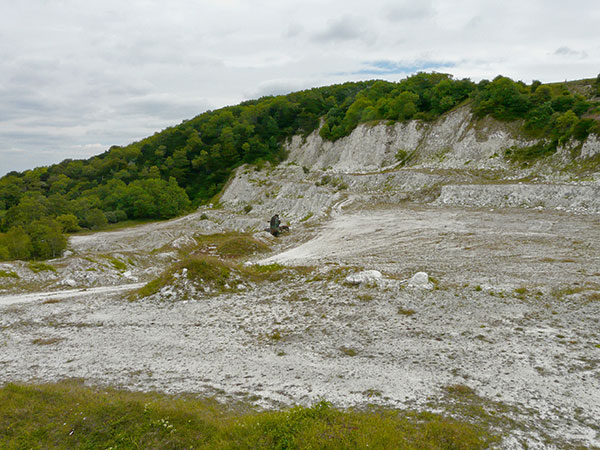
West Sussex Local Geological Sites - Cocking Chalk Pit (img 194)
Eastern end of quarry from upper pit. Faces up to 30m high in total expose Holywell Nodular Chalk overlain by New Pit Chalk
Photo taken: 30/07/2010
Grid ref SU88101679
Direction ENE
Image file: P1020033ed.jpg

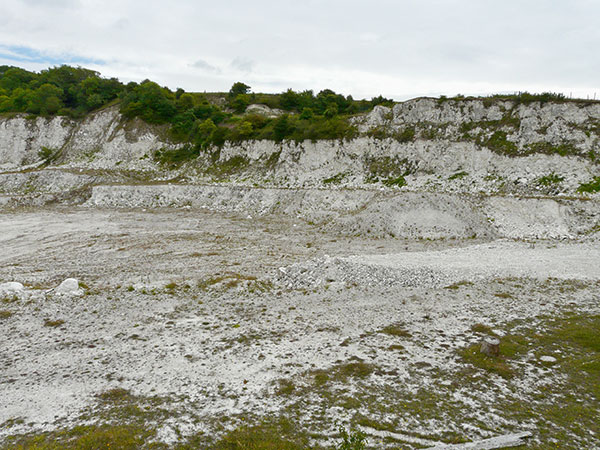
West Sussex Local Geological Sites - Cocking Chalk Pit (img 195)
SE face of upper pit, cut in New Pit Chalk.
Height about 20m.
Photo taken: 30/07/2010
Grid ref SU88101679
Direction ESE
Image file: P1020034ed.jpg

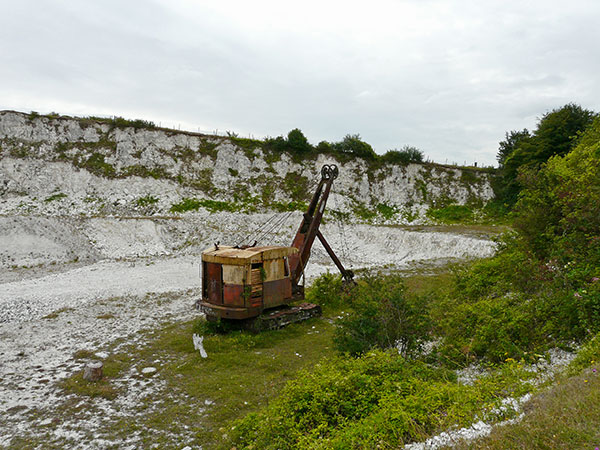
West Sussex Local Geological Sites - Cocking Chalk Pit (img 196)
Southwestern end of upper pit, cut in New Pit Chalk.
Photo taken: 30/07/2010
Grid ref SU88101679
Direction SE
Image file: P1020035ed.jpg

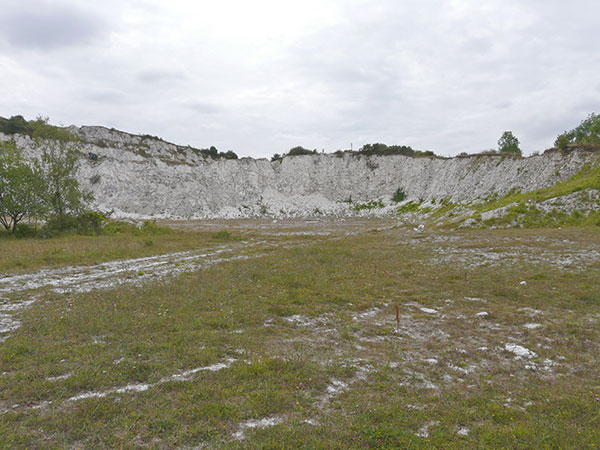
West Sussex Local Geological Sites - Cocking Chalk Pit (img 197)
Western end of lower pit cut in Holywell Nodular Chalk. Height about 10m.
Face at right shows gentle dip to left (south).
Photo taken: 30/07/2010
Grid ref SU88181695
Direction SSW
Image file: P1020036ed.jpg

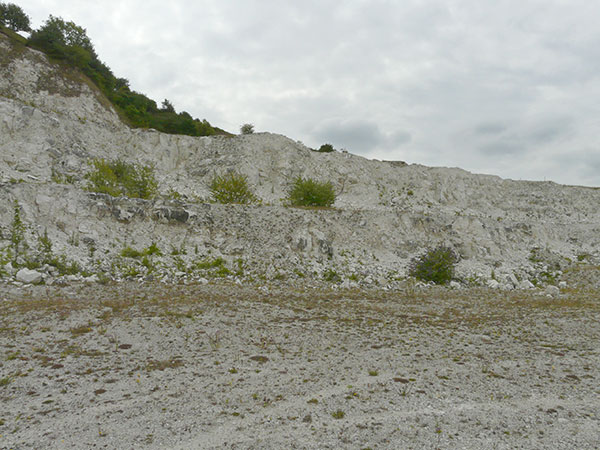
West Sussex Local Geological Sites - Cocking Chalk Pit (img 198)
Eastern end of south face, lower pit, cut in Holywell Nodular Chalk.
Height about 10m.
Photo taken: 30/07/2010
Grid ref SU88291690
Direction south
Image file: P1020038ed.jpg

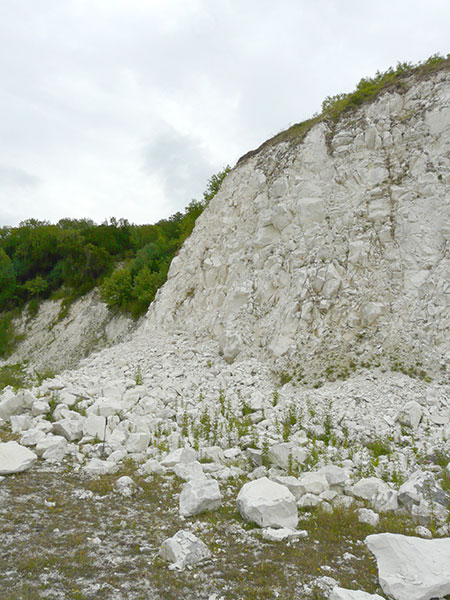
West Sussex Local Geological Sites - Cocking Chalk Pit (img 199)
Massive white New Pit Chalk exposed in upper part of SE face, lower pit.
Height about 15m.
Photo taken: 30/07/2010
Grid ref SU88281682
Direction east
Image file: P1020043ed.jpg

James's Quarry, Easebourne (SU82/70)
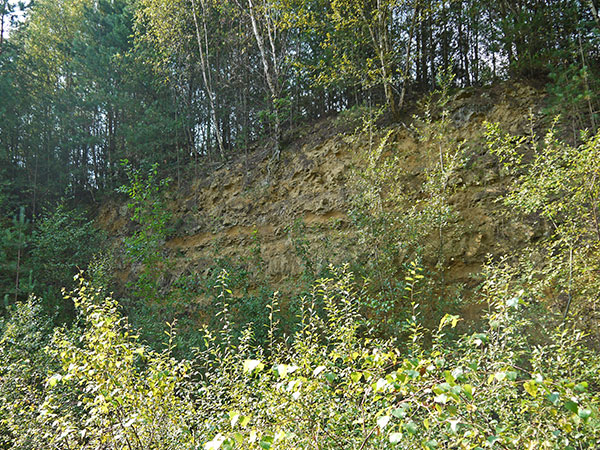
West Sussex Local Geological Sites - James Quarry (img 201)
Central part of main face up to 8 m high exposing Hythe Formation sandstones and siltstones. Lower face obscured by young trees and bushes.
Photo taken: 03/09/2012
Grid ref SU89592476
Direction SW
Image file: P2020935crop.jpg


West Sussex Local Geological Sites - James Quarry (img 202)
Close-up of middle section of main face shown in photo 1, at left (SE) end of face. Shows siltstone bed between massive sandstones.
1m pole for scale.
Photo taken: 03/09/2012
Grid ref SU89592474
Direction NW
Image file: P2020961ed.jpg

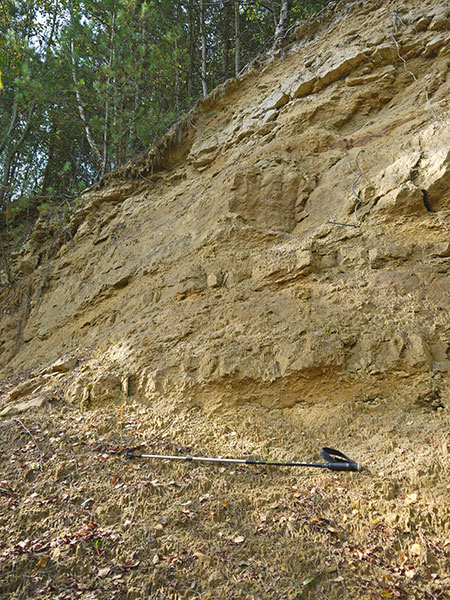
West Sussex Local Geological Sites - James Quarry (img 203)
Upper face to left (south) of face shown in photo 1. Exposes interbedded sandstones and siltstones with a massive sandstone bed at centre.
About 4m high.
1m pole for scale.
Photo taken: 03/09/2012
Grid ref SU89612474
Direction south
Image file: P2020967ed.jpg

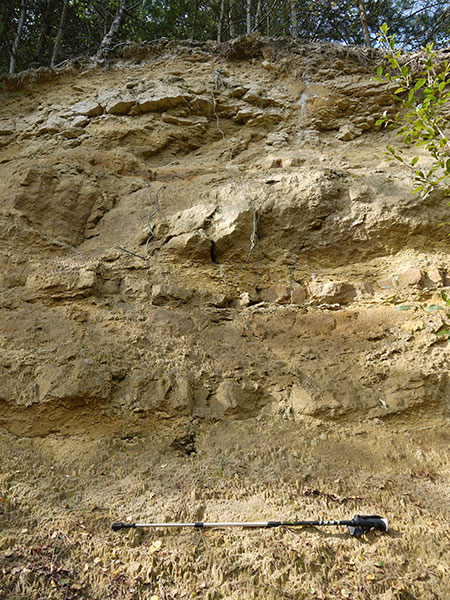
West Sussex Local Geological Sites - James Quarry (img 204)
Close-up of face shown in photo 3 showing interbedded sandstones and siltstones with a massive sandstone bed at centre.
About 4m high.
1 m pole for scale.
Photo taken: 03/09/2012
Grid ref SU89612474
Direction SW
Image file: P2020969.jpg

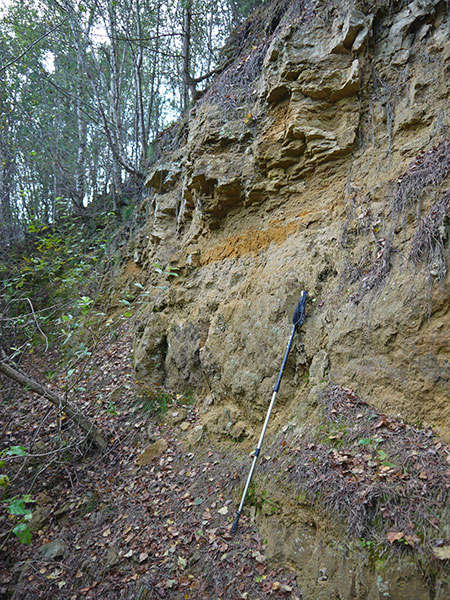
West Sussex Local Geological Sites - James Quarry (img 205)
Upper face at southern end of quarry, up to 3 m high. Massive sandstone beds with more silty iron-stained layer between.
1m pole for scale.
Photo taken: 03/09/2012
Grid ref SU89612472
Direction south
Image file: P2020976ed.jpg


West Sussex Local Geological Sites - James Quarry (img 206)
Upper face near southern end of quarry, about 4m high. Massive sandstones with siltstone interbeds.
Photo taken: 03/09/2012
Grid ref SU89612472
Direction NW
Image file: P2020980ed.jpg

Eartham Pit, Boxgrove (SU90/09)
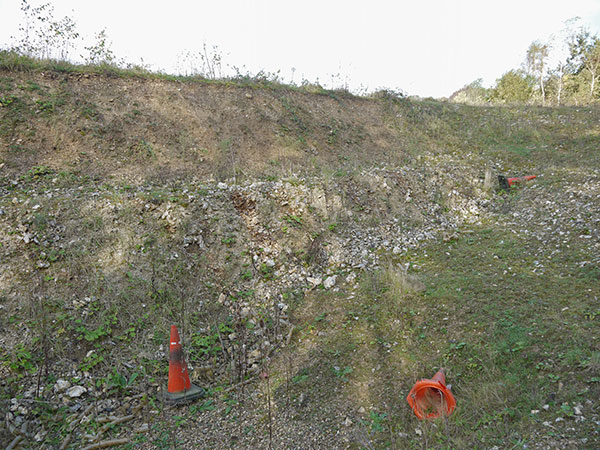
West Sussex Local Geological Sites - Eartham Pit (img 208)
Closer view of central and northern parts of face showing Eartham Formation solifluction deposits. Brownish deposits with small rock fragments in a brickearth matrix overlie flint rich deposits.
Photo taken: 15/10/2012
Grid ref SU9256508545
Direction NNW
Image file: P1030142ed.jpg

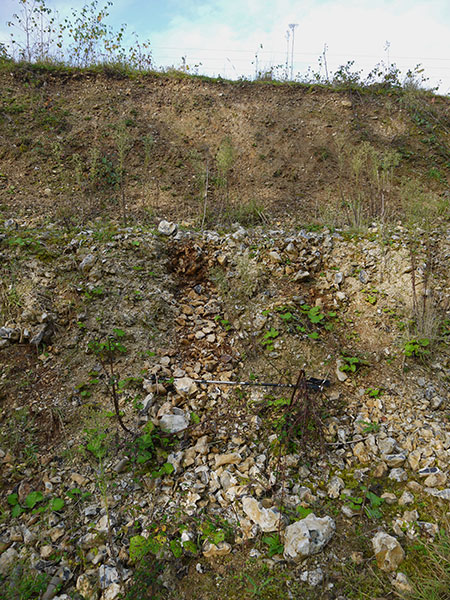
West Sussex Local Geological Sites - Eartham Pit (img 209)
Close-up of centre of face with minor excavation into layer of large flints. The flint rich solifluction deposits beneath this bed are lighter coloured than the decalcified solifluction deposits above.
1m pole for scale.
Photo taken: 15/10/2012
Grid ref SU9256508547
Direction WNW
Image file: P1030144ed.jpg

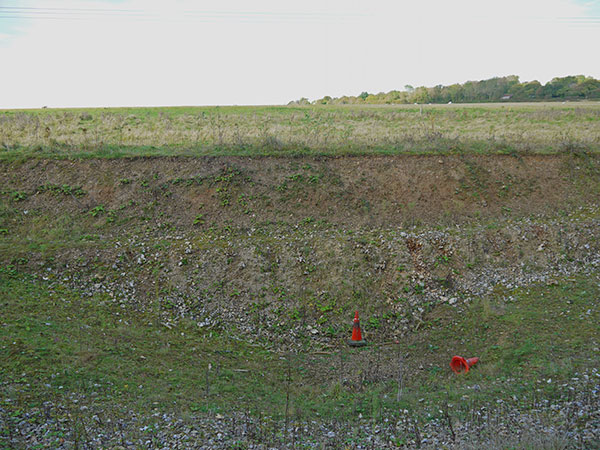
West Sussex Local Geological Sites - Eartham Pit (img 210)
Central part of face exposing Eartham Formation solifluction deposits with brownish decalcified deposits overlying flint rich deposits.
Maximum height about 5.5m.
Photo taken: 15/10/2012
Grid ref SU9257208540
Direction WNW
Image file: P1030153ed.jpg

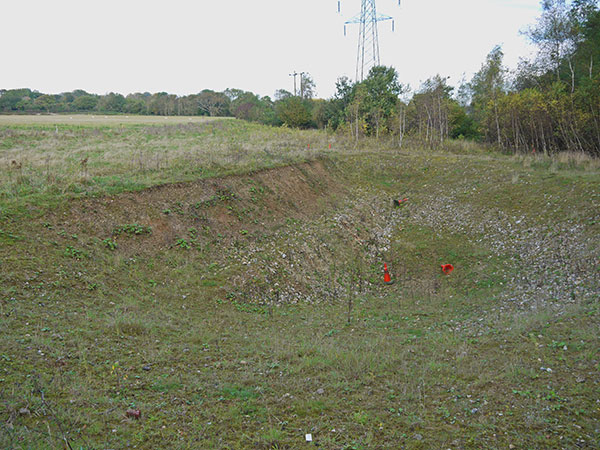
West Sussex Local Geological Sites - Eartham Pit (img 211)
Preserved exposure of Eartham Formation solifluction deposits about 30m long and 5m high, showing brownish decalcified deposits overlying flint-rich deposits. A bench has been cut at the top of the flint-rich deposits. The ancient cliff was located about 100m north beyond the far end of the currently visible exposure.
Photo taken: 15/10/2012
Grid ref SU9256308529
Direction north
Image file: P1030158ed.jpg

Bognor Foreshore (SU90/10)
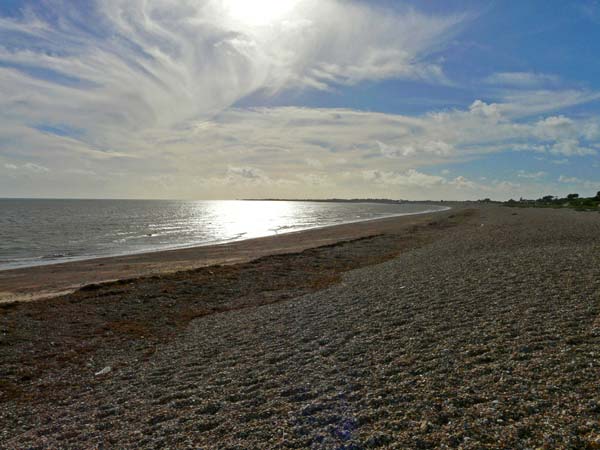
West Sussex Local Geological Sites - Bognor Foreshore (img 213)
Foreshore at Coastguard Parade opposite Barn Rocks, looking west towards Pagham. No exposures of London Clay are visible on the foreshore, 1 hour before a low 0.7 m tide. The Barn Rocks themselves were also submerged although they are still visible on the lowest tides
Photograph taken: 06/10/2010
Grid ref. SZ90459795
Direction WSW
Image file: P1020638ed.jpg

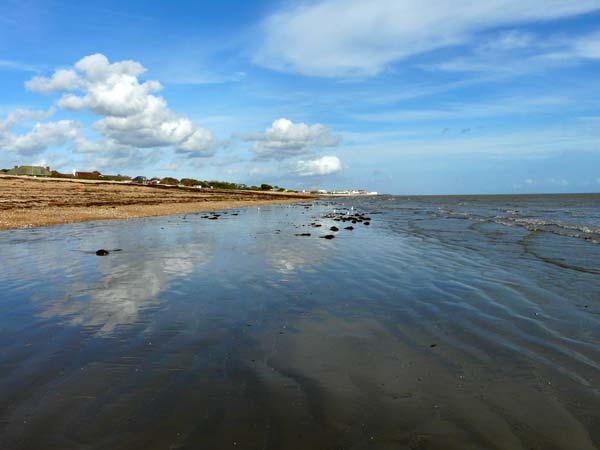
West Sussex Local Geological Sites - Bognor Foreshore (img 214)
View of the foreshore between Coastguard Parade and the breakwater at Aldwick within 1 hour before a low 0.7 m tide. No exposures of London Clay are visible but there is an extensive area of sand below the shingle beach which might reveal exposures from time to time.
Photograph taken: 06/10/2010
Grid ref. SZ90779797
Direction ENE
Image file: P1020644croped.jpg

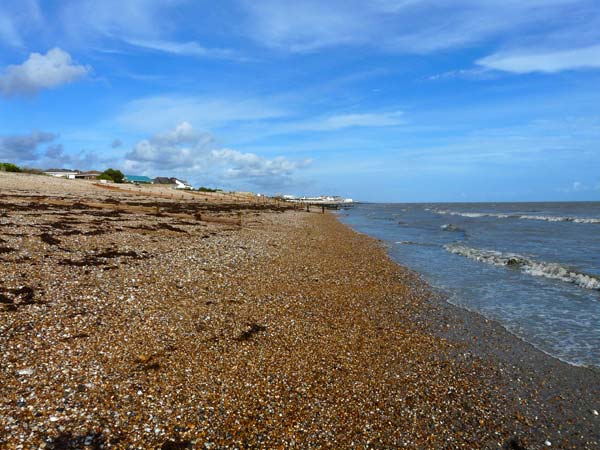
West Sussex Local Geological Sites - Bognor Foreshore (img 215)
Foreshore west of the breakwater at Aldwick within 1 hour before a low 0.7 m tide. There is no sand exposed below the shingle beach and no exposures of London Clay are visible.
Photograph taken: 06/10/2010
Grid ref. SZ91219812
Direction ENE
Image file: P1020648ed.jpg

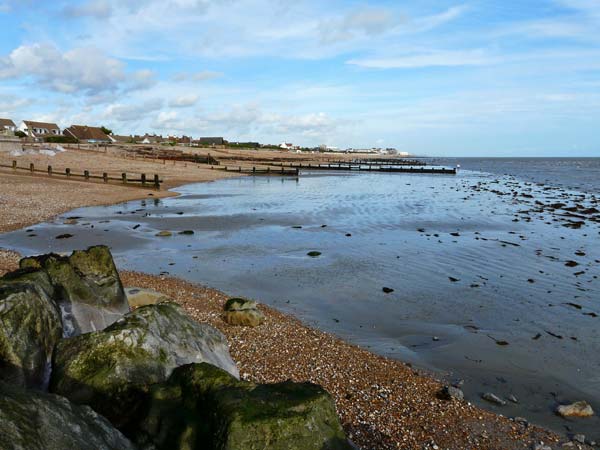
West Sussex Local Geological Sites - Bognor Foreshore (img 216)
Foreshore viewed from Aldwick breakwater within 1 hour of low 0.7 m tide showing extensive area of sand below the shingle beach, covering the Aldwick Beds.
Photograph taken: 06/10/2010
Grid ref. SZ91589831
Direction ENE
Image file: P1020652ed.jpg

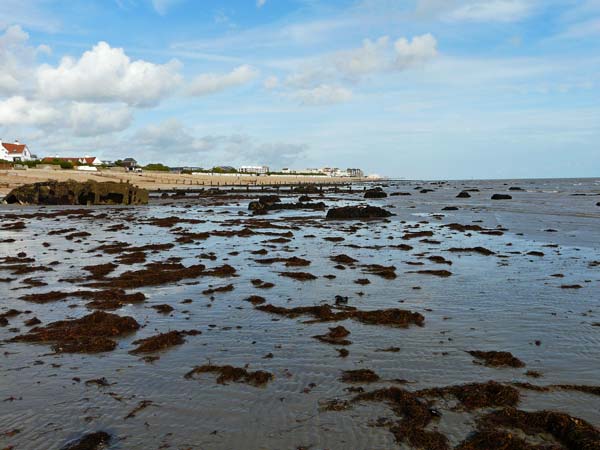
West Sussex Local Geological Sites - Bognor Foreshore (img 217)
Foreshore between Aldwick breakwater and West Park showing the start of massive calcareous sandstone concretions forming the Bognor Reef. These occur in the Bognor Sand member of the London Clay.
Shipwreck at left.
Photograph taken: 06/10/2010
Grid ref. SZ91879836
Direction ENE
Image file: P1020654croped.jpg

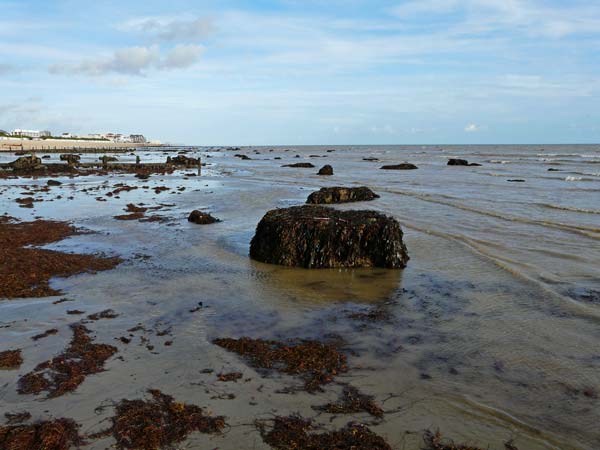
West Sussex Local Geological Sites - Bognor Foreshore (img 218)
Massive calcareous sandstone concretions near the western end of the Bognor Reef. These occur in the Bognor Sand member of the London Clay. Many are encrusted with seaweed and difficult to examine.
1 m pole for scale.
Photograph taken: 06/10/2010
Grid ref. SZ91919838
Direction east
Image file: P1020656ed.jpg

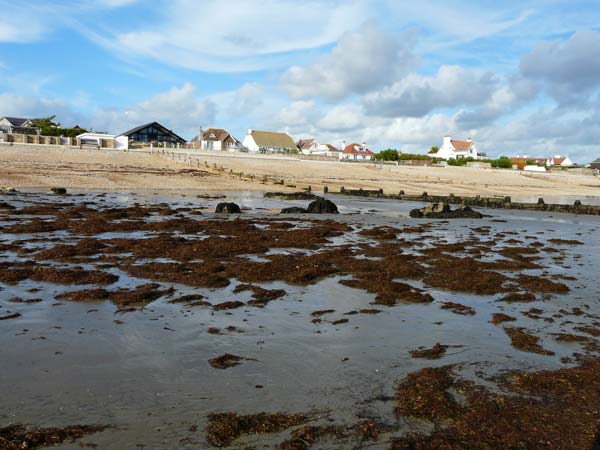
West Sussex Local Geological Sites - Bognor Foreshore (img 219)
Sandstone concretions exposed on the foreshore. These occur in the Bognor Sand member of the London Clay. The rocks higher up the foreshore are relatively clean but seaward they are encrusted with seaweed.
Photograph taken: 06/10/2010
Grid ref. SZ91919838
Direction NE
Image file: P1020659croped.jpg

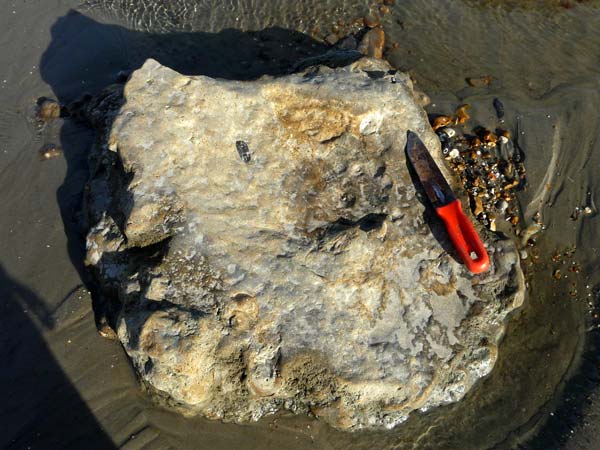
West Sussex Local Geological Sites - Bognor Foreshore (img 220)
Detail of block of calcareous sandstone with bivalve shell fossils visible. Located in area of foreshore shown in photo 8.
Digging tool for scale 23 cm.
Photograph taken: 06/10/2010
Grid ref. SZ91929842
Image file: P1020664croped.jpg

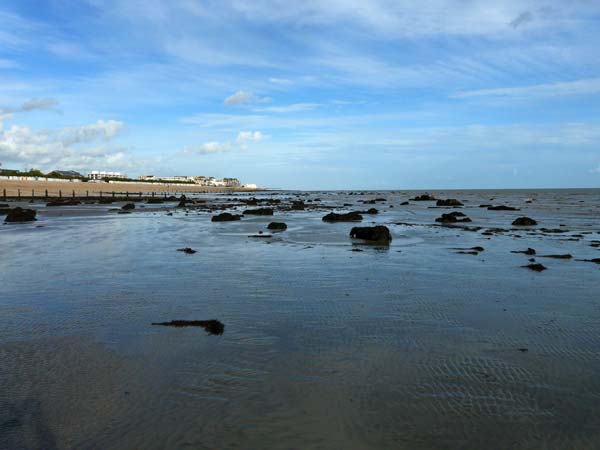
West Sussex Local Geological Sites - Bognor Foreshore (img 221)
Nearshore part of the Bognor reef comprising numerous massive calcareous sandstone concretions. These occur in the Bognor Sand member of the London Clay.
Photograph taken: 06/10/2010
Grid ref. SZ91989841
Direction ENE
Image file: P1020665ed.jpg

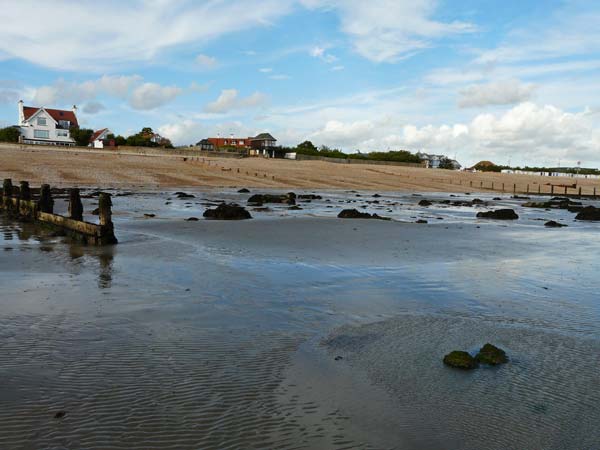
West Sussex Local Geological Sites - Bognor Foreshore (img 222)
Location close to the junction of the Aldwick Beds and Bognor Sand. The bedrock is mostly covered with sand apart from the massive calcareous sandstone concretions and scattered septarian nodules.
Photograph taken: 06/10/2010
Grid ref. SZ91989841
Direction NE
Image file: P1020666ed.jpg

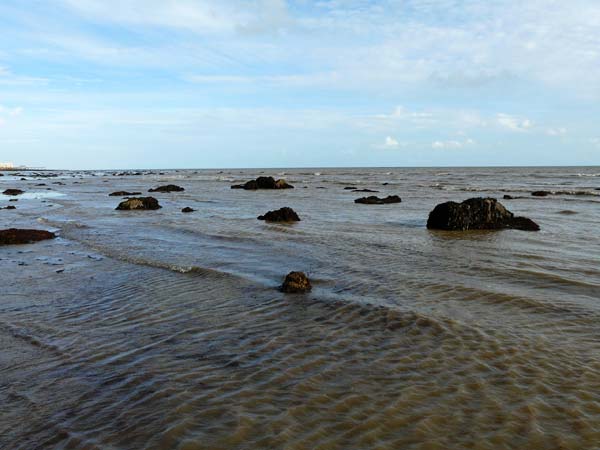
West Sussex Local Geological Sites - Bognor Foreshore (img 223)
Massive calcareous sandstone concretions of the main Bognor Rock Reef exposed close to low 0.7 m tide.
Photograph taken: 06/10/2010
Grid ref. SZ92159838
Direction east
Image file: P1020667ed.jpg

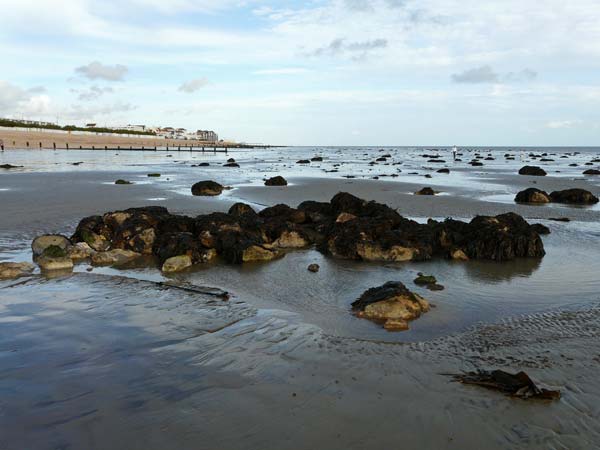
West Sussex Local Geological Sites - Bognor Foreshore (img 224)
Massive calcareous sandstone concretions of the main Bognor Rock Reef exposed close to low 0.7 m tide. Large concretion in foreground is elongated sub-parallel to bedding strike.
Photograph taken: 06/10/2010
Grid ref. SZ92219843
Direction ENE
Image file: P1020668ed.jpg


West Sussex Local Geological Sites - Bognor Foreshore (img 225)
Bognor Rock Reef from the top of the beach with the offshore Bognor Rocks just visible on a low 0.7 m tide.
Photograph taken: 06/10/2010
Grid ref. SZ92229854
Direction SE
Image file: P1020671crop2ed.jpg

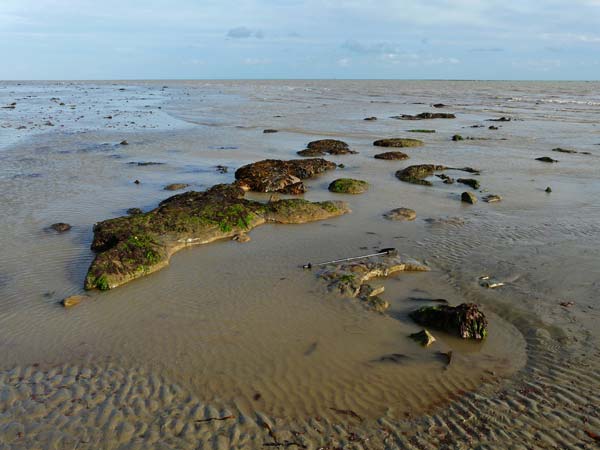
West Sussex Local Geological Sites - Bognor Foreshore (img 226)
Elongated outcrop of softer sandstone to the west of the main reef.
1 m pole for scale.
Photograph taken: 06/10/2010
Grid ref. SZ92369839
Direction ESE
Image file: P1020680ed.jpg

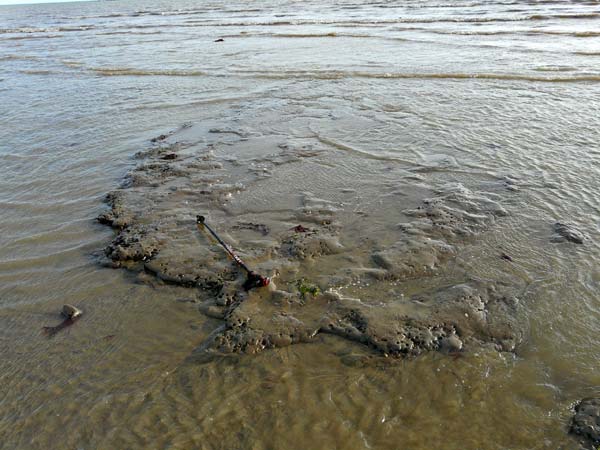
West Sussex Local Geological Sites - Bognor Foreshore (img 227)
Detail of outcrop of London Clay Division A east of Bognor pier exposed close to low 0.7 m tide.
1 m pole for scale.
Photograph taken: 06/10/2010
Grid ref. SZ92769836
Direction south
Image file: P1020687ed.jpg

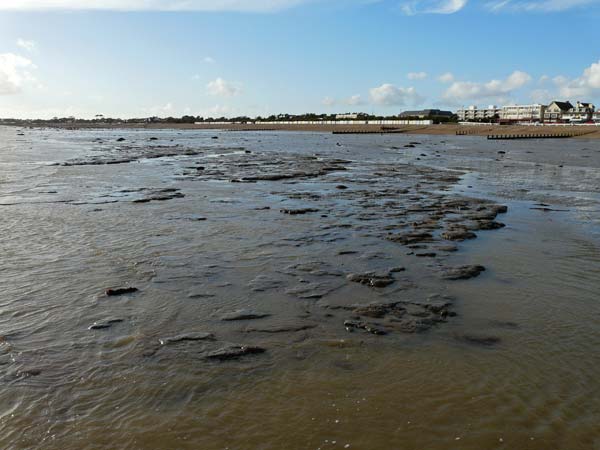
West Sussex Local Geological Sites - Bognor Foreshore (img 228)
Grey clays of London Clay Division A exposed east of Bognor Pier just after a low 0.7 m tide. Small scarps are oriented sub-parallel to the bedding strike.
Photograph taken: 06/10/2010
Grid ref. SZ92889836
Direction NW
Image file: P1020688ed.jpg

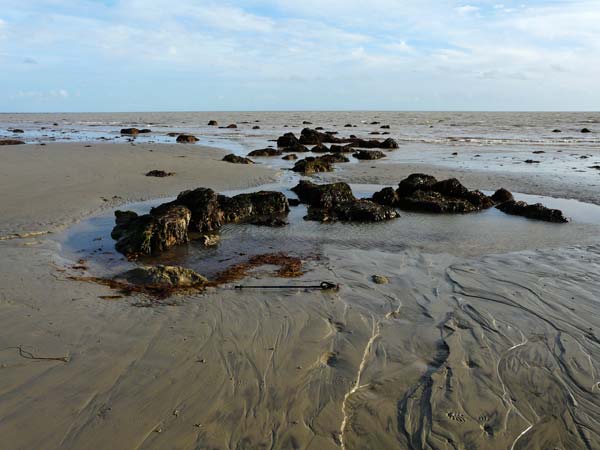
West Sussex Local Geological Sites - Bognor Foreshore (img 229)
Cluster of massive calcareous sandstone concretions of the main Bognor Rock Reef exposed close to low 0.7 m tide.
1 m pole for scale.
Photograph taken: 06/10/2010
Grid ref. SZ92309840
Direction south
Image file: P1020692ed.jpg

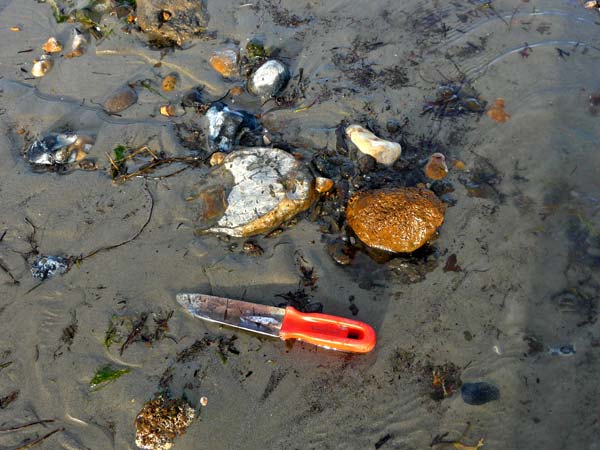
West Sussex Local Geological Sites - Bognor Foreshore (img 230)
Split fragments of septarian nodules on the upper foreshore.
Digging tool for scale 23 cm.
Photograph taken: 06/10/2010
Grid ref. SZ92019845
Image file: P1020694croped.jpg

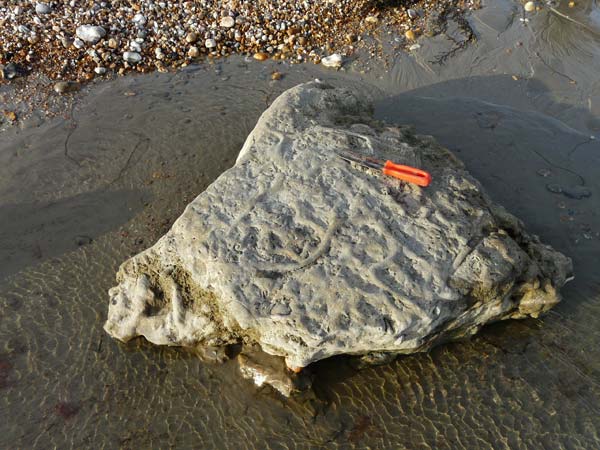
West Sussex Local Geological Sites - Bognor Foreshore (img 231)
Block of calcareous sandstone on the upper foreshore showing extensive fossil worm tubes.
Digging tool for scale 23 cm.
Photograph taken: 06/10/2010
Grid ref. SZ91929842
Image file: P1020698ed.jpg

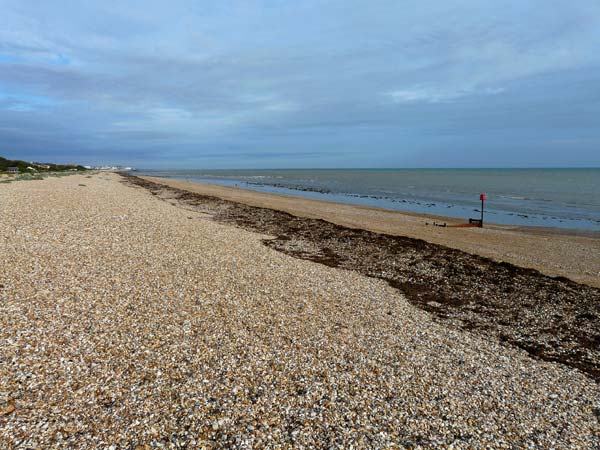
West Sussex Local Geological Sites - Bognor Foreshore (img 232)
Foreshore at Coastguard Parade opposite Barn Rocks looking east towards Bognor. No exposures of London Clay are visible on the foreshore, 1 hour before a low 0.5 m tide. The Barn Rocks themselves were also submerged although they are still visible on the lowest tides.
Photograph taken: 07/10/2010
Grid ref. SZ90459795
Direction ENE
Image file: P1020726ed.jpg

Slindon Common Gravel Pit (SU90/25)
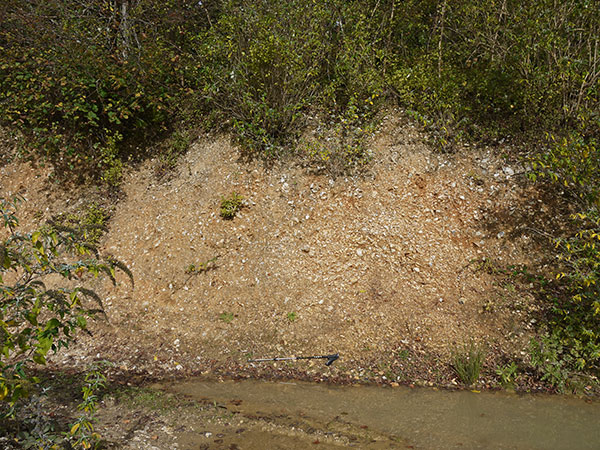
West Sussex Local Geological Sites - Slindon Common Gravel Pit (img 234)
Close-up of part of face shown in photo 2 exposing solifluction deposits of the Eartham Formation comprising angular flint fragments in a silt/clay matrix.
1m pole for scale.
Photo taken: 15/10/2012
Grid ref SU98070741
Direction north
Image file: P2030171ed.jpg

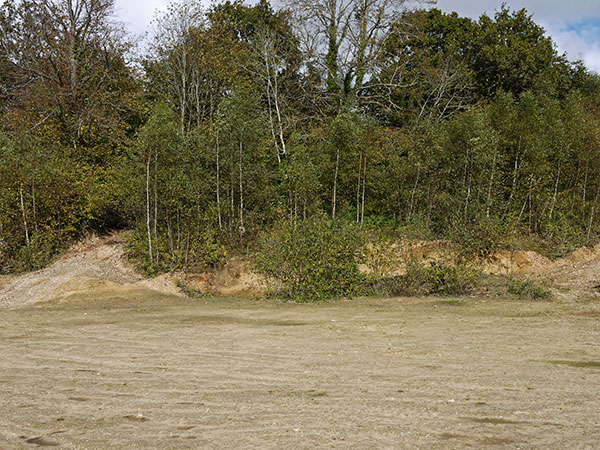
West Sussex Local Geological Sites - Slindon Common Gravel Pit (img 235)
Centre of northern edge of pit. Low face about 3m high exposes Eartham solifluction deposits. 4x4 track at left.
Photo taken: 15/10/2012
Grid ref SU97940742
Direction north
Image file: P2030183ed.jpg

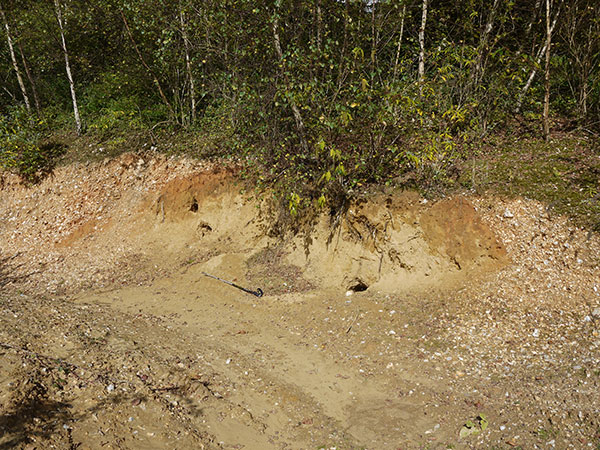
West Sussex Local Geological Sites - Slindon Common Gravel Pit (img 236)
Close-up of eastern end (right) of face shown in photo 4. Eartham Formation clay/silt rich solifluction deposits at centre are overlain by flint gravels which thicken laterally probably due to collapse into dissolution pipes in the underlying chalk. Base of section may expose Slindon sands.
1m pole for scale.
Photo taken: 15/10/2012
Grid ref SU97960744
Direction NNW
Image file: P2030185ed.jpg


West Sussex Local Geological Sites - Slindon Common Gravel Pit (img 237)
Main floor of quarry from southern edge, now infilled and landscaped and used for 4x4 activities. Floored by Slindon Formation sands. Low faces along northern edge expose Eartham Formation deposits.
Photo taken: 15/10/2012
Grid ref SU97940725
Direction NNE
Image file: P2030195ed.jpg

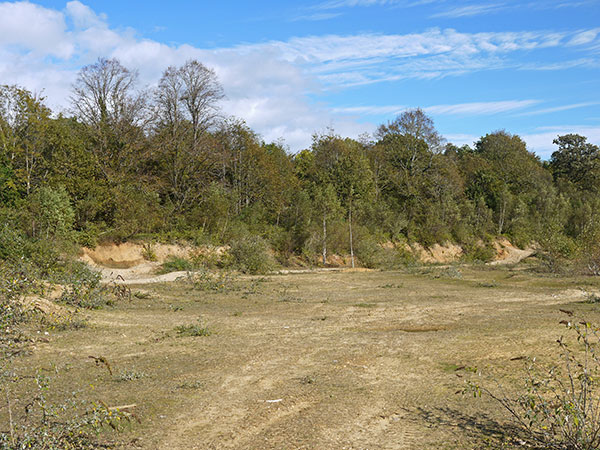
West Sussex Local Geological Sites - Slindon Common Gravel Pit (img 238)
Eastern end of northern edge of quarry with low face exposing Eartham Formation solifluction deposits.
Photo taken: 15/10/2012
Grid ref SU97980739
Direction ENE
Image file: P2030196ed.jpg

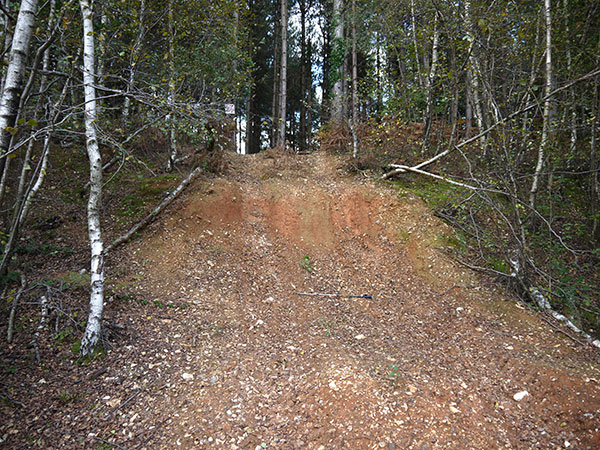
West Sussex Local Geological Sites - Slindon Common Gravel Pit (img 239)
Scraped section of former quarry edge along wooded northern part of pit showing clay/silt rich Eartham Formation solifluction deposits with flint gravels.
1m pole for scale.
Photo taken: 15/10/2012
Grid ref SU97900776
Direction north
Image file: P2030206ed.jpg

Felpham Foreshore, Bognor Regis (SU90/55)
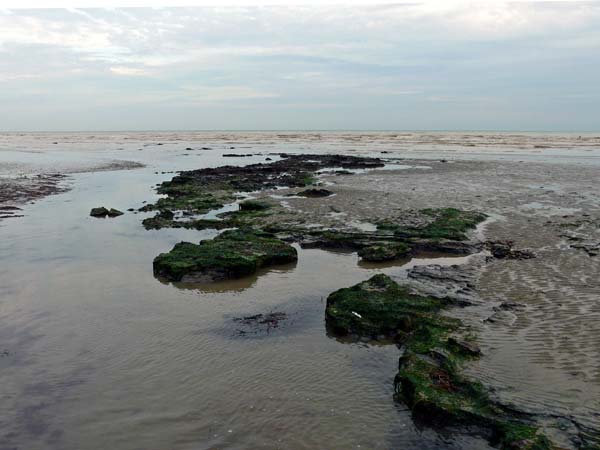
West Sussex Local Geological Sites - Felpham Foreshore (img 241)
Area C. Eroded edge of the Readin Formation lignite in the lower part of the Lignite Bed forming a sinuous reef on the foreshore. Plant fossils and eroded remains of tree stumps can be found here.
Photograph taken: 07/10/2010
Grid ref. SU94969916
Direction SE
Image file: P1020743ed.jpg

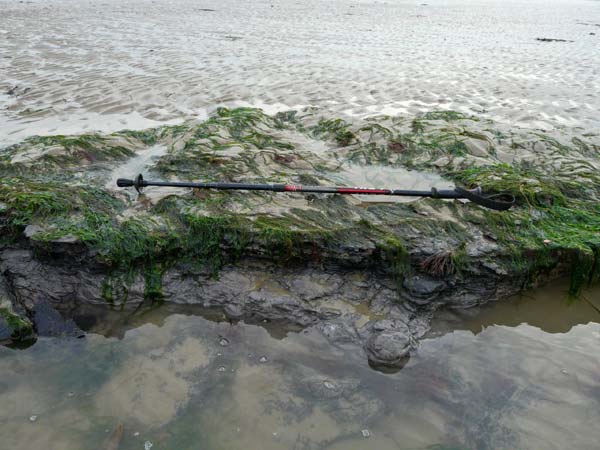
West Sussex Local Geological Sites - Felpham Foreshore (img 242)
Area C. Detail of the lignite layer at the edge of the reef.
1 m pole for scale.
Photograph taken: 07/10/2010
Grid ref. SU94969916
Direction SW
Image file: P1020747ed.jpg

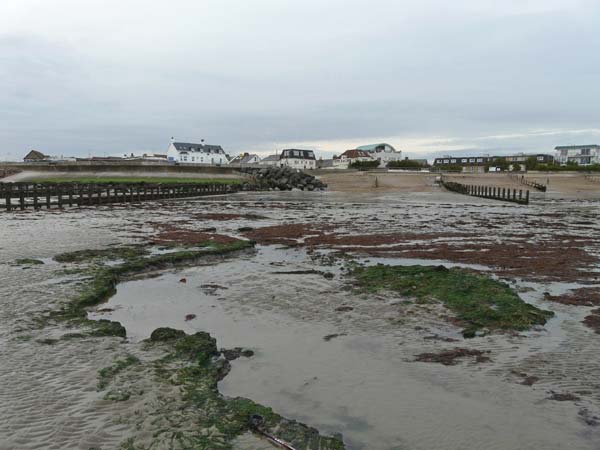
West Sussex Local Geological Sites - Felpham Foreshore (img 243)
Area C. Eroded edge of the Reading Formation lignite in the lower part of the Lignite Bed forming a sinuous reef on the foreshore.
Photograph taken: 07/10/2010
Grid ref. SU94959916
Direction NW
Image file: P1020748ed.jpg

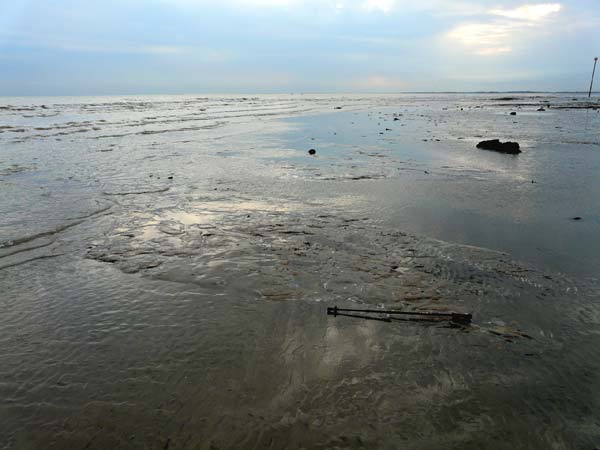
West Sussex Local Geological Sites - Felpham Foreshore (img 244)
Area B. Exposed patch of grey and brownish clay, possibly part of the channel infill.
1 m pole for scale.
Photograph taken: 07/10/2010
Grid ref. SU94949914
Direction SW
Image file: P1020754ed.jpg

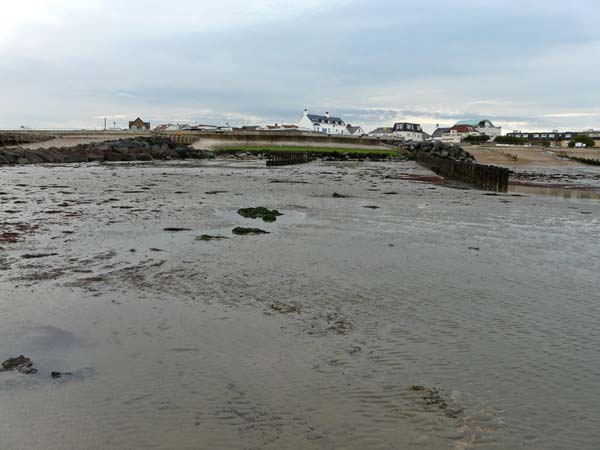
West Sussex Local Geological Sites - Felpham Foreshore (img 245)
Area B. Mostly sand covered with scattered outcrops of greyish and brownish clays of the Reading Formation.
Photograph taken: 07/10/2010
Grid ref. SU94939914
Direction NNE
Image file: P1020755ed.jpg

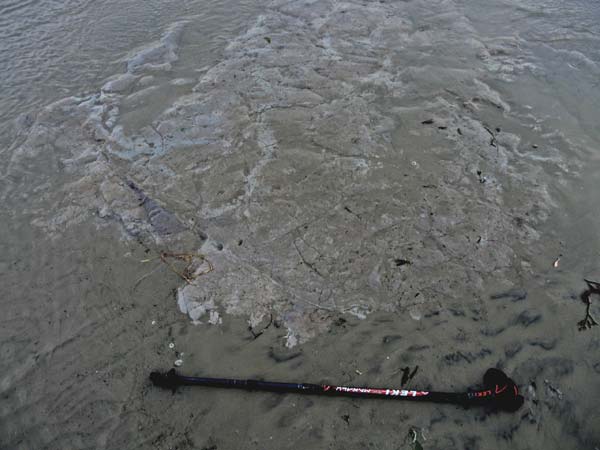
West Sussex Local Geological Sites - Felpham Foreshore (img 246)
Area B. Detail of patch of grey mottled clay, possibly part of the channel infill.
1 m pole for scale.
Photograph taken: 07/10/2010
Grid ref. SU94929913
Direction SE
Image file: P1020757ed.jpg


West Sussex Local Geological Sites - Felpham Foreshore (img 247)
Area A. Patches of mottled orange and red clays typical of the Reading Formation.
Photograph taken: 07/10/2010
Grid ref. SU94889910
Direction NNW
Image file: P1020759ed.jpg

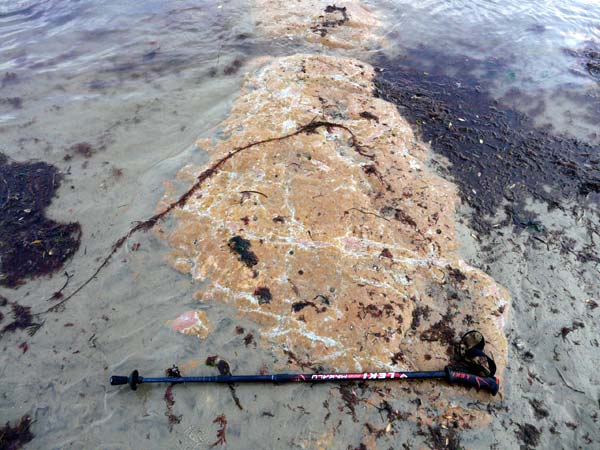
West Sussex Local Geological Sites - Felpham Foreshore (img 248)
Area A. Detail of patch of orange and red mottled clay.
1 m pole for scale.
Photograph taken: 07/10/2010
Grid ref. SU94879911
Direction SE
Image file: P1020761ed.jpg

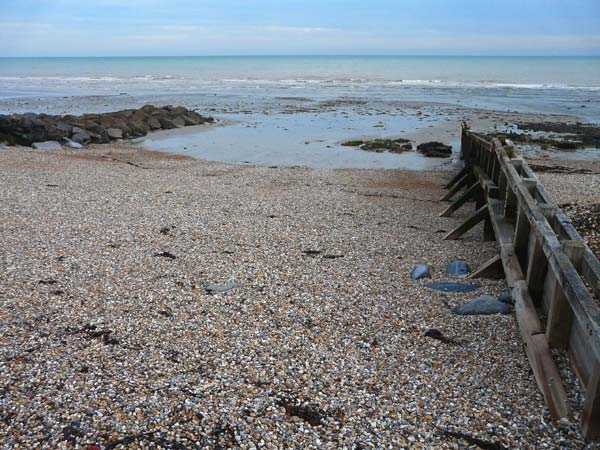
West Sussex Local Geological Sites - Felpham Foreshore (img 249)
Western end of site at low 0.5 m tide. Mottled red and orange clays of the Reading Formation outcrop on the foreshore (Area A).
Photograph taken: 07/10/2010
Grid ref. SU94819918
Direction SSE
Image file: P1020763ed.jpg


West Sussex Local Geological Sites - Felpham Foreshore (img 250)
Central part of site at low 0.5 m tide. Grey clays of the Reading Formation outcrop on the foreshore at centre (Area B) and may be part of the channel deposits.
Photograph taken: 07/10/2010
Grid ref. SU94859921
Direction SSE
Image file: P1020764ed.jpg


West Sussex Local Geological Sites - Felpham Foreshore (img 251)
Central part of site at low 0.5 m tide. The lignite bed in the Reading Formation forms a dark sinuous outcrop on the foreshore (Area C).
Photograph taken: 07/10/2010
Grid ref. SU94899927
Direction SSE
Image file: P1020765ed.jpg

Ambersham Common SSSI (SU91/129)
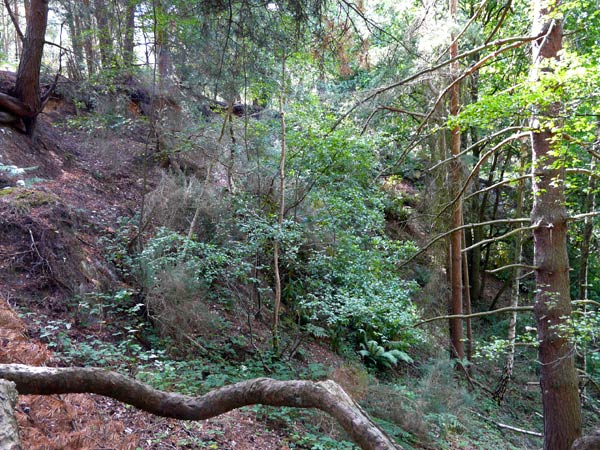
West Sussex Local Geological Sites - Ambersham Common (img 253)
Headwall of overgrown disused sand quarry from NW edge. Small exposures of Folkestone sands and Ambersham Plateau gravels visible at top of slope on left.
Photograph taken: 30/07/2010
Grid ref SU91091907
Direction east
Image file: P1020013ed.jpg

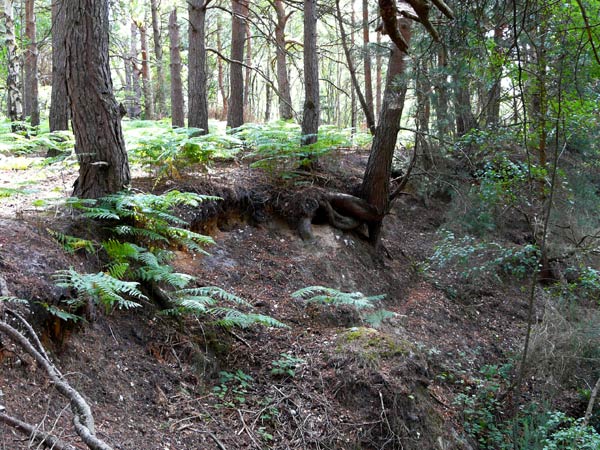
West Sussex Local Geological Sites - Ambersham Common (img 254)
Headwall of overgrown disused sand quarry from NW corner. Small exposures of Folkestone sands and Ambersham Plateau gravels visible at top of slope under overhang.
Photograph taken: 30/07/2010
Grid ref SU91091907
Direction east
Image file: P1020014ed.jpg


West Sussex Local Geological Sites - Ambersham Common (img 255)
Exposure at NW end of headwall showing coarse flint gravels overlying soft, cream and orange sands of the Folkestone Formation.
Scale is 30cm long.
Photograph taken: 30/07/2010
Grid ref SU91101907
Direction ENE
Image file: P1020016ed.jpg

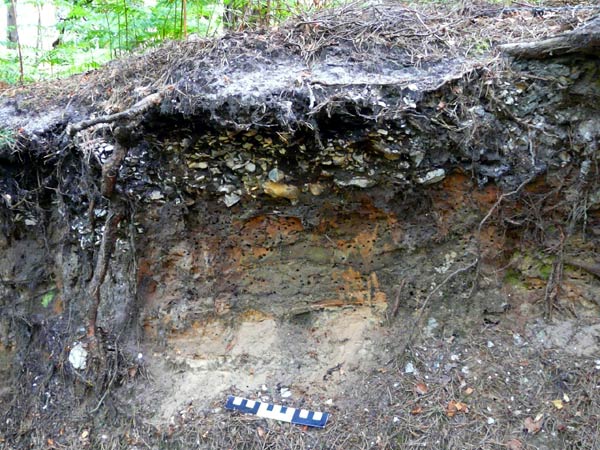
West Sussex Local Geological Sites - Ambersham Common (img 256)
Exposure at NW end of headwall showing coarse flint gravels overlying soft, cream and orange sands of the Folkestone Formation.
Scale is 30cm long.
Photograph taken: 30/07/2010
Grid ref SU91101907
Direction ENE
Image file: P1020018ed.jpg

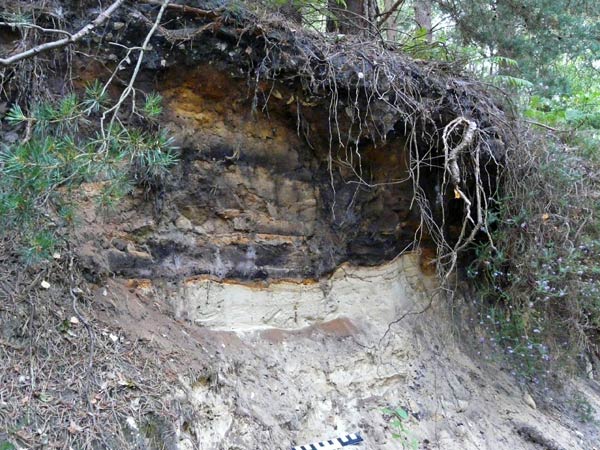
West Sussex Local Geological Sites - Ambersham Common (img 257)
Exposure near centre of headwall showing coarse flint gravels overlying soft, cream and orange sands of the Folkestone Formation. The greyish upper part of the sands may be an example of podsol development.
Scale is 30cm long.
Photograph taken: 30/07/2010
Grid ref SU91101906
Direction ENE
Image file: P1020020ed.jpg

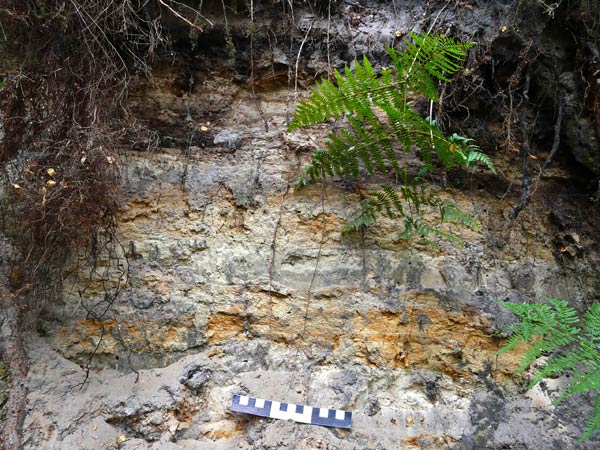
West Sussex Local Geological Sites - Ambersham Common (img 258)
Detail of exposure shown in photo 6 showing soft, cream and orange sands of the Folkestone Formation.
30 cm scale.
Photograph taken: 30/07/2010
Grid ref SU91101905
Direction ENE
Image file: P1020022ed.jpg

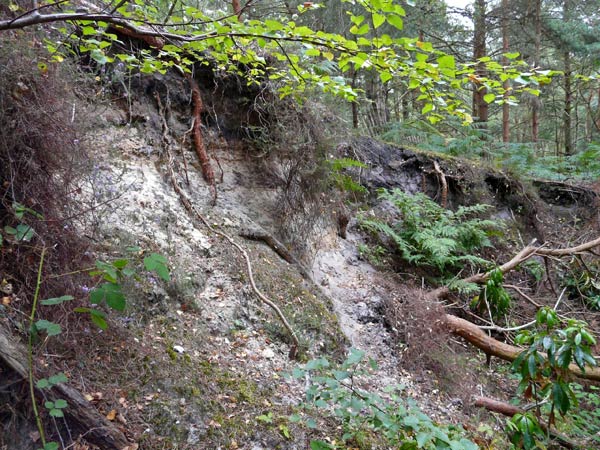
West Sussex Local Geological Sites - Ambersham Common (img 259)
SE end of quarry headwall showing exposure of Folkestone Formation sands up to 2 m in height.
Photograph taken: 30/07/2010
Grid ref SU91101905
Direction SSE
Image file: P1020023ed.jpg


West Sussex Local Geological Sites - Ambersham Common (img 260)
Coarse flint gravels exposed in gully side in pine woods.
1 m pole for scale. 30/07/2010
Grid ref SU91451927
Direction NW
Image file: P1020024ed.jpg

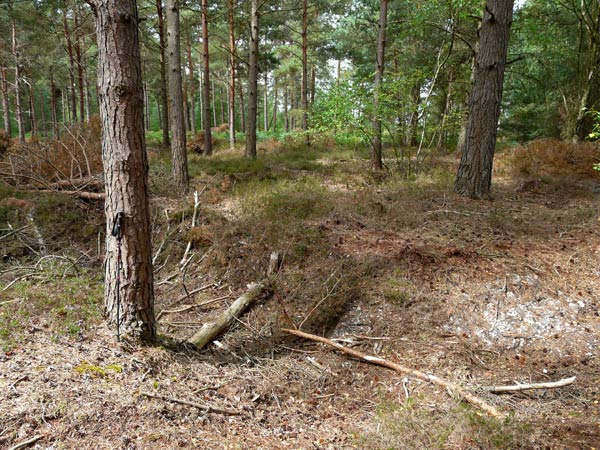
West Sussex Local Geological Sites - Ambersham Common (img 261)
Hummocky surface of plateau gravels in pine woods where gullies expose patches of the gravels.
Photograph taken: 30/07/2010
Grid ref SU91451927
Direction west
Image file: P1020026ed.jpg

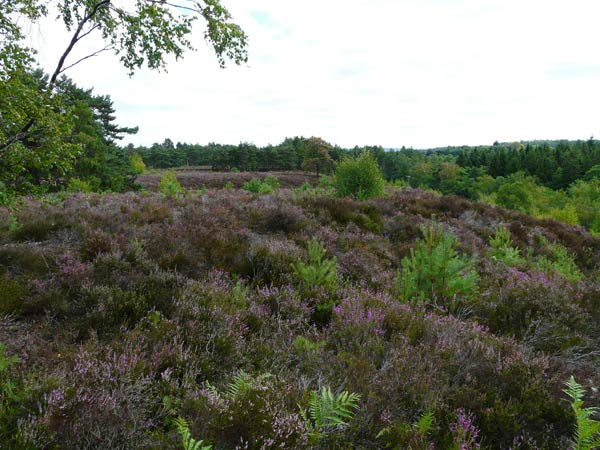
West Sussex Local Geological Sites - Ambersham Common (img 262)
Bench marking eastern edge of plateau gravels of Rother River terrace 5.
Photograph taken: 30/07/2010
Grid ref SU91551927
Direction ENE
Image file: P1020028ed.jpg

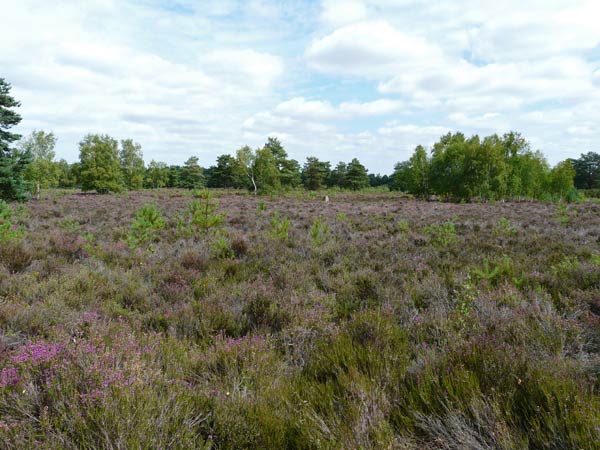
West Sussex Local Geological Sites - Ambersham Common (img 263)
Heather-covered plateau surface corresponding to the flint gravels of Rother River terrace 5.
Photograph taken: 30//07/2010
Grid ref SU91561941
Direction north
Image file: P1020029ed.jpg

Duncton Chalk Quarry (SU91/55)
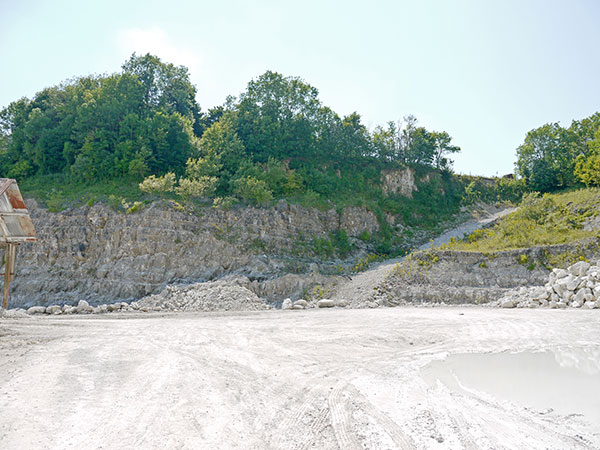
West Sussex Local Geological Sites - Duncton Chalk Quarry (img 265)
Northern end of SW face cut in Lewes Nodular Chalk with flint layers and marls. The uppermost face, obscured by trees, exposes South Street/Navigation Beds. The lower face exposes the Ringmer Beds, overlain by the basal Kingston Beds.
Photo taken: 26/07/2012
Grid ref SU95111573
Direction SW
Image file: P2020502ed.jpg

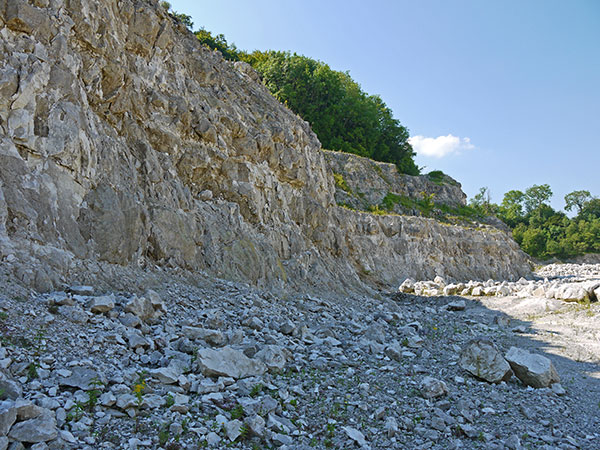
West Sussex Local Geological Sites - Duncton Chalk Quarry (img 266)
Centre of SW face exposing Lewes Nodular Chalk with numerous flint layers and prominent marl seams. The lower part of the face is about 7m high.
Photo taken: 26/07/2012
Grid ref SU95131558
Direction NNW
Image file: P2020516ed.jpg

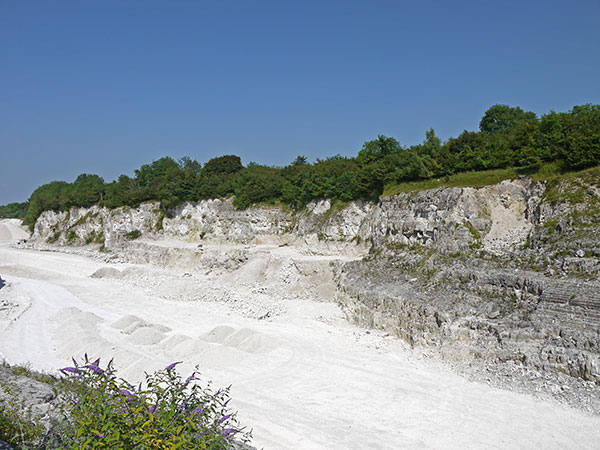
West Sussex Local Geological Sites - Duncton Chalk Quarry (img 267)
Eastern side of main pit with faces up to 20m high exposing upper New Pit Chalk and basal Lewes Nodular Chalk towards quarry head.
Photo taken: 26/07/2012
Grid ref SU95141555
Direction NE
Image file: P2020520ed.jpg

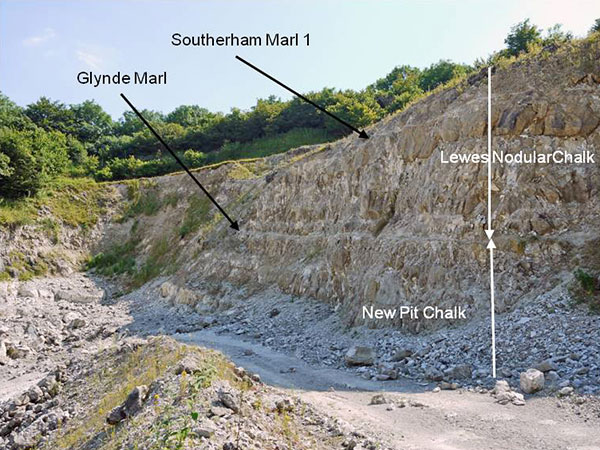
West Sussex Local Geological Sites - Duncton Chalk Quarry (img 268)
Southern end of SW face up to 15m high exposing upper New Pit Chalk and lower Lewes Nodular Chalk with prominent marl seams, notably the Glynde Marl separating the two formations.
Photo taken: 26/07/2012
Grid ref SU95141555
Direction south
Image file: P2020526edlabel.jpg

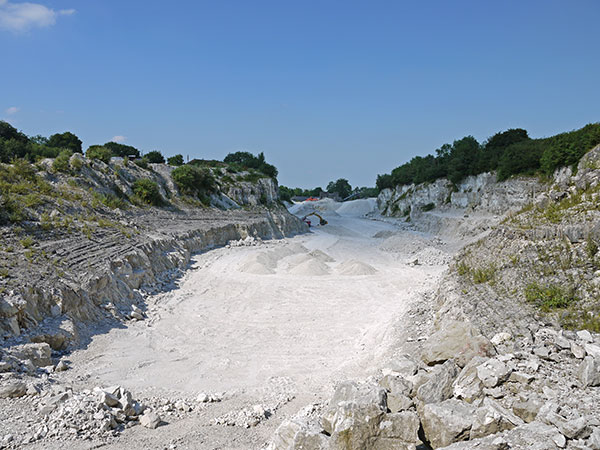
West Sussex Local Geological Sites - Duncton Chalk Quarry (img 269)
View of main pit from head of quarry with faces exposing upper New Pit Chalk and basal Lewes Nodular Chalk. Benches give access to the upper part of this sequence.
Photo taken: 26/07/2012
Grid ref SU95171552
Direction north
Image file: P2020532ed.jpg


West Sussex Local Geological Sites - Duncton Chalk Quarry (img 270)
View of quarry main pit from entrance with faces about 15 - 20m high on both sides exposing upper New Pit Chalk.
Photo taken: 26/07/2012
Grid ref SU95211581
Direction south
Image file: P2020572ed.jpg

Heath End Sand Pit (SU91/80)
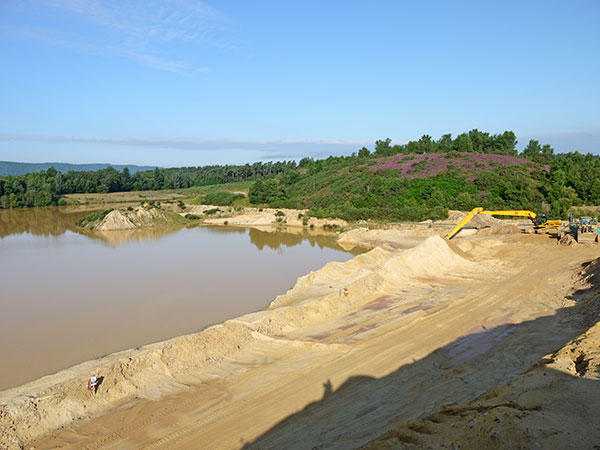
West Sussex Local Geological Sites - Heath End Sand Pit (img 272)
Overview of western side side of quarry showing current sand dredging operations. Duncton Common round barrow cemetery is on the heather-clad ridge at the back.
Photo taken: 09/08/2012
Grid ref SU96431869
Direction west
Image file: P1020789ed.jpg

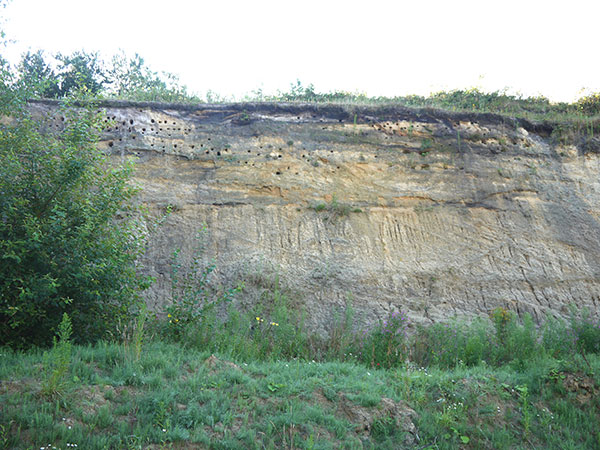
West Sussex Local Geological Sites - Heath End Sand Pit (img 273)
Close-up of weathered face about 10m high. Lower part exposes thick cross-bedded interval with carstone veins sub-parallel to foresets. Upper part shows thinner cross-bedded sets and channels. Note the sand martin nest holes.
Photo taken: 09/08/2012
Grid ref SU96521863
Direction ESE
Image file: P1020795.jpg

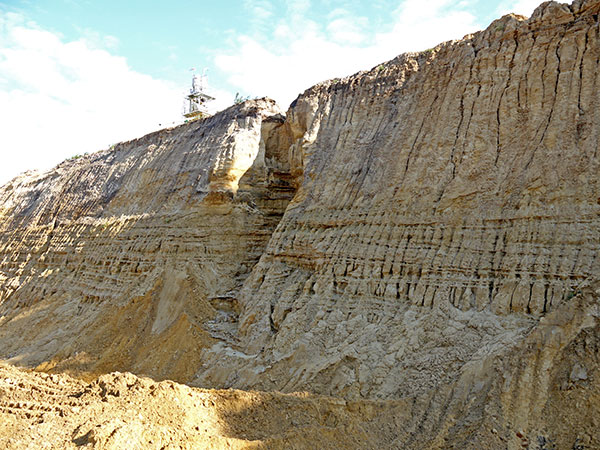
West Sussex Local Geological Sites - Heath End Sand Pit (img 274)
Close-up of active face showing thick interval of soft sands interbedded with clay seams, some draped on foresets. Overlain by clay free sands with carstone veins.
Photo taken: 09/08/2012
Grid ref SU96491864
Direction NW
Image file: P1020802ed.jpg

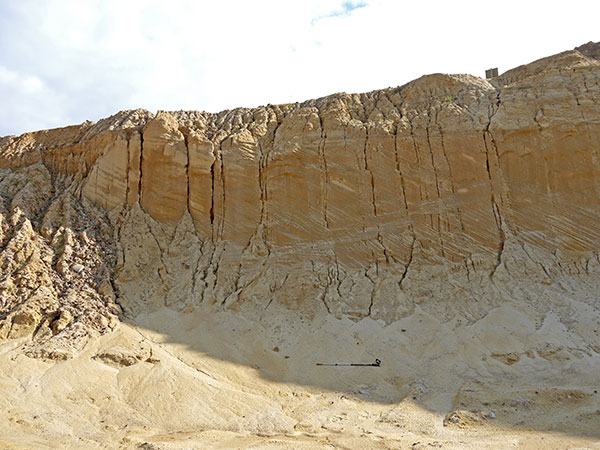
West Sussex Local Geological Sites - Heath End Sand Pit (img 275)
Close-up of western end of main active face showing thick interval of soft clean buff coloured sands with steep cross-bedding foresets, deposited by strong tidal currents.
1 m pole for scale.
Photo taken: 09/08/2012
Grid ref SU96391870
Direction NNE
Image file: P1020816ed.jpg

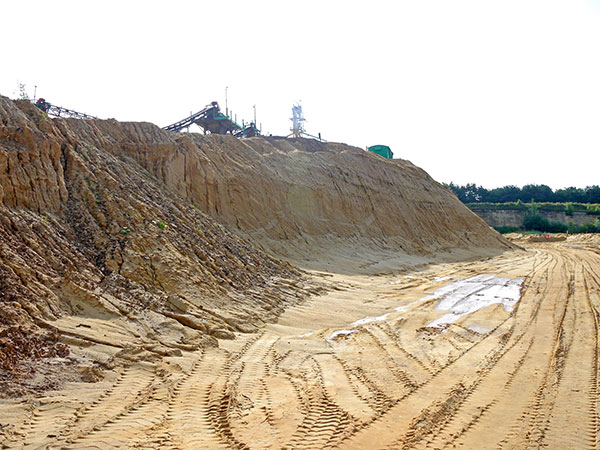
West Sussex Local Geological Sites - Heath End Sand Pit (img 276)
Western end of main active face exposing upper Folkestone Formation sands with gentle dip to right. Up to 10m high.
Photo taken: 09/08/2012
Grid ref SU96381871
Direction ESE
Image file: P1020823ed.jpg

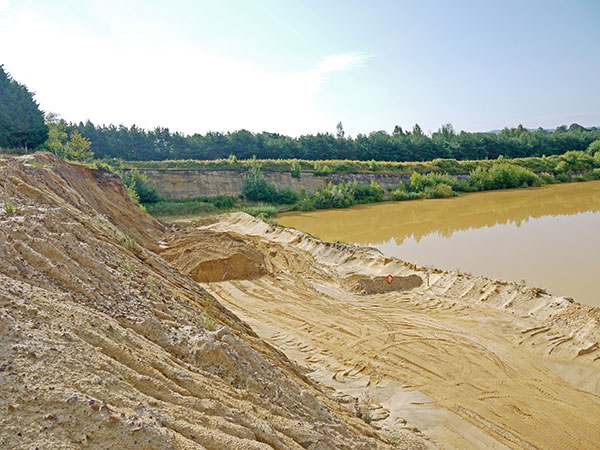
West Sussex Local Geological Sites - Heath End Sand Pit (img 277)
Overview of NE corner of quarry with active face up to 10m high in foreground and older vegetated face at back. Upper Folkestone Formation sands exposed. Lower pit is flooded.
Photo taken: 09/08/2012
Grid ref SU96431869
Direction SE
Image file: P1020826ed.jpg

Bracklesham Bay, Chichester (SZ89/01)
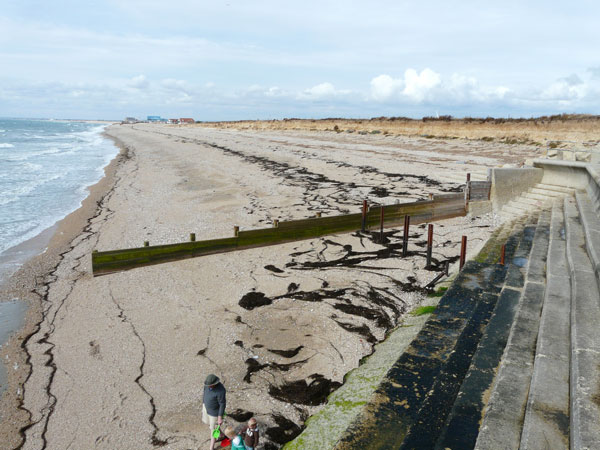
West Sussex Local Geological Sites - Bracklesham Bay (img 279)
Selsey West Beach with low cliffs exposing Pleistocene (Ipswichian) raised beach deposits. Older Ipswichian? channel and estuarine deposits occur beneath the present-day beach shingle and sand.
Photograph taken: 19/08/2010
Grid ref. SZ84479302
Direction NW
Image file: P1020399.jpg

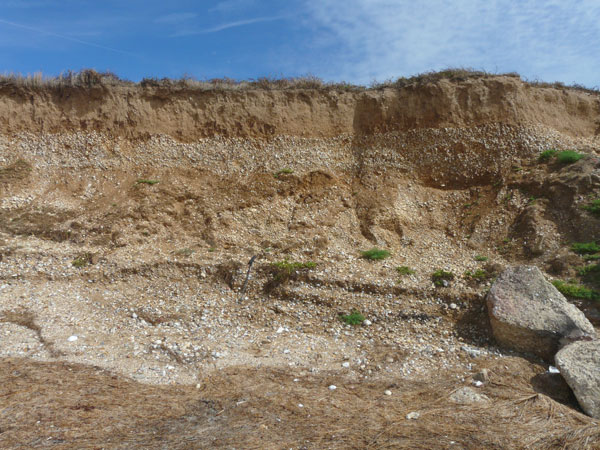
West Sussex Local Geological Sites - Bracklesham Bay (img 280)
Highest part of cliffs (5 m) at SE end showing brickearth overlying raised storm beach shingle of Ipswichian interglacial age.
Photograph taken: 19/08/2010
Grid ref. SZ84469306
Direction ESE
Image file: P1020403.jpg

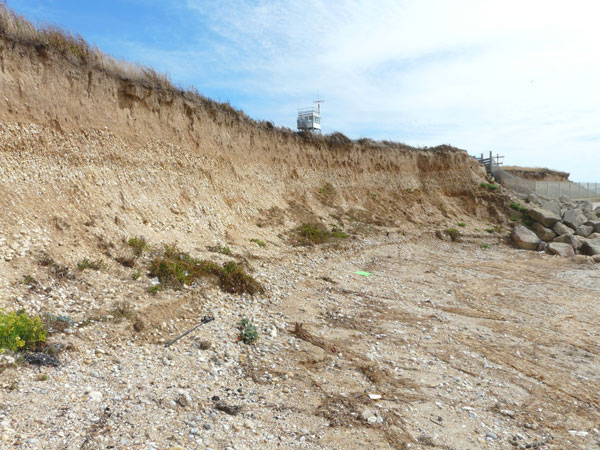
West Sussex Local Geological Sites - Bracklesham Bay (img 281)
SE end of cliff exposing the Pleistocene sediments.
Photograph taken: 19/08/2010
Grid ref. SZ84449308
Direction SE
Image file: P1020407.jpg

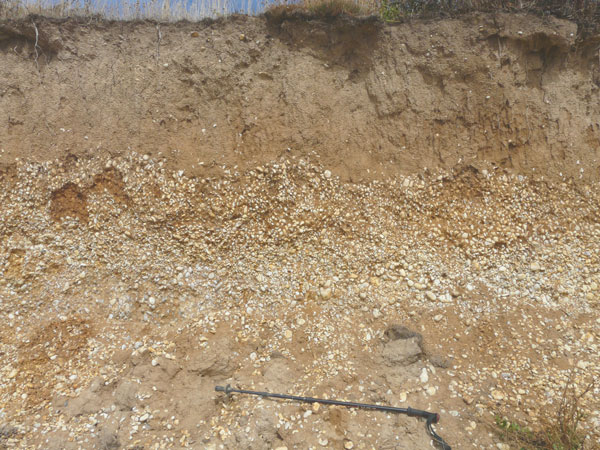
West Sussex Local Geological Sites - Bracklesham Bay (img 282)
Detail of cliff showing brickearth overlying Ipswichian raised storm beach shingle. Note the wavy upper surface of the shingle. Traditionally this type of surface has been interpreted as involutions caused by cryostatic pressure but it could also represent load structures. Vertical orientation of stones in the gravelly unit may have been caused by upfreezing, where coarser particles are mixed with finer sediment and ice segregation and frost heaving occur.
1 m pole for scale.
Photograph taken: 19/08/2010
Image file: P1020409.jpg

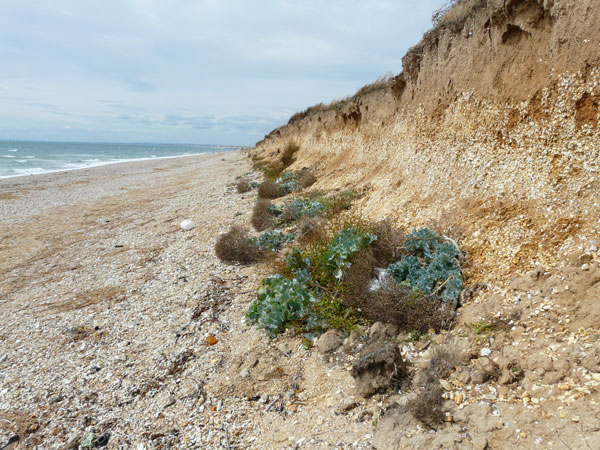
West Sussex Local Geological Sites - Bracklesham Bay (img 283)
Lower cliffs (2 m high) to the NW with brickearth overlying Ipswichian raised storm beach deposits and shingle vegetation at base.
Photograph taken: 19/08/2010
Grid ref. SZ84409313
Direction NW
Image file: P1020410.jpg


West Sussex Local Geological Sites - Bracklesham Bay (img 284)
Lower cliffs (2 m high) towards the NW end of the cliffs with brickearth overlying Ipswichian raised storm beach deposits. The cliffs are being eroded and blocks of brickearth are collapsing and accumulating at the base.
Photograph taken: 19/08/2010
Grid ref. SZ84349318
Direction NW
Image file: P1020412.jpg

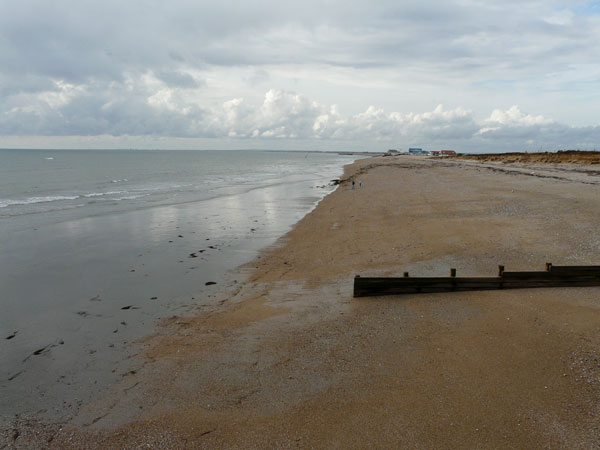
West Sussex Local Geological Sites - Bracklesham Bay (img 285)
Bracklesham Bay shingle beach and foreshore viewed from Selsey West Beach about 1 hour before low 0.7 m tide.
No exposures visible on sandy foreshore.
Photograph taken: 07/09/2010
Grid ref. SZ84489300
Direction NW
Image file: P1020471.jpg

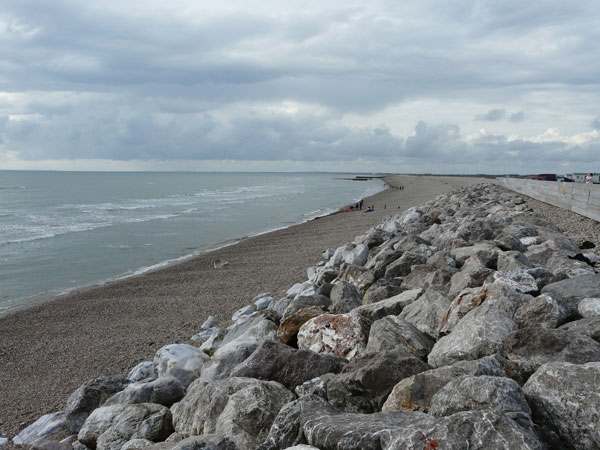
West Sussex Local Geological Sites - Bracklesham Bay (img 286)
Shingle beach, rock armour and foreshore viewed from club house within 1 hour of low 0.7 m tide. No exposures visible on sandy foreshore. First exposures encountered near groynes in distance.
Photograph taken: 07/09/2010
Grid ref. SZ83839372
Direction NW
Image file: P1020475.jpg

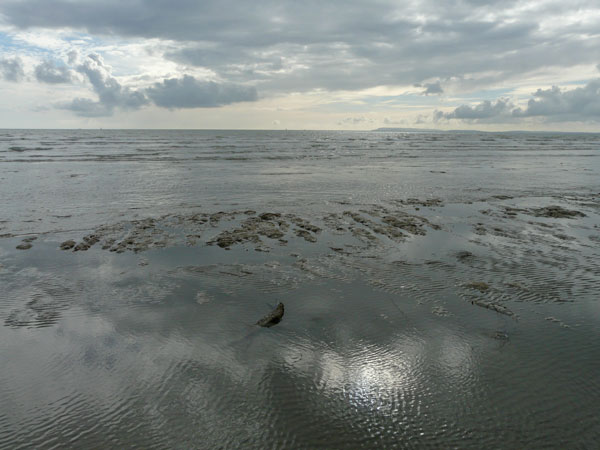
West Sussex Local Geological Sites - Bracklesham Bay (img 287)
Area A. Reefs of weathered Selsey Formation exposed within 1 hour of low 0.7 m tide.
Photograph taken: 07/09/2010
Grid ref. SZ83379405
Direction SW
Image file: P1020486ed.jpg


West Sussex Local Geological Sites - Bracklesham Bay (img 288)
Area A. Detail of brownish weathered sandy silts of Selsey Formation shown in photo 3. Fossils are being eroded from the silts.
28 cm hammer for scale.
Photograph taken: 07/09/2010
Grid ref. SZ83379405
Image file: P1020488.jpg


West Sussex Local Geological Sites - Bracklesham Bay (img 289)
Area A. Reef of weathered sandy silts of Selsey Formation exposed near first group of groynes.
Note fossil collector at work.
Photograph taken:07/09/2010
Grid ref. SZ83319409
Direction WSW
Image file: P1020489ed.jpg


West Sussex Local Geological Sites - Bracklesham Bay (img 290)
Area A. Overview of the group of Selsey Formation reefs extending from the groynes SE towards the clubhouse. Within 1 hour of a low 0.7 m tide.
Photograph taken: 07/09/2010
Grid ref. SZ83259413
Direction SE
Image file: P1020492.jpg

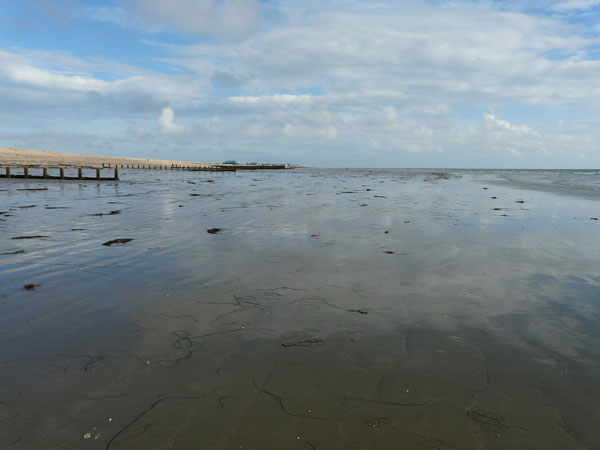
West Sussex Local Geological Sites - Bracklesham Bay (img 291)
Area B. Sand-covered foreshore close to low 0.7 m tide with little exposure apart from small area of reefs (Selsey Formation) in the distance out towards the low tide point.
Photograph taken: 07/09/2010
07/09/2010
Grid ref. SZ82869443
Direction SE
Image file: P1020496.jpg


West Sussex Local Geological Sites - Bracklesham Bay (img 292)
Area C. Extensive reef exposure of silts extending from basal Earnley Formation in foreground to Marsh Farm Formation beyond. Close to low 0.7 m tide.
1 m pole for scale.
Photograph taken: 07/09/2010
Grid ref. SZ81979525
Direction SE
Image file: P1020505.jpg

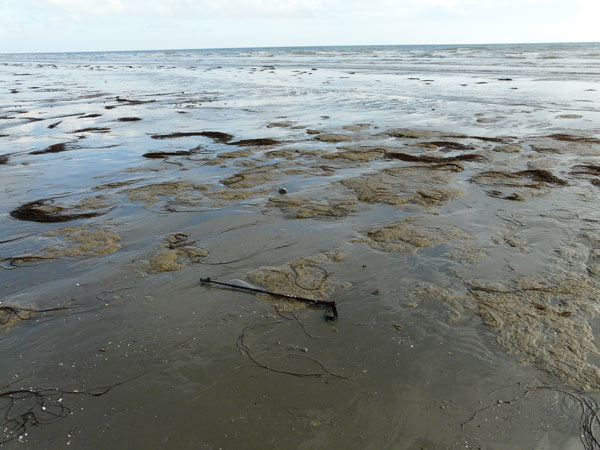
West Sussex Local Geological Sites - Bracklesham Bay (img 293)
Area D. Reef exposure of Earnley Formation silts (E5 Palate Bed) just after low 0.7 m tide.
1 m pole for scale.
Photograph taken: 07/09/2010
Grid ref. 81399565
Direction south
Image file: P1020507.jpg


West Sussex Local Geological Sites - Bracklesham Bay (img 294)
Area D. Detail of exposure of Earnley Formation Turritella Bed on incoming tide shortly after low 0.7 m tide. Numerous Turritella shells have eroded from the formation.
Field of view 1 m x 0.7 m.
Photograph taken: 07/09/2010
Grid ref. SZ81229572
Image file: P1020514crop.jpg

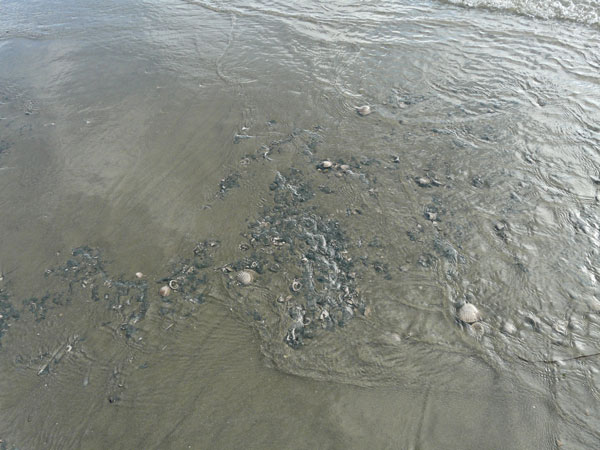
West Sussex Local Geological Sites - Bracklesham Bay (img 295)
Area D. Detail of exposure of Earnley Formation Venericardia Bed on incoming tide shortly after low 0.7 m tide. Venericardia specimens are eroding from the formation.
Field of view 1.6 m x 1.2 m.
Photograph taken: 07/09/2010
Grid ref. SZ81099583
Image file: P1020519ed.jpg


West Sussex Local Geological Sites - Bracklesham Bay (img 296)
Area D. View east along Bracklesham foreshore beyond NW limit of visible exposures which are being rapidly covered by the incoming tide.
Photograph taken: 07/09/2010
Grid ref. SZ80959589
Direction SE
Image file: P1020520.jpg


West Sussex Local Geological Sites - Bracklesham Bay, Medmerry (img 297)
Shingle beach NW of Bunn Leisure park as far as the rock armour emplaced at the southern end of the Medmerry breach zone.
Photograph taken: 29/03/2014
Grid ref SZ83549397
Direction NW
Image file: P2040303ed.jpg

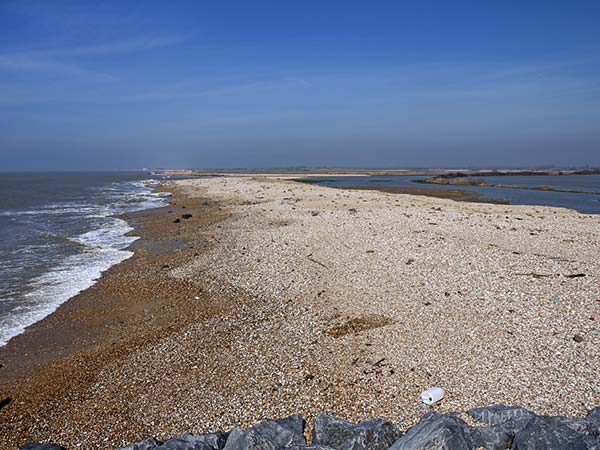
West Sussex Local Geological Sites - Bracklesham Bay, Medmerry (img 298)
Coastal breach zone from the rock armour at the southern edge. The tidal channel is located in the vicinity if the former Broad Rife sluice.
Photograph taken: 29/03/2014
Grid ref SZ83419413
Direction NW
Image file: P2040305ed.jpg


West Sussex Local Geological Sites - Bracklesham Bay, Medmerry (img 299)
Newly flooded land inland from the tidal channel which now breaches the shingle beach at Broad Rife.
Photograph taken: 29/03/2014
Grid ref SZ83419413
Direction north
Image file: P2040306ed.jpg

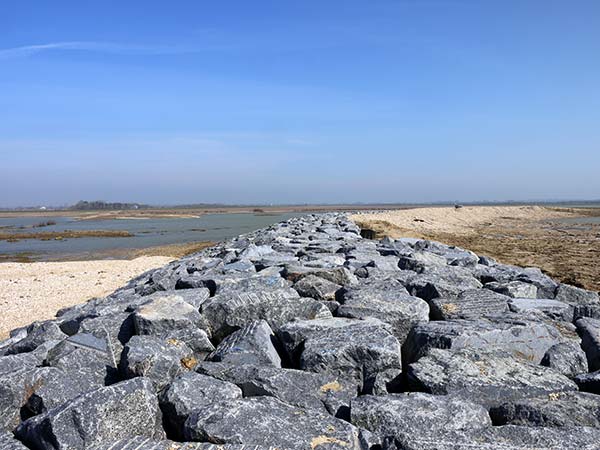
West Sussex Local Geological Sites - Bracklesham Bay, Medmerry (img 300)
Rock armour at the southern edge of the Medmerry coastal breach zone extending inland to join the new floodbank.
Photograph taken: 29/03/2014
Grid ref SZ83419413
Direction NE
Image file: P2040310ed.jpg


West Sussex Local Geological Sites - Bracklesham Bay, Medmerry (img 301)
Holocene (Bronze Age) sediments exposed as a reef by the new tidal channel. See photos 5 to 7 taken on the survey visit in September 2010 showing the Selsey Formation outcrops at Broad Rife and the view back to Bunn Leisure park. These outcrops have been eroded by the new channel.
Photograph taken: 29/03/2014
Grid ref SZ83229431
Direction west
Image file: P2040314ed.jpg

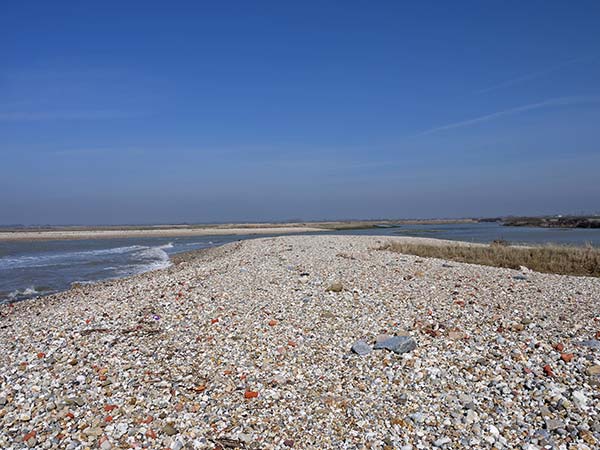
West Sussex Local Geological Sites - Bracklesham Bay, Medmerry (img 302)
New tidal channel breaching the shingle beach immediately SE of the former Broad Rife sluice.
Photograph taken: 29/03/2014
Grid ref SZ83229431
Direction NNE
Image file: P2040319ed.jpg


West Sussex Local Geological Sites - Bracklesham Bay, Medmerry (img 303)
New tidal channel breaching the shingle beach immediately SE of the former Broad Rife sluice. The groynes at the sluice location are still visible at the far side. See photos 5 to 7 taken on the survey visit in September 2010 showing the Selsey Formation outcrops at Broad Rife and the view back to Bunn Leisure park. These outcrops have been eroded by the new channel.
Photograph taken: 29/03/2014
Grid ref SZ83229431
Direction NW
Image file: P2040323ed.jpg

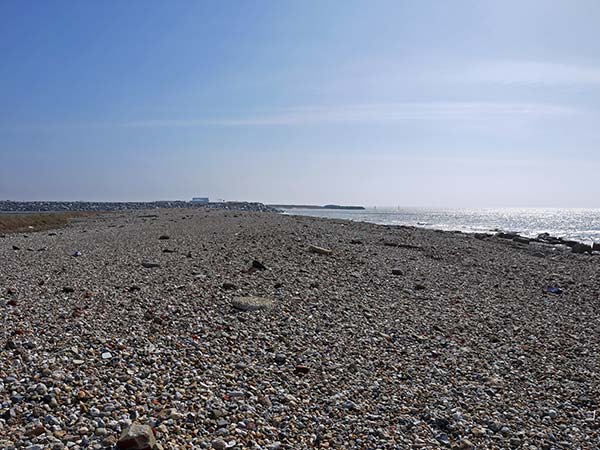
West Sussex Local Geological Sites - Bracklesham Bay, Medmerry (img 304)
Shingle beach extending SE from the new tidal channel towards the coastal defences of Bunn Leisure park. A ridge of rock armour marks the edge of the coastal breach zone.
Photograph taken: 29/03/2014
Grid ref SZ83229431
Direction SE
Image file: P2040324ed.jpg

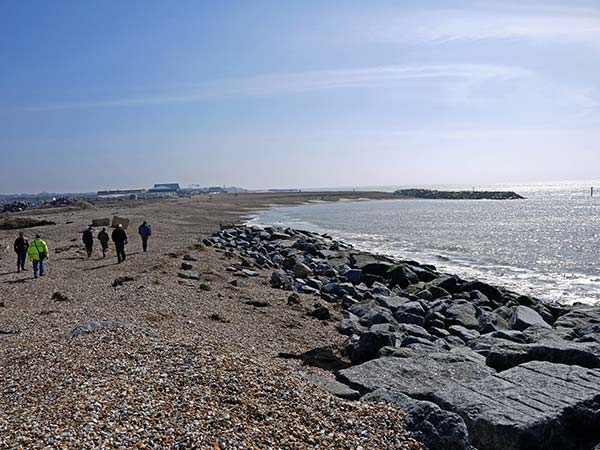
West Sussex Local Geological Sites - Bracklesham Bay, Medmerry (img 305)
Shingle beach extending SE of the rock armour at the southern end of the breach zone towards the Bunn Leisure park and its coastal defences.
Photograph taken: 29/03/2014
Grid ref SZ83419413
Direction SE
Image file: P2040328ed.jpg


West Sussex Local Geological Sites - Bracklesham Bay, Medmerry (img 306)
The recontructed shingle beach and rock armour NW of the club house at the Bunn Leisure Centre. Compare with photo 2 from the site survey in September 2010.
Photograph taken: 29/03/2014
Grid ref SZ83769378
Direction NW
Image file: P2040331ed.jpg

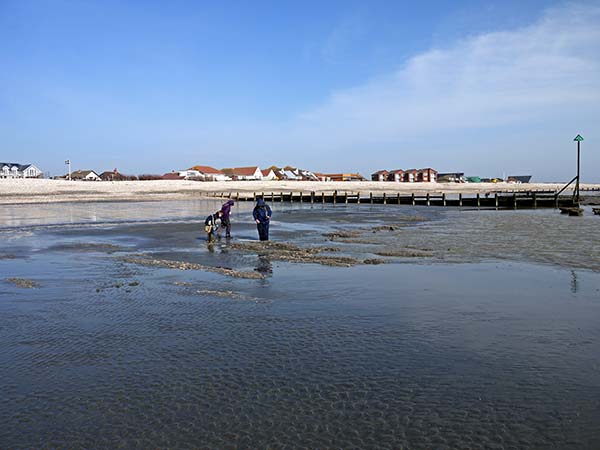
West Sussex Local Geological Sites - Bracklesham Bay, Bracklesham (img 307)
Western edge of exposures of Earnley Formation E3 Venericardia bed at low 0.6m tide.
Photograph taken: 29/03/2014
Grid ref SZ81009587
Direction NE
Image file: P2040334ed.jpg

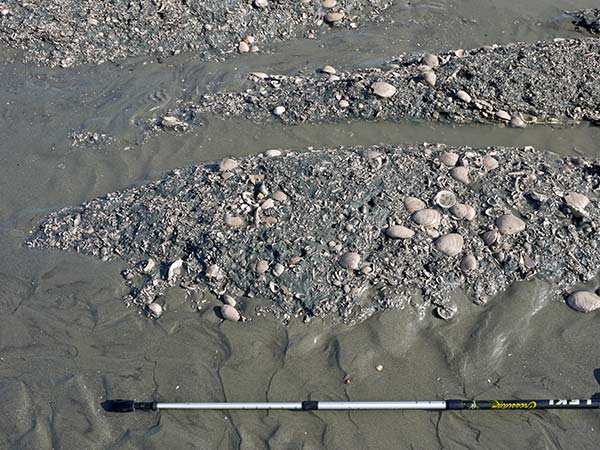
West Sussex Local Geological Sites - Bracklesham Bay, Bracklesham (img 308)
Detail of E3 Venericardia Bed showing abundant Venericor bivalves and other fossils in a muddy silty matrix.
1 m pole for scale.
Photograph taken: 29/03/2014
Grid ref SZ81009587
Image file: P2040336ed.jpg

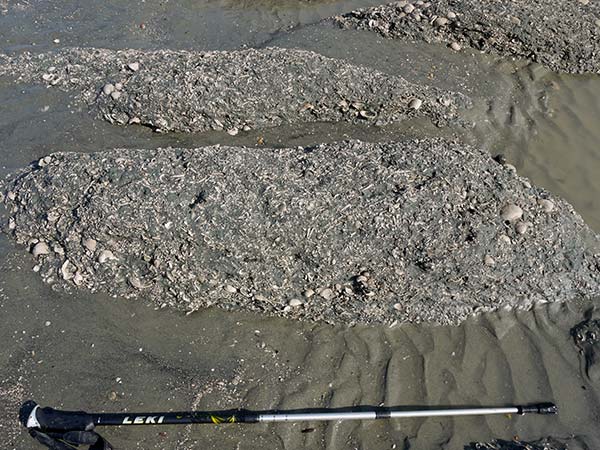
West Sussex Local Geological Sites - Bracklesham Bay, Bracklesham (img 309)
Detail of Earnley Formation E3 Venericardia Bed full of Venericor bivalve fossils overlain by E4 Turritella Bed full of Turritella gastropod fossils. Muddy silty matrix, more indurated in Turritella Bed.
1 m pole for scale.
Photograph taken: 29/03/2014
Grid ref SZ81009587
Image file: P2040337ed.jpg

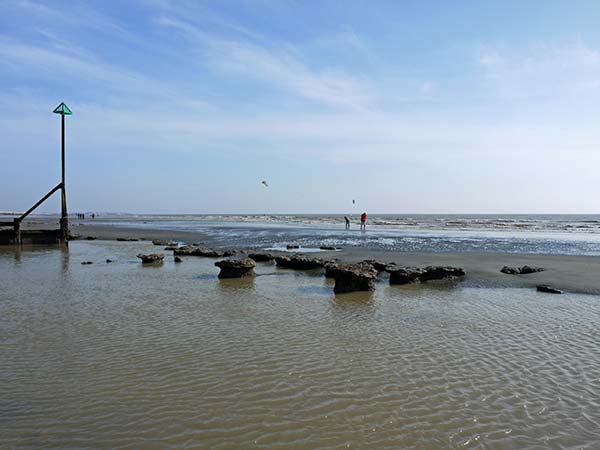
West Sussex Local Geological Sites - Bracklesham Bay, Bracklesham (img 310)
Western edge of exposures of Earnley Formation E3 Venericardia and E4 Turritella beds at low 0.6 m tide. Eroded pedestals expose Venericardia Bed at base and more indurated Turritella Bed at top.
Photograph taken: 29/03/2014
Grid ref SZ81009587
Image file: P2040338ed.jpg

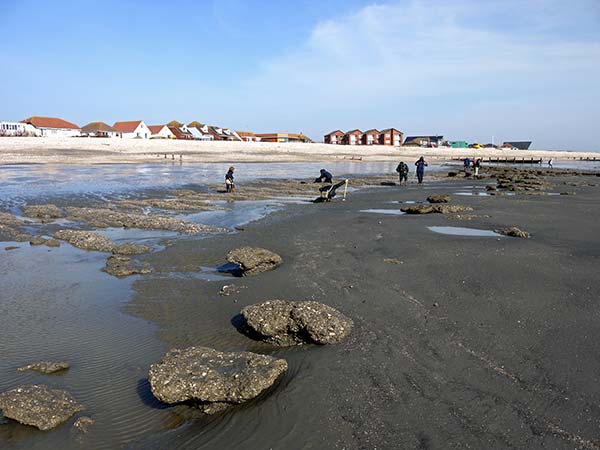
West Sussex Local Geological Sites - Bracklesham Bay, Bracklesham (img 311)
Main exposure of Earnley Formation E3 Venericardia Bed to left and overlying E4 Turritella Bed to right. The Turritella Bed is more indurated and forms the top of eroded pedestals. Low tide 0.6m.
Photograph taken: 29/03/2014
Grid ref 81069584
Direction ENE
Image file: P2040341ed.jpg

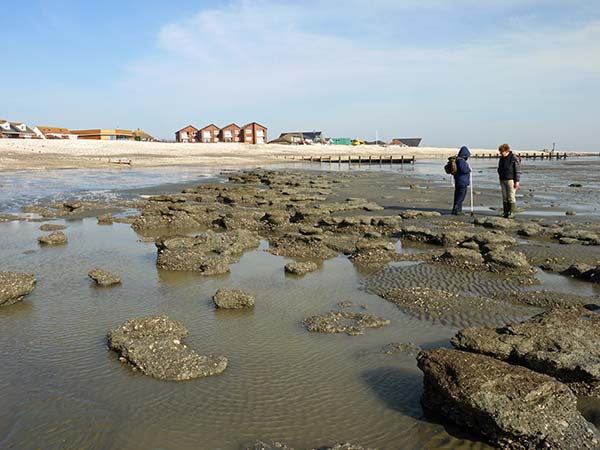
West Sussex Local Geological Sites - Bracklesham Bay, Bracklesham (img 312)
Part of main exposure of Earnley Formation E3 Venericardia and E4 Turritella beds at low tide 0.6m. The pedestals expose the Venericardia bed at the base and are capped by the more indurated Turritella Bed.
Photograph taken: 29/03/2014
Grid ref SZ81149580
Direction ENE
Image file: P2040343ed.jpg

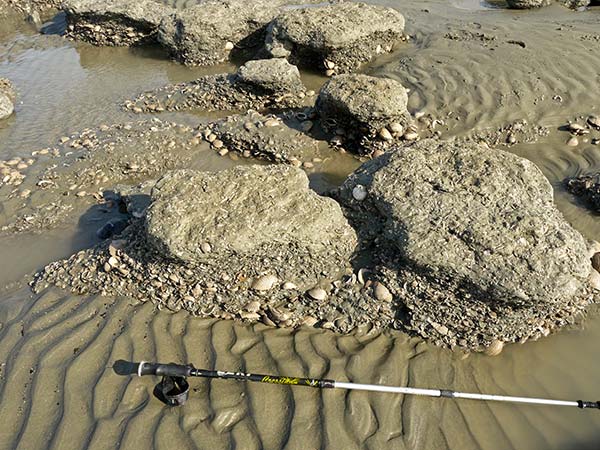
West Sussex Local Geological Sites - Bracklesham Bay, Bracklesham (img 313)
Detail of Earnley Formation pedestals exposing E3 Venericardia Bed full of Venericor bivalve fossils at base and more indurated E4 Turitella Bed full of Turritella gastropod fossils at top. Most of the Venericor shells are disarticulated but some in the background are still together in life position.
1 m pole for scale.
Photograph taken: 29/03/2014
Grid ref SZ811479580
Image file: P2040344ed.jpg

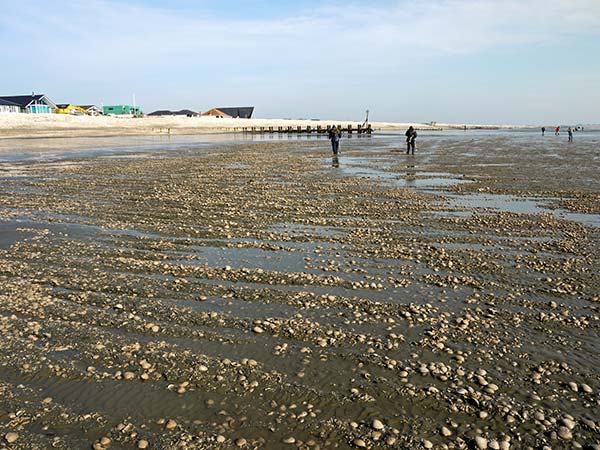
West Sussex Local Geological Sites - Bracklesham Bay, Bracklesham (img 314)
Large expanse of Earnley Formation E3 Venericardia Bed exposed at low 0.6 m tide. The beach is strewn with shells of fossil Venericor bivalves.
Photograph taken: 29/03/2014
Grid ref SZ81179577
Direction ESE
Image file: P2040346ed.jpg

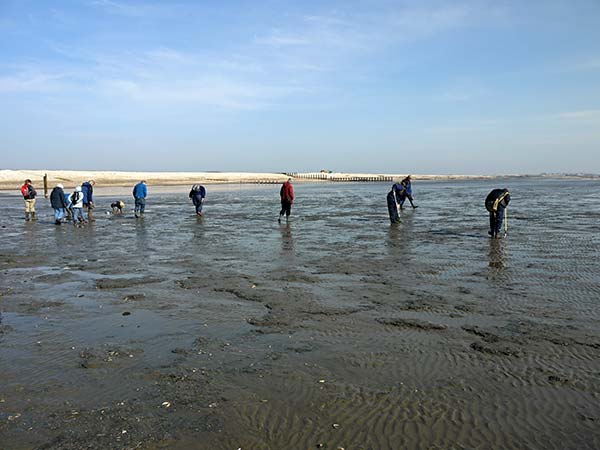
West Sussex Local Geological Sites - Bracklesham Bay, Bracklesham (img 315)
Extensive exposure of muddy deposits of the Earnley Formation E5 Palate Bed, noted for its vertebrate fossils. Low 0.6 m tide.
Photograph taken: 29/03/2014
Grid ref 81369563
Direction ESE
Image file: P2040347ed.jpg

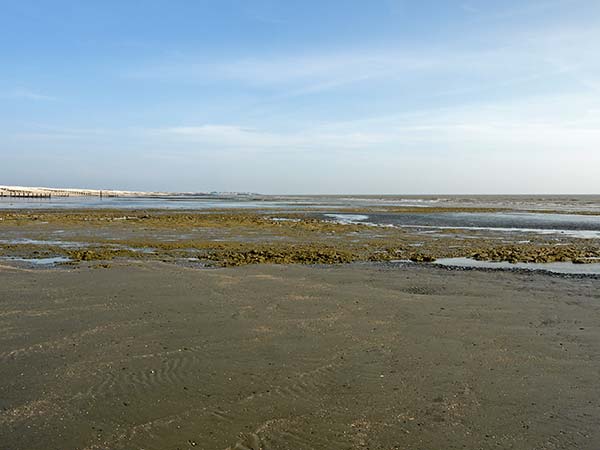
West Sussex Local Geological Sites - Bracklesham Bay, Bracklesham (img 316)
Extensive exposure of silts of Earnley Formation E7 Nummulites laevigatus Bed at low 0.6 m tide.
Photograph taken: 29/03/2014
Grid ref SZ81589550
Direction SE
Image file: P2040349ed.jpg

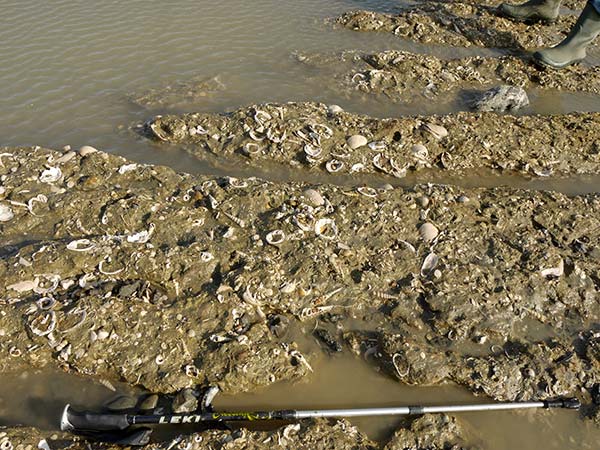
West Sussex Local Geological Sites - Bracklesham Bay, Bracklesham (img 317)
Detail of E7 Nummulites laevigatus Bed showing numerous bivalve and gastropod fossils. Viewed more closely the matrix is full of fossil tests of the foraminifer Nummulites laevigatus which are often stacked like piles of coins.
1 m pole for scale.
Photograph taken: 29/03/2014
Grid ref SZ81589550
Image file: P2040353ed.jpg

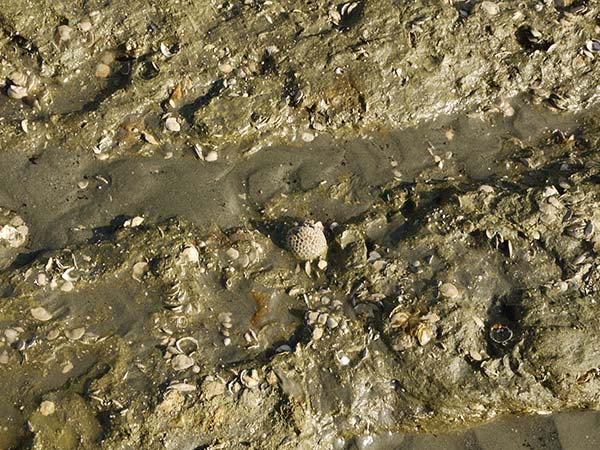
West Sussex Local Geological Sites - Bracklesham Bay, Bracklesham (img 318)
Detail of E7 Nummulites laevigatus Bed. In addition to the numerous bivalve and gastropod fossils there is a small fossil coral at centre and around this there are numerous coin-like tests of Nummulites laevigatus.
Photograph taken: 29/03/2014
Grid ref SZ81589550
Image file: P2040354ed.jpg

Selsey East Beach, Chichester (SZ89/03)

West Sussex Local Geological Sites - Selsey East Beach (img 320)
Overview of southwestern part of Selsey East Beach from the lifeboat pier. The extent of the RIGs site is indicated by the two red arrows.
Photograph taken: 18/08/2010
Grid ref. SZ86239272
Direction SW
Image file: P1020361ed.jpg

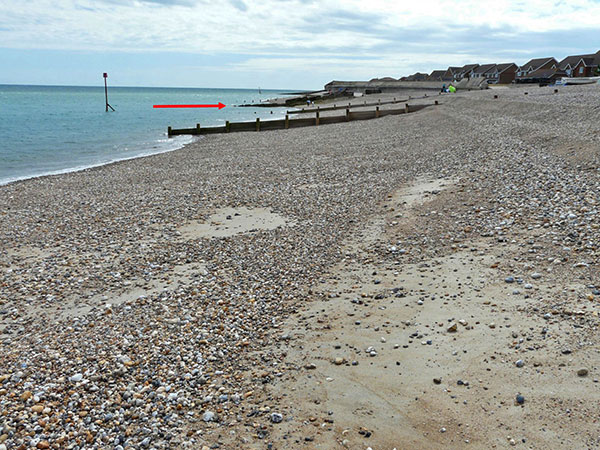
West Sussex Local Geological Sites - Selsey East Beach (img 321)
Southern part of site looking towards Selsey Bill. The southern boundary of the site is indicated by the red arrow. Shingle and sand conceal the interglacial deposits.
Photograph taken: 18/08/2010
Grid ref. SZ85989250
Direction SW
Image file: P1020363ed.jpg

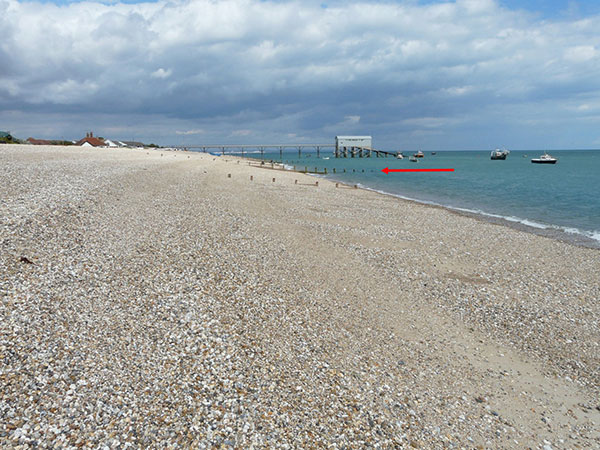
West Sussex Local Geological Sites - Selsey East Beach (img 322)
Northern part of the site looking towards the lifeboat pier. The northern boundary is indicated by the red arrow. Shingle and sand conceal the interglacial deposits.
Photograph taken: 18/08/2010
Grid ref. SZ86059257
Direction NE
Image file: P1020364ed.jpg

Pagham Harbour (SZ89/04)
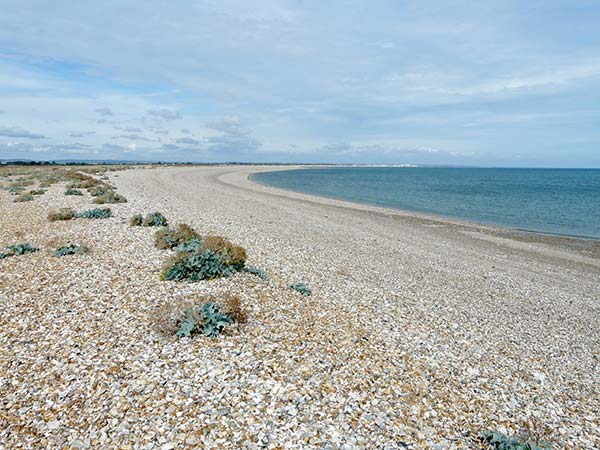
West Sussex Local Geological Sites - Pagham Harbour (img 324)
Outer shingle spit viewed from SW end of the harbour. Vegetated shingle at left (sea kale).
Photograph taken:19/08/2010
Grid ref. SZ87499528
Direction NE
Image file: P1020419ed.jpg

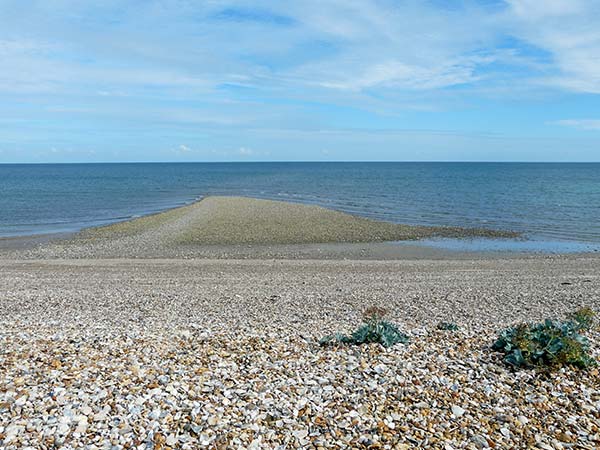
West Sussex Local Geological Sites - Pagham Harbour (img 325)
Subsidiary shingle spit developing at SW end of the harbour.
Photograph taken:19/08/2010
Grid ref. SZ87499528
Direction SE
Image file: P1020420ed.jpg

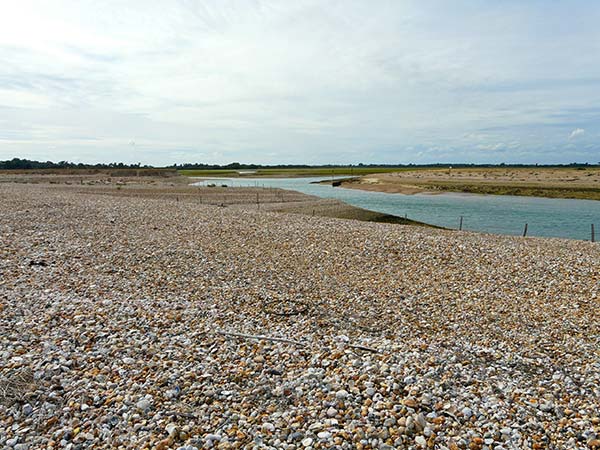
West Sussex Local Geological Sites - Pagham Harbour (img 326)
Tidal channel downstream from the breach in the shingle spit system viewed from the outer spit. The edge of the outer spit shows recurves and embayments.
Photograph taken:19/08/2010
Grid ref. SZ88269603
Direction WNW
Image file: P1020421ed.jpg

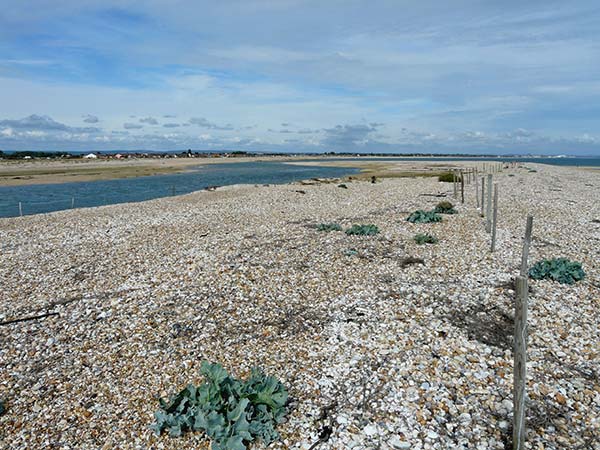
West Sussex Local Geological Sites - Pagham Harbour (img 327)
Outer spit and tidal channel separating it from the inner spit. Recurves and embayments mark the inner edge of the outer spit which terminates in a recurve.
Photograph taken:19/08/2010
Grid ref. SZ88269603
Direction NE
Image file: P1020422ed.jpg

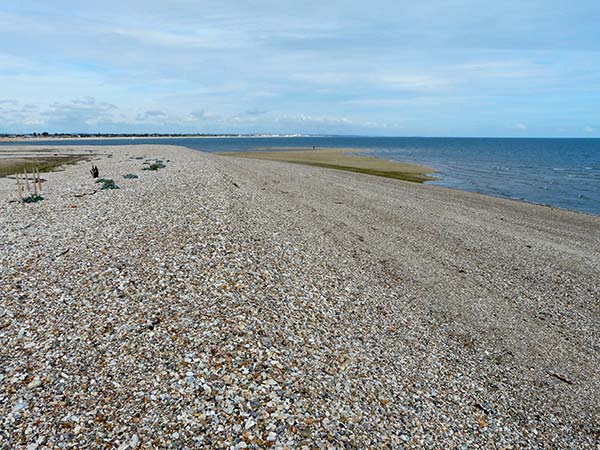
West Sussex Local Geological Sites - Pagham Harbour (img 328)
NE end of outer shingle spit showing new spit development to the right.
Photograph taken:19/08/2010
Grid ref 88409615
Direction ENE
Image file: P1020423ed.jpg

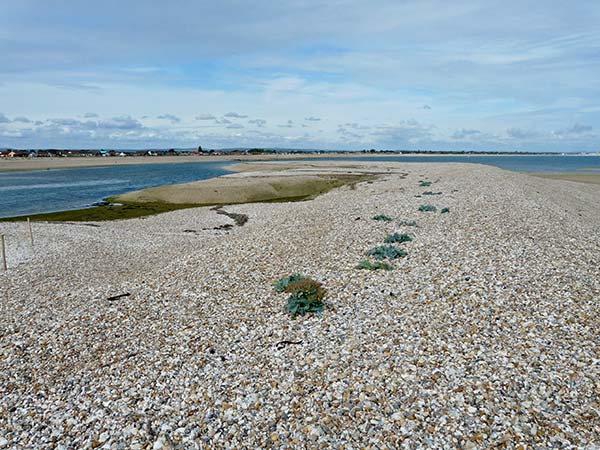
West Sussex Local Geological Sites - Pagham Harbour (img 329)
NE end of outer shingle spit showing evidence of two earlier recurved spits and associated embayments behind the recurved termination of the present spit.
Photograph taken:19/08/2010
Grid ref. SZ88499617
Direction NE
Image file: P1020424ed.jpg

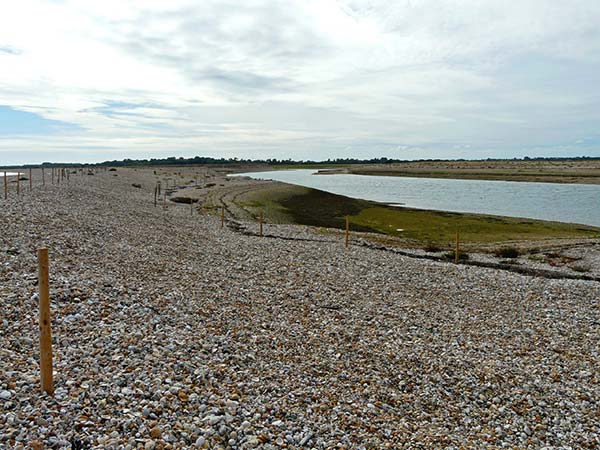
West Sussex Local Geological Sites - Pagham Harbour (img 330)
Tidal channel between outer and inner shingle spits showing an embayment associated with recurve on the inner edge of the outer spit.
Photograph taken:19/08/2010
Grid ref. SZ88499617
Direction WSW
Image file: P1020425ed.jpg

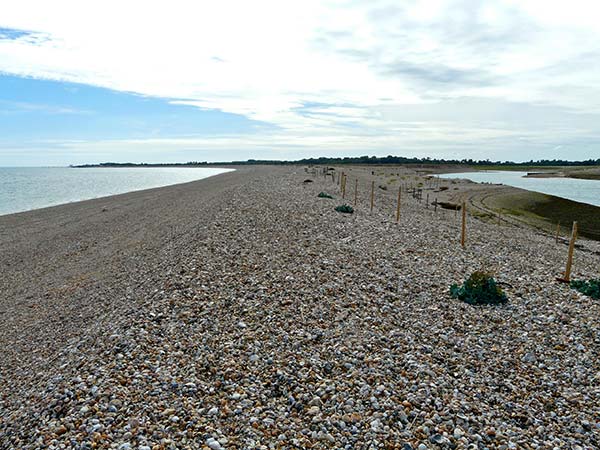
West Sussex Local Geological Sites - Pagham Harbour (img 331)
Outer shingle spit viewed from NE end with sea to the left and tidal channel to the right.
Photograph taken:19/08/2010
Grid ref. SZ88499617
Direction SW
Image file: P1020426ed.jpg

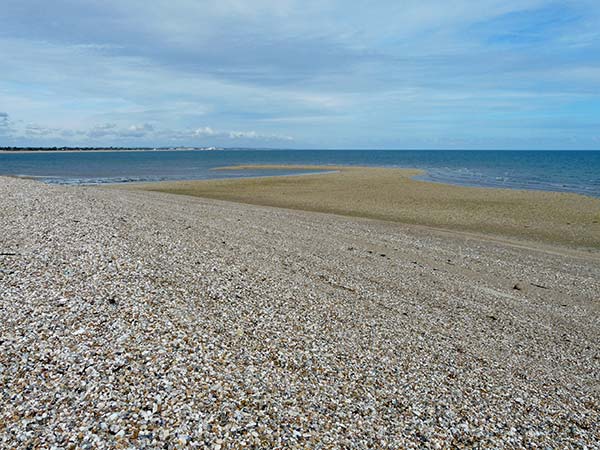
West Sussex Local Geological Sites - Pagham Harbour (img 332)
New recurved shingle spit forming seaward of the tip of the outer spit.
Photograph taken:19/08/2010
Grid ref. SZ88679634
Direction NE
Image file: P1020427ed.jpg

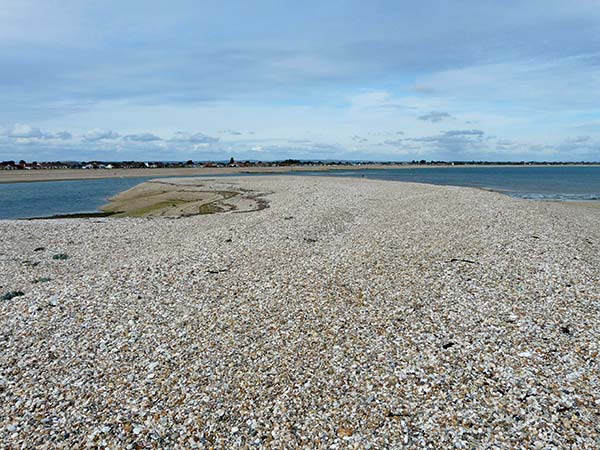
West Sussex Local Geological Sites - Pagham Harbour (img 333)
Recurved tip of the outer spit.
Photograph taken:19/08/2010
Grid ref. SZ88679634
Direction NNE
Image file: P1020428ed.jpg


West Sussex Local Geological Sites - Pagham Harbour (img 334)
Subsidiary spit forming beyond the main outer spit at the present tidal channel mouth.
Photograph taken:19/08/2010
Grid ref. SZ88699649
Direction NNE
Image file: P1020430ed.jpg


West Sussex Local Geological Sites - Pagham Harbour (img 335)
Subsidiary recurved spit forming beyond the main outer spit near the present river mouth.
Photograph taken:19/08/2010
Grid ref. SZ88719640
Direction NE
Image file: P1020434ed.jpg

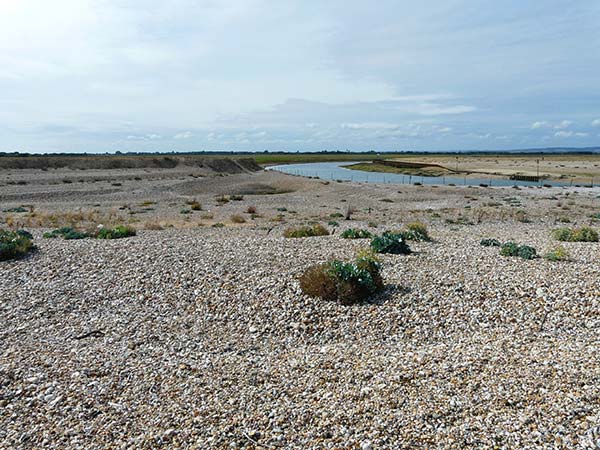
West Sussex Local Geological Sites - Pagham Harbour (img 336)
Location where the tidal channel breaches the spit system.
Photograph taken:19/08/2010
Grid ref. SZ88099594
Direction NNW
Image file: P1020436ed.jpg

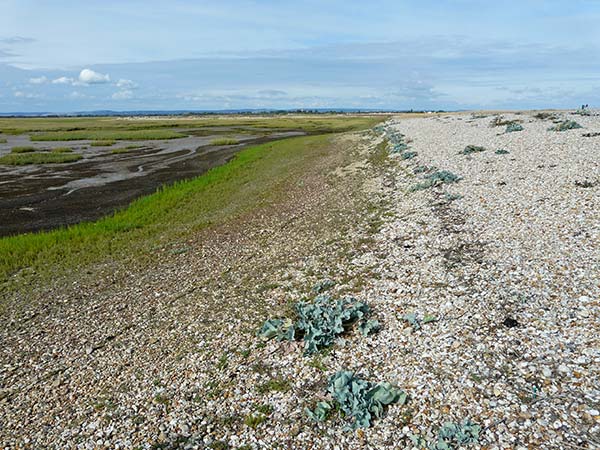
West Sussex Local Geological Sites - Pagham Harbour (img 337)
Outer shingle spit with salt marsh behind viewed from SW end of the harbour. Vegetated shingle to right.
Photograph taken:19/08/2010
Grid ref. 97479533
Direction NNE
Image file: P1020439ed.jpg

Climping Sand Dune System (TQ00/126)
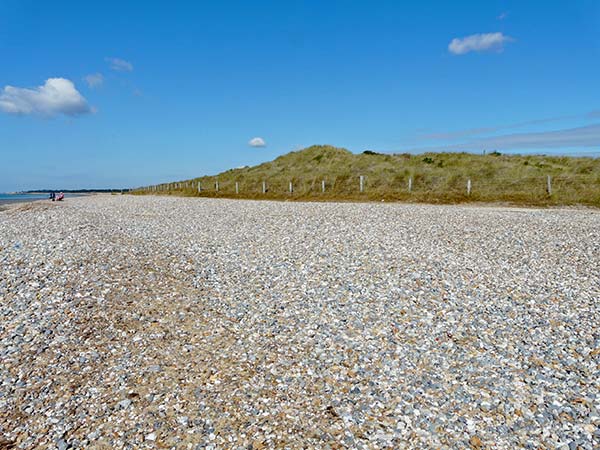
West Sussex Local Geological Sites - Climping Sand Dune System (img 339)
Climping Beach from eastern end showing fenced area of the highest sand dunes.
Photograph taken: 12/08/2010
Grid ref. TQ02830103
Direction west
Image file: P1020181ed.jpg


West Sussex Local Geological Sites - Climping Sand Dune System (img 340)
Climping Beach from eastern end showing fenced area of the highest sand dunes.
Photograph taken: 12/08/2010
Grid ref. TQ02690109
Direction west
Image file: P1020184ed.jpg

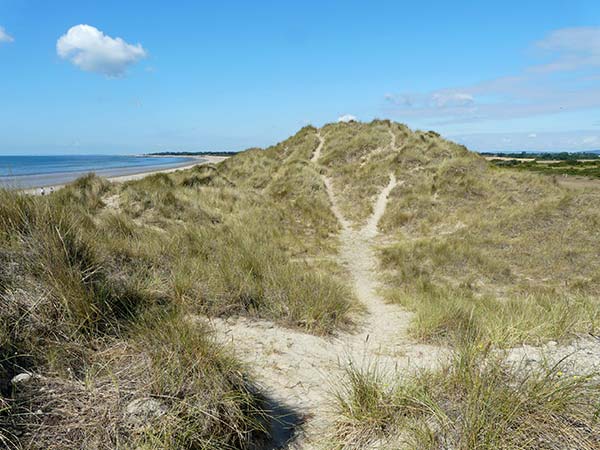
West Sussex Local Geological Sites - Climping Sand Dune System (img 341)
High sand dune viewed from boardwalk in eastern fenced area. Note erosion due to tracks which may have occurred prior to fencing.
Photograph taken: 12/08/2010
Grid ref. TQ02670113
Direction west
Image file: P1020186ed.jpg

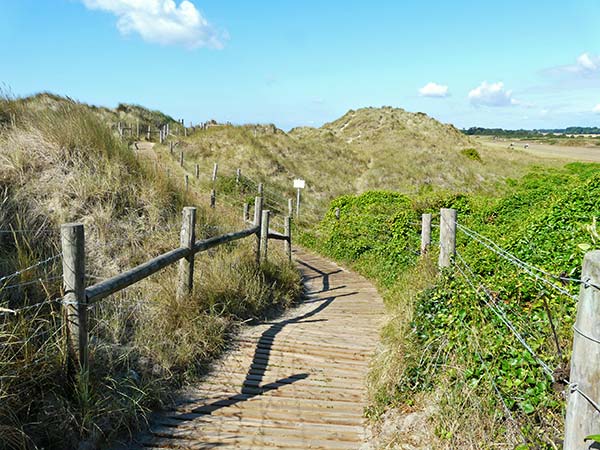
West Sussex Local Geological Sites - Climping Sand Dune System (img 342)
Fenced boardwalk through eastern fenced area of highest sand dunes.
Photograph taken: 12/08/2010
Grid ref. TQ02720115
Direction west
Image file: P1020187ed.jpg

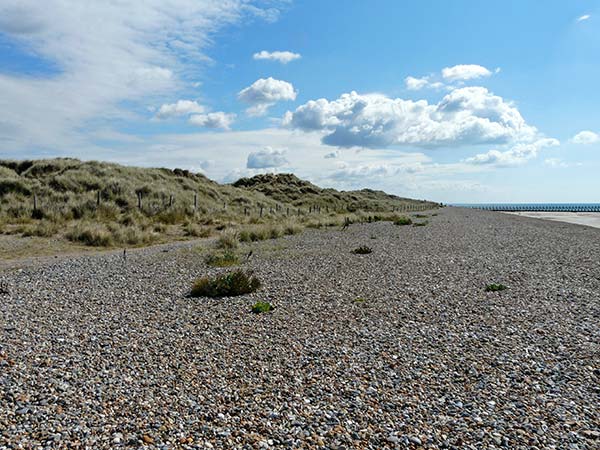
West Sussex Local Geological Sites - Climping Sand Dune System (img 343)
Fenced area of highest dunes viewed from western end.
Photograph taken: 12/08/2010
Grid ref. TQ02460110
Direction east
Image file: P1020192ed.jpg

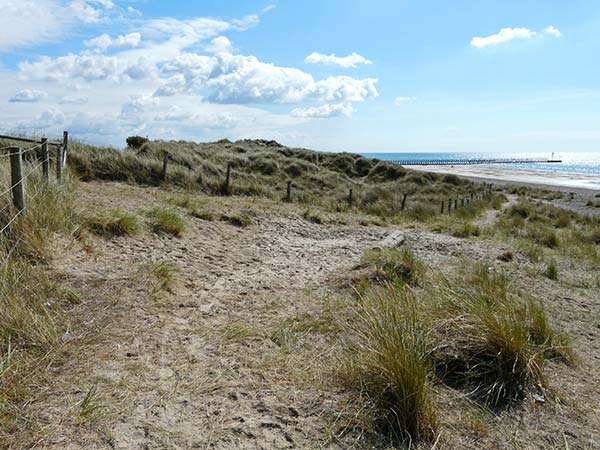
West Sussex Local Geological Sites - Climping Sand Dune System (img 344)
Contrast between heavily eroded area of public access and fenced area behind.
Photograph taken: 12/08/2010
Grid ref. TQ02420114
Direction east
Image file: P1020193ed.jpg

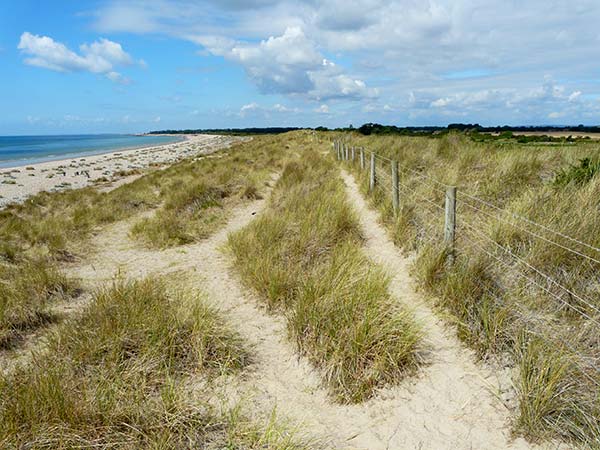
West Sussex Local Geological Sites - Climping Sand Dune System (img 345)
Fence along crest of the central dune section with public access. There are steep slopes down to the golf course at right. Vegetated shingle beach to left.
Photograph taken: 12/08/2010
Grid ref. TQ02310113
Direction west
Image file: P1020195ed.jpg

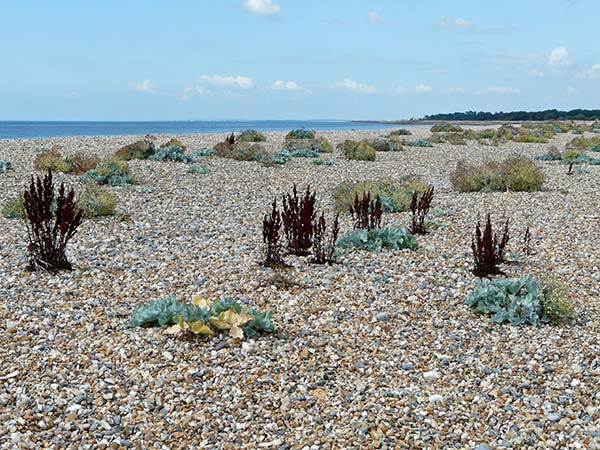
West Sussex Local Geological Sites - Climping Sand Dune System (img 346)
Vegetated shingle beach adjacent to sand dunes.
Photograph taken: 12/08/2010
Grid ref. TQ02240111
Direction WSW
Image file: P1020196ed.jpg

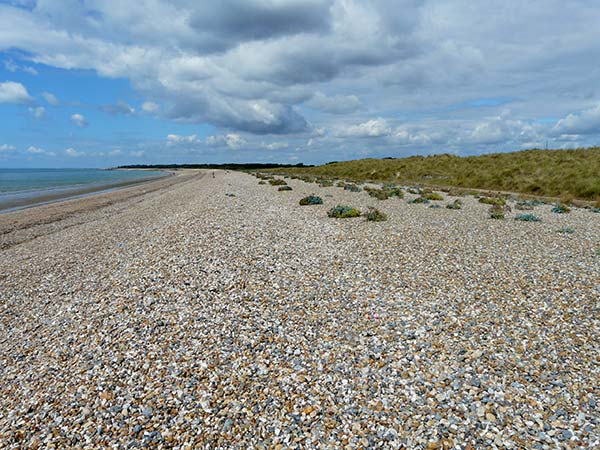
West Sussex Local Geological Sites - Climping Sand Dune System (img 347)
Central part of sand dune system and adjacent vegetated shingle beach.
Photograph taken: 12/08/2010
Grid ref. TQ02240111
Direction west
Image file: P1020198ed.jpg

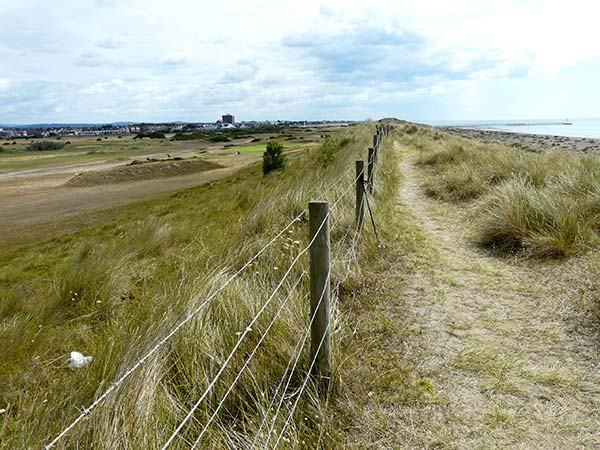
West Sussex Local Geological Sites - Climping Sand Dune System (img 348)
Fence along crest of the central dune section with public access, showing steep slopes down to golf course at left. In this case the golf course is protecting the stabilising vegetation by preventing access.
Photograph taken: 12/08/2010
Grid ref. TQ02020116
Direction east
Image file: P1020200ed.jpg

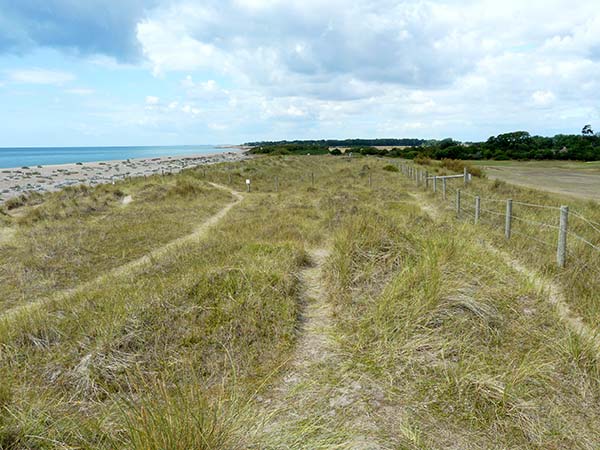
West Sussex Local Geological Sites - Climping Sand Dune System (img 349)
Western end of sand dunes showing eroded public access area in foreground and start of western fenced area in background. Note well developed vegetated shingle along the beach.
Photograph taken: 12/08/2010
Grid ref. TQ01830114
Direction west
Image file: P1020204ed.jpg

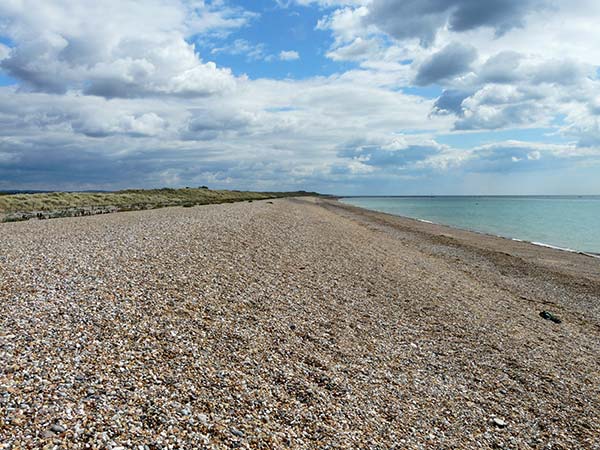
West Sussex Local Geological Sites - Climping Sand Dune System (img 350)
Sand dune system viewed from western end of dunes.
Photograph taken: 12/08/2010
Grid ref. TQ01540102
Direction east
Image file: P1020213ed.jpg

Black Rabbit Quarry, Arundel (TQ00/52)
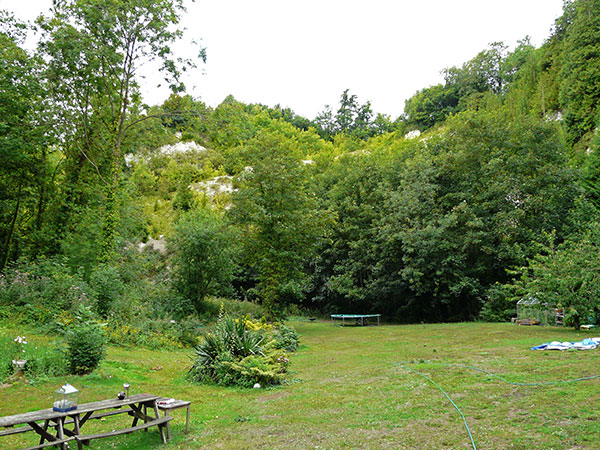
West Sussex Local Geological Sites - Black Rabbit Quarry (img 352)
Garden of The Coach House showing vegetated chalk slopes at eastern end of quarry.
Photo taken: 12/08/2010
Grid ref TQ02460848
Direction WNW
Image file: P1020237ed.jpg

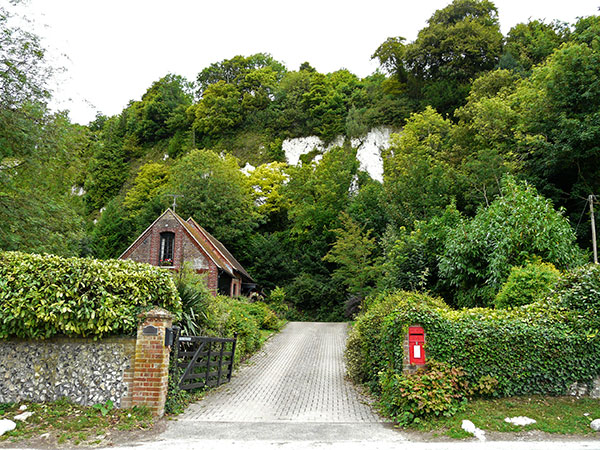
West Sussex Local Geological Sites - Black Rabbit Quarry (img 353)
Drive of The Coach House showing chalk cliffs behind extensive tree cover at western end of quarry.
Photo taken: 12/08/2010
Grid ref TQ02500846
Direction NNW
Image file: P1020238ed.jpg

Warningcamp Quarry (TQ00/53)

West Sussex Local Geological Sites - Warningcamp Quarry (img 355)
Southern part of main chalk face, obscured by vegetation. Exposes Culver Chalk.
Height 6m.
Photo taken: 20/07/2010
Grid ref TQ04610761
Direction east
Image file: P1010897ed.jpg

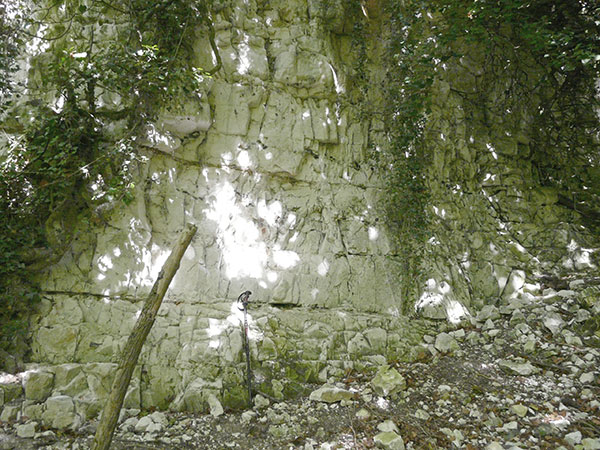
West Sussex Local Geological Sites - Warningcamp Quarry (img 356)
Close-up of lower part of face shown in photo 1. The two most prominent beds are flint bands, the upper being a sheet flint layer. Bedding dips to the right (south).
1m pole for scale.
Photo taken: 20/07/2010
Grid ref TQ04620761
Direction east
Image file: P1010900ed.jpg

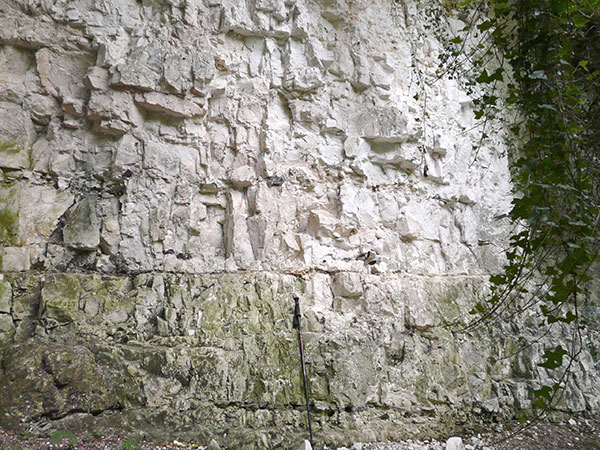
West Sussex Local Geological Sites - Warningcamp Quarry (img 357)
Lower part of chalk face shown in photo 3. Two prominent flint layers occur near the base. The upper layer is a sheet flint and above this are large, irregular paramoudra flints.
1m pole for scale.
Photo taken: 20/07/2010
Grid ref TQ04630763
Direction SE
Image file: P1010903ed.jpg

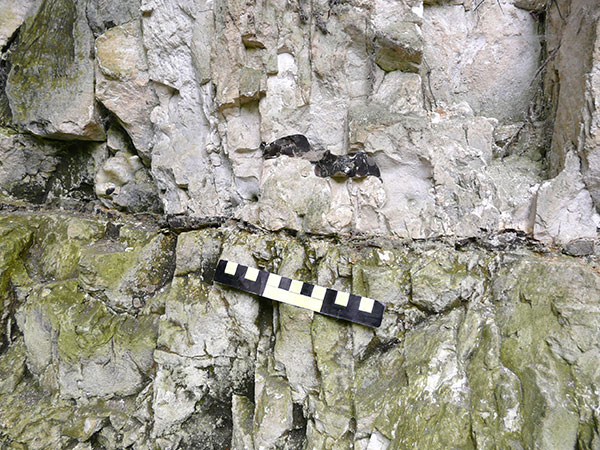
West Sussex Local Geological Sites - Warningcamp Quarry (img 358)
Detail of face in photo 4 showing prominent sheet flint layer. Above this layer are large, irregular paramoudra flints.
Scale 30cm.
Photo taken: 20/07/2010
Grid ref TQ04630763
Direction SE
Image file: P1010905ed.jpg


West Sussex Local Geological Sites - Warningcamp Quarry (img 359)
Northern part of main chalk face, about 10m high.
The prominent sheet flint layeroutcrops half way up the face.
Photo taken: 20/07/2010
Grid ref TQ04630763
Direction NNE
Image file: P1010907.jpg

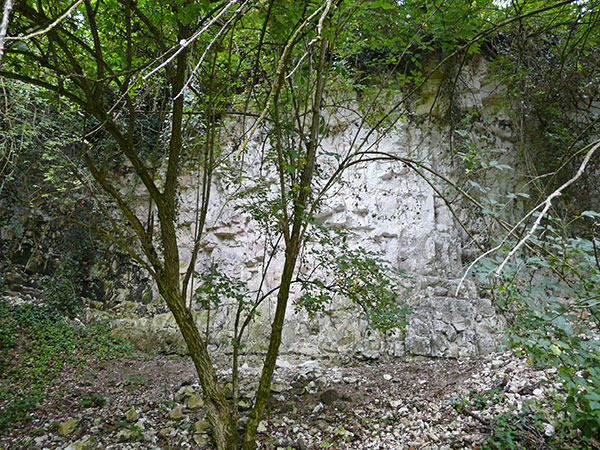
West Sussex Local Geological Sites - Warningcamp Quarry (img 360)
Central part of main quarry face, relatively free from vegetation.
Height 9m.
Photo taken: 20/07/2010
Grid ref TQ04620763
Direction SE
Image file: P1010908ed.jpg

Amberley Castle footings and footpath (TQ01/141)
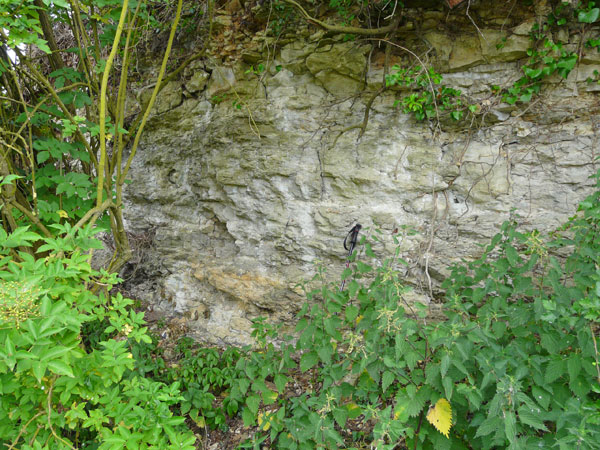
West Sussex Local Geological Sites - Amberley Castle (img 362)
Detail of siltstone outcrop at western end of footpath showing irregular bedding, probably bioturbated, with "wispy" lenticular bedding in the lower part.
1 m pole for scale.
Photograph taken: 07/07/2010
Grid ref. TQ02491318
Direction south
Image file: P1010771ed.jpg


West Sussex Local Geological Sites - Amberley Castle (img 363)
Close-up of siltstone exposure in western part of outcrop showing a 0.5 m thick bed of hard, uniform porcellaneous siltstone (malmstone).
Photograph taken: 07/07/2010
Grid ref. TQ02511319
Direction south.
Image file: P1010774croped.jpg

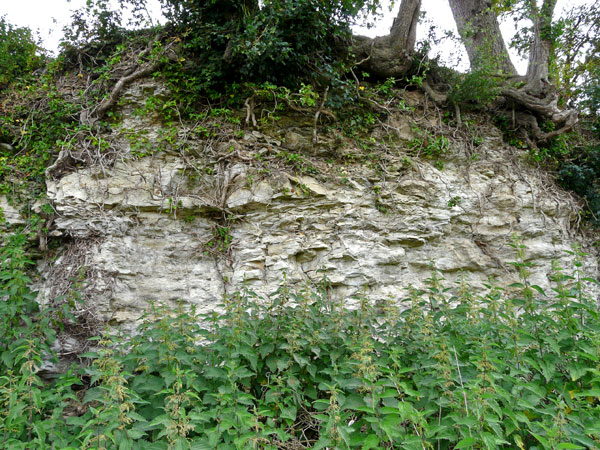
West Sussex Local Geological Sites - Amberley Castle (img 364)
Siltstone exposure along western end of footpath. Bedding in the lower part is irregular and indistinct, probably due to bioturbation. The middle part shows a 0.5 m thick bed of hard, uniform porcellaneous siltstone (malmstone). Upper part obscured by vegetation.
Photograph taken: 07/07/2010
Grid ref TQ02531318
Direction south
Image file: P1010777ed.jpg

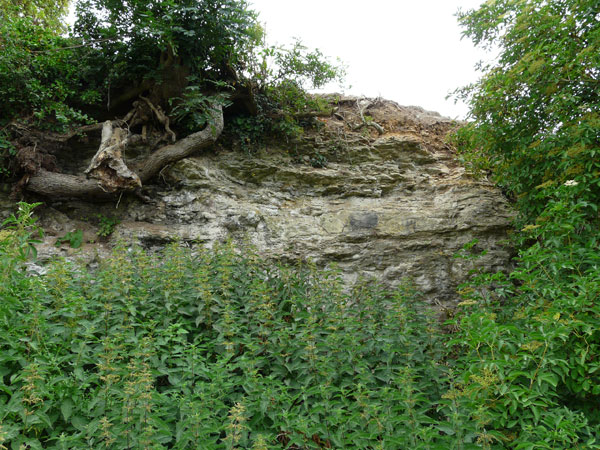
West Sussex Local Geological Sites - Amberley Castle (img 365)
Siltstone exposure in central part of outcrop. Bedding in the lower and upper parts is irregular and indistinct, probably due to bioturbation. The central part shows a 0.5 m thick bed of hard, uniform porcellaneous siltstone (malmstone).
Photograph taken: 07/07/2010
Grid ref. TQ02561319
Direction south
Image file: P1010778ed.jpg

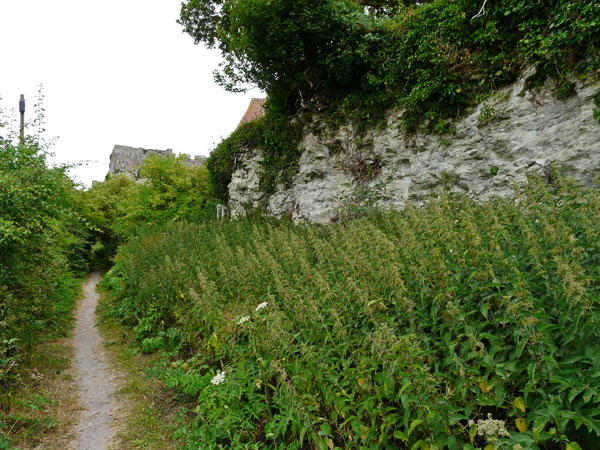
West Sussex Local Geological Sites - Amberley Castle (img 366)
Eastern end of the siltstone outcrops on the left (south) side of the footpath. Note the dense undergrowth between the path and the exposures.
Photograph taken: 07/07/2010
Grid ref. TQ02621320
Direction WSW
Image file: P1010781ed.jpg

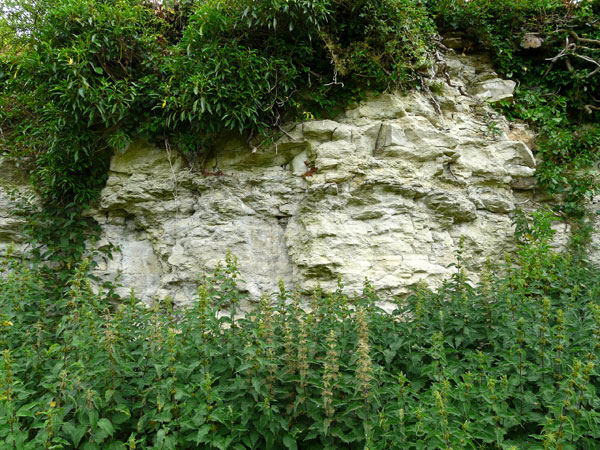
West Sussex Local Geological Sites - Amberley Castle (img 367)
Left (eastern) part of siltstone exposure shown in photo 3. Bedding in the lower part is irregular and indistinct, probably due to bioturbation. The upper part shows a 0.5 m thick bed of hard, uniform porcellaneous siltstone (malmstone).
Photograph taken: 07/07/2010
Grid ref. TQ02601320
Direction south
Image file: P1010784ed.jpg

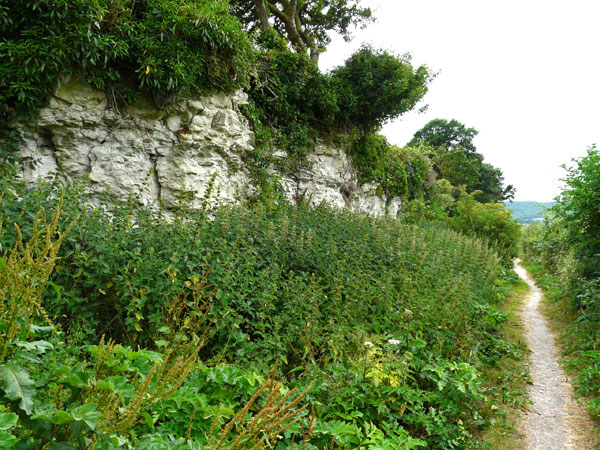
West Sussex Local Geological Sites - Amberley Castle (img 368)
Eastern end of the siltstone outcrops on the left (south) side of the footpath. Note the dense undergrowth between the path and the exposures.
Photograph taken: 07/07/2010
Grid ref. TQ02621320
Direction WSW
Image file: P1010785ed.jpg


West Sussex Local Geological Sites - Amberley Castle (img 369)
Western end of siltstone exposure in castle footings shown in photo 1, viewed from the footpath.
Photograph taken: 07/07/2010
Grid ref. TQ02691322
Direction south
Image file: P1010787ed.jpg


West Sussex Local Geological Sites - Amberley Castle (img 370)
Upper Greensand siltstone exposure in Amberley Castle footings viewed from the footpath. A fence separates the path from the drive visible in the photo.
Photograph taken: 07/07/2010
Grid ref. TQ02711323
Direction WSW
Image file: P1010789ed.jpg

A29 Road Cutting, Pulborough (TQ01/26)
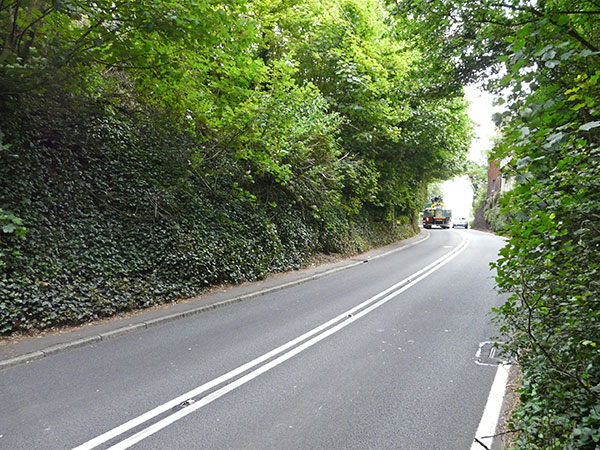
West Sussex Local Geological Sites - A29 Road Cutting Pulborough (img 372)
Heavily vegetated and obscured road cutting in sandstones of the Sandgate Formation on NW side of A29.
Photograph taken: 07/07/2010
Grid ref. TQ04731871
Direction NNE
Image file: P1010741ed.jpg

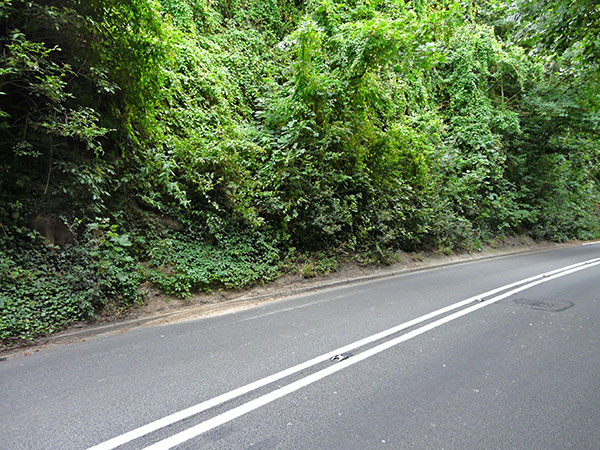
West Sussex Local Geological Sites - A29 Road Cutting Pulborough (img 373)
SE side of A29 cutting. Heavily vegetated and obscured but showing small exposures of sandstone at lower left. There is no pavement on this side of the road.
Photograph taken: 07/07/2010
Grid ref. TQ04741873
Direction SSE
Image file: P1010742ed.jpg

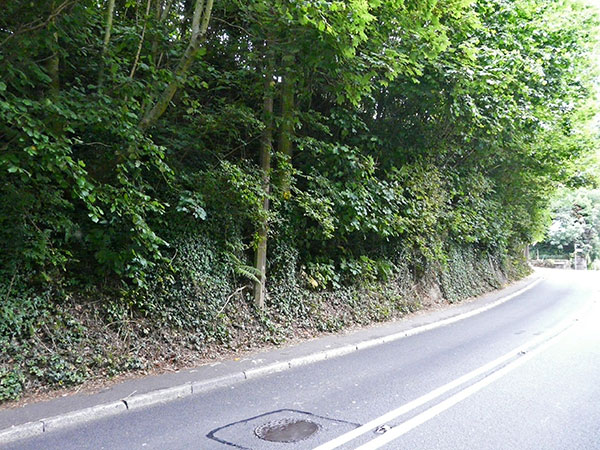
West Sussex Local Geological Sites - A29 Road Cutting Pulborough (img 374)
Northern end of the cutting on the NW side of the A29 exposing sandstones of the Sandgate Formation. Heavily vegetated and obscured but there are some patches of sandstone visible in the bank near to pavement level.
Photograph taken: 07/07/2010
Grid ref. TQ04741872
Direction north
Image file: P1010743ed.jpg

Park Farm Cutting, Pulborough (TQ01/29)
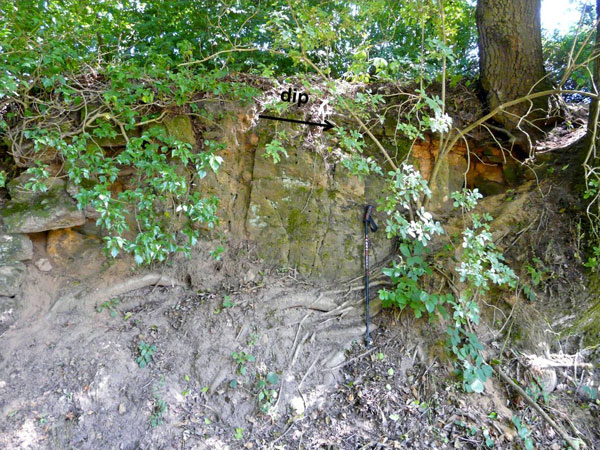
West Sussex Local Geological Sites - Park Farm Cutting - Pulborough (img 376)
Exposure A (on east side of lane showing Pulborough Sandrock mostly weathered and greyish with some orange-brown fresh surfaces. Shows vertical joint planes and dip to the right (south). Indications of small-scale cross-bedding.
1 m pole for scale.
Photograph taken: 30/06/2010
Grid ref. TQ03951891
Direction east
Image file: P1010683edann.jpg

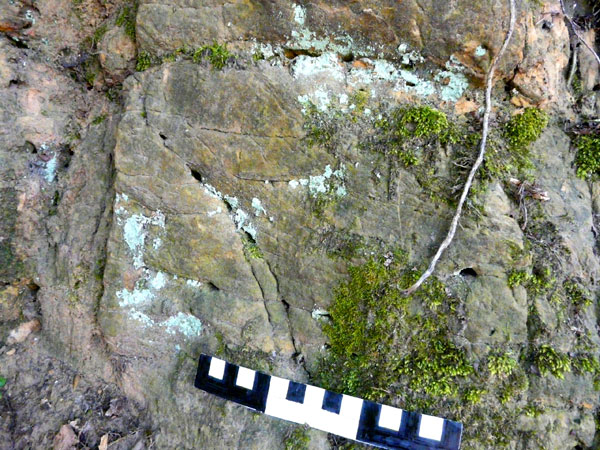
West Sussex Local Geological Sites - Park Farm Cutting - Pulborough (img 377)
Close-up of centre of exposure of Pulborough Sandrock in photo 1. Bedding detail is obscured by weathering and moss cover but there are indications of steeper dip related to cross bedding.
30 cm scale.
Photograph taken: 30/06/2010
Grid ref. TQ03951891
Direction east
Image file: P1010684ed.jpg


West Sussex Local Geological Sites - Park Farm Cutting - Pulborough (img 378)
Detail of right side of outcrop in photo 3. Bedding detail is obscured by weathering but fine lamination is evident in fresher patches towards the base.
Scale 30cm.
Photograph taken: 30/06/2010
Grid ref. TQ03961893
Direction W
Image file: P1010685ed.jpg


West Sussex Local Geological Sites - Park Farm Cutting - Pulborough (img 379)
Exposure B (2 m high) on west side of lane showing Pulborough Sandrock mostly weathered and greyish with some orange-brown fresh surfaces. Bedding dips to left (south) and steeper dips in the upper part indicate cross bedding.
30 cm scale.
Photograph taken: 30/06/2010
Grid ref. TQ03961893
Direction west
Image file: P1010686edann.jpg

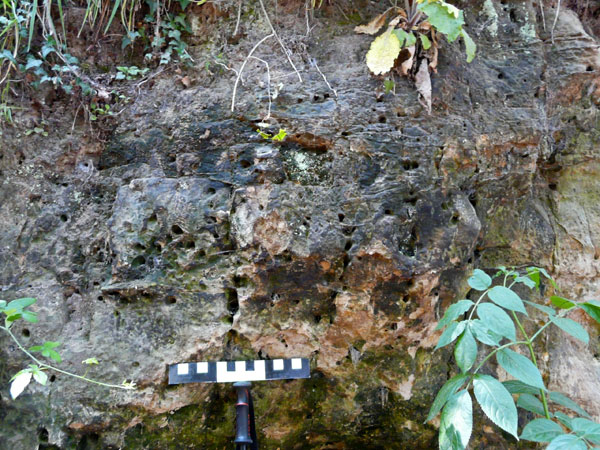
West Sussex Local Geological Sites - Park Farm Cutting - Pulborough (img 380)
Detail of left side of outcrop in photo 3. Bedding detail is obscured by weathering and moss cover but there are indications of steeper dip related to cross bedding or channels.
Scale 30cm.
Photograph taken: 30/06/2010
Grid ref. TQ03961893
Direction W
Image file: P1010687ed.jpg

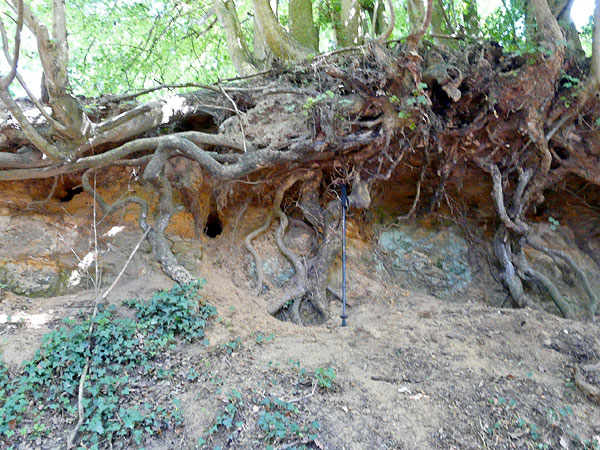
West Sussex Local Geological Sites - Park Farm Cutting - Pulborough (img 381)
Exposure C on east side of lane showing fresh orange-brown sandrock visible beneath overhanging tree roots. Note the rabbit burrows.
1 m pole for scale.
Photograph taken: 30/06/2010
Grid ref. TQ03961894
Direction east
Image file: P1010689ed.jpg

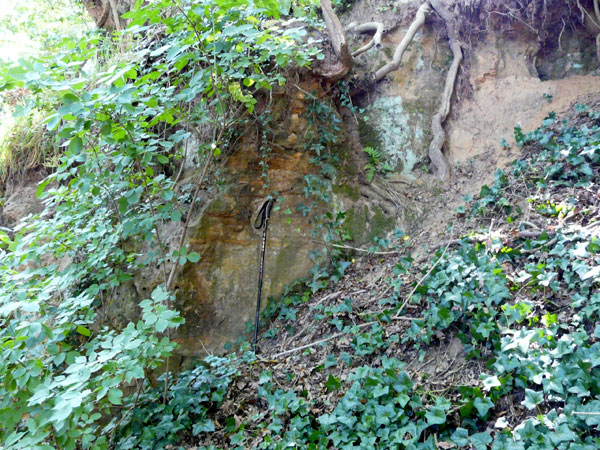
West Sussex Local Geological Sites - Park Farm Cutting - Pulborough (img 382)
Re-entrant joint face at north end of exposure B showing fresh orange-brown sandrock exposure with bedding detail and fine lamination visible.
1 m pole for scale.
Photograph taken: 30/06/2010
Grid ref. TQ03961894
Direction south
Image file: P1010690ed.jpg

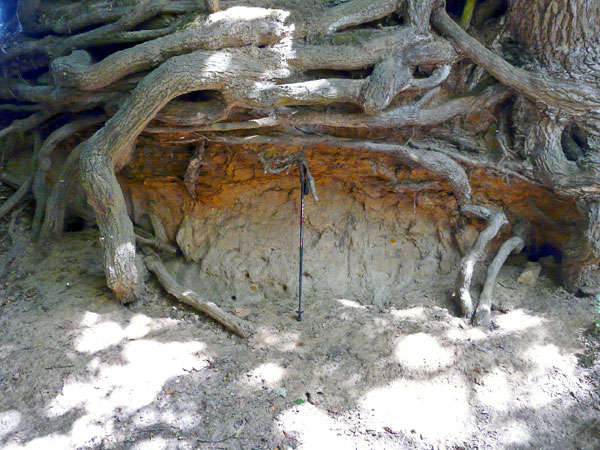
West Sussex Local Geological Sites - Park Farm Cutting - Pulborough (img 383)
Exposure on east side of lane showing fresh orange-brown and whitish sandrock beneath overhanging tree roots. Probably an example of the weakly cemented sandrock (loam) in the lower zones.
1 m pole for scale.
Photograph taken: 30/06/2010
Grid ref. TQ03971897
Direction east
Image file: P1010691ed.jpg

Marehill Quarry, Pulborough (TQ01/30)
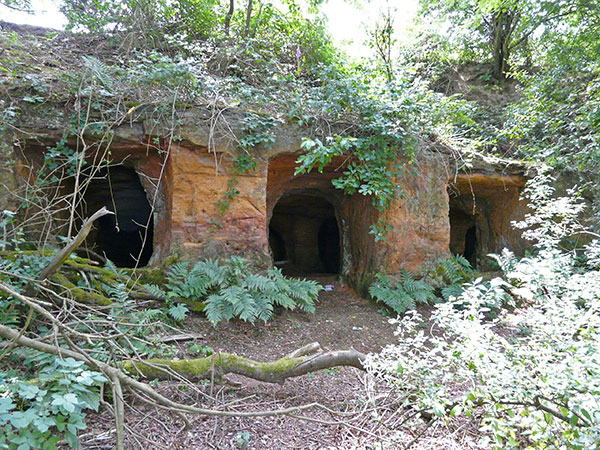
West Sussex Local Geological Sites - Marehill Quarry (img 385)
Fresh Pulborough Sandrock face and mine galleries. Face is 2.5 m high. A thin iron-cemented layer forms the roof of the galleries and the slope above corresponds to the Marehill Clay.
Photo taken: 30/06/2010
Grid ref TQ06461865
Direction south
Image file: P1010669ed.jpg

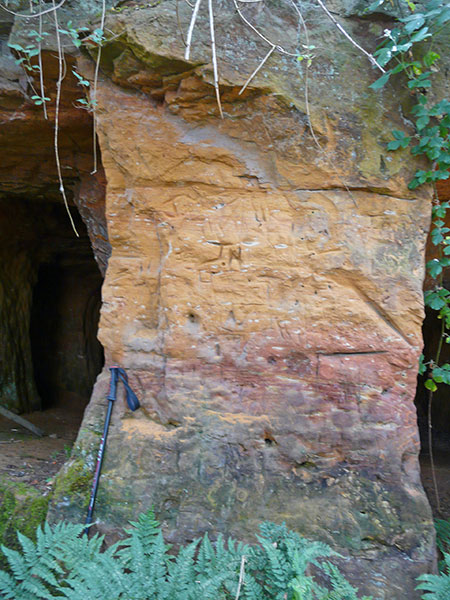
West Sussex Local Geological Sites - Marehill Quarry (img 386)
Detail of face at left of photo 1 showing orange-brown sandrock with purplish laminae near base showing cross-bedding and fine pinkish laminae near the top.
Note the graffiti.
Photo taken: 30/06/2010
Grid ref TQ06461864
Direction south
Image file: P1010671ed.jpg

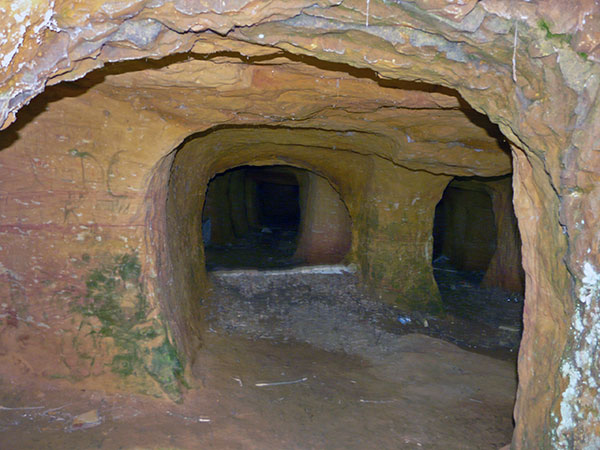
West Sussex Local Geological Sites - Marehill Quarry (img 387)
Interior of mine gallery showing orange-brown sandrock with pinkish laminae. Roof of gallery is supported by iron-cemented layer.
Height about 2 m.
Photo taken: 30/06/2010
Grid ref TQ06461864
Direction S
Image file: P1010674ed.jpg

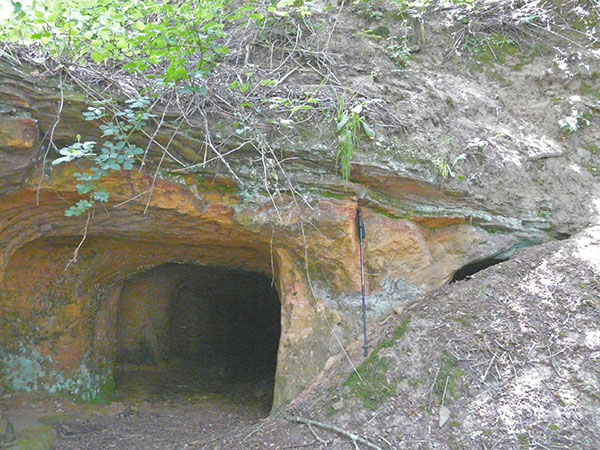
West Sussex Local Geological Sites - Marehill Quarry (img 388)
Pulborough Sandrock face at entrance to one of the mine galleries. Iron-cemented layer at top of sandrock and contact with overlying Marehill Clay in the slope above are clearly visible.
1 m pole for scale.
Photo taken: 30/06/2010
Grid ref TQ06451865
Direction south
Image file: P1010677ed.jpg

Codmore Hill, Pulborough (TQ02/01)
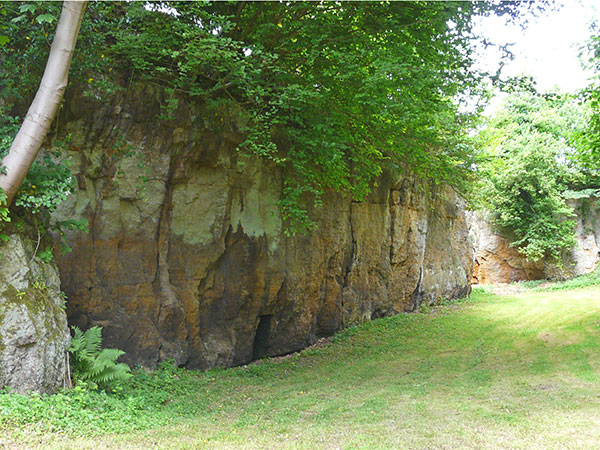
West Sussex Local Geological Sites - Codmore Hill (img 390)
Western part of main quarry face showing relatively unweathered orange/yellow sandstone.
Height about 7m.
Photo taken: 30/06/2010
Grid ref TQ04902014
Direction WNW
Image file: P1010643ed.jpg


West Sussex Local Geological Sites - Codmore Hill (img 391)
Massive sandstone buttress about 6m high in centre of quarry, defined by intersecting vertical joint planes and showing bedding dip to the south.
Photo taken: 30/06/2010
Grid ref TQ04912013
Direction south
Image file: P1010648ed.jpg


West Sussex Local Geological Sites - Codmore Hill (img 392)
Part of central quarry face exposing Hythe Formation. Massive sandstone in lower part and thinner beds in upper part with some curvature, suggesting channels.
Height 5.5m.
Photo taken: 30/06/2010
Grid ref TQ04912013
Direction SW
Image file: P1010649ed.jpg

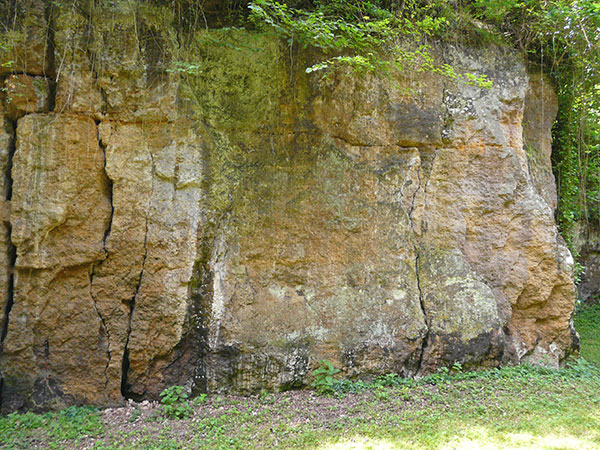
West Sussex Local Geological Sites - Codmore Hill (img 393)
Right (west) end of face shown in photo 3, showing relatively unweathered massive sandstone with no small scale bedding lamination visible.
Photo taken: 30/06/2010
Grid ref TQ04882015
Direction SW
Image file: P1010657ed.jpg

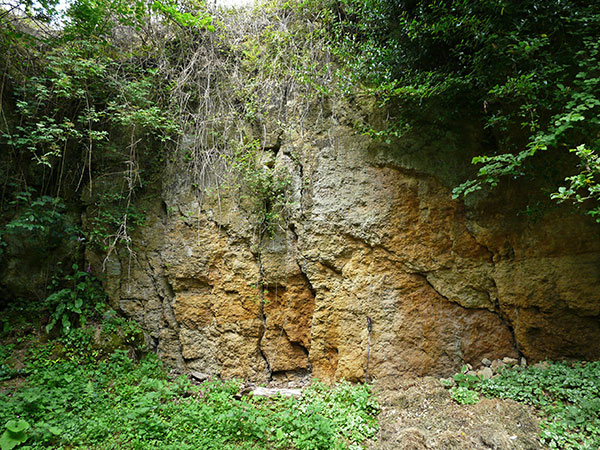
West Sussex Local Geological Sites - Codmore Hill (img 394)
Western end of quarry with relatively unweathered sandstone face partly obscured by vegetation.
1m pole for scale.
Photo taken: 30/06/2010
Grid ref TQ04862017
Direction WNW
Image file: P1010663ed.jpg

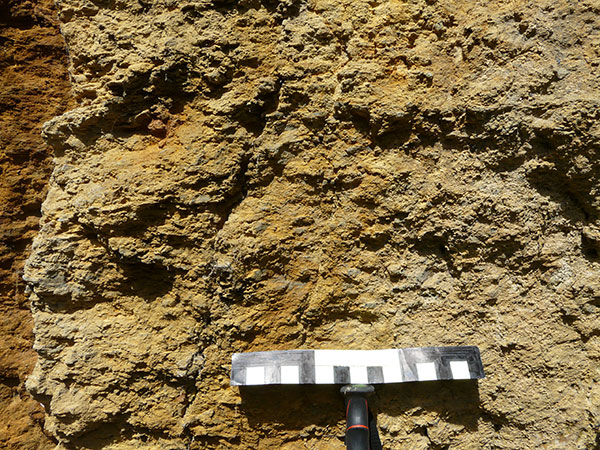
West Sussex Local Geological Sites - Codmore Hill (img 395)
Detail of lower part of sandstone exposure in photo 5, showing lack of small scale bedding and numerous argillaceous nodules (iron-cemented claystone?).
Scale length 30cm.
Photo taken: 30/06/2010
Grid ref TQ04862017
Direction WNW
Image file: P1010664.jpg

Bognor Common Quarry, Fittleworth (TQ02/02)
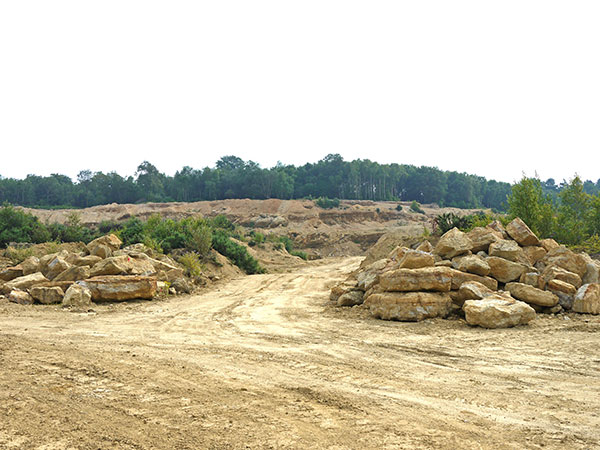
West Sussex Local Geological Sites - Bognor Common Quarry (img 397)
Northeast end of quarry showing faces up to 10 m high cut in sandstones of the Hythe Formation. Quarried blocks of cherty sandstone in foreground.
Photo taken: 27/07/2012
Grid ref TQ00922145
Direction NE
Image file: P1020574ed.jpg


West Sussex Local Geological Sites - Bognor Common Quarry (img 398)
Centre of northeast quarry showing faces up to 10 m high exposing sandstones of Hythe Formation. Shows apparent dip changes and deformation possibly caused by slumping or cambering.
Photo taken: 27/07/2012
Grid ref TQ01022145
Direction NE
Image file: P1020577ed.jpg

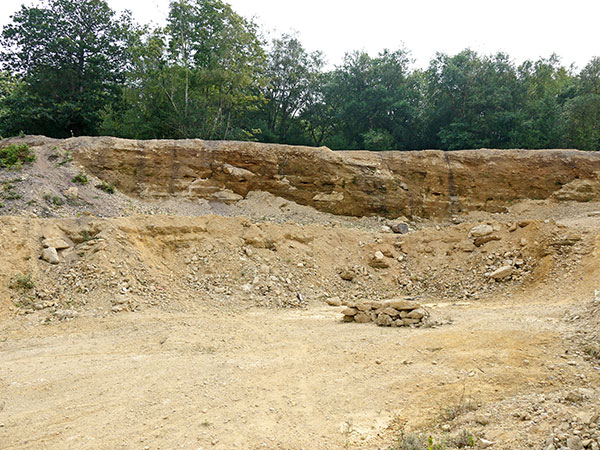
West Sussex Local Geological Sites - Bognor Common Quarry (img 399)
Northern end of quarry with face up to 4 m high exposing interbedded sands, siltstones and cherty sandstones of Hythe Formation.
Photo taken: 27/07/2012
Grid ref TQ01062169
Direction ESE
Image file: P1020597ed.jpg

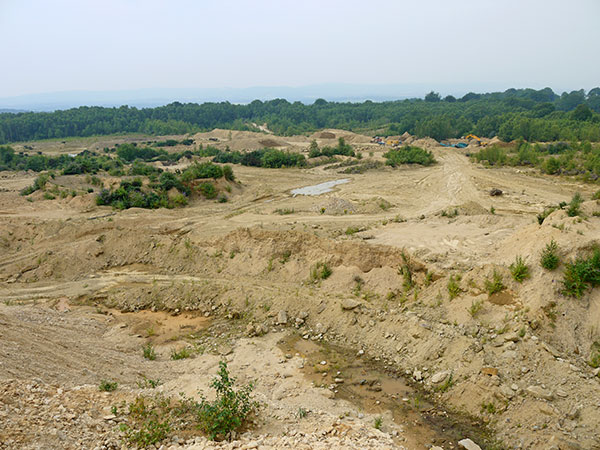
West Sussex Local Geological Sites - Bognor Common Quarry (img 400)
Southwestern floor of quarry viewed from headwall. It has been mostly excavated and is covered with spoil but new excavation work can be seen at top right.
Photo taken: 27/07/2012
Grid ref TQ01082157
Direction SW
Image file: P1020605ed.jpg

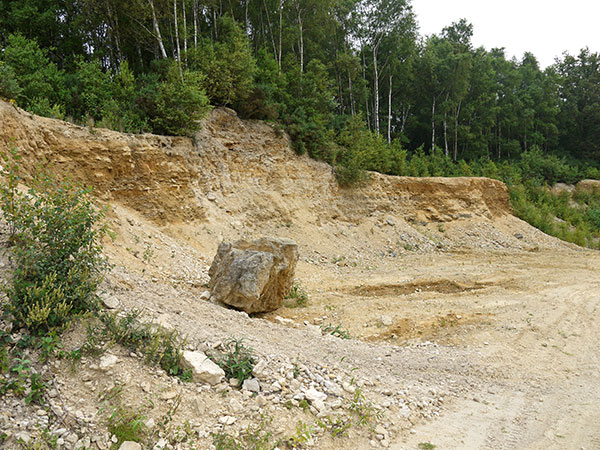
West Sussex Local Geological Sites - Bognor Common Quarry (img 401)
Face up to 6 m high at the eastern head of the quarry exposing interbedded sands siltstones and cherty sandstones. Large block of massive unstratified sandstone in foreground.
Photo taken: 27/07/2012
Grid ref TQ01152144
Direction east
Image file: P1020614ed.jpg

Coppedhall Hanger, Billingshurst (TQ02/12)
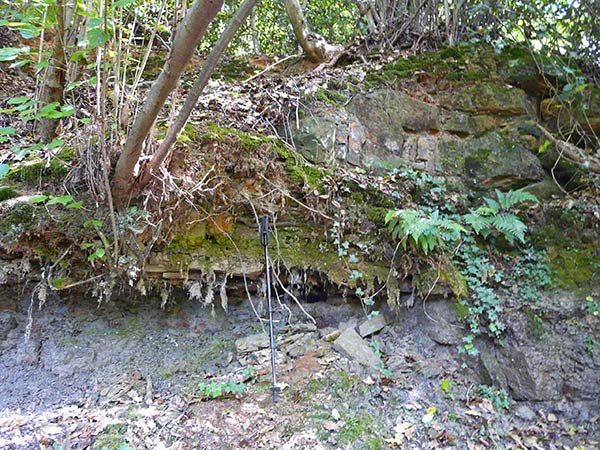
West Sussex Local Geological Sites - Coppedhall Hanger (img 403)
Upper 2.5 m of the Weald Clay formation exposure showing 1.5 m of sandstones overlying soft grey clay.
1 m pole for scale.
Photo taken: 30/06/2010
Grid ref TQ07772758
Direction SE
Image file: P1010692ed.jpg

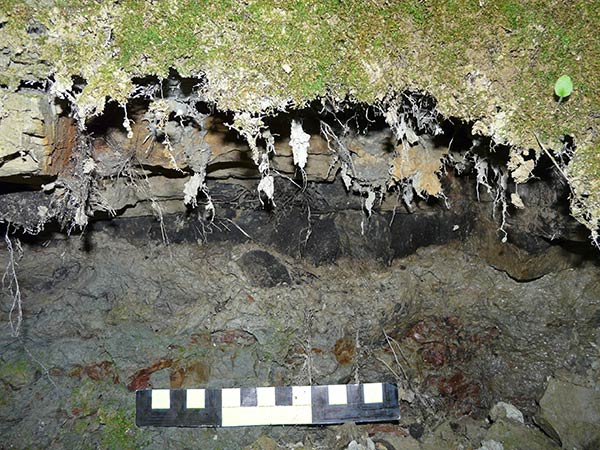
West Sussex Local Geological Sites - Coppedhall Hanger (img 404)
Detail of contact between clay and sandstone in photo 1 showing intervening layer of lignitic tree fragments.
Scale 30 cm long.
Photo taken: 30/06/2010
Grid ref TQ07772758
Direction SE
Image file: P1010693ed.jpg

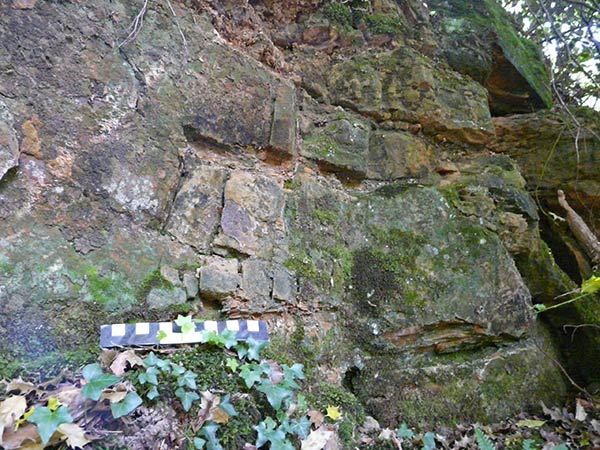
West Sussex Local Geological Sites - Coppedhall Hanger (img 405)
Upper more massive part of sandstone interval in photo 1 showing bed curvature indicating channel deposition (probably point bar).
Scale 30 cm long.
Photo taken: 30/06/2010
Grid ref TQ07772758
Direction SE
Image file: P1010694ed.jpg

Rudgwick Brickworks (TQ03/01)

DUPLICATE (img 407)
DUPLICATE
Image file: P1020318ed.jpg


West Sussex Local Geological Sites - Rudgwick Brickworks (img 408)
Shallow face cut in the top 3m of the Lower Red Clay with base of overlying Lower Blue Clay just visible. The clay is overlain by a layer of spoil about 2m thick.
Photo taken: 09/07/2012
Grid ref TQ08303438
Direction east
Image file: P1020318ed_2.jpg


DUPLICATE (img 409)
DUPLICATE
Image file: P1020328ed.jpg

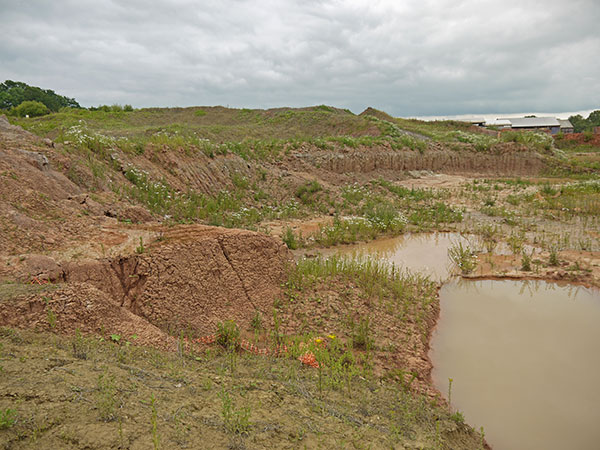
West Sussex Local Geological Sites - Rudgwick Brickworks (img 410)
Deepest part of partially flooded western pit with low face about 4m high cut in Lower Red Clay.
Photo taken: 09/07/2012
Grid ref TQ08203438
Direction SSE
Image file: P1020328ed_2.jpg


West Sussex Local Geological Sites - Rudgwick Brickworks (img 411)
Low face about 4m high cut in Lower Red Clay in deepest part of western pit.
1m pole for scale.
Photo taken: 09/07/2012
Grid ref TQ08233434
Direction east
Image file: P1020329ed.jpg

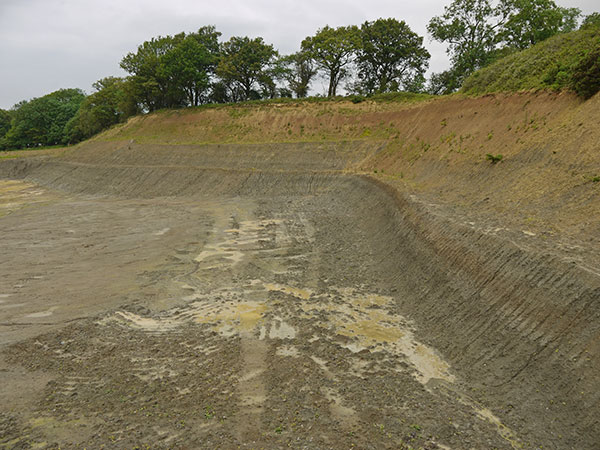
West Sussex Local Geological Sites - Rudgwick Brickworks (img 412)
Overview of northern and eastern faces and benches in the main eastern pit. Faces expose Lower and Upper Blue Clays overlain by Upper Red Clay and at the top, Yellow Clay.
Photo taken: 09/07/2012
Grid ref TQ08523440
Direction north
Image file: P1020337ed.jpg

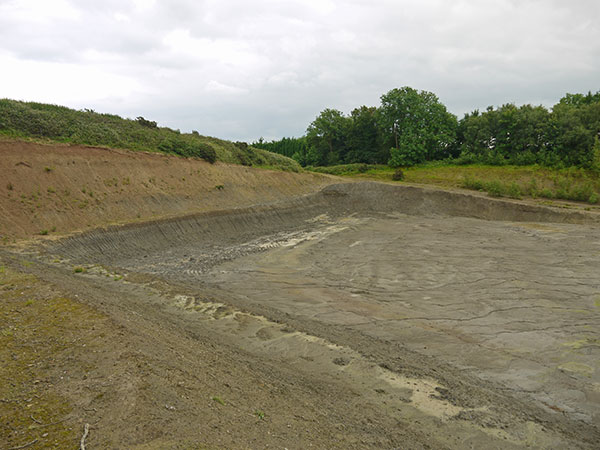
DUPLICATE (img 413)
DUPLICATE
Image file: P1020349ed.jpg

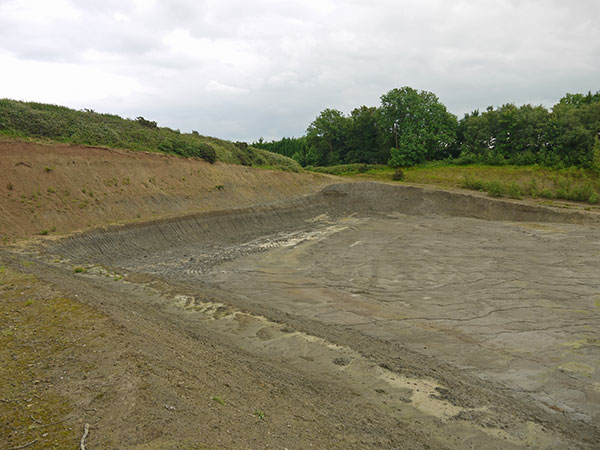
West Sussex Local Geological Sites - Rudgwick Brickworks (img 414)
Overview of main eastern pit from higher bench. Face exposes Lower and Upper Blue Clays overlain by Upper Red Clay and at the top, Yellow Clay.
Photo taken: 09/07/2012
Grid ref TQ08463447
Direction SSE
Image file: P1020349ed_2.jpg

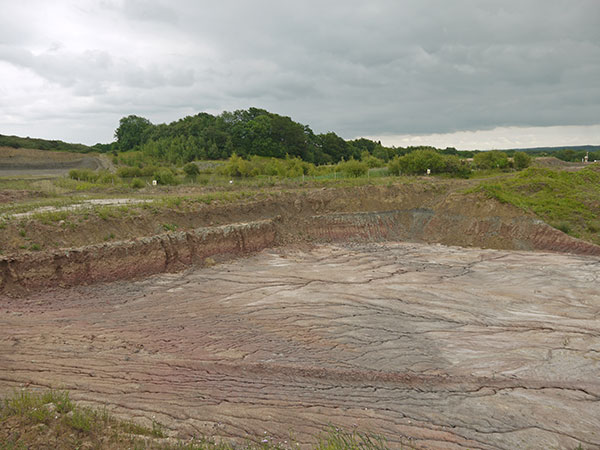
West Sussex Local Geological Sites - Rudgwick Brickworks (img 415)
Shallow western part of pit with face cut in the top 3m of the Lower Red Clay. A layer of spoil about 2m thick lies on top of the Red Clay.
Photo taken: 09/07/2012
Grid ref TQ08263441
Direction SSE
Image file: P1020355ed.jpg

Steyning Bowl (TQ10/02)
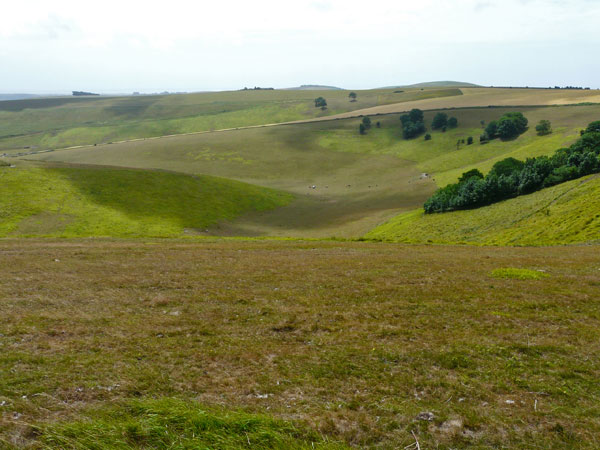
West Sussex Local Geological Sites - Steyning Bowl (img 417)
Steyning Bowl from the head of the coombe. The cloud shadow at centre accentuates the rounded valley cross-section. The dry valley turns to the left (east) parallel to a spur which separates it from a smaller dry valley beyond.
Photograph taken: 16/07/2010
Grid ref. TQ16611000
Direction south
Image file: P1010822ed.jpg

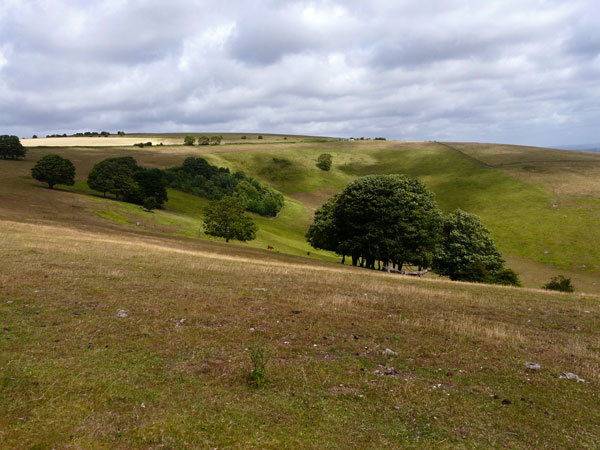
West Sussex Local Geological Sites - Steyning Bowl (img 418)
The bowl-shaped head of the coombe from Monarch's Way.
Photograph taken: 16/07/2010
Grid ref. TQ16350941
Direction NE
Image file: P1010827ed.jpg


West Sussex Local Geological Sites - Steyning Bowl (img 419)
View of the spur between Steyning Bowl and the smaller tributary dry valley to the south.
Photograph taken: 16/07/2010
Grid ref. TQ16520930
Direction east
Image file: P1010830ed.jpg


West Sussex Local Geological Sites - Steyning Bowl (img 420)
Lower part of Steyning Bowl dry valley from Monarch's Way. Cloud shadow at centre accentuates the smooth valley cross-section.
Photograph taken: 16/07/2010
Grid ref. TQ16440934
Direction ENE
Image file: P1010833ed.jpg

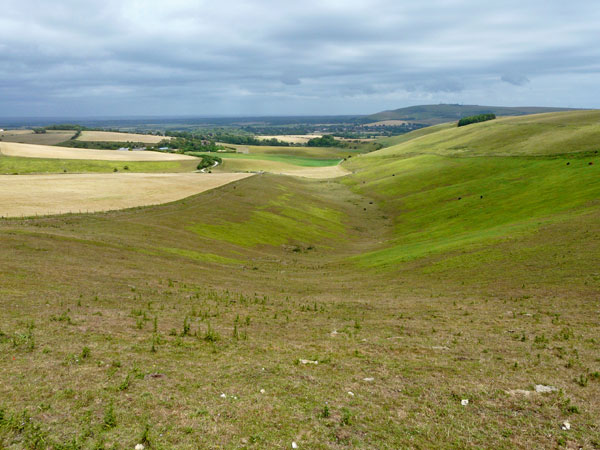
West Sussex Local Geological Sites - Steyning Bowl (img 421)
Tributary dry valley showing evidence of former slump lobes on the right (SE) side. Lobes emphasised by vegetation change.
Photograph taken: 16/07/2010
Grid ref. TQ16700908
Direction ENE
Image file: P1010846ed.jpg

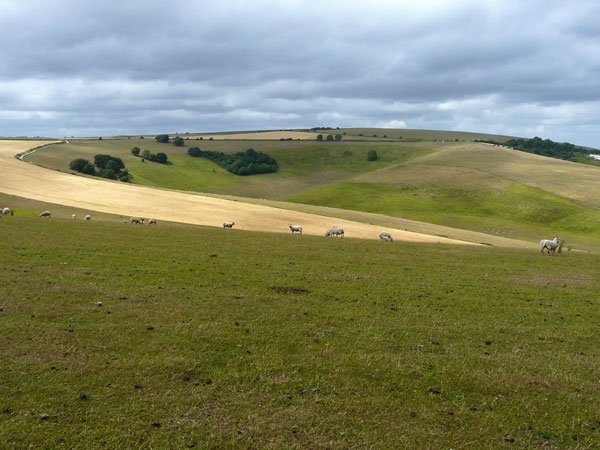
West Sussex Local Geological Sites - Steyning Bowl (img 422)
Steyning Bowl viewed from across the tributary dry valley to the south.
Photograph taken: 16/07/2010
Grid ref. TQ17070906
Direction NW
Image file: P1010853ed.jpg

Gaster Pit 7, Sompting (TQ10/07)
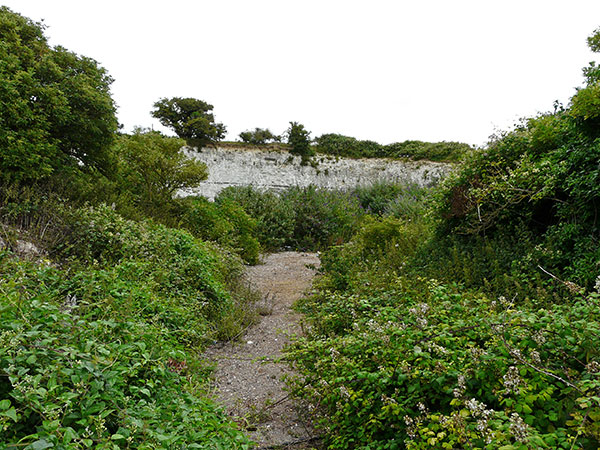
West Sussex Local Geological Sites - Gaster Pit 7 - Sompting (img 424)
Chalk face viewed from entrance. Bedding dips 5 degrees to the right (SSW).
Photo taken: 20/07/2010
Grid ref TQ15600590
Direction east
Image file: P1010860ed.jpg

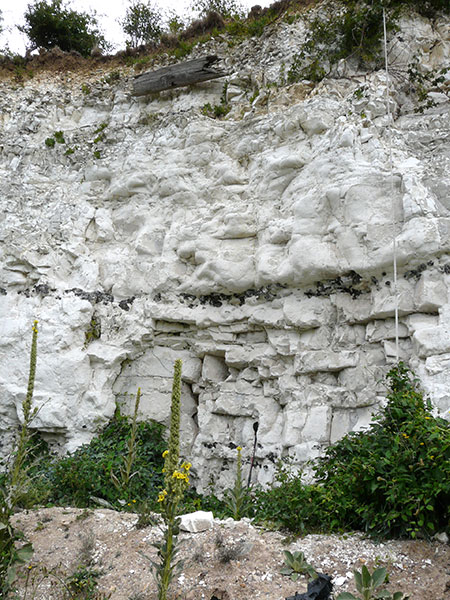
West Sussex Local Geological Sites - Gaster Pit 7 - Sompting (img 425)
Part of central chalk face showing prominent Charmandean Flint band at centre, thinner flint bands near base and thin marl seams in the upper section.
Face 5.5m high.
Photo taken: 20/07/2010
Grid ref TQ15640590
Direction east
Image file: P1010863ed.jpg

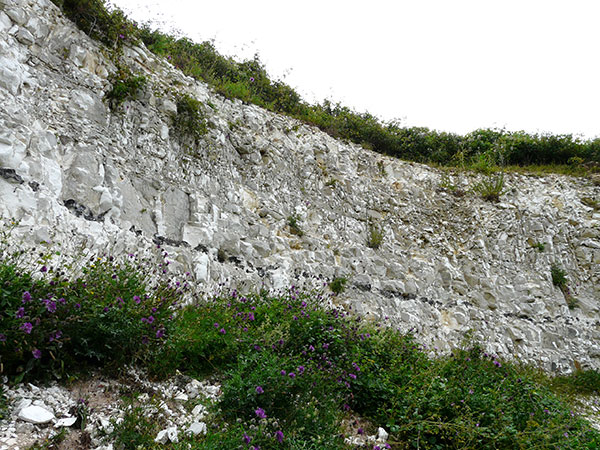
West Sussex Local Geological Sites - Gaster Pit 7 - Sompting (img 426)
Southern part of chalk face up to 7 m high showing the prominent Charmandean Flint band.
Bedding dips at 5 degrees to the right (SSW).
Photo taken: 20/07/2010
Grid ref TQ15640590
Direction SSW
Image file: P1010865ed.jpg

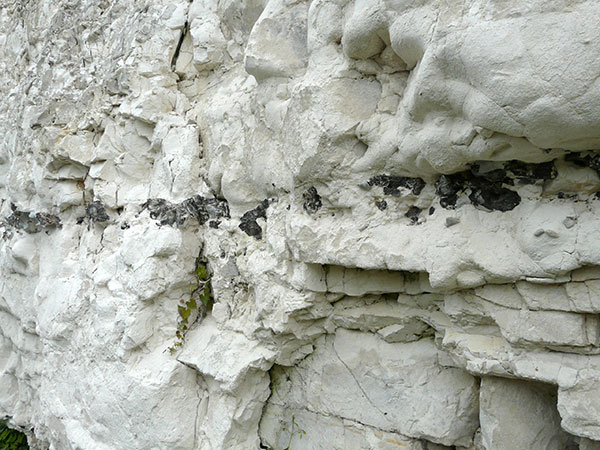
West Sussex Local Geological Sites - Gaster Pit 7 - Sompting (img 427)
Detail of Charmandean Flint band showing large irregular flints.
Thickness of layer is 10 to 15cm.
Photo taken: 20/07/2010
Grid ref TQ15640590
Direction NE
Image file: P1010868ed.jpg

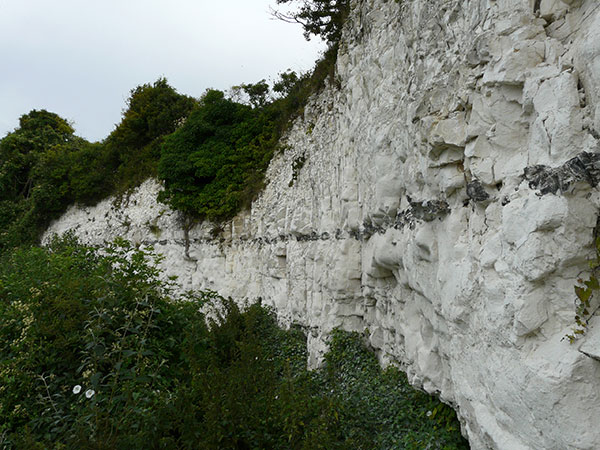
West Sussex Local Geological Sites - Gaster Pit 7 - Sompting (img 428)
Northern part of chalk face up to 7m high showing prominent layer of large flints (Charmandean Flint band).
Photo taken: 20/07/2010
Grid ref TQ15640590
Direction NNW
Image file: P1010869ed.jpg

Charmandean Quarry, Worthing (TQ10/10)
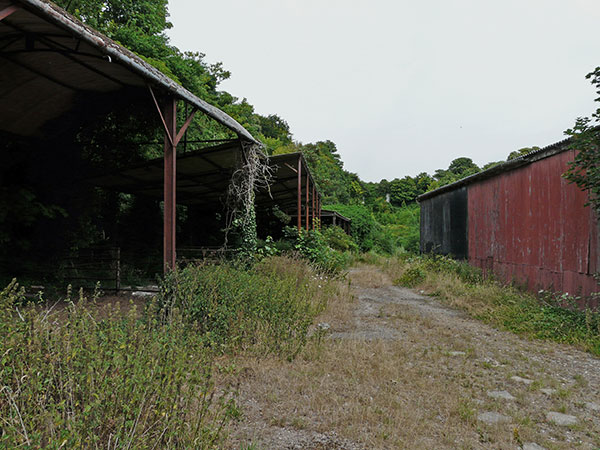
West Sussex Local Geological Sites - Charmandean Quarry (img 430)
View from southern entrance showing disused open sheds along the western side and one of the barns in the centre. Vegetation is taking over the site but chalk faces are still visible behind the open sheds.
Photo taken: 20/07/2010
Grid ref TQ14820569
Direction north
Image file: P1010873ed.jpg


West Sussex Local Geological Sites - Charmandean Quarry (img 431)
Vegetated chalk face visible behind one of the open sheds.
Photo taken: 20/07/2010
Grid ref TQ14820571
Direction west
Image file: P1010876ed.jpg

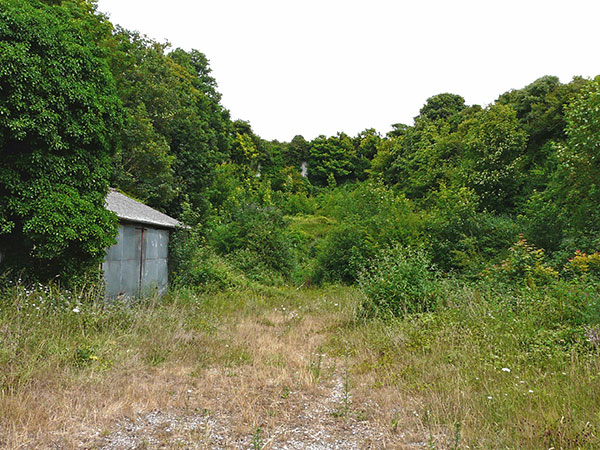
West Sussex Local Geological Sites - Charmandean Quarry (img 432)
The northern part of the quarry floor is covered with impenetrable scrub and the chalk faces are almost completely covered by vegetation with occasional glimpses of chalk behind.
Photo taken: 20/07/2010
Grid ref TQ014820575
Direction north
Image file: P1010877ed.jpg

Cote Bottom, High Salvington (TQ10/62)
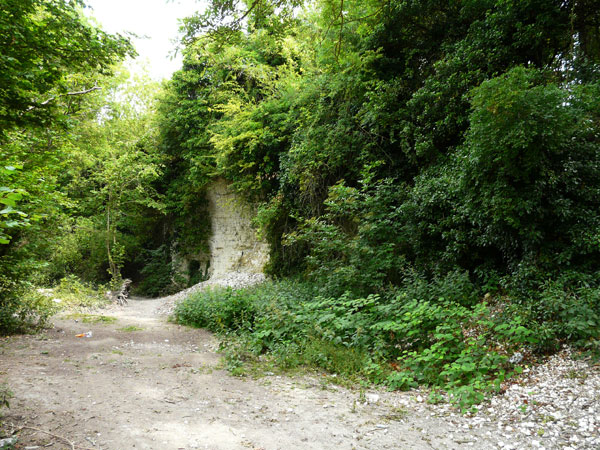
West Sussex Local Geological Sites - Cote Bottom (img 434)
Primary exposure A close to the quarry entrance. Exposes middle Culver Chalk Formation from upper Tarrant Chalk to lower SpetisburyChalk.
Note the cleared central section.
Photograph taken: 20/07/2010
Grid ref. TQ11510636
Direction ENE
Image file: P1010881ed.jpg

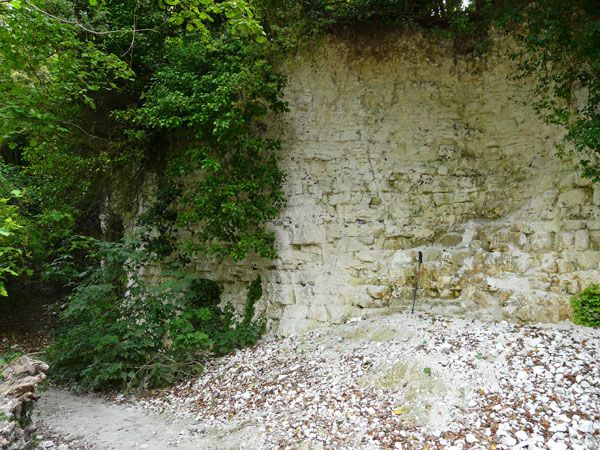
West Sussex Local Geological Sites - Cote Bottom (img 435)
Central cleared section of primary exposure A representing middle Culver Chalk Formation between the upper Tarrant/lower Spetisbury Chalk members. Blocky, well jointed chalk with tubular and sheet flint layers. Height 6 m.
Photograph taken: 20/07/2010
Grid ref. TQ11540638
Direction SE
Image file: P1010883ed.jpg


West Sussex Local Geological Sites - Cote Bottom (img 436)
Right (SW) side of primary exposure A of middle Culver Chalk mostly obscured by vegetation.
Photograph taken: 20/07/2010
Grid ref. TQ11540638
Direction SSW
Image file: P1010884ed.jpg

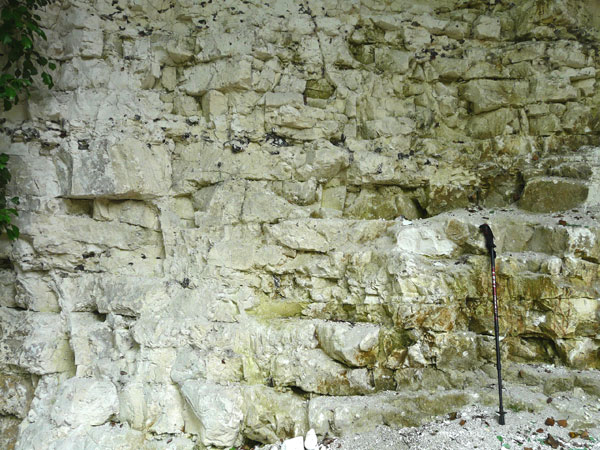
West Sussex Local Geological Sites - Cote Bottom (img 437)
Detail of central face in photo 2 showing thick layers of tubular flints above and thinner flint layers including sheet flints below. Shows lateral variation in bedding and channel like features.
1 m pole for scale.
Photograph taken: 20/07/2010
Grid ref. TQ11540638
Direction SE
Image file: P1010885ed.jpg

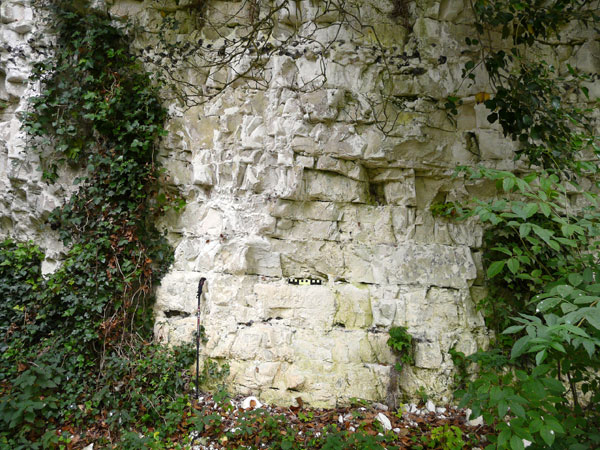
West Sussex Local Geological Sites - Cote Bottom (img 438)
Close-up of lower face to left of cleared section in photo 2, showing prominent layer of tubular flints near top (probably the Cote Bottom Flint) and thinner flint layers towards the base including a layer of sheet flints.
1 m pole for scale.
Photograph taken: 20/07/2010
Grid ref. TQ11550638
Direction SE
Image file: P1010888ed.jpg

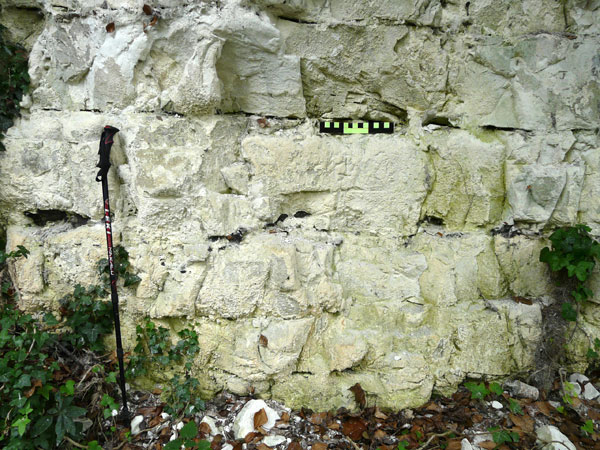
West Sussex Local Geological Sites - Cote Bottom (img 439)
Detail of face shown in photo 5 showing a thin sheet flint layer and a layer of large tubular flints below.
30 cm scale.
Photograph taken: 20/07/2010.
Grid ref. TQ11550638
Direction SE
Image file: P1010889ed.jpg

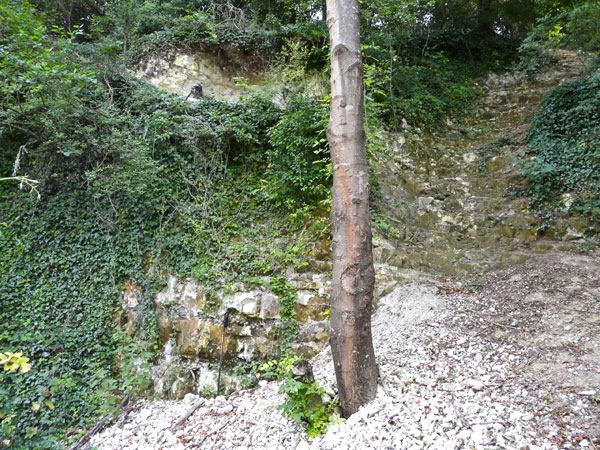
West Sussex Local Geological Sites - Cote Bottom (img 440)
Exposure B on a steep vegetated slope near the head of the quarry. There is a small cleared cave like section at top left.
Photograph taken: 20/07/2010
Grid ref. TQ11600648
Direction east
Image file: P1010891ed.jpg

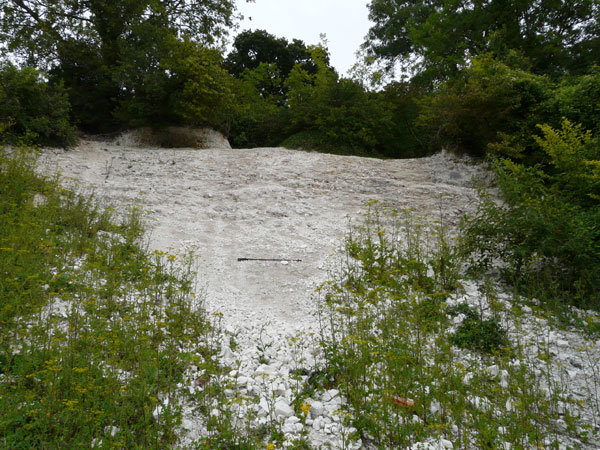
West Sussex Local Geological Sites - Cote Bottom (img 441)
Exposure C is a bare chalk slope at the head of the quarry.
1m pole for scale.
Photograph taken: 20/07/2010
Grid ref. TQ11590649
Direction NE
Image file: P1010893.jpg

Hill Barn Pit, North Lancing (TQ10/89)
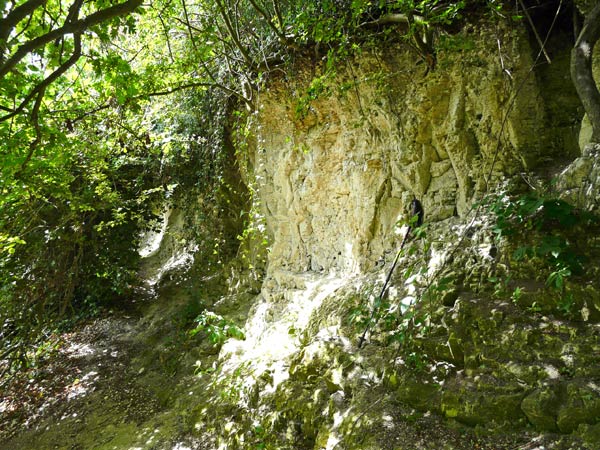
West Sussex Local Geological Sites - Hill Barn Pit (img 443)
View along upper quarry face from centre showing difficulty of access due to dense vegetation and the steep debris slope. Exposure in foreground is also shown in photo 3.
1 m pole for scale.
Photograph taken: 16/07/201
Grid ref TQ18370624
Direction SW
Image file: P1010835ed.jpg


West Sussex Local Geological Sites - Hill Barn Pit (img 444)
Detail of chalk face shown in photo 3 showing prominent layer of irregular flints across centre.
1 m pole for scale.
Photograph taken: 16/07/2010
Grid ref TQ18370623
Direction NW
Image file: P1010837ed.jpg

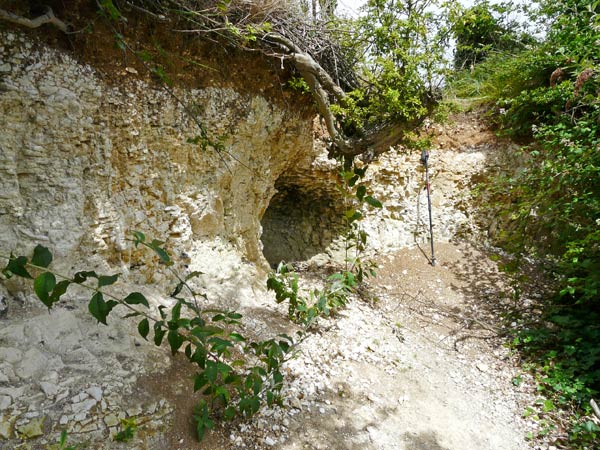
West Sussex Local Geological Sites - Hill Barn Pit (img 445)
Right (NE) end of upper quarry face about 1.5 m high showing Tarrant Chalk, weathered in the upper part.
1 m pole for scale.
Photograph taken: 16/07/2010
Grid ref TQ18380625
Direction NE
Image file: P1010838ed.jpg

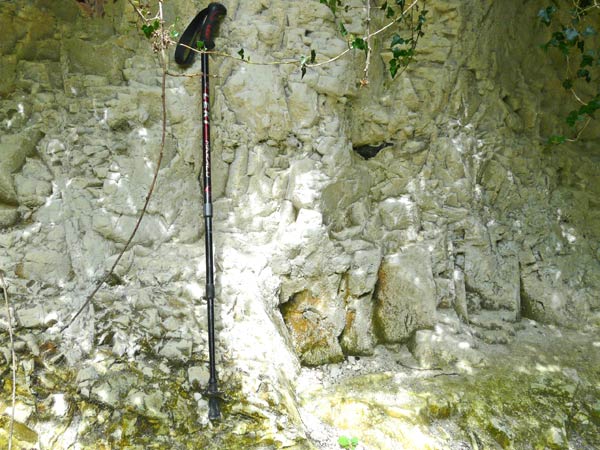
West Sussex Local Geological Sites - Hill Barn Pit (img 446)
Detail of chalk face shown in photo 7 showing layer of irregular flints.
1 m pole for scale.
Photograph taken: 16/07/2010
Grid ref TQ18360622
Direction NW
Image file: P1010840ed.jpg


West Sussex Local Geological Sites - Hill Barn Pit (img 447)
Left (SW) end of upper quarry face showing clean white Tarrant Chalk with layer of irregular flints half way up the face.
1 m pole for scale.
Photograph taken: 16/07/2010
Grid ref TQ18360622
Direction NE
Image file: P1010841ed.jpg

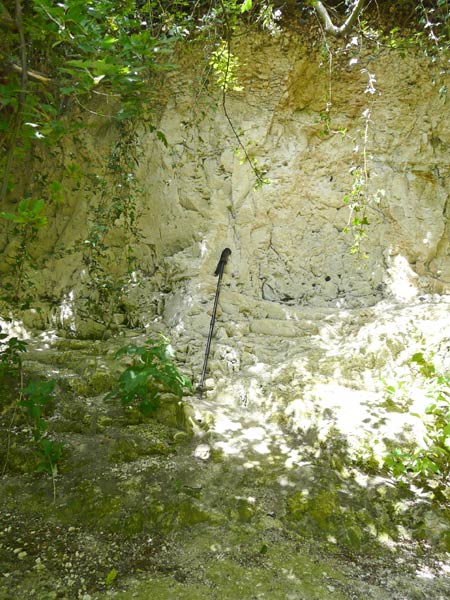
West Sussex Local Geological Sites - Hill Barn Pit (img 448)
Central part of upper quarry face showing 3 m high exposure of Tarrant Chalk with prominent layer of irregular flints half way up the face.
1 m pole for scale.
Photograph taken: 16/07/2010
Grid ref TQ18370623
Direction NW
Image file: P1010842ed.jpg

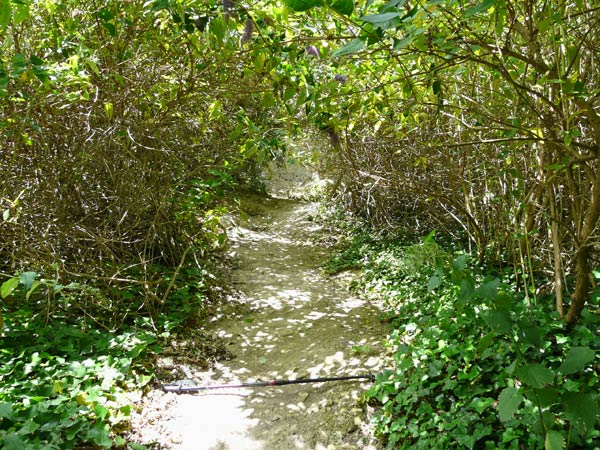
West Sussex Local Geological Sites - Hill Barn Pit (img 449)
Steep path up slippery talus slope to upper quarry face.
Photograph taken: 16/07/2010
Grid ref TQ18390623
Direction NW
Image file: P1010843ed.jpg

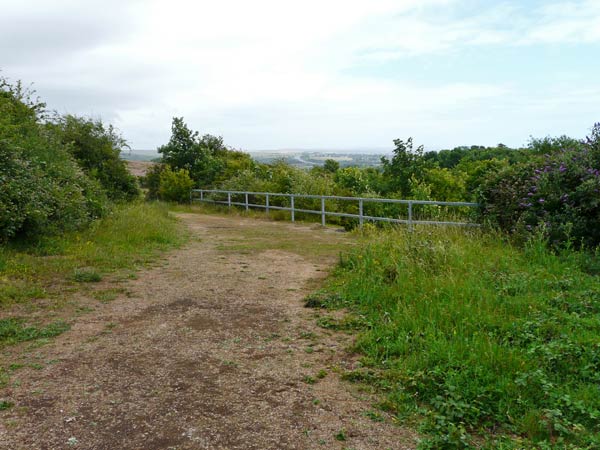
West Sussex Local Geological Sites - Hill Barn Pit (img 450)
Fence along top of quarry face.
Photograph taken: 16/07/2010
Grid ref TQ18340624
Direction ENE
Image file: P1010845ed.jpg

Jacket's Hill, Abingworth (TQ11/04)

West Sussex Local Geological Sites - Jacket's Hill (img 452)
Road cutting from the south showing exposures of Hythe Formation on both sides and extensive vegetation cover.
Photograph taken: 07/07/2010
Grid ref. TQ10081631
Direction NNE
Image file: P1010744ed.jpg

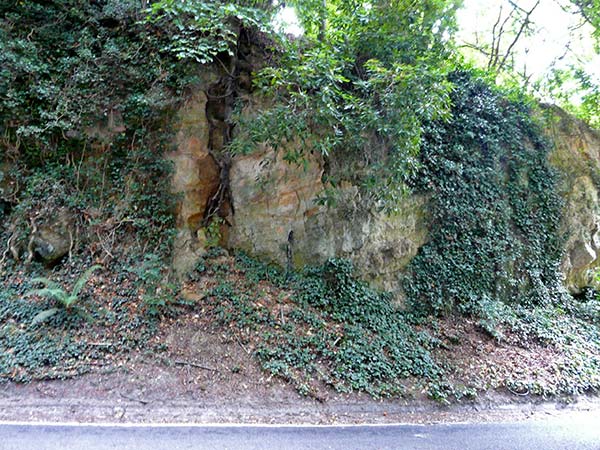
West Sussex Local Geological Sites - Jacket's Hill (img 453)
Relatively clean sandstone exposure on eastern side of road. Shows alternating beds of soft sandstone (hassock) and cemented sandstone (rag) with concretions. Bedding dips to left (north). 1 m pole for scale.
Photograph taken: 07/07/2010
Image file: P1010748ed.jpg

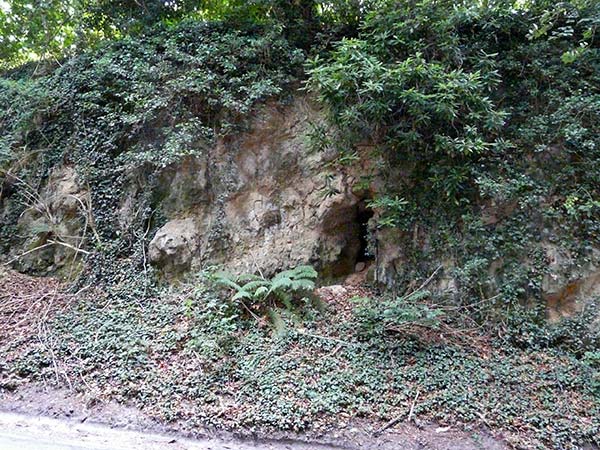
West Sussex Local Geological Sites - Jacket's Hill (img 454)
Relatively clean exposure on eastern side of road showing alternating harder (rag) and softer (hassock) sandstone layers and a zone of prominent concretions (doggers). Bedding dips to left (north).
1 m pole for scale.
Photograph taken: 07/07/2010
Image file: P1010749ed.jpg

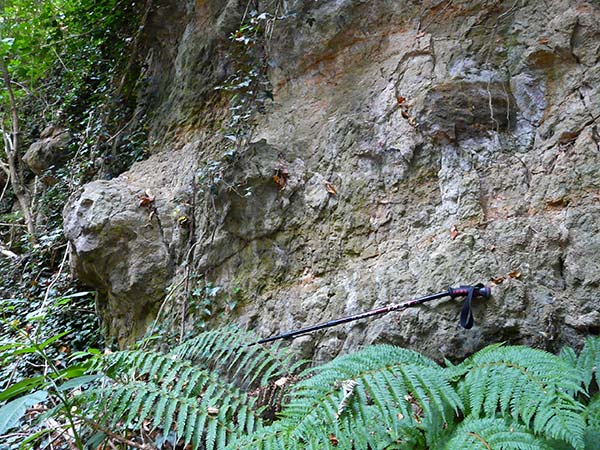
West Sussex Local Geological Sites - Jacket's Hill (img 455)
Detail of face in photo 3 showing sandstone (rag) at base, overlain by softer sandstone (hassock), overlain in turn by harder sandstone with large concretions (doggers). 1 m pole for scale.
Photograph taken: 07/07/2010
Grid ref. TQ10091633
Direction east
Image file: P1010751ed.jpg

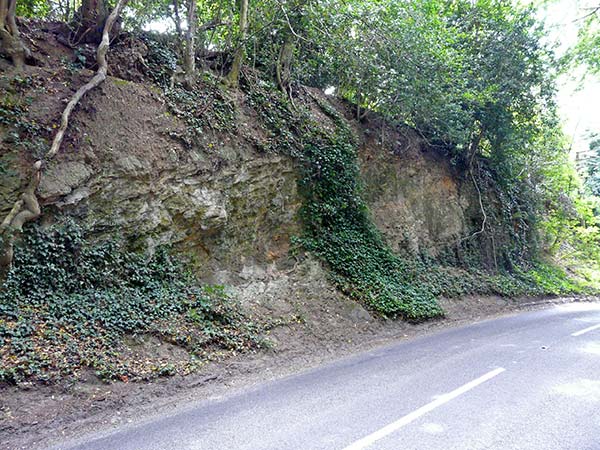
West Sussex Local Geological Sites - Jacket's Hill (img 456)
Largest exposed face on eastern side of road at crest of hill, showing alternating softer (hassock) and harder (rag) sandstone beds dipping to left (north). About 8 m high.
Photograph taken: 07/07/2010
Grid ref. TQ10101636
Direction south
Image file: P1010754ed.jpg

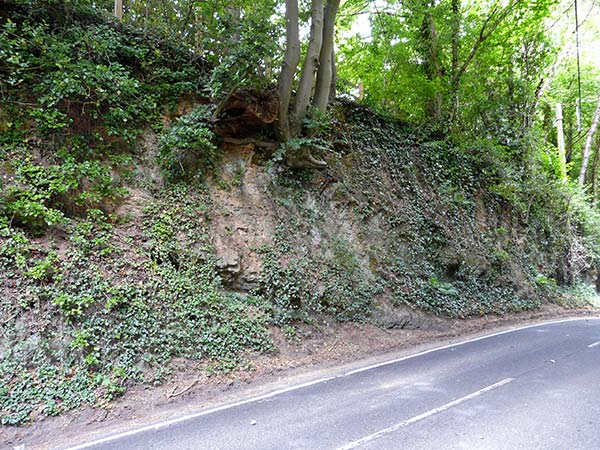
West Sussex Local Geological Sites - Jacket's Hill (img 457)
Largest exposed face on western side of road at crest of hill showing alternating softer (hassock) and harder (rag) sandstone beds dipping right (north).
About 8 m high.
Photograph taken: 07/07/2010
Grid ref. TQ10101635
Direction NNW
Image file: P1010755ed.jpg

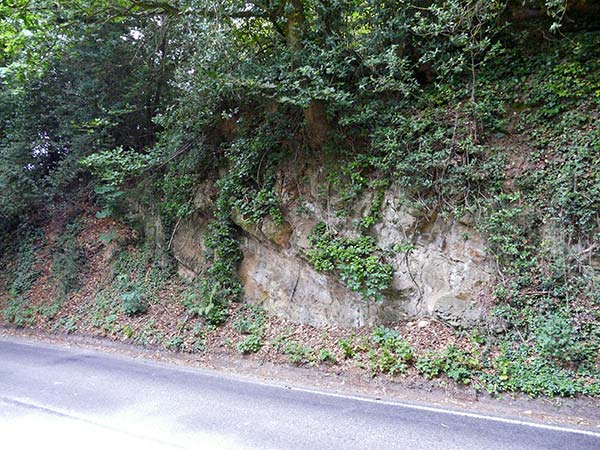
West Sussex Local Geological Sites - Jacket's Hill (img 458)
Exposure on western side of road close to crest of hill showing alternating softer (hassock) and harder (rag) sandstone beds dipping to the right (north) including a prominent layer of concretions.
Photograph taken: 07/07/2010
Grid ref. TQ10101635
Direction west
Image file: P1010756ed.jpg


West Sussex Local Geological Sites - Jacket's Hill (img 459)
Detail of face shown in photo 7 showing harder sandstone layer at base, overlain by softer sand layer containing small argillaceous nodules. Scale is 30 cm long.
Photograph taken: 07/07/2010
Grid ref. TQ10101635
Direction NW
Image file: P1010758ed.jpg

Warminghurst Road Cutting, Ashington (TQ11/108)
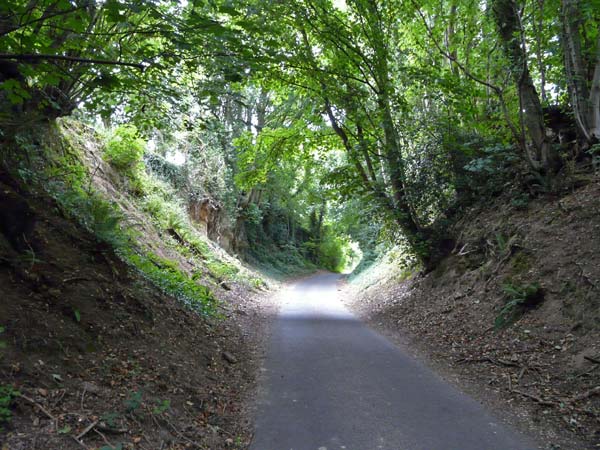
West Sussex Local Geological Sites - Warminghurst Cutting (img 461)
View of road cutting from south. Main Hythe Formation sandstone exposure is on left (west) side and small exposures also occur on the right (east) side.
Photograph taken: 07/07/2010
Grid ref. TQ11721672
Direction NNW
Image file: P1010791ed.jpg

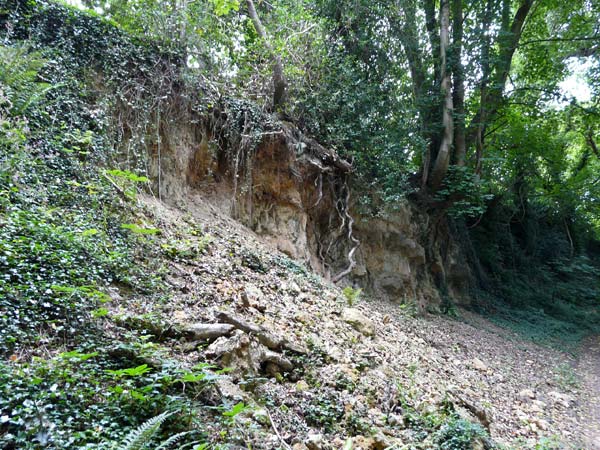
West Sussex Local Geological Sites - Warminghurst Cutting (img 462)
Southern end of Hythe Formation sandstone exposure on west side of cutting. This section is relatively free from vegetation. There is an extensive debris slope below the outcrop.
Photograph taken: 07/07/2010
Grid ref. TQ11711674
Direction NNW
Image file: P1010793ed.jpg

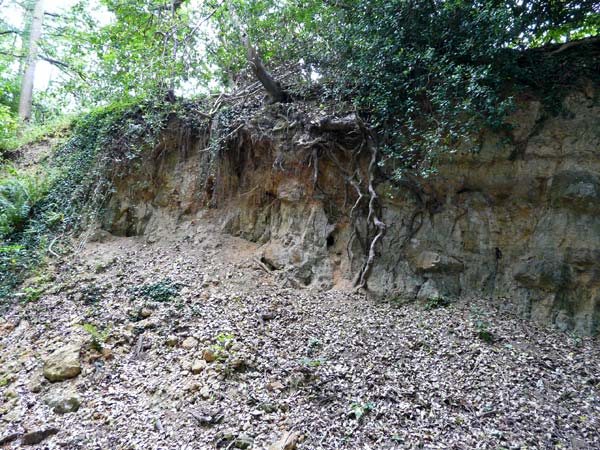
West Sussex Local Geological Sites - Warminghurst Cutting (img 463)
Southern end of Hythe Formation sandstone exposure showing alternating harder sandstone beds (rag) with large concretions (doggers) and softer sandstone beds (hassock). Beds dip gently to right (north).
Height about 4 m.
Photograph taken: 07/07/2010
Grid ref. TQ11701676
Direction WSW
Image file: P1010794ed.jpg

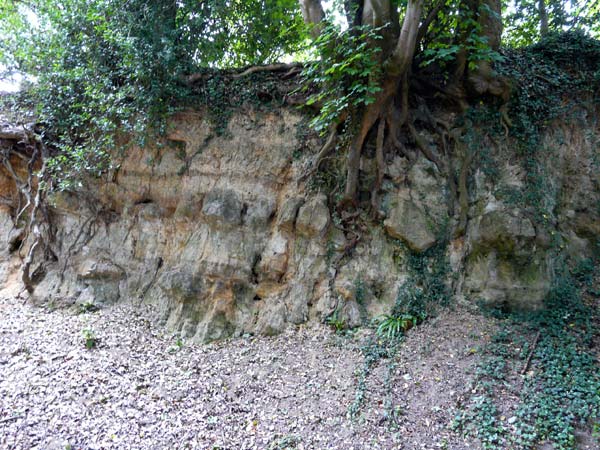
West Sussex Local Geological Sites - Warminghurst Cutting (img 464)
Hythe Formation sandstone exposure to right of photo 4 showing alternating harder sandstone beds (rag) with large concretions (doggers) and softer sandstone beds (hassock). Beds dip gently to right (north).
Height about 4 m.
Photograph taken: 07/07/2010
Grid ref. TQ11701676
Direction WSW
Image file: P1010795ed.jpg


West Sussex Local Geological Sites - Warminghurst Cutting (img 465)
Thickest part of the Hythe Formation sandstone exposure towards northern end, largely obscured by vegetation.
Height about 5 m.
Photograph taken: 07/07/2010
Grid ref. TQ11691679
Direction WSW
Image file: P1010797ed.jpg

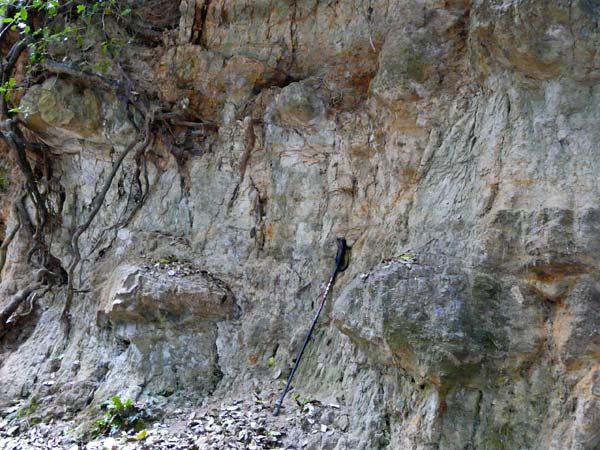
West Sussex Local Geological Sites - Warminghurst Cutting (img 466)
Close-up of base of exposure shown in photo 5 showing two horizons of harder sandstone (rag) with prominent concretions (doggers) separated by softer sandstone (hassock).
1 m pole for scale.
Photograph taken: 07/07/2010
Grid ref. TQ11701675
Image file: P1010799ed.jpg

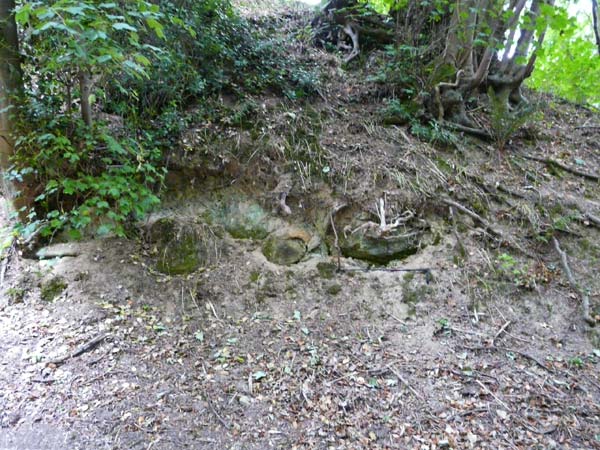
West Sussex Local Geological Sites - Warminghurst Cutting (img 467)
About 1 m thickness of poorly exposed Hythe Formation sandstone with doggers on east side of cutting.
1 m pole for scale.
Photograph taken: 07/07/2010
Grid ref. TQ11721673
Direction east
Image file: P1010802ed.jpg

B2139 Road Cutting, Thakeham (TQ11/126)
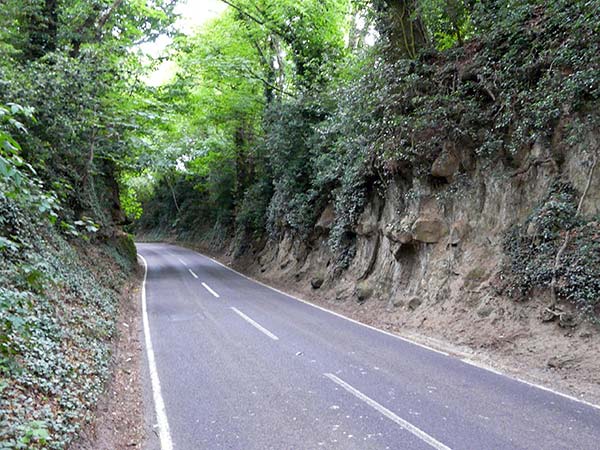
West Sussex Local Geological Sites - Thakeham Road Cutting (img 469)
Road cutting from south showing exposures of Hythe Formation sandstones on both sides. Hard cemented beds (rag) with concretions alternate with softer sandstones (hassock).
Photograph taken: 07/07/2010
Grid ref. TQ10431729
Direction NNE
Image file: P1010762ed.jpg

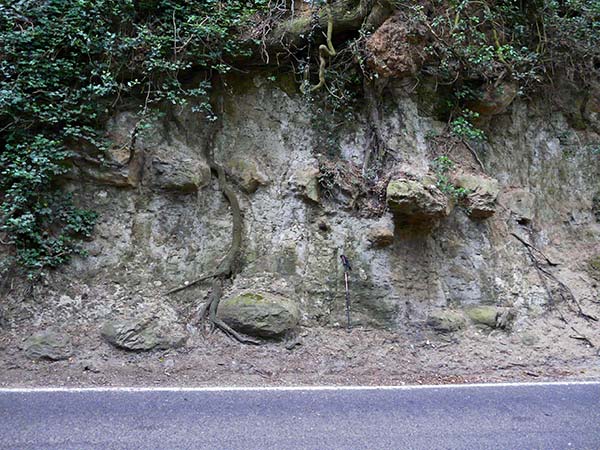
West Sussex Local Geological Sites - Thakeham Road Cutting (img 470)
Central part of east (right) side exposure shown in photo 1. Harder sandstone beds (rag) with large concretions (doggers) alternate with softer sandstone beds (hassock). Bedding dips to the right (south).
1 m pole for scale.
Photograph taken: 07/07/2010
Grid ref. TQ10441731
Direction SE
Image file: P1010764ed.jpg

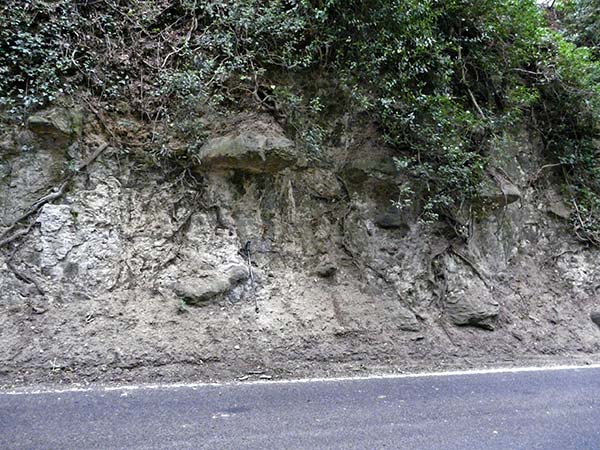
West Sussex Local Geological Sites - Thakeham Road Cutting (img 471)
Close-up of part of east (right) side exposure shown in photo 3. Harder sandstone beds (rag) with large concretions (doggers) alternate with softer sandstone beds (hassock). Bedding dips to the right (south).
1 m pole for scale.
Photograph taken: 07/07/2010
Grid ref. TQ10451732
Direction SE
Image file: P1010766ed.jpg

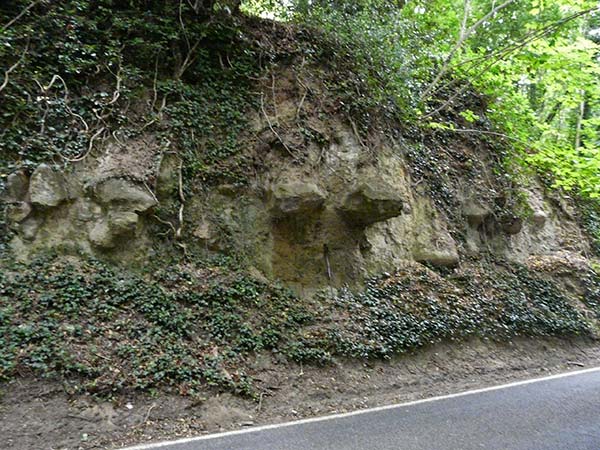
West Sussex Local Geological Sites - Thakeham Road Cutting (img 472)
Central part of west side exposure showing harder sandstone beds (rag) with large concretions (doggers) separated by softer sandstone beds (hassock). 1 m pole for scale.
Photograph taken: 07/07/2010
Grid ref. TQ10461733
Direction NNW
Image file: P1010768ed.jpg

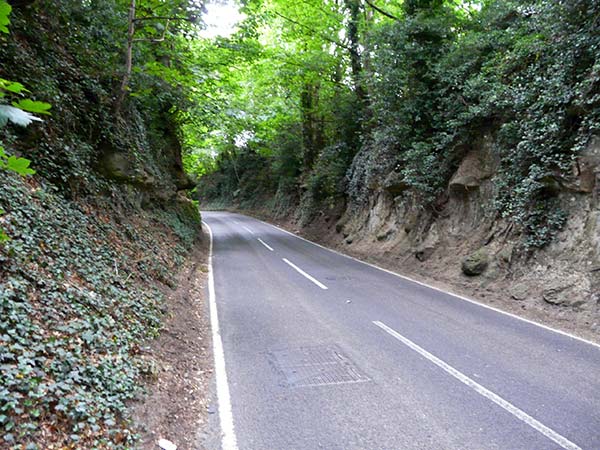
West Sussex Local Geological Sites - Thakeham Road Cutting (img 473)
Road cutting showing exposures of Hythe Formation sandstones on both sides. Hard cemented beds (rag) with concretions alternate with softer sandstones (hassock).
Photograph taken: 07/07/2010
Grid ref. TQ10441731
Direction NNE
Image file: P1010770ed.jpg

Rock Common Sand Quarry, Washington (TQ11/41)

West Sussex Local Geological Sites - Rock Common Sand Quarry (img 475)
Overview of southern part of quarry with faces up to 30m high exposing upper Folkestone Formation sands. Gault Clay overlies the sands.
Photo taken: 08/08/2012
Grid ref TQ12471358
Direction south
Image file: P1020670ed.jpg


West Sussex Local Geological Sites - Rock Common Sand Quarry (img 476)
Overview of NW end of quarry with currently active excavation in lower Folkestone Formation sands. Faces up to 20m high.
Photo taken: 08/08/2012
Grid ref TQ12481358
Direction SW
Image file: P1020673ed.jpg

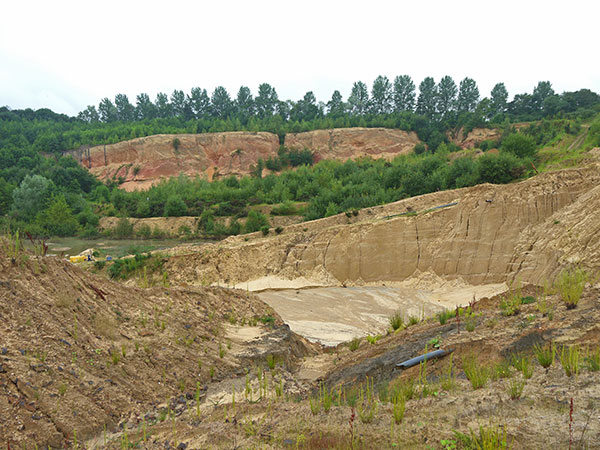
West Sussex Local Geological Sites - Rock Common Sand Quarry (img 477)
SW side of quarry with faces up to 30m high exposing upper Folkestone Formation sands. Subsidiary face up to 10m high in foreground exposes lower Folkestone Formation sands.
Photo taken: 08/08/2012
Grid ref TQ12601345
Direction SW
Image file: P1020707ed.jpg

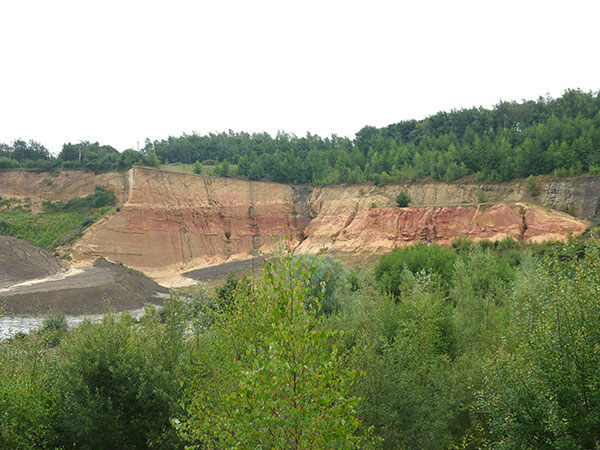
West Sussex Local Geological Sites - Rock Common Sand Quarry (img 478)
Faces at southern end of quarry up to 30m high exposing upper Folkestone Formation sands. Uppermost layer shows reticulate carstone veins. Below this is a zone of partly irregular veins and partly arcuate veins. The red stained layer below shows well spaced irregular carstone veins. Lower part shows bedding including cross-beds and concordant carstone layers. Capping of grey Gault Clay visible at right.
Photo taken: 08/08/2012
Grid ref TQ12491332
Direction SE
Image file: P1020718.jpg

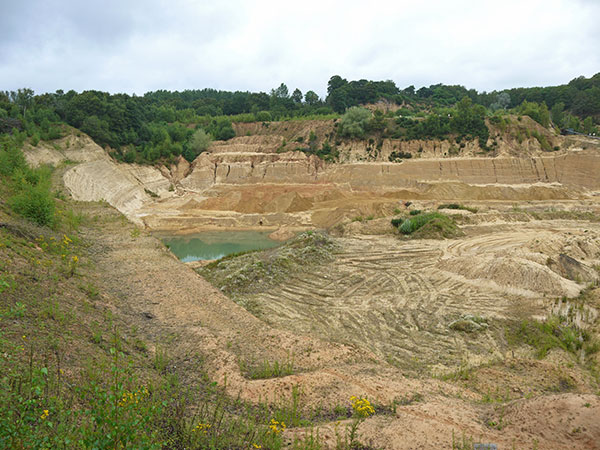
West Sussex Local Geological Sites - Rock Common Sand Quarry (img 479)
Active excavations in NW corner of quarry exposing up to 20m of lower Folkestone Formation sands.
Photo taken: 08/08/2012
Grid ref TQ12391337
Direction north
Image file: P1020723ed.jpg

Steyning Round Hill (TQ11/56)
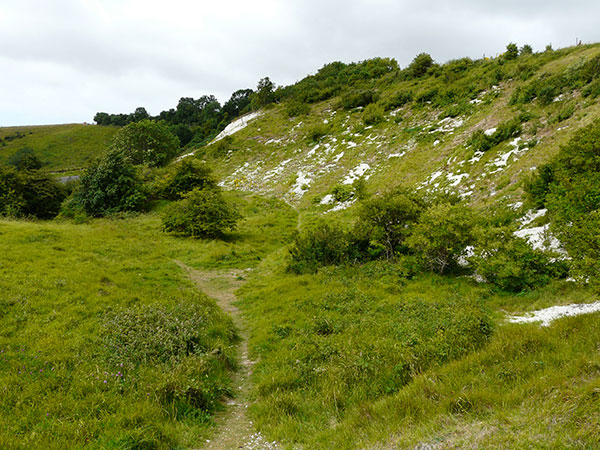
West Sussex Local Geological Sites - Steyning Round Hill (img 481)
Interior of Steyning Small Pit, exposing lower Lewes Chalk.
Photo taken: 16/07/2010
Grid ref TQ16841034
Direction SW
Image file: P1010810.jpg

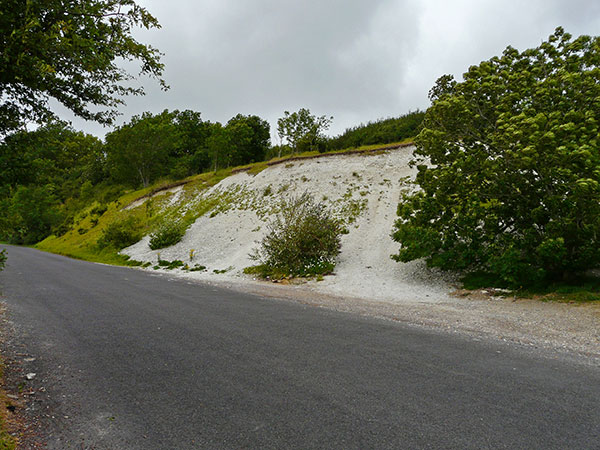
West Sussex Local Geological Sites - Steyning Round Hill (img 482)
Chalk face adjacent to the entrance to Steyning Small Pit, exposing lower Lewes Chalk.
Photo taken: 16/07/2010
Grid ref TQ16821027
Direction west
Image file: P1010811ed.jpg

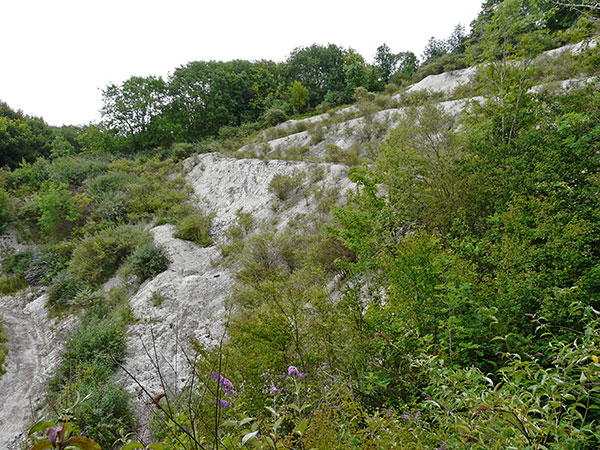
West Sussex Local Geological Sites - Steyning Round Hill (img 483)
View of benches in Steyning Round Hill quarry from bridleway on NW side. The Plenus Marl and Melbourn Rock are exposed in the lowermost bench and Holywell Nodular Chalk in the higher benches.
Photo taken: 16/07/2010
Grid ref TQ16811057
Direction SE
Image file: P1010813ed.jpg


West Sussex Local Geological Sites - Steyning Round Hill (img 484)
View of Steyning Round Hill quarry from bridleway on NW side showing the benches cut into the chalk. The Plenus Marl and Melbourn Rock are exposed in the lowermost part of the quarry and higher benches expose Holywell Nodular Chalk.
Photo taken: 16/07/2010
Grid ref TQ16831060
Direction SE
Image file: P1010815ed.jpg

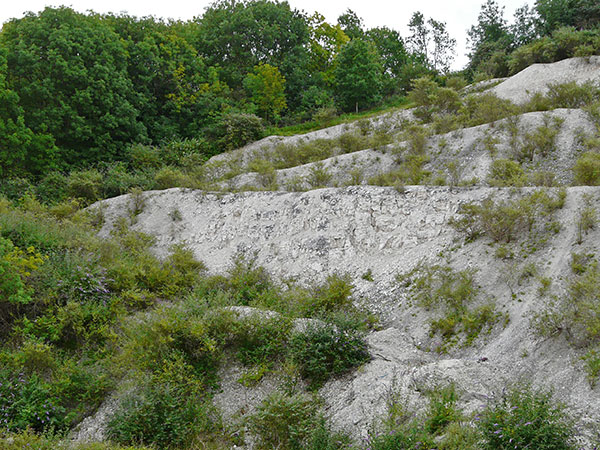
West Sussex Local Geological Sites - Steyning Round Hill (img 485)
Zoomed view of upper benches shown in photo 2, cut in Holywell Nodular Chalk.
Photo taken: 16/07/2010
Grid ref TQ16831060
Direction SSE
Image file: P1010818ed.jpg

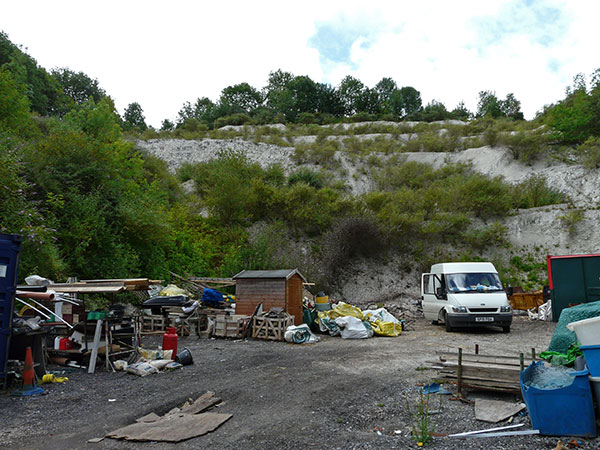
West Sussex Local Geological Sites - Steyning Round Hill (img 486)
View from Steyning Round Hill quarry floor which is used for commercial storage. The Plenus Marl and Melbourn Rock are exposed in the bench behind the van and the upper benches are cut in Holywell Nodular Chalk.
Photo taken: 16/07/2010
Grid ref TQ16861057
Direction SW
Image file: P1010819ed.jpg

Washington Chalk Pit, Horsham (TQ11/80)
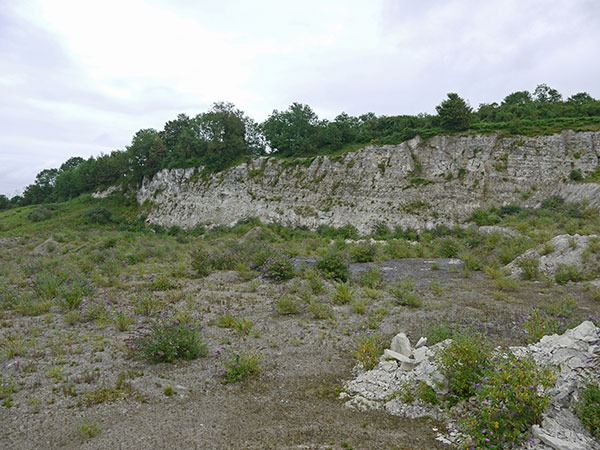
West Sussex Local Geological Sites - Washington Chalk Pit (img 488)
Lower part of quarry. East face up to 10 m high, exposing section from upper Zig Zag Chalk to lower Holywell Chalk.
Photo taken: 08/08/2012
Grid ref TQ12091213
Direction ENE
Image file: P2020749ed.jpg

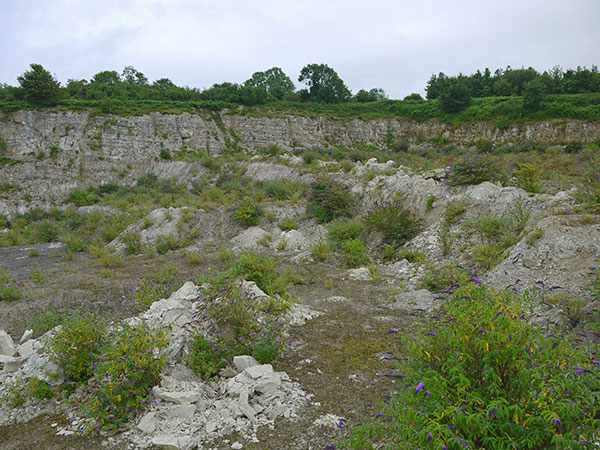
West Sussex Local Geological Sites - Washington Chalk Pit (img 489)
Upper part of quarry. East face up to 5m high, exposing lower Holywell Chalk.
Photo taken: 08/08/2012
Grid ref TQ12091213
Direction ESE
Image file: P2020751ed.jpg


West Sussex Local Geological Sites - Washington Chalk Pit (img 490)
Northern part of eastern face up to 8m high exposing section from upper Zig Zag Chalk to lower Holywell Nodular Chalk. Bedding dips gently to the right (south).
Photo taken: 08/08/2012
Grid ref TQ12091213
Direction ENE
Image file: P2020753interped.jpg

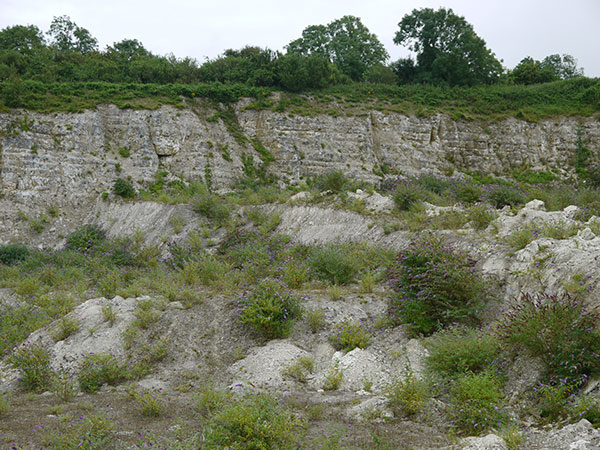
West Sussex Local Geological Sites - Washington Chalk Pit (img 491)
Central part of eastern face up to 5 m high exposing lower Holywell Nodular Chalk, also exposed in benches in foreground. Bedding dips gently to the right (south) emphasised by prominent marl seams.
Photo taken: 08/08/2012
Grid ref TQ12091213
Direction ESE
Image file: P2020755.jpg

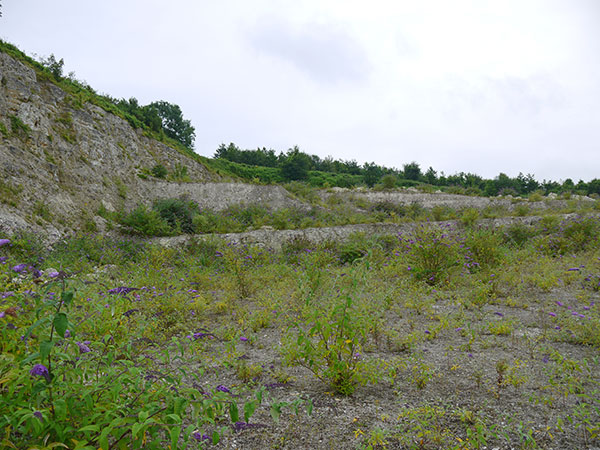
West Sussex Local Geological Sites - Washington Chalk Pit (img 492)
Eastern end of two low benches at the quarry centre, both up to 3m high. Lower bench cut in Zig Zag Chalk and upper bench cut in Melbourn Rock and Holywell Nodular Chalk.
Photo taken: 08/08/2012
Grid ref TQ12151217
Direction south
Image file: P2020760ed.jpg


West Sussex Local Geological Sites - Washington Chalk Pit (img 493)
Low bench extending across quarry centre and western quarry edge behind exposing lower Holywell Nodular Chalk.
Photo taken: 08/08/2012
Grid ref TQ12171210
Direction west
Image file: P2020777ed.jpg

Slinfold Stream and Quarry (TQ13/23)
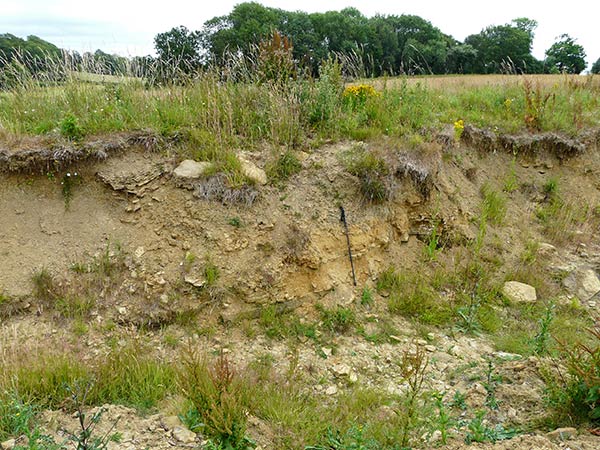
West Sussex Local Geological Sites - Slinfold Stream and Quarry (img 495)
Left (northern) end of preserved upper face showing mainly thin-bedded sandstone.
1 m pole for scale.
Photo taken: 07/07/2010
Grid ref TQ12763183
Direction SE
Image file: P1010724ed.jpg


West Sussex Local Geological Sites - Slinfold Stream and Quarry (img 496)
Centre of preserved upper quarry face showing exposure of thin bedded sandstones with a thick bedded Horsham Stone seam at base.
1 m pole for scale.
Photo taken: 07/07/2010
Grid ref TQ12763182
Direction SE
Image file: P1010725ed.jpg


West Sussex Local Geological Sites - Slinfold Stream and Quarry (img 497)
Base of right (southern) end of upper quarry face showing exposure of a Horsham Stone seam with ripple marked surface.
1 m pole for scale.
Photo taken: 07/07/2010
Grid ref TQ12763181
Direction east
Image file: P1010730ed.jpg

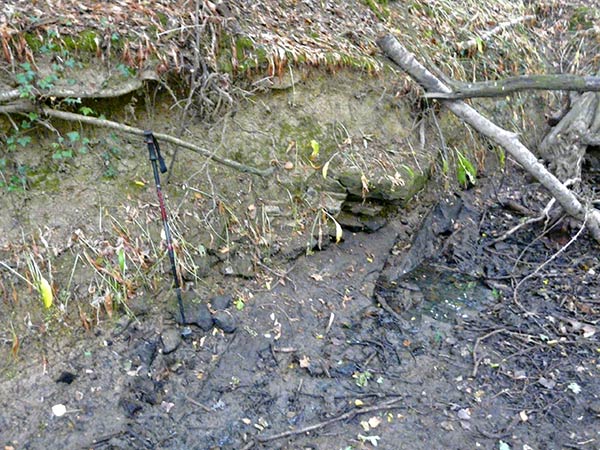
West Sussex Local Geological Sites - Slinfold Stream and Quarry (img 498)
Detail of sandstone outcrop shown in photo 4 in stream bed and lower east bank.
1 m pole for scale.
Photo taken: 07/07/2010
Grid ref TQ12413185
Direction east
Image file: P1010736ed.jpg


West Sussex Local Geological Sites - Slinfold Stream and Quarry (img 499)
Sandstone outcrop in stream bed and lower east bank.
1 m pole for scale.
Photo taken: 07/07/2010
Grid ref TQ12413185
Direction SSE
Image file: P1010737ed.jpg

Warnham Brick Pit, Horsham (TQ13/45)
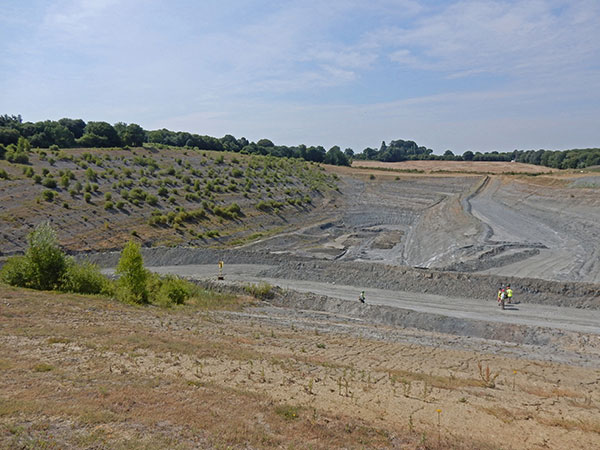
West Sussex Local Geological Sites - Warnham Brick Pit (update) (img 501)
Overview of pit showing active SW end in centre, weathered and vegetated slopes to left (SE) and benched slope to right (NW). Exposes about 45 m of lower Weald Clay.
Photo taken: 01/07/2018
Grid ref TQ18013543
Direction SW
Image file: 1_DSCN2819.jpg

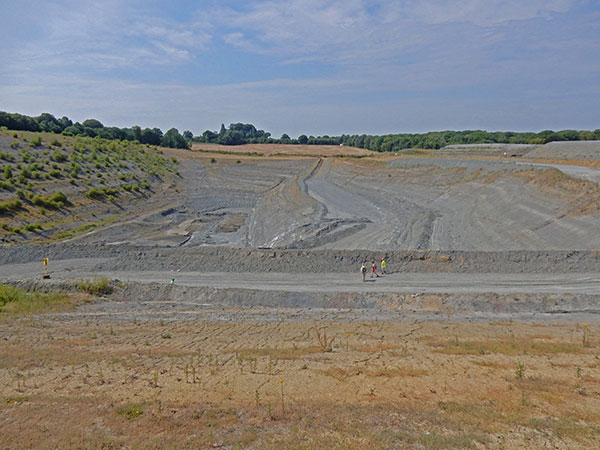
West Sussex Local Geological Sites - Warnham Brick Pit (update) (img 502)
Overview of pit showing active SW face centre left, weathered and vegetated slopes to left (SE) and benched slope to right (NW). Exposes about 45 m of lower Weald Clay.
Photo taken: 01/07/2018
Grid ref TQ18013543
Direction SW
Image file: 2_DSCN2818.jpg

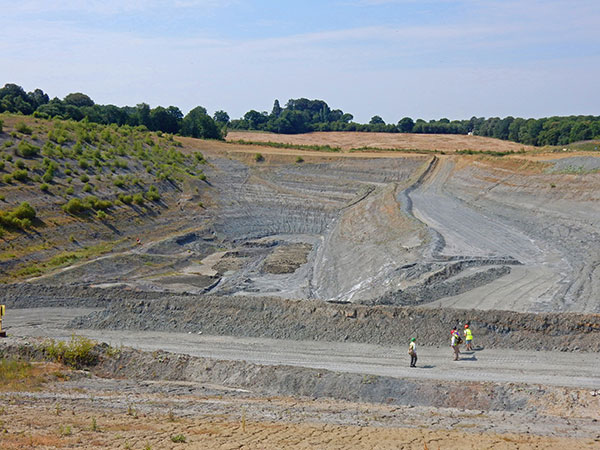
West Sussex Local Geological Sites - Warnham Brick Pit (update) (img 503)
Overview of pit showing active SW face centre left, weathered and vegetated slopes to left (SE) and benched slope to right (NW). Exposes about 45 m of lower Weald Clay. The top is close to BGS Bed 2b. Thin limestones marking BGS Bed 2a lie at or just above the main bench and the base of the pit is close to BGS Bed 1.
Photo taken: 01/07/2018
Grid ref TQ18013543
Direction SW
Image file: 3_DSCN2821.jpg

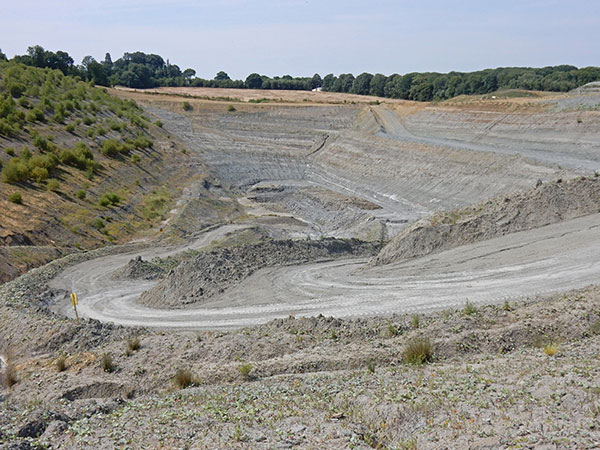
West Sussex Local Geological Sites - Warnham Brick Pit (update) (img 504)
Active SW face of pit at centre, weathered and vegetated slopes to left (SE) and NW benched face to right. Exposes about 45 m of Weald Clay formation.
Photo taken: 01/07/2018
Grid ref TQ18123536
Direction SW
Image file: 4_DSCN2829.jpg

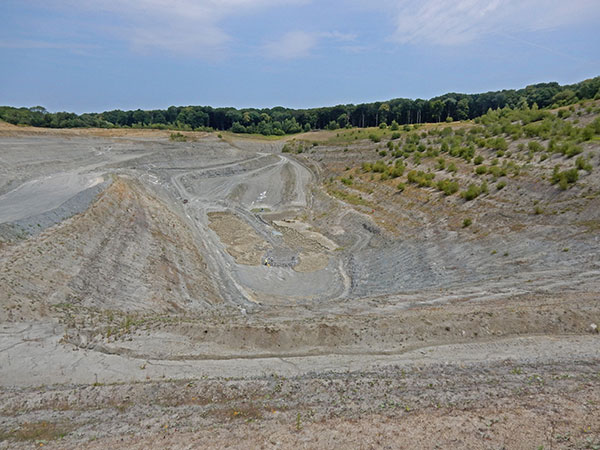
West Sussex Local Geological Sites - Warnham Brick Pit (update) (img 505)
Overview of quarry from SW end showing active face below, NW benched face to left and weathered and vegetated SE slope to right.
Photo taken: 01/07/2018
Grid ref TQ17833510
Direction NE
Image file: 5_DSCN2847.jpg

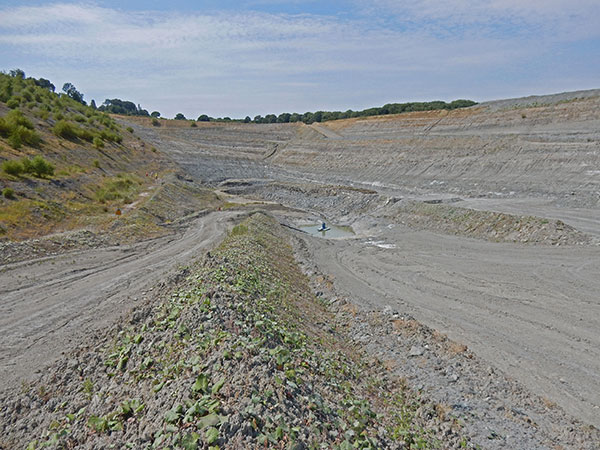
West Sussex Local Geological Sites - Warnham Brick Pit (update) (img 506)
Active SW face of pit at centre, weathered and vegetated slopes to left (SE) and NW benched face to right. Exposes about 45 m of Weald Clay formation.
Photo taken: 01/07/2018
Grid ref TQ18063529
Direction SW
Image file: 6_DSCN2834.jpg

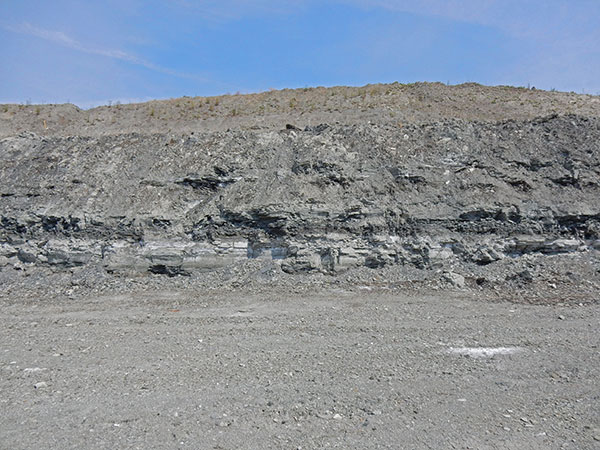
West Sussex Local Geological Sites - Warnham Brick Pit (update) (img 507)
Prominent siltstone beds within the lower part of the Weald Clay exposed in the quarry.
Photo taken: 01/07/2018
Grid ref TQ18023530
Direction NW
Image file: 7_DSCN2837.jpg

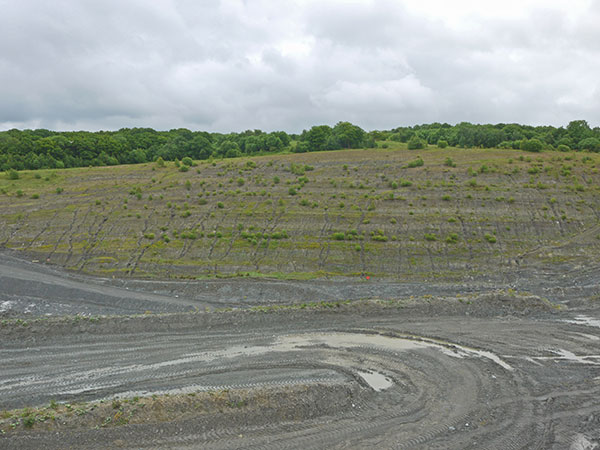
Warnham Brick Pit (Langhurst Wood Road Pit) (img 508)
Weathered and vegetated SE face of pit about 30m high exposing "Brown Clay" at the top, "Blue Clay" beneath and the upper part of the "Holbrook Clay" towards the base. Two thin limestones marking BGS Bed 2a outcrop across the upper part of the face.
Photo taken: 14/06/2013
Grid ref: TQ17863528
Direction: SE
Image file: P2030834ed.jpg

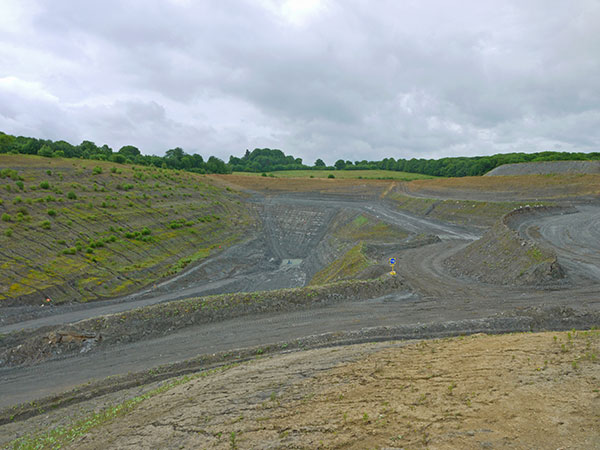
Warnham Brick Pit (Langhurst Wood Road Pit) (img 509)
Overview of pit showing weathered and vegetated SE face at left and active SW end to right exposing about 45m of lower Weald Clay.
Photo taken: 14/06/2013
Grid ref: TQ18073540
Direction: SSW
Image file: P2030840ed.jpg

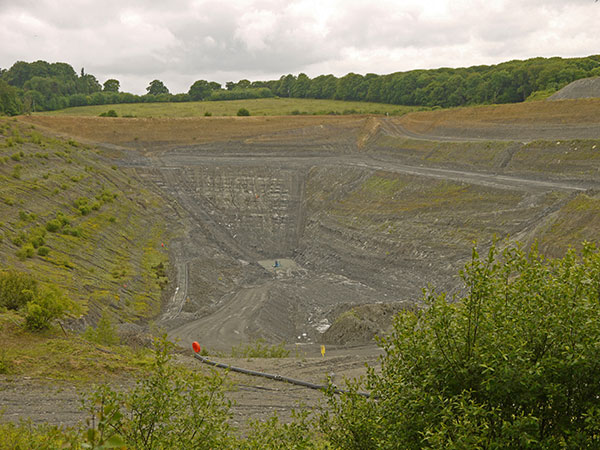
Warnham Brick Pit (Langhurst Wood Road Pit) (img 510)
Overview of pit showing active SW end in centre and recent deepening at the base beneath the weathered and vegetated slopes to left (SW) and right (NW). Exposes about 45m of lower Weald Clay."Brown Clay" occurs above the bench which is cut in "Blue Clay". The transition to "Holbrook Clay" occurs in the upper part of the ramp at the far end of the pit.
Photo taken: 14/06/2013
Grid ref: TQ18153540
Direction: SW
Image file: P2030849ed.jpg

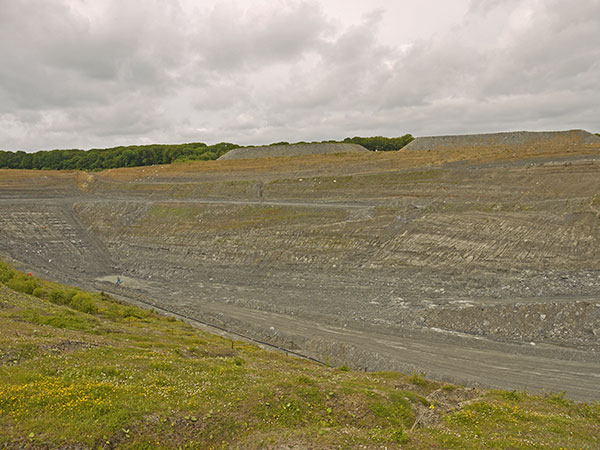
Warnham Brick Pit (Langhurst Wood Road Pit) (img 511)
Active SW face at left and NW face at right showing the recent deepening of the pit. Exposes about 45m of lower Weald Clay. The top is close to BGS Bed 2b."Brown Clay" occurs above the bench which is cut in "Blue Clay". The transition to "Holbrook Clay" occurs in the upper part of the SW ramp. Lateral stratigraphic changes and faulting are evident in the NW face.
Photo taken: 14/06/2013
Grid ref: TQ18103526
Direction: WSW
Image file: P2030857ed.jpg


Warnham Brick Pit (Langhurst Wood Road Pit) (img 512)
NW side of pit exposing about 45m of lower Weald Clay. "Brown Clay" at top, "Blue Clay" beneath in the partly vegetated cuts and slope, and "Holbrook Clay" in the recently deepened lower face which shows cyclic deposition.
Photo taken: 14/06/2013
Grid ref: TQ17993515
Direction: NW
Image file: P2030866ed.jpg

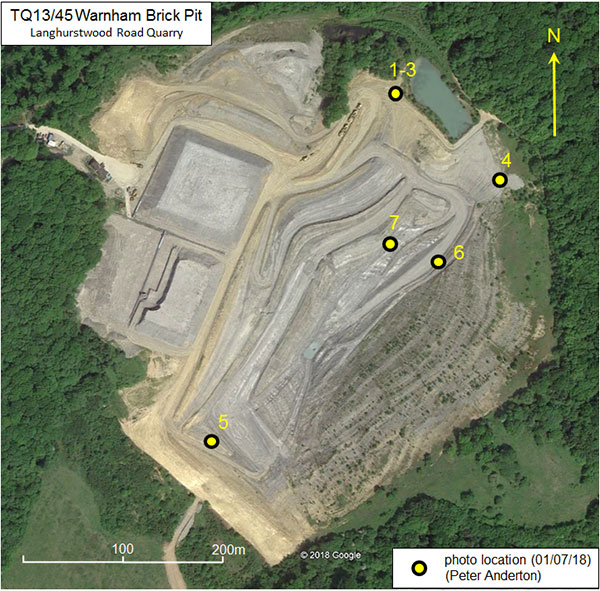
DUPLICATE (img 513)
DUPLICATE
Image file: WarnhamBrickPitSiteMap.jpg

Shoreham Cement Works, Beeding (TQ20/101)
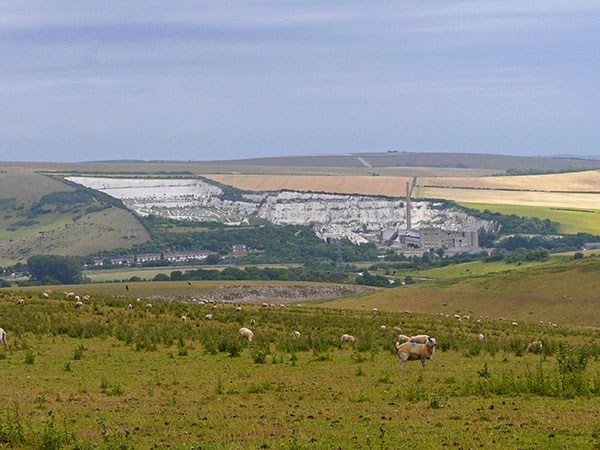
West Sussex Local Geological Sites - Shoreham Cement Works (img 515)
Overview of Shoreham Cement Works Quarry and the Adur Valley from the South Downs Way on Annington Hill.
Photo taken: 16/07/2010
Grid ref TQ17440907
Direction ESE
Image file: P1010850ed.jpg

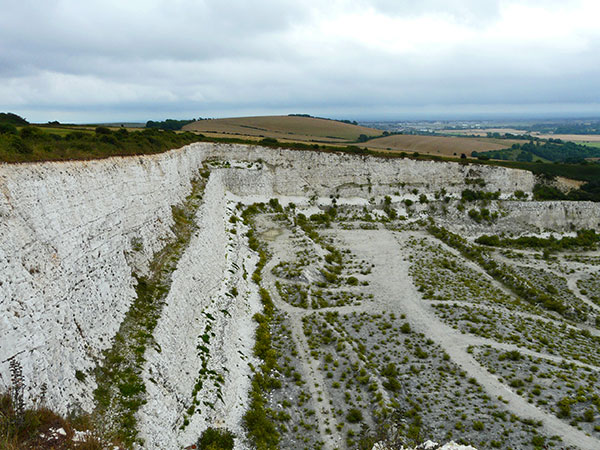
West Sussex Local Geological Sites - Shoreham Cement Works (img 516)
Head of upper quarry with faces cut in Seaford Chalk. Shows well-developed flint seams in upper face (Cuckmere Beds).
Photo taken: 17/08/2010
Grid ref TQ20860913
Direction SSE
Image file: P1020254ed.jpg

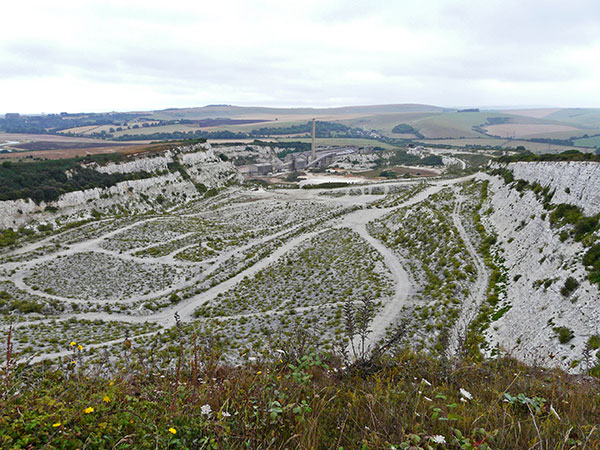
West Sussex Local Geological Sites - Shoreham Cement Works (img 517)
Overview from head (eastern end) of quarry. The faces in the upper quarrry are cut mainly in Seaford Chalk and up to 50m high.
Photo taken: 17/08/2010
Grid ref TQ20890911
Direction WSW
Image file: P1020297ed.jpg

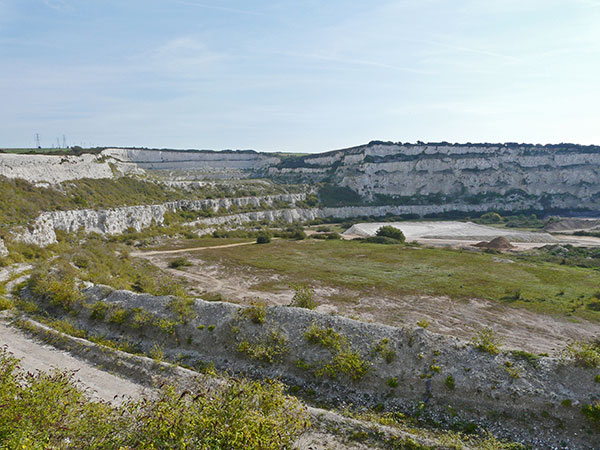
West Sussex Local Geological Sites - Shoreham Cement Works (img 518)
Benches of lower quarry with upper quarry in background. Lower benches are cut in Lewes Chalk and higher benches in Seaford Chalk. The face on the right is up to 70m high.
Photo taken: 22/09/2010
Grid ref TQ20170896
Direction ESE
Image file: P1020571ed.jpg


West Sussex Local Geological Sites - Shoreham Cement Works (img 519)
Southern face of lower quarry up to 70m high. The upper two benches are cut in Seaford Chalk and the lower benches in Lewes Chalk.
Photo taken: 22/09/2010
Grid ref TQ20530886
Direction SSW
Image file: P1020619ed.jpg

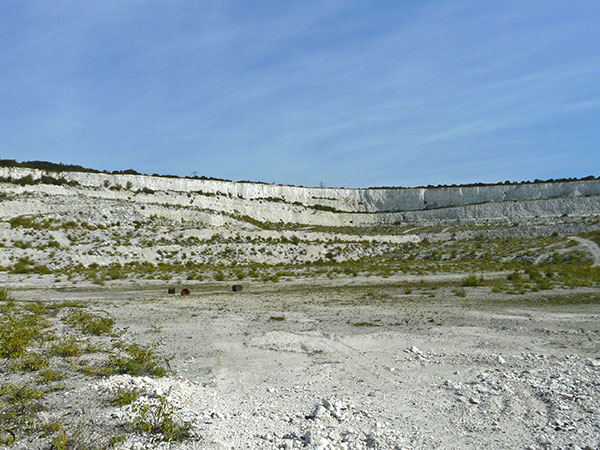
West Sussex Local Geological Sites - Shoreham Cement Works (img 520)
Upper part of quarry with faces up to 50m high exposing Seaford Chalk.
Photo taken: 22/09/2010
Grid ref TQ20530886
Direction ENE
Image file: P1020622ed.jpg

The Goldstone, Hove Park (TQ20/121)
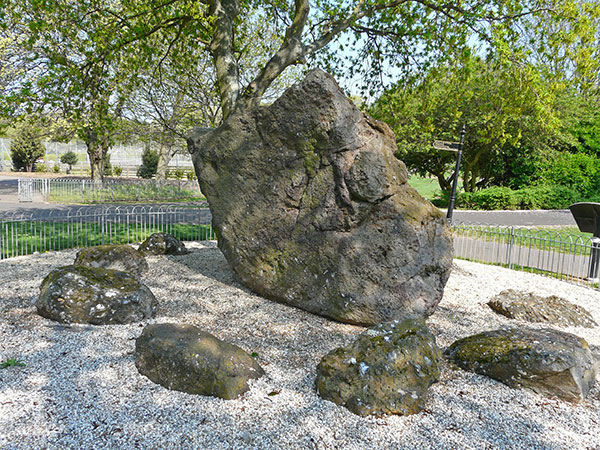
East Sussex Local Geological Sites - The Goldstone - Hove Park (img 522)
The large Goldstone sarsen and the smaller sarsen stones grouped around it. The Goldstone is about 2 m high and 3 m in length.
Photograph taken: 21/04/2011
Grid ref. TQ28680602
Image file: P1030318ed.jpg

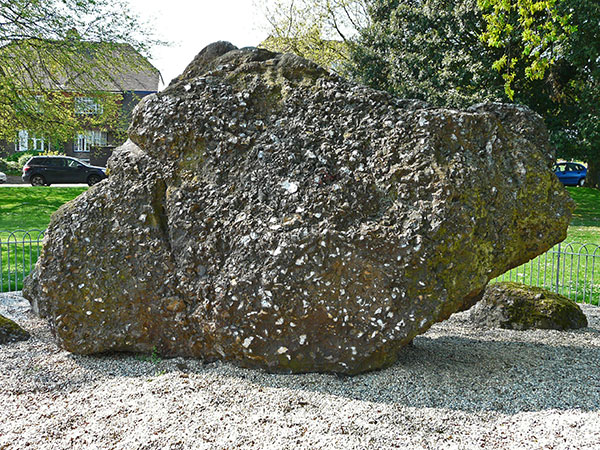
East Sussex Local Geological Sites - The Goldstone - Hove Park (img 523)
The large Goldstone sarsen is a very good example of a coarse flint breccia. The stone is about 2 m high and 3 m in length.
Photograph taken: 21/04/2011
Grid ref. TQ28680602
Image file: P1030321ed.jpg

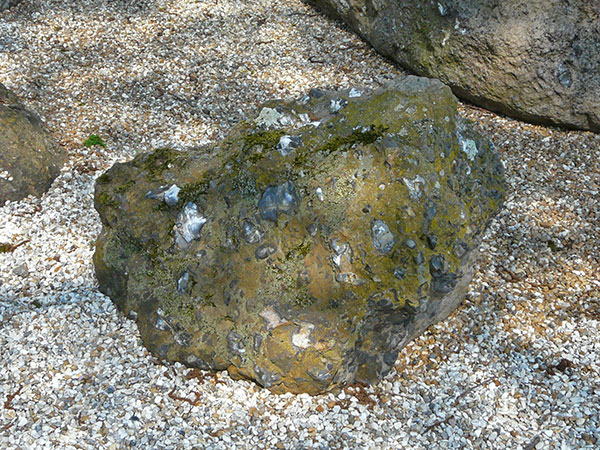
East Sussex Local Geological Sites - The Goldstone - Hove Park (img 524)
One of the satellite stones providing a close-up of the irregular broken flints in the breccia and the ferruginous matrix.
Photograph taken: 21/04/2011
Grid ref. TQ28680602
Image file: P1030322ed.jpg

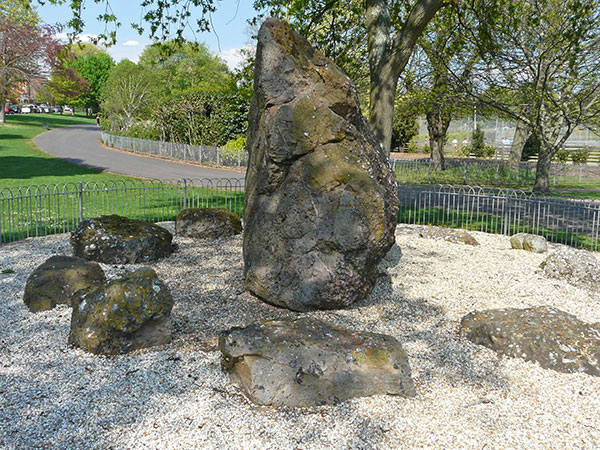
East Sussex Local Geological Sites - The Goldstone - Hove Park (img 525)
The large Goldstone sarsen is set on end in concrete for display.
Photograph taken: 21/04/2011
Grid ref. TQ28680602
Image file: P1030323ed.jpg

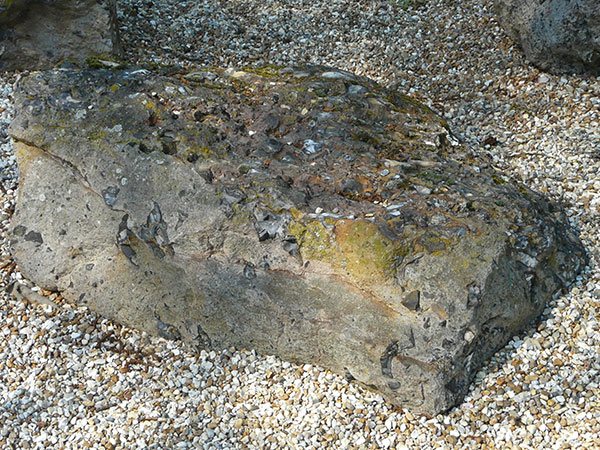
East Sussex Local Geological Sites - The Goldstone - Hove Park (img 526)
One of the satellite stones providing a close-up of the irregular broken flints in the breccia.
Photograph taken: 21/04/2011
Grid ref. TQ28680602
Image file: P1030325ed.jpg

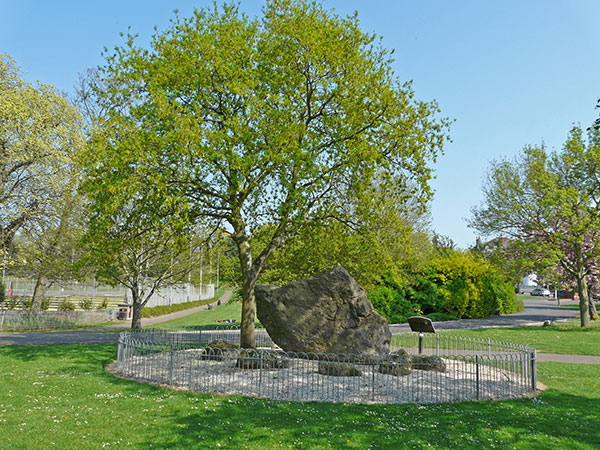
East Sussex Local Geological Sites - The Goldstone - Hove Park (img 527)
The Goldstone enclosure near the gate at the southwestern corner of Hove Park.
Photograph taken: 21/04/2011
Grid ref. TQ28680602
Image file: P1030327ed.jpg


DUPLICATE (img 529)
DUPLICATE
Image file: Horton-landfill.jpg

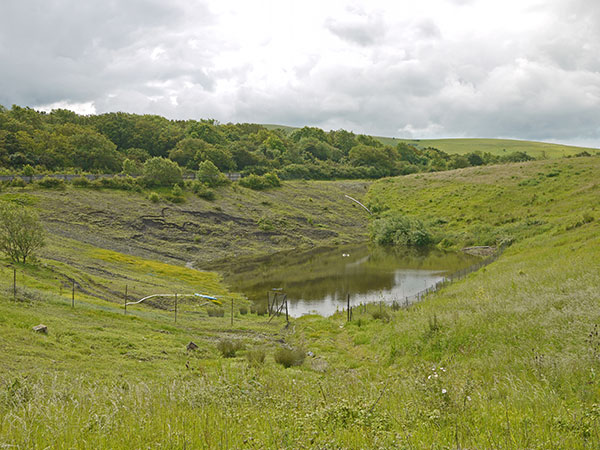
West Sussex Local Geological Sites - Horton Clay Pit (img 530)
Overview of site from NW showing preserved slope at far side of the flooded base of the pit. A series of slumps affect much of the preserved slope.
The A2037 highway runs along the top of the slope behind a hedge line.
Photo taken: 18/06/2012
Grid ref TQ21201260
Direction SSE
Image file: P2020201ed.jpg

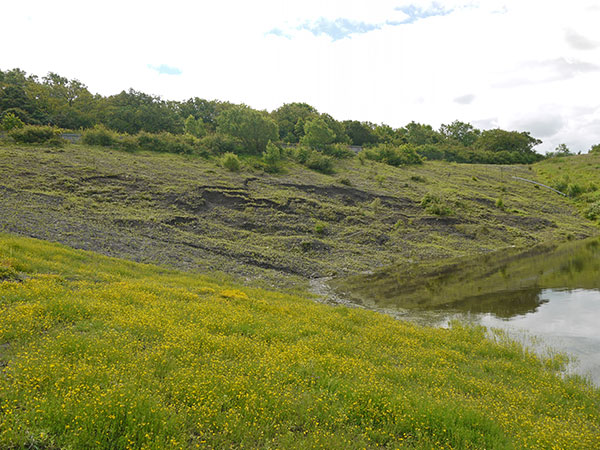
West Sussex Local Geological Sites - Horton Clay Pit (img 531)
Preserved slope at east side of pit showing series of slumps affecting much of the lower slope. Exposures of Gault Clay are limited to the low scarps at the heads of slumps.
Photo taken: 18/06/2012
Grid ref TQ21241255
Direction SSE
Image file: P2020205ed.jpg

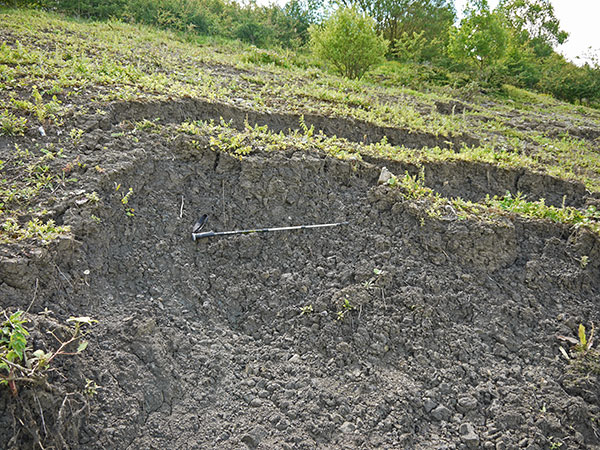
West Sussex Local Geological Sites - Horton Clay Pit (img 532)
Close-up of scarp at head of a slump exposing about 1 m of Gault Clay, location A.
1 m pole for scale.
Photo taken: 18/06/2012
Grid ref TQ21271252
Direction SE
Image file: P2020206ed.jpg

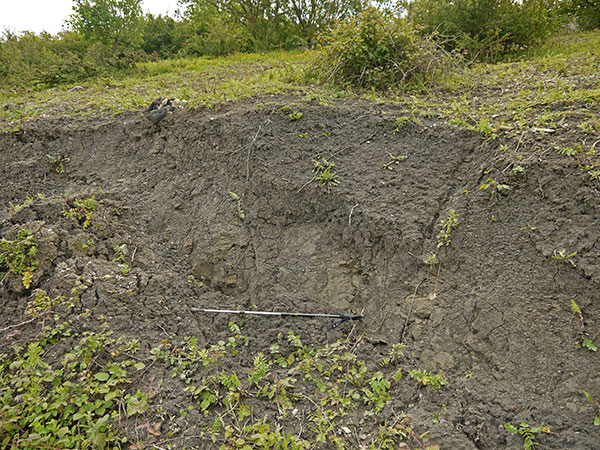
West Sussex Local Geological Sites - Horton Clay Pit (img 533)
Close-up of scarp at head of slump exposing 1.5 m of Gault Clay. Fragments of a thin sandstone bed occur further to the right along this scarp.
1 m pole for scale.
Photo taken: 18/06/2012
Grid ref TQ21261250
Direction ENE
Image file: P2020217ed.jpg

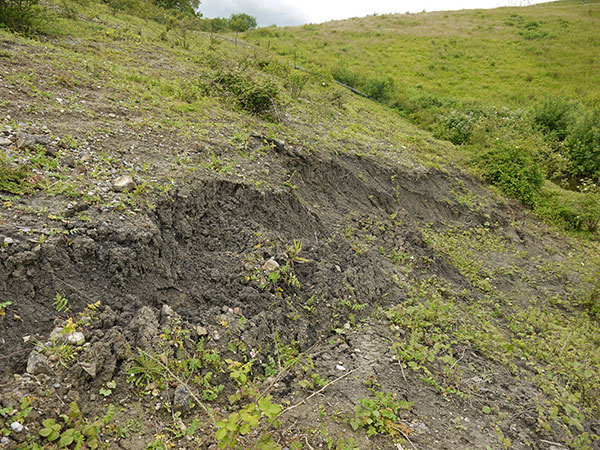
West Sussex Local Geological Sites - Horton Clay Pit (img 534)
Scarp at head of slump exposing 1.5 m of Gault Clay. Fragments of a thin sandstone bed occur within the section.
Photo taken: 18/06/2012
Grid ref TQ21261251
Direction south
Image file: P2020218ed.jpg


West Sussex Local Geological Sites - Horton Clay Pit (img 535)
Scarp at head of slump exposing 1 m of Gault Clay.
1 m pole for scale.
Photo taken: 18/06/2012
Grid ref TQ21251251
Direction south
Image file: P2020223ed.jpg

Saddlescombe Chalk Pit (TQ21/109)

West Sussex Local Geological Sites - Saddlescombe Chalk Pit (img 537)
Exposure of New Pit Chalk at base of quarry.
Photograph taken: 24/06/2010
Grid ref. TQ27001173
Direction NNW
Image file: P1010622ed.jpg

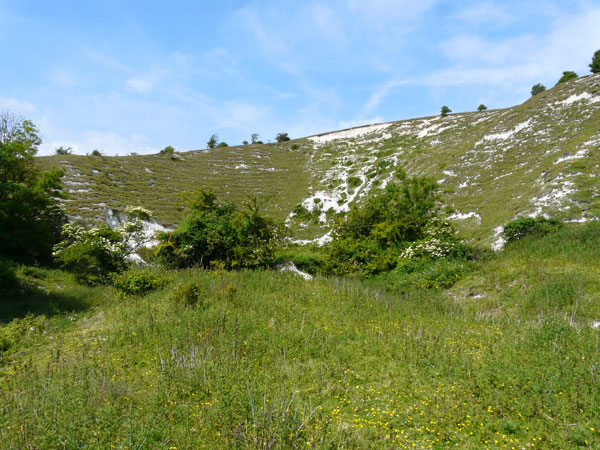
West Sussex Local Geological Sites - Saddlescombe Chalk Pit (img 538)
View from quarry floor showing mainly grass-covered slopes with exposure of New Pit Chalk at base on left and exposure of Lewes Chalk at top centre.
Photograph taken: 24/06/2010
Grid ref. TQ27011170
Direction NNW
Image file: P1010623ed.jpg

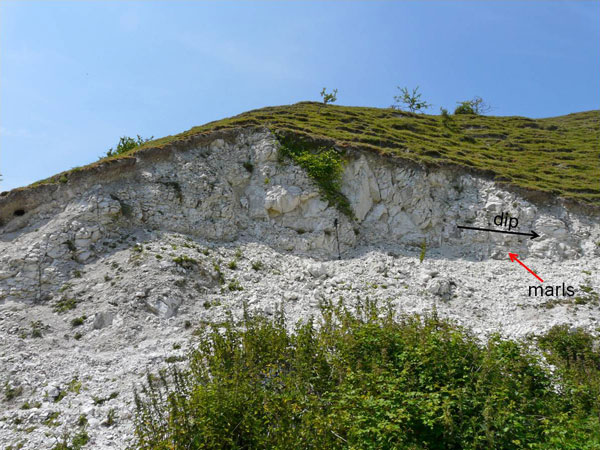
West Sussex Local Geological Sites - Saddlescombe Chalk Pit (img 539)
Exposure of New Pit Chalk formation showing white blocky chalk with marl seams (Glynde marls) dipping to right. 1 m pole for scale.
Photograph taken: 24/06/2010
Grid ref. TQ26991174
Direction west
Image file: P1010625edann.jpg

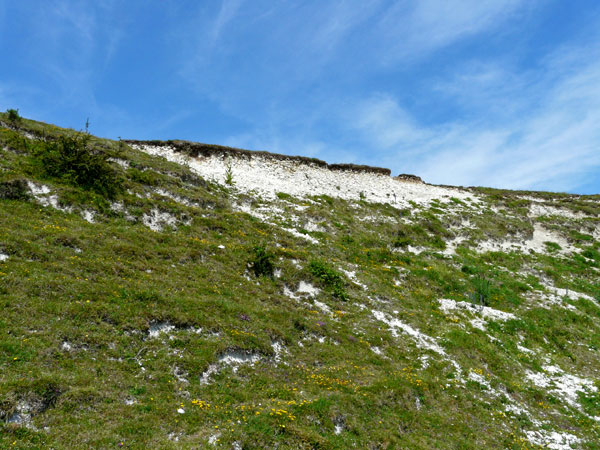
West Sussex Local Geological Sites - Saddlescombe Chalk Pit (img 540)
Exposure of Lewes Nodular Chalk at top of quarry.
Photograph taken: 24/06/2010
Grid ref. TQ26991178
Direction NE
Image file: P1010627ed.jpg

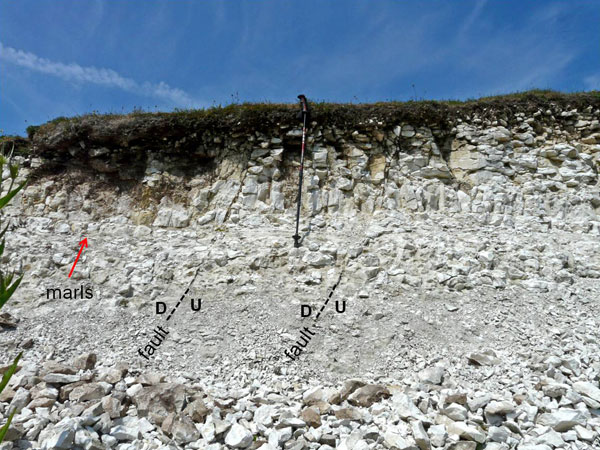
West Sussex Local Geological Sites - Saddlescombe Chalk Pit (img 541)
Exposure of Lewes Nodular Chalk formation showing marl seams (Southerham marls) and two minor fault planes dipping to left (west).
Photograph taken: 24/06/2010
Grid ref. TQ27011179
Direction north
Image file: P1010629edann.jpg

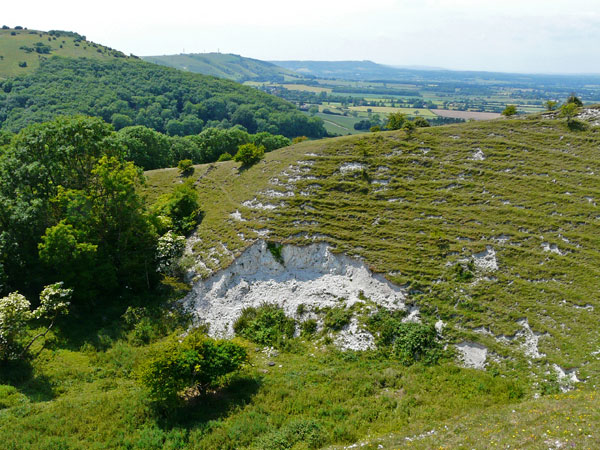
West Sussex Local Geological Sites - Saddlescombe Chalk Pit (img 542)
Setting of the quarry on the edge of the chalk escarpment, showing the exposure of New Pit Chalk at base of pit.
Photograph taken: 24/06/2010
Grid ref. TQ27041175
Direction west
Image file: P1010632ed.jpg

Newtimber Chalk Quarry (TQ21/23)

West Sussex Local Geological Sites - Newtimber Chalk Quarry (img 544)
Closer view of western end of main face about 20m high exposing Zig Zag Chalk.
Photo taken: 27/09/2012
Grid ref TQ27631373
Direction NW
Image file: P1030077ed.jpg

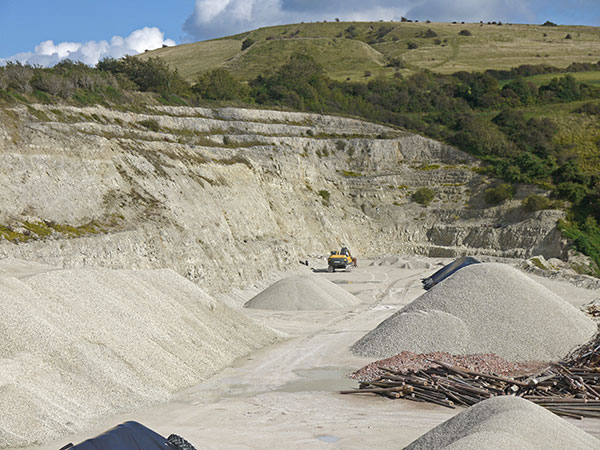
West Sussex Local Geological Sites - Newtimber Chalk Quarry (img 545)
Main face at eastern end of quarry exposing section from upper Zig Zag Chalk to lower Holywell Nodular Chalk. Narrow ledges extending from the edge may allow access to higher levels.
Current active chalk extraction is from the pit at the end.
(Taken with zoom lens).
Photo taken: 27/09/2012
Grid ref TQ27561372
Direction ENE
Image file: P1030087ed.jpg

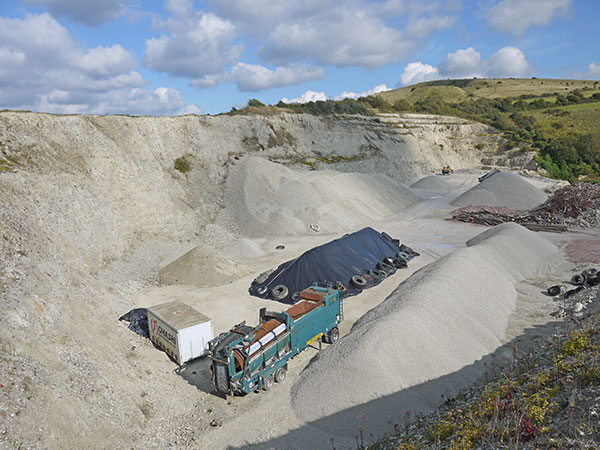
West Sussex Local Geological Sites - Newtimber Chalk Quarry (img 546)
Main face from western end. Exposes section from upper Zig Zag Chalk to lower Holywell Nodular Chalk. Partly vegetated. Higher beds generally inaccessible.
Gentle dip to right (east).
Photo taken: 27/09/2012
Grid ref TQ27561372
Direction ENE
Image file: P1030089ed.jpg

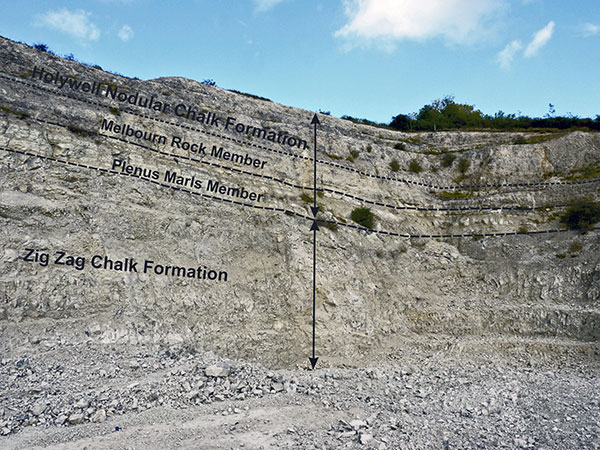
West Sussex Local Geological Sites - Newtimber Chalk Quarry (img 547)
Eastern end of main face showing interpretation of main stratigraphic intervals. Dip at the corner appears to be generally ENE.
Photo taken: 27/09/2012
Grid ref TQ27811373
Direction NE
Image file: P1030104interp.jpg

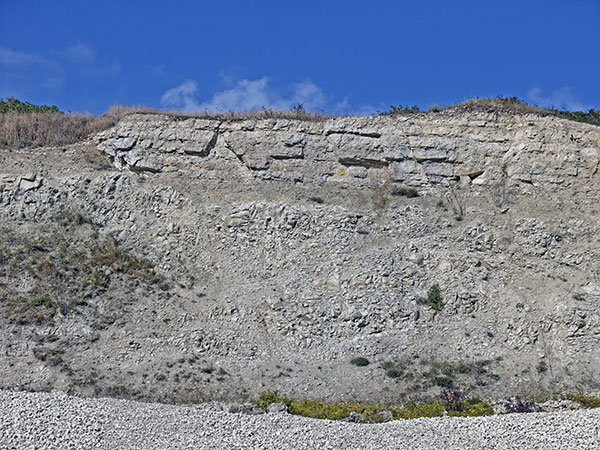
West Sussex Local Geological Sites - Newtimber Chalk Quarry (img 548)
Close-up of upper part of central main face exposing Zig Zag Chalk with Plenus Marls exposed near the top and massive well-jointed Melbourn Rock above.
Gentle dip to right (east)
(Taken with zoom lens).
Photo taken: 27/09/2012
Grid ref TQ27671374
Direction north
Image file: P1030118ed.jpg

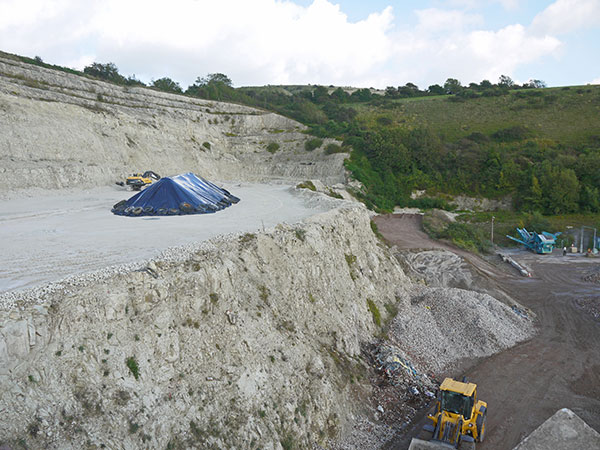
West Sussex Local Geological Sites - Newtimber Chalk Quarry (img 549)
Lower bench up to 7m high cut in middle Zig Zag Chalk.
Photo taken: 27/09/2012
Grid ref TQ27681371
Direction east
Image file: P1030121ed.jpg

Devil's Dyke (TQ21/47)

West Sussex Local Geological Sites - Devil's Dyke (img 551)
Head of the Devil's Dyke from half way up south side of valley. The valley head is narrow and atypical of coombes in the South Downs. The right (north) side show more recent erosion than the south side.
Grid ref: TQ26451091
Direction: west
Image file: P1010610.jpg

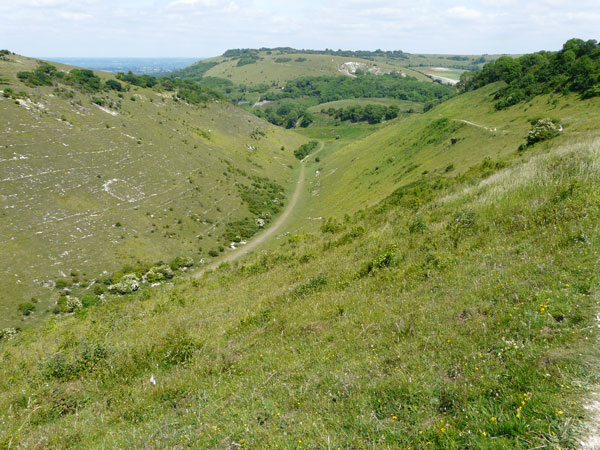
West Sussex Local Geological Sites - Devil's Dyke (img 552)
Lower Devil's Dyke from half way up the south side. Note the break from the steep slope on the left (north) side marking New Pit Chalk formation to the gentler slope above marking the Lewes Nodular Chalk formation. The north side shows more recent erosion than the south side.
Grid ref: TQ26471094
Direction: NE
Image file: P1010611.jpg

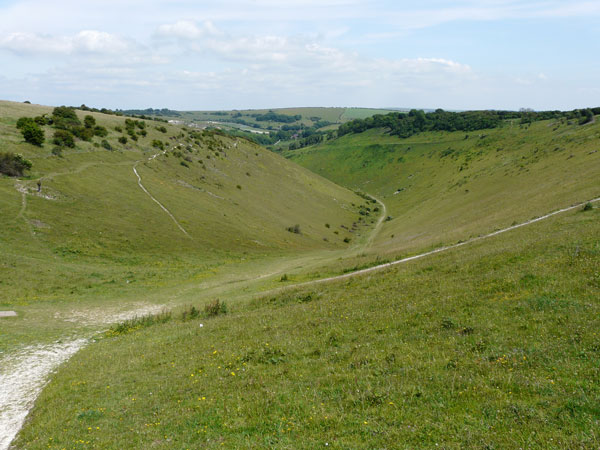
West Sussex Local Geological Sites - Devil's Dyke (img 553)
Devil's Dyke from the head of the valley which is narrow compared to typical coombes in the South Downs.
Grid ref: TQ25971080
Direction: ENE
Image file: P1010613.jpg

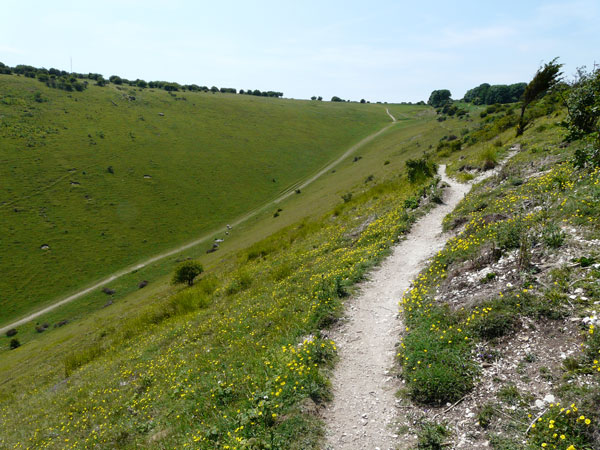
West Sussex Local Geological Sites - Devil's Dyke (img 554)
Head of Devil's Dyke from north side. Path is at rim where steep slopes in New Pit Chalk formation give way to gentler slopes in the overlying Lewes Nodular Chalk formation. Note the erosion next to the path.
Grid ref: TQ26261113
Direction: SW
Image file: P1010615.jpg

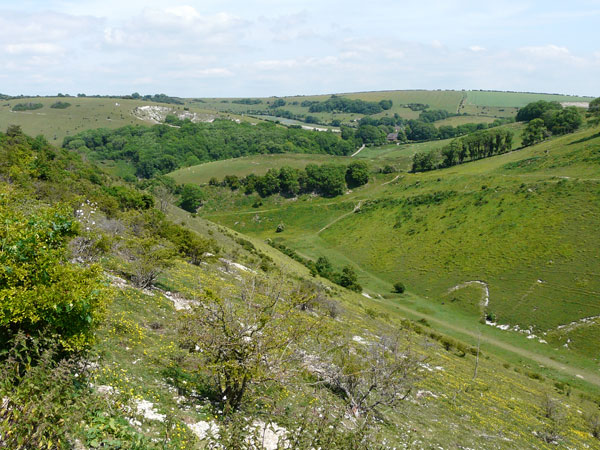
West Sussex Local Geological Sites - Devil's Dyke (img 555)
Lower Devil's Dyke from north side. Note extensive erosion due to rabbit burrowing and possible semicircular slump scars at foot of slope on opposite side.
Grid ref: TQ26401126
Direction: NE
Image file: P1010616.jpg

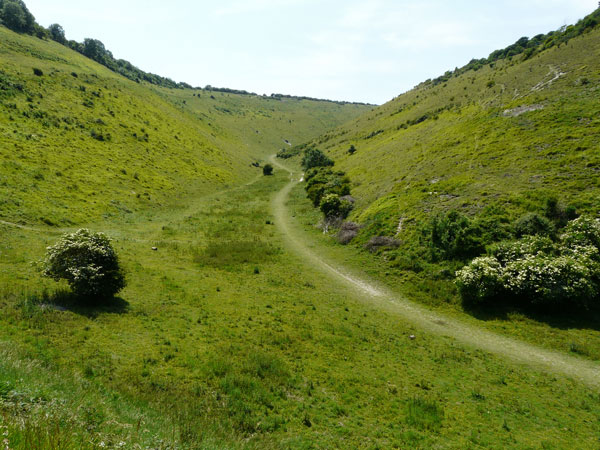
West Sussex Local Geological Sites; Devil's Dyke (img 556)
Looking up Devil's Dyke from the right angle corner at its lower northeastern end. Note the V-shaped cross-section higher up and the flat valley base lower down where superficial deposits fill the valley bottom.
Grid ref: TQ26741132
Direction: SW
Image file: P1010619ed.jpg

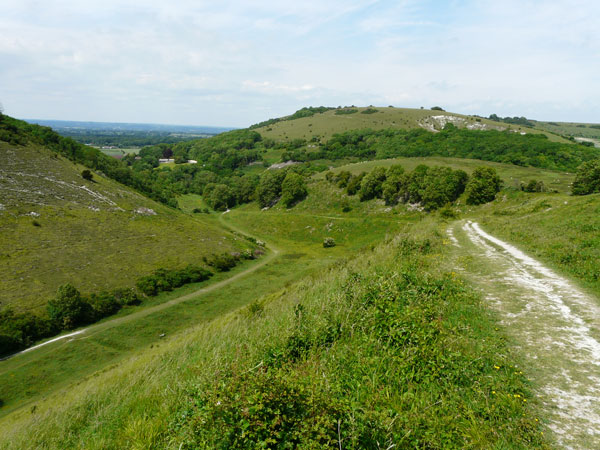
West Sussex Local Geological Sites - Devil's Dyke (img 557)
Lower part of Devil's Dyke from the south side showing flat valley base corresponding to superficial deposits, right angle corner at foot and the mounded spur which is underlain by the Holywell Nodular Chalk formation.
Grid ref: TQ26621116
Direction: north
Image file: P1010634.jpg

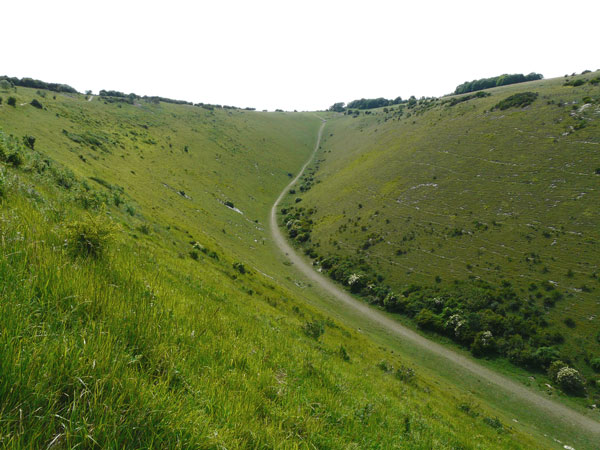
West Sussex Local Geological Sites; Devil's Dyke (img 558)
Upper part of Devil's Dyke from the south side. Note V-shaped valley cross-section. The steep slopes are cut in New Pit Chalk formation and the gentler slopes near the rim correspond to the Lewes Nodular Chalk formation.
Grid ref: TQ26621116
Direction: SW
Image file: P1010635ed.jpg

Golding Barn Quarry, Upper Beeding (TQ21/58)
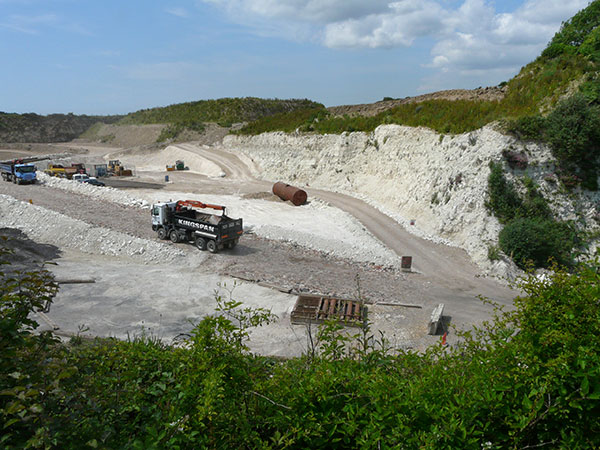
West Sussex Local Geological Sites - Golding Barn Quarry (img 560)
View taken from footpath at an early stage of landfill in 2010l. The NW face at right exposed Zig Zag Chalk, Plenus Marls and Melbourn Rock.
Photo taken: 24/06/2010
Grid ref TQ21011058
Direction WSW
Image file: P1010602ed.jpg

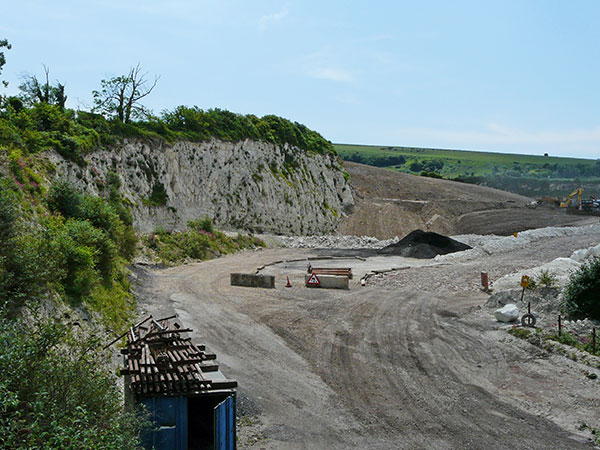
West Sussex Local Geological Sites - Golding Barn Quarry (img 561)
View taken from footpath in 2010 at an early stage of landfill. Clean face about 12m high on eastern side still visible, exposing uppermost Zig Zag Chalk, Plenus Marls, Melbourn Rock and lower Holywell Nodular Chalk.
Photo taken: 24/06/2010
Grid ref TQ20991061
Direction SSE
Image file: P1010603ed.jpg

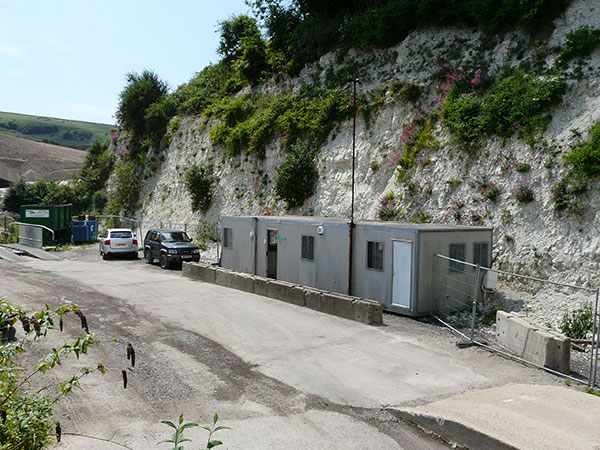
West Sussex Local Geological Sites - Golding Barn Quarry (img 562)
Face at west side of entrance to quarry in 2010. Exposes Zig Zag Chalk with Plenus Marls at the top. Up to 7m high with significant vegetation cover. Originally proposed for preservation but now scheduled for burial.
Photo taken: 24/06/2010
Grid ref TQ20921067
Direction south
Image file: P1010605.jpg

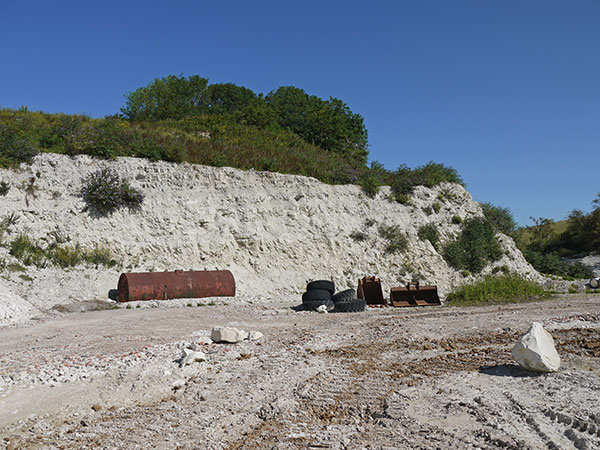
West Sussex Local Geological Sites - Golding Barn Quarry (img 563)
Remaining part of NW face in 2012. Up to 8m high exposing upper Zig Zag Chalk, Plenus Marls and Melbourn Rock at the top of the face.
Photo taken: 25/07/2012
Grid ref TQ20951053
Direction NNW
Image file: P2020406ed.jpg


West Sussex Local Geological Sites - Golding Barn Quarry (img 564)
Weathered face at head (south) of quarry. Up to 6m high, exposing lower Holywell Nodular Chalk, obscured by vegetation. This face was scheduled for burial during the first phase of landfill.
Photo taken: 25/07/2012
Grid ref TQ20891046
Direction SE
Image file: P2020428ed.jpg


West Sussex Local Geological Sites - Golding Barn Quarry (img 565)
View from footpath in 2012 showing NW face on right exposing Zig Zag Chalk, Plenus Marls and Melbourn Rock. The far end of the face is covered by chalk rubble. Landfill has progressed south along the left (east) side of the quarry.
Photo taken: 25/07/2012
Grid ref TQ21011059
Direction SW
Image file: P2020449ed.jpg

Beeding Small Quarry, Upper Beeding (TQ21/68)
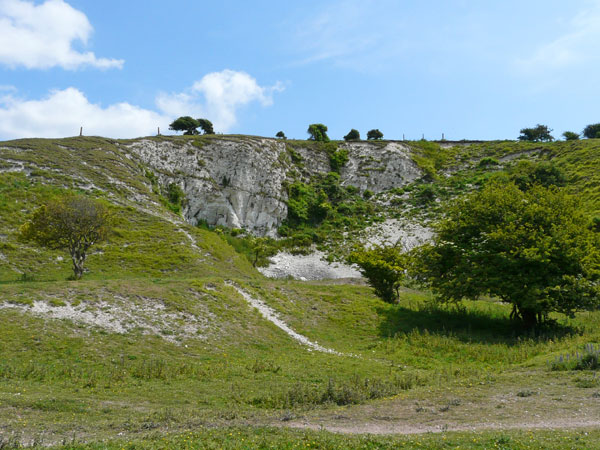
West Sussex Local Geological Sites - Beeding Small Quarry (img 567)
Chalk face at head of quarry showing dip to south at about 20 degrees. Exposes lower Lewes Chalk from base to the Lewes Marls.
Photograph taken: 24/06/2010
Grid ref. TQ21291027
Direction NE
Image file: P1010595ed.jpg

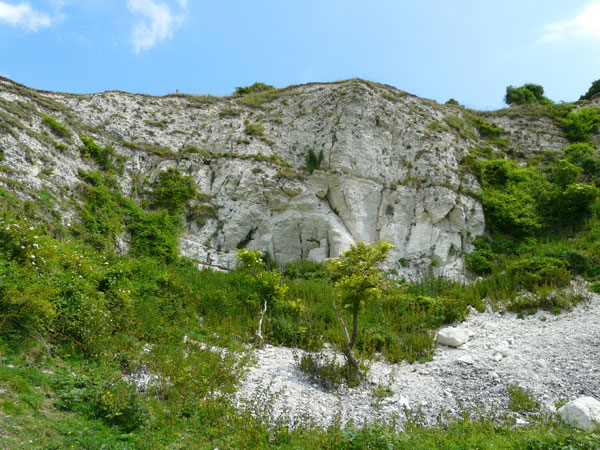
West Sussex Local Geological Sites - Beeding Small Quarry (img 568)
Left side of quarry face showing Lewes Nodular Chalk with flint bands and marl seams. The prominent parting half way up the cliff probably marks the Bridgewick Marls.
Photograph taken: 24/06/2010
Grid ref. TQ21311030
Direction NE
Image file: P1010596ed.jpg

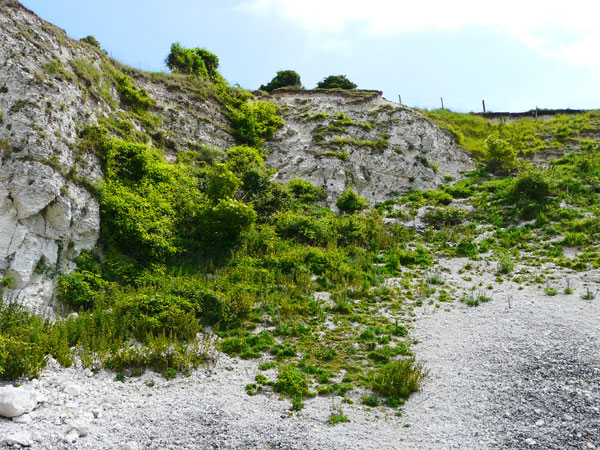
West Sussex Local Geological Sites - Beeding Small Quarry (img 569)
Right side of quarry face provides access to higher zones of the Lewes Nodular Chalk above the Bridgewick Marls.
Photograph taken: 24/06/2010
Grid ref. TQ21331030
Direction ENE
Image file: P1010597ed.jpg


West Sussex Local Geological Sites - Beeding Small Quarry (img 570)
Fresh boulder of nodular chalk below main face.
Scale length 30 cm.
Photograph taken: 24/06/2010
Grid ref. TQ21311030
Image file: P1010598.jpg

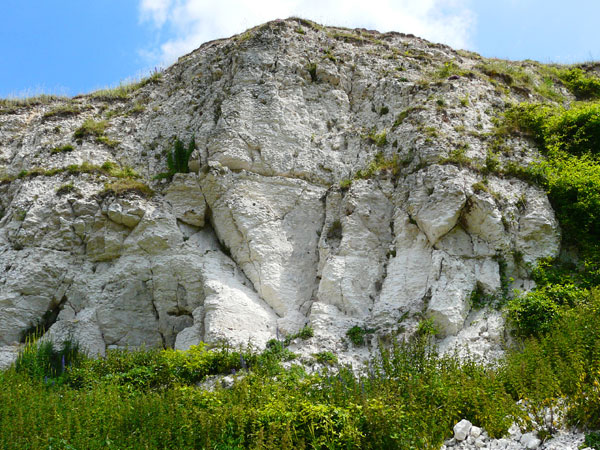
West Sussex Local Geological Sites - Beeding Small Quarry (img 571)
Close-up of left side of quarry face showing Lewes Nodular Chalk with flint bands and marl seams. The prominent parting half way up the cliff probably marks the Bridgewick Marl horizon.
Grid ref. TQ21321031
Direction NE
Image file: P1010599ed.jpg


West Sussex Local Geological Sites - Beeding Small Quarry (img 572)
Quarry approach from the footpath to the north west.
Photograph taken: 24/06/2010
Grid ref. TQ21191036
Direction ESE
Image file: P1010601ed.jpg

Combe Croft Quarry, Henfield (TQ21/71)
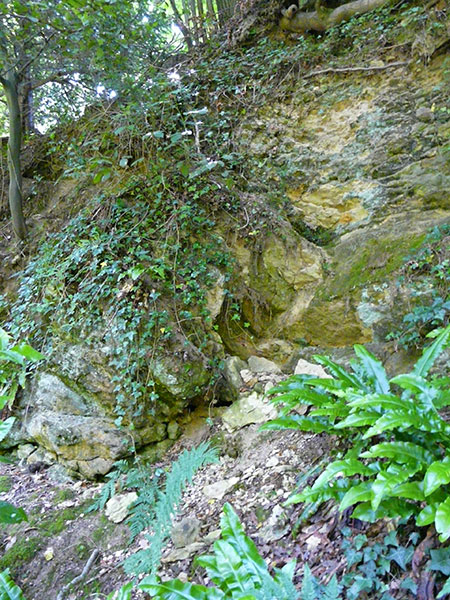
West Sussex Local Geological Sites - Combe Croft Quarry, Henfield (img 574)
Structural dip at right angles to the main face can be seen in this re-entrant corner of the face, partly obscured by vegetation.
Photo taken: 24/06/2010
Grid ref TQ20141623
Direction SE
Image file: P1010583ed.jpg


West Sussex Local Geological Sites - Combe Croft Quarry, Henfield (img 575)
Western part of quarry face, 4m high and relatively free from vegetation. Exposes sandstones of Hythe Formation.
Photo taken: 24/06/2010
Grid ref TQ20131624
Direction SW
Image file: P1010584ed.jpg


West Sussex Local Geological Sites - Combe Croft Quarry, Henfield (img 576)
Closer view of sandstone face in photo 2 showing thicker bedded units at base, including a burrowed unit, and thinner bedding towards the top.
Height 4.5m.
Photo taken: 24/06/2010
Grid ref TQ20111623
Direction south
Image file: P1010585ed.jpg

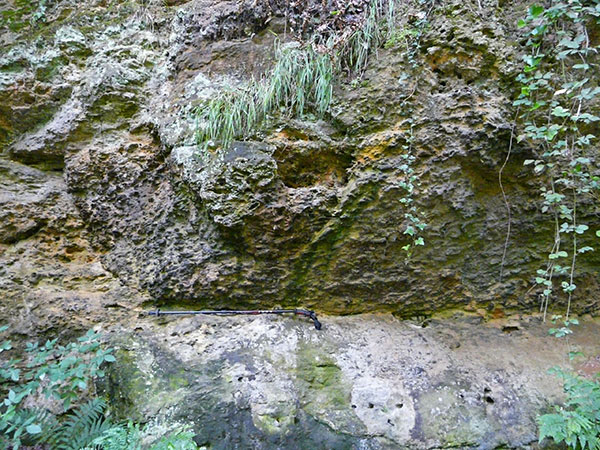
West Sussex Local Geological Sites - Combe Croft Quarry, Henfield (img 577)
Detail at base of face shown in photo 3. Thick burrowed sandstone unit overlying homogeneous lower sandstone unit. Burrows stand out from the surface due to weathering.
1 m pole for scale.
Photo taken: 24/06/2010
Grid ref TQ20111623
Direction south
Image file: P1010586ed.jpg

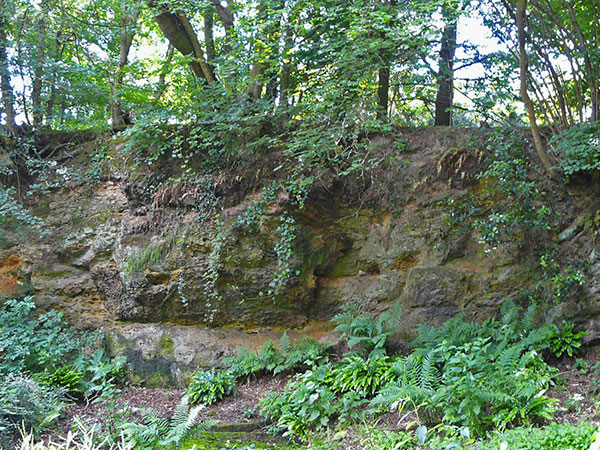
West Sussex Local Geological Sites - Combe Croft Quarry, Henfield (img 578)
Best exposed sandstone face at western end of quarry showing thicker bedded units at base and thinner units towards the top.
Height 4.5 m.
Photo taken: 24/06/2010
Grid ref TQ20101626
Direction south
Image file: P1010589ed.jpg

Whitemans Green, Cuckfield (TQ22/01)

West Sussex Local Geological Sites - Whitemans Green (img 580)
Mantell commemorative plaque mounted on a sandstone block with information board behind.
Photograph taken: 25/04/2010
Grid ref. TQ30032557
Direction south
Image file: P1010347ed.jpg

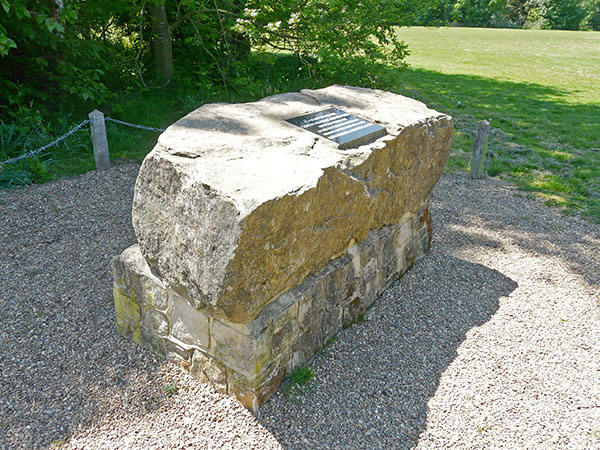
West Sussex Local Geological Sites - Whitemans Green (img 581)
Mantell commemorative plaque mounted on a block of sandstone. The sandstone came from Philpots Quarry and is probably Ardingly Sandstone not Cuckfield Stone.
Photograph taken: 25/04/2010
Grid ref. TQ30032557
Image file: P1010349ed.jpg

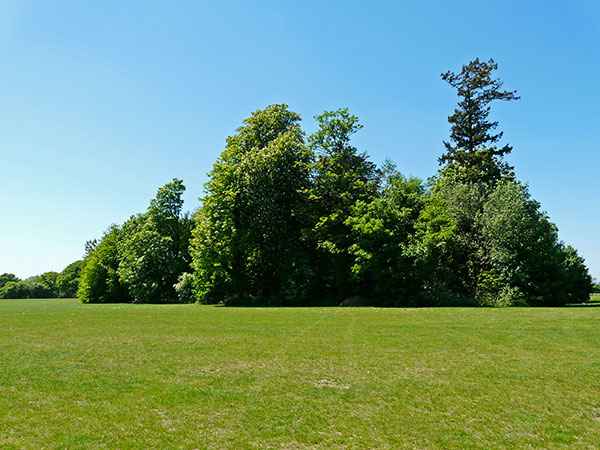
West Sussex Local Geological Sites - Whitemans Green (img 582)
Large clump of trees covering the remaining small pit area in the recreation ground.
Photograph taken: 25/04/2010
Grid ref. TQ29982553
Direction WSW
Image file: P1010354ed.jpg

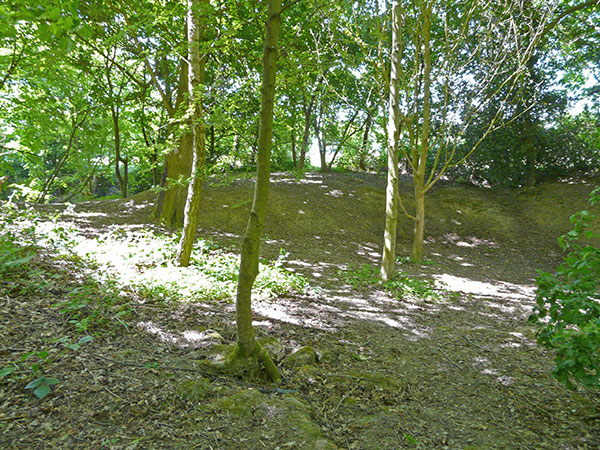
West Sussex Local Geological Sites - Whitemans Green (img 583)
View of shallow infilled pit from inside the clump of trees. Shows mounds of spoil with little vegetation cover but no rock exposures.
Photograph taken: 25/04/2010
Grid ref. TQ29902555
Direction west
Image file: P1010356ed.jpg

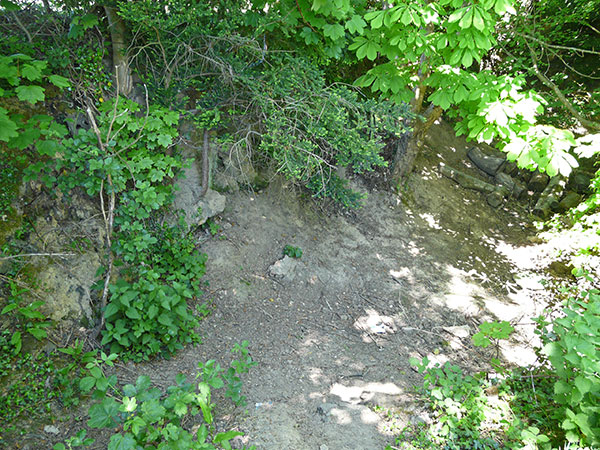
West Sussex Local Geological Sites - Whitemans Green (img 584)
Entrance to deeper pit from south with Cuckfield Stone outcrop on left (west side of pit).
Photograph taken: 25/04/2010
Grid ref. TQ29872551
Direction north
Image file: P1010358ed.jpg

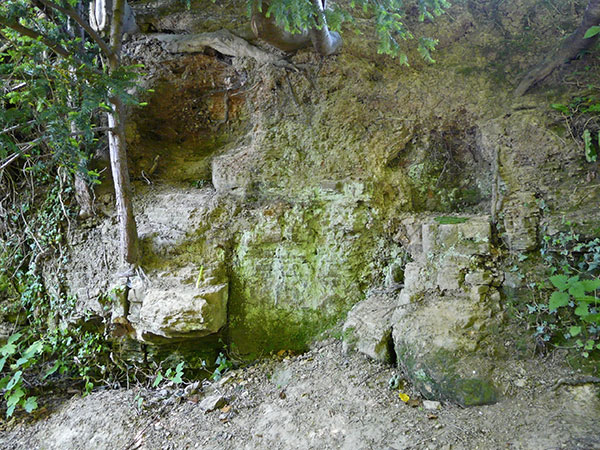
West Sussex Local Geological Sites - Whitemans Green (img 585)
Detail of exposure of Cuckfield Stone at left of photo 5 showing flaggy sandstone relatively free from vegetation. Height of exposure is 2 m.
Photograph taken: 25/04/2010
Grid ref. TQ29892552
Direction west
Image file: P1010359ed.jpg

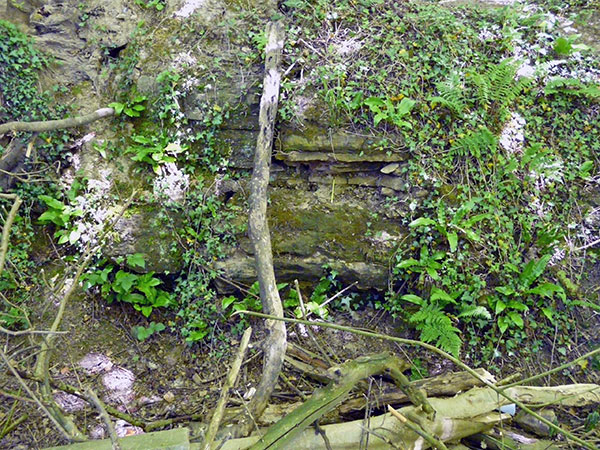
West Sussex Local Geological Sites - Whitemans Green (img 586)
Detail of exposure of Cuckfield Stone on eastern side of deeper pit showing flaggy sandstone obscured by vegetation. Height of exposure is 1.7 m.
Photograph taken: 25/04/2010
Grid ref. TQ29892552
Direction east
Image file: P1010360ed.jpg

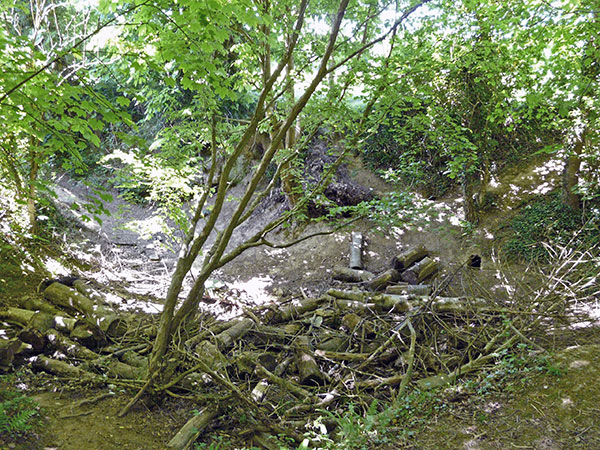
West Sussex Local Geological Sites - Whitemans Green (img 587)
View of deeper pit from eastern side looking towards entrance. Pile of logs and cuttings hinders access across pit floor.
Photograph taken: 25/04/2010
Grid ref. TQ29902553
Direction SW
Image file: P1010361ed.jpg

Cow Wood, Handcross (TQ22/36)

West Sussex Local Geological Sites - Cow Wood (img 589)
Eastern end of locality A outcrop showing blocks of massive Ardingly Sandstone up to 6 m high.
Photograph taken: 24/05/2010
Grid ref. TQ27142955
Direction south
Image file: P1010363croped.jpg

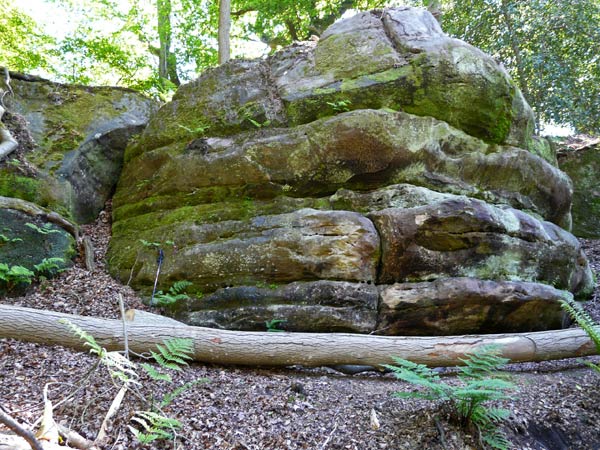
West Sussex Local Geological Sites - Cow Wood (img 590)
Closer view of block about 6 m high near left (east) end of massive Ardingly Sandstone outcrop shown in photo 1. Shows master bedding planes separating massive sandstone units, differential erosion of beds and overhangs.
1 m pole for scale.
Photograph taken: 24/05/2010
Grid ref. TQ27162953
Direction SW
Image file: P1010364ed.jpg

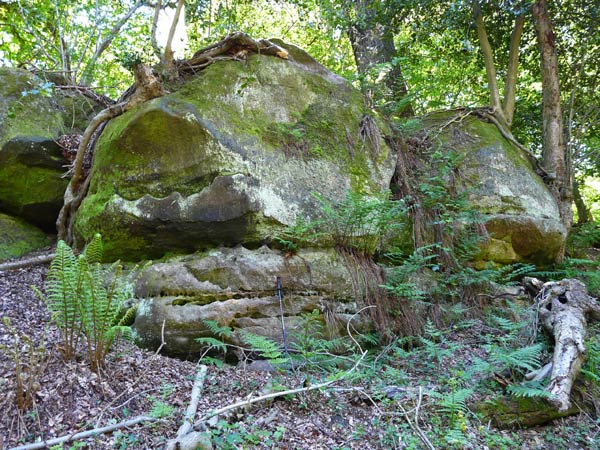
West Sussex Local Geological Sites - Cow Wood (img 591)
Closer view of blocks about 4 m high at right end of massive Ardingly Sandstone outcrop shown in photo 1. Shows massive sandstone unit at top separated by a master bedding plane from underying thinner sandstone units. Differential weathering and overhangs also evident.
1 m pole for scale.
Photograph taken: 24/05/2010
Grid ref. TQ27122954
Direction SW
Image file: P1010367ed.jpg

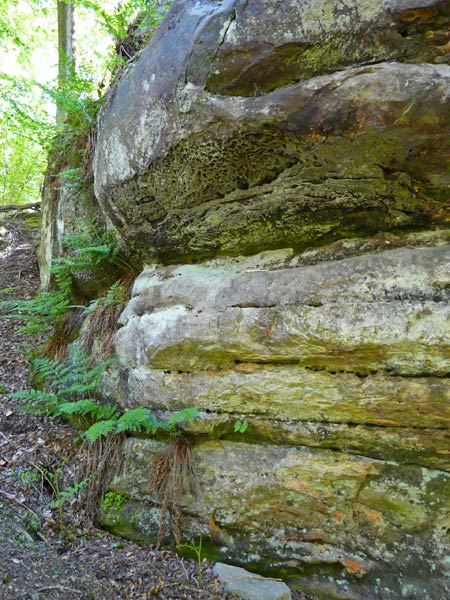
West Sussex Local Geological Sites - Cow Wood (img 592)
Detail of massive Ardingly Sandstone block in centre of locality A showing master bedding planes, differential erosion of beds and honeycomb weathering under the overhang. Visible section about 4 m high (block is 6 m high).
Photograph taken: 24/05/2010
Grid ref TQ27092953
Direction SE
Image file: P1010371ed.jpg

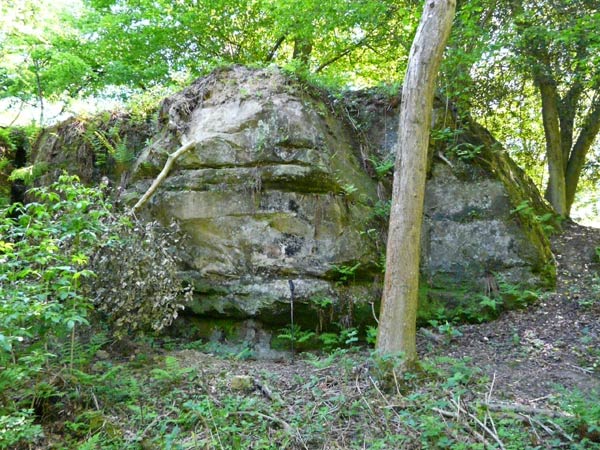
West Sussex Local Geological Sites - Cow Wood (img 593)
Block to right (north) of outcrop shown in photo 5. Sparse plant cover. Massive sandstone units showing differential weathering and overhang.
1 m pole for scale.
Photograph taken: 24/05/2010
Grid ref. TQ27072951
Direction SSE
Image file: P1010375ed.jpg

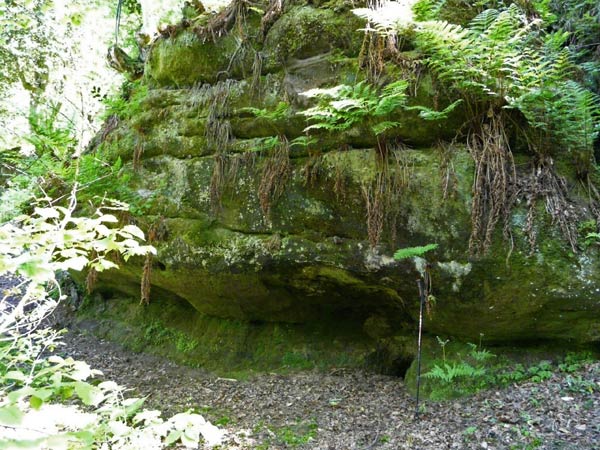
West Sussex Local Geological Sites - Cow Wood (img 594)
Ardingly Sandstone block with significant plant cover, protected by SSSI designation. Locality A, at east side of side valley.
1 m pole for scale.
Photograph taken: 24/05/2010
Grid ref TQ27082952
Direction SE
Image file: P1010376ed.jpg


West Sussex Local Geological Sites - Cow Wood (img 595)
Massive Ardingly Sandstone outcrop at west side of side valley locality A. Detached block 5 m high in foreground with small cave at base is known as Pulpit Rock. Main face at back showing inclined joint planes.
Photograph taken: 24/05/2010
Grid ref TQ27092956
Direction SW
Image file: P1010383ed.jpg

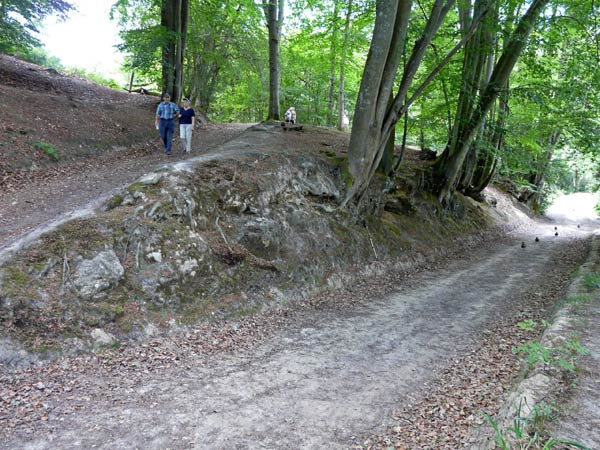
West Sussex Local Geological Sites - Cow Wood (img 596)
Sandstone outcrop at west side of path by pond, locality C. Represents lower part of Lower Tunbridge Wells Sandstone unit.
1 m pole for scale.
Photograph taken: 24/07/2010
Grid ref TQ27392953
Direction north
Image file: P1010914ed.jpg

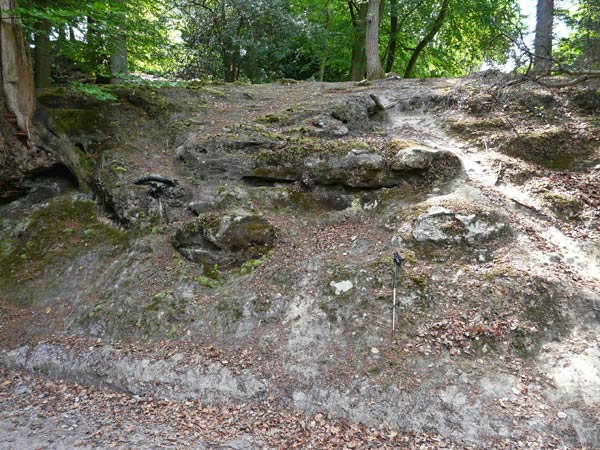
West Sussex Local Geological Sites - Cow Wood (img 597)
Close-up of well worn sandstone outcrop at west side of path by pond, locality C. Represents lower part of Lower Tunbridge Wells Sandstone unit.
1 m pole for scale.
Photograph taken: 24/07/2010
Grid ref. TQ27392957
Direction west
Image file: P1010918ed.jpg


West Sussex Local Geological Sites - Cow Wood (img 598)
Detail of cut face on left side of path in photo 12, showing fresh exposure of sandstone with beds of varying colour, locality D. Represents lower part of Lower Tunbridge Wells Sandstone unit. Cross bedding evident at centre.
1 m pole for scale.
Photograph taken: 24/07/2010
Grid ref. TQ27392965
Direction east
Image file: P1010925ed.jpg

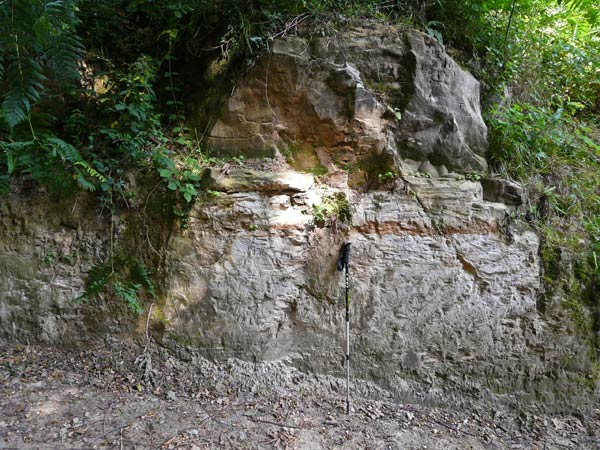
West Sussex Local Geological Sites - Cow Wood (img 599)
Detail of cut face on left side of path in photo 12, showing fresh exposure of sandstone with beds of varying colour, locality D. Represents lower part of Lower Tunbridge Wells Sandstone unit. Cross bedding evident at right.
1 m pole for scale.
Photograph taken: 24/07/2010
Grid ref. TQ27392965
Direction east
Image file: P1010926ed.jpg

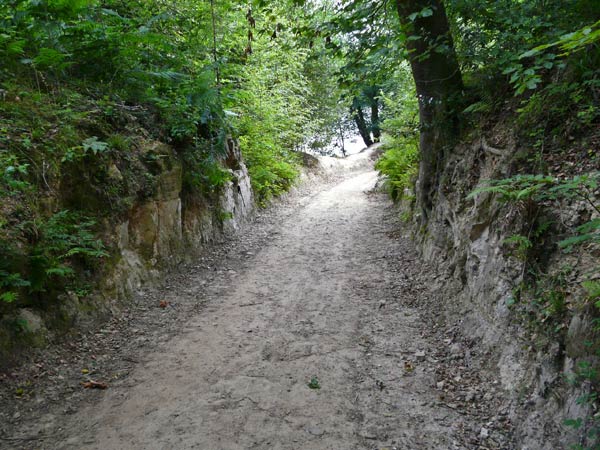
West Sussex Local Geological Sites - Cow Wood (img 600)
Cut sandstone faces about 2 m high on either side of path by the pond, locality D, representing lower part of Lower Tunbridge Wells Sandstone unit.
Photograph taken: 24/07/2010
Grid ref TQ27392967
Direction south
Image file: P1010929ed.jpg


West Sussex Local Geological Sites - Cow Wood (img 601)
Cambered Ardingly Sandstone block (Pulpit Rock) separated from main outcrop by open joint plane (gull), locality A, western end of outcrop. Small cave at base.
1 m pole for scale.
Photograph taken: 24/07/2010
Grid ref TQ27052955
Direction ESE
Image file: P1010932ed.jpg

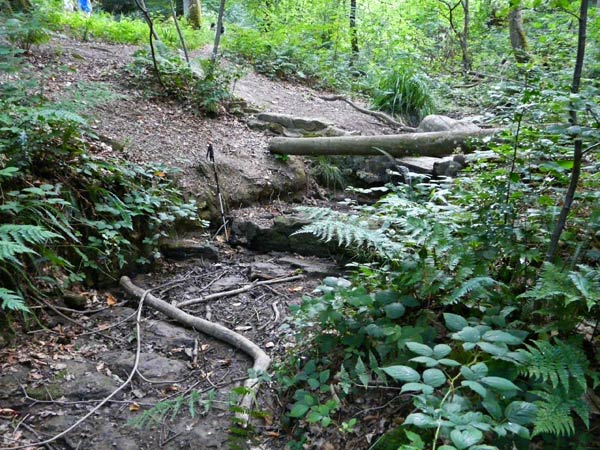
West Sussex Local Geological Sites - Cow Wood (img 602)
Ardingly Sandstone outcrop in stream bed, locality B. 1 m pole for scale.
Photograph taken: 24/07/2010Grid ref TQ26852965 Direction west
Image file: P1010940ed.jpg

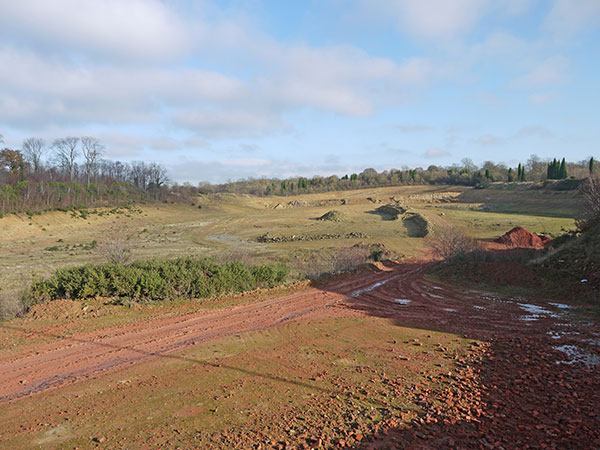
West Sussex Local Geological Sites - Freshfield Lane Brickworks (img 604)
Upper pit from kiln site. Exposes mainly Upper Tunbridge Wells Sand unit. A primary fault sub-parallel to the left (NW) edge runs along the left (NW) part of the quarry floor.
Photo taken: 29/11/2012
Grid ref TQ38532636
Direction NE
Image file: P2030222ed.jpg

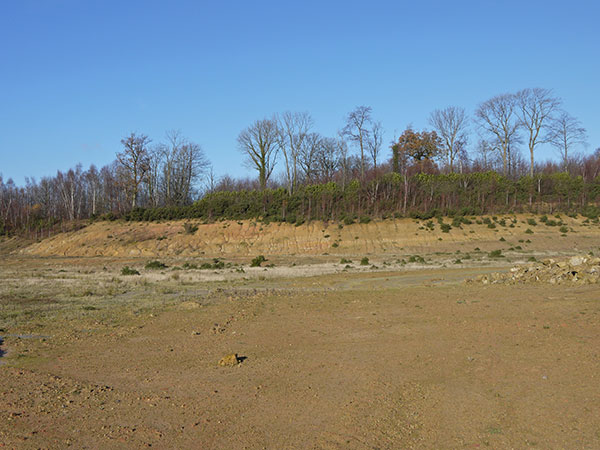
West Sussex Local Geological Sites - Freshfield Lane Brickworks (img 605)
NW face of upper pit up to 6 m high exposing Upper Tunbridge Wells Sand unit to the left and probably Cuckfield Stone overlying lower Grinstead Clay to the right, separated by a fault.
Photo taken: 29/11/2012
Grid ref TQ38592641
Direction NNW
Image file: P2030263croped.jpg

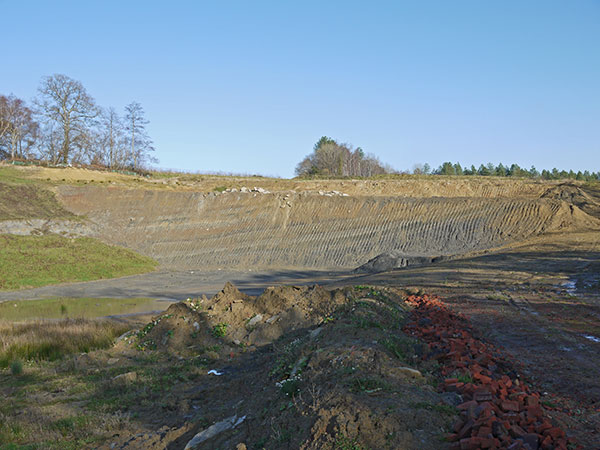
West Sussex Local Geological Sites - Freshfield Lane Brickworks (img 606)
Active main face at NE end of lower pit about 15 m high exposing pale grey, dark grey and brown clays of the Wadhurst Clay Formation. Higher bench exposes the transition from Wadhurst Clay to Lower Tunbridge Wells Sand unit. Dip is due to valley bulging and shows the upper part of the anticline.
Photo taken: 29/11/2012
Grid ref TQ38272665
Direction NNE
Image file: P2030268ed.jpg

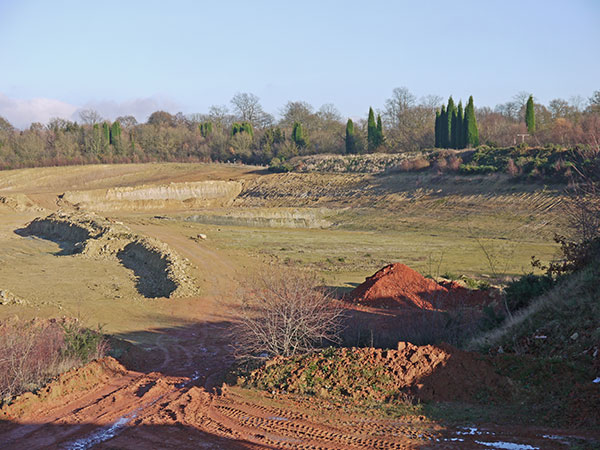
West Sussex Local Geological Sites - Freshfield Lane Brickworks (img 607)
SE side of upper pit showing SE face up to 15 m high and benches perpendicular to the face extending out into the quarry centre. Exposes Upper Tunbridge Wells Sand unit.
Photo taken: 29/11/2012
Grid ref TQ38532636
Direction ENE
Image file: P2030288ed.jpg

Stanmer Village (TQ30/135)
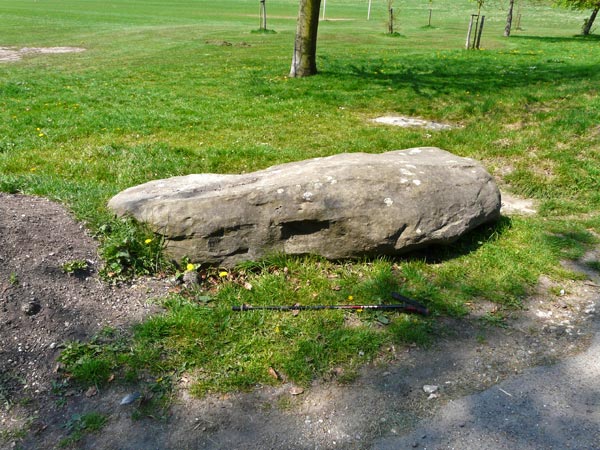
East Sussex Local Geological Sites - Stanmer Village (img 609)
Large sarsen on east side of road at Stanmer Park entrance.
1 m pole for scale.
Photograph taken: 21/04/2011
Grid ref TQ34280870
Direction east
Image file: P1030280ed.jpg

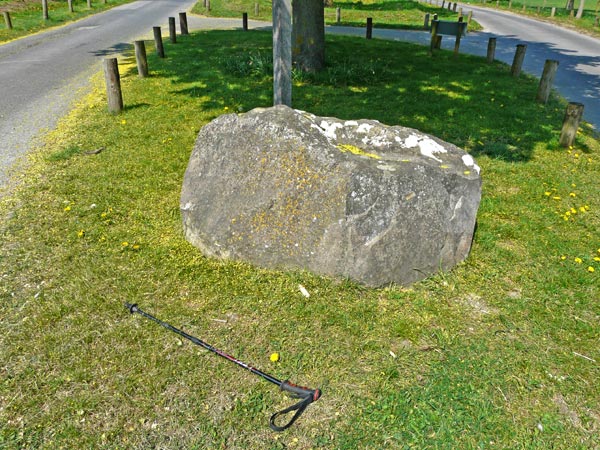
East Sussex Local Geological Sites - Stanmer Village (img 610)
Large sarsen at the fork in the road to Stanmer village. 1 m pole for scale.
Photograph taken: 21/04/2011
Grid ref TQ34000922 Direction NW
Image file: P1030285ed.jpg

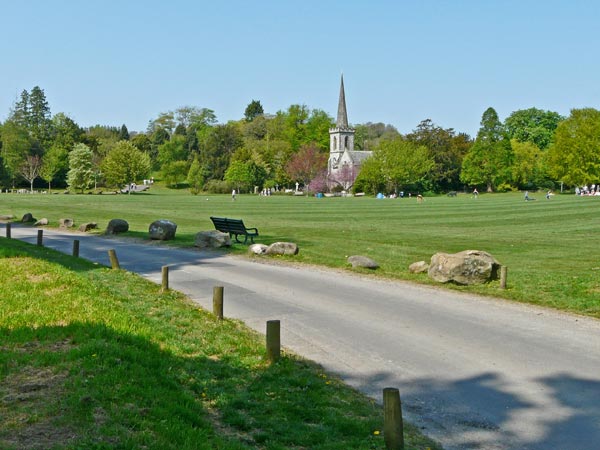
East Sussex Local Geological Sites - Stanmer Village (img 611)
Start of row of 44 sarsens lining the right side of the road approaching Stanmer House.
Photograph taken: 21/04/2011
Grid ref TQ33780945
Direction NW
Image file: P1030288ed.jpg


East Sussex Local Geological Sites - Stanmer Village (img 612)
Part of row of 44 sarsens lining the right side of the road approaching Stanmer House.
Photograph taken: 21/04/2011
Grid ref TQ33740946
Direction WNW
Image file: P1030292ed.jpg

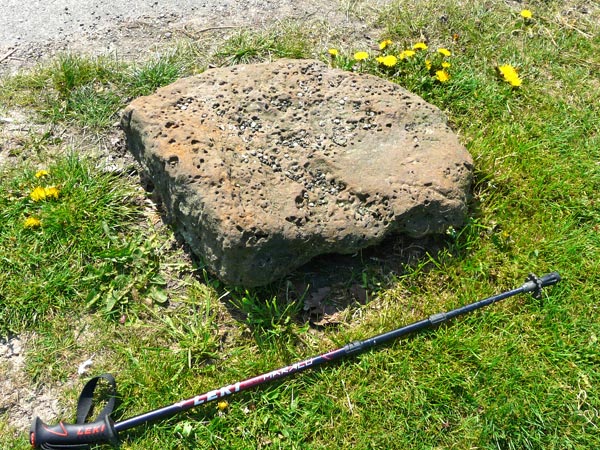
East Sussex Local Geological Sites - Stanmer Village (img 613)
Puddingstone sarsen at roadside south of Stanmer House.
1 m pole for scale. 21/04/2011
Grid ref TQ33740946
Image file: P1030293croped.jpg

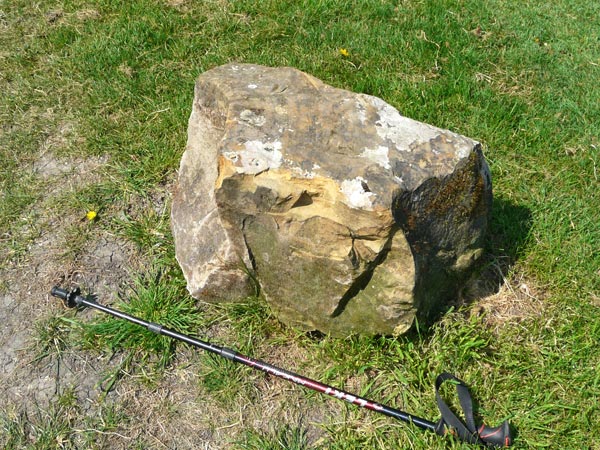
East Sussex Local Geological Sites - Stanmer Village (img 614)
Ferruginous sandstone sarsen at roadside south of Stanmer House.
1 m pole for scale.
Photograph taken: 21/04/2011
Grid ref TQ33710946
Image file: P1030295croped.jpg

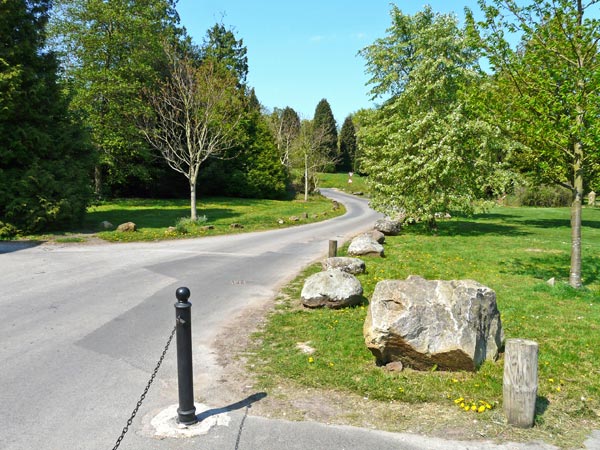
East Sussex Local Geological Sites - Stanmer Village (img 615)
Start of rows of sarsen stones on both sides of the road north of Stanmer House.
Photograph taken: 21/04/2011
Grid ref TQ34000922
Direction NW
Image file: P1030301ed.jpg

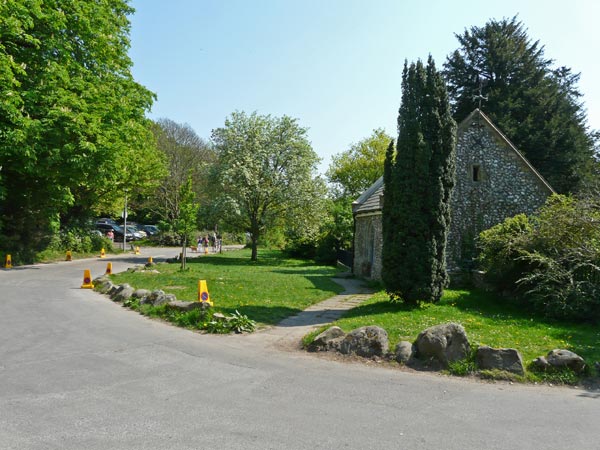
East Sussex Local Geological Sites - Stanmer Village (img 616)
Roadside sarsens lining the corner by Stanmer Church.
Photograph taken: 21/04/2011
Grid ref TQ33640961
Direction east
Image file: P1030309ed.jpg

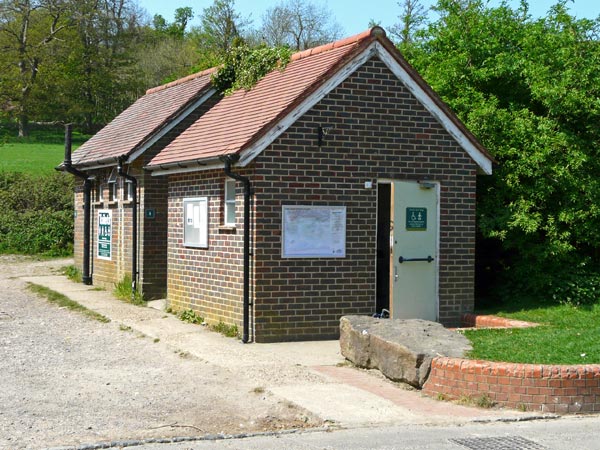
East Sussex Local Geological Sites - Stanmer Village (img 617)
A large sarsen stone has been incorporated into the wall at the front of the public toilets in Stanmer village.
Photograph taken: 21/04/2011
Grid ref TQ33630970
Direction west
Image file: P1030310ed.jpg

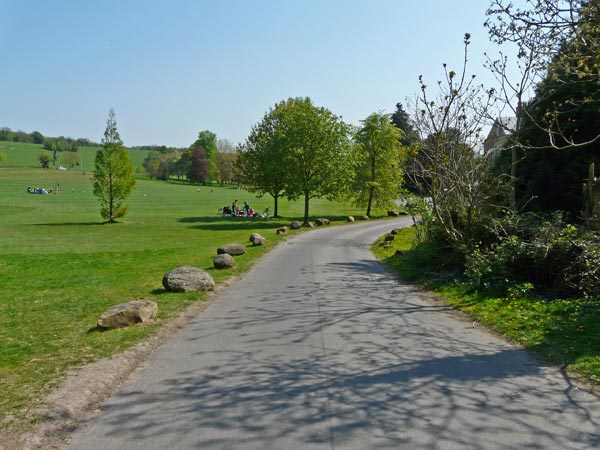
East Sussex Local Geological Sites - Stanmer Village (img 618)
Row of roadside sarsens north of Stanmer House.
Photograph taken: 21/04/2011
Grid ref TQ33610954
Direction SE
Image file: P1030311ed.jpg


East Sussex Local Geological Sites - Stanmer Village (img 619)
Sarsens set in pavement and overgrown sarsens lining the NE side of Stanmer Pond.
Photograph taken: 21/04/2011
Grid ref TQ33700959
Direction SE
Image file: P1030313ed.jpg

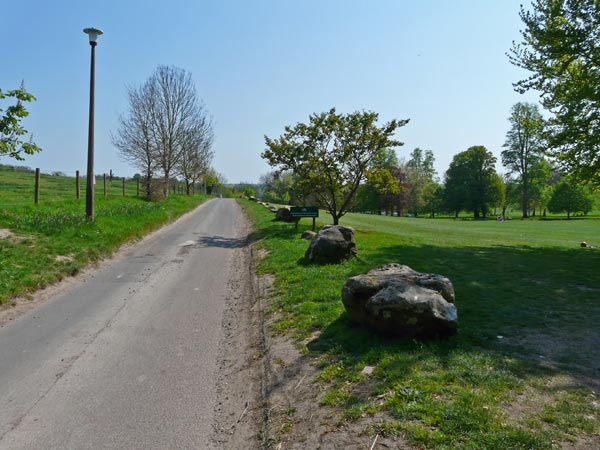
East Sussex Local Geological Sites - Stanmer Village (img 620)
Start of row of 44 sarsens lining the right side of the road south of Stanmer Pond.
Photograph taken: 21/04/2011
Grid ref TQ33720958
Direction SE
Image file: P1030314ed.jpg

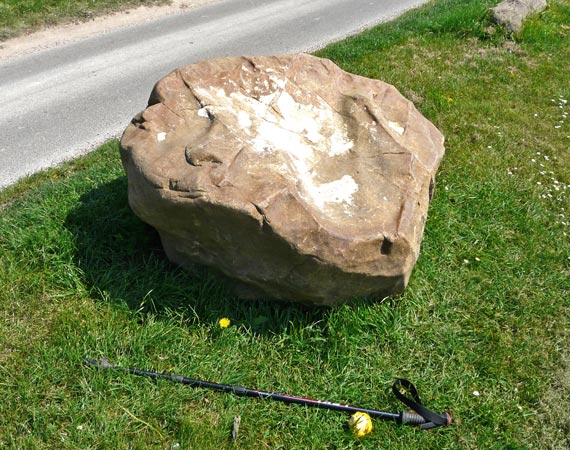
East Sussex Local Geological Sites - Stanmer Village (img 621)
Sandstone sarsen at roadside south of Stanmer Pond. Similar stones are found at Rock Pond.
Photograph taken: 21/04/2011
Grid ref. TQ33740956
Image file: P1030315croped.jpg

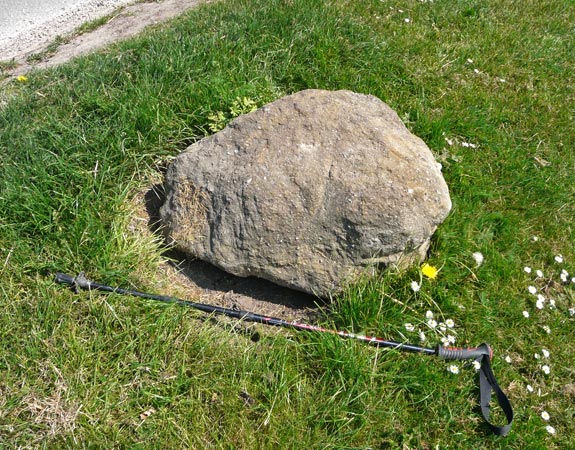
East Sussex Local Geological Sites - Stanmer Village (img 622)
Sandstone sarsen at roadside south of Stanmer Pond. Contains coarser fragments similar to some stones at Rock Pond.
Photograph taken: 21/04/2011
Grid ref TQ33750954
Image file: P1030316croped.jpg

Black Rock, Brighton (TQ30/236)

East Sussex Local Geological Sites - Black Rock Brighton Marina (img 624)
Cliff face about 20 m high exposing Pleistocene sediments. Dry valley deposits overlie an unconformity surface dipping left (west). Beneath the unconformity a wedge of coarse rubbly deposits overlies a basal layer of raised beach sands and gravels. The underlying fossil wavecut chalk platform is obscured by vegetation.
Photograph taken: 24/05/2012
Grid ref TQ33580335
Direction north
Image file: P1020111.jpg


East Sussex Local Geological Sites - Black Rock Brighton Marina (img 625)
Cliff exposing Pleistocene sediments, mostly coarse rubbly deposits. The cliff has been engineered for slope stability with soil nails and the stratigraphic detail is obscured.
Photograph taken: 24/05/2012
Grid ref TQ33620336
Direction NNE
Image file: P1020124.jpg

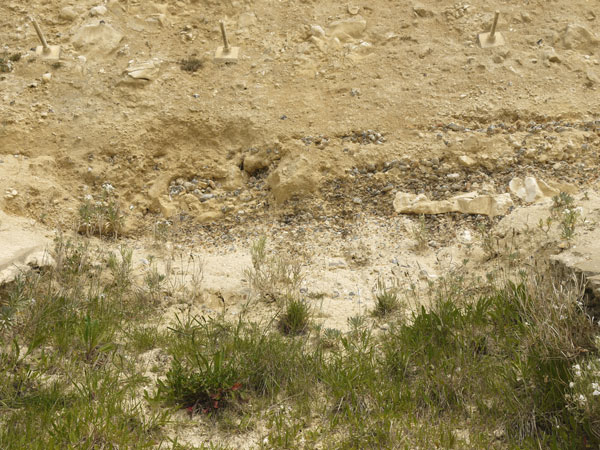
East Sussex Local Geological Sites - Black Rock Brighton Marina (img 626)
Detail of Pleistocene sediments at base of cliff showing basal layer of raised beach sands and gravels including blocks of chalk. The underlying fossil wavecut chalk platform is obscured by vegetation and debris.
Photograph taken: 24/05/2012
Grid ref TQ33650336
Direction north
Image file: P1020130.jpg

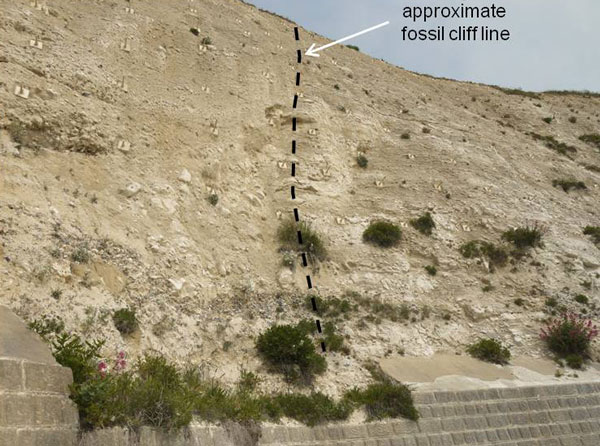
East Sussex Local Geological Sites - Black Rock Brighton Marina (img 627)
Fossil cliff line exposed in modern cliff. Slope stabilisation works have obscured the contact between Pleistocene sediments on the left and chalk on the right. The cliff line is marked by terminations of flint bands in the chalk and terminations of Pleistocene raised beach gravels.
Photograph taken: 24/05/2012
Grid ref TQ33710334
Direction NNE
Image file: P1020132annotated.jpg

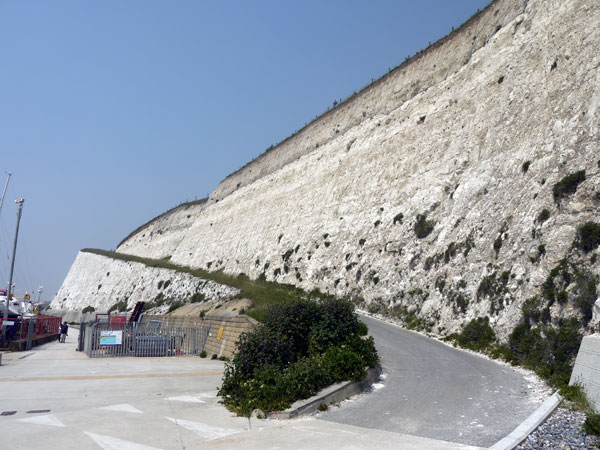
East Sussex Local Geological Sites - Black Rock Brighton Marina (img 628)
Cliffs exposing Newhaven Chalk at eastern end of site where a road provides access to the Old Nore Beds of the Newhaven Chalk. The top of the cliff is obscured by safety netting.
Photograph taken: 24/05/2012
Grid ref 34520311
Direction NW
Image file: P1020146.jpg

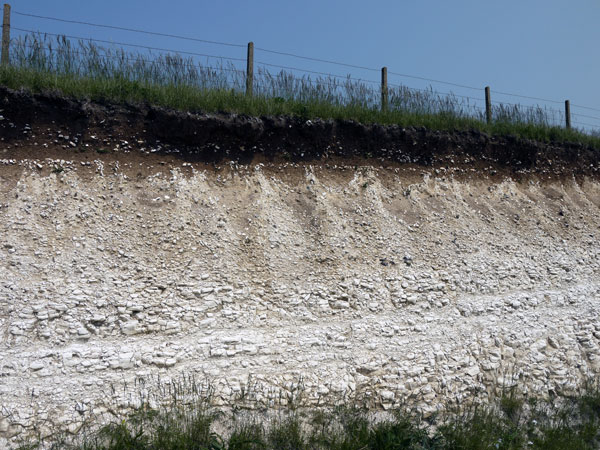
East Sussex Local Geological Sites - Black Rock Brighton Marina (img 629)
Thin Pleistocene deposits with cryoturbation lobes at base overlying weathered chalk at cliff top.
Photograph taken: 24/05/2012
Grid ref TQ34350317
Direction NE
Image file: P1020147.jpg

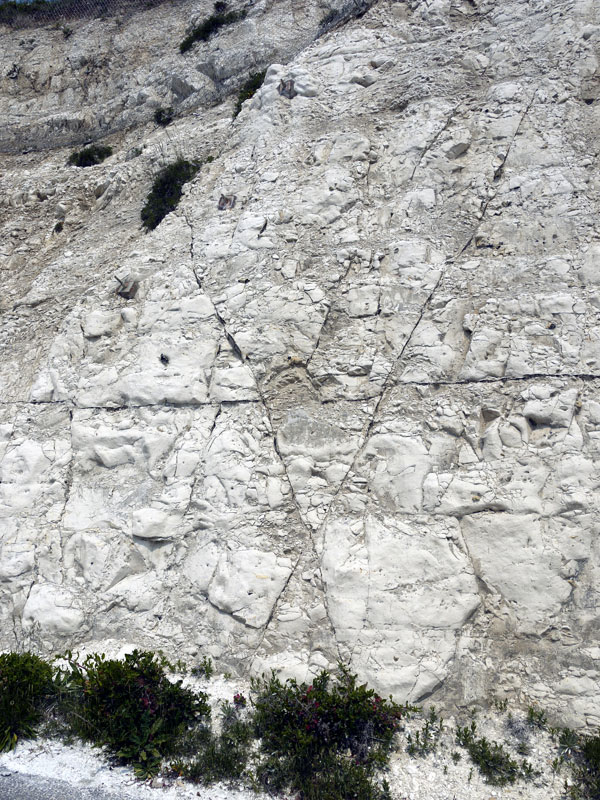
East Sussex Local Geological Sites - Black Rock Brighton Marina (img 630)
Good example of conjugate fractures accentuated by flint infilling.
Old Nore Beds, Newhaven Chalk.
Photograph taken: 24/05/2012
Grid ref TQ34440315
Direction NNE
Image file: P1020150.jpg


East Sussex Local Geological Sites - Black Rock Brighton Marina (img 631)
Cliffs exposing Newhaven Chalk with prominent marl seams and flint bands. A low angle fracture infilled by flint cuts across the bedding in the lower cliff.
Photograph taken: 24/05/2012
Grid ref TQ34360315
Direction NW
Image file: P1020152.jpg

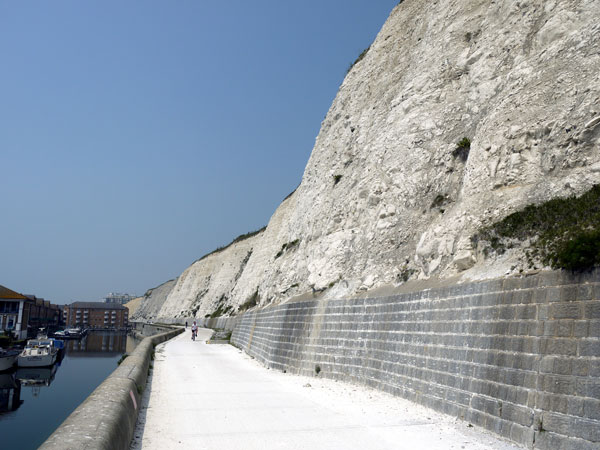
East Sussex Local Geological Sites - Black Rock Brighton Marina (img 632)
Cliffs exposing Newhaven Chalk with marl seams and flint bands. Most of the cliff section shows good sedimentary and structural detail especially in the lower cliff.
Photograph taken: 24/05/2012
Grid ref TQ34210320
Direction WNW
Image file: P1020153.jpg


East Sussex Local Geological Sites - Black Rock Brighton Marina (img 633)
Cliffs exposing Newhaven Chalk with prominent marl seams and flint bands. The lower cliff shows the Brighton Marl and underlying marls and wispy bedding in the lowest chalk beds.
Photograph taken: 24/05/2012
Grid ref TQ33990327
Direction east
Image file: P1020160.jpg

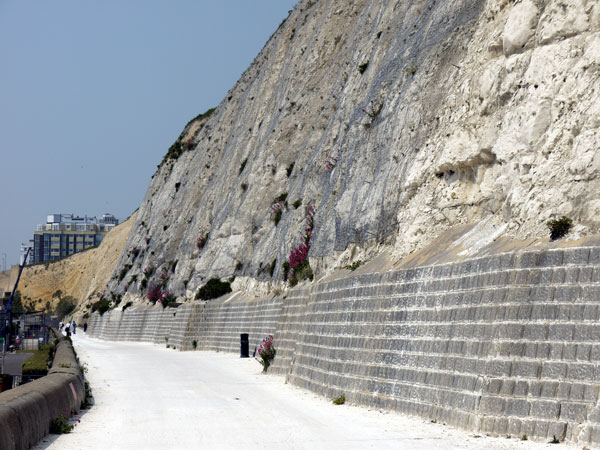
East Sussex Local Geological Sites - Black Rock Brighton Marina (img 634)
Cliffs exposing Newhaven Chalk east of the fossil cliff line. This first section is obscured by safety netting.
Photograph taken: 24/05/2012
Grid ref TQ33970328
Direction WNW
Image file: P1020163.jpg

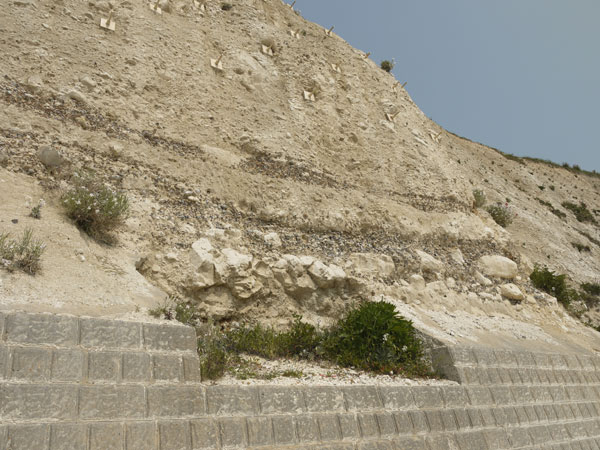
East Sussex Local Geological Sites - Black Rock Brighton Marina (img 635)
Pleistocene raised beach deposits exposed in lower cliff close to the fossil cliff line. Sands and interbedded gravels and are also associated with chalk boulders and rubble.
Photograph taken: 24/05/2012
Grid ref TQ33700335
Direction NE
Image file: P1020170.jpg

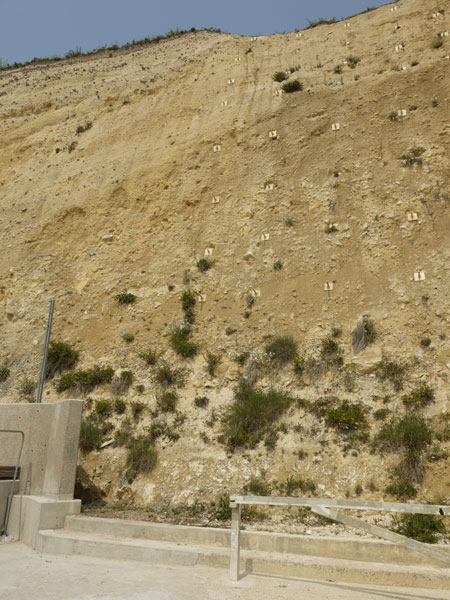
East Sussex Local Geological Sites - Black Rock Brighton Marina (img 636)
Cliff exposing Pleistocene sediments, mostly coarse rubbly deposits. A basal layer of raised beach sands and gravels overlies a fossil wavecut chalk platform. The upper part of the cliff has been engineered for slope stability with soil nails and the stratigraphic detail is obscured.
Photograph taken: 24/05/2012
Grid ref TQ33600336
Direction NNW
Image file: P1020173.jpg


East Sussex Local Geological Sites - Black Rock Brighton Marina (img 637)
Cliff face about 20 m high exposing Pleistocene sediments to east of photo 5. Dry valley deposits in upper face overlie an unconformity surface dipping left (west). Beneath the unconformity a wedge of coarse rubbly deposits overlies a basal layer of raised beach sands and gravels. The underlying fossil wavecut chalk platform is obscured by vegetation. Interpretation board at right.
Photograph taken: 24/05/2012
Grid ref TQ33580336
Direction NNE
Image file: P1020178.jpg

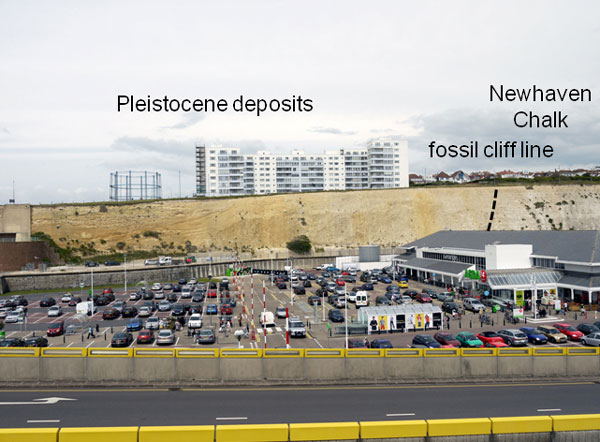
East Sussex Local Geological Sites - Black Rock Brighton Marina (img 638)
Western end of cliff exposing Pleistocene deposits. Finer grained dry valley sediments dipping to the left (west) overlie coarser rubbly sediments which thicken to the right (east) towards the fossil chalk cliff line.
Photograph taken: 25/06/201
Grid ref TQ33570321
Direction north
Image file: P1020285annotated.jpg

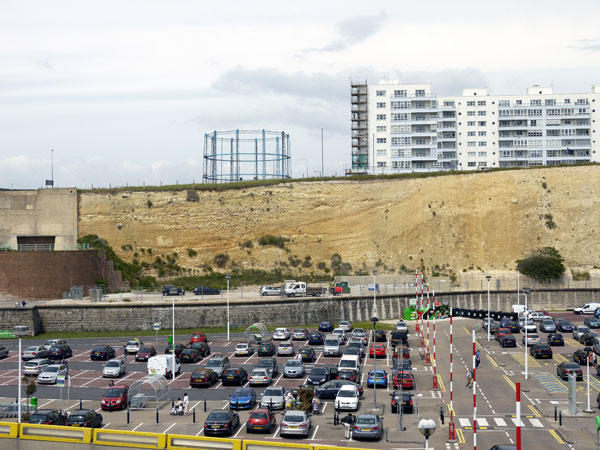
East Sussex Local Geological Sites - Black Rock Brighton Marina (img 639)
Western part of Pleistocene deposits. Finer grained dry valley sediments dipping to the left (west) overlie coarser rubbly deposits which thicken to the right (east).
Photograph taken: 25/06/2012
Grid ref TQ33570321
Direction NNE
Image file: P1020286.jpg

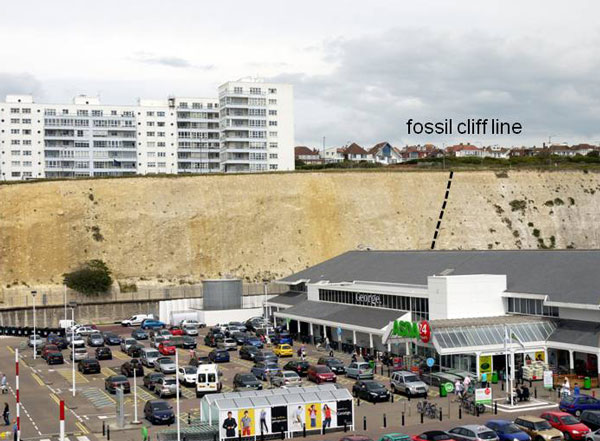
East Sussex Local Geological Sites - Black Rock Brighton Marina (img 640)
Eastern end of Pleistocene deposits. Coarse rubbly deposits thicken to the right (east) and are banked up against a fossil chalk cliff line. The ancient cliff runs obliquely to the modern cliffs which east of the fault expose Newhaven Chalk with prominent flint and marl beds.
Photograph taken: 25/06/2012
Grid ref TQ33570321
Direction NE
Image file: P1020288annotated.jpg

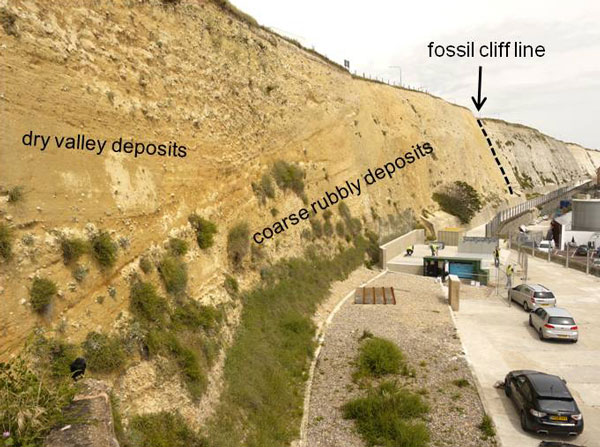
East Sussex Local Geological Sites - Black Rock Brighton Marina (img 641)
Western end of cliff section exposing Pleistocene deposits east of a fossil chalk cliff line. Finer grained dry valley sediments dipping to the left (west) overlie coarser rubbly sediments which thicken to the right (east).
Photograph taken: 25/06/2012
Grid ref TQ33560336
Direction east
Image file: P1020289annotated.jpg


East Sussex Local Geological Sites - Black Rock Brighton Marina (img 642)
Cross section of Pleistocene deposits shown on the interpretation board. The younger (upper) sediments which thicken to the west comprise finer grained solifluction deposits associated with a dry valley.
Created 25/06/2012
Grid ref TQ33590336
Image file: P1020294crop.jpg

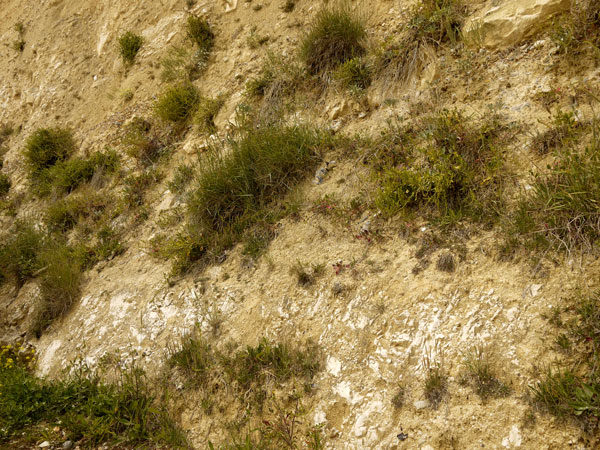
East Sussex Local Geological Sites - Black Rock Brighton Marina (img 643)
At the base of the cliff Pleistocene raised beach sands and gravels overlie chalk representing a fossil wavecut chalk platform.
Photograph taken: 25/06/2012
Grid ref TQ33620337
Direction north
Image file: P1020301.jpg

Rock Pond, Standean (TQ31/179)
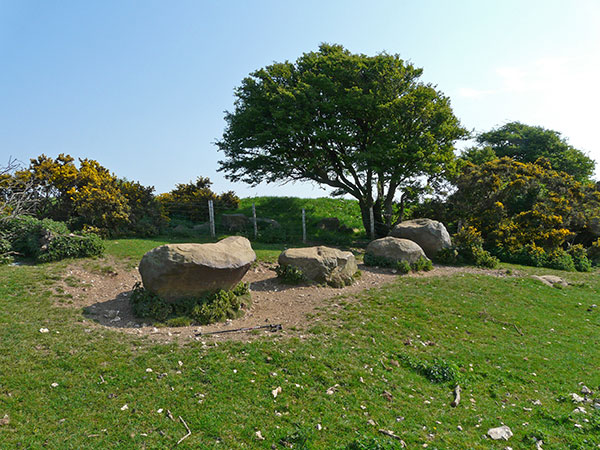
East Sussex Local Geological Sites - Rock Pond, Standean (img 645)
Main group of larger sarsen stones.
Photo taken: 21/04/2011
Grid ref TQ31541206
Direction NE
Image file: P1030264ed.jpg

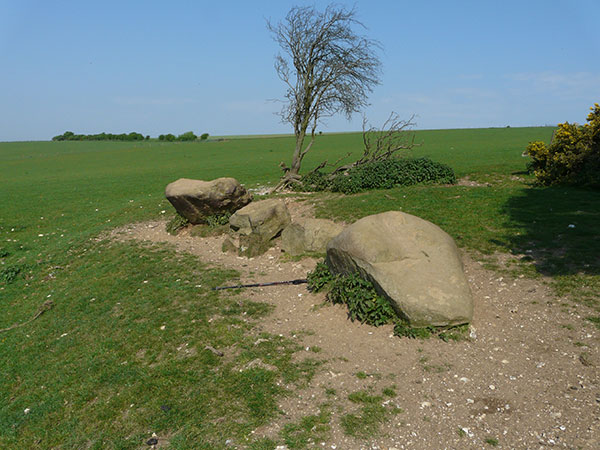
East Sussex Local Geological Sites - Rock Pond, Standean (img 646)
Part of main group of larger sarsen stones showing combination of rounded and planar surfaces.
Photo taken: 21/04/2011
Grid ref TQ31511206
Direction WNW
Image file: P1030268.jpg

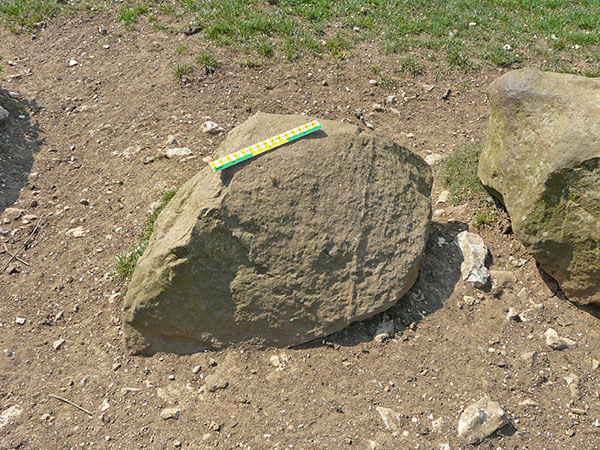
East Sussex Local Geological Sites - Rock Pond, Standean (img 647)
Smaller sarsen showing granular texture and prominent weathered vein.
30cm scale.
Photo taken: 21/04/2011
Grid ref TQ31471206
Direction south
Image file: P1030272ed.jpg

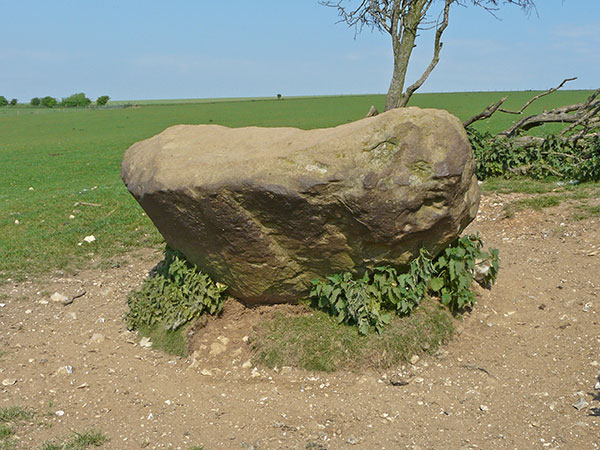
East Sussex Local Geological Sites - Rock Pond, Standean (img 648)
Westernmost sarsen showing combination of rounded and planar surfaces.
1m pole for scale.
Photo taken: 21/04/2011
Grid ref TQ31431206
Direction NW
Image file: P1030275ed.jpg

Keymer Tileworks, Burgess Hill (TQ31/61)
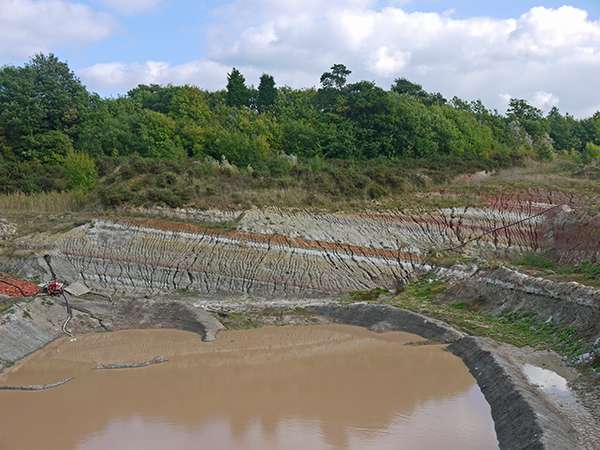
West Sussex Local Geological Sites - Keymer Tileworks (img 650)
SE end of main pit. Exposed section is about 14 m thick. Lower part termed “Grey Clay” has interbedded siltstones and a prominent reddish brown clay layer with a whitish siltstone beneath. Upper part termed “Red Clay” has grey interbeds and shows more lateral variation.
Photo taken: 08/10/2013
Grid ref TQ32401918
Direction ESE
Image file: P1040194ed.jpg

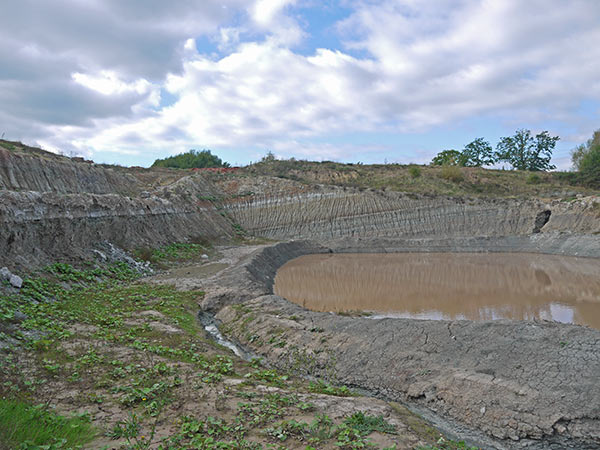
West Sussex Local Geological Sites - Keymer Tileworks (img 651)
SW edge of Red Pit up to 6m high exposing top of “Red Clay” and overlying bluish grey clay. Beds appear to be thick and relatively homogeneous. The most recently worked bench is in the foreground.
Photo taken: 08/10/2013
Grid ref TQ32341912
Direction SE
Image file: P1040201ed.jpg


DUPLICATE (img 652)
DUPLICATE
Image file: P1040225ed.jpg


West Sussex Local Geological Sites - Keymer Tileworks (img 653)
Part of SW edge of Red Pit up to 5m high exposing bluish grey clay with thin siltstone and ironstone beds at the top.
Photo taken: 08/10/2013
Grid ref TQ32361911
Direction SSE
Image file: P1040225ed_2.jpg

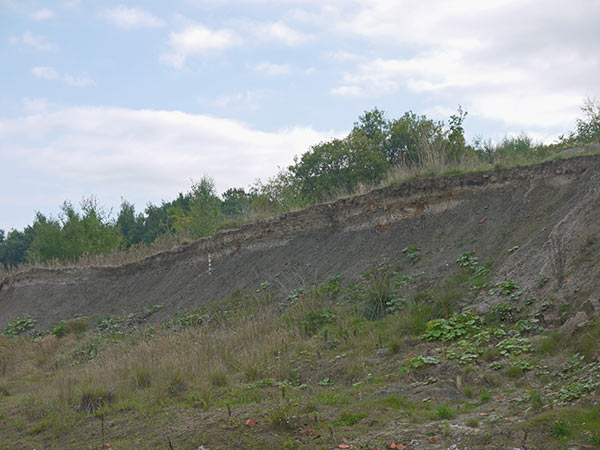
West Sussex Local Geological Sites - Keymer Tileworks (img 654)
SW and NW sides of main pit exposing “Grey Clay” dipping about 6° SSW with “Red Clay” exposed on higher bench to left. The beds show good lateral continuity with the same sequence exposed in the SE face.
Photo taken: 08/10/2013
Grid ref TQ32461915
Direction west
Image file: P1040240ed.jpg


West Sussex Local Geological Sites - Keymer Tileworks (img 655)
SW corner of Red Pit exposing top of “Red Clay” and overlying bluish grey clay. Beds appear to be thick and relatively homogeneous. The most recently worked bench is on the right. Only about 3 m thickness of bedrock is exposed. The material behind is spoil or stockpiled clay.
Photo taken: 08/10/2013
Grid ref TQ32381911
Direction WSW
Image file: P1040245ed.jpg

Novington Sand Quarry, Plumpton (TQ31/83)

East Sussex Local Geological Sites - Novington Sand Quarry (img 657)
Close-up of face at centre of photo 2 exposing sands which are relatively structureless towards the base and show coarse laminations (silty bands) towards the top.
About 4m high.
1 m pole for scale.
Photo taken: 22/08/2012
Grid ref TQ37071457
Direction NE
Image file: P2020892ed.jpg

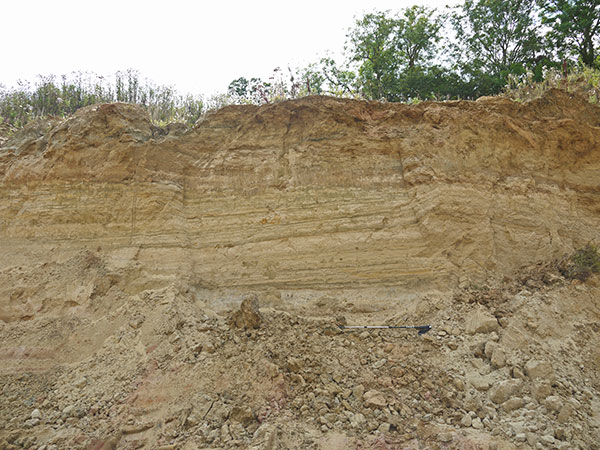
East Sussex Local Geological Sites - Novington Sand Quarry (img 658)
Close-up of centre of face shown in photo 5. Exposes finely laminated sands with greenish grey silty layers showing evidence of burrowing. A small-scale fold and related fault is apparent to the right.
1 m pole for scale.
Photo taken: 22/08/2012
Grid ref TQ37001452
Direction SE
Image file: P2020903ed.jpg

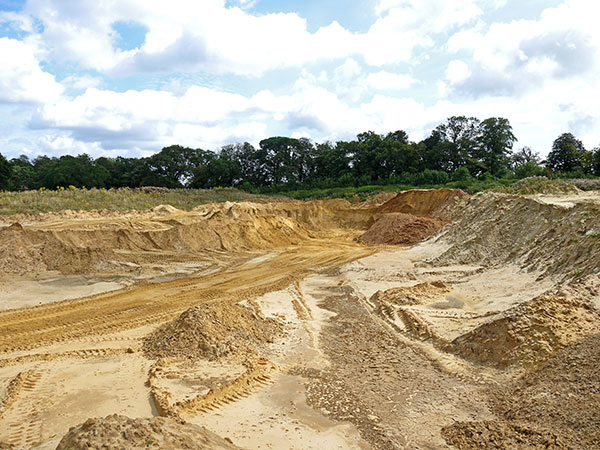
East Sussex Local Geological Sites - Novington Sand Quarry (img 659)
Northern faces (at left of photo 1) exposing buff, yellowish-brown lower sands to left and red-stained upper sands to right.
Up to 5 m high. Face at right is obscured by spoil.
Photo taken: 22/08/2012
Grid ref TQ36991454
Direction ENE
Image file: P2020916ed.jpg


East Sussex Local Geological Sites - Novington Sand Quarry (img 660)
Part of southern face showing sands with irregular red-staining cutting across bedding at left and sands with finely laminated bedding at right.
3 to 4m high.
Photo taken: 22/08/2012
Grid ref TQ36991454
Direction SE
Image file: P2020917ed.jpg

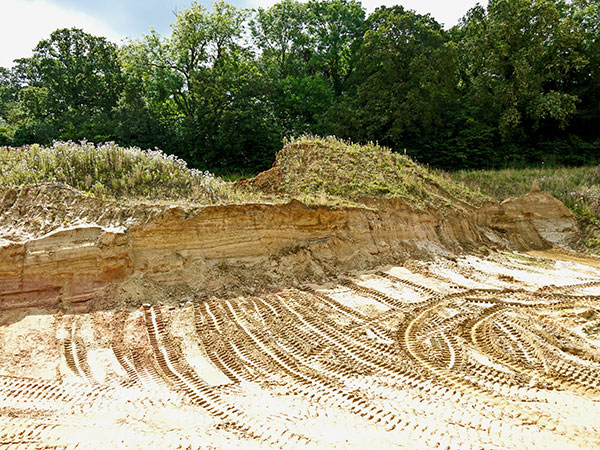
East Sussex Local Geological Sites - Novington Sand Quarry (img 661)
Part of southern face to right of photo 4 exposing finely laminated sands with greenish grey silty layers.
Face 3 to 4m high.Grid ref Direction
Photo taken: 22/08/2012
Grid ref TQ36991454
Direction south
Image file: P2020919ed.jpg

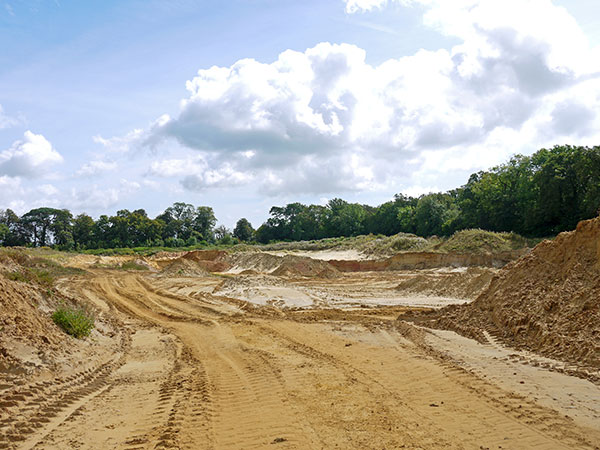
East Sussex Local Geological Sites - Novington Sand Quarry (img 662)
Active eastern part of the quarry exposing Folkestone Formation sands in low faces up to 5m high.
Photo taken: 22/08/2012
Grid ref TQ36901459
Direction ESE
Image file: P2020927ed.jpg

Scaynes Hill Quarry and road cutting (TQ32/54)
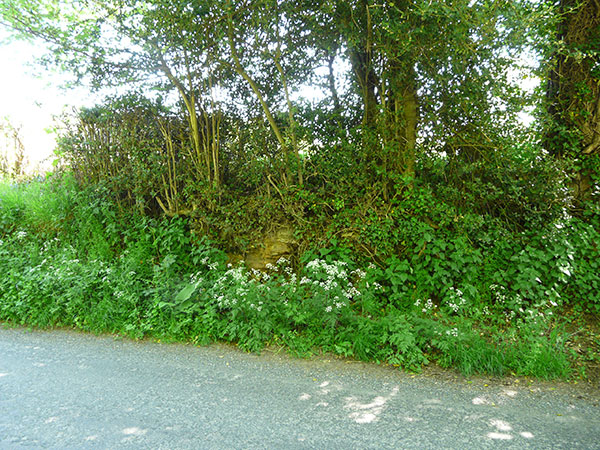
West Sussex Local Geological Sites - Scaynes Hill Quarry and Roadcutting (img 664)
Road cutting (bank) showing small exposure of Cuckfield Stone (sandstone) mostly covered in vegetation.
Photo taken: 24/05/2010
Grid ref TQ39112277
Direction east
Image file: P1030338.jpg

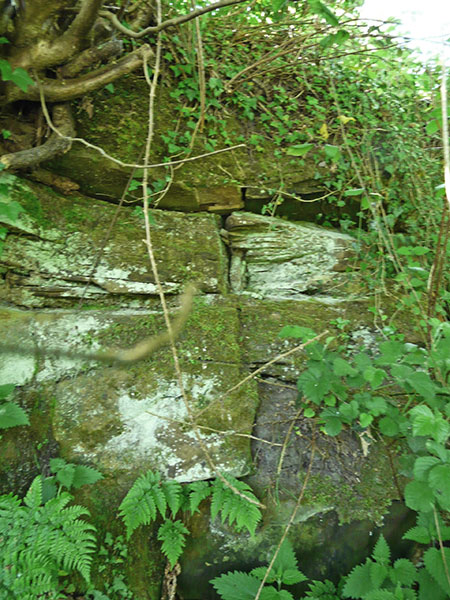
West Sussex Local Geological Sites - Scaynes Hill Quarry and Roadcutting (img 665)
Part of quarry face about 3m high and relatively vegetation-free showing Cuckfield stone with trough cross-bedding and jointing.
Photo taken: 24/05/2010
Grid ref TQ39112278
Direction west
Image file: P1030340ed.jpg

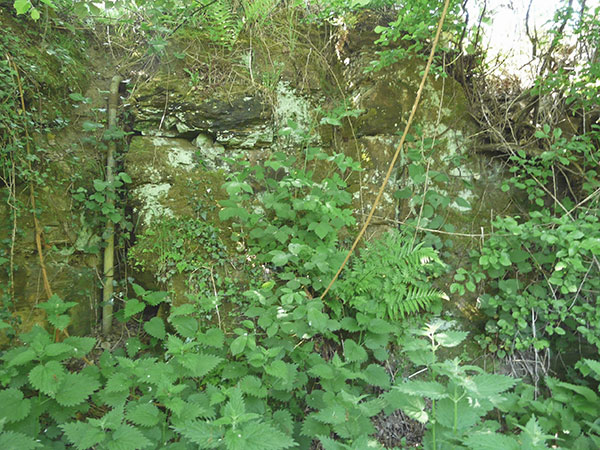
West Sussex Local Geological Sites - Scaynes Hill Quarry and Roadcutting (img 666)
Part of quarry face about 3m high with vegetation cover obscuring the cross-bedding and joints in the Cuckfield Stone.
Photo taken: 24/05/2010
Grid ref TQ39112278
Direction west
Image file: P1030341ed.jpg


West Sussex Local Geological Sites - Scaynes Hill Quarry and Roadcutting (img 667)
Increasing vegetation cover progressively obscures the Cuckfield Stone northern part of the quarry face, up to 3m high.
Photo taken: 24/05/2010
Grid ref TQ39102279
Direction NW
Image file: P1030342ed.jpg

Philpots Quarry, West Hoathly (TQ33/04)
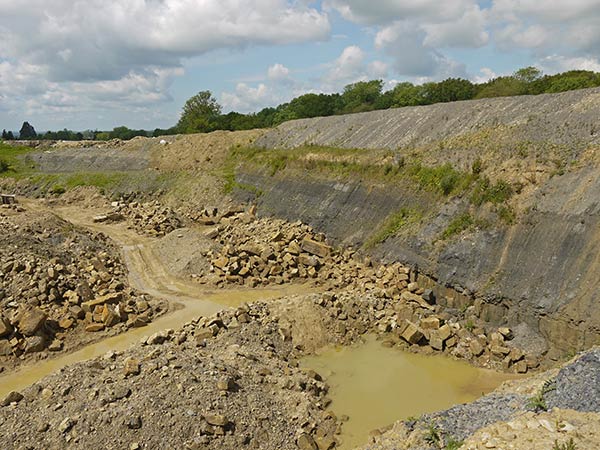
West Sussex Local Geological Sites - Philpots Quarry (img 669)
NW edge of quarry with faces less steep than the NE end exposing massive well-jointed Ardingly Sandstone at base overlain by lower Grinstead Clay. Numerous Ardingly sandstone blocks are piled on the quarry floor.
Photo taken: 19/06/2012
Grid ref TQ35643237
Direction west
Image file: P2020240ed.jpg

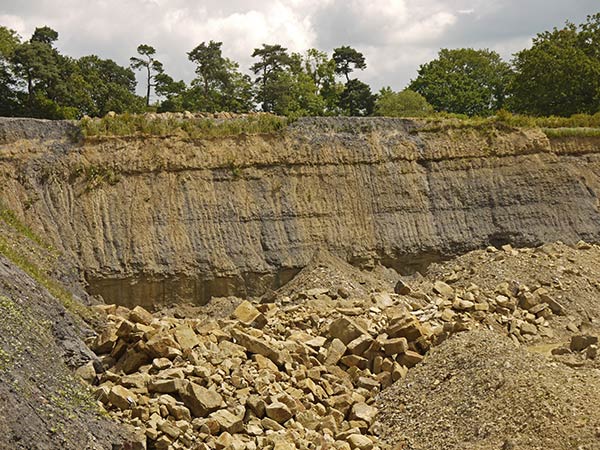
West Sussex Local Geological Sites - Philpots Quarry (img 670)
Eastern end of quarry with steep faces exposing the upper Ardingly Sandstone at the base and the overlying lower Grinstead Clay with Cuckfield Stone at the top. Large piles of Ardingly Sandstone blocks occupy much of the quarry floor.
Photo taken: 19/06/2012
Grid ref TQ35543234
Direction ESE (taken with zoom lens)
Image file: P2020257ed.jpg


West Sussex Local Geological Sites - Philpots Quarry (img 671)
Active eastern part of quarry with faces up to 14 m high. The faces on the left (NW) side of the quarry are not as steep as the faces at the far (NE) end and a bench cuts across the middle of the face in the foreground.
Photo taken: 19/06/2012
Grid ref TQ35503227
Direction NE
Image file: P2020259ed.jpg

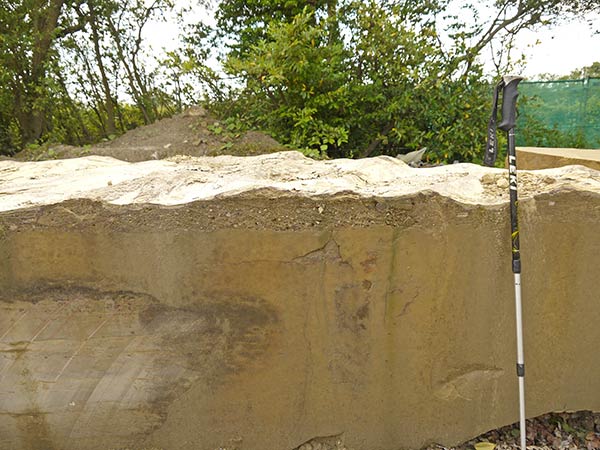
West Sussex Local Geological Sites - Philpots Quarry (img 672)
Specimen quarried block set at the side of the access track showing large ripples on upper surface of Lower Tunbridge Wells Pebble Bed at the top of the Ardingly sandstone. The pebble bed is visible in cross section with a minor unconformity at its base.
1 m pole for scale.
Photo taken: 19/06/2012
Grid ref TQ35503221
Image file: P2020273ed.jpg

Chiddingly Woods, Great Upon Little (TQ33/07)
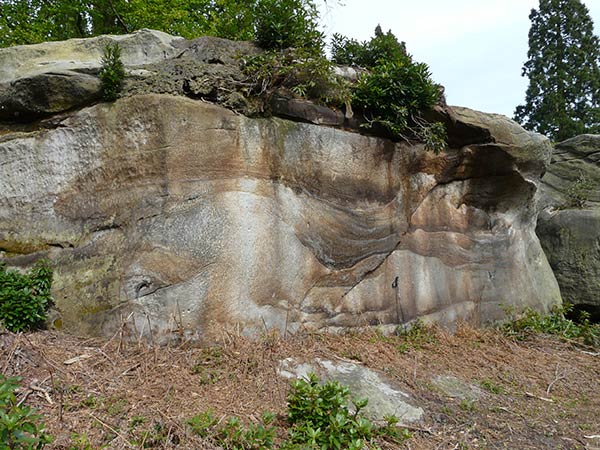
West Sussex Local Geological Sites - Chiddingly Woods (img 674)
Clean massive sandstone face showing fluvial channel scour with internal bedding detail.
1 m pole for scale.
Photo taken: 28/04/2010
Grid ref TQ34853205
Direction NE
Image file: P1010251.jpg


West Sussex Local Geological Sites - Chiddingly Woods (img 675)
Massive perched sandstone block known as "Great upon Little" showing weathering with polygonal cracking.
Photo taken: 28/04/2010
Grid ref TQ34853205
Direction ESE
Image file: P1010255ed.jpg

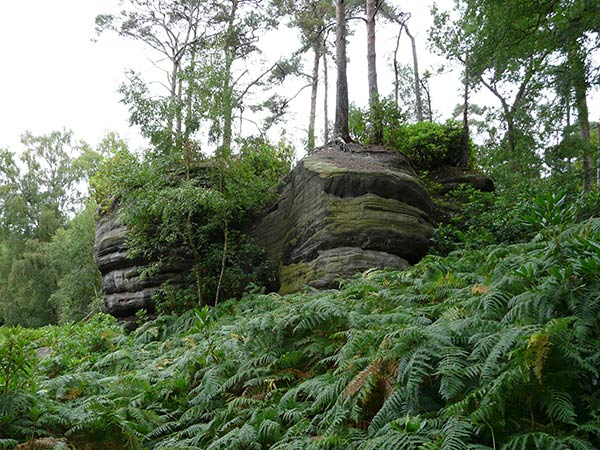
West Sussex Local Geological Sites - Chiddingly Woods (img 676)
Massive sandstone buttresses along western edge. Differential weathering has picked out the main bedding units.
Photo taken: 10/08/2010
Grid ref TQ34753212
Direction N
Image file: P1020120crop.jpg

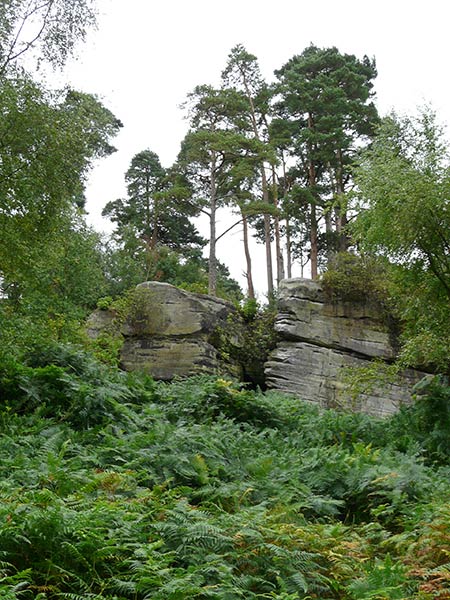
West Sussex Local Geological Sites - Chiddingly Woods (img 677)
Massive sandstone buttresses in re-entrant section of western edge. Differential weathering has picked out the main bedding units.
Photo taken: 10/08/2010
Grid ref TQ34753218
Direction SE
Image file: P1020133ed.jpg

Hook Quarry, West Hoathly (TQ33/08)
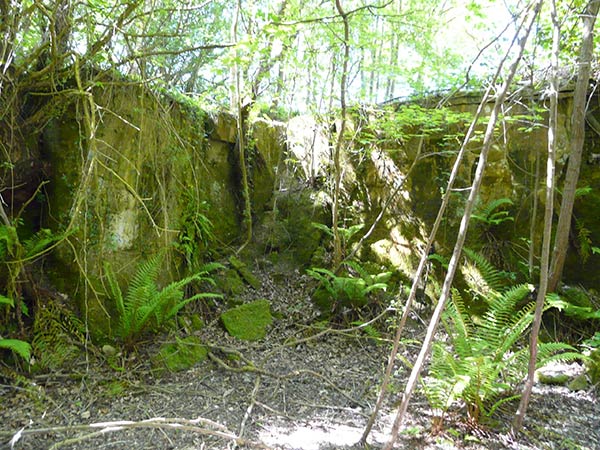
West Sussex Local Geological Sites - Hook Quarry (img 679)
SE corner of quarry with faces up to 3 m high exposing Ardingly Sandstone. Obscured by trees, shrubs and moss.
Photo taken: 24/05/2010
Grid ref TQ35553131
Direction SE
Image file: P1010325.jpg

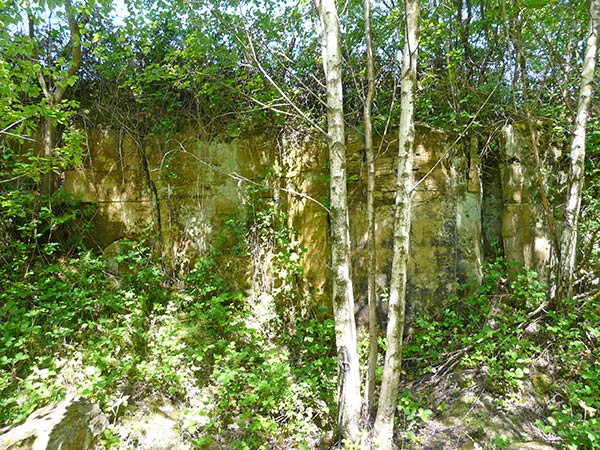
West Sussex Local Geological Sites - Hook Quarry (img 680)
Cleaner exposures of Ardingly sandstone about 3 m high at northern edge of quarry showing open joint at right.
Photo taken: 24/05/2010
Grid ref TQ35553141
Direction north
Image file: P1010332ed.jpg

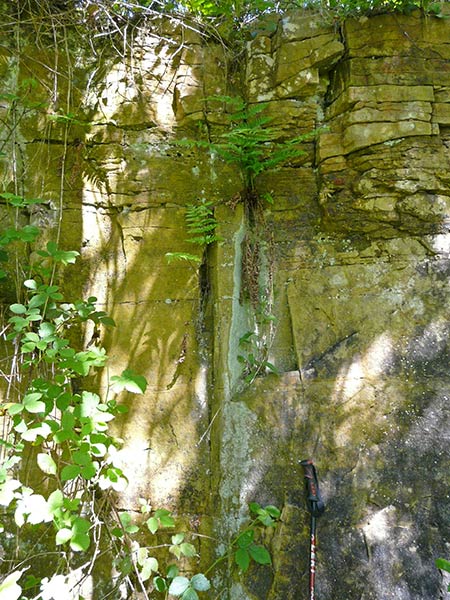
West Sussex Local Geological Sites - Hook Quarry (img 681)
Detail of face in photo 3 showing massive sandstone below and flaggy sandstone above with coarse trough cross bedding.
Top of pole for scale.
Photo taken: 24/05/2010
Grid ref TQ35553141
Direction north
Image file: P1010335ed.jpg


West Sussex Local Geological Sites - Hook Quarry (img 682)
Detail of western face with cleared fresh section showing stratigraphic detail.
1 m pole for scale.
Photo taken: 24/05/2010
Grid ref TQ35523133
Direction west
Image file: P1010337.jpg

Stone Hill Farm Rocks, East Grinstead (TQ33/09)
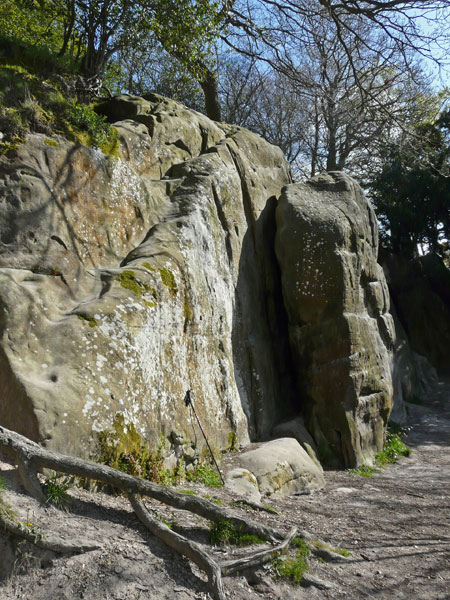
West Sussex Local Geological Sites - Stone Hill Farm Rocks (img 684)
Massive sandstone face near western end of outcrop showing detached block with open joint (gull) behind. 1 m pole for scale.
Photograph taken: 21/04/2010
Grid ref. TQ38023476
Direction east
Image file: P1010088ed.jpg

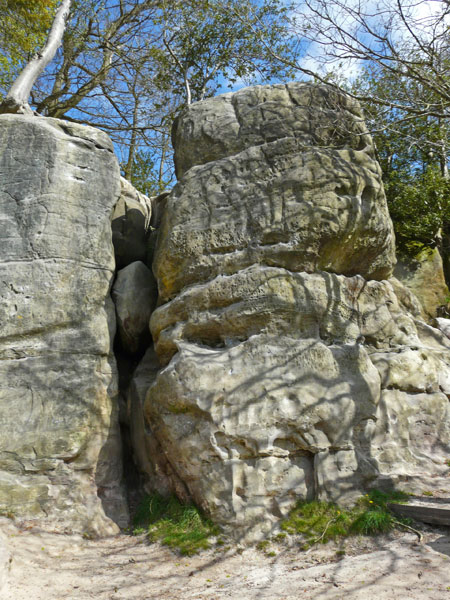
West Sussex Local Geological Sites - Stone Hill Farm Rocks (img 685)
Massive sandstone blocks 5 m high separated by open joint plane (gull) with chockstone. Bedding detail and honeycomb weathering visible in upper face but obscured by climbing damage in lower face.
Photograph taken: 21/04/2010
Grid ref. TQ38053475
Direction north
Image file: P1010101ed.jpg

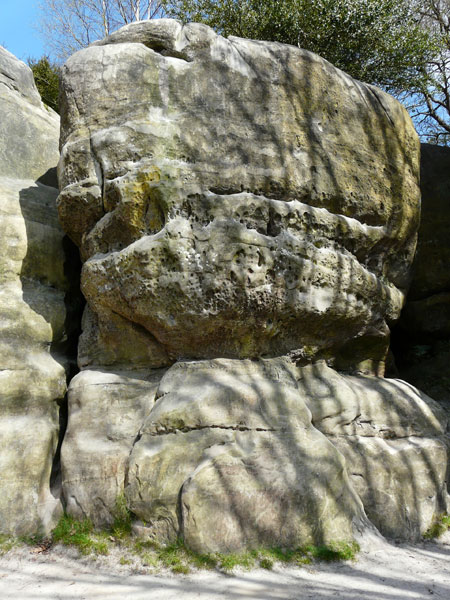
West Sussex Local Geological Sites - Stone Hill Farm Rocks (img 686)
Massive sandstone block about 5 m high. Bedding detail including cross bedding visible in upper face but obscured by climbing damage in lower face. Well-developed honeycomb weathering associated with overhang.
Photograph taken: 21/04/2010
Grid ref. TQ38063475
Direction north
Image file: P1010106.jpg


West Sussex Local Geological Sites - Stone Hill Farm Rocks (img 687)
Detached massive sandstone block showing dip to north. Lower part beneath the overhang shows fine cross bedding detail associated with honeycomb weathering. 1 m pole for scale.
Photograph taken: 21/04/2010
Grid ref. TQ38093476
Direction west
Image file: P1010108.jpg

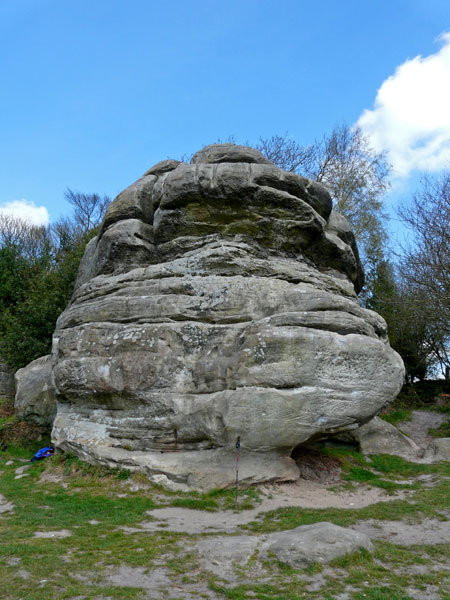
West Sussex Local Geological Sites - Stone Hill Farm Rocks (img 688)
Frontal view of easternmost massive sandstone block showing large scale bedding units picked out by weathering. Cross bedding detail visible near base. 1 m pole for scale.
Photograph taken: 21/04/2010
Grid ref. TQ38143476
Direction north
Image file: P1010112ed.jpg

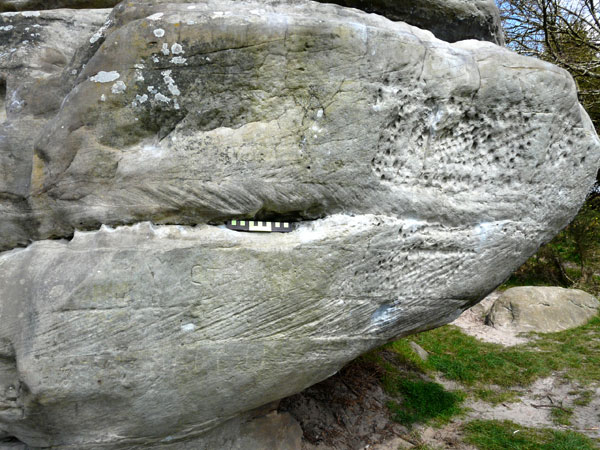
West Sussex Local Geological Sites - Stone Hill Farm Rocks (img 689)
Detail of easternmost sandstone block showing stacked cross-bedded units and some honeycomb weathering at the outer edge.
30 cm scale.
Photograph taken: 21/04/2010
Image file: P1010113ed.jpg

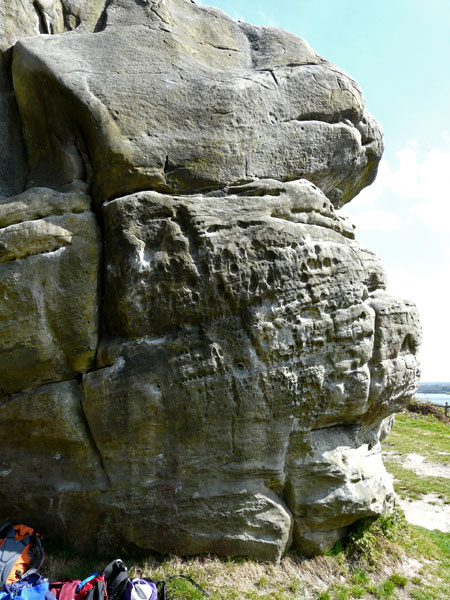
West Sussex Local Geological Sites - Stone Hill Farm Rocks (img 690)
Close-up of easternmost block. Honeycomb weathering at centre and cross bedding at base.
Photograph taken: 21/04/2010
Grid ref. TQ38133477
Direction east
Image file: P1010114ed.jpg

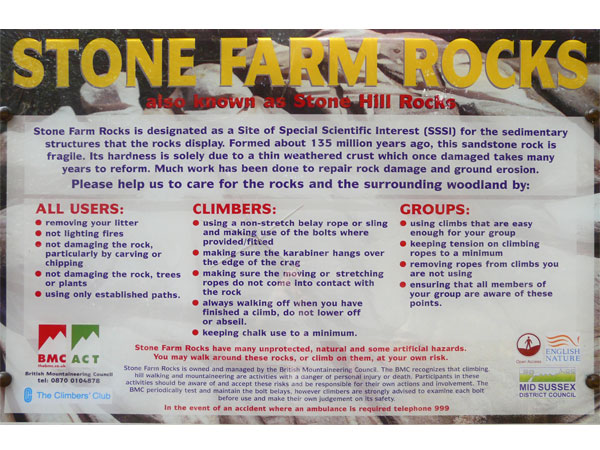
West Sussex Local Geological Sites - Stone Hill Farm Rocks (img 691)
BMC noticeboard at eastern access point.
Photograph taken: 21/04/2010
Grid ref TQ38173478
Image file: P1010120ed.jpg

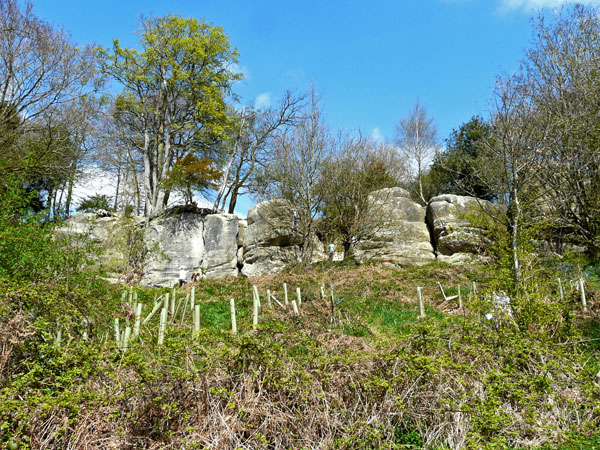
West Sussex Local Geological Sites - Stone Hill Farm Rocks (img 692)
Central buttresses of main sandstone outcrop.
Photograph taken: 21/04/2010
Grid ref TQ38063473
Direction north
Image file: P1010123croped.jpg

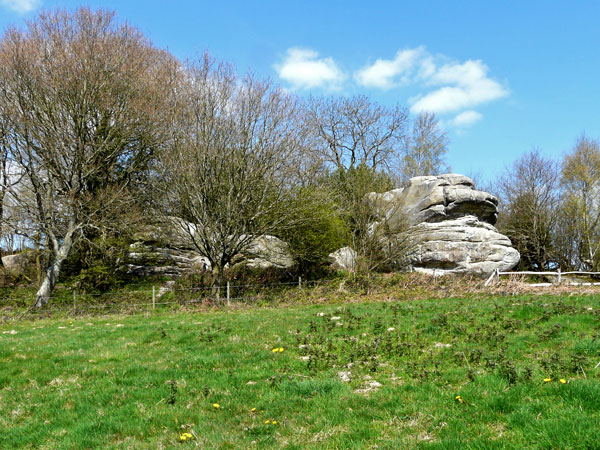
West Sussex Local Geological Sites - Stone Hill Farm Rocks (img 693)
Isolated sandstone blocks at east end of outcrop.
Photograph taken: 21/04/2010
Grid ref. TQ38143474
Direction north
Image file: P1010124croped.jpg

Rock Walk, Wakehurst and Chiddingly Woods (TQ33/12)
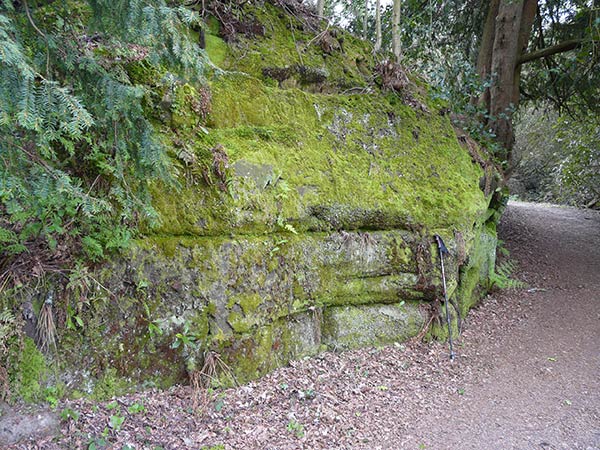
West Sussex Local Geological Sites - Rock Walk, Wakehurst Place (img 695)
Moss-encrusted Ardingly Sandstone block at NE end of Rock Walk.
1 m pole for scale.
Photograph taken: 28/04/2010
Grid ref. TQ34013202
Direction WSW
Image file: P1010201.jpg

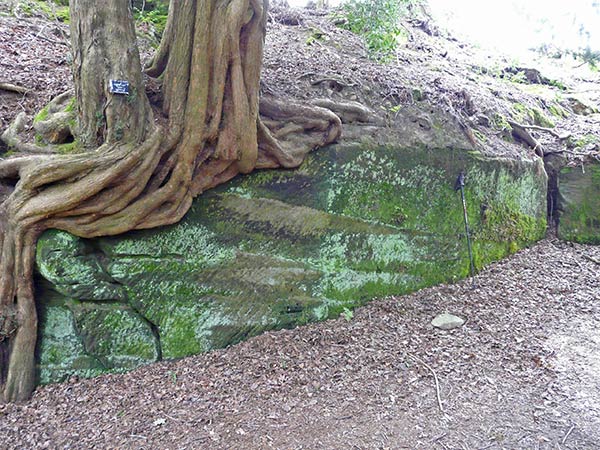
West Sussex Local Geological Sites - Rock Walk, Wakehurst Place (img 696)
Cross-bedding in Ardingly Sandstone picked out by weathering and by moss and lichen growth. The tree roots here are good examples of thigmotropism.
1 m pole for scale.
Photograph taken: 28/04/2010
Grid ref. TQ34013202
Direction south
Image file: P1010202ed.jpg

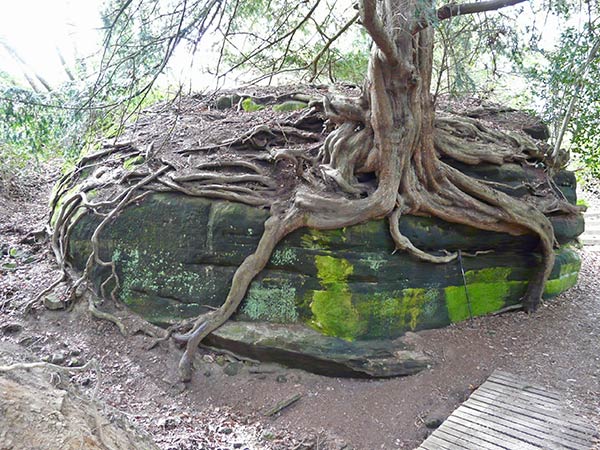
West Sussex Local Geological Sites - Rock Walk, Wakehurst Place (img 697)
Isolated moss and lichen-encrusted sandstone block heavily overgrown by tree roots which provide a striking example of thigmotropism.
1 m pole for scale.
Photograph taken: 28/04/2010
Grid ref. TQ33983197
Direction SW
Image file: P1010203ed.jpg

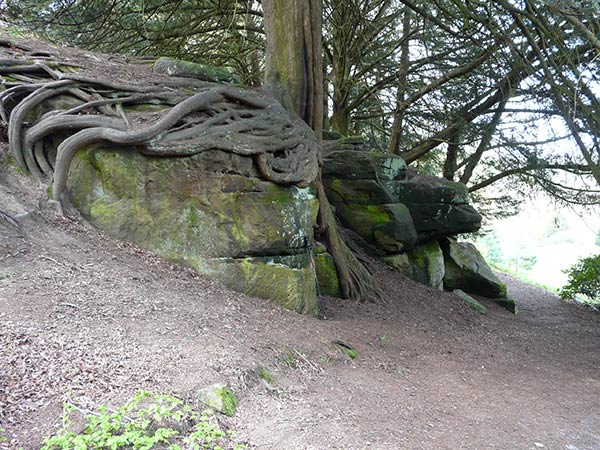
West Sussex Local Geological Sites - Rock Walk, Wakehurst Place (img 698)
Sandstone outcrops overgrown by trees along the NE section of the walk. The tree roots provide a striking example of thigmotropism.
1 m pole for scale.
Photograph taken: 28/04/2010
Grid ref. TQ33943198
Direction west
Image file: P1010206.jpg

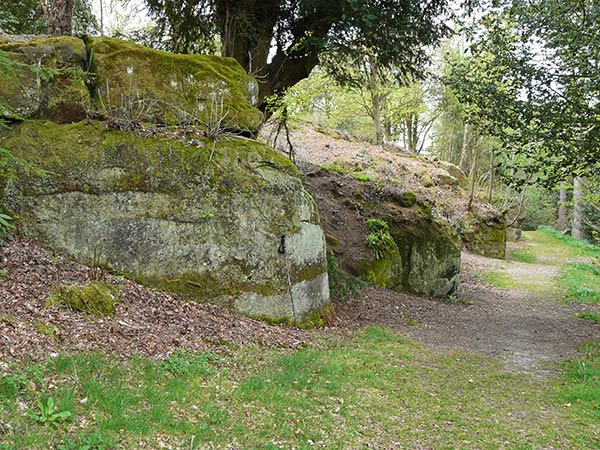
West Sussex Local Geological Sites - Rock Walk, Wakehurst Place (img 699)
Part of NE section showing low outcrops of Ardingly Sandstone easily accessible from the footpath. Most of the outcrops are covered with lichen and moss.
1 m pole for scale.
Photograph taken: 28/04/2010
Grid ref. TQ33873198
Direction west
Image file: P1010210ed.jpg

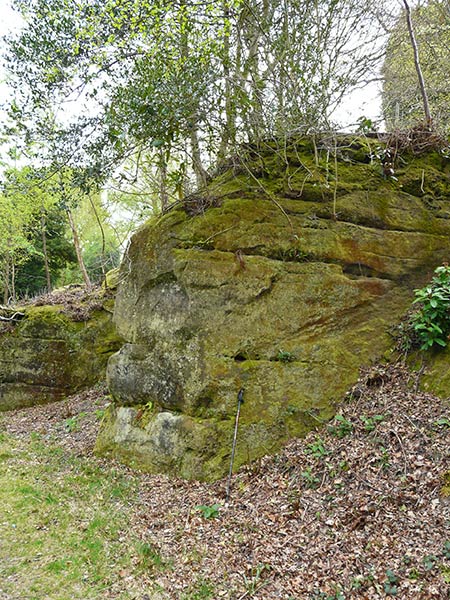
West Sussex Local Geological Sites - Rock Walk, Wakehurst Place (img 700)
Moss and lichen-encrusted block of massive Ardingly Sandstone on NE section of walk.
1 m pole for scale.
Photograph taken: 28/04/2010
Grid ref. TQ33843197
Direction east
Image file: P1010211ed.jpg

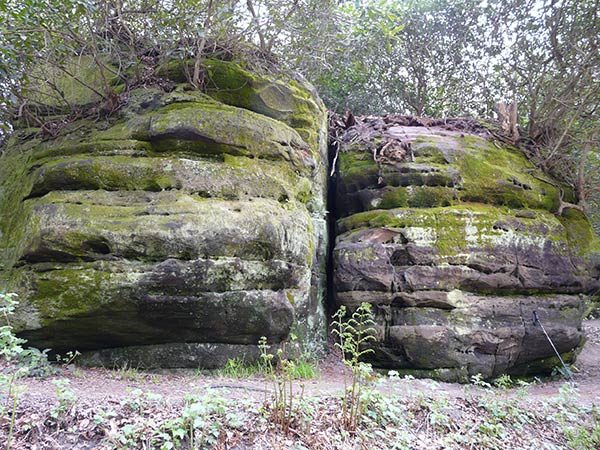
West Sussex Local Geological Sites - Rock Walk, Wakehurst Place (img 701)
Narrow open joint plane (gull) between massive sandstone blocks. Major bedding units picked out by differential weathering. Bedding details are visible where moss and lichen cover is absent. SW section of walk.
1 m pole for scale.
Photograph taken: 28/04/2010
Grid ref. TQ33723187
Direction SE
Image file: P1010214.jpg

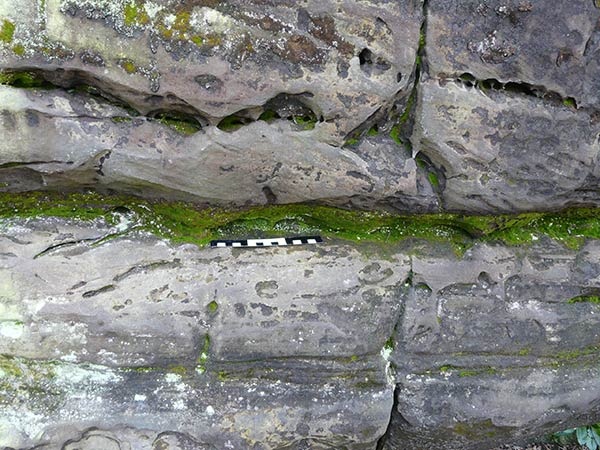
West Sussex Local Geological Sites - Rock Walk, Wakehurst Place (img 702)
Detail of part of sandstone block at right of photo 7 showing cross bedding. 30 cm scale.
Photograph taken: 28/04/2010
Grid ref. TQ33723187
Image file: P1010216.jpg

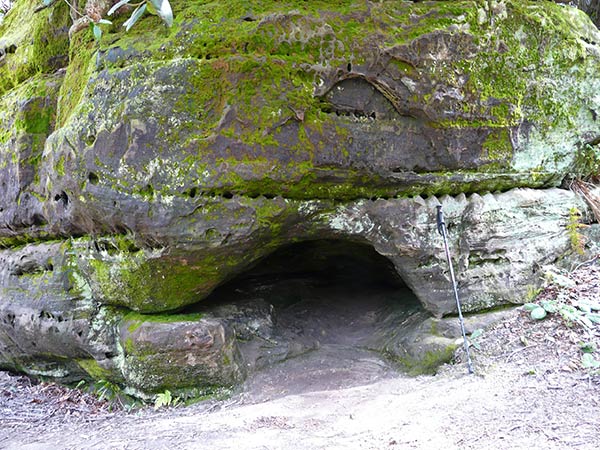
West Sussex Local Geological Sites - Rock Walk, Wakehurst Place (img 703)
Close-up of lower part of sandstone block at right of photo 7 showing small cave at base.
1 m pole for scale.
Photograph taken: 28/04/2010
Grid ref. TQ33723187
Image file: P1010217ed.jpg

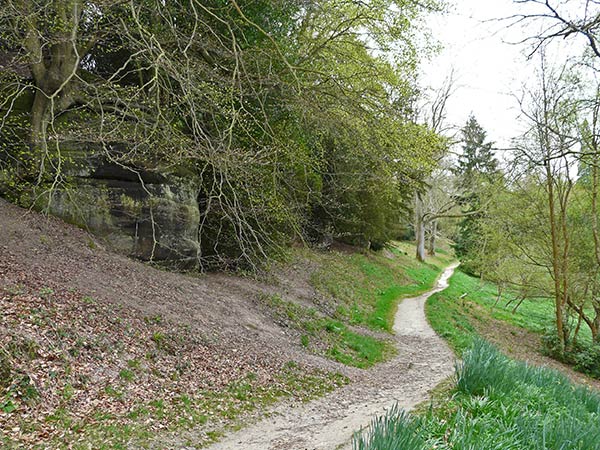
West Sussex Local Geological Sites - Rock Walk, Wakehurst Place (img 704)
The SW section of the footpath gradually drops below the level of the Ardingly Sandstone outcrops.
Photograph taken: 28/04/2010
Grid ref. TQ33643177
Direction SW
Image file: P1010218ed.jpg


West Sussex Local Geological Sites - Rock Walk, Wakehurst Place (img 705)
Blocks of massive Ardingly Sandstone separated by an open joint plane (gull). Relatively free of vegetation and showing major bedding units picked out by differential weathering. SW section of site.
Photograph taken: 28/04/2010
Grid ref. TQ33613175
Direction NE
Image file: P1010220ed.jpg

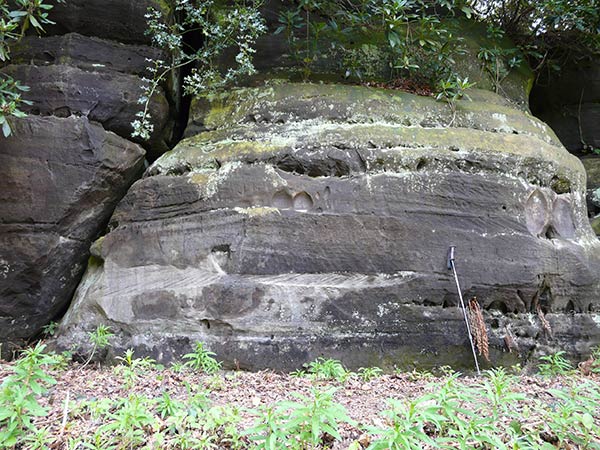
West Sussex Local Geological Sites - Rock Walk, Wakehurst Place (img 706)
Clean Ardingly Sandstones face with weathering crust damage revealing detail of small scale cross bedding. Oblique open joint at left. SW section of walk.
1 m pole for scale.
Photograph taken: 28/04/2010
Grid ref. TQ33613174
Direction SE
Image file: P1010221.jpg

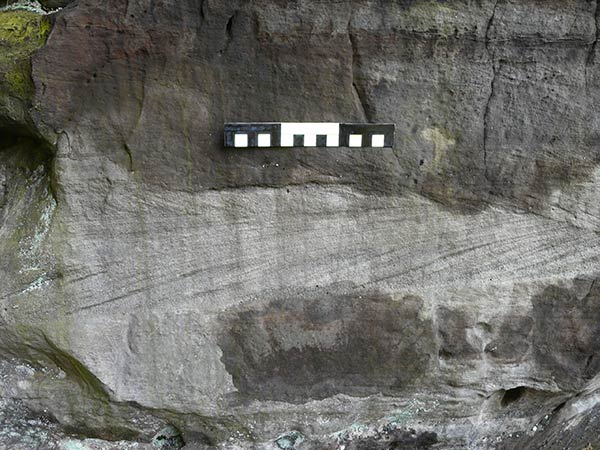
West Sussex Local Geological Sites - Rock Walk, Wakehurst Place (img 707)
Detail of small scale cross bedding in the sandstone block shown in photo 12.
30 cm scale.
Photograph taken: 28/04/2010
Grid ref. TQ33613174
Image file: P1010222ed.jpg

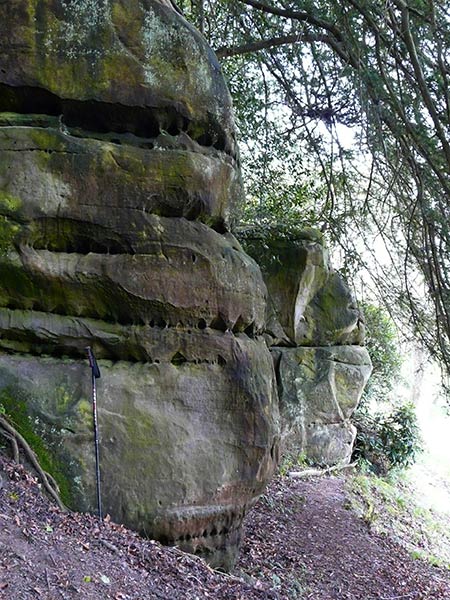
West Sussex Local Geological Sites - Rock Walk, Wakehurst Place (img 708)
Blocks of clean massive Ardingly Sandstone near the SW end of the outcrops. Major bedding units picked out by differential weathering with honeycomb type weathering along some bedding planes.
1 m pole for scale.
Photograph taken: 28/04/2010
Grid ref. TQ33543171
Direction SW
Image file: P1010223ed.jpg


West Sussex Local Geological Sites - Rock Walk, Wakehurst Place (img 709)
Blocks of massive Ardingly Sandstone at left of photo 15 separated by a wide open joint (gull) bridged by a large tree.
Photograph taken: 28/04/2010
Grid ref. TQ33513169
Direction SW
Image file: P1010225ed.jpg


West Sussex Local Geological Sites - Rock Walk, Wakehurst Place (img 710)
Blocks of massive Ardingly Sandstone at right of photo 15 separated by wide eroded gull between two close-spaced joint planes.
Photograph taken: 28/04/2010
Grid ref. TQ33483168
Direction SE
Image file: P1010228ed.jpg

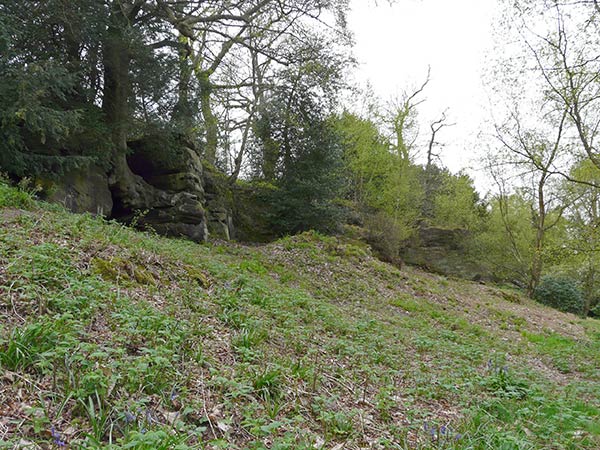
West Sussex Local Geological Sites - Rock Walk, Wakehurst Place (img 711)
Outcrops of massive Ardingly Sandstone near the SW end of the site.
Photograph taken: 28/04/2010
Grid ref. TQ33523170
Direction SSW
Image file: P1010231ed.jpg

B2110 Road Cutting, Turner's Hill (TQ33/15)
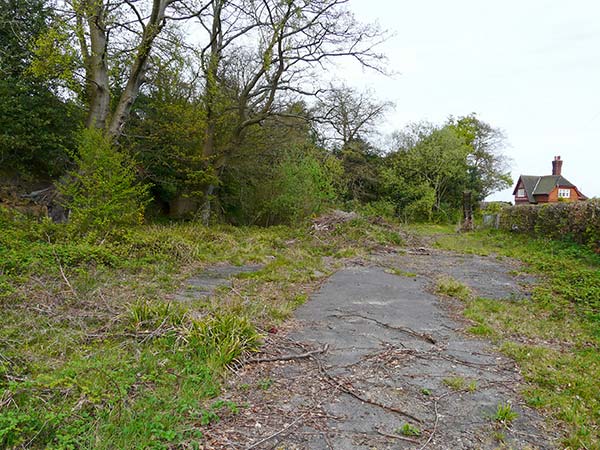
West Sussex Local Geological Sites - Turners Hill Road Cutting (img 713)
General view from entrance area. Rock face at left obscured by trees and shrubs.
Photograph taken: 28/04/2010
Grid ref. TQ33833541
Direction ENE
Image file: P1010268ed.jpg

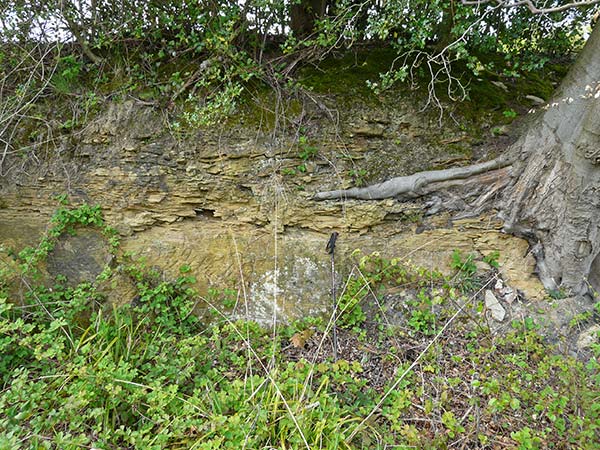
West Sussex Local Geological Sites - Turners Hill Road Cutting (img 714)
Good exposure of Ardingly Sandstone at western end of cutting showing festoon bedding in lower part and flaggy coarse cross-bedding in upper part.
1 m pole for scale.
Photograph taken: 28/04/2010
Grid ref. TQ33833542
Direction NW
Image file: P1010269ed.jpg

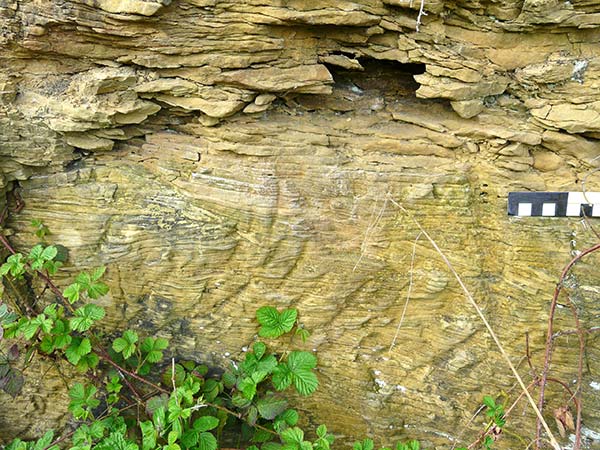
West Sussex Local Geological Sites - Turners Hill Road Cutting (img 715)
Detail of face shown in photo 2 showing well-developed trough cross-bedding (festoon bedding) in the Ardingly Sandstone.
Scale bar in 2 cm intervals.
Photograph taken: 28/04/2010
Grid ref. TQ33833542
Direction NW
Image file: P1010271ed.jpg

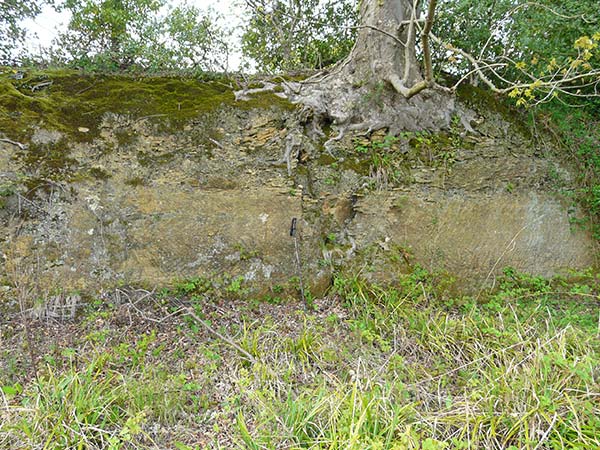
West Sussex Local Geological Sites - Turners Hill Road Cutting (img 716)
Exposure to right of photo 2 location. Stratigraphic detail less visible. Flaggy cross bedded sandstone in upper half and festoon bedding in lower half.
1 m pole for scale.
Photograph taken: 28/04/2010
Grid ref. TQ33853543
Direction NW
Image file: P1010272ed.jpg

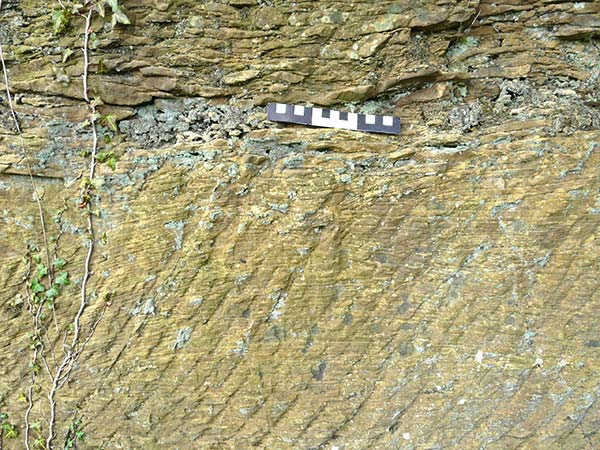
West Sussex Local Geological Sites - Turners Hill Road Cutting (img 717)
Detail of face shown in photo 4. Flaggy sandstone above and festoon bedding below.
30 cm scale.
Photograph taken: 28/04/2010
Grid ref. TQ33853543
Direction NW
Image file: P1010273ed.jpg

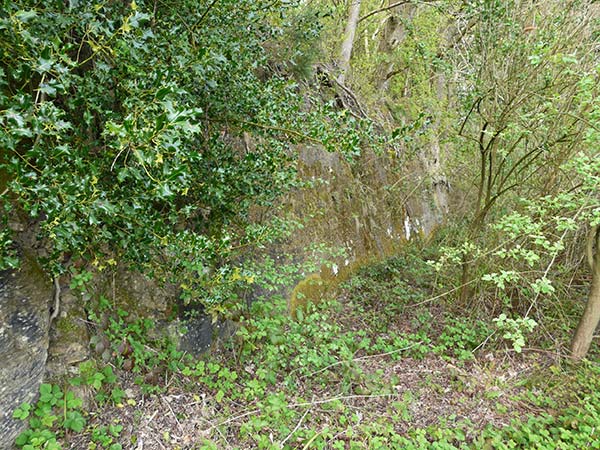
West Sussex Local Geological Sites - Turners Hill Road Cutting (img 718)
Eastern end of cutting is obscured by small trees, shrubs and moss.
Photograph taken: 28/04/2010
Grid ref. TQ33863543
Direction ENE
Image file: P1010274ed.jpg

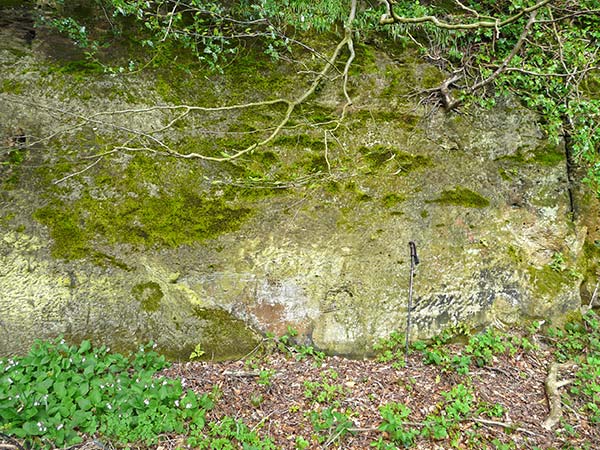
West Sussex Local Geological Sites - Turners Hill Road Cutting (img 719)
Close-up of part of eastern end of cutting. Stratigraphic detail obcured by vegetation.
1 m pole for scale.
Photograph taken: 28/04/2010
Grid ref. TQ33873544
Direction NW
Image file: P1010275ed.jpg

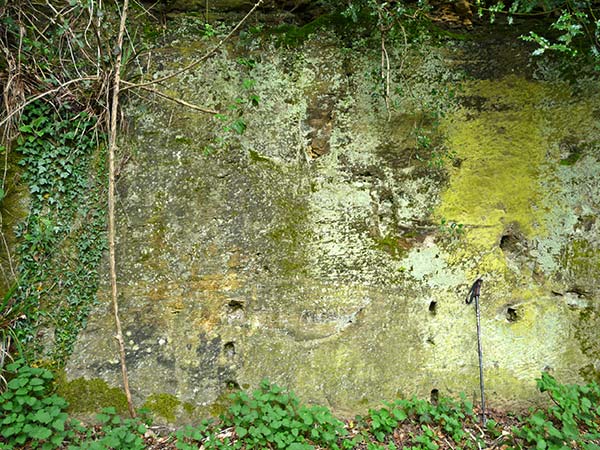
West Sussex Local Geological Sites - Turners Hill Road Cutting (img 720)
Part of eastern face, hidden behind thicket. Stratigraphic detail obscured by moss. Appears to show a broad mega ripple about 1 m above the base.
1 m pole for scale.
Photograph taken: 28/04/2010
Grid ref. TQ33873544
Direction NW
Image file: P1010276ed.jpg

West Hoathly landslip (TQ33/208)
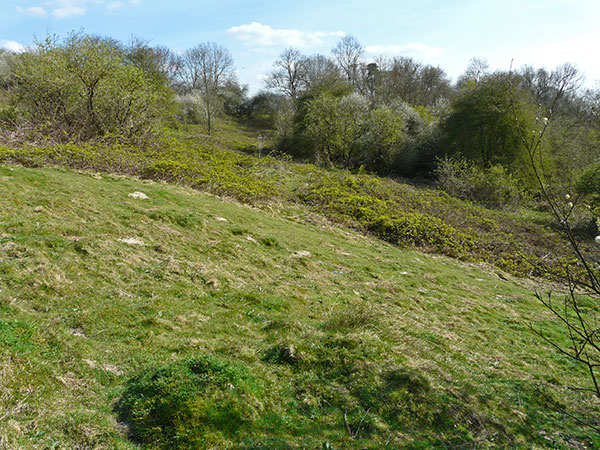
West Sussex Local Geological Sites - West Hoathly Landslip (img 722)
Steeper slope at toe of landslip area with hummocky surface.
Photograph taken: 21/04/2010
Grid ref. TQ36513238
Direction east
Image file: P1010152ed.jpg


West Sussex Local Geological Sites - West Hoathly Landslip (img 723)
Toe of landslip area with hummocky surface.
Photograph taken: 21/04/2010
Grid ref. TQ36513238
Direction SW
Image file: P1010154ed.jpg


West Sussex Local Geological Sites - West Hoathly Landslip (img 724)
Upper part of landslip area from head of slip. Rough grass cover with scrub encroaching.
Photograph taken: 21/04/2010
Grid ref. TQ36593242
Direction SW
Image file: P1010156ed.jpg

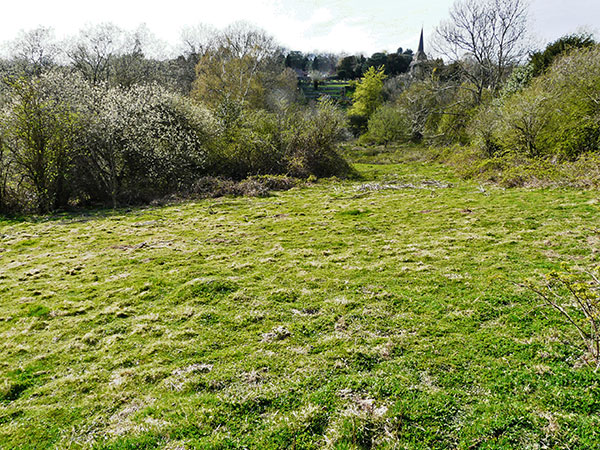
West Sussex Local Geological Sites - West Hoathly Landslip (img 725)
Head of landslip area with open grass cover. No visible scarp although the line of bushes and small trees may mask a scarp.
Photograph taken: 21/04/2010
Grid ref. TQ36593242
Direction ENE
Image file: P1010157ed.jpg

Rock View, Wakehurst and Chiddingly Woods (TQ33/44)

West Sussex Local Geological Sites - Rock View, Wakehurst Place (img 727)
Western outcrop of Ardingly sandstone seen from viewpoint and showing a landscaped appearance.
Photograph taken: 28/04/2010
Grid ref. TQ33613117
Direction SW
Image file: P1010233ed.jpg

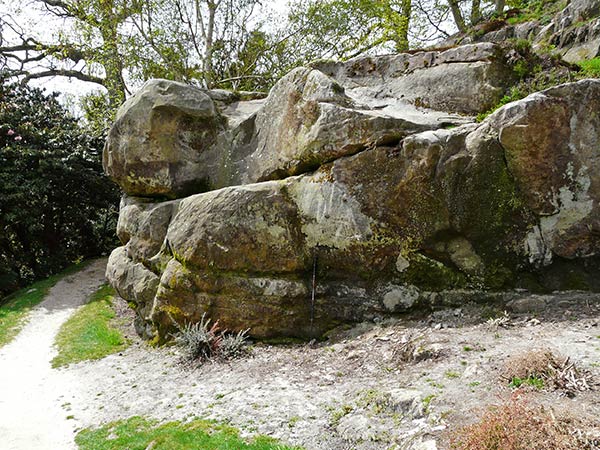
West Sussex Local Geological Sites - Rock View, Wakehurst Place (img 728)
Close-up of part of western outcrop of massive Ardingly Sandstone showing gentle dip to west at base with cross bedding also evident. Major bedding units picked out by differential weathering and lateral thickness changes in upper part probably indicate channel fill.
1 m pole for scale.
Photograph taken: 28/04/2010
Grid ref. TQ33573116
Direction SW
Image file: P1010234ed.jpg


West Sussex Local Geological Sites - Rock View, Wakehurst Place (img 729)
Part of western outcrop showing exposed bedding plane and indications of cross-bedding beneath. The outcrop has been subject to landscaping.
1 m pole for scale.
Photograph taken: 28/04/2010
Grid ref. TQ33553116
Direction NE
Image file: P1010235ed.jpg

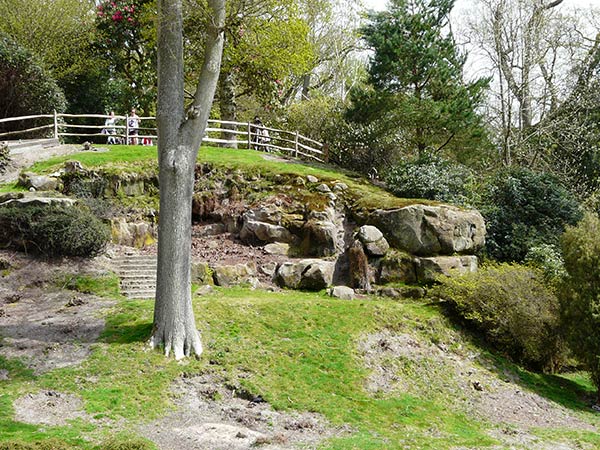
West Sussex Local Geological Sites - Rock View, Wakehurst Place (img 730)
Eastern outcrop of massive sandstone also showing landscaping.
Photograph taken: 28/04/2010
Grid ref. TQ33573115
Direction NW
Image file: P1010236.jpg

Coastal section: Castle Hill To Old Nore Point (TQ40/174a)
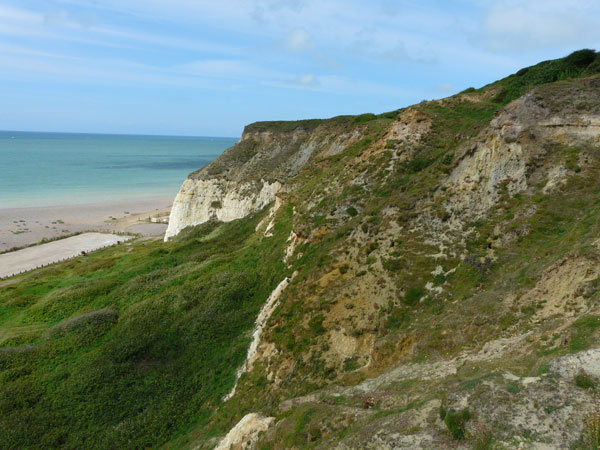
East Sussex Local Geological Sites - Coastal Section Castle Hill to Old Nore Point (img 732)
Palaeogene sands and clays of the Woolwich Formation unconformably overlying chalk.
Photograph taken: 24/06/2011
Grid ref TQ44740005
Direction WSW
Image file: P1030464ed.jpg

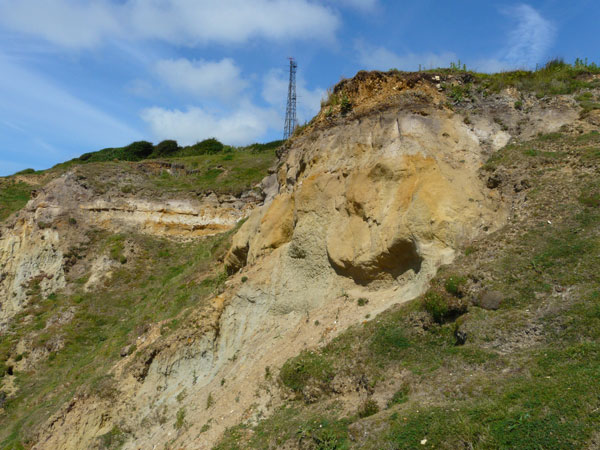
East Sussex Local Geological Sites - Coastal Section Castle Hill to Old Nore Point (img 733)
Woolwich Formation showing thick sands overlain by clays. The glauconitic sands are greenish when first exposed but orange-brown when weathered.
Photograph taken: 24/06/2011
Grid ref TQ44730005
Direction west
Image file: P1030467ed.jpg

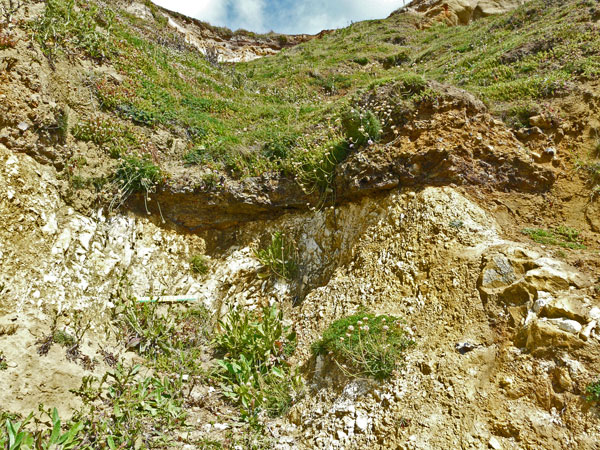
East Sussex Local Geological Sites - Coastal Section Castle Hill to Old Nore Point (img 734)
Detail of unconformity between the chalk and the overlying basal pebble bed of Woolwich Formation. 30 cm scale.
Photograph taken: 24/06/2011
Grid ref TQ44720004
Direction north
Image file: P1030473ed.jpg

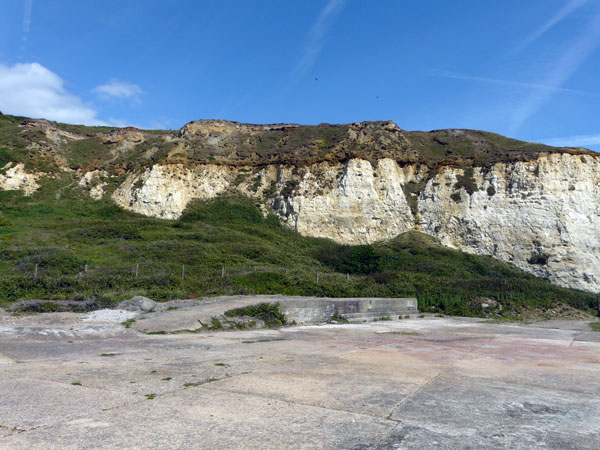
East Sussex Local Geological Sites - Coastal Section Castle Hill to Old Nore Point (img 735)
Well defined unconformity surface separating Palaeogene sands and clays of the Woolwich Formation from the underlying Newhaven and Culver Chalks. Landslips of Cenozoic sediments have formed the hummocky terrain beneath the cliffs.
Photograph taken: 24/06/2011
Grid ref TQ 44789997
Direction NNE
Image file: P1030481ed.jpg

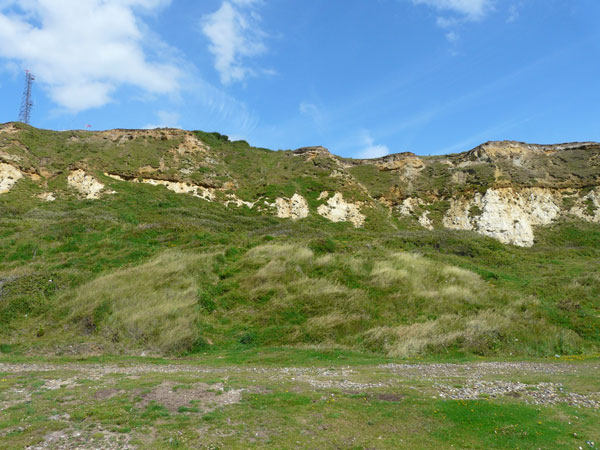
East Sussex Local Geological Sites - Coastal Section Castle Hill to Old Nore Point (img 736)
Grassy slopes allow access to the unconformity between the Palaeogene sediments of the Woolwich Formation and the chalk. Landslips of Palaeogene sediments have formed the hummocky terrain beneath the cliffs.
Photograph taken: 24/06/2011
Grid ref TQ44739997
Direction north
Image file: P1030485ed.jpg

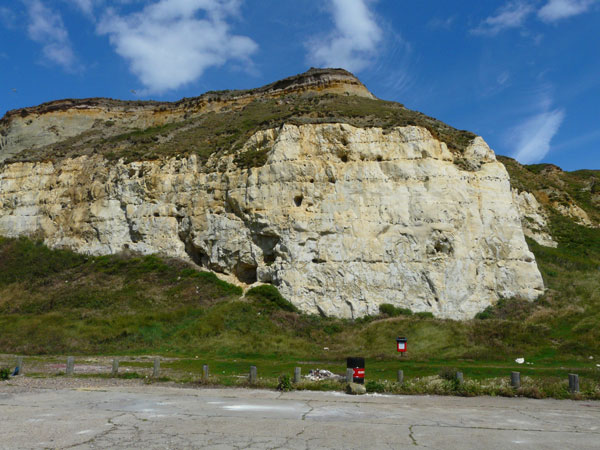
East Sussex Local Geological Sites - Coastal Section Castle Hill to Old Nore Point (img 737)
Culver Chalk overlain unconformably by sands and clays of the Woolwich Formation. Note the prominent well-spaced flint bands in the Culver Chalk.
Photograph taken: 24/06/2011
Grid ref TQ44659994
Direction north
Image file: P1030486ed.jpg

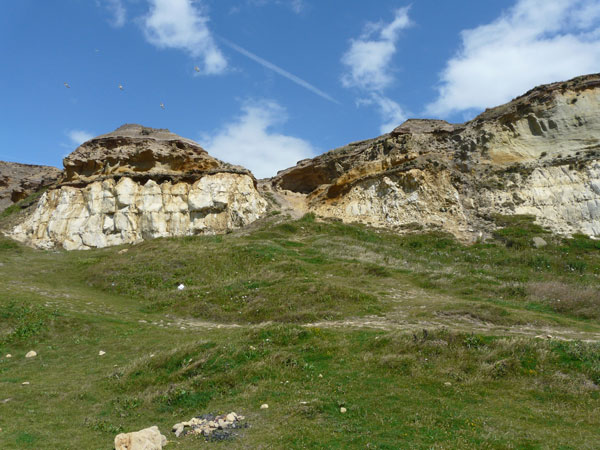
East Sussex Local Geological Sites - Coastal Section Castle Hill to Old Nore Point (img 738)
Gully allows easiest access to the unconformity between the Woolwich Formation and the Culver Chalk. The irregular unconformity surface in the block to the left exposes dissolution pipes in the top chalk.
Photograph taken: 24/06/2011
Grid ref TQ44599993
Direction north
Image file: P1030491ed.jpg

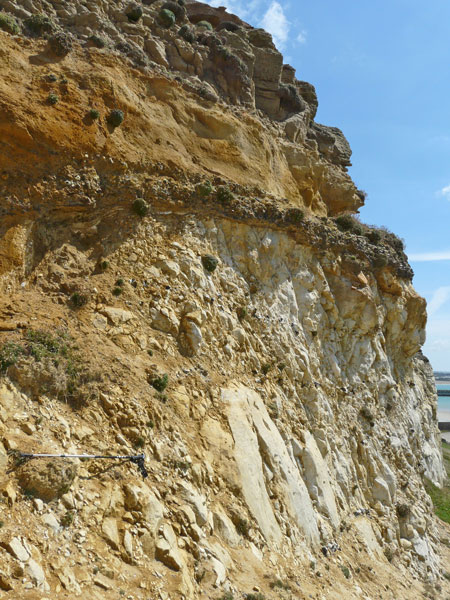
East Sussex Local Geological Sites - Coastal Section Castle Hill to Old Nore Point (img 739)
East side of gully in photo 7 exposes Culver Chalk overlain unconformably by basal pebble bed of the Woolwich Formation with sands above. 1 m pole for scale.
Photograph taken: 24/06/2011
Grid ref TQ44589998
Direction east
Image file: P1030496ed.jpg

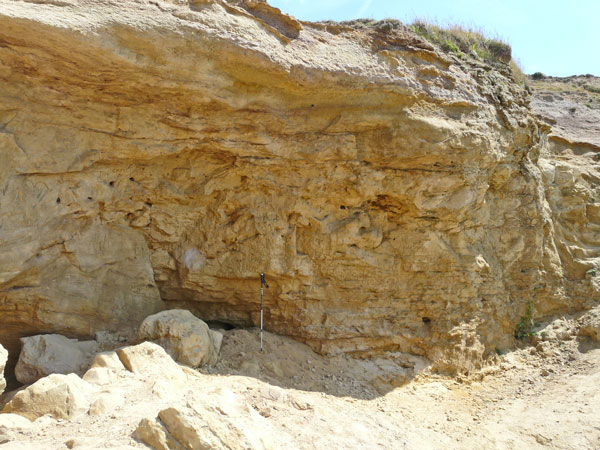
East Sussex Local Geological Sites - Coastal Section Castle Hill to Old Nore Point (img 740)
Upper part of Woolwich Formation sands exposed in east side of gully in photo 7. These show fine laminations and cross-bedding. 1 m pole for scale.
Photograph taken: 24/06/2011
Grid ref TQ44579999
Direction NNE
Image file: P1030498ed.jpg

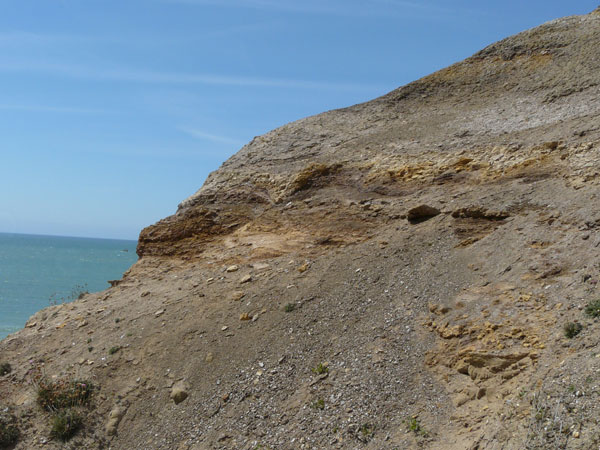
East Sussex Local Geological Sites - Coastal Section Castle Hill to Old Nore Point (img 741)
Upper part of Woolwich Formation on west side of gully in photo 7 showing clays with ferruginous bands and darker lignitic layers.
Photograph taken: 24/06/2011
Grid ref TQ44579999
Direction west
Image file: P1030500.jpg

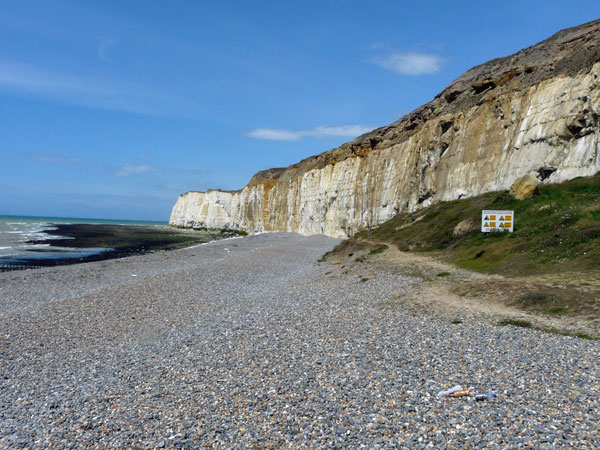
East Sussex Local Geological Sites - Coastal Section Castle Hill to Old Nore Point (img 742)
Cliffs towards Old Nore Point exposing Chalk and the unconformably overlying Palaeogene sediments. Note the large fallen block of sandstone behind the notice board.
Photograph taken: 24/06/2011
Grid ref TQ44499993
Direction west
Image file: P1030505ed.jpg

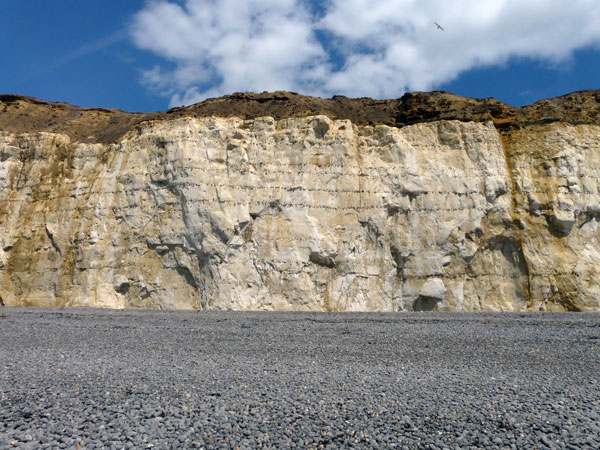
East Sussex Local Geological Sites - Coastal Section Castle Hill to Old Nore Point (img 743)
Newhaven Chalk overlain by Culver Chalk with prominent regular flint bands, in turn overlain by Paleogene Woolwich Formation sediments.
Photograph taken: 24/06/2011
Grid ref TQ44309993
Direction north
Image file: P1030507ed.jpg

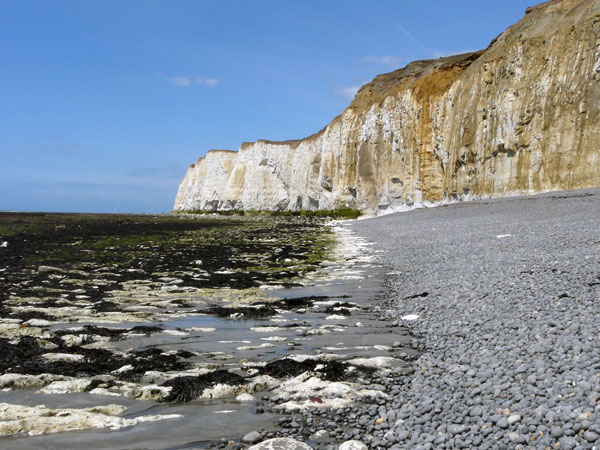
East Sussex Local Geological Sites - Coastal Section Castle Hill to Old Nore Point (img 744)
Cliffs towards Old Nore Point exposing Newhaven and Culver Chalks and the unconformably overlying Palaeogene sediments. Foreshore chalk platform is accessible.
Photograph taken: 24/06/2011
Grid ref TQ44309993
Direction west
Image file: P1030508.jpg

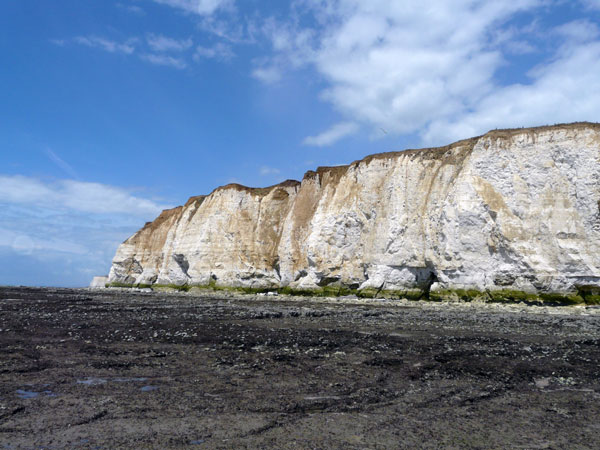
East Sussex Local Geological Sites - Coastal Section Castle Hill to Old Nore Point (img 745)
Cliffs approaching Old Nore Point exposing Newhaven and Culver Chalks. Beds rise to the left (west) towards the Friar's bay anticline.Top of the chalk capped with Pleistocene deposits. Foreshore chalk platform is very accessible.
Photograph taken: 24/06/2011
Grid ref TQ43879985
Direction WNW
Image file: P1030509ed.jpg

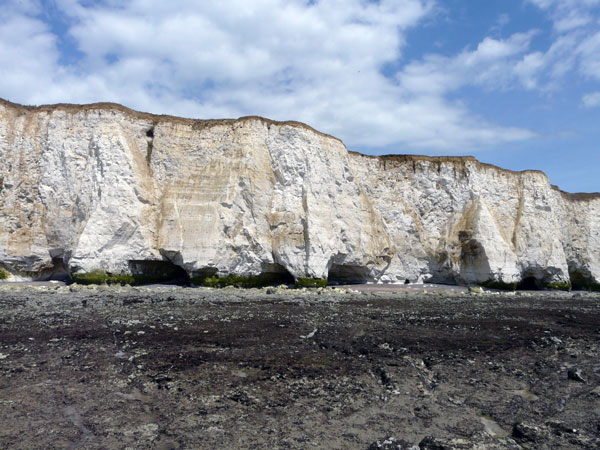
East Sussex Local Geological Sites - Coastal Section Castle Hill to Old Nore Point (img 746)
Cliffs exposing Newhaven Chalk overlain by Culver Chalk with a thin capping of Pleistocene sediments. Sea caves are common along this section and the foreshore chalk platform is very accessible.
Photograph taken: 24/06/2011
Grid ref TQ43879985
Direction NNE
Image file: P1030511ed.jpg

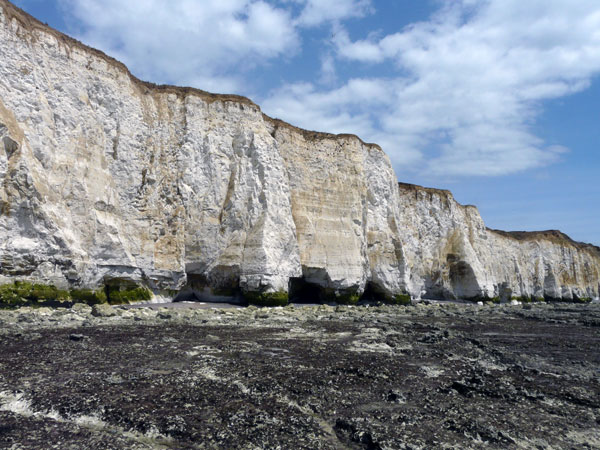
East Sussex Local Geological Sites - Coastal Section Castle Hill to Old Nore Point (img 747)
Chalk platform and chalk cliffs with sea caves east of Old Nore Point. The prominent ledge near the base of the cliffs probably marks the Old Nore Marl.
Photograph taken: 24/06/2011
Grid ref TQ43819988
Direction NE
Image file: P1030517ed.jpg

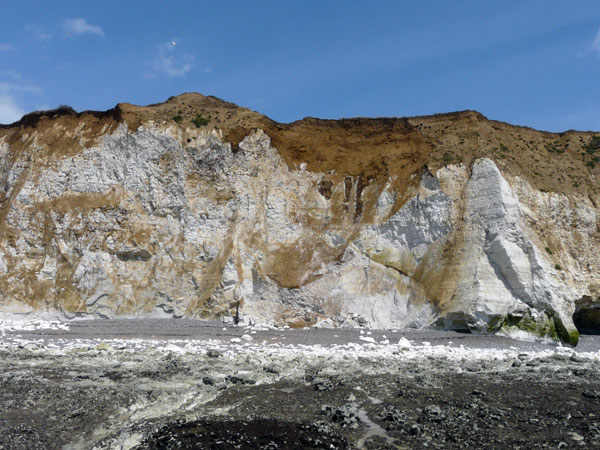
East Sussex Local Geological Sites - Coastal Section Castle Hill to Old Nore Point (img 748)
Cliffs immediately west of Old Nore Point exposing Newhaven Chalk overlain by Pleistocene sediments. Well-developed dissolution pipes at the top of the chalk are infilled with Pleistocene deposits.
Photograph taken: 24/06/2011
Grid ref TQ43569987
Direction NNE
Image file: P1030521ed.jpg


East Sussex Local Geological Sites - Coastal Section Castle Hill to Old Nore Point (img 749)
Old Nore Point and cliffs to the west exposing Newhaven Chalk overlain by Pleistocene deposits.
Photograph taken: 24/06/2011
Grid ref TQ43459994
Direction east
Image file: P1030533ed.jpg

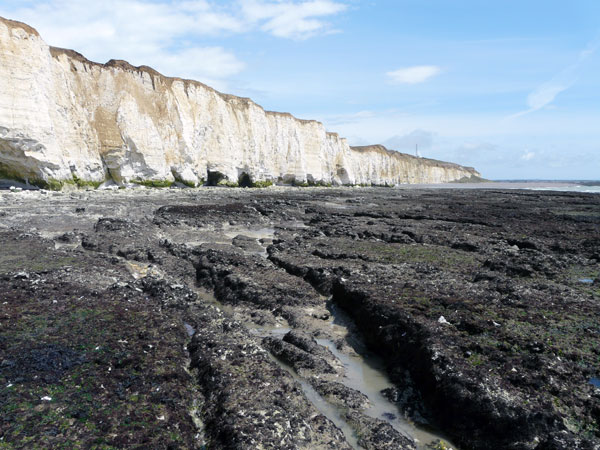
East Sussex Local Geological Sites - Coastal Section Castle Hill to Old Nore Point (img 750)
Chalk platform and chalk cliffs extending east to Castle Hill.
Photograph taken: 24/06/2011
Grid ref TQ43659983
Direction ENE
Image file: P1030536ed.jpg

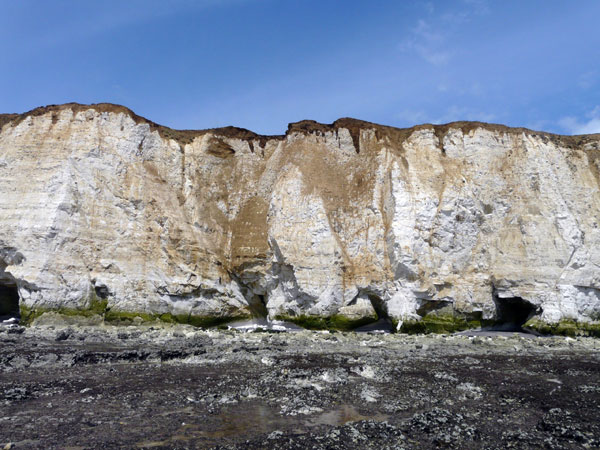
East Sussex Local Geological Sites - Coastal Section Castle Hill to Old Nore Point (img 751)
Cliffs near Old Nore Point exposing Newhaven Chalk overlain by Culver Chalk with a thin capping of Pleistocene sediments. Well-developed dissolution pipes at the top of the chalk are infilled with Pleistocene deposits. Dip to right (east).
Photograph taken: 24/06/2011
Grid ref TQ43779986
Direction north
Image file: P1030538ed.jpg

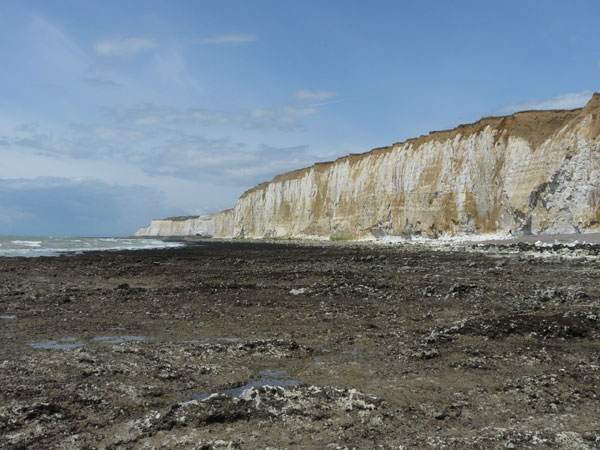
Coastal Section Peacehaven to Old Nore Point - Friar's Bay (img 753)
Cliffs and foreshore viewed from eastern end of section. Wavecut platform is well exposed and accessible. Newhaven Chalk is overlain by Pleistocene deposits in the foreground and by Woolwich Beds in the distance.
Grid ref 543560 99872
Direction WNW
Image file: P1030524.jpg

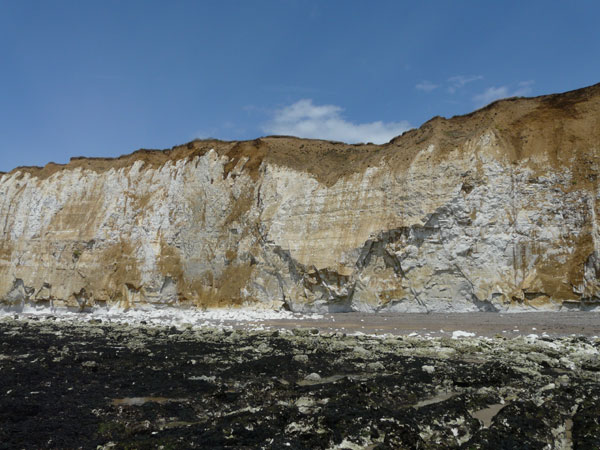
Coastal Section Peacehaven to Old Nore Point - Friar's Bay (img 754)
Cliffs up to 50m high expose Newhaven Chalk. Note cliff face slab failure. A thin interval of Pleistocene deposits overlies the chalk above an irregular unconformity surface. The wavecut platform is very accessible here.
Grid ref 543450 99939
Direction NW
Image file: P1030526.jpg

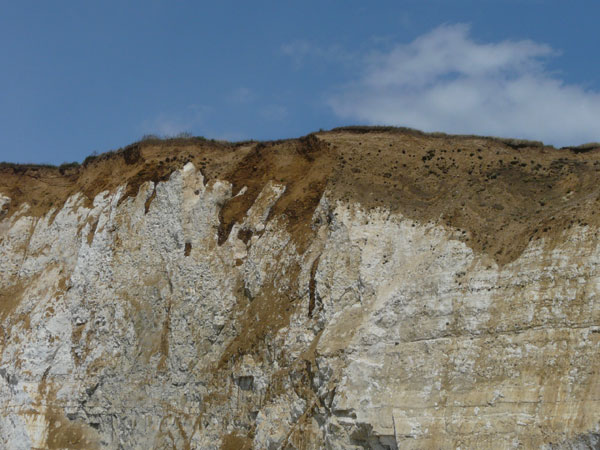
Coastal Section Peacehaven to Old Nore Point - Friar's Bay (img 755)
Close-up of Pleistocene deposits overlying chalk showing very irregular unconformity surface and well-developed dissolution features.
Grid ref 543450 99939
Direction NW
Image file: P1030527.jpg

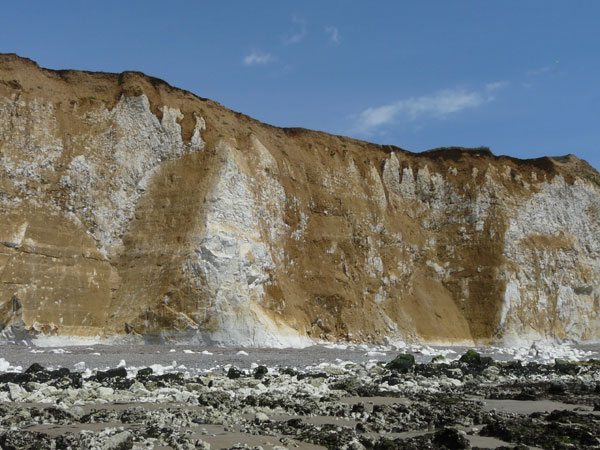
Coastal Section Peacehaven to Old Nore Point - Old Nore Point (img 756)
Cliffs up to 45 m high immediately west of Old Nore point exposing Newhaven Chalk. Pleistocene deposits overlie the chalk above an irregular unconformity surface. The wavecut platform is very accessible here.
Grid ref 543450 99939
Direction NE
Image file: P1030529.jpg

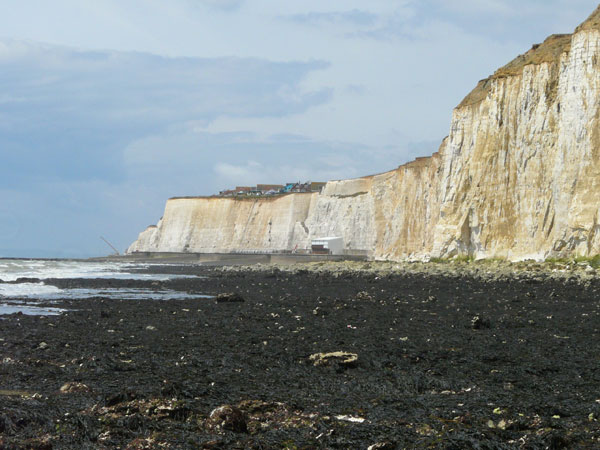
Coastal Section Peacehaven to Old Nore Point - Friar's Bay (img 757)
Western end of section showing extensive area of wavecut platform covered with seaweed or large boulders. Cliffs up to 60 m high expose Newhaven Chalk. Photo taken with zoom lens.
Grid ref 543450 99939
Direction WNW
Image file: P1030534ed.jpg

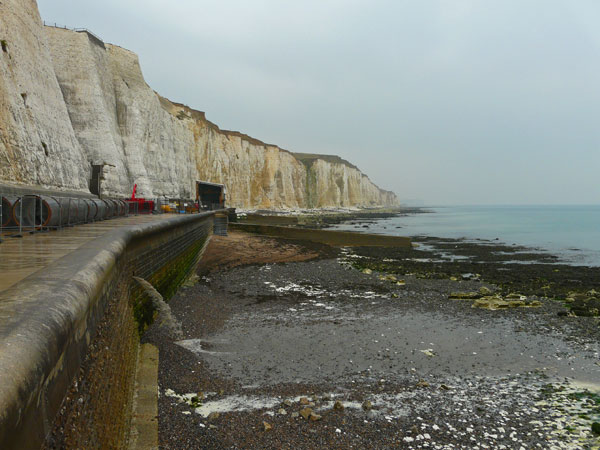
Coastal Section Peacehaven to Old Nore Point - Peacehaven Steps (img 758)
End of sea wall at Peacehaven Steps. Cliffs expose Newhaven Chalk. The wavecut platform is easily accessible up to the end of the sea wall...
Grid ref 542366 100345
Direction east
Image file: P1030553ed2.jpg

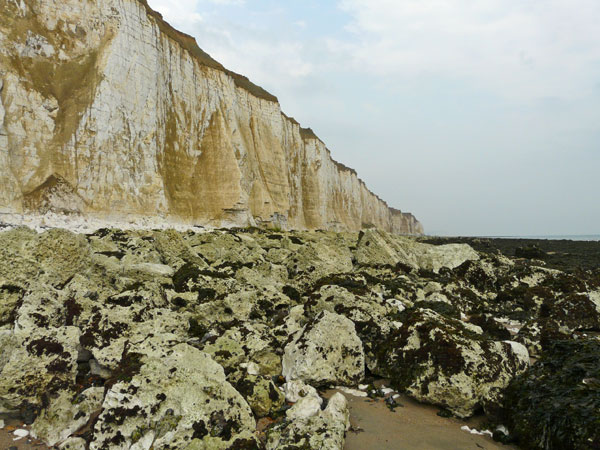
Coastal Section Peacehaven to Old Nore Point - Friar's Bay (img 759)
Cliffs up to 60 m high along Friar’s Bay expose Newhaven Chalk. At the top of the cliffs thin Woolwich Beds unconformably overlies the chalk. The wavecut platform is covered by large boulders or thick seaweed.
Grid ref 542780 100205
Direction ESE
Image file: P1030565ed.jpg

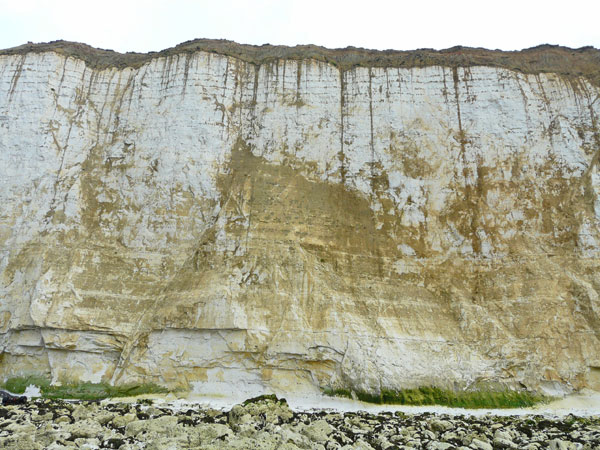
Coastal Section Peacehaven to Old Nore Point - Friar's Bay (img 760)
Cliffs 60 m high expose Newhaven Chalk overlain by thin Woolwich Beds. The unconformity surface shows small scale dissolution features and joints in the chalk appear to be infilled with derived material.
Grid ref 543086 100101
Direction NNE
Image file: P1030572ed.jpg

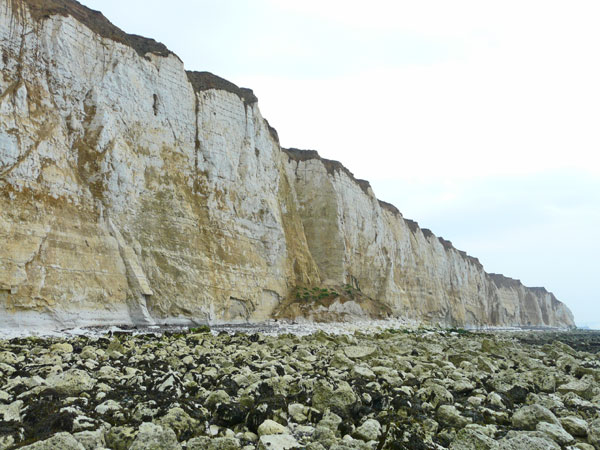
Coastal Section Peacehaven to Old Nore Point - Friar's Bay (img 761)
At the top of the cliffs a thin interval of Pleistocene deposits overlies the chalk above an irregular unconformity surface. The wavecut platform is covered by large boulders.
Grid ref TQ4308600101
Direction ESE
Image file: P1030574ed.jpg

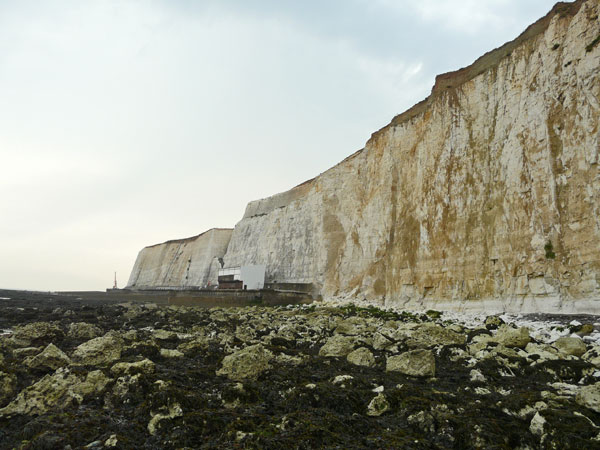
Coastal Section Peacehaven to Old Nore Point - Friar's Bay (img 762)
Cliffs 60 m high at Friar’s bay expose Newhaven Chalk. At the top of the cliffs a thin interval of Woolwich Beds unconformably overlies the chalk.The wavecut platform is covered by large boulders or thick seaweed.
Grid ref 542677 100312
Direction west
Image file: P1030578ed.jpg

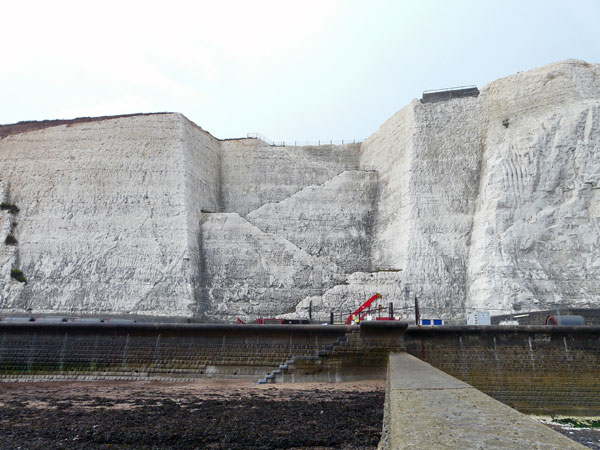
Coastal Section Peacehaven to Old Nore Point - Peacehaven Steps (img 763)
Peacehaven Steps provide an accessible section through the Newhaven Chalk.
Grid ref 542451 100314
Direction north
Image file: P1030579ed.jpg

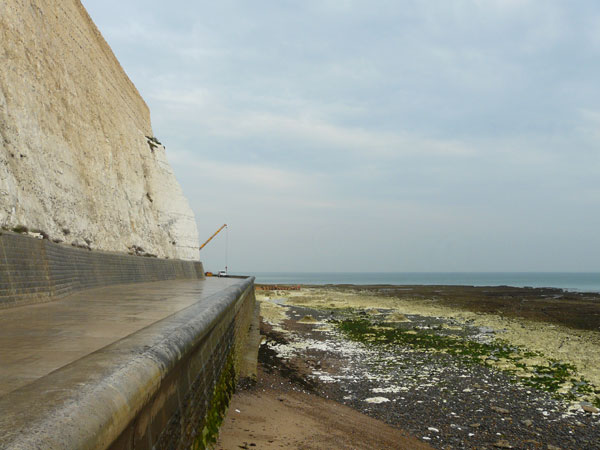
Coastal Section Peacehaven to Old Nore Point - Peacehaven (img 764)
Westernmost cliffs protected by sea wall expose Newhaven Chalk and lowermost Culver Chalk. Wavecut chalk platform is relatively free from seaweed cover.
Grid ref 542097 100400
Direction ESE
Image file: P1030585ed.jpg


Coastal Section Telscombe Cliffs to Peacehaven - Peacehaven (img 765)
Close-up of Newhaven Chalk with marl seams and flint bands, joints and fractures.
Grid ref 541771 100545
Direction NW
Image file: P1030590ed.jpg

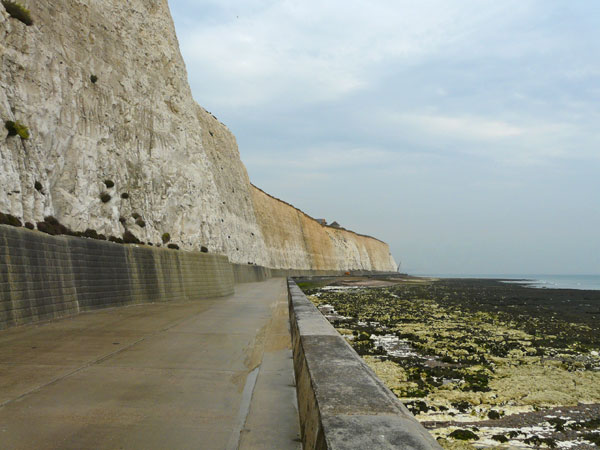
Coastal Section Telscombe Cliffs to Peacehaven - Peacehaven (img 766)
Cliffs at eastern end of section exposing upper Newhaven Chalk and lower Culver Chalk. Wavecut platform has significant areas free from seaweed.
Grid ref 541627 100539
Direction ESE
Image file: P1030592ed.jpg

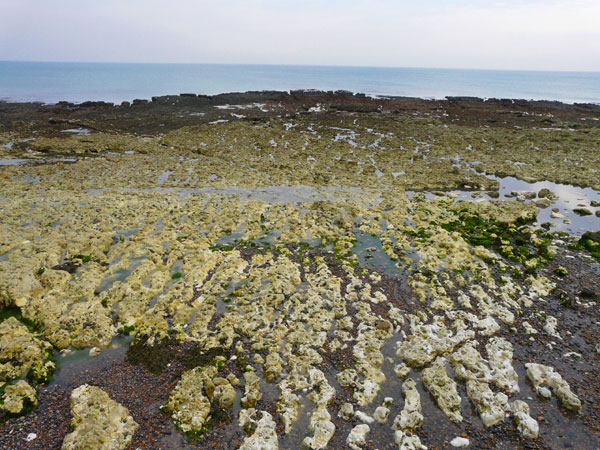
Coastal Section Telscombe Cliffs to Peacehaven - Peacehaven (img 767)
Accessible seaweed-free wavecut chalk platform east of Bastion Steps.
Grid ref 541627 100539
Direction SSW
Image file: P1030594ed.jpg

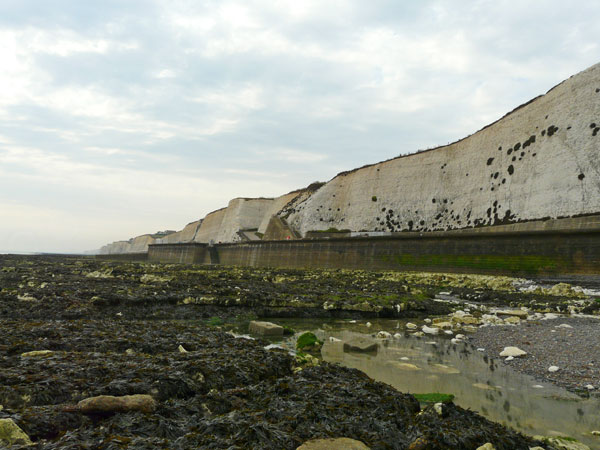
Coastal Section Telscombe Cliffs to Peacehaven - Bastion Steps (img 768)
Cliffs at Bastion Steps from seaweed-covered chalk platform. Cliffs are about 30m high.
Grid ref 541228 100615
Direction NW
Image file: P1030597ed.jpg

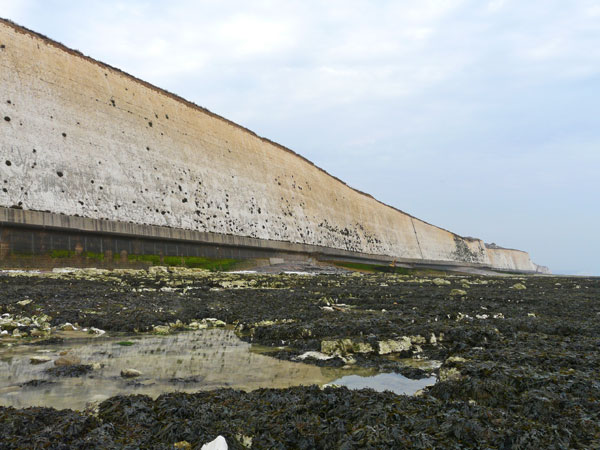
Coastal Section Telscombe Cliffs to Peacehaven - Peacehaven (img 769)
Cliffs to east of Bastion Steps from seaweed-covered wavecut platform. Cliffs are about 30 m high.
Grid ref 541228 100615
Direction NE
Image file: P1030601ed.jpg

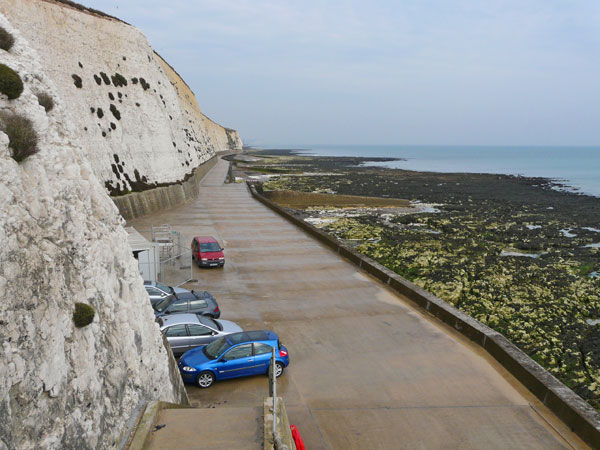
Coastal Section Telscombe Cliffs to Peacehaven - Bastion Steps (img 770)
Cliffs to east viewed from Bastion Steps exposing Newhaven Chalk and lower Culver Chalk. Wavecut platform has considerable seaweed cover but significant relatively bare patches.
Grid ref 541129 100701
Direction ESE
Image file: P1030603ed.jpg

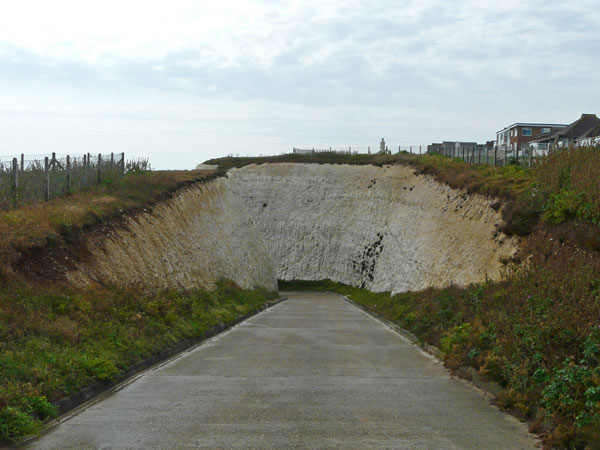
Coastal Section Telscombe Cliffs to Peacehaven - Bastion Steps (img 771)
Access road at Bastion Steps provides access to different levels of the Newhaven Chalk and lower Culver Chalk.
Grid ref 541134 100735
Direction WNW
Image file: P1030606ed.jpg

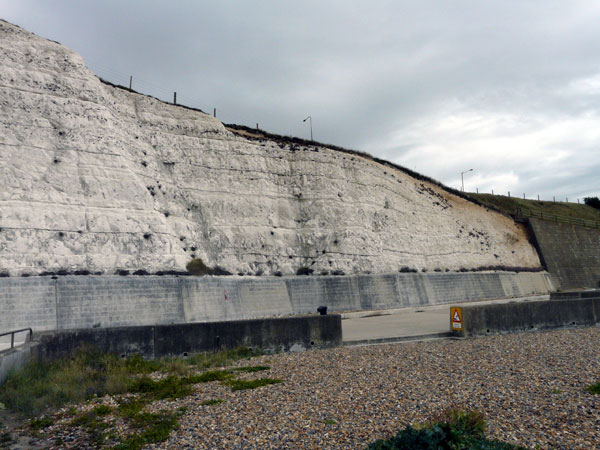
Coastal Section Ovingdean to Saltdean - cliffs at Saltdean (img 772)
Western edge of dry valley (DV4) at Saltdean showing transition from flat layered chalk to disturbed and weathered chalk. Centre of valley is mostly obscured by walls
Grid ref 537943 101920
Direction NW
Image file: P1030677.jpg


Coastal Section Ovingdean to Saltdean - cliffs at Saltdean (img 773)
Newhaven Chalk at Saltdean with minor faults offsetting well defined marl seams and flint bands.
Grid ref 537914 101913
Direction north
Image file: P1030678.jpg

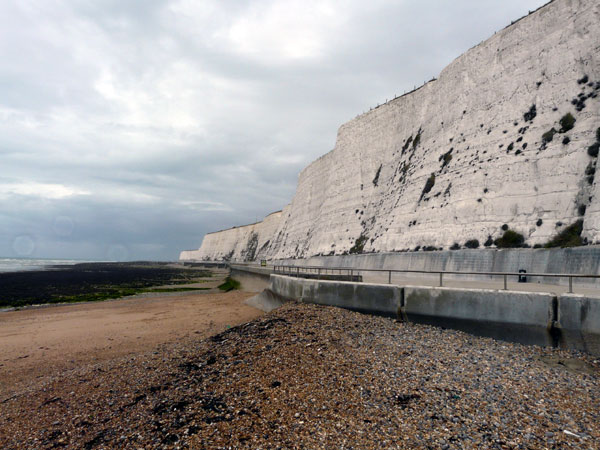
Coastal Section Ovingdean to Saltdean - cliffs near Saltdean (img 774)
Wavecut chalk platform and cliffs cut in Newhaven Chalk west of Saltdean.
Grid ref 537914 101913
Direction WNW
Image file: P1030679.jpg

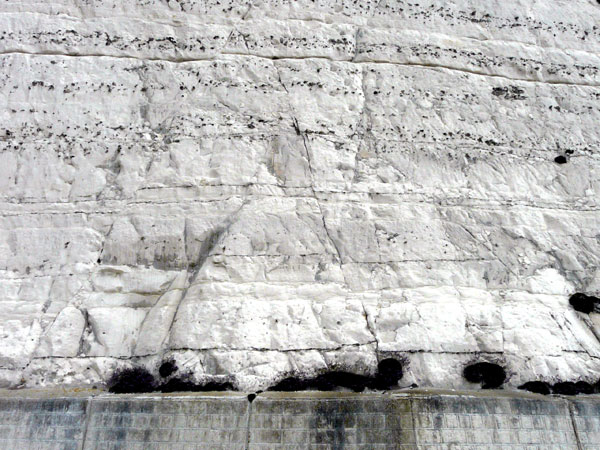
Coastal Section Ovingdean to Saltdean - cliff detail near Saltdean (img 775)
Detail of Newhaven Chalk with minor conjugate faults offsetting well defined marl seams and flint bands.
Grid ref 537828 101942
Direction NNE
Image file: P1030688ed.jpg

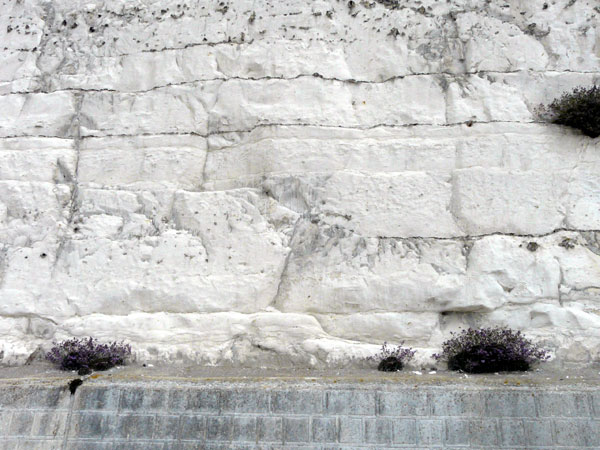
Coastal Section Ovingdean to Saltdean - cliff detail near Saltdean (img 776)
Detail of Newhaven Chalk with marl seams, flint bands and the edge of a channel.
Grid ref 537745 101967
Direction NNE
Image file: P1030689.jpg

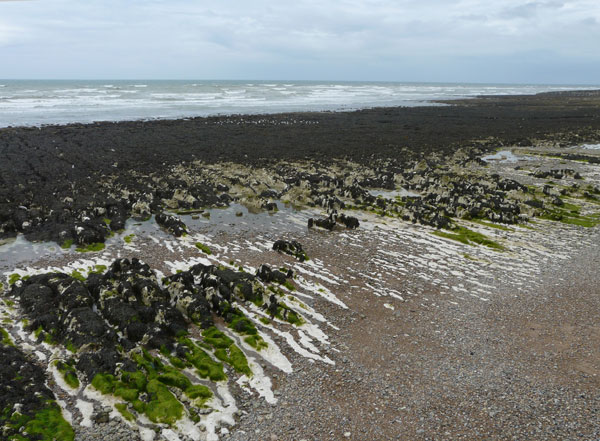
Coastal Section Ovingdean to Saltdean - wavecut platform near Saltdean (img 777)
Wavecut chalk platform partly exposed but mostly seaweed-covered.
Grid ref 537678 101990
Direction SW
Image file: P1030691.jpg

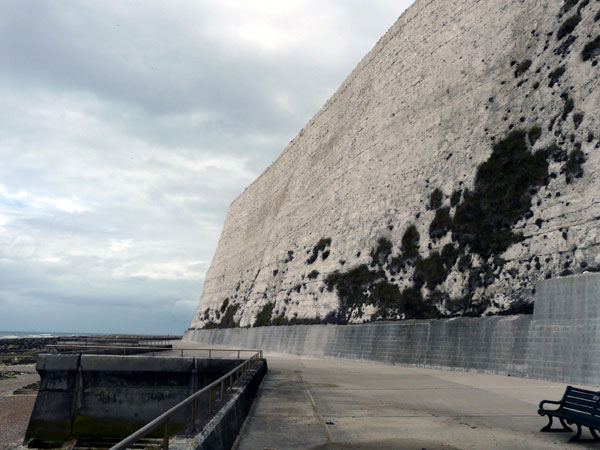
Coastal Section Ovingdean to Saltdean - cliffs near Rottingdean (img 778)
Cliffs cut in Newhaven Chalk with numerous marl seams and flint bands...
Grid ref 537492 102042
Direction west
Image file: P1030693.jpg


Coastal Section Ovingdean to Saltdean - cliff detail Rottingdean (img 779)
Detail of Newhaven Chalk showing marl seams and diffuse layers of irregular flints.
Grid ref 537258 102060
Direction NNE
Image file: P1030702.jpg

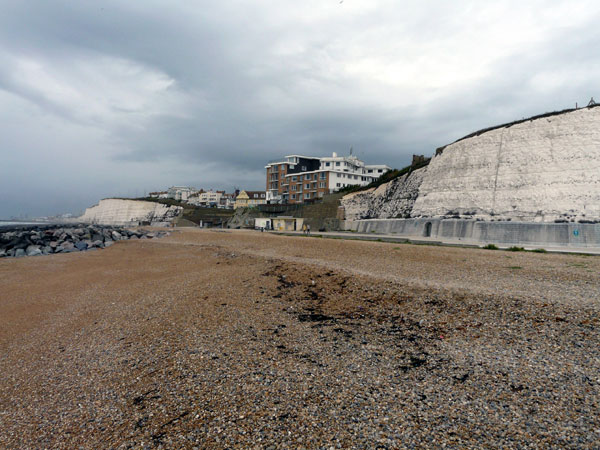
Coastal Section Ovingdean to Saltdean - dry valley Rottingdean (img 780)
Cross section of dry valley (DV5) at Rottingdean. Centre of valley mostly obscured by walls.
Grid ref 537153 102004
Direction NW
Image file: P1030704.jpg

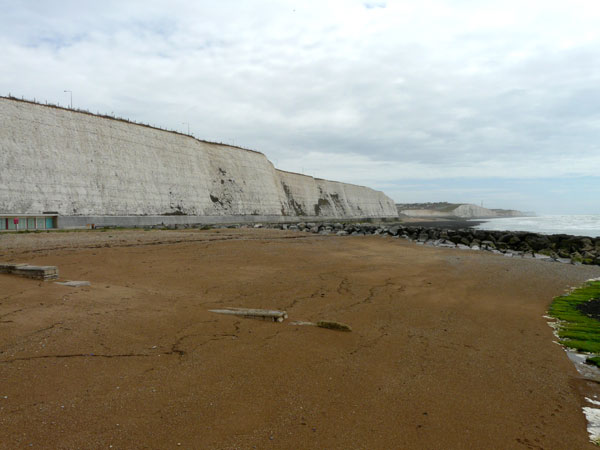
Coastal Section Ovingdean to Saltdean - Rottingdean (img 781)
Sandy foreshore and cliffs east of Rottingdean cut in Newhaven Chalk..
Grid ref 537153 102004
Direction east
Image file: P1030706.jpg


Section Ovingdean to Saltdean - cliffs Rottingdean (img 782)
Newhaven Chalk exposed at Rottingdean showing sets of minor conjugate faults offsetting the flint bands and marl seams.
Grid ref 537208 102046
Direction NNE
Image file: P1030709.jpg

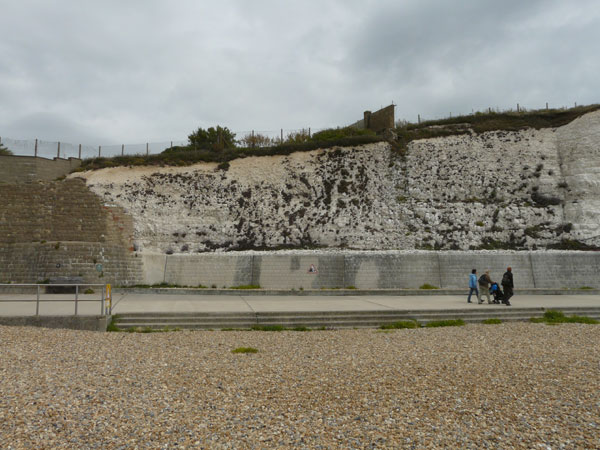
Coastal Section Ovingdean to Saltdean - dry valley Rottingdean (img 783)
Eastern edge of dry valley (DV5) at Rottingdean showing transition from layered chalk to structureless weathered chalk.
Grid ref 537077 102059
Direction NNE
Image file: P1030711.jpg

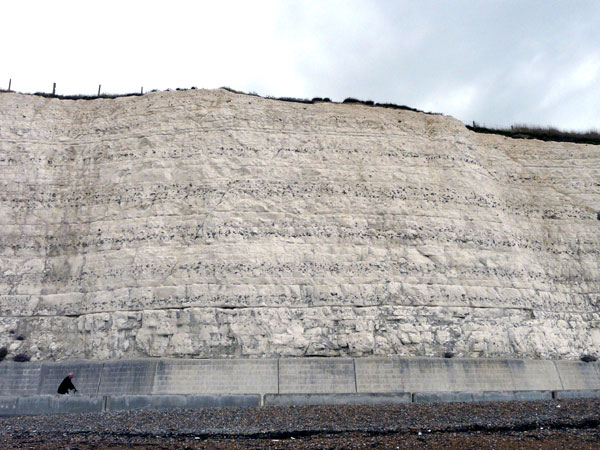
Coastal Section Ovingdean to Saltdean - western end (img 784)
Cliff exposing Newhaven Chalk with numerous well-defined marl seams and flint bands.
Grid ref TQ3678402162
Direction NNE
Image file: P1030717.jpg

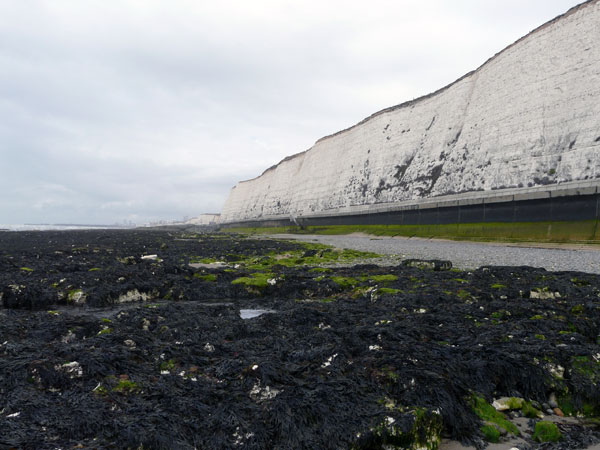
Coastal Section Ovingdean to Saltdean - western end (img 785)
Western end of section. Seaweed-covered chalk platform and cliffs exposing Newhaven Chalk.
Grid ref 536540 102250
Direction WNW
Image file: P1030721.jpg


Coastal Section Brighton Marina to Ovingdean - beach and Dry Valley 6 (img 786)
Cross-section of dry valley (DV6) truncated by cliffs at Ovingdean. Partly obscured by development.
Grid ref TQ3616902407
Direction WNW
Image file: P1030727.jpg

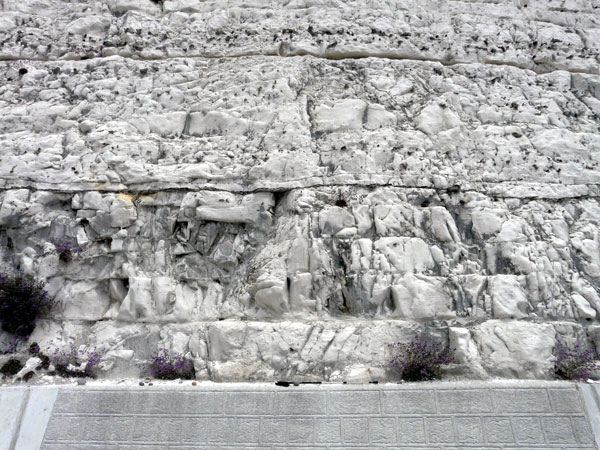
Coastal Section Brighton Marina to Ovingdean - chalk detail (img 787)
Detail of Newhaven Chalk showing well defined marl seams at base and prominent flint bands above, both tabular layers and diffuse zones of irregular flints. ..
Grid ref TQ3613002451
Direction NNE
Image file: P1030728.jpg

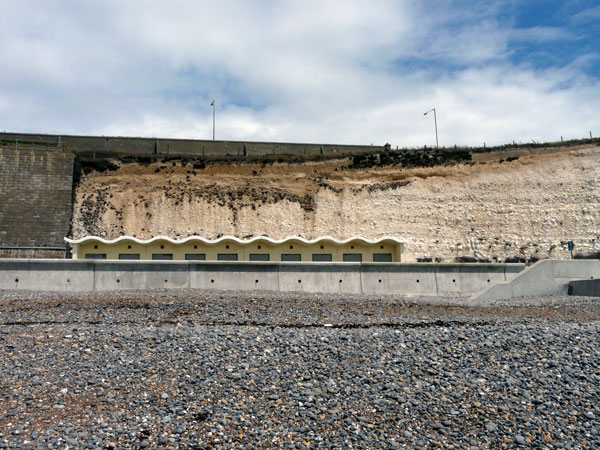
Coastal Section Brighton Marina to Ovingdean - Dry Valley 6 (img 788)
Eastern edge of dry valley (DV6) showing transition from weathered chalk with prominent layering (at right) to structureless weathered chalk beneath the centre of the valley. Overlain by Pleistocene deposits with cryoturbation lobes/infilled solution pipes at base.
Grid ref TQ3602502474
Direction NNE
Image file: P1030730.jpg

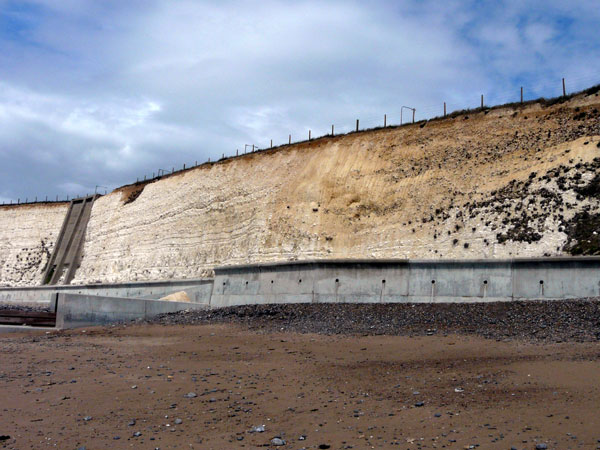
Coastal Section Brighton Marina to Ovingdean - Dry Valley 6 (img 789)
Western edge of dry valley (DV6) showing transition from chalk through weathered chalk to Pleistocene valley deposits forming unusual lobes probably formed under saturated ground conditions.
Grid ref TQ3595002522
Direction NW
Image file: P1030733.jpg

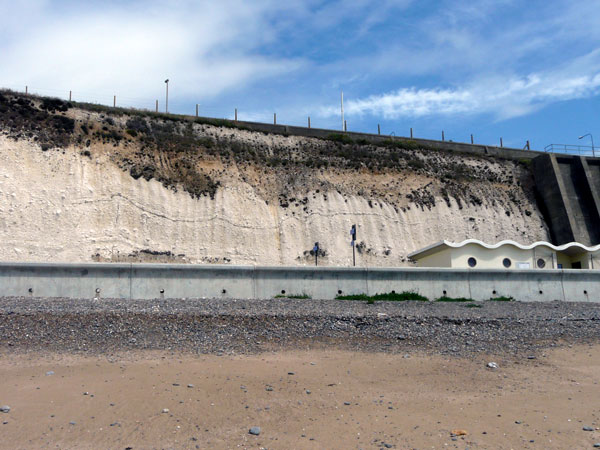
Coastal Section Brighton Marina to Ovingdean - Dry Valley 6 (img 790)
Cross-section of dry valley (DV6) showing heavily weathered chalk. Residual flint bands define internal fold structures probably formed under saturated ground conditions. Overlain by Pleistocene deposits with cryoturbation lobes/infilled solution pipes at base.
Grid ref TQ3595002522
Direction NE
Image file: P1030737.jpg

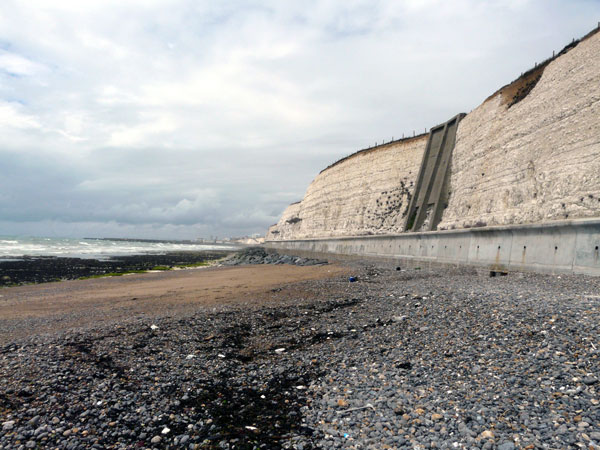
Coastal Section Brighton Marina to Ovingdean - undercliff and wavecut platform (img 791)
Wavecut platform, shingle and sand beach, and cliffs exposing Newhaven Chalk with numerous flint bands and marl seams.
Grid ref 535917 102550
Direction WNW
Image file: P1030742.jpg

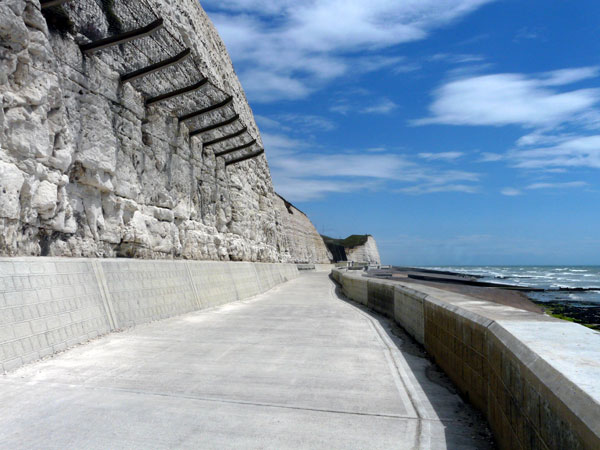
Coastal Section Brighton Marina to Ovingdean - undercliff (img 792)
Chalk cliffs with protection from rock falls. Newhaven Chalk exposed with well developed flint bands and marl seams. Details of the chalk stratigraphy are clearly visible and well defined.
Grid ref TQ3577602612
Direction ESE
Image file: P1030745.jpg

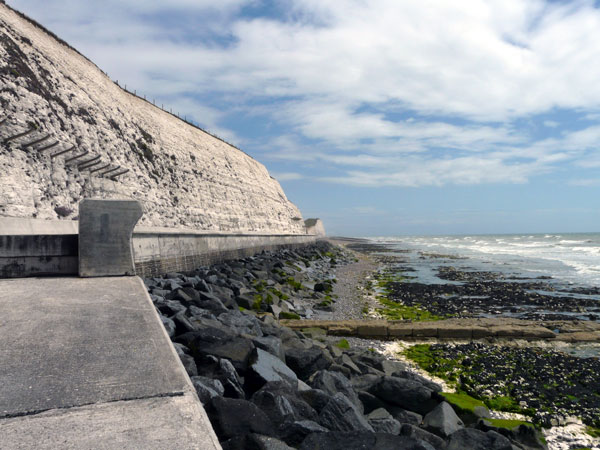
Coastal Section Brighton Marina to Ovingdean - undercliff and wavecut platform (img 793)
Wavecut platform and cliffs exposing Newhaven Chalk. ..
Grid ref TQ3546602728
Direction ESE
Image file: P1030747.jpg

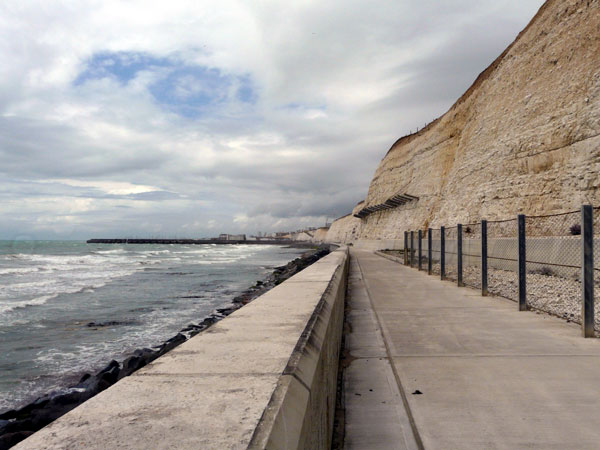
Coastal Section Brighton Marina to Ovingdean - undercliff (img 794)
Weathered chalk cliffs with protection from rock falls. Overlain by thin Pleistocene deposits.
Grid ref TQ3538502764
Direction WNW
Image file: P1030749.jpg


Coastal Section Brighton Marina to Ovingdean - western undercliff (img 795)
Western end of section looking west along the undercliff road towards Brighton Marina. Cliffs expose Newhaven Chalk with numerous flint bands and marl seams.
Grid ref TQ3504702921
Direction WNW
Image file: P1030750.jpg

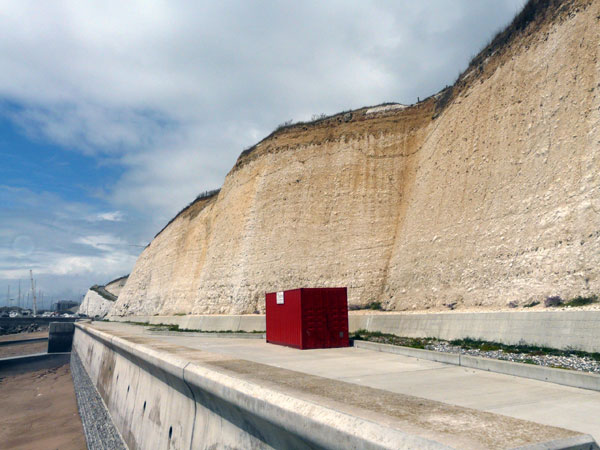
Coastal Section Brighton Marina to Ovingdean - Dry Valley 7 (img 796)
Weathered chalk beneath dry valley (DV7) east of Brighton Marina. Overlain by Pleistocene deposits with cryoturbation lobes at base...
Grid ref TQ3469203047
Direction WNW
Image file: P1030752.jpg

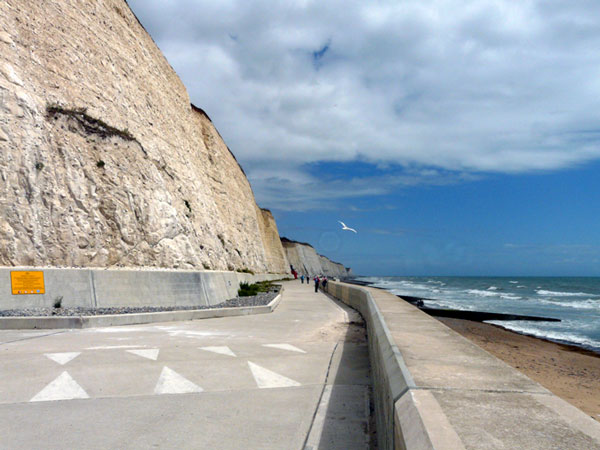
Coastal Section Brighton Marina to Ovingdean - western end (img 797)
Western end of section looking east along the undercliff road from Brighton Marina. Cliffs expose Newhaven Chalk.
Grid ref TQ3449303110
Direction ESE
Image file: P1030755.jpg

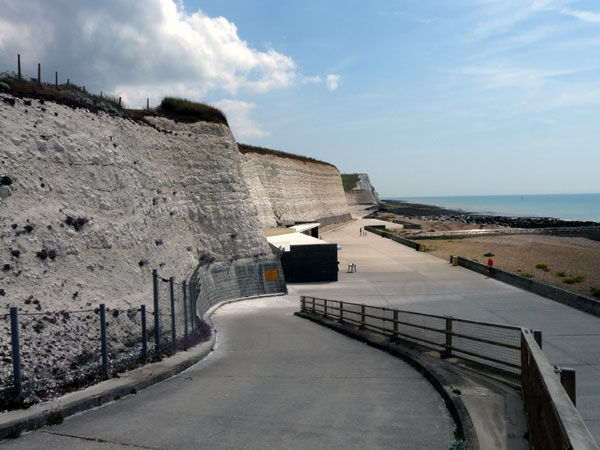
Coastal Section Saltdean to Telscombe Cliffs - Saltdean (img 798)
Western end of section at Saltdean showing eastern end of dry valley (DV4) and cliffs cut in weathered Newhaven Chalk.
Grid ref 538177 101902
Direction ESE
Image file: P1030791.jpg

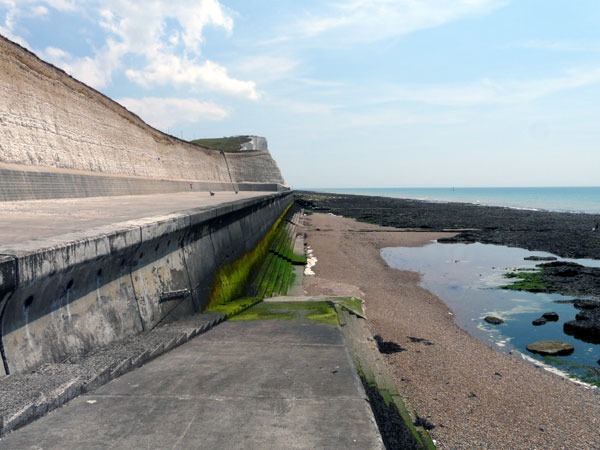
Coastal Section Saltdean to Telscombe Cliffs - Saltdean (img 799)
Seaweed-covered wavecut platform and cliffs exposing weathered Newhaven Chalk associated with dry valley (DV3). Pleistocene deposits overlie the chalk.
Grid ref 538437 101793
Direction ESE
Image file: P1030795.jpg

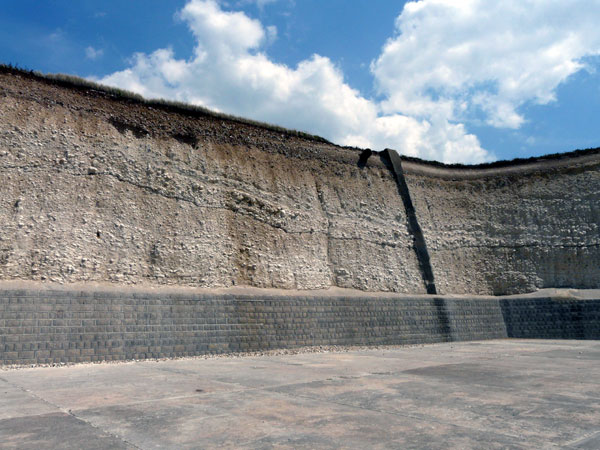
Coastal Section Saltdean to Telscombe Cliffs - Saltdean (img 800)
Eastern end of dry valley (DV3) showing very weathered chalk with internal folding and disturbance picked out by harder bands. Pleistocene gravels overlie the chalk with cryoturbation lobes at base.
Grid ref 538553 101736
Direction east
Image file: P1030799.jpg

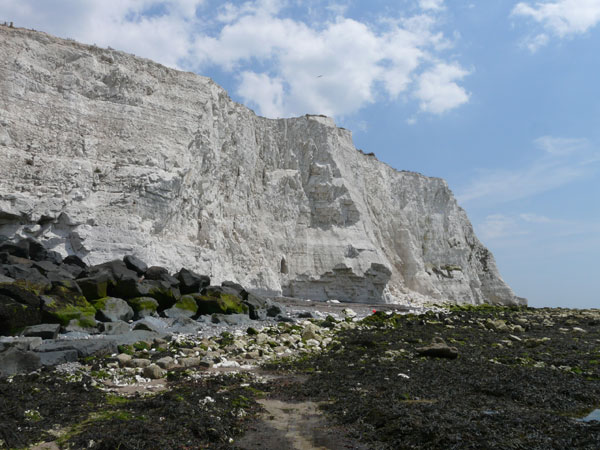
Coastal Section Saltdean to Telscombe Cliffs - near Saltdean (img 801)
Seaweed-covered wavecut platform and cliffs up to 45 m high exposing rough fractured faces of Newhaven Chalk with numerous marl seams and flint bands.
Grid ref 538599 101700
Direction ESE
Image file: P1030802.jpg


Coastal Section Saltdean to Telscombe Cliffs - near Saltdean (img 802)
Large boulders covering wavecut platform and cliffs exposing rough fractured faces of Newhaven Chalk with numerous marl seams and flint bands.
Grid ref 538675 101680
Direction SE
Image file: P1030804.jpg

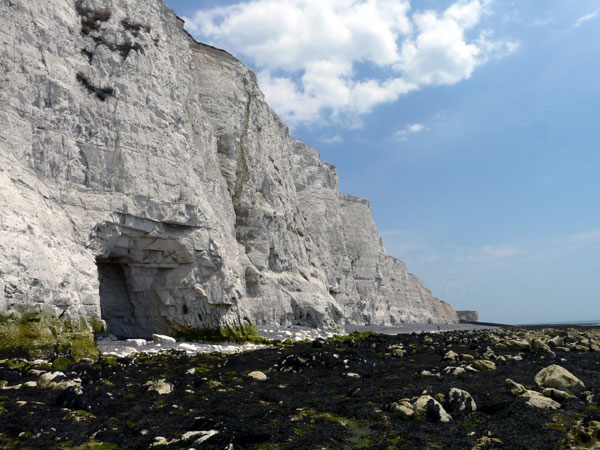
Coastal Section Saltdean to Telscombe Cliffs - near Saltdean (img 803)
Seaweed and boulder-covered wavecut platform and cliffs exposing rough fractured faces of Newhaven Chalk with numerous marl seams and flint bands. Fractures control the shape of the sea cave.
Grid ref 538802 101611
Direction ESE
Image file: P1030809.jpg

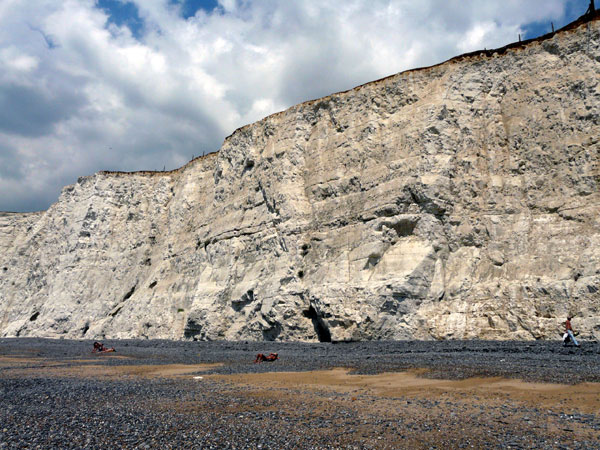
Coastal Section Saltdean to Telscombe Cliffs - Telscombe Cliffs (img 804)
Cliffs up to 40 m high west of Portobello exposing rough fractured faces of Newhaven Chalk with numerous marl seams and flint bands. Prominent fault dipping to right at centre.
Grid ref 539140 101456
Direction NW
Image file: P1030822.jpg

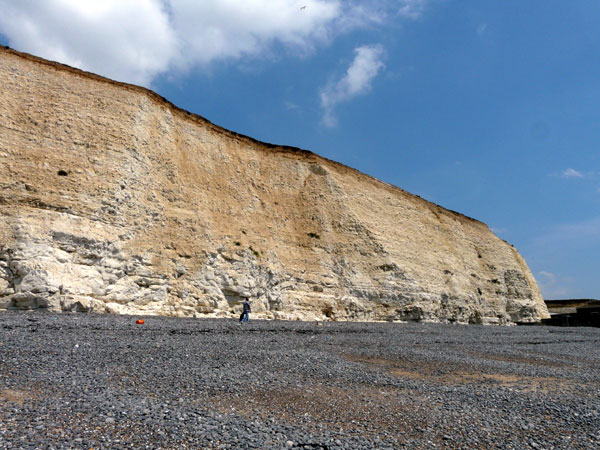
Coastal Section Saltdean to Telscombe Cliffs - Telscombe Cliffs (img 805)
Weathered Newhaven Chalk at the eastern side of dry valley (DV2) approaching the Portobello outfall. Pleistocene sediments overlie the chalk. ..Cliffs are about 30 m high.
Grid ref 539202 101431
Direction east
Image file: P1030826.jpg

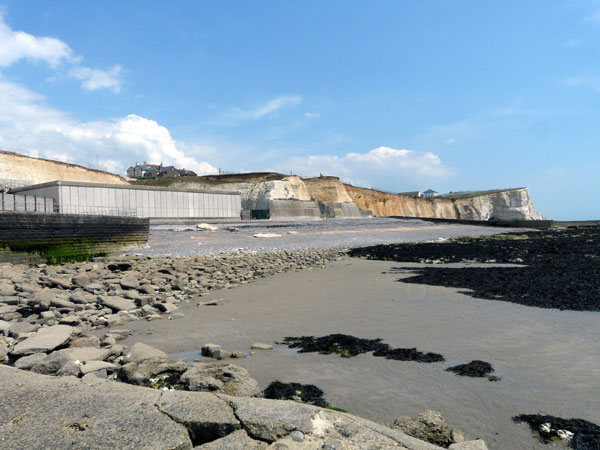
Coastal Section Saltdean to Telscombe Cliffs - Portobello (img 806)
The centre of dry valley (DV2) at Portobello is obscured by the pumping station and sea walls but the far (eastern) side is well exposed.
Grid ref 539256 101357
Direction ESE
Image file: P1030830.jpg

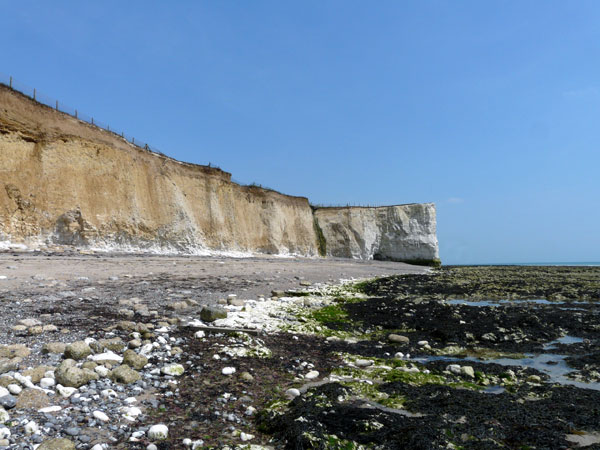
Coastal Section Saltdean to Telscombe Cliffs - Portobello (img 807)
Eastern edge of dry valley (DV2) at showing transition from very weathered chalk to unaltered chalk on the headland. Pleistocene sediments overlie the chalk with cryoturbation lobes at the base.
Grid ref 539431 1013364
Direction east
Image file: P1030837.jpg

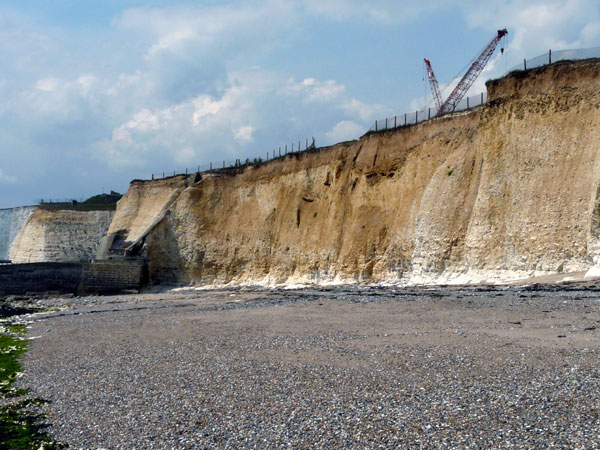
Coastal Section Saltdean to Telscombe Cliffs - Portobello (img 808)
Eastern side of dry valley (DV2). Pleistocene sediments overlie very weathered chalk and also infill dissolution pipes and lenses in the chalk. ..Cliffs are about 20 m high.
Grid ref 539563 101280
Direction NW
Image file: P1030843.jpg

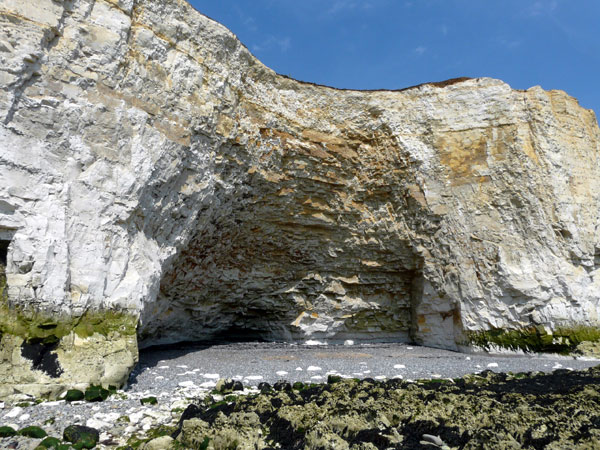
Coastal Section Saltdean to Telscombe Cliffs - eastern end (img 809)
Large sea cave overhang eroded in fractured chalk (top Newhaven and basal Culver Chalk) with considerable iron-staining. Cliffs are about 30 m high.
Grid ref 539628 101221
Direction NNE
Image file: P1030847.jpg


Coastal Section Saltdean to Telscombe Cliffs - eastern end (img 810)
Thin Pleistocene sediments overlying Culver Chalk with cryoturbation lobes at the interface.
Grid ref 539855 101171
Direction NNE
Image file: P1030854.jpg

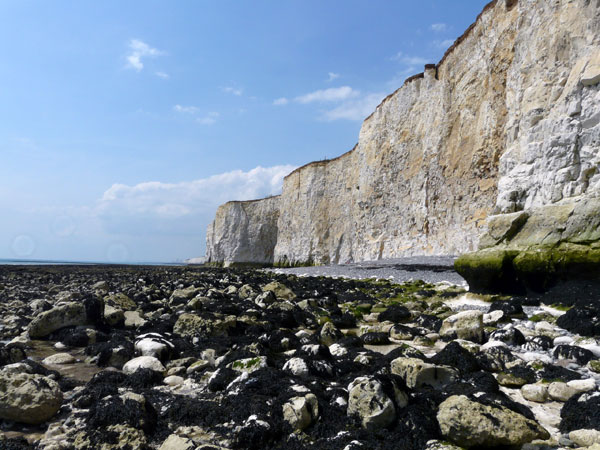
Coastal Section Saltdean to Telscombe Cliffs - eastern end (img 811)
Boulder-strewn wavecut platform and cliffs cut in upper Newhaven and lower Culver Chalk viewed from eastern end of section .Cliffs are about 30-35 m high. ..
Grid ref 539895 101138
Direction WNW
Image file: P1030856.jpg

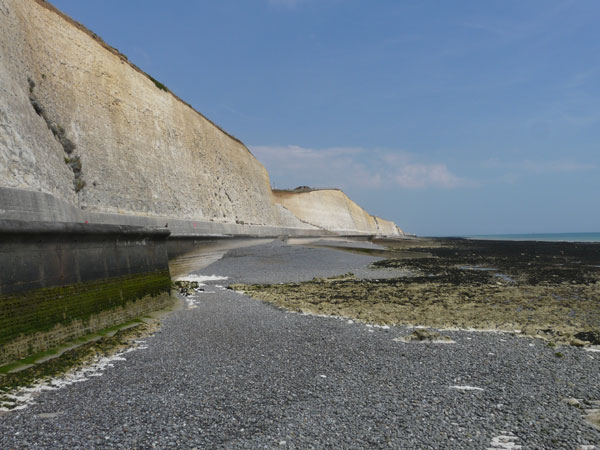
Coastal Section Telscombe Cliffs to Peacehaven - Telscombe Cliffs (img 812)
Cliffs viewed from western end of section exposing Newhaven Chalk and lower Culver Chalk. Wavecut platform has less seaweed cover than further west.
Grid ref 540164 101047
Direction ESE
Image file: P1030861.jpg

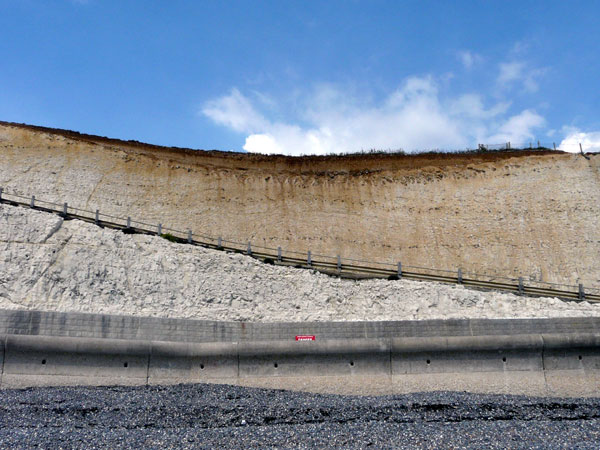
Coastal Section Telscombe Cliffs to Peacehaven - Telscombe Cliffs (img 813)
Cross-section of dry valley (DV1) showing weathered chalk overlain by Pleistocene deposits with cryoturbation lobes at base. This valley has not cut very deep and preserves a typical chalk weathering profile.
Grid ref 540317 101002
Direction NNE
Image file: P1030864.jpg

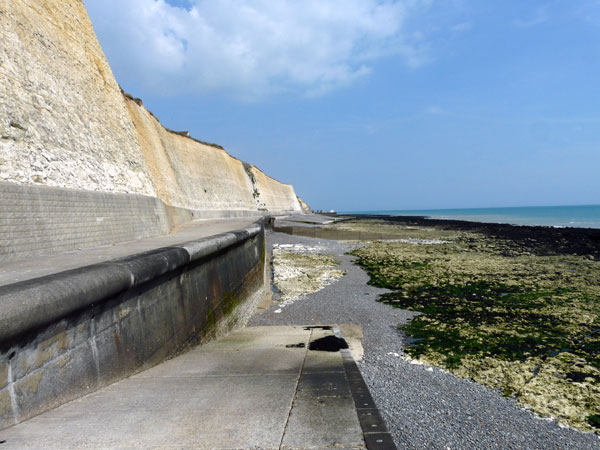
Coastal Section Telscombe Cliffs to Peacehaven - Telscombe Cliffs (img 814)
Cliffs exposing Newhaven Chalk and lower Culver Chalk. A small dry valley is truncated by the cliffs just beyond this point. Wavecut platform has less seaweed cover than further west.
Grid ref 540615 100893
Direction ESE
Image file: P1030868.jpg

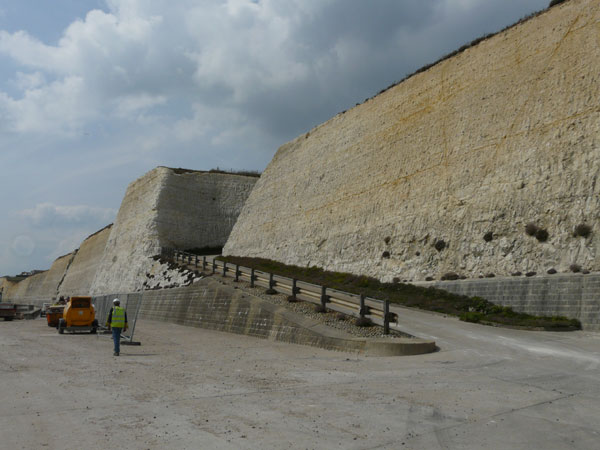
Coastal Section Telscombe Cliffs to Peacehaven - Bastion Steps (img 815)
Access road at Bastion Steps provides access to different levels of the Newhaven Chalk and lower Culver Chalk. Cliff at right shows conjugate faults and marl seams emphasised by iron staining.
Grid ref 541111 100702
Direction NW
Image file: P1030873.jpg


Coastal Section Telscombe Cliffs to Peacehaven - Bastion Steps (img 816)
Detail of marl seams in Newhaven Chalk beside access road at Bastion Steps. Shows how erosion of a prominent marl seams forms a ledge.
Grid ref 541065 100744
Direction west
Image file: P1030874.jpg

Tarring Neville Quarry (TQ40/18)
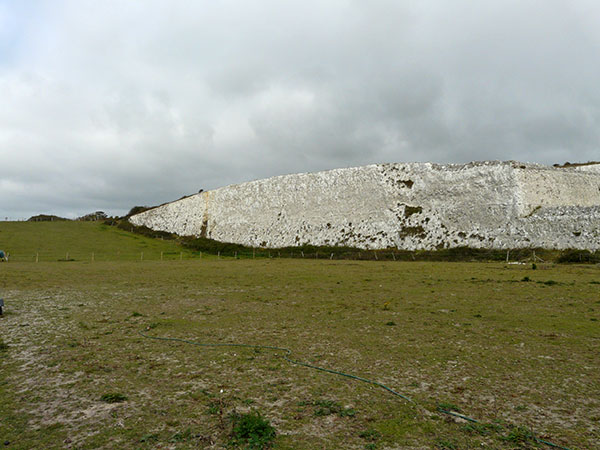
East Sussex Local Geological Sites - Tarring Neville Quarry, Newhaven (img 818)
Central face viewed from entrance area.
About 15m high.
Photo taken: 04/10/2011
Grid ref TQ44570346
Direction NW
Image file: P1050478ed.jpg

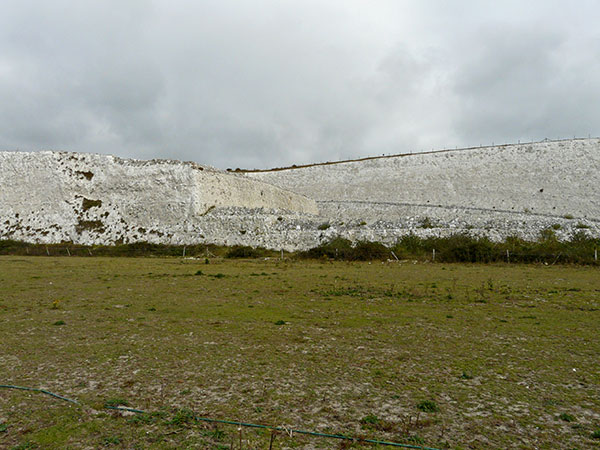
East Sussex Local Geological Sites - Tarring Neville Quarry, Newhaven (img 819)
Southern end of central face viewed from entrance area showing benches cut perpendicular to the face.
Main face behind, up to 25m high.
Photo taken: 04/10/2011
Grid ref TQ44570346
Direction north
Image file: P1050479ed.jpg

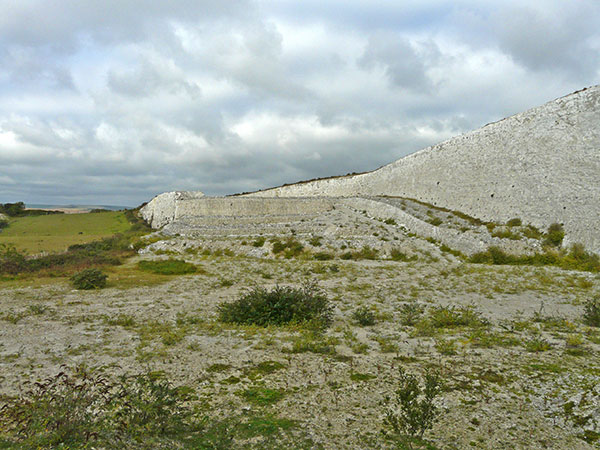
East Sussex Local Geological Sites - Tarring Neville Quarry, Newhaven (img 820)
Quarry viewed from SE face showing (L to R) central face, benches perpendicular to it, inclined bench and main face.
Photo taken: 04/10/2011
Grid ref TQ44720343
Direction NW
Image file: P1050489ed.jpg

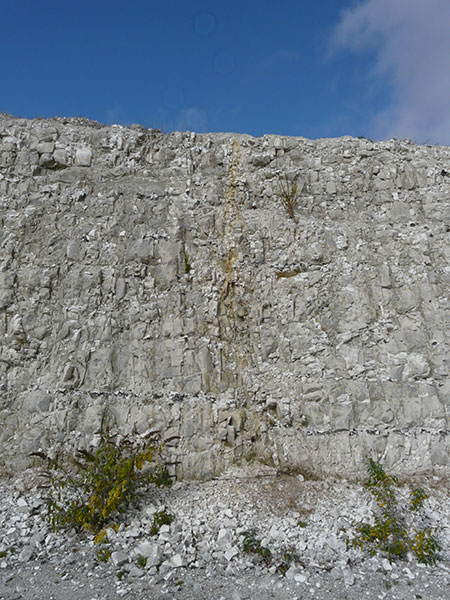
East Sussex Local Geological Sites - Tarring Neville Quarry, Newhaven (img 821)
Prominent fault zone, downthrown to right (NE) exposed along NE trending bench.
Face about 8m high.
Photo taken: 04/10/2011
Grid ref TQ44600355
Direction NW
Image file: P1050507.jpg


East Sussex Local Geological Sites - Tarring Neville Quarry, Newhaven (img 822)
Main face viewed from inclined bench showing numerous flint bands in the Seaford Chalk.
Photo taken: 04/10/2011
Grid ref TQ44610358
Direction SE
Image file: P1050525ed.jpg

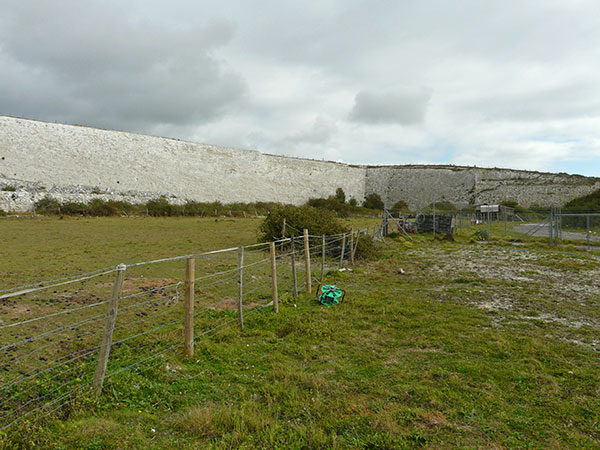
East Sussex Local Geological Sites - Tarring Neville Quarry, Newhaven (img 823)
Southern end of main face and SE face, up to 25 m high, viewed from entrance area.
SE face, at right, is cut by a prominent near vertical fault.
Photo taken: 04/10/2011
Grid ref TQ44530348
Direction ESE
Image file: P1050547ed.jpg

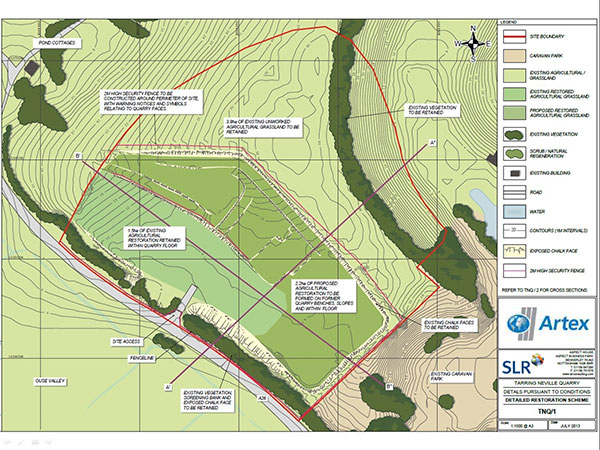
DUPLICATE (img 824)
DUPLICATE
Image file: TarringNevilleQuarry.jpg

Asham Quarry, Beddingham (TQ40/31)
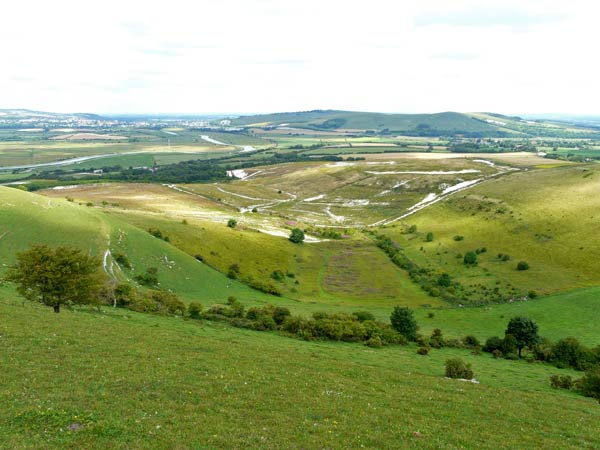
East Sussex Local Geological Sites - Asham Quarry (img 826)
Dry valley above the Asham Quarry site viewed from near the South Downs Way on Itford Hill. The site itself is on the valley floor just outside the boundary of the Beddingham landfill site.
Photograph taken: 14/07/2011
Grid ref TQ44130550
Direction north
Image file: P1030947ed.jpg


East Sussex Local Geological Sites - Asham Quarry (img 827)
The site is within the circular clump of bushes on the dry valley floor just outside the perimeter fence of the Beddingham landfill site. A bund on the uphill side protects the site from water flow.
Photo taken with zoom lens.
Photograph taken: 14/07/2011
Grid ref TQ44130550
Direction north
Image file: P1030948ed.jpg

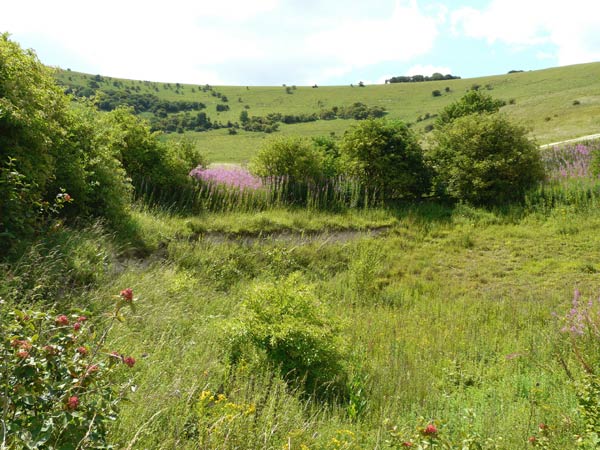
East Sussex Local Geological Sites - Asham Quarry (img 828)
Excavation site viewed from north showing infilled pit area with the top of the cut face in Quaternary sediments still showing amongst the encroaching vegetation.
Photograph taken: 14/07/2011
Grid ref TQ44080590
Direction south
Image file: P1030949ed.jpg

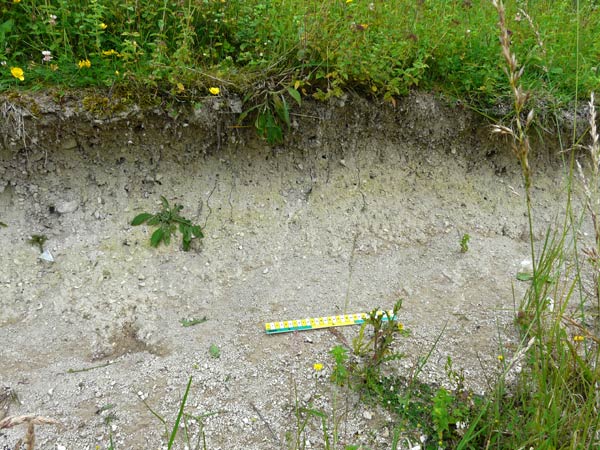
East Sussex Local Geological Sites - Asham Quarry (img 829)
Detail of top of cut face exposing only the shallowest layers comprising post-glacial paleosols and colluvium.
30 cm scale.
Photograph taken: 14/07/2011
Grid ref TQ44080589
Direction SSE
Image file: P1030952ed.jpg

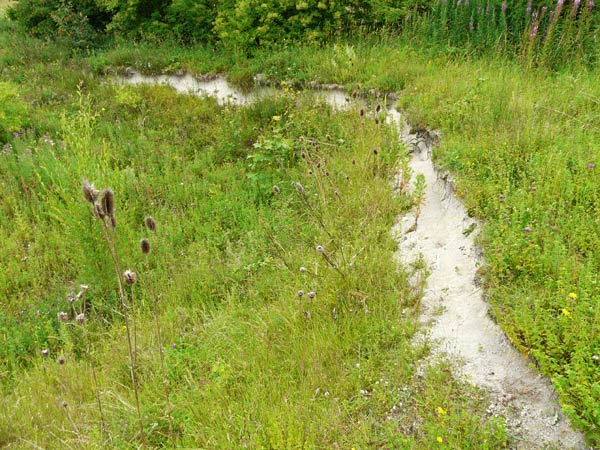
East Sussex Local Geological Sites - Asham Quarry (img 830)
The remaining top of the cut face in Quaternary sediments up to 1 m high and about 25 m long.
Photograph taken: 14/07/2011
Grid ref TQ44080588
Direction ENE
Image file: P1030953ed.jpg


East Sussex Local Geological Sites - Asham Quarry (img 831)
Dry valley above the site viewed from the west side. The site itself is at the left on the valley floor just outside the boundary of the Beddingham landfill site.
Photograph taken: 14/07/2011
Grid ref TQ44130550
Direction north
Image file: P1030955ed.jpg

Rocks Park, Uckfield (TQ42/02)
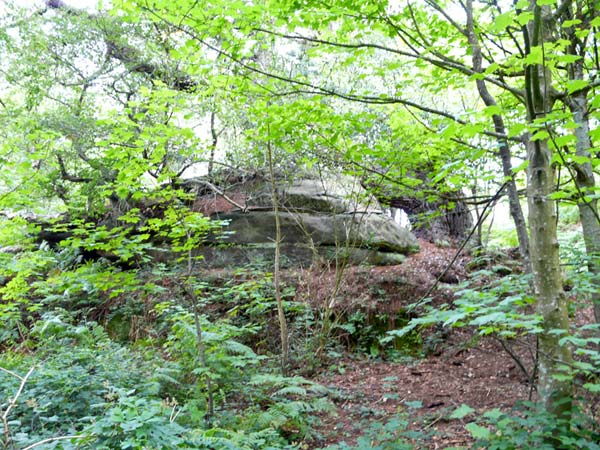
East Sussex Local Geological Sites - Rocks Park (img 833)
Rounded sandstone outcrop towards eastern end of park with stacked channel units which show internal cross-bedding.
Photograph taken: 20/07/2011
Grid ref. TQ46432164
Direction NE
Image file: P1040078ed.jpg

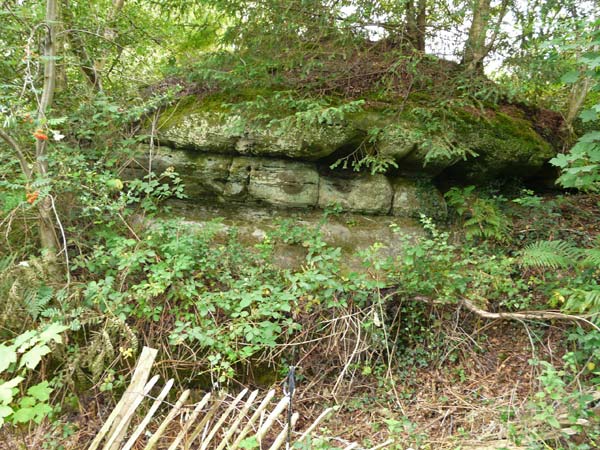
East Sussex Local Geological Sites - Rocks Park (img 834)
Outcrop of Ardingly Sandstone next to the park entrance showing beds dipping at a low angle to the NW.
Photograph taken: 20/07/2011
Grid ref. TQ46332161
Direction WSW
Image file: P1040085ed.jpg

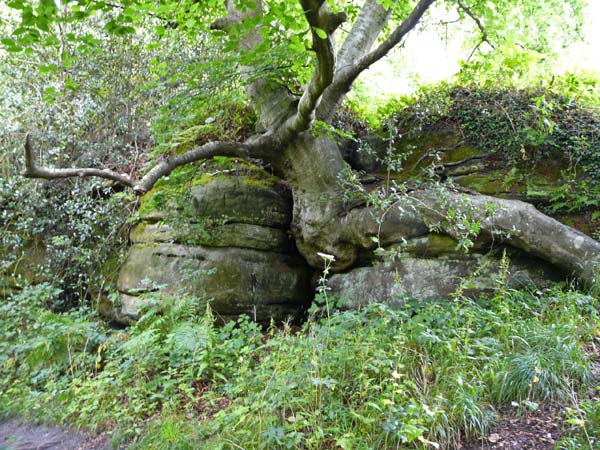
East Sussex Local Geological Sites - Rocks Park (img 835)
Rounded outcrop of Ardingly Sandstone showing polygonal cracking at top.
1 m pole for scale.
Photograph taken: 20/07/2011
Grid ref. TQ46292161
Direction west
Image file: P1040086ed.jpg

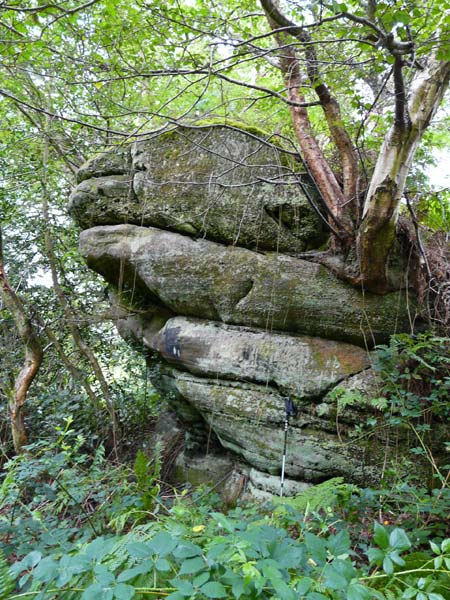
East Sussex Local Geological Sites - Rocks Park (img 836)
Overhanging outcrop of Ardingly Sandstone showing stacked channel units picked out by differential weathering.
1 m pole for scale.
Photograph taken: 20/07/2011
Grid ref. TQ46272159
Direction WSW
Image file: P1040087ed.jpg


East Sussex Local Geological Sites - Rocks Park (img 837)
Open joint or gull between weathered blocks of Ardingly Sandstone.
1 m pole for scale.
Photograph taken: 20/07/2011
Grid ref. TQ46272157
Direction WNW
Image file: P1040089ed.jpg


East Sussex Local Geological Sites - Rocks Park (img 838)
Detail of base of cross-bedded sandstone unit with bedding accentuated by honeycomb weathering.
30 cm scale.
Photograph taken: 20/07/2011
Grid ref. TQ46272157
Image file: P1040092ed.jpg

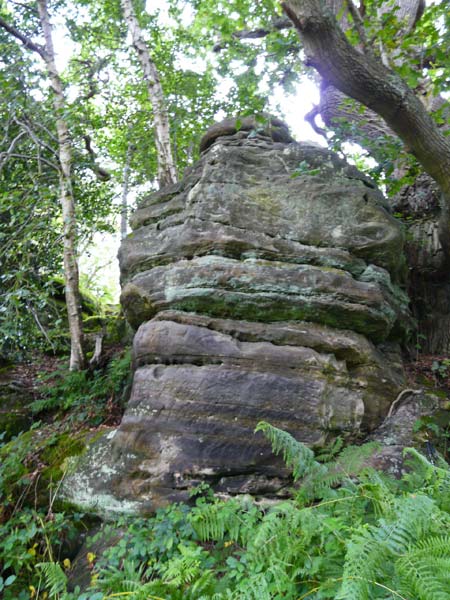
East Sussex Local Geological Sites - Rocks Park (img 839)
Ardingly Sandstone block about 4 m high showing stacked channel units picked out by differential weathering and cross-bedding within units.
1 m pole for scale.
Photograph taken: 20/07/2011
Grid ref. TQ46272156
Direction WSW
Image file: P1040095ed.jpg

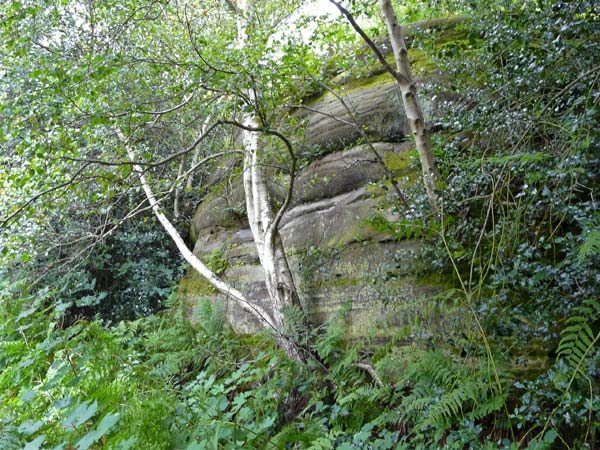
East Sussex Local Geological Sites - Rocks Park (img 840)
Massive Ardingly Sandstone block about 5 m high with encroaching vegetation. Polygonal cracking visible towards top.
Photograph taken: 20/07/2011
Grid ref. TQ46232152
Direction NNW
Image file: P1040097ed.jpg

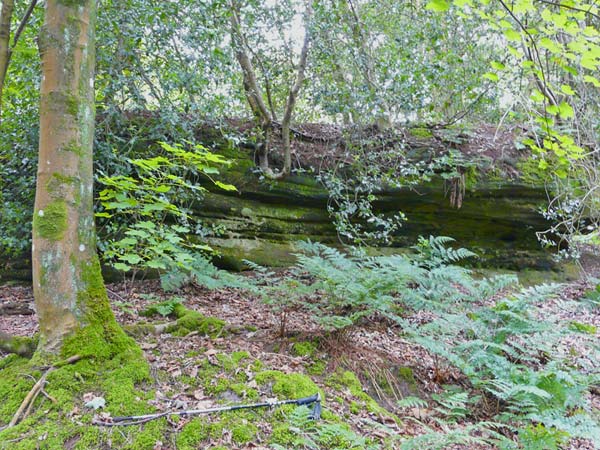
East Sussex Local Geological Sites - Rocks Park (img 841)
Part of overgrown low outcrops of Ardingly Sandstone at western end of park. About 3 m high showing well defined bedding picked out by differential weathering.
Photograph taken: 20/07/2011
Grid ref. TQ46172149
Direction SW
Image file: P1040099ed.jpg

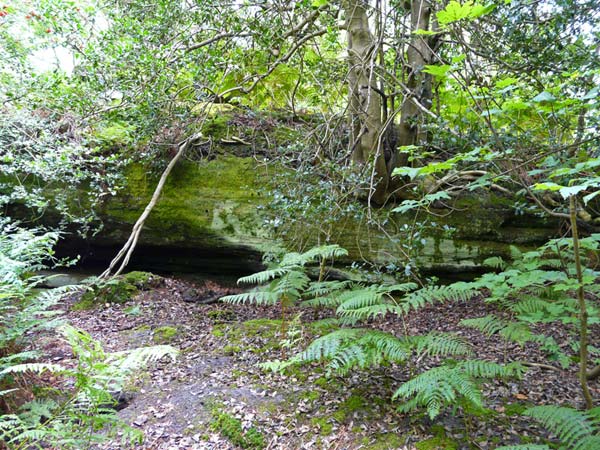
East Sussex Local Geological Sites - Rocks Park (img 842)
Part of overgrown low outcrops of Ardingly Sandstone at western end of park. About 3 m high showing well defined cross-bedding in the lower units.
Photograph taken: 20/07/2011
Grid ref. TQ46182148
Direction west
Image file: P1040102ed.jpg

The Hermitage, High Hurstwood (TQ42/03)

East Sussex Local Geological Sites - The Hermitage, High Hurstwood (img 844)
Face about 6m high in garden exposing massive Ardingly Sandstone with structural dip to the right and honeycomb weathering above the lower channel unit. Cave at right has been modified as a play room.
Photo taken: 20/07/2011
Grid ref TQ49452502
Direction NE
Image file: P1040135.jpg


East Sussex Local Geological Sites - The Hermitage, High Hurstwood (img 845)
Massive sandstone face about 4m high at edge of garden showing thick channel units picked out by differential weathering. The upper unit shows finer detail of the bedding including cross-bedding.
Photo taken: 20/07/2011
Grid ref TQ49482504
Direction NNW
Image file: P1040139ed.jpg

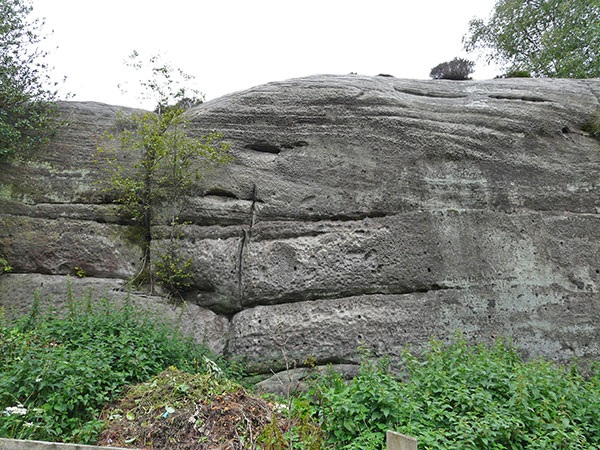
East Sussex Local Geological Sites - The Hermitage, High Hurstwood (img 846)
Massive sandstone face about 5m high showing thick channel units picked out by differential weathering and varying laterally in thickness. The upper unit shows large-scale cross-bedding. Note vertical joints at left confined to specific intervals.
Photo taken: 20/07/2011
Grid ref TQ49512503
Direction NNW
Image file: P1040143ed.jpg


East Sussex Local Geological Sites - The Hermitage, High Hurstwood (img 847)
Detached joint block to right of photo 3 showing rounded top with polygonal cracking grading into honeycomb weathering on the face. The upper unit shows large-scale cross-bedding.
Photo taken: 20/07/2011
Grid ref TQ49512504
Direction east
Image file: P1040144.jpg


East Sussex Local Geological Sites - The Hermitage, High Hurstwood (img 848)
Well rounded sandstone blocks about 5m high towards the eastern end of the outcrop showing polygonal cracking at top and honeycomb weathering on the faces. There are open joints (gulls) and a small cave.
Photo taken: 20/07/2011
Grid ref TQ49602507
Direction ENE
Image file: P1040151ed.jpg

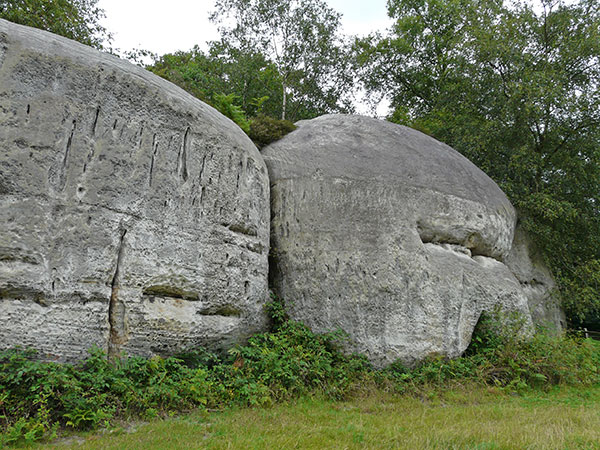
East Sussex Local Geological Sites - The Hermitage, High Hurstwood (img 849)
Massive sandstone blocks about 5m high towards eastern end of outcrop showing rounded tops with polygonal cracking and honeycomb weathering on the faces. Separated by vertical open joint. Block to left shows minor jointing and cross bedding is visible at base.
Photo taken: 20/07/2011
Grid ref TQ49642508
Direction NNE
Image file: P1040156ed.jpg

Lake Wood Rocks, Uckfield (TQ42/35)
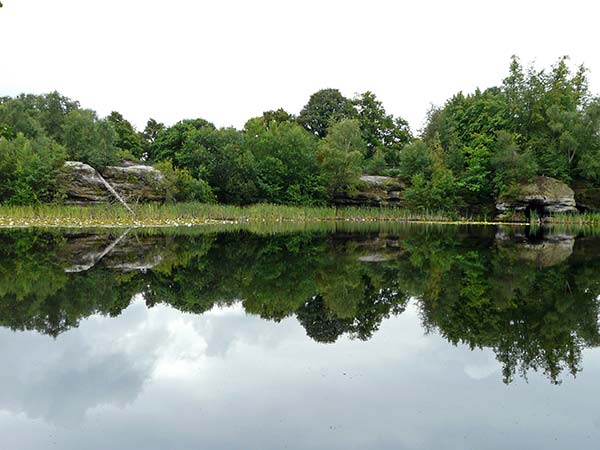
East Sussex Local Geological Sites - Lake Wood Rocks (img 851)
Three large sandstone outcrops about 4 to 5 m high along the southern edge of the lake. The block on the right has a modified cave at its base.
Photograph taken: 20/07/2011
Grid ref. TQ46262173
Direction south
Image file: P1040104ed.jpg

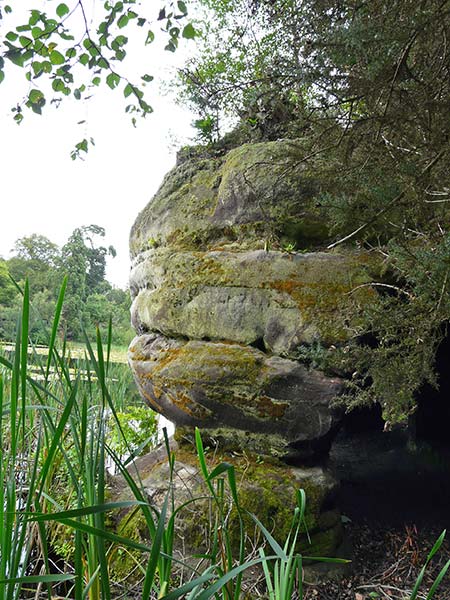
East Sussex Local Geological Sites - Lake Wood Rocks (img 852)
Sandstone block about 4 m high at southern edge of lake with cave at base. Shows differential weathering and overhang.
Photograph taken: 20/07/2011
Grid ref. TQ46242163
Direction ENE
Image file: P1040111ed.jpg

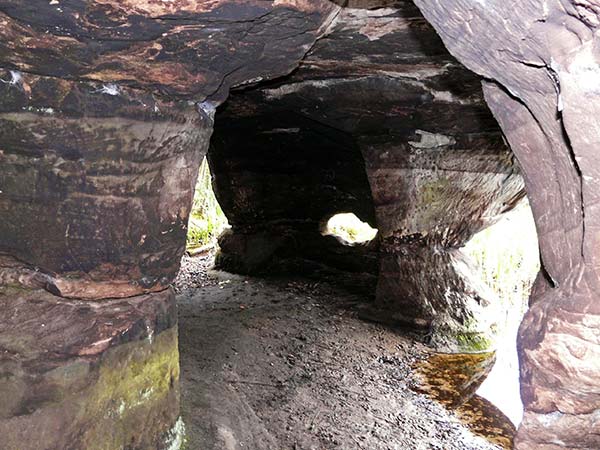
East Sussex Local Geological Sites - Lake Wood Rocks (img 853)
Cave at base of rock shown in photo 2. Probably natural but enlarged. Shows bedding detail in 3D including cross bedding.
Photograph taken: 20/07/2011
Grid ref. TQ46262164
Direction WSW
Image file: P1040113ed.jpg

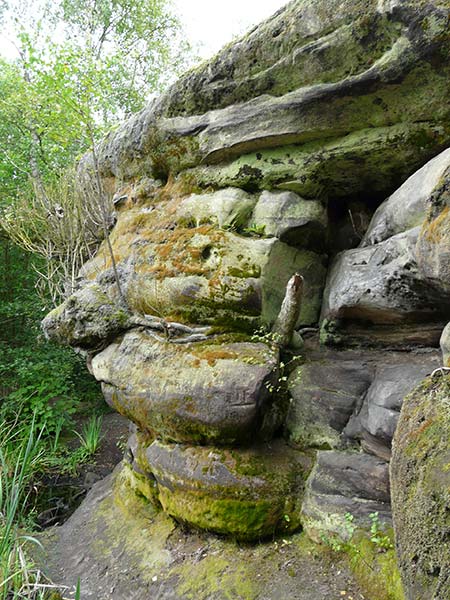
East Sussex Local Geological Sites - Lake Wood Rocks (img 854)
Sandstone block about 4 m high at southern edge of lake showing successive channel units picked out by differential weathering. Face has significant lichen and moss cover.
Photograph taken: 20/07/2011
Grid ref. TQ46272163
Direction east
Image file: P1040115.jpg

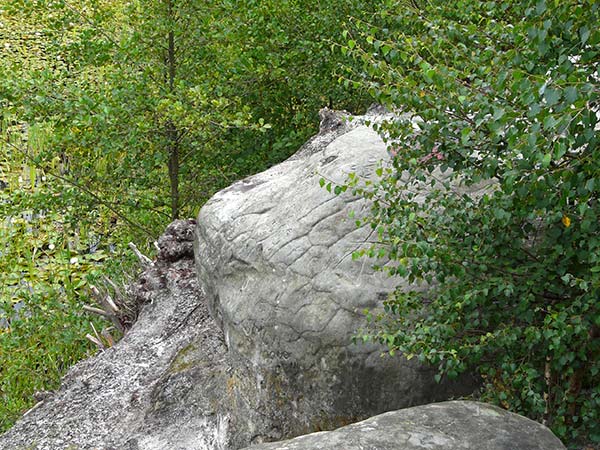
East Sussex Local Geological Sites - Lake Wood Rocks (img 855)
Rounded top of sandstone block by southern shore of lake showing polygonal cracking.
Photograph taken: 20/07/2011
Grid ref. TQ46302165
Direction east
Image file: P1040117ed.jpg

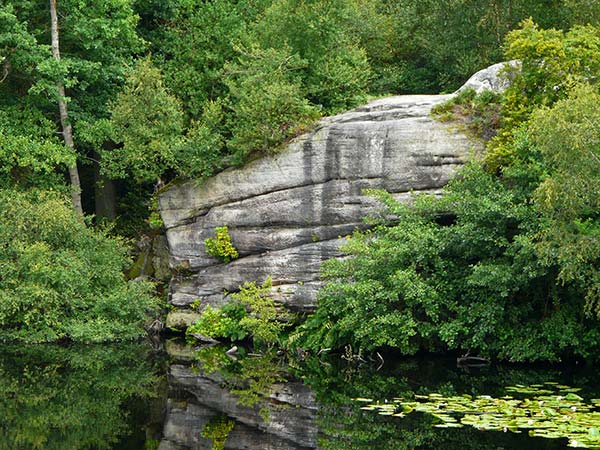
East Sussex Local Geological Sites - Lake Wood Rocks (img 856)
Western end of massive sandstone block about 8m high at northern edge of lake. Shows dipping planes which appear to cut across bedding and may be low angle joints or fractures. Photo taken with zoom lens.
Photograph taken: 20/07/2011
Grid ref. TQ46302165
Direction NNE
Image file: P1040118ed.jpg

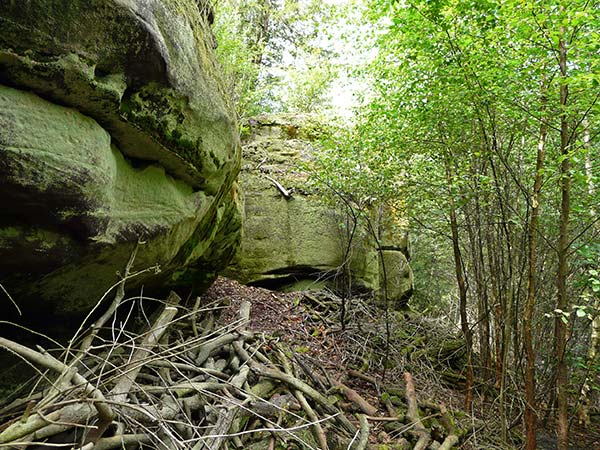
East Sussex Local Geological Sites - Lake Wood Rocks (img 857)
Massive sandstone blocks about 6 m high at southern edge of valley east of the lake. Faces are less accessible and have significant lichen and moss cover.
Photograph taken: 20/07/2011
Grid ref. TQ46362167
Direction WSW
Image file: P1040121ed.jpg

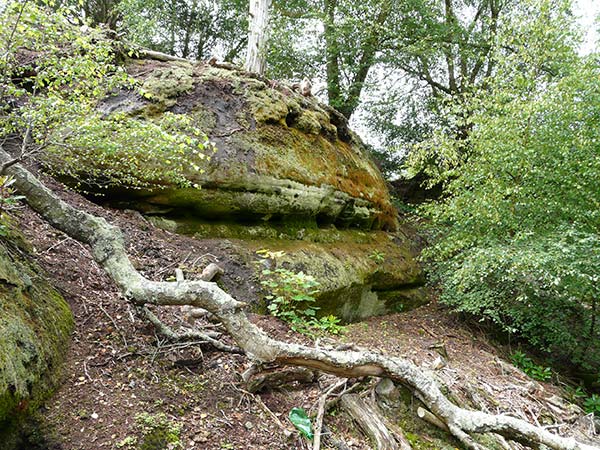
East Sussex Local Geological Sites - Lake Wood Rocks (img 858)
Rounded sandstone block about 5 m high at southern edge of valley showing differential weathering. Faces here are less accessible and have extensive moss and lichen cover.
Photograph taken: 20/07/2011
Grid ref. TQ46432169
Direction SW
Image file: P1040122.jpg

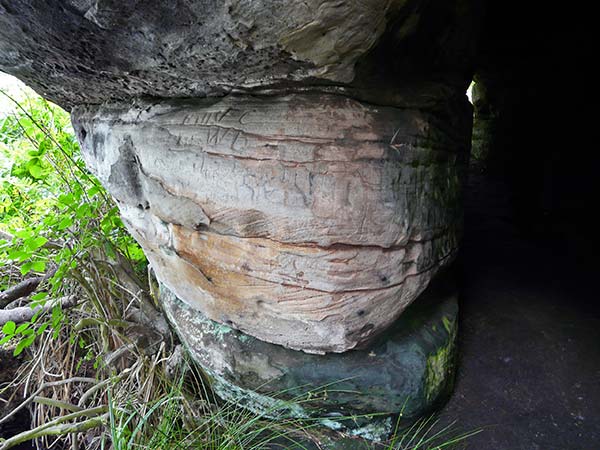
East Sussex Local Geological Sites - Lake Wood Rocks (img 859)
Entrance to tunnel beneath rock shown in photos 8 and 9. Small-scale cross-bedding well exposed where weathering crust has been worn away. Honeycomb weathering at top. Numerous graffiti evident in this area.
Photograph taken: 20/07/2011
Grid ref. TQ46322173
Direction WNW
Image file: P1040124ed.jpg

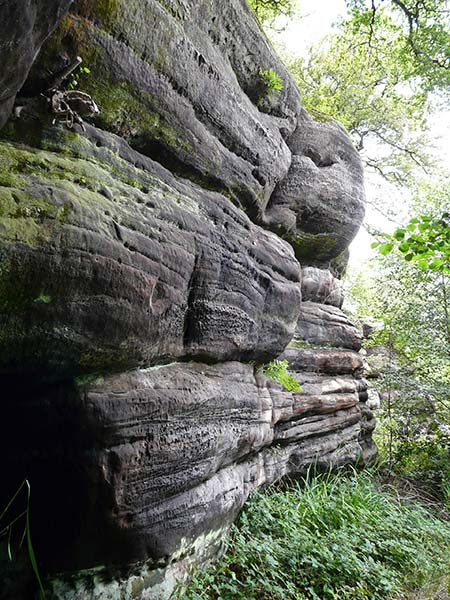
East Sussex Local Geological Sites - Lake Wood Rocks (img 860)
Eastern face of sandstone cliff shown in photo 8. Displays successive channel units picked out by differential weathering. This face does not show the apparent dip evident in photo 8. Internal cross-bedding well developed in the lower part. Also shows honeycomb weathering.
Photograph taken: 20/07/2011
Grid ref. TQ46322173
Direction east
Image file: P1040125ed.jpg

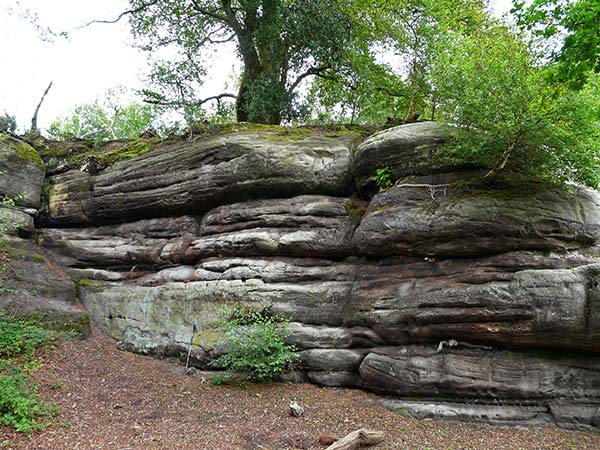
East Sussex Local Geological Sites - Lake Wood Rocks (img 861)
Sandstone cliff about 5 m high on north side of lake. Displays successive channel units with internal cross-bedding well developed in the lower part. Also shows honeycomb weathering.
1 m pole for scale.
Photograph taken: 20/07/2011
Grid ref. TQ46342172
Direction north
Image file: P1040127ed.jpg

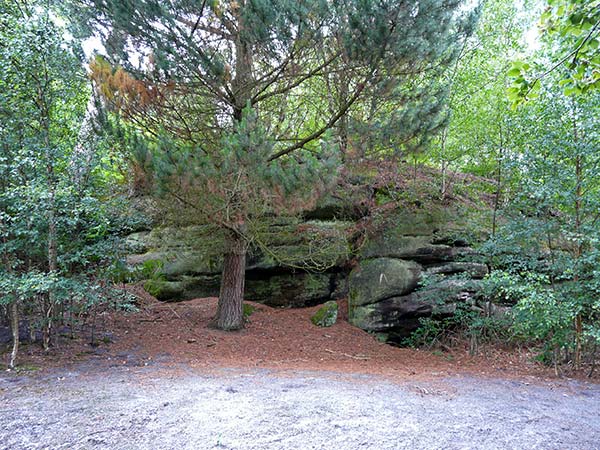
East Sussex Local Geological Sites - Lake Wood Rocks (img 862)
Sandstone outcrop near eastern end of lake. Succession of thick units picked out by differential weathering. Internal dip or incision visible at lower right. In this area and further east the rocks have extensive moss and lichen cover and vegetation is encroaching.
Grid ref. TQ46392172
Direction NNW
Image file: P1040130ed.jpg

Founthill, Newick (TQ42/40)

East Sussex Local Geological Sites - Founthill Cutting (img 864)
East side of road. Massive sandstone at top grading down into flaggy sandstone with a channel base and finer sandstones with silty interbeds.
1 m pole for scale.
Photograph taken: 18/07/2011
Grid ref. TQ41922010
Direction SE
Image file: P1040031ed.jpg

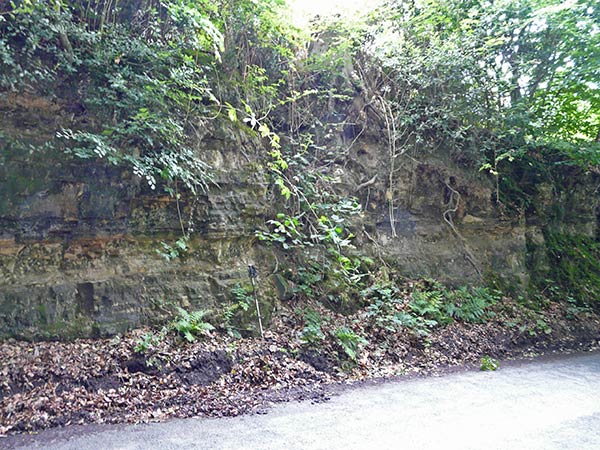
East Sussex Local Geological Sites - Founthill Cutting (img 865)
Sandstone exposure on west side of road showing dip to left (south). Shows interbedding of massive sandstone, flaggy sandstone and silty beds. Weathering has picked out bedding planes.
1 m pole for scale.
Photograph taken: 18/07/2011
Grid ref. TQ41922009
Direction NW
Image file: P1040034ed.jpg

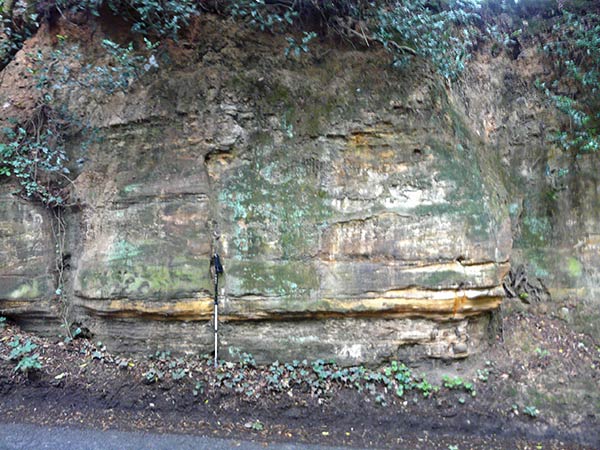
East Sussex Local Geological Sites - Founthill Cutting (img 866)
Close-up of outcrop on west side of road (photo 6) showing massive sandstone with cross bedding and an eroded channel base overlying festoon cross-bedded silty sandstone.
1 m pole for scale.
Photograph taken: 18/07/2011
Grid ref. TQ41892004
Direction NW
Image file: P1040042ed.jpg


East Sussex Local Geological Sites - Founthill Cutting (img 867)
Detail of base of outcrop shown in photo 7. Massive sandstone with cross bedding and an eroded channel base overlies festoon cross bedding in silty sandstone.
Photograph taken: 18/07/2011
Grid ref. TQ41892004
Image file: P1040043ed.jpg

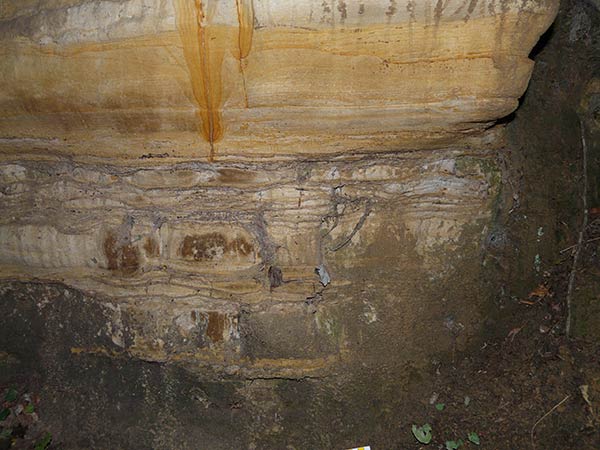
East Sussex Local Geological Sites - Founthill Cutting (img 868)
Detail of base of outcrop shown in photo 8. Massive sandstone showing fine bedding detail and erosive base overlying festoon bedded silty sandstones. Liesegang bands associated with fractures in upper unit. Photo taken with flash in low light.
Photograph taken: 18/07/2011
Grid ref. TQ41892004
Image file: P1040048.jpg

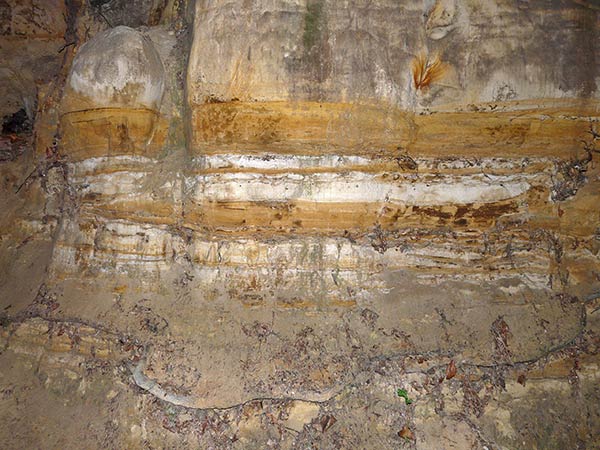
East Sussex Local Geological Sites - Founthill Cutting (img 869)
Detail of base of section shown at left of photo 11. Massive sandstone with cross bedding overlies softer silty sandstone with fine bedding detail visible including festoon cross bedding. Photo taken with flash in low light.
Photograph taken: 18/07/2011
Grid ref. TQ41882006
Image file: P1040049ed.jpg

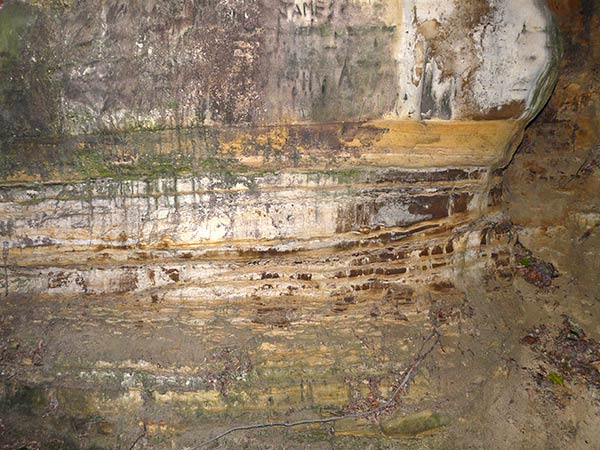
East Sussex Local Geological Sites - Founthill Cutting (img 870)
Detail of base of section shown at left side of photo 10. Massive sandstone with cross bedding overlies softer silty sandstone with fine bedding detail visible including festoon cross bedding. Photo taken with flash in low light.
Photograph taken: 18/07/2011
Grid ref. TQ41882006
Image file: P1040050ed.jpg

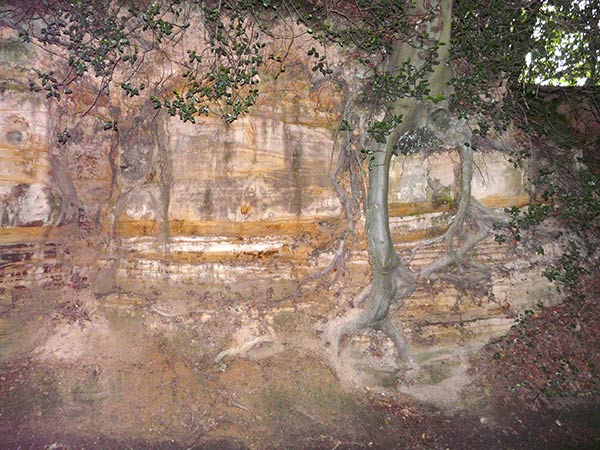
East Sussex Local Geological Sites - Founthill Cutting (img 871)
Right (north) end of sandstone section shown in photo 10. Shows relatively fresh faces revealing fine detail of the bedding features (cross bedding, channelling and festoon cross bedding). Flash photo in low light.
Photograph taken: 20/07/2011
Grid ref. TQ41882006
Direction NNW
Image file: P1040056ed.jpg


East Sussex Local Geological Sites - Founthill Cutting (img 872)
Sandstone exposure on west side of road showing relativelyfresh faces revealing fine detail of the bedding features (cross bedding, channelling and festoon cross bedding). Flash photo in low light.
1 m pole for scale.
Photograph taken: 20/07/2011
Grid ref. TQ41882006
Direction NW
Image file: P1040060ed.jpg

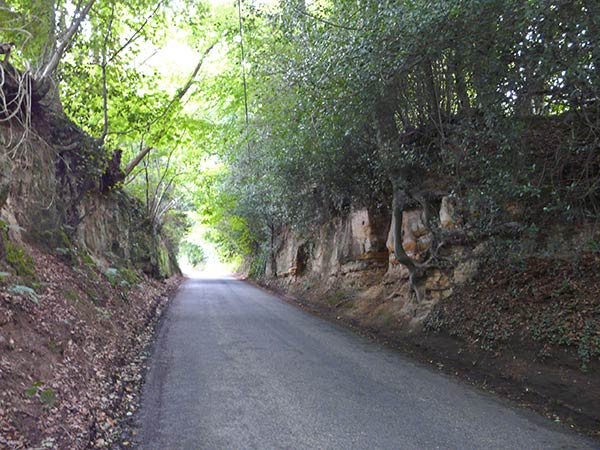
East Sussex Local Geological Sites - Founthill Cutting (img 873)
Sandstone exposures on west side of road showing dip to south. In places there are relatively clean faces revealing fine detail of the bedding.
Photograph taken: 20/07/2011
Grid ref. TQ41912006
Direction SW
Image file: P1040064ed.jpg


East Sussex Local Geological Sites - Founthill Cutting (img 874)
Sandstone exposures with more vegetation cover on east side of road showing dip to south.
Photograph taken: 20/07/2011
Grid ref. TQ41902006
Direction SSW
Image file: P1040066ed.jpg

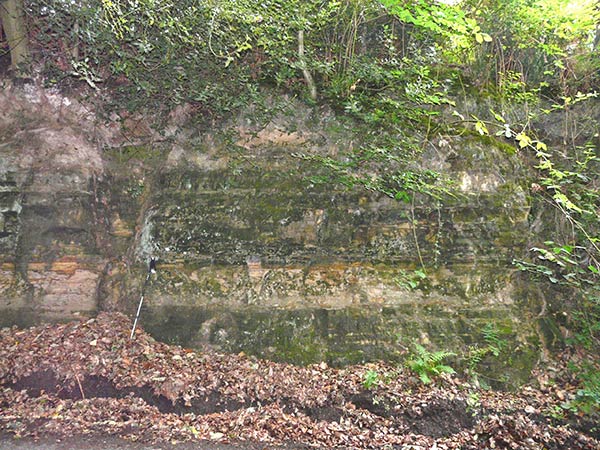
East Sussex Local Geological Sites - Founthill Cutting (img 875)
Close-up of outcrop shown in photo 4 showing interbedding of massive sandstone, flaggy sandstone and silty beds.
1 m pole for scale.
Photograph taken: 20/07/2011
Grid ref. TQ41922009
Direction NW
Image file: P1040069ed.jpg

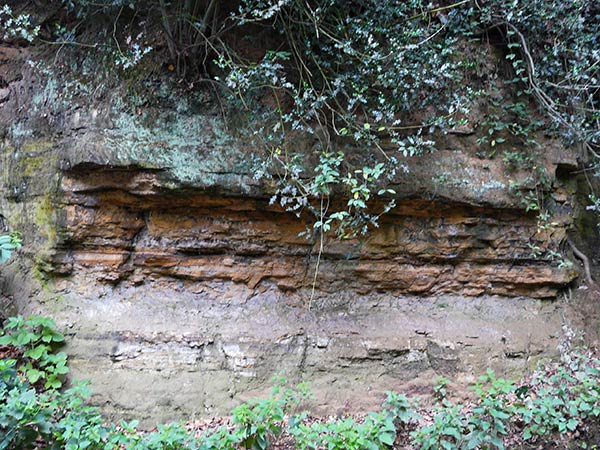
East Sussex Local Geological Sites - Founthill Cutting (img 876)
Close-up of outcrop shown in photo 1. Massive sandstone at top grading down into flaggy sandstone with a channel base and finer sandstones with silty interbeds.
Photograph taken: 20/07/2011
Grid ref. TQ41922010
Image file: P1040070ed.jpg


East Sussex Local Geological Sites - Founthill Cutting (img 877)
Closer view of exposure in photo 14 on east side of road showing well-jointed flaggy sandstone.
1 m pole for scale.
Photograph taken: 20/07/2011
Grid ref. TQ41721981
Direction ESE
Image file: P1040072ed.jpg

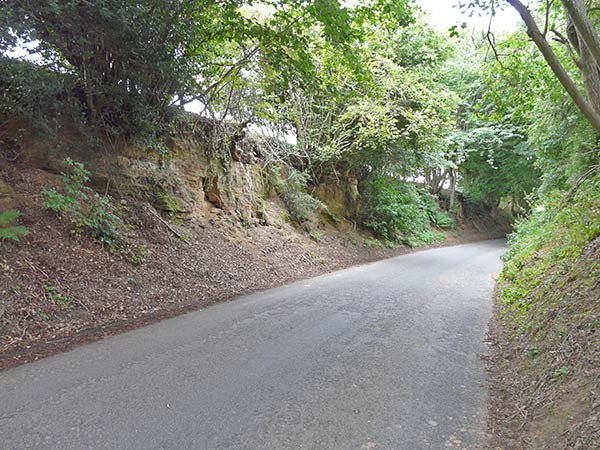
East Sussex Local Geological Sites - Founthill Cutting (img 878)
Sandstone exposures on east side of road south of Old School Farm House. These are less shaded than the exposures in Founthill cutting.
Photograph taken: 20/07/2011
Grid ref. TQ41721981
Direction SSE
Image file: P1040074ed.jpg


East Sussex Local Geological Sites - Founthill Cutting (img 879)
Exposure on east side of road south of Old School Farm House showing massive well-jointed sandstone, more flaggy towards the base. Face is about 3 m high.
Photograph taken: 20/07/2011
Grid ref. TQ41721977
Direction ESE
Image file: P1040076ed.jpg

The Rocks, Ashurst Wood (TQ43/43)

West Sussex Local Geological Sites - The Rocks Ashurst Wood (img 881)
Western end of Ardingly Sandstone exposures at side of footpath along southernedge of Cherry Garden Farm.
About 4 m high.
Photograph taken: 21/04/2010
Grid ref. TQ41443701
Direction NE
Image file: P1010125ed.jpg

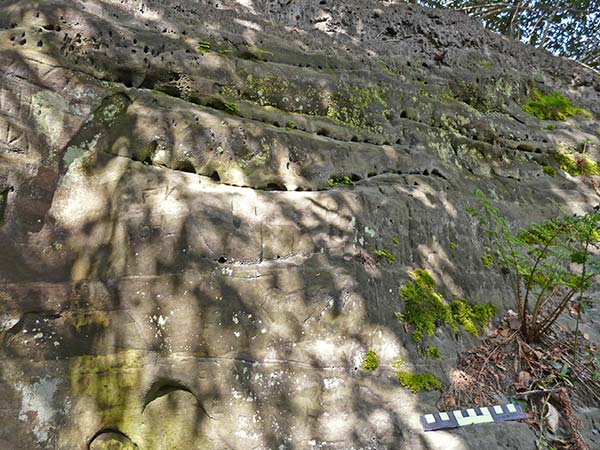
West Sussex Local Geological Sites - The Rocks Ashurst Wood (img 882)
Close-up of exposure of massive Ardingly Sandstone at side of footpath along southern edge of Cherry Garden Farm. Shows thick bedded units with channelling and cross bedding.
Photograph taken: 21/04/2010
Grid ref. TQ41473702
Direction NW
Image file: P1010129ed.jpg

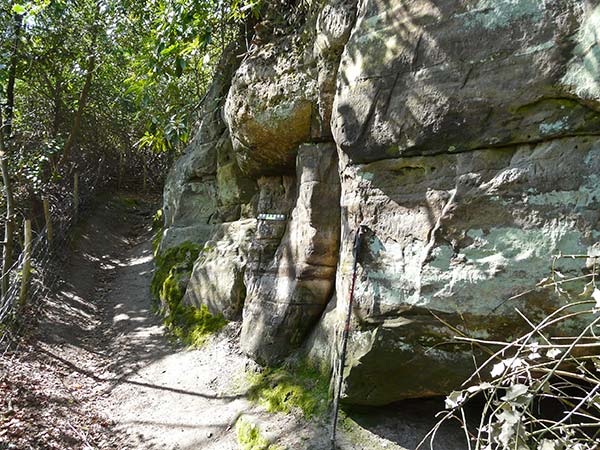
West Sussex Local Geological Sites - The Rocks Ashurst Wood (img 883)
Exposure of massive Ardingly Sandstone at the side of the footpath along the southern edge of Cherry Garden Farm. Shows bedding detail within thick bedded units and vertical joints.
1 m pole for scale.
Photograph taken: 21/04/2010
Grid ref. TQ41473702
Direction WSW
Image file: P1010131ed.jpg

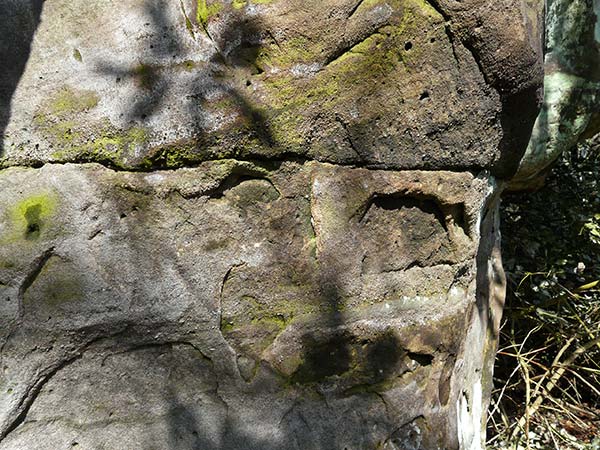
West Sussex Local Geological Sites - The Rocks Ashurst Wood (img 884)
Detail of exposure shown in photo 5 showing cross bedding and layers of coarser pebbly material within the dominantly fine to medium grained sandstone.
Photograph taken: 21/04/2010
Grid ref. TQ41473702
Image file: P1010132ed.jpg

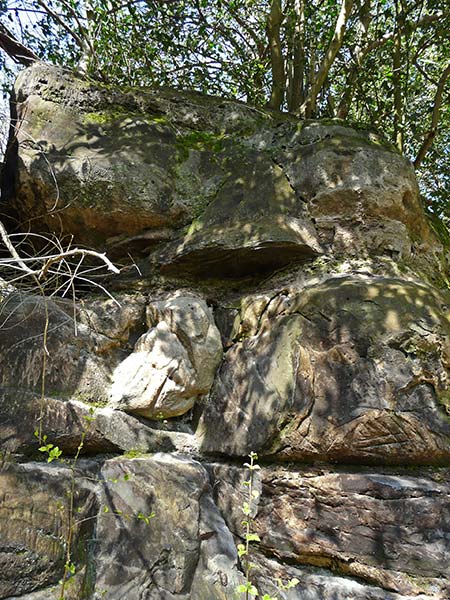
West Sussex Local Geological Sites - The Rocks Ashurst Wood (img 885)
Exposure of massive Ardingly Sandstone at the side of the public footpath along the southern edge of Cherry Garden Farm. Shows thick bedding units separated by thin layers more susceptible to weathering.
About 4 m high.
Photograph taken: 21/04/2010
Grid ref. TQ41483703
Direction NW
Image file: P1010135ed.jpg

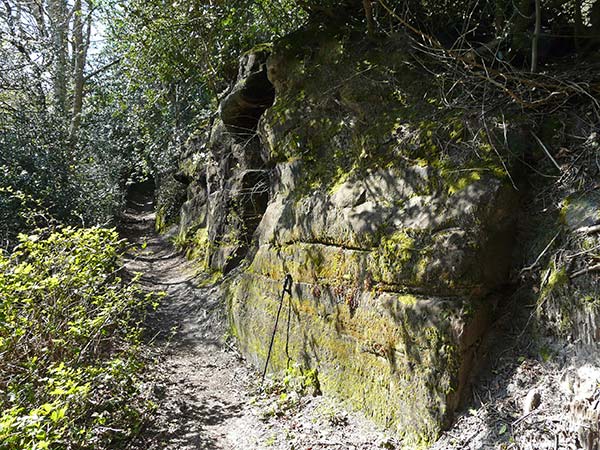
West Sussex Local Geological Sites - The Rocks Ashurst Wood (img 886)
Exposures of massive Ardingly Sandstone at the side of the public footpath at the southern edge of Cherry Garden Farm.
1 m pole for scale.
Photograph taken: 21/04/2010
Grid ref. TQ41493703
Direction WSW
Image file: P1010137ed.jpg

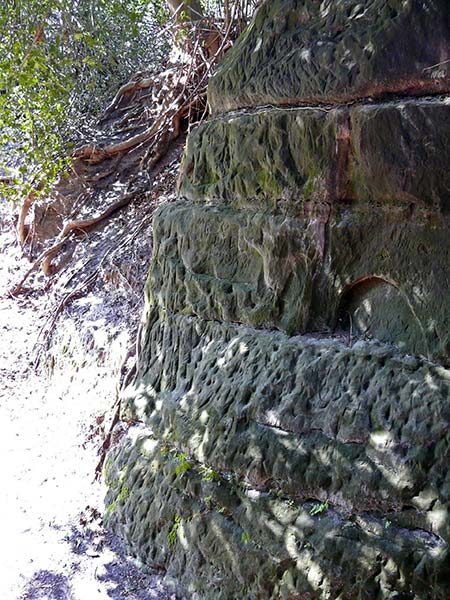
West Sussex Local Geological Sites - The Rocks Ashurst Wood (img 887)
Detail of sandstone face in vicinity of photo 1 showing major bedding units separated by thin layers more susceptible to weathering. Surface show unusual weathering features, partly like honeycomb weathering.
Photograph taken: 21/04/2010
Grid ref. TQ41493703
Image file: P1010139ed.jpg

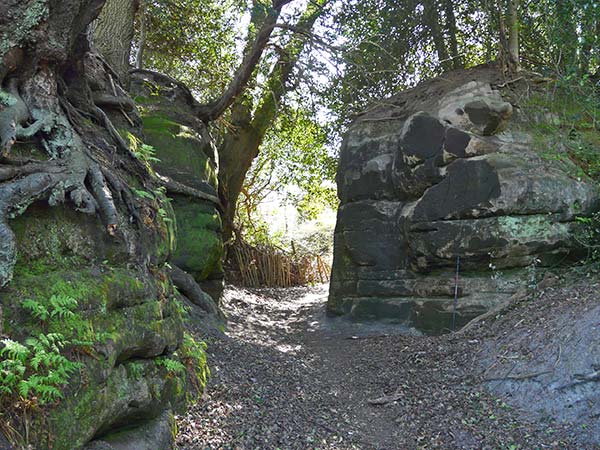
West Sussex Local Geological Sites - The Rocks Ashurst Wood (img 888)
Exposures of massive Ardingly Sandstone. adjacent to public footpath at southern edge of Cherry Garden Farm.
1 m pole for scale.
Photograph taken: 21/04/2010
Grid ref. TQ41493703
Direction SW
Image file: P1010140ed.jpg

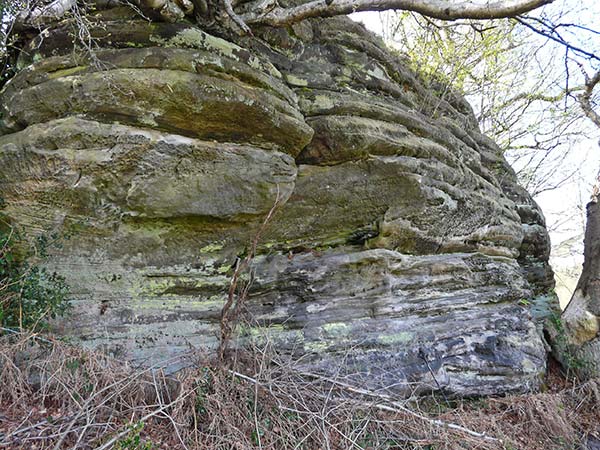
West Sussex Local Geological Sites - The Rocks Ashurst Wood (img 889)
Relatively vegetation-free face exposing massive Ardingly Sandstone at north east corner of exposures showing honeycomb weathering and bedding picked out by differential weathering. Small scale bedding detail is visible.
1 m pole for scale.
Photograph taken: 21/04/2010
Grid ref. TQ41463721
Direction west
Image file: P1010141ed.jpg

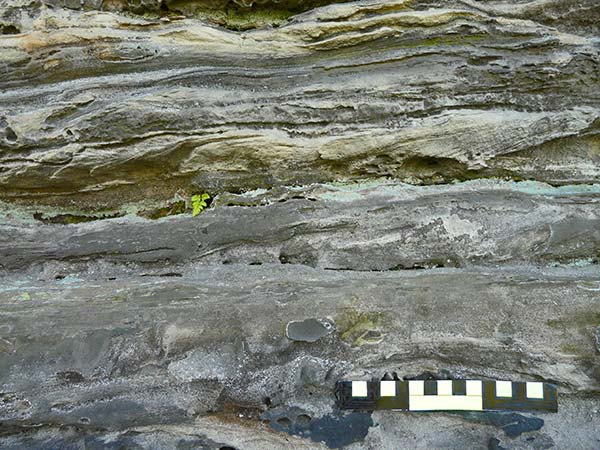
West Sussex Local Geological Sites - The Rocks Ashurst Wood (img 890)
Detail of sandstone face shown in photo 9 showing small-scale bedding detail including grain size variation, fine laminations, cross bedding and ripples.
30 cm scale.
Photograph taken: 21/04/2010
Grid ref. TQ41463721
Image file: P1010142ed.jpg


West Sussex Local Geological Sites - The Rocks Ashurst Wood (img 891)
Detail of sandstone face shown in photo 9 showing small-scale bedding detail and well-developed honeycomb weathering.
Photograph taken: 21/04/2010
Grid ref. TQ41463721
Image file: P1010143ed.jpg

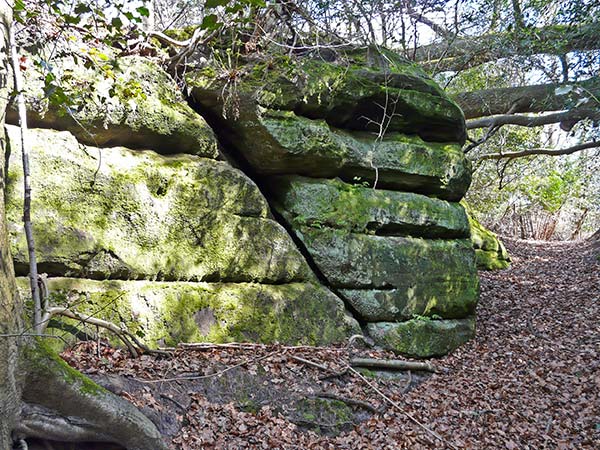
West Sussex Local Geological Sites - The Rocks Ashurst Wood (img 892)
Ardingly Sandstone block adjacent to public footpath at northern end of exposures. About 4 m high showing major bedding units and an oblique open joint.
Photograph taken: 21/04/2010
Grid ref. TQ41393721
Direction SSE
Image file: P1010145ed.jpg

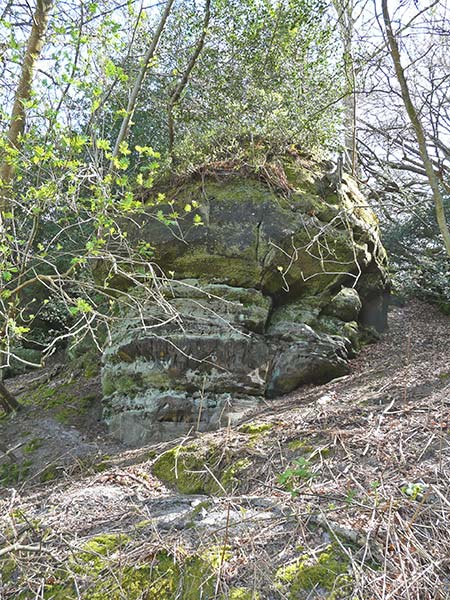
West Sussex Local Geological Sites - The Rocks Ashurst Wood (img 893)
One of the moss and lichen covered Ardingly Sandstone blocks at northern edge of the esposures.
About 6 m high.
Photograph taken: 21/04/2010
Grid ref. TQ41423722
Direction south
Image file: P1010147ed.jpg

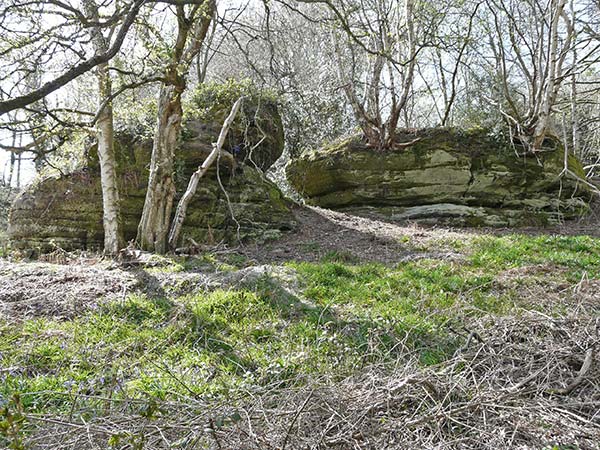
West Sussex Local Geological Sites - The Rocks Ashurst Wood (img 894)
Ardingly Sandstone blocks on west side of the public footpath opposite the block shown in photo15. Shows separation of the blocks due to cambering.
Photograph taken: 21/04/2010
Grid ref. TQ41433715
Direction WSW
Image file: P1010148ed.jpg

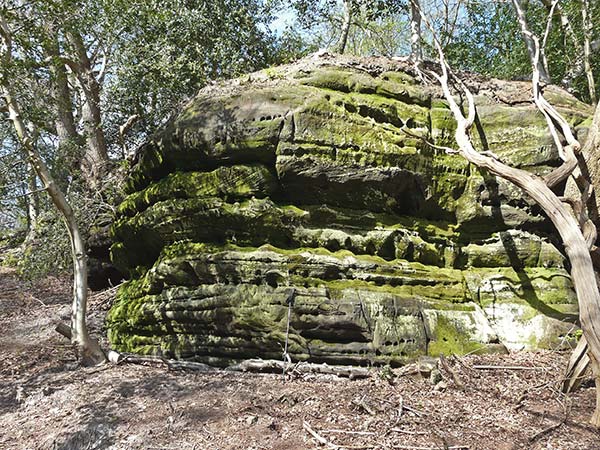
West Sussex Local Geological Sites - The Rocks Ashurst Wood (img 895)
Southernmost Ardingly Sandstone block on east side of public footpath, northern outcrop. Extensive moss cover but bedding and weathering features visible.
1 m pole for scale.
Photograph taken: 21/04/2010
Grid ref. TQ41433715
Direction NE
Image file: P1010149ed.jpg

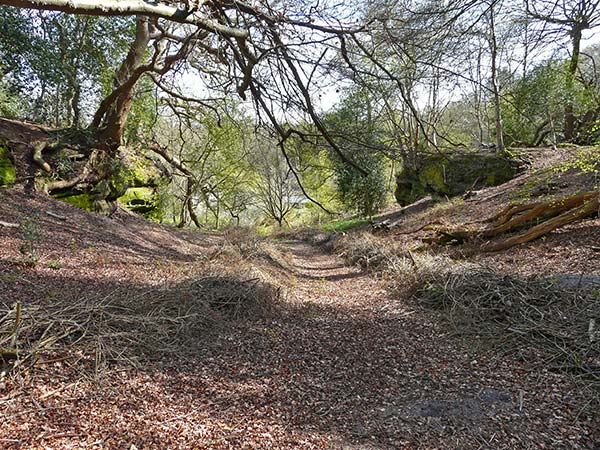
West Sussex Local Geological Sites - The Rocks Ashurst Wood (img 896)
Public footpath between the eastern and western parts of the northern outcrop.
Photograph taken: 21/04/2010
Grid ref. TQ41403719
Direction south
Image file: P1010150ed.jpg

Waldron Cutting, Tullaghmore (TQ51/01)
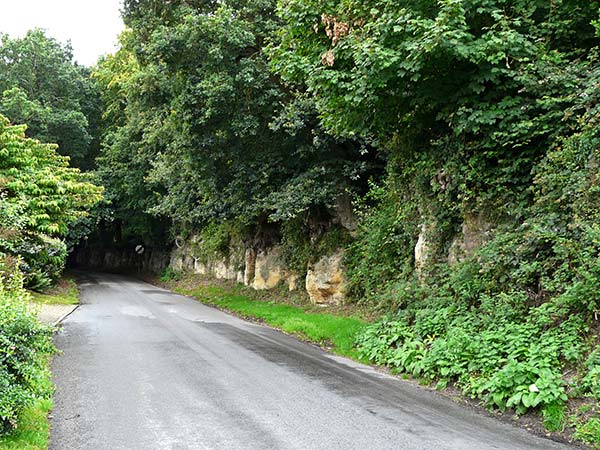
East Sussex Local Geological Sites - Waldron Cutting, Waldron (img 898)
West side of the cutting at the south end of Waldron village showing clean exposures of Ashdown Formation sandstones and siltstones. 3 to 4 m high with extensive vegetation cover above.
Photograph taken: 20/07/2011
Grid ref. TQ54931922
Direction south
Image file: P1040175croped.jpg

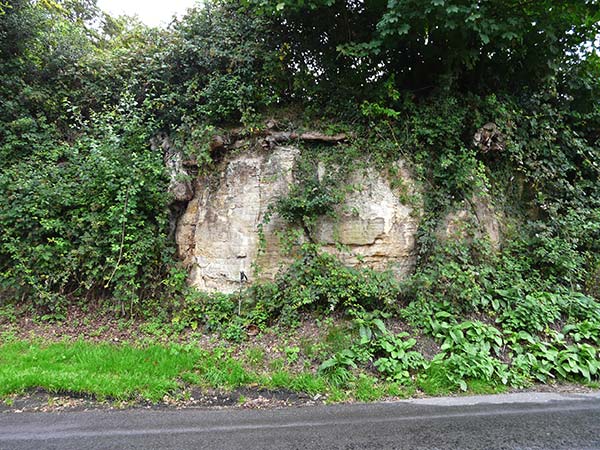
East Sussex Local Geological Sites - Waldron Cutting, Waldron (img 899)
West side of Waldron cutting at the village end showing clean exposure of finely bedded Ashdown Formation sandstones and siltstones.
1 m pole for scale.
Photograph taken: 20/07/2011
Grid ref. TQ54941921
Direction west
Image file: P1040176ed.jpg


East Sussex Local Geological Sites - Waldron Cutting, Waldron (img 900)
Close-up of left side of sandstone exposure shown in photo 2 showing fine bedding lamination with planar and lenticular units. The lower section may be more silty and has more irregular bedding.
Photograph taken: 20/07/2011
Grid ref. TQ54941921
Image file: P1040177ed.jpg

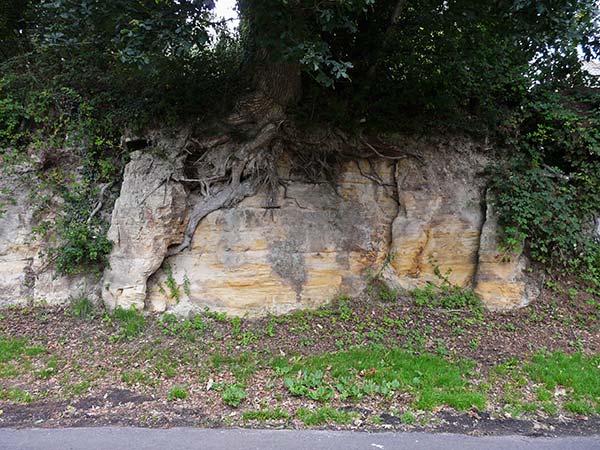
East Sussex Local Geological Sites - Waldron Cutting, Waldron (img 901)
West side of Waldron cutting at the village end showing exposure of Ashdown Formation sandstones and siltstones. Fresh faces where weathered surface has been removed show fine bedding lamination. 3 m high.
Photograph taken: 20/07/2011
Grid ref. TQ54941920
Direction west
Image file: P1040180ed.jpg

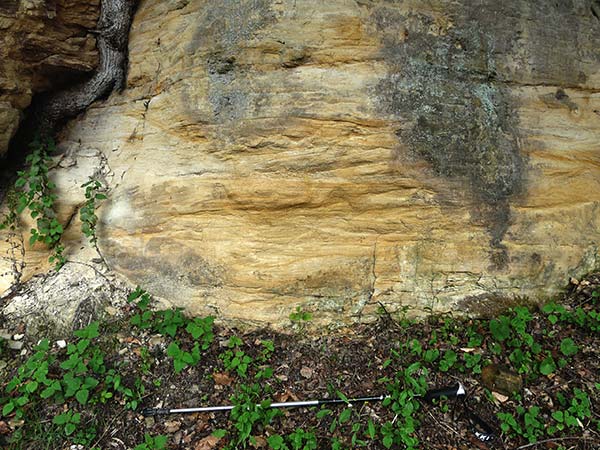
East Sussex Local Geological Sites - Waldron Cutting, Waldron (img 902)
Close-up of base of exposure shown in photo 4 showing fresh surface with fine laminations defining cross bedding and wavy lenticular bedding.
1 m pole for scale. 20./07/2011
Grid ref. TQ54941920
Image file: P1040181ed.jpg

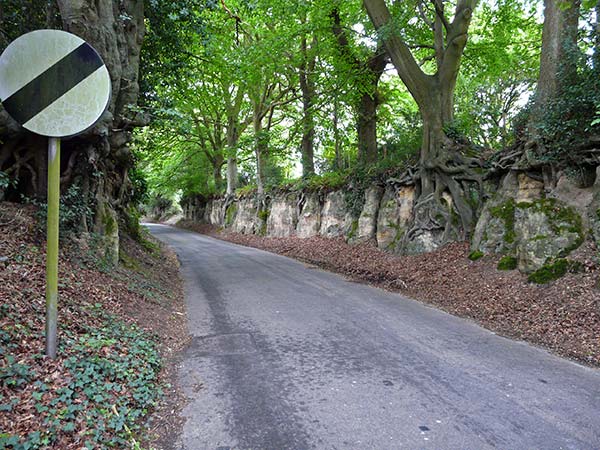
East Sussex Local Geological Sites - Waldron Cutting, Waldron (img 903)
West side of Waldron cutting south of village showing clean exposures of Ashdown Formation sandstones and siltstones. 3 to 4 m high.
Photograph taken: 20/07/2011
Grid ref. TQ54941917
Direction south
Image file: P1040185ed.jpg

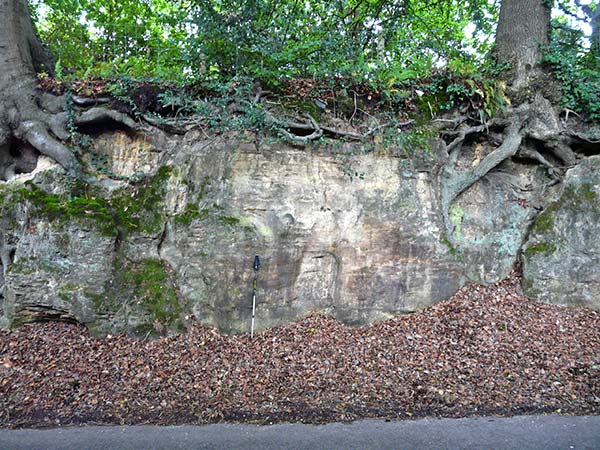
East Sussex Local Geological Sites - Waldron Cutting, Waldron (img 904)
West side of Waldron cutting south of village showing clean exposure of finely bedded Ashdown Formation sandstones and siltstones with cross bedding.
1 m pole for scale.
Photograph taken: 20/07/2011
Grid ref. TQ54931915
Direction west
Image file: P1040187ed.jpg

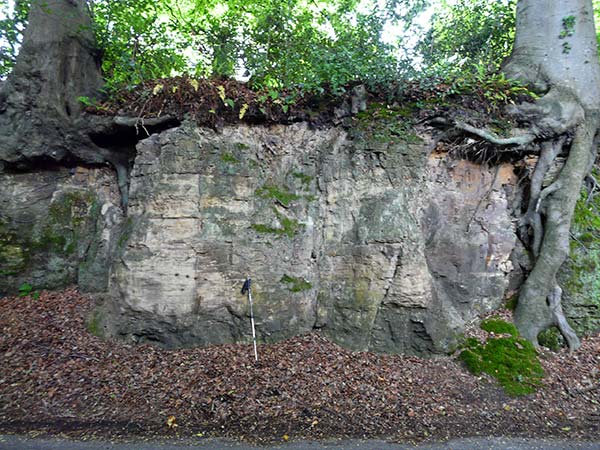
East Sussex Local Geological Sites - Waldron Cutting, Waldron (img 905)
West side of Waldron cutting south of village showing clean exposure of finely bedded Ashdown Formation sandstones and siltstones.
1 m pole for scale.
Photograph taken: 20/07/2011
Grid ref. TQ54941913
Direction west
Image file: P1040188ed.jpg

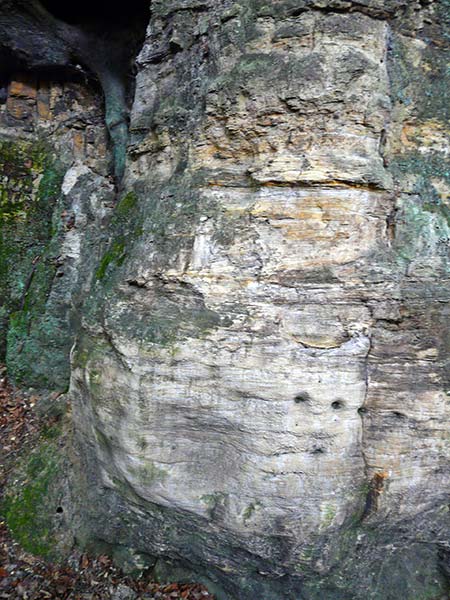
East Sussex Local Geological Sites - Waldron Cutting, Waldron (img 906)
Close-up of left side of exposure shown in photo 8. The sandstones and siltstones are finely bedded with planar laminations, cross bedding and wavy bedding. About 3 m high.
Photograph taken: 20/07/2011
Grid ref. TQ54941913
Image file: P1040190ed.jpg


East Sussex Local Geological Sites - Waldron Cutting, Waldron (img 907)
East side of Waldron cutting south of the village. Exposures of Ashdown Formation sandstones and siltstones are more vegetated than the west side.
Photograph taken: 20/07/2011
Grid ref. TQ54951910
Direction south
Image file: P1040193ed.jpg

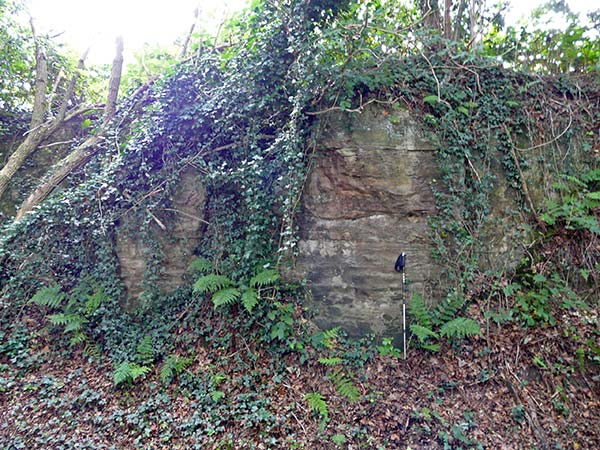
East Sussex Local Geological Sites - Waldron Cutting, Waldron (img 908)
Exposure of Ashdown Formation sandstones and siltstones on east side of cutting south of Waldron village. Shows fine bedding lamination.
1 m pole for scale.
Photograph taken: 20/07/2011
Grid ref. TQ54951909
Direction east
Image file: P1040195ed.jpg

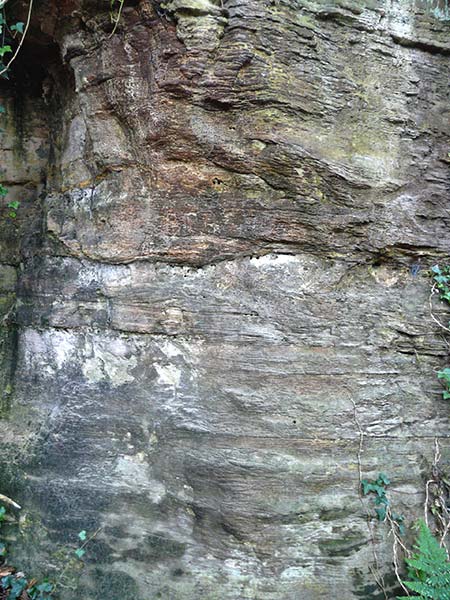
East Sussex Local Geological Sites - Waldron Cutting, Waldron (img 909)
Close-up of exposure on east side of Waldron cutting near the south end. Shows brownish flaggy sandstone unit with incised channel base and cross bedding. The underlying paler more silty unit has fine laminations, some lenticular and wispy. 2.5 m high.
Photograph taken: 20/07/2011
Grid ref. TQ54951909
Direction east
Image file: P1040197ed.jpg

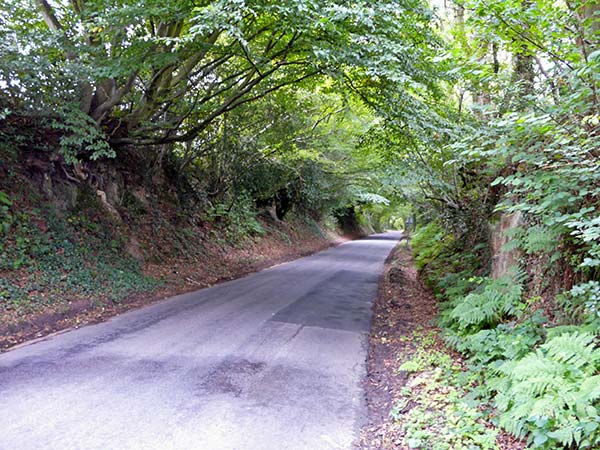
East Sussex Local Geological Sites - Waldron Cutting, Tullaghmore (img 910)
East side of Tullaghmore cutting viewed from north, showing extensive vegetation cover and talus obscuring the exposures of Ashdown Formation sandstones and siltstones. 20/07/2011
Grid ref. TQ55101877
Direction SE
Image file: P1040200ed.jpg

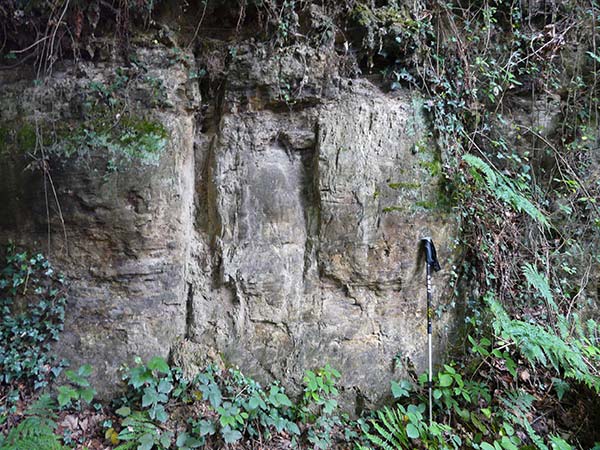
East Sussex Local Geological Sites - Waldron Cutting, Tullaghmore (img 911)
Close-up of exposure shown in photo 2. The vertical notches in the sandstone may be related to joints but might be locations where upright stems of fossil Lycopodites plants have been removed.
1 m pole for scale. 20/072011
Grid ref. TQ55111877
Direction SW
Image file: P1040203ed.jpg


East Sussex Local Geological Sites - Waldron Cutting, Tullaghmore (img 912)
Exposure of Ashdown Formation sandstones and siltstones on west side of Tullaghmore cutting. Cut about 5 m high (3 m face exposed) with extensive vegetation cover on either side.
Photograph taken: 15/09/2011
Grid ref. TQ55101876
Direction SW
Image file: P1050253ed.jpg

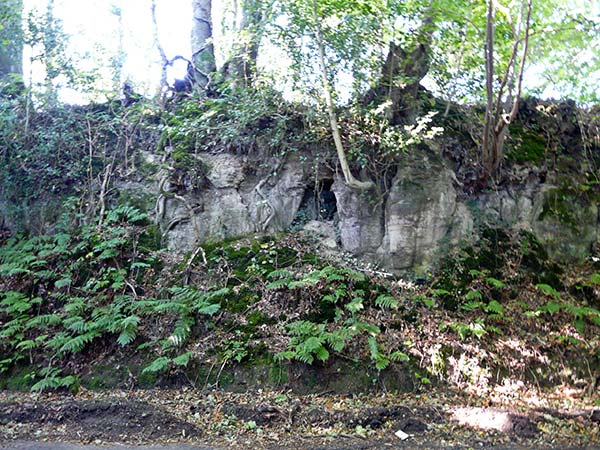
East Sussex Local Geological Sites - Waldron Cutting, Tullaghmore (img 913)
Exposure of Ashdown Formation sandstones and siltstones on west side of Tullaghmore cutting with talus obscuring the lower section. Cut about 6 m high (2.5 m face exposed).
Photograph taken: 15/09/2011
Grid ref. TQ55111875
Direction SW
Image file: P1050256ed.jpg


East Sussex Local Geological Sites - Waldron Cutting, Tullaghmore (img 914)
Close-up of right side of exposure in photo 4 showing Ashdown Formation sandstone and siltstone with fine bedding detail visible including cross bedding and wavy lenticular bedding.
1 m pole for scale.
Photograph taken: 15/09/2011
Grid ref. TQ55111875
Image file: P1050258ed.jpg

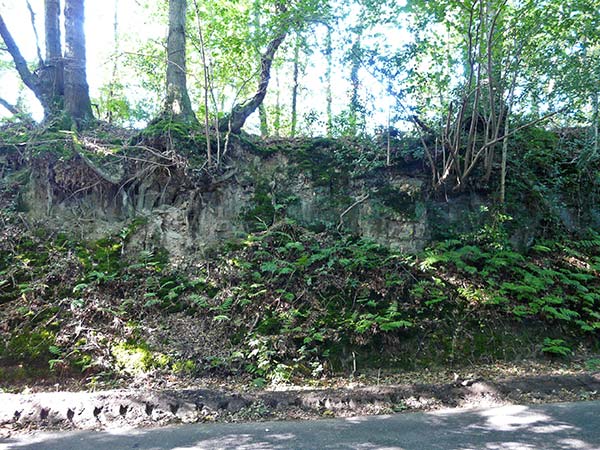
East Sussex Local Geological Sites - Waldron Cutting, Tullaghmore (img 915)
Exposure of Ashdown Formation sandstones and siltstones sandstone on west side of Tullaghmore cutting. Extensive vegetation and talus fans obscure the section. About 6 m high (2 to 3 m face exposed).
Photograph taken: 15/09/2011
Grid ref. TQ55131875
Direction SW
Image file: P1050259ed.jpg

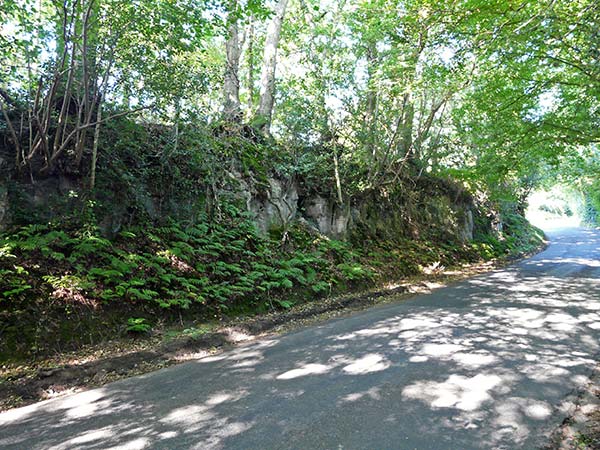
East Sussex Local Geological Sites - Waldron Cutting, Tullaghmore (img 916)
West side of Tullaghmore cutting at northern end, showing exposures of Ashdown Formation sandstones and siltstones. Extensive vegetation cover and talus obscure the exposures.
Photograph taken: 15/09/2011
Grid ref. TQ55141874
Direction WNW
Image file: P1050263ed.jpg

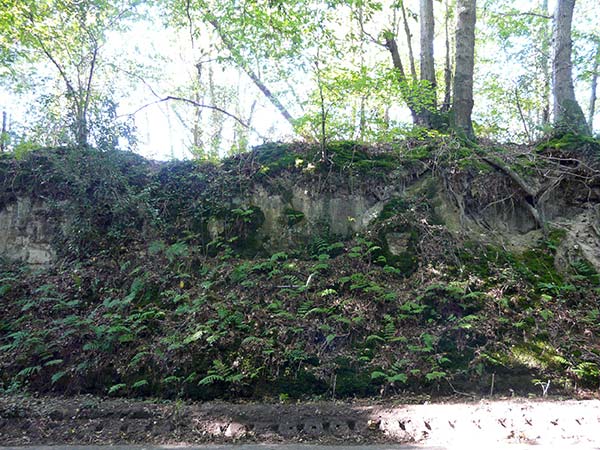
East Sussex Local Geological Sites - Waldron Cutting, Tullaghmore (img 917)
Exposure of Ashdown Formation sandstones and siltstones sandstone on west side of Tullaghmore cutting to the left of photo 7. Extensive vegetation and talus fans obscure the section. About 6 m high (2 to 3 m face exposed).
Photograph taken: 15/09/2011
Grid ref. TQ55131874
Direction SW
Image file: P1050264ed.jpg

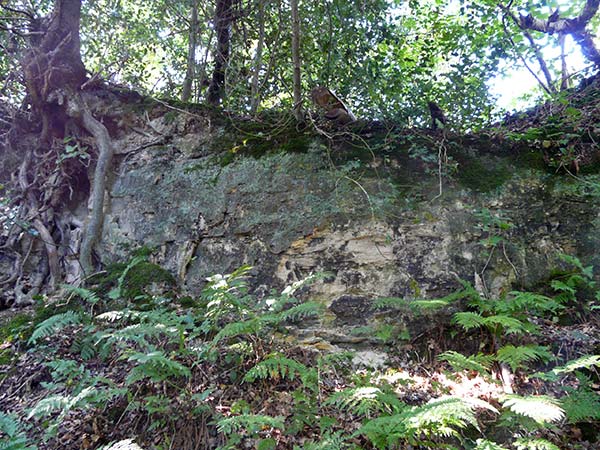
East Sussex Local Geological Sites - Waldron Cutting, Tullaghmore (img 918)
Exposure of Ashdown Formation sandstones and siltstones on west side of Tullaghmore cutting with moss and lichen cover and some fresh surfaces to right. 2-3 m face exposed.
Photograph taken: 15/09/2011
Grid ref. TQ55131874
Direction SSW
Image file: P1050271ed.jpg

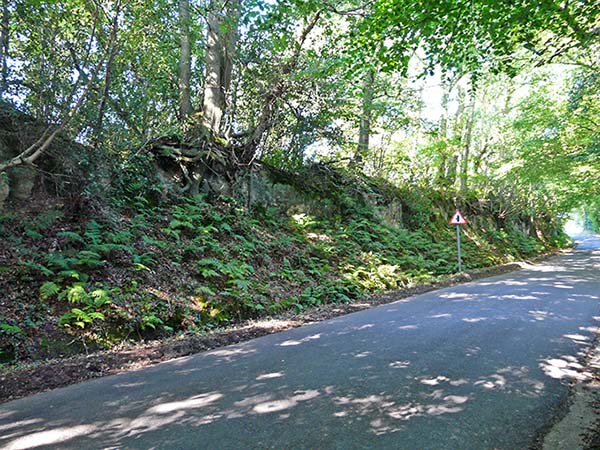
East Sussex Local Geological Sites - Waldron Cutting, Tullaghmore (img 919)
West side of Tullaghmore cutting towards southern end exposing Ashdown Formation sandstones and siltstones. Extensive vegetation cover and talus obscures the exposures.
Photograph taken: 15/09/2011
Grid ref. TQ55141874
Direction WNW
Image file: P1050274ed.jpg

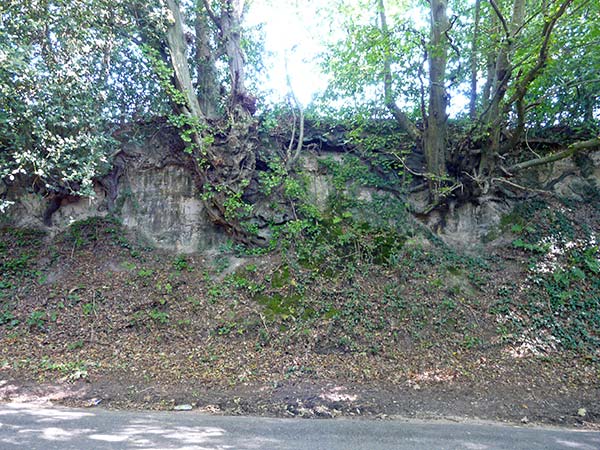
East Sussex Local Geological Sites - Waldron Cutting, Tullaghmore (img 920)
Exposure of Ashdown Formation sandstones and siltstones on east side of Tullaghmore cutting with extensive vegetation and talus obscuring section. About 5 m high (2.5 m face exposed).
Photograph taken: 15/09/2011
Grid ref. TQ55131875
Direction NNE
Image file: P1050276ed.jpg

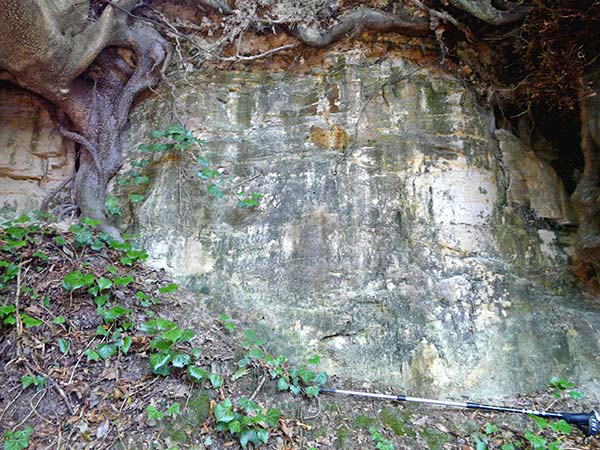
East Sussex Local Geological Sites - Waldron Cutting, Tullaghmore (img 921)
Detail of left part of exposure shown in photo 11. Shows Ashdown Formation sandstones and siltstones with fine bedding detail including cross bedding.
1 m pole for scale.
Photograph taken: 15/09/2011
Grid ref. TQ55131875
Image file: P1050280ed.jpg

Hastingford Cutting, Hadlow Down (TQ52/21)
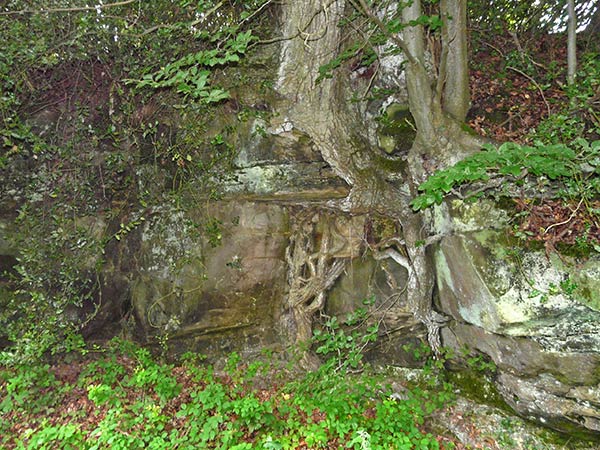
East Sussex Local Geological Sites - Hastingford Cutting (img 923)
Section about 2.5 m high of showing massive sandstone at base forming a small channel, overlain by silts and finer sands.
Photograph taken: 20/07/2011
Grid ref. TQ52312597
Direction WSW
Image file: P1040159ed.jpg


East Sussex Local Geological Sites - Hastingford Cutting (img 924)
Section to right of section in photo 4 showing massive sandstone at base forming a small channel.
Photograph taken: 20/07/2011
Grid ref. TQ52312597
Direction west
Image file: P1040160.jpg


East Sussex Local Geological Sites - Hastingford Cutting (img 925)
Roadside exposure of top Ashdown sandstone up to 5 m high and heavily overgrown.
Photograph taken: 20/07/2011
Grid ref. TQ52322598
Direction SW
Image file: P1040165ed.jpg

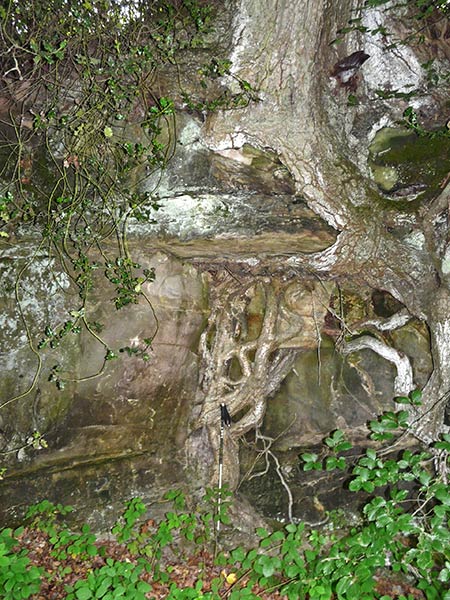
East Sussex Local Geological Sites - Hastingford Cutting (img 926)
Close-up section shown in photo 4. Massive sandstone in lower part forms a small channel with cross bedding visible at the base. SIlts and finer sands overlie the channel with lenticular bedding above the top of the channel.
1 m pole for scale.
Photograph taken: 20/07/2011
Grid ref. TQ52312597
Image file: P1040167ed.jpg


East Sussex Local Geological Sites - Hastingford Cutting (img 927)
Close-up to right of photo 6 showing massive sandstone forming small channel with cross bedding at base.
1 m pole for scale.
Photograph taken: 20/07/2011
Image file: P1040169ed.jpg

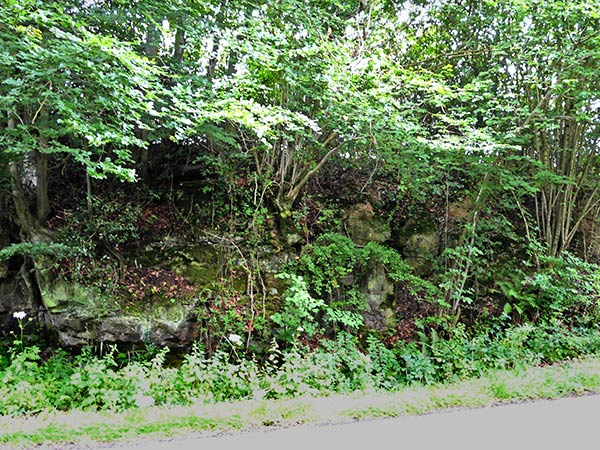
East Sussex Local Geological Sites - Hastingford Cutting (img 928)
Right (northern) part of Ashdown sandstone exposure about 4 m high and heavily overgrown.
Grid ref. TQ52322597
Direction WNW
Image file: P1040172ed.jpg

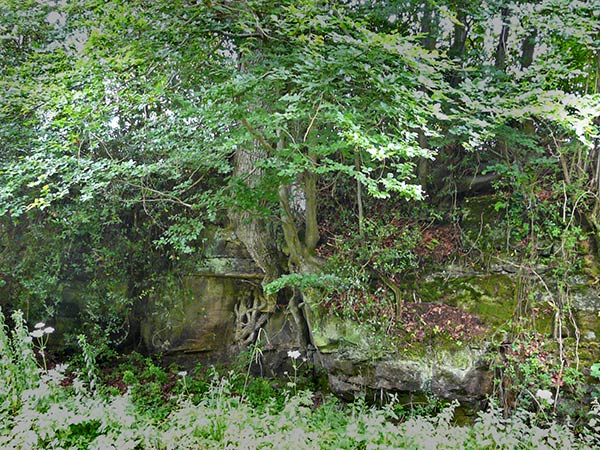
East Sussex Local Geological Sites - Hastingford Cutting (img 929)
Left (southern) part of Ashdown sandstone exposure about 5 m high and heavily overgrown.
Grid ref. TQ52322597
Direction WSW
Image file: P1040173ed.jpg

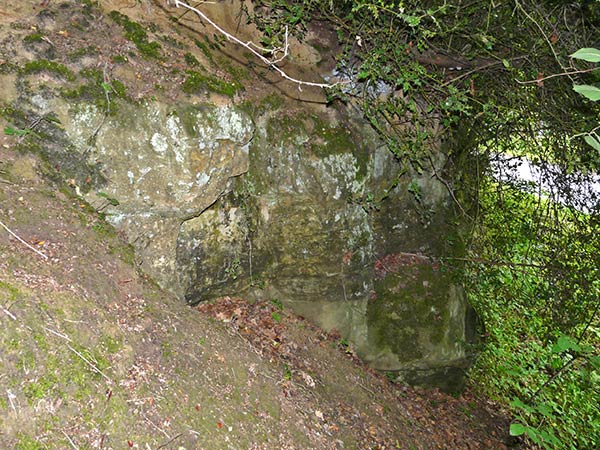
East Sussex Local Geological Sites - Hastingford Cutting (img 930)
Top of sandstone exposure shown in photo 4 with vegetation and talus obscuring the formation top and overlying Wadhurst Clay.
Photograph taken: 20/07/2011
Grid ref. TQ52312596
Direction north
Image file: P1040174ed.jpg

High Rocks, Frant (TQ53/02)
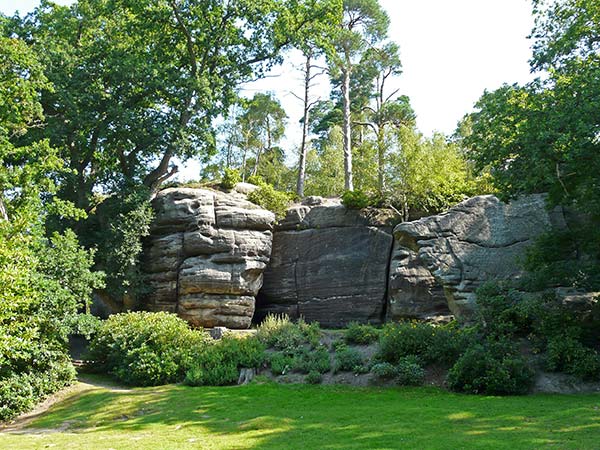
East Sussex Local Geological Sites - High Rocks (img 932)
Part of the first group of Ardingly Sandstone blocks above the entrance gate. The block on the left is about 15 m high and the one on the right is actually a narrow free standing block in front of the main cliff with a prominent overhang at its left side.
Photograph taken: 01/08/2011
Grid ref. TQ55883821
Direction NNE
Image file: P1040430ed.jpg

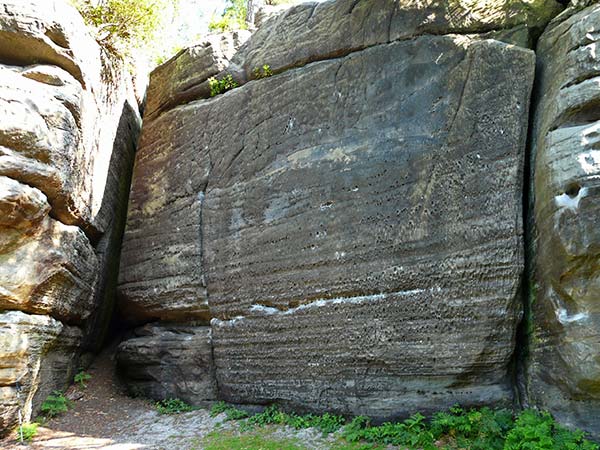
East Sussex Local Geological Sites - High Rocks (img 933)
Central block shown in photo 1, about 13 m high. Shows honeycomb weathering and bedding detail including cross-bedding. Bounded by open vertical joints (gulls) on each side.
Photograph taken: 01/08/2011
Grid ref. TQ55893822
Direction NNE
Image file: P1040437ed.jpg


East Sussex Local Geological Sites - High Rocks (img 934)
Well-jointed isolated block of Ardingly Sandstone about 9 m high showing undercutting at the base where thinner bedded units are present.
Photograph taken: 01/08/2011
Grid ref. TQ55913816
Direction NE
Image file: P1040444ed.jpg

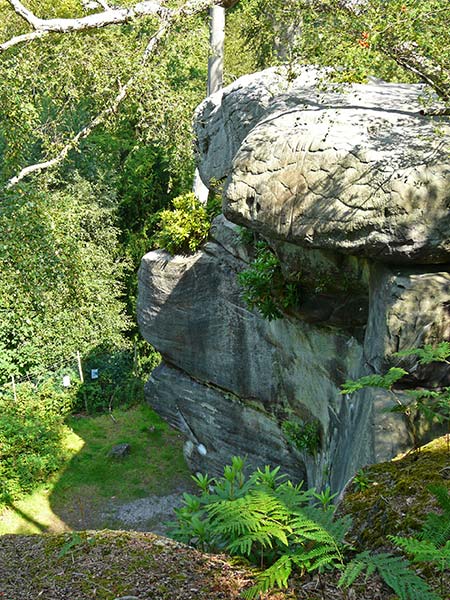
East Sussex Local Geological Sites - High Rocks (img 935)
Face shown in photo 9 viewed from top. Rounded cliff top shows well-developed polygonal cracking. Cliff face is sharply undercut at the base and shows a sequence of thick channel units picked out by differential weathering. Cross bedding in middle unit.
Photograph taken: 01/08/2011
Image file: P1040464ed.jpg

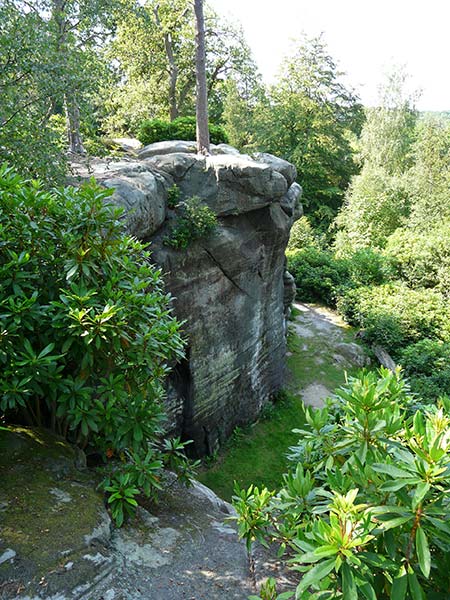
East Sussex Local Geological Sites - High Rocks (img 936)
Cliff of Ardingly Sandstone about 15 m high showing sheer vertical face parallel to major joint plane and capped by thick channel unit undercut at its base.
Photograph taken: 01/08/2011
Grid ref. TQ55913830
Direction SSW
Image file: P1040465ed.jpg


East Sussex Local Geological Sites - High Rocks (img 937)
Narrow open vertical joint (gull) with chockstone at top.
Photograph taken: 01/08/2011
Grid ref. TQ55903826
Image file: P1040470ed.jpg


East Sussex Local Geological Sites - High Rocks (img 938)
Wide open joint (gull) between blocks of Ardingly Sandstone, attributed to cambering.
Photograph taken: 01/08/2011
Grid ref. TQ55913830
Direction SE
Image file: P1040473ed.jpg

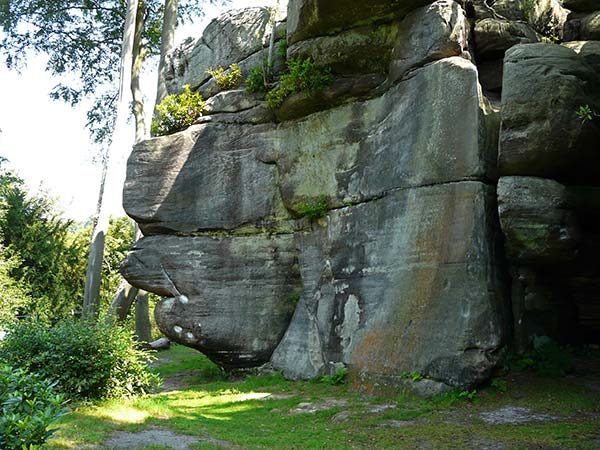
East Sussex Local Geological Sites - High Rocks (img 939)
Block of massive Ardingly Sandstone about 15 m high. Differential weathering has sculpted the major depositional units, notably on the corner which shows successive notches and overhangs corresponding to the less resistant beds.
Photograph taken: 01/08/2011
Image file: P1040475ed.jpg

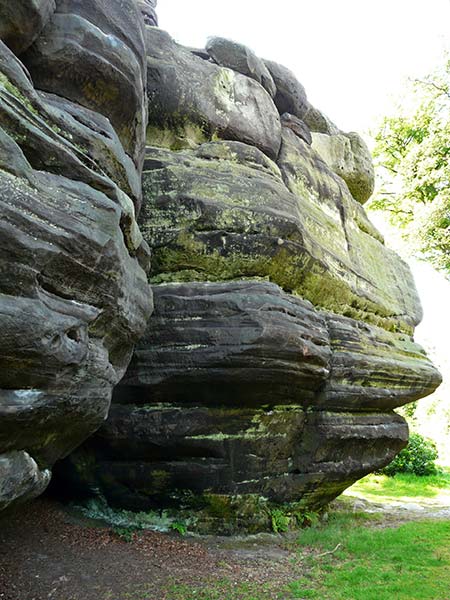
East Sussex Local Geological Sites - High Rocks (img 940)
Massive Ardingly Sandstone cliffs showing undercutting and cave at base associated with joint plane. Bedding detail picked out by differential weathering.
Photograph taken: 01/08/2011
Grid ref. TQ55913834
Direction SSE
Image file: P1040479ed.jpg

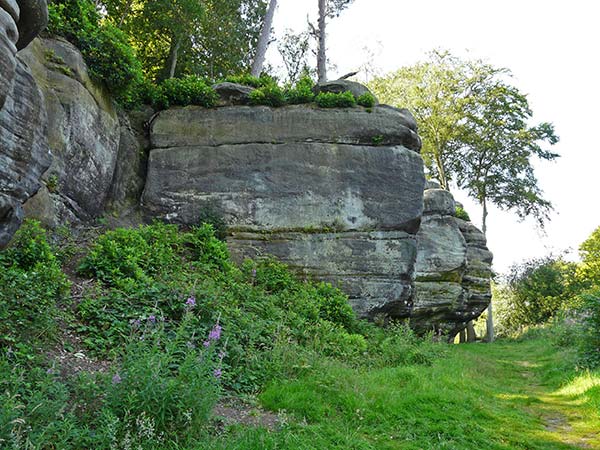
East Sussex Local Geological Sites - High Rocks (img 941)
Cliffs of massive Ardingly Sandstone in the northeastern part of the garden. Major depositional units are picked out by differential weathering. All the buttresses are undercut at the base.
Photograph taken: 01/08/2011
Grid ref. TQ55953835
Direction SW
Image file: P1040481ed.jpg

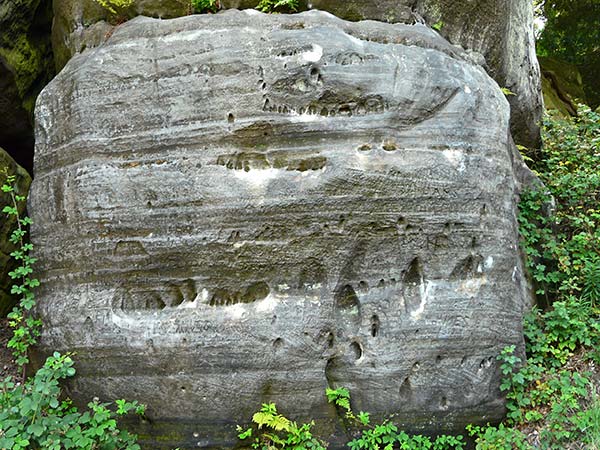
East Sussex Local Geological Sites - High Rocks (img 942)
Detail of base of cliff towards northeast end of garden. Weathering has picked out fine details of the bedding including cross bedding. Honeycomb weathering is also evident.
Photograph taken: 01/08/2011
Grid ref. TQ55983837
Direction SE
Image file: P1040484ed.jpg

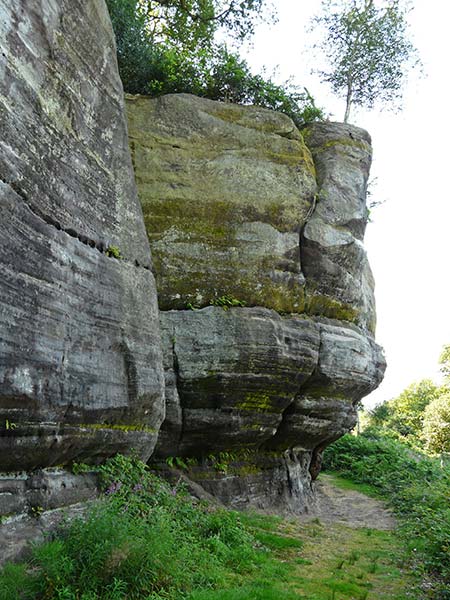
East Sussex Local Geological Sites - High Rocks (img 943)
Massive sandstone cliffs at northeastern end of High Rocks garden showing undercutting. Bedding picked out by differential weathering.The overhangs provided rock shelters for Stone Age hunters.
Photograph taken: 01/08/2011
Grid ref. TQ56003840
Direction SW
Image file: P1040487ed.jpg


East Sussex Local Geological Sites - High Rocks (img 944)
Close-up of the sandstone face behind the tree in photo 5 showing honeycomb weathering and fine bedding detail including cross bedding.
1 m pole for scale.
Photograph taken: 01/08/2011
Grid ref. TQ55893824
Direction NNE
Image file: P1040489ed.jpg

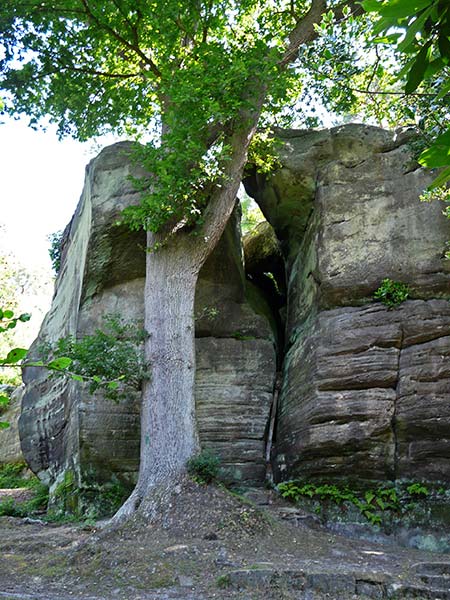
East Sussex Local Geological Sites - High Rocks (img 945)
Part of the first group of Ardingly Sandstone blocks near the entrance. Two large blocks separated by an open joint (gull) with a chockstone. Differential weathering shows thinner bedding in the lower half and massive sandstone in the upper half.
Photograph taken: 01/08/2011
Grid ref. TQ55873824
Direction NE
Image file: P1040490ed.jpg


East Sussex Local Geological Sites - High Rocks (img 946)
Smaller outcrops of Ardingly Sandstone at western end of Friezland Wood. These are more shaded and vegetated.
Photograph taken: 01/08/2011
Grid ref. TQ56063841
Direction WSW
Image file: P1040492ed.jpg

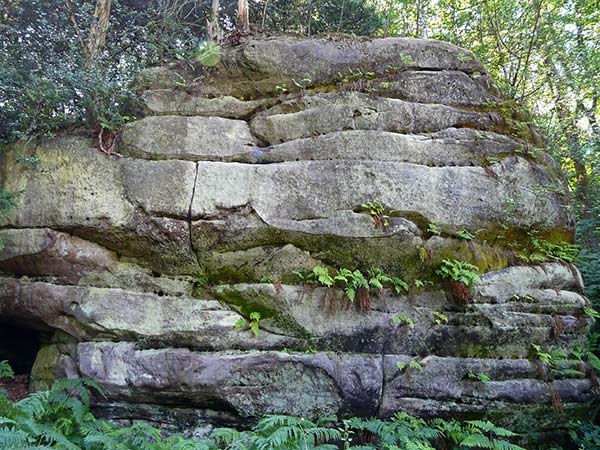
East Sussex Local Geological Sites - High Rocks (img 947)
Sandstone face about 5 m high in Friezland Wood showing successive channel units picked out by differential weathering.
Photograph taken: 01/08/2011
Grid ref. TQ56113842
Direction south
Image file: P1040494ed.jpg

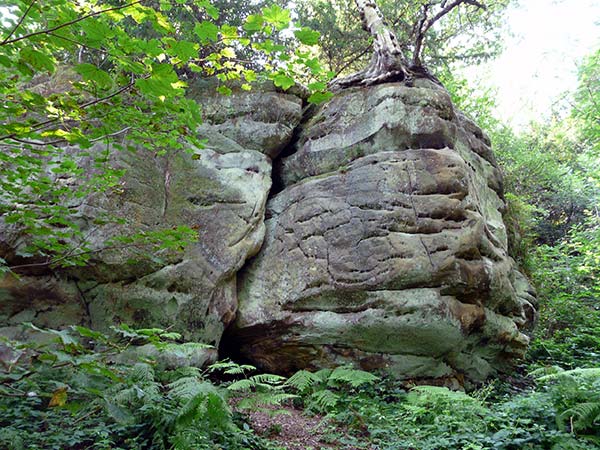
East Sussex Local Geological Sites - High Rocks (img 948)
Massive Ardingly Sandstone blocks at eastern end of Friezland Wood where the outcrops are more shaded and vegetated. Differential erosion has picked out curved bedding surfaces in the lower massive unit. Polygonal cracking is also evident.
Photograph taken: 01/08/2011
Grid ref. TQ56213839
Direction south
Image file: P1040500ed.jpg

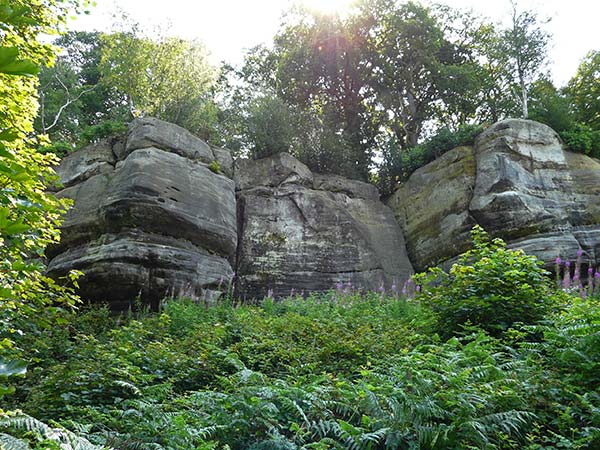
East Sussex Local Geological Sites - High Rocks (img 949)
Massive sandstone blocks shown in photo 15 viewed from the footpath below, outside the garden. About 15 m high. Blocks separated by vertical joint planes.
Photograph taken: 01/08/2011
Grid ref. TQ55993840
Direction SSE
Image file: P1040501ed.jpg

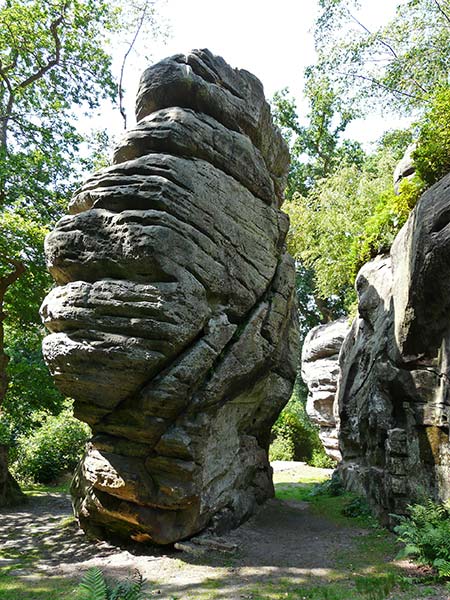
East Sussex Local Geological Sites - High Rocks (img 950)
Isolated sandstone block shown at right of photo 1. Separated from the main block by a wide open joint attributed to cambering. About 9 m high showing succession of channel units and oblique joints picked out by differential weathering.
Photograph taken: 01/08/2011
Image file: P1040510ed.jpg

Harrison's Rocks (TQ53/06)
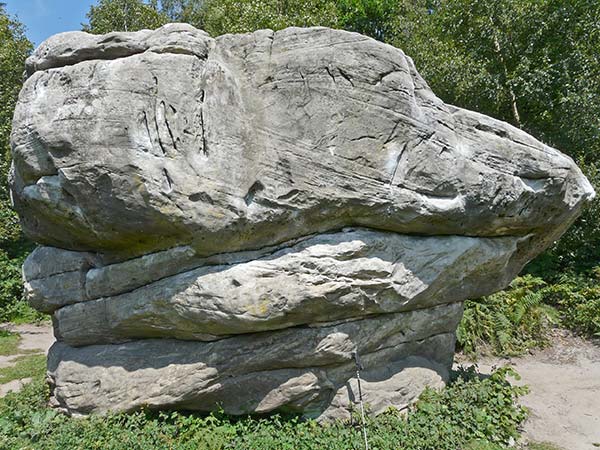
East Sussex Local Geological Sites - Harrison's Rocks (img 952)
Large boulder of Ardingly Sandstone near entrance showing sequence of bedding units with well developed cross bedding.
1 m pole for scale.
Photograph taken: 01/08/2011
Grid ref. TQ53133596
Image file: P1040512ed.jpg

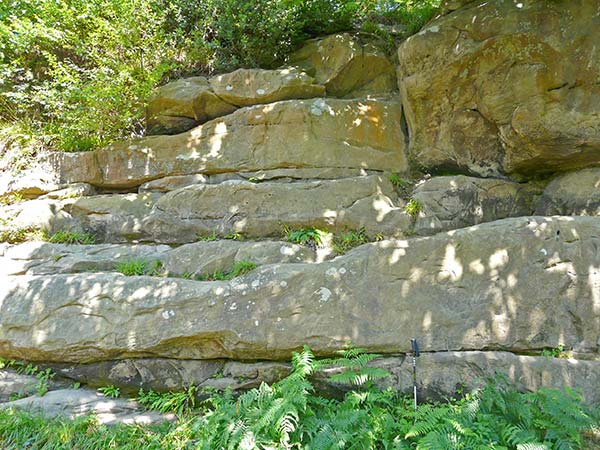
East Sussex Local Geological Sites - Harrison's Rocks (img 953)
Low outcrops near the northern end of the escarpment showing stacked sequence of channels. Lateral thickness changes and cross bedding are evident.
1 m pole for scale.
Photograph taken: 01/08/2011
Grid ref. TQ53173591
Direction NE
Image file: P1040518ed.jpg


East Sussex Local Geological Sites - Harrison's Rocks (img 954)
Outcrop of massive Ardingly Sandstone with main bedding units picked out by differential weathering. Stratigraphic detail evident but obscured by abrasion from rock climbing.
1 m pole for scale.
Photograph taken: 01/08/2011
Grid ref. TQ53233576
Direction SSE
Image file: P1040527ed.jpg

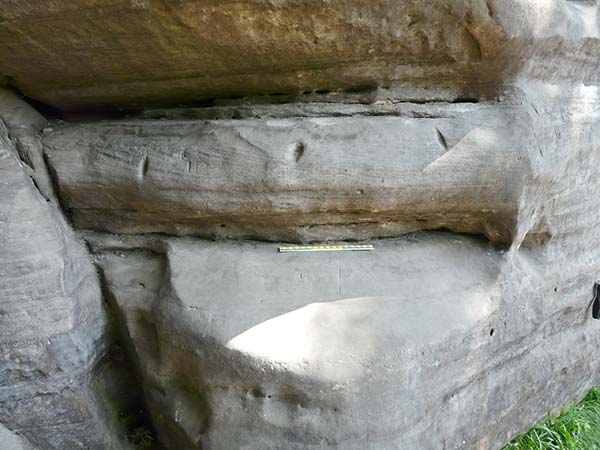
East Sussex Local Geological Sites - Harrison's Rocks (img 955)
Detail of outcrop shown in photo 3. Fine-scale cross-bedding within channel unit.
30 cm scale.
Photograph taken: 01/08/2011
Grid ref. TQ53233576
Direction SE
Image file: P1040528ed.jpg

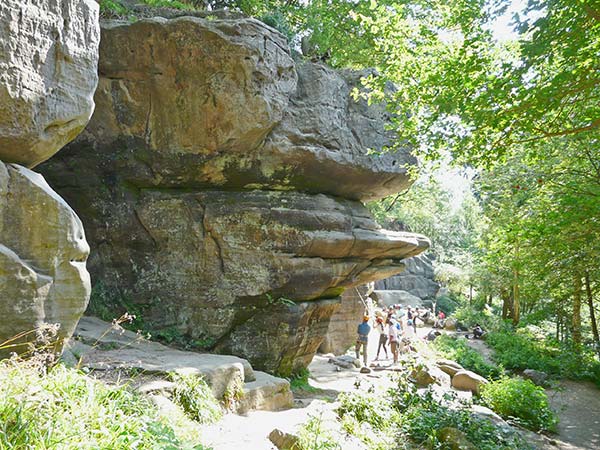
East Sussex Local Geological Sites - Harrison's Rocks (img 956)
Massive sandstone block with with undercutting at the base of channel units forming well-developed overhangs. About 7 m high.
Photograph taken: 01/08/2011
Grid ref. TQ53233564
Direction north
Image file: P1040532ed.jpg

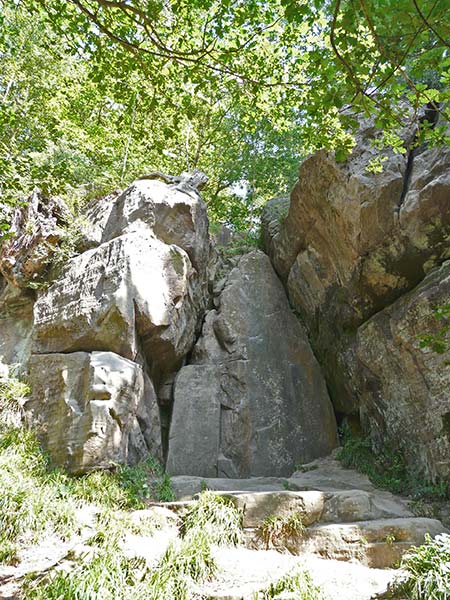
East Sussex Local Geological Sites - Harrison's Rocks (img 957)
Re-entrant face to left of block shown in photo 4. Inclined conjugate joints in massive sandstone. Most joints in these outcrops are vertical. Outcrop about 7 m high.
Photograph taken: 01/08/2011
Grid ref. TQ53223567
Direction east
Image file: P1040534ed.jpg


East Sussex Local Geological Sites - Harrison's Rocks (img 958)
Central part of the escarpment which seems most popular for climbing. Up to 10 m high.
Photograph taken: 01/08/2011
Grid ref. TQ53223566
Direction south
Image file: P1040537ed.jpg

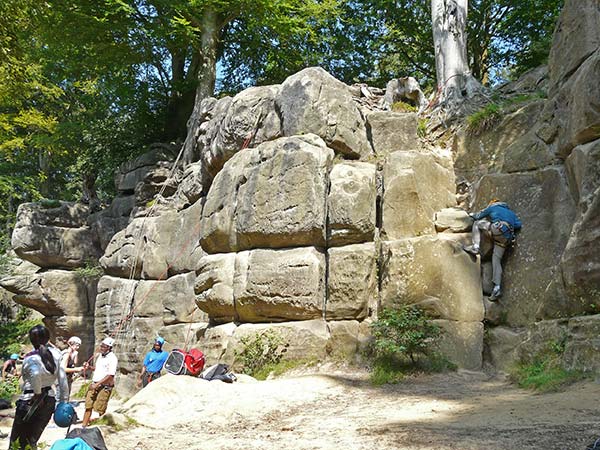
East Sussex Local Geological Sites - Harrison's Rocks (img 959)
Massive sandstone buttress with well-developed joints. The rock surfaces have been significantly abraded by climbing so that most of the weathering features and stratigraphic detail have been obliterated.
Photograph taken: 01/08/2011
Grid ref. TQ53233564
Direction NE
Image file: P1040540ed.jpg

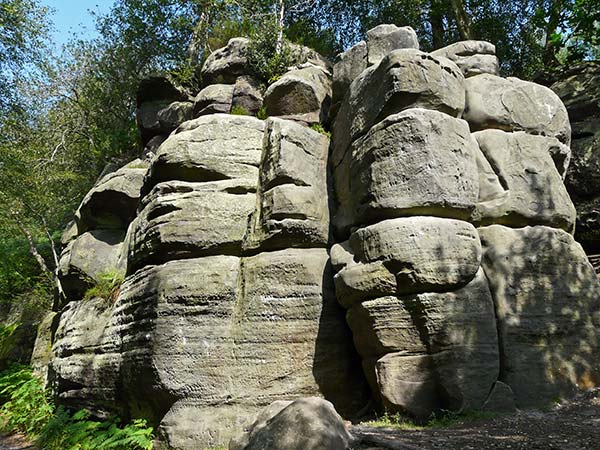
East Sussex Local Geological Sites - Harrison's Rocks (img 960)
Jointed blocks of massive sandstone with relatively well-preserved detail including honeycomb weathering. Weathering has picked out the small-scale layering.
Photograph taken: 01/08/2011
Grid ref. TQ53203554
Direction NE
Image file: P1040548ed.jpg


East Sussex Local Geological Sites - Harrison's Rocks (img 961)
Side view of block in photo 10 showing vertical joint planes and an open gull at the back.
Photograph taken: 01/08/2011
Grid ref. TQ53203554
Direction north
Image file: P1040549ed.jpg

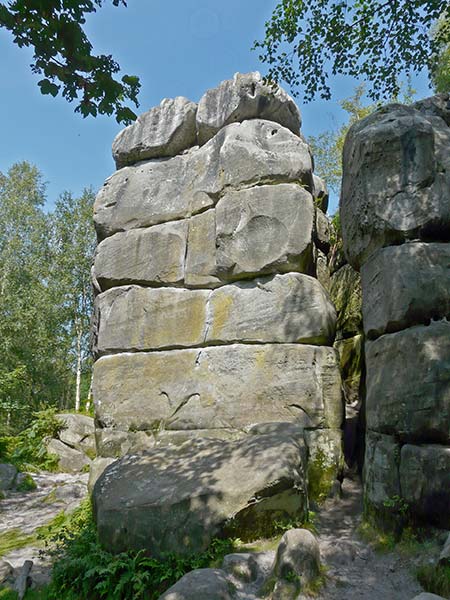
East Sussex Local Geological Sites - Harrison's Rocks (img 962)
Massive sandstone block showing stacked channel sequences. The rock surfaces have been significantly abraded by climbing.
Photograph taken: 01/08/2011
Grid ref. TQ53173548
Direction NNE
Image file: P1040551ed.jpg

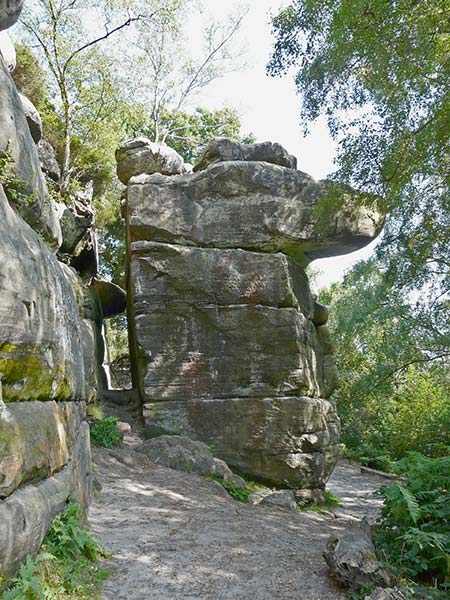
East Sussex Local Geological Sites - Harrison's Rocks (img 963)
Block of massive sandstone with relatively well-preserved weathering features and large overhang. A vertical open joint (gull) runs behind the block.
Photograph taken: 01/08/2011
Grid ref. TQ53183544
Direction SE
Image file: P1040553ed.jpg


East Sussex Local Geological Sites - Harrison's Rocks (img 964)
Honeycomb weathering developed under a large overhang.
Photograph taken: 01/08/2011
Grid ref. TQ53183544
Direction up and NE
Image file: P1040554ed.jpg


East Sussex Local Geological Sites - Harrison's Rocks (img 965)
Large block with major bedding units picked out by differential weathering, producing overhangs. Bedding detail evident. Open joint (gull) at back.
Photograph taken: 01/08/2011
Grid ref. TQ53213541
Direction WNW
Image file: P1040557ed.jpg


East Sussex Local Geological Sites - Harrison's Rocks (img 966)
Large block with well developed joints. Considerable abrasion from climbing but bedding detail and honeycomb weathering still visible.
Photograph taken: 01/08/2011
Grid ref. TQ53243542
Direction NE
Image file: P1040558ed.jpg

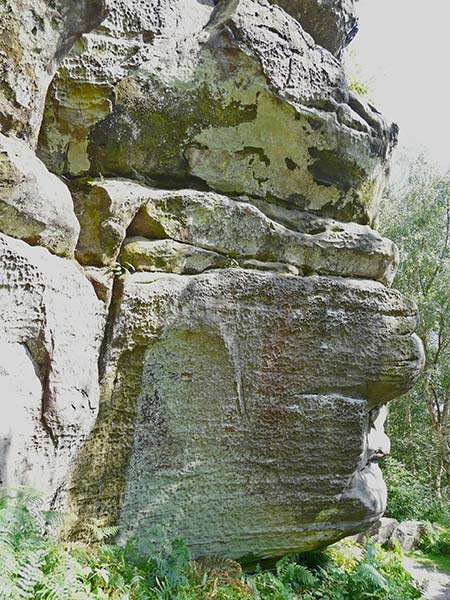
East Sussex Local Geological Sites - Harrison's Rocks (img 967)
Close-up of base of block showing well developed honeycomb weathering and bedding detail.
Photograph taken: 01/08/2011
Grid ref. TQ53243541
Direction SE
Image file: P1040559ed.jpg

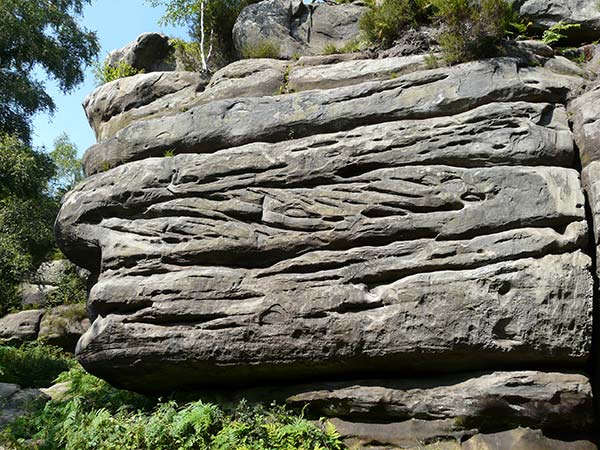
East Sussex Local Geological Sites - Harrison's Rocks (img 968)
Major features of the bedding have been picked out by differential weathering including a prominent cross-bedded layer in the centre. Small-scale detail is not visible due to abrasion by climbing.
Photograph taken: 01/08/2011
Grid ref. TQ53263539
Direction north
Image file: P1040561.jpg


East Sussex Local Geological Sites - Harrison's Rocks (img 969)
Well-developed polygonal cracks on this wall appear to be surviving the abrasion from climbing.
Photograph taken: 01/08/2011
Grid ref. TQ53283539
Direction NE
Image file: P1040563ed.jpg

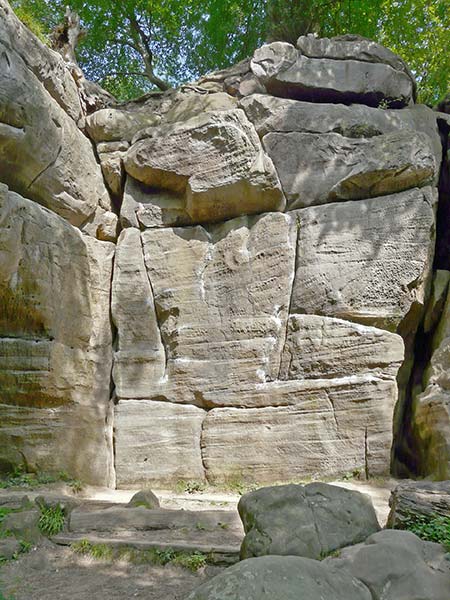
East Sussex Local Geological Sites - Harrison's Rocks (img 970)
Massive sandstone face with variety of joints. Cross-bedding detail visible within channel units, accentuated by honeycomb weathering in some places but also obscured in others. About 8 m high.
Photograph taken: 01/08/2011
Grid ref. TQ53223564
Direction east
Image file: P1040572ed.jpg

Eridge Rocks, Eridge Green (TQ53/09)
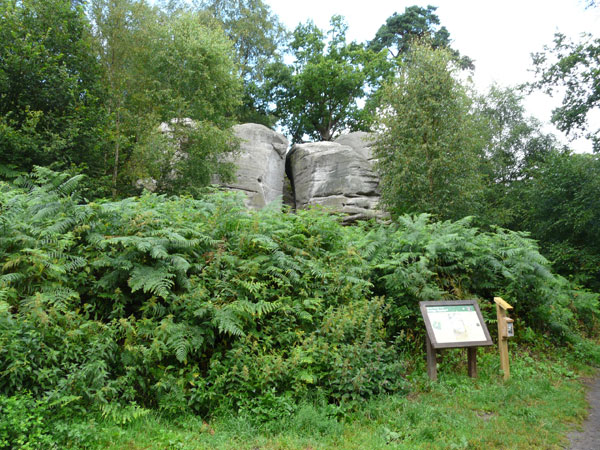
Eridge Rocks - entrance (img 972)
Information board and the first rock outcrops behind the car park at the entrance.
Grid ref: 555496 135564
Direction: NW
Image file: P1040574_2.jpg

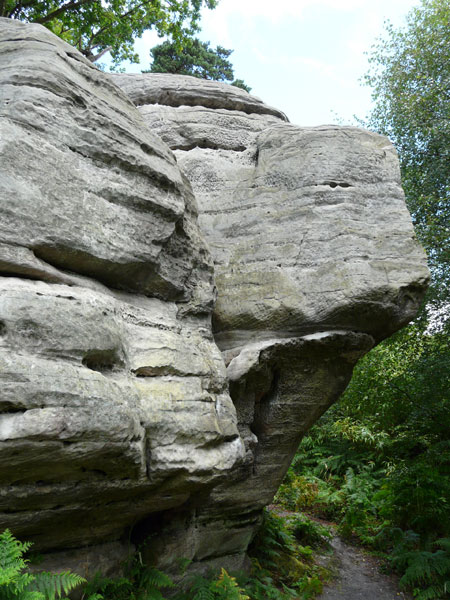
Eridge Rocks - massive sandstone blocks and overhang (img 973)
Massive sandstone blocks about 8m high with undercut base and large overhang. Well-developed honeycomb weathering and details of cross bedding are present under the overhang.
Grid ref: 555473 135624
Direction: NNW
Image file: P1040579_2.jpg


Eridge Rocks - massive sandstone face, bedding detail (img 974)
Base of cliff showing succession of cross-bedded channels with extensive honeycomb weathering.
Grid ref: 555482 135641
Direction: SW
Image file: P1040589_2.jpg

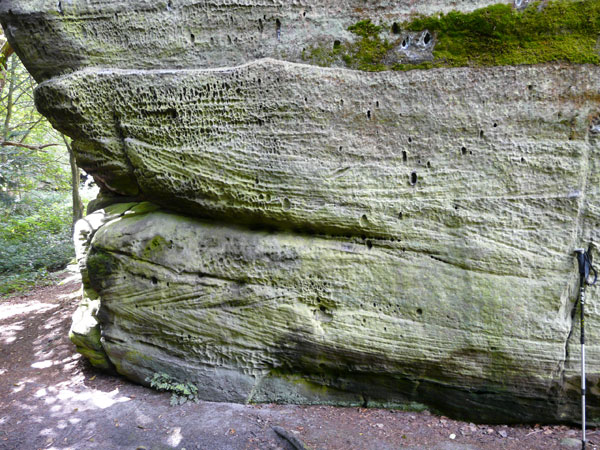
Eridge Rocks - base of massive sandstone cliff - bedding detail (img 975)
Base of cliff showing detail of successive cross-bedded channel units and honeycomb weathering. 1m pole for scale.
Grid ref: 555463 135693
Direction: south
Image file: P1040599_2.jpg

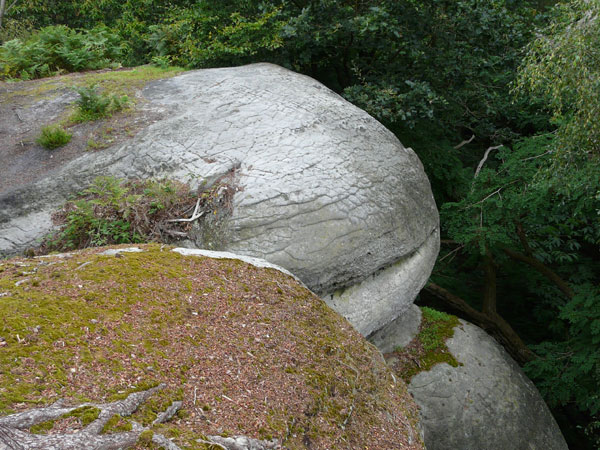
Eridge Rocks - top of massive sandstone cliffs - polygonal cracking (img 976)
Top of cliff showing rounded surfaces and polygonal cracking
Grid ref: 555454 135676
Direction: NNW
Image file: P1040601_2.jpg


Eridge Rocks - massive sandstone cliffs (img 977)
10m high cliffs showing massive sandstone blocks separated by major joints. Massive sandstone in lower cliff separated from a thinner unit at the top by a less resistant layer which has been picked out by weathering.
Grid ref: 555465 135653
Direction: north
Image file: P1040603_2.jpg

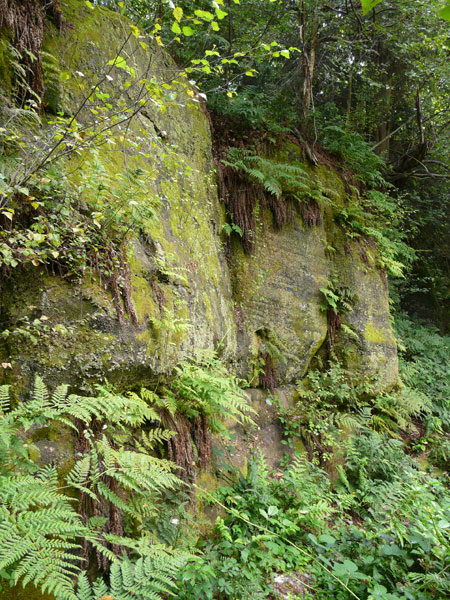
Eridge Rocks - vegetated sandstone cliffs (img 978)
Vegetated cliff undisturbed by climbers or geologists.
Grid ref: 555396 135656
Direction: SW
Image file: P1040606_2.jpg

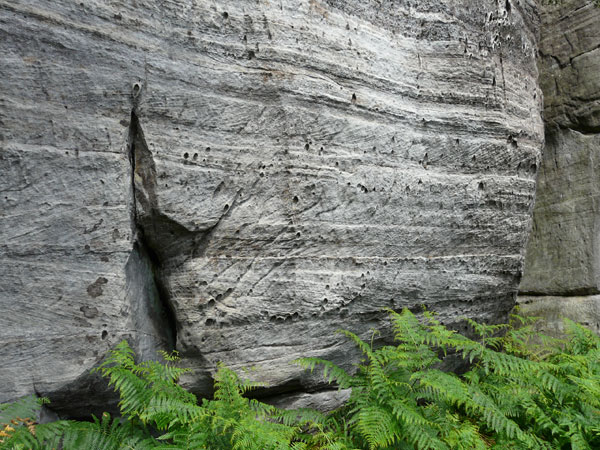
Eridge Rocks - base of massive sandstone cliff - bedding detail (img 979)
Lower part of cliff showing a succession of channel deposits each with internal cross-bedding.
Grid ref: 555391 135745
Direction: NW
Image file: P1040610_2.jpg

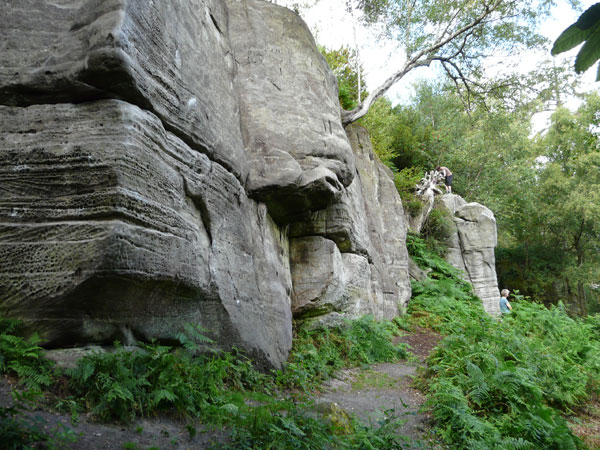
Eridge Rocks - massive sandstone cliffs (img 980)
Cliffs of massive sandstone showing detail of the channel units and honeycomb weathering. Blocls separated by major joints. Note the climbers on the far buttress.
Grid ref: 555375 135816
Direction: north
Image file: P1040621_2.jpg

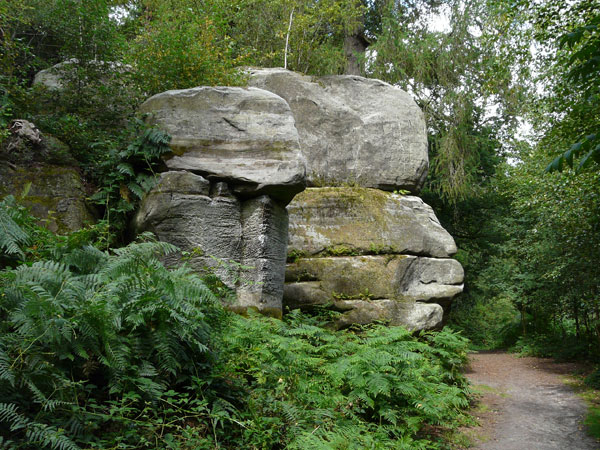
Eridge Rocks - massive sandstone blocks (img 981)
Massive sandstone blocks with major depositional units sculpted by weathering. Note the honeycomb weathering on the lower unit of the nearest block.
Grid ref: 555370 135857
Direction: NNW
Image file: P1040623_2.jpg

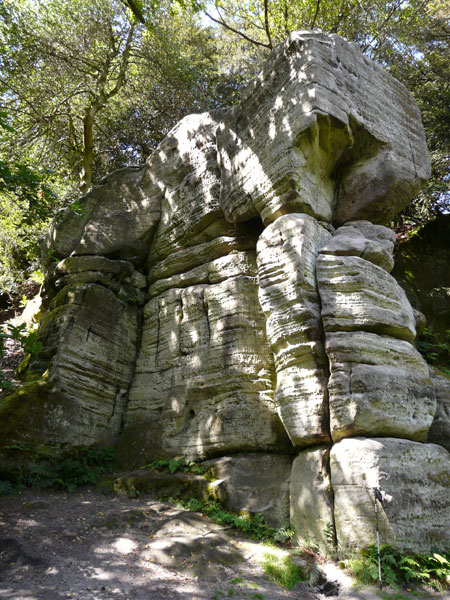
Eridge Rocks - massive sandstone blocks - joints (img 982)
Massive sandstone blocks where weathering has picked out the internal bedding details. Shows extensive honeycomb weathering and major joint planes.
Grid ref: 555352 136012
Direction: SSW
Image file: P1040627_2.jpg

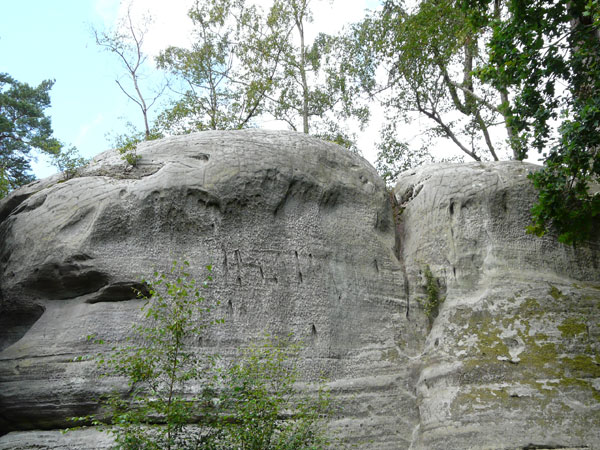
Eridge Rocks - massive sandstone face - honeycomb weathering and polygonal cracks (img 983)
Face about 10m high covered with honeycomb weathering, most developed under the overhang. Rounded upper surfaces with polygonal cracking.
Grid ref: 555473 135624
Direction: west
Image file: P1040636_2.jpg

Glen Andred Rocks, Groombridge (TQ53/13)
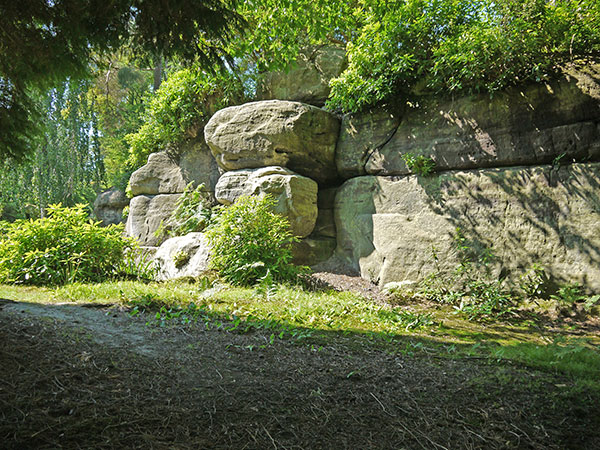
East Sussex Local Geological Sites - Glen Andred Rocks, Groombridge (img 985)
Outcrop of massive Ardingly Sandstone on northern boundary of the garden at Glen Andred East. Up to 6m high showing horizontal bedding, cross bedding at top right and open joints. Weathering has picked out bedding planes and caused undercutting.
Photo taken: 25/07/2012
Grid ref TQ52983575
Direction NNW
Image file: P1020453ed.jpg

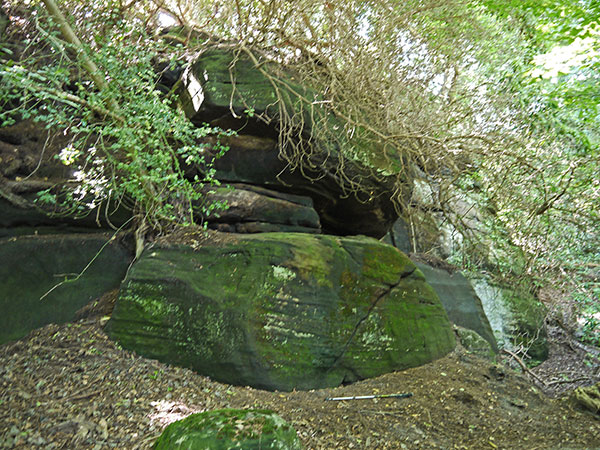
East Sussex Local Geological Sites - Glen Andred Rocks, Groombridge (img 986)
Massive sandstone outcrop on Conyer Lodge's land, partly obscured by tree growth. The rock surface is extensively covered by mosses and other lower plants. Cross bedding and open joints are visible. Weathering has picked out bedding planes and caused undercutting. About 5 m high.
Photo taken: 25/07/2012
Grid ref TQ53003578
Direction NW
Image file: P1020465ed.jpg

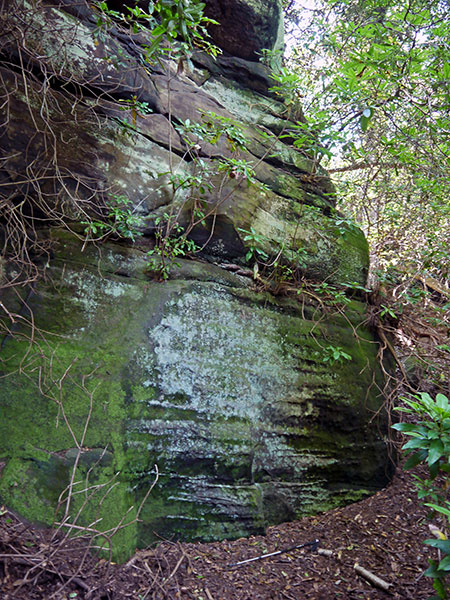
East Sussex Local Geological Sites - Glen Andred Rocks, Groombridge (img 987)
Massive sandstone outcrop on Conyer Lodge's land, partly obscured by vegetation growth. The lower part is extensively covered by mosses and other lower plants. Weathering has picked out bedding and caused undercutting higher up. About 6m high.
Photo taken: 25/07/2012
Grid ref TQ53003579
Direction NW
Image file: P1020466ed.jpg


East Sussex Local Geological Sites - Glen Andred Rocks, Groombridge (img 988)
Massive sandstone face about m high on Conyer Lodge's land. Weathering has picked out bedding including channels and cross bedding and caused undercutting. Open joint at centre. Rocks have extensive cover of mosses and other lower plants.
1m pole for scale.
Photo taken: 25/07/2012
Grid ref TQ52983581
Direction SSW
Image file: P1020476ed.jpg

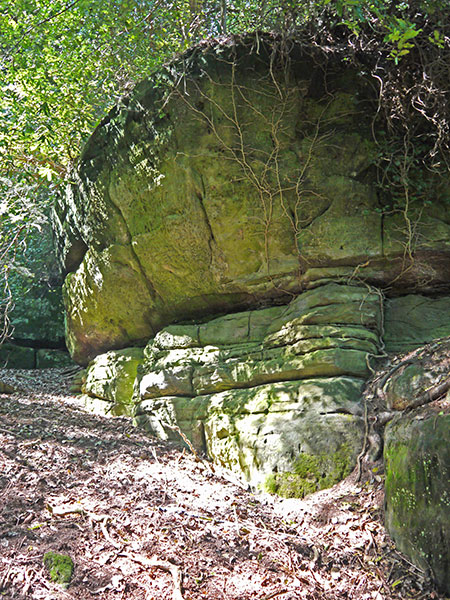
East Sussex Local Geological Sites - Glen Andred Rocks, Groombridge (img 989)
Massive detached block (Eagle Rock) on Conyer Lodge's land. About 4.5m high. The overhanging upper part shows extensive honeycomb weathering. Thinner beds in the lower part are picked out by weathering.
Photo taken: 25/07/2012
Grid ref TQ52993582
Direction NW
Image file: P1020484ed.jpg


East Sussex Local Geological Sites - Glen Andred Rocks, Groombridge (img 990)
Close-up of eastern side of detached block (Eagle Rock) shown in photo 5. Honeycomb weathering is very well developed under the overhang. Weathering also picks out cross bedding in the lower beds.
Photo taken: 25/07/2012
Grid ref TQ53003583
Direction south
Image file: P1020489.jpg

Rocks Wood, near Groombridge (TQ53/42)
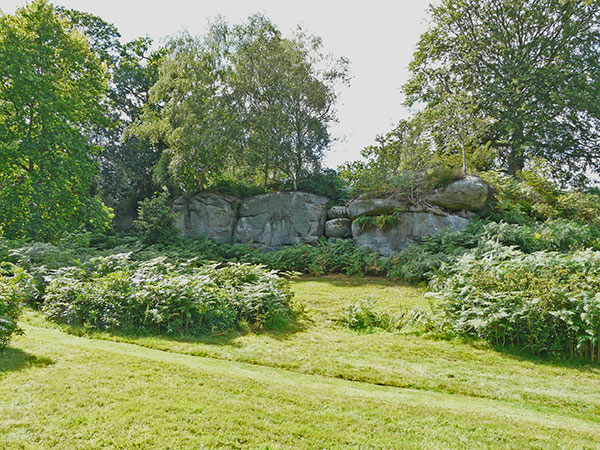
East Sussex Local Geological Sites - Rocks Wood (img 992)
Edge of group of Ardingly Sandstone blocks in the garden of Penns in the Rocks House. Blocks separated by vertical open joint planes.
Photo taken: 07/08/2011
Grid ref: TQ52083455
Direction west
Image file: P1040664ed.jpg

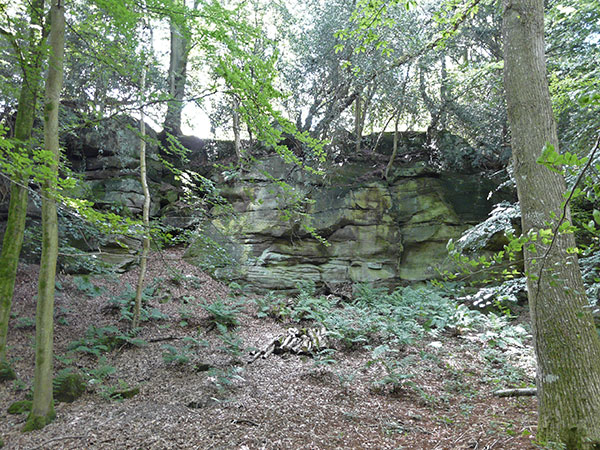
East Sussex Local Geological Sites - Rocks Wood (img 993)
Relatively clean Ardingly Sandstone cliffs up to 7 m high on the south side of Jockey's Wood showing lateral thickness variations in stacked channel units.
Photo taken: 07/08/2011
Grid ref: TQ51663470
Direction WSW
Image file: P1040668ed.jpg

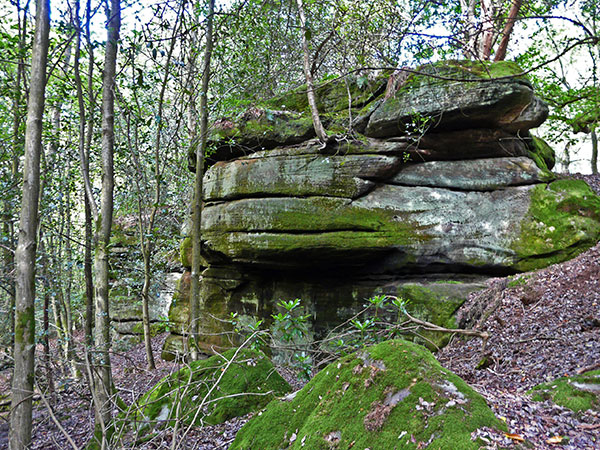
East Sussex Local Geological Sites - Rocks Wood (img 994)
Rocks Wood: massive sandstone block showing undercutting. Weathering has picked out the major channel units.
Photo taken: 07/08/2011
Grid ref: TQ52353499
Direction NE
Image file: P1040676ed.jpg

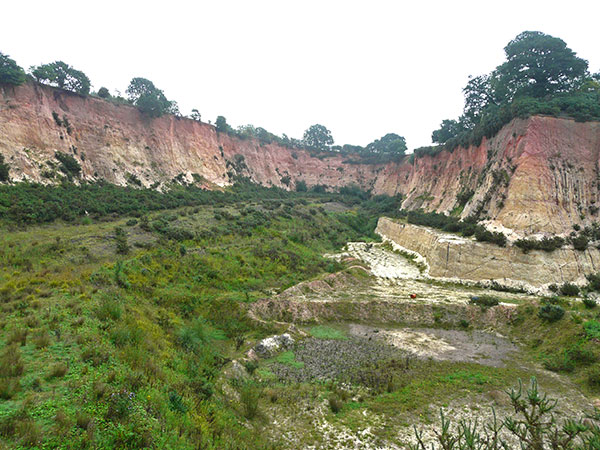
West Sussex Local Geological Sites - Chantry Mill (img 996)
Eastern part of quarry with faces up to 25 m high exposing sandstones of the Folkestone Formation. The sandstones are mostly coloured pale yellowish and buff but the uppermost beds are red-stained.
Photo taken: 21/09/2010
Grid ref TQ09431391
Direction east
Image file: P1020528ed.jpg

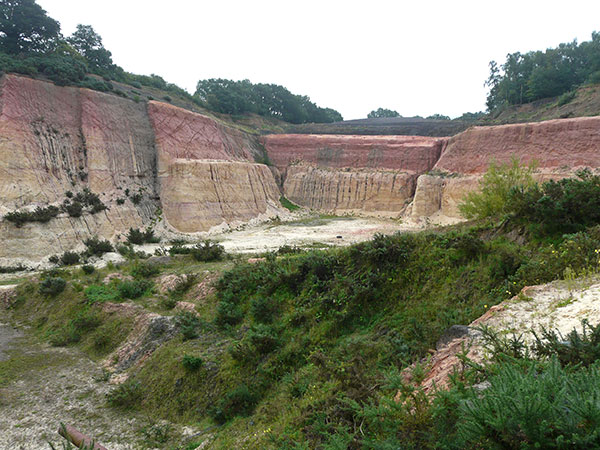
West Sussex Local Geological Sites - Chantry Mill (img 997)
Southern part of the quarry with faces up to 25 m high exposing sandstones of the Folkestone Formation. Most of the section comprises yellow-buff sandstones but the uppermost beds are red-stained. Dark grey Gault Clay directly overlies the red-stained sandstones.
Photo taken: 21/09/2010
Grid ref TQ09431391
Direction SSE
Image file: P1020530ed.jpg

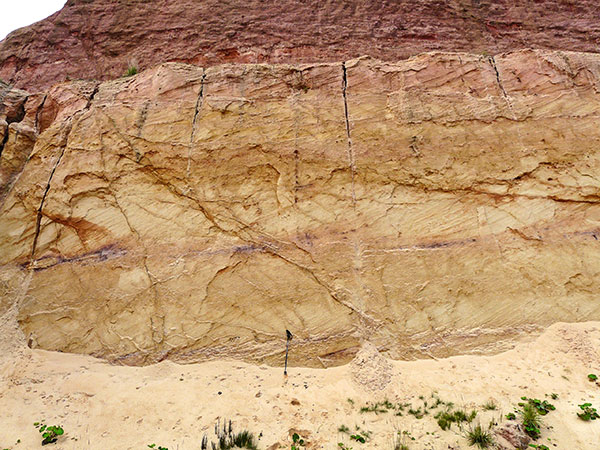
West Sussex Local Geological Sites - Chantry Mill (img 998)
Close-up of face in southern part of quarry (west side) showing thick cross-bedded units cut by a network of iron rich veins.
1 m pole for scale.
Photo taken: 21/09/2010
Grid ref TQ09481381
Direction SW
Image file: P1020540ed.jpg

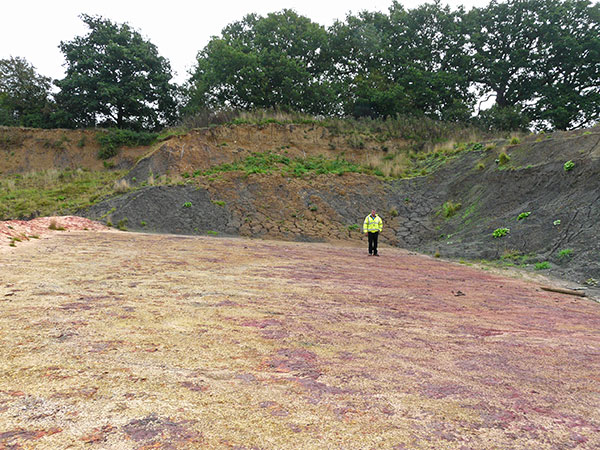
West Sussex Local Geological Sites - Chantry Mill (img 999)
Top of south corner showing bench cut at the top of Folkestone Formation, Iron Grit horizon, which dips to the right (south) beneath the Gault clay. Slumping of the clay covers the actual contact between the Folkestone and Gault formations.
Photo taken: 21/09/2010
Grid ref TQ09521379
Direction east
Image file: P1020549ed.jpg

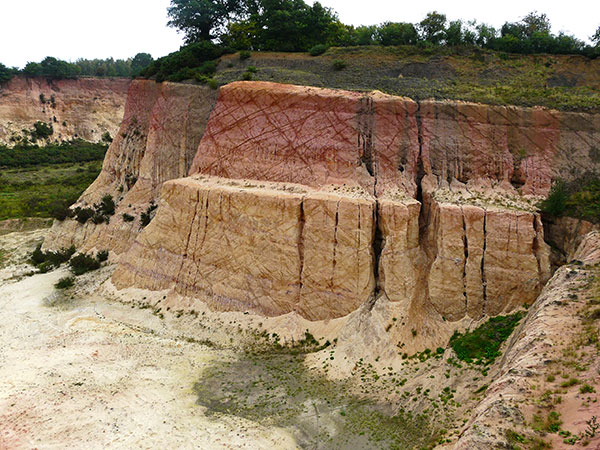
West Sussex Local Geological Sites - Chantry Mill (img 1000)
Southern part of quarry (eastern side) showing Folkestone Formation sandstones dipping to right (south). Lower beds are yellow-buff and include purplish horizons towards the base. Upper beds are red-stained and are cut by a reticulated pattern of iron rich veins. Dark grey Gault Clay directly overlies the red beds.
Photo taken: 21/09/2010
Grid ref TQ09481379
Direction NE
Image file: P1020555ed2.jpg

Quarry near Ashburnham Furnace (TQ61/19)

East Sussex Local Geological Sites - Ashburnham Quarry (img 1002)
Main quarry face exposing massive Ashdown sandstone overlain by Wadhurst Clay. Prominent bedding plane dips gently to the right.
1m pole for scale.
Photo taken: 15/09/2011
Grid ref TQ68741646
Direction east
Image file: P1050285ed.jpg


East Sussex Local Geological Sites - Ashburnham Quarry (img 1003)
Close-up of prominent bedding plane shown in photo 1. Marked by thin gritty layer with carbonaceous material. Note the fine laminations exposed in the sandstone where the weathered surface has been removed.
30 cm scale.
Photo taken: 15/09/2011
Grid ref TQ68741646
Image file: P1050291ed.jpg


East Sussex Local Geological Sites - Ashburnham Quarry (img 1004)
Junction between Ashdown and Wadhurst Clay Formations above left side of face shown in photo 1. Massive sandstone is overlain by a thin bedded interval (pebble beds and carbonaceous layers) and a more resistant thin sandstone marking the top of the Ashdown Formation. The Wadhurst Clay Formation forms the rest of the face above.
Photo taken: 15/09/2011
Grid ref TQ68741646
Image file: P1050293ed.jpg

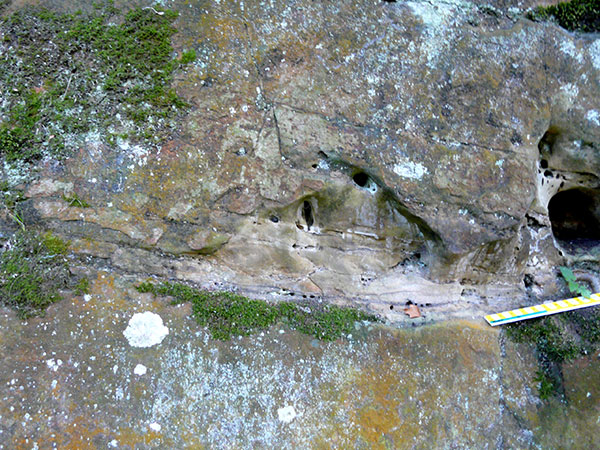
East Sussex Local Geological Sites - Ashburnham Quarry (img 1005)
Close-up of base of channel visible at right edge of photo 1. Fine laminations define cross bedding.
30 cm scale.
Photo taken: 15/09/2011
Grid ref TQ68751645
Image file: P1050296ed.jpg

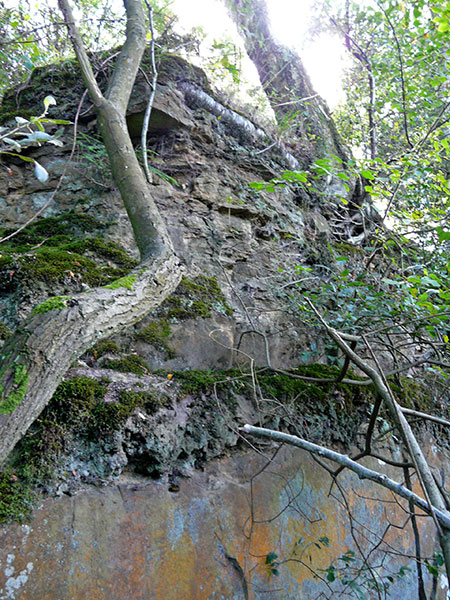
East Sussex Local Geological Sites - Ashburnham Quarry (img 1006)
Junction between Ashdown and Wadhurst Clay Formations. Massive sandstone is overlain by a thin bedded interval (pebble beds and carbonaceous layers) and a more resistant blocky sandstone marking the top of the Ashdown Formation. The Wadhurst Clay Formation forms the rest of the face above.
Photo taken: 15/09/2011
Grid ref TQ68741646
Direction SE
Image file: P1050299ed.jpg

Darwell Stream Cackle Street (TQ62/41)
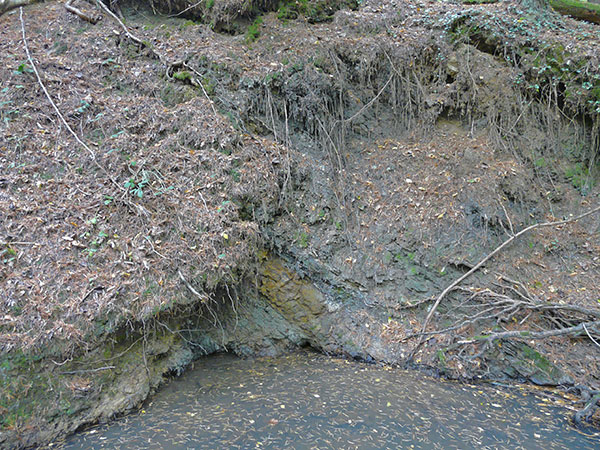
East Sussex Local Geological Sites - Darwell Stream (img 1008)
Close-up of dipping grey and orange clays of Purbeck Group (Greys Limestones). About 1 m high.
Photograph taken: 05/10/2011
Grid ref. est. TQ69592006
Direction NNE
Image file: P1050618ed.jpg

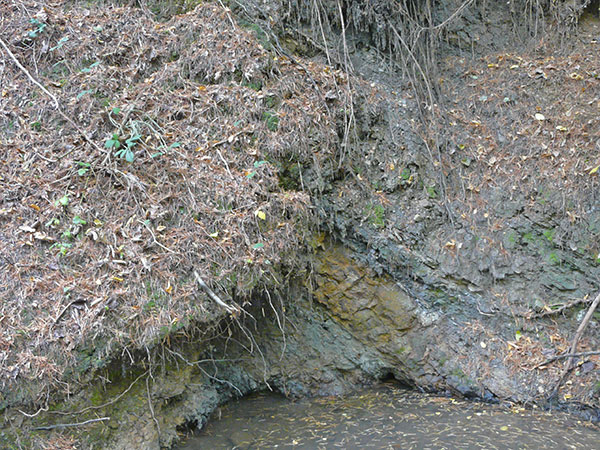
East Sussex Local Geological Sites - Darwell Stream (img 1009)
Detail of dipping grey and orange clays of Purbeck Group (Greys Limestones). About 1 m high.
Photograph taken: 05/10/2011
Grid ref. est. TQ69592006
Direction NNE
Image file: P1050620ed.jpg

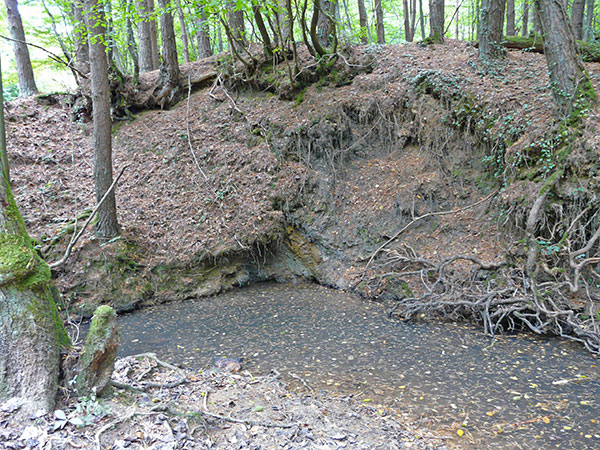
East Sussex Local Geological Sites - Darwell Stream (img 1010)
Bank exposure of Purbeck Group (Greys Limestones) clays at bend in stream. Steep dip to right (ESE).
Photograph taken: 05/10/2011
Grid ref. est. TQ69592006
Direction NNE
Image file: P1050621ed.jpg

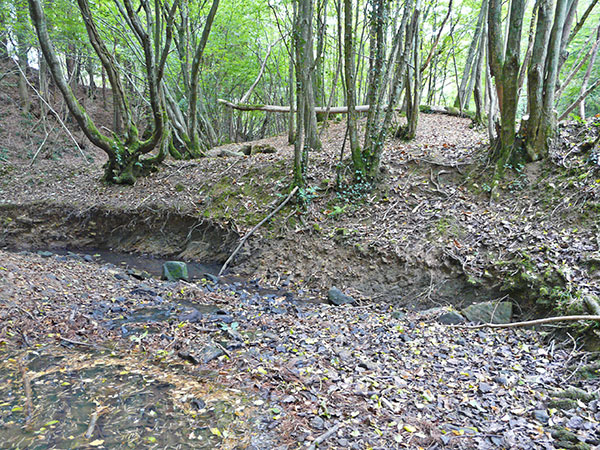
East Sussex Local Geological Sites - Darwell Stream (img 1011)
Low bank exposures downstream showing transition from Purbeck Group beds in foreground to Ashdown Formation beds towards the left (NE).
Photograph taken: 05/10/2011
Grid ref. est. TQ69602005
Direction SE
Image file: P1050622ed.jpg


East Sussex Local Geological Sites - Darwell Stream (img 1012)
Low bank exposures to left (NE) of photo 5 showing transition from Purbeck Group beds at right to Ashdown Formation beds towards the left.
Photograph taken: 05/10/2011
Grid ref. est. TQ69602005
Direction east
Image file: P1050623ed.jpg

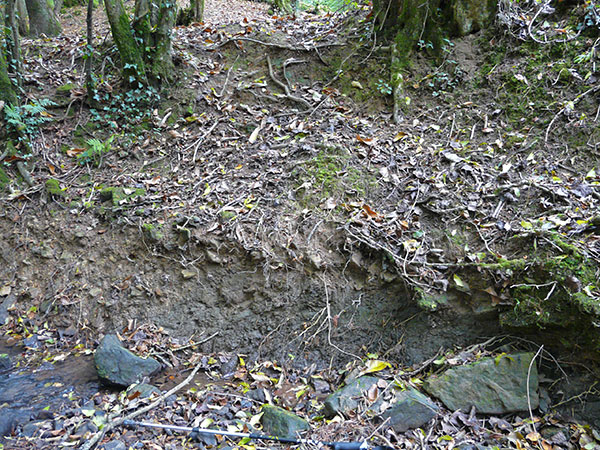
East Sussex Local Geological Sites - Darwell Stream (img 1013)
Close-up of low bank at centre of photo 5 exposing grey clay at top of Purbeck Beds (Greys Limestones). Dip to left (NE). 1 m pole for scale.
Photograph taken: 05/10/2011
Grid ref. est. TQ69602005
Direction SW
Image file: P1050624ed.jpg

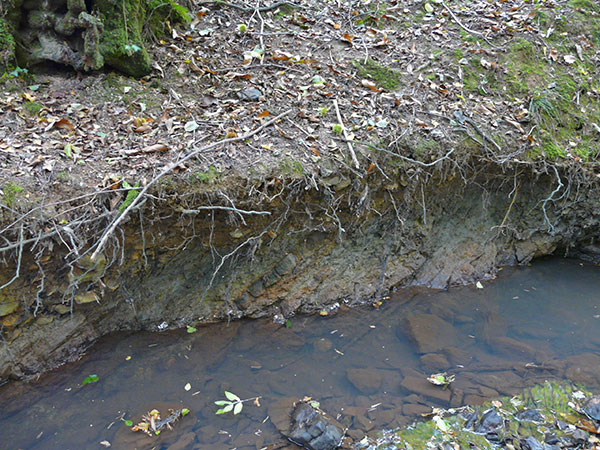
East Sussex Local Geological Sites - Darwell Stream (img 1014)
Close-up of bank at centre of photo 7 exposing grey and orange clays (Purbeck Beds) overlain by siltstones and thin sandstones (Ashdown Formation). Dip to left (east). About 0.7 m high.
Photograph taken: 05/10/2011
Grid ref. est. TQ69612006
Direction south
Image file: P1050625ed.jpg

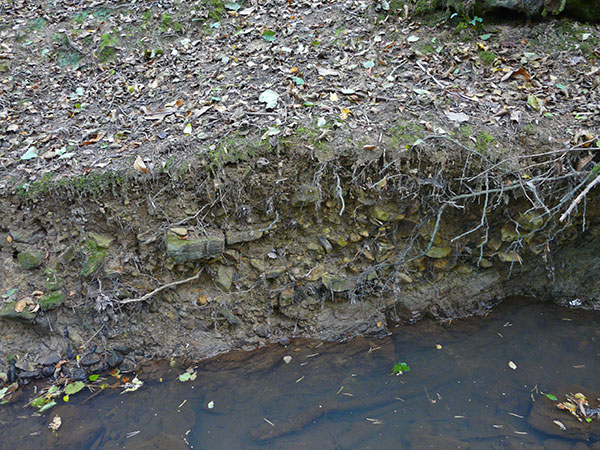
East Sussex Local Geological Sites - Darwell Stream (img 1015)
Close-up of bank exposure at centre of photo 7 exposing siltstones and thin sandstones of the Ashdown Formation. Dip to left (east). About 0.7 m high.
Photograph taken: 05/10/2011
Image file: P1050626ed.jpg


East Sussex Local Geological Sites - Darwell Stream (img 1016)
Low bank exposures showing transition from Ashdown Formation beds in foreground to Purbeck Group beds towards the bend in the stream.
Photograph taken: 05/10/2011
Grid ref. est. TQ69612006
Direction SW
Image file: P1050627ed.jpg

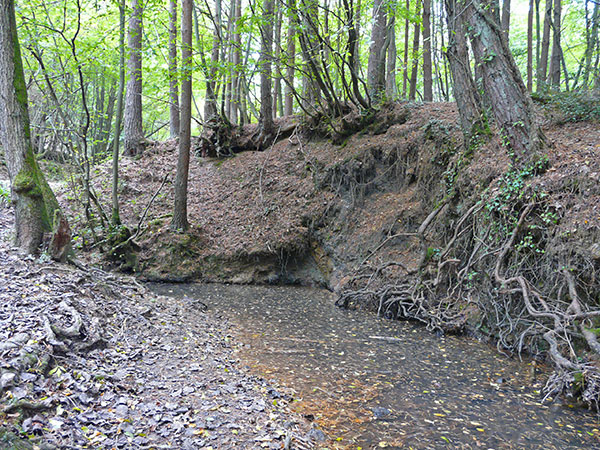
East Sussex Local Geological Sites - Darwell Stream (img 1017)
Bank exposure of Purbeck Group clays at bend in stream.
Photograph taken: 05/10/2011
Grid ref. est. TQ69602005
Direction NW
Image file: P1050628ed.jpg

Dallington Forest, Brightling (TQ62/45)
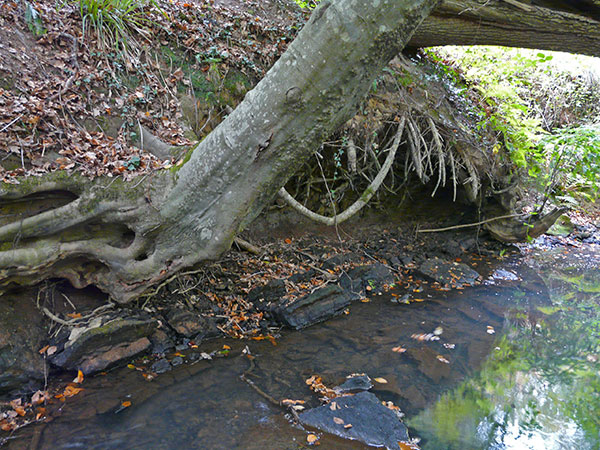
East Sussex Local Geological Sites - Dallington Forest (img 1019)
Flaggy sandstones outcropping at stream edge and showing steep near vertical dip. Top of cave-like structure at back is collapsing and obscuring the bank exposure.
Photo taken: 04/10/2011
Grid ref: TQ65192070
Direction west
Image file: P1050563ed.jpg

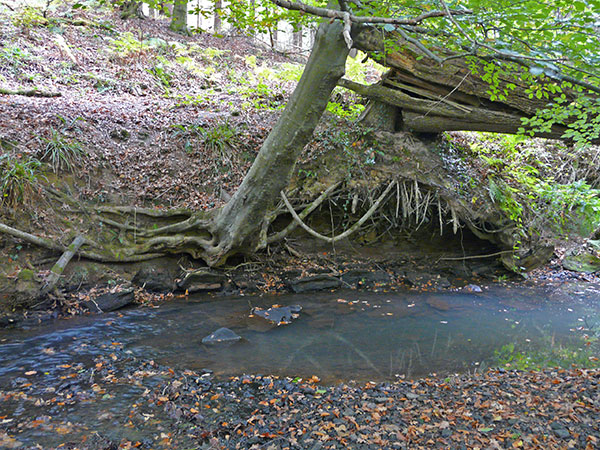
East Sussex Local Geological Sites - Dallington Forest (img 1020)
Site viewed from east bank showing steeply dipping beds outcropping at stream edge. Undercutting of the bank has toppled the trees above and is collapsing the roof of the cave like feature.
Photo taken: 04/10/2011
Grid ref: TQ65192070
Direction SW
Image file: P1050565ed.jpg

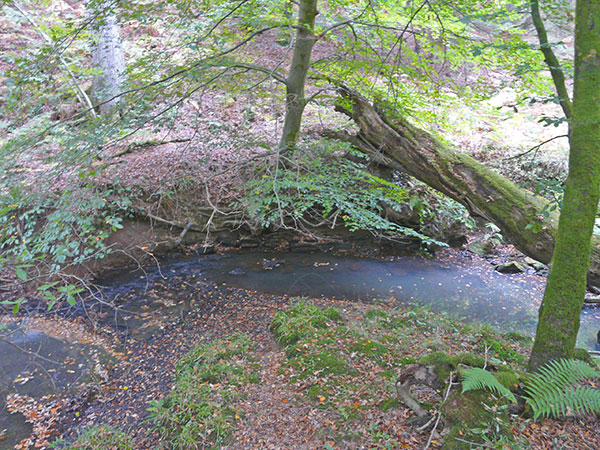
East Sussex Local Geological Sites - Dallington Forest (img 1021)
Overview of site from east bank of Willingford stream showing steeply dipping beds outcropping at stream edge. Undercutting of the bank has toppled the trees above and is collapsing the roof of the cave like feature.
Photo taken: 04/10/2011
Image file: P1050575ed.jpg

Galley Hill, Bexhill (TQ70/08)
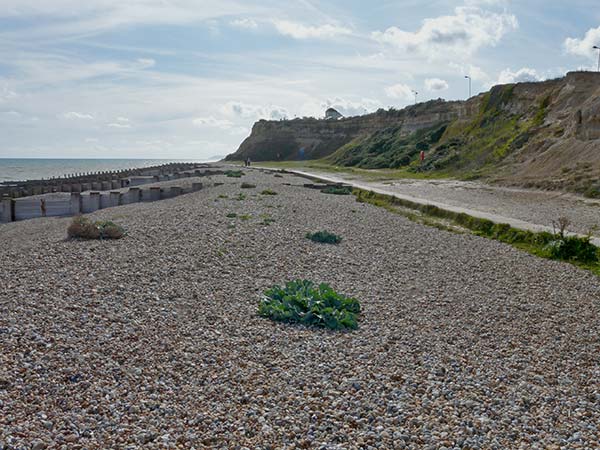
East Sussex Local Geological Sites - Galley Hill (img 1023)
Eastern end of the cliffs and foreshore as far as Galley Hill lookout, exposing Tunbridge Wells Sand Formation. Lower part of cliffs obscured by talus and vegetated talus. Note the sea defences and the scattered shingle vegetation.
Photograph taken: 24/08/2011
Grid ref. TQ56130775
Direction WSW
Image file: P1050145ed.jpg


East Sussex Local Geological Sites - Galley Hill (img 1024)
Cliff about 8 m high exposing clays with silty interbeds (including a thick siltstone unit) and sandy interbeds in the upper cliff.
Dip to right (northeasterly).
1 m pole for scale.
Photograph taken: 24/08/2011
Grid ref. TQ56100774
Direction north
Image file: P1050146ed.jpg

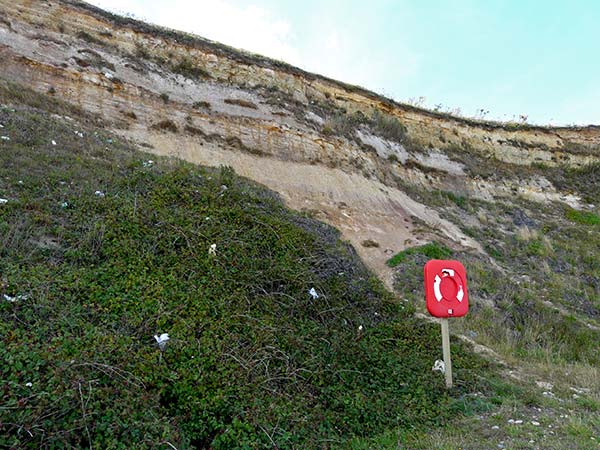
East Sussex Local Geological Sites - Galley Hill (img 1025)
Cliff about 12 m high at east side of Galley Hill lookout. Upper part exposes thick silty units with intervening clays.
Dip to right (northeasterly).
Photograph taken: 24/08/2011
Grid ref. TQ55990766
Direction north
Image file: P1050147ed.jpg

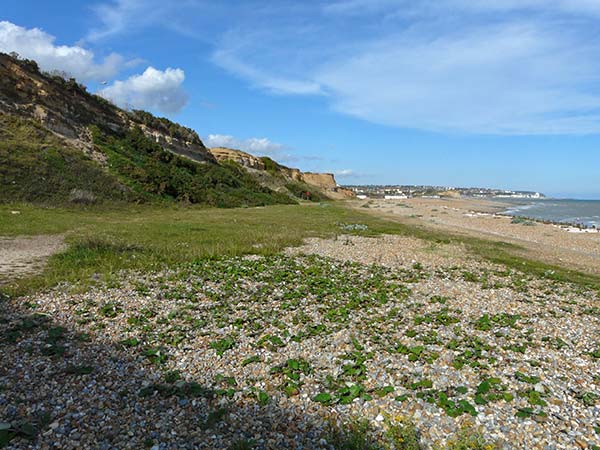
East Sussex Local Geological Sites - Galley Hill (img 1026)
Eastern cliffs and foreshore viewed from below the Galley Hill lookout showing the effects of coastal protection.
Photograph taken: 24/08/2011
Grid ref. TQ55990766
Direction ENE
Image file: P1050148ed.jpg

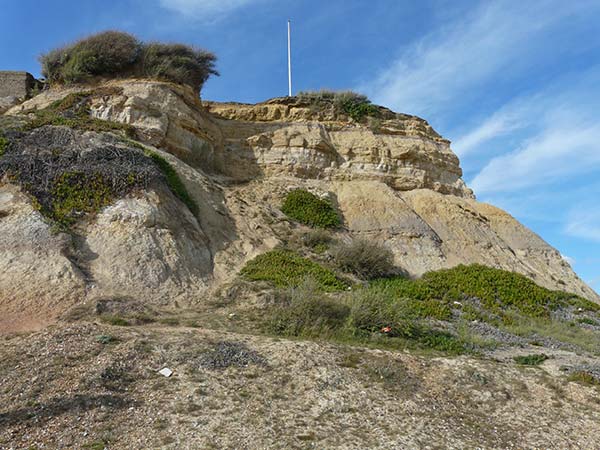
East Sussex Local Geological Sites - Galley Hill (img 1027)
Cliffs about 12 m high below Galley Hill lookout exposing clays with silty and sandy interbeds and a thick siltstone unit.
Photograph taken: 24/08/2011
Grid ref. TQ55960763
Direction NNE
Image file: P1050150ed.jpg

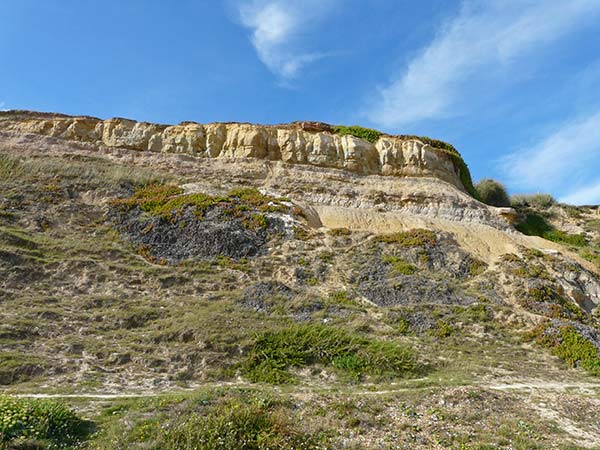
East Sussex Local Geological Sites - Galley Hill (img 1028)
Cliffs about 15 m high immediately west of Galley Hill lookout. Upper cliffs expose a massive siltstone unit underlain by thick clays and a thinner siltstone unit.
Dip to right (northeasterly).
Photograph taken: 24/08/2011
Grid ref. TQ55920762
Direction north
Image file: P1050151ed.jpg

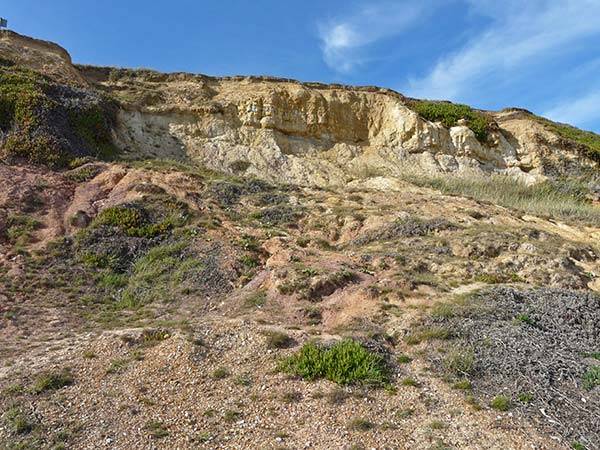
East Sussex Local Geological Sites - Galley Hill (img 1029)
Cliff west of Galley Hill lookout. Upper cliff exposes a massive siltstone unit underlain by thick clays with silty interbeds.
Dip to right (northeasterly).
Photograph taken: 24/08/2011
Grid ref. TQ55870760
Direction north
Image file: P1050153ed.jpg

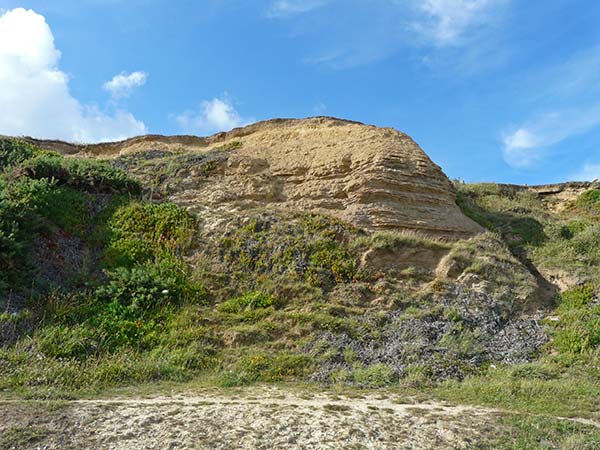
East Sussex Local Geological Sites - Galley Hill (img 1030)
Cliff about 12 m high west of Galley Hill lookout. Upper cliff exposes clays with numerous sandy seams. Bedding near horizontal.
Photograph taken: 24/08/2011
Grid ref. TQ55840759
Direction north
Image file: P1050154ed.jpg


East Sussex Local Geological Sites - Galley Hill (img 1031)
Cliffs about 12 m high at western end of site. Upper cliffs expose clays with interbedded sandy seams overlying a massive siltstone unit and clays. Dip to right (northeasterly). Lower parts of the cliffs are obscured by vegetated talus and slide debris.
Photograph taken: 24/08/2011
Grid ref. TQ55740755
Direction NE
Image file: P1050159ed.jpg


East Sussex Local Geological Sites - Galley Hill (img 1032)
Close-up of right (east) end of upper cliff shown in photo 11. Exposes thick clays at bottom, overlain by a massive siltstone unit capped by a sandstone layer. The top of the cliff exposes clays with numerous sandy seams.
Photograph taken: 24/08/2011
Image file: P1050161ed.jpg

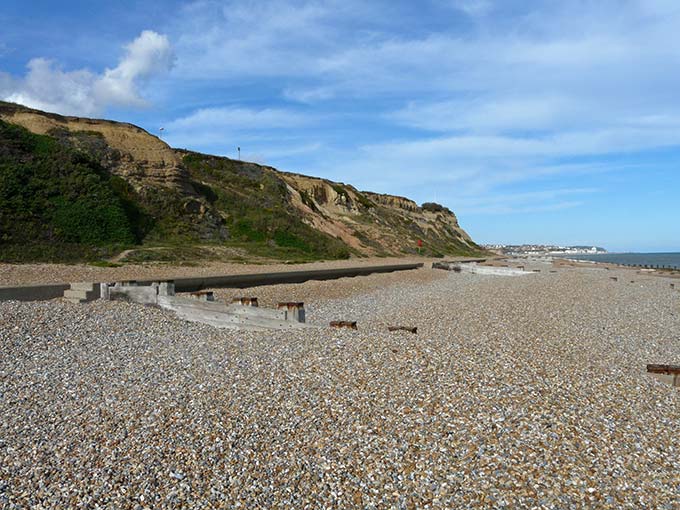
East Sussex Local Geological Sites - Galley Hill (img 1033)
Cliffs and foreshore west of Galley Hill lookout. Upper cliffs expose Tunbridge Wells Sand Formation and lower parts of the cliffs are obscured by vegetated talus and slide debris.
Photograph taken: 24/08/2011
Grid ref. TQ55810756
Direction ENE
Image file: P1050162ed.jpg

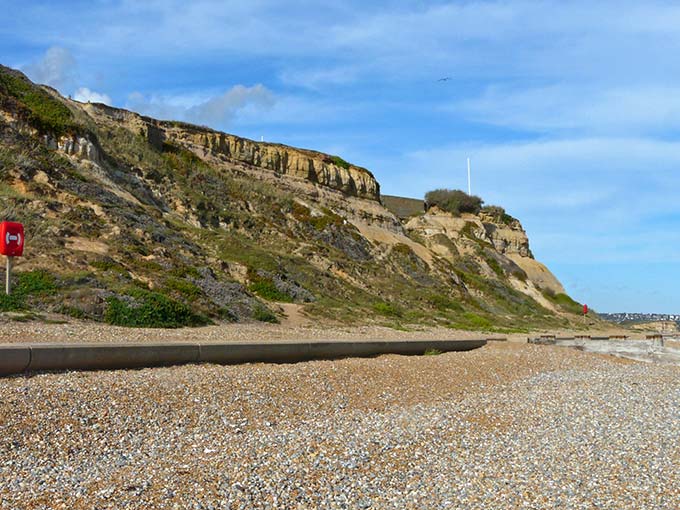
East Sussex Local Geological Sites - Galley Hill (img 1034)
Cliffs and foreshore at Galley Hill lookout. Upper cliffs expose siltstones and clays dipping to right (northeasterly). Middle and lower parts of the cliffs are obscured by vegetated talus and slide debris.
Photograph taken: 24/08/2011
Grid ref. TQ55870758
Direction NE
Image file: P1050163ed.jpg

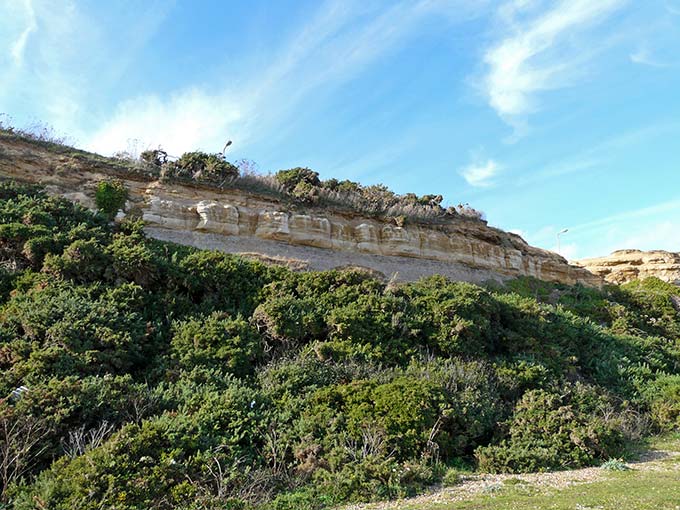
East Sussex Local Geological Sites - Galley Hill (img 1035)
Upper cliff exposes clays and a thick siltstone unit. Lower part of cliff obscured by vegetated talus and landslip debris.
Photograph taken: 24/08/2011
Grid ref. TQ56040770
Direction north
Image file: P1050165ed.jpg

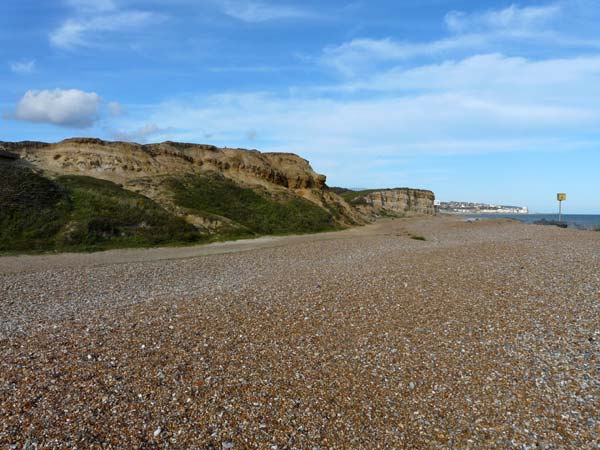
DUPLICATE (img 1036)
DUPLICATE
Image file: P1050166ed.jpg

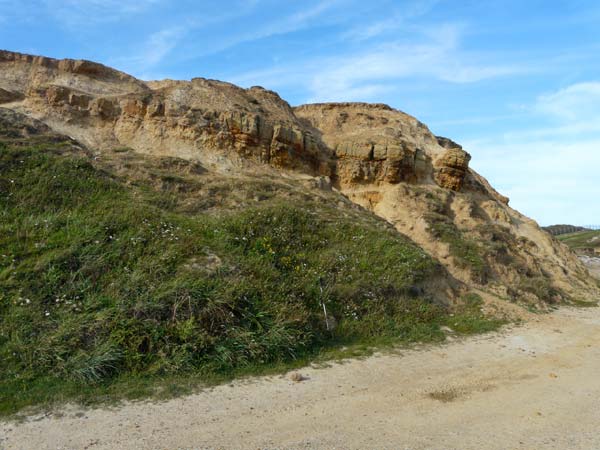
DUPLICATE (img 1037)
DUPLICATE
Image file: P1050167ed.jpg

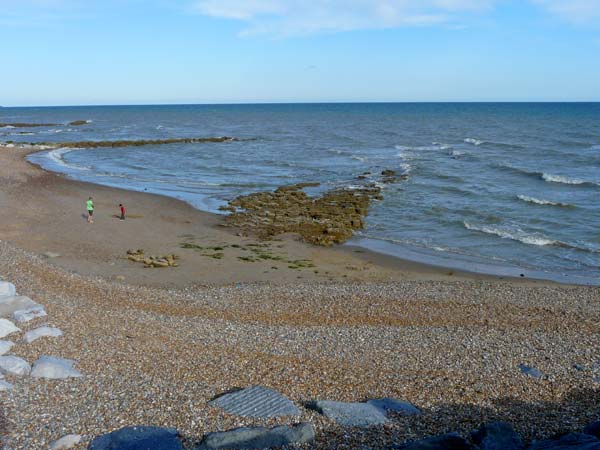
DUPLICATE (img 1038)
DUPLICATE
Image file: P1050168ed.jpg

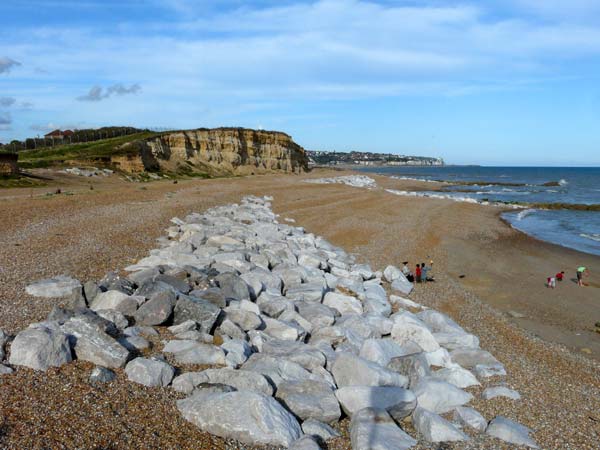
DUPLICATE (img 1039)
DUPLICATE
Image file: P1050169ed.jpg

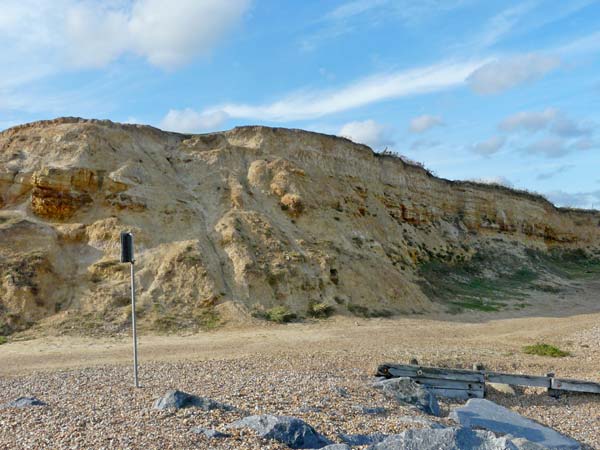
DUPLICATE (img 1040)
DUPLICATE
Image file: P1050170ed.jpg


DUPLICATE (img 1041)
DUPLICATE
Image file: P1050171edjpg.jpg


DUPLICATE (img 1042)
DUPLICATE
Image file: P1050173ed.jpg

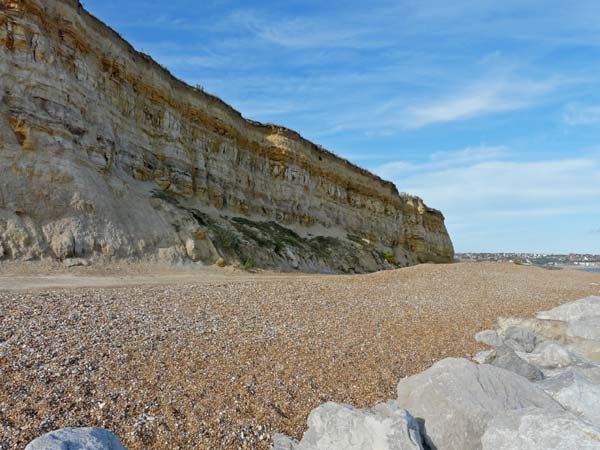
DUPLICATE (img 1043)
DUPLICATE
Image file: P1050175ed.jpg

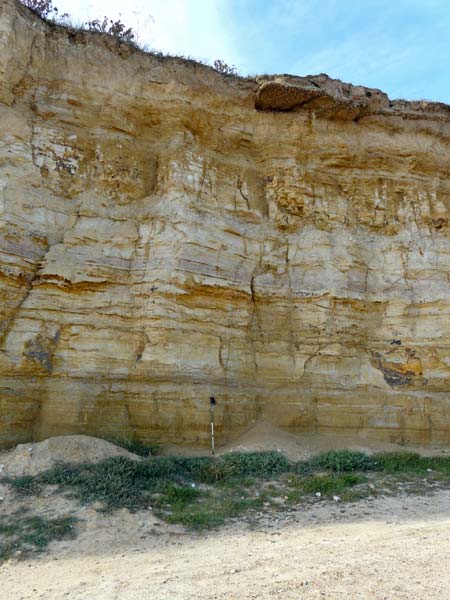
DUPLICATE (img 1044)
DUPLICATE
Image file: P1050176ed.jpg


DUPLICATE (img 1045)
DUPLICATE
Image file: P1050177ed.jpg

Little Galley Hill, Bexhill (TQ70/09b)

East Sussex Local Geological Sites - Little Galley Hill (img 1047)
Low cliffs and foreshore from western end exposing lower Ashdown Formation with dip to right (southeasterly).
Photograph taken: 24/08/2011
Grid ref. TQ76490789
Direction NE
Image file: P1050166ed.jpg


East Sussex Local Geological Sites - Little Galley Hill (img 1048)
Closer view of nearest cliff in photo 1. About 6 m high exposing a thick sandy unit with clays and silts above and below.
1 m pole for scale.
Photograph taken: 24/08/2011
Grid ref. TQ76520790
Direction NE
Image file: P1050167ed.jpg


East Sussex Local Geological Sites - Little Galley Hill (img 1049)
Small exposure of Ashdown Formation sandstones on wavecut platform probably extending parallel to the strike of the beds. The other rocks visible are part of the coastal defences.
Photograph taken: 24/08/2011
Grid ref. TQ76540790
Direction SE
Image file: P1050168ed.jpg


East Sussex Local Geological Sites - Little Galley Hill (img 1050)
Start of main eastern cliffs viewed from foreshore. Cliffs expose sandstones, siltstones and clays of the Ashdown Formation. Rock armour and rock groynes provide coastal protection.
Photograph taken: 24/08/2011
Grid ref. TQ76540790
Direction ENE
Image file: P1050169ed.jpg


East Sussex Local Geological Sites - Little Galley Hill (img 1051)
Low cliffs about 10 m high in Ashdown Formation exposing mainly siltstones and clays with a thick sandy unit in the middle.
Photograph taken: 24/08/2011
Grid ref. TQ76540790
Direction NNE
Image file: P1050170ed.jpg

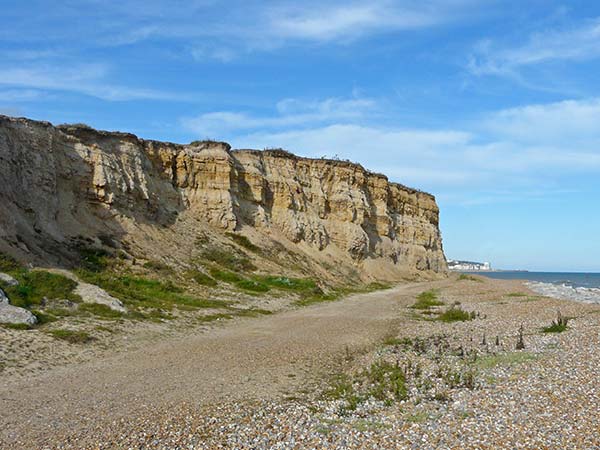
East Sussex Local Geological Sites - Little Galley Hill (img 1052)
Start of main eastern cliffs cut in Asdown Formation with prominent bedding dipping to right (southeasterly). Beyond the point these cliffs are fully exposed down to beach level.
Photograph taken: 24/08/2011
Grid ref. TQ76620795
Direction ENE
Image file: P1050171ed.jpg

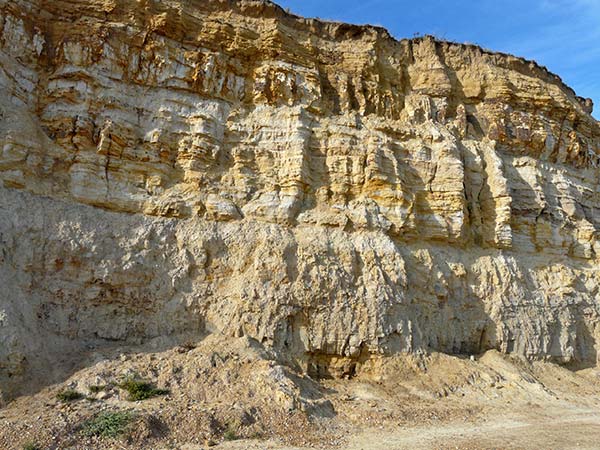
East Sussex Local Geological Sites - Little Galley Hill (img 1053)
Cliff face about 10 m high exposing Ashdown Formation with a sandy upper unit overlying a thick siltstone interval with sandy bands. Beneath this is are clays and silts.
Photograph taken: 24/08/2011
Grid ref. TQ76690797
Direction north
Image file: P1050173ed.jpg


East Sussex Local Geological Sites - Little Galley Hill (img 1054)
Main cliffs extending east with good exposures of Ashdown Formation and dip to right (easterly).
Photograph taken: 24/08/2011
Grid ref. TQ76710797
Direction ENE
Image file: P1050175ed.jpg


East Sussex Local Geological Sites - Little Galley Hill (img 1055)
Cliff face about 8m high exposing Ashdown Formation interbedded siltstones,sands and clays with fine laminations showing detail of the bedding.
1 m pole for scale.
Photograph taken: 24/08/2011
Grid ref. TQ76770800
Direction north
Image file: P1050176ed.jpg

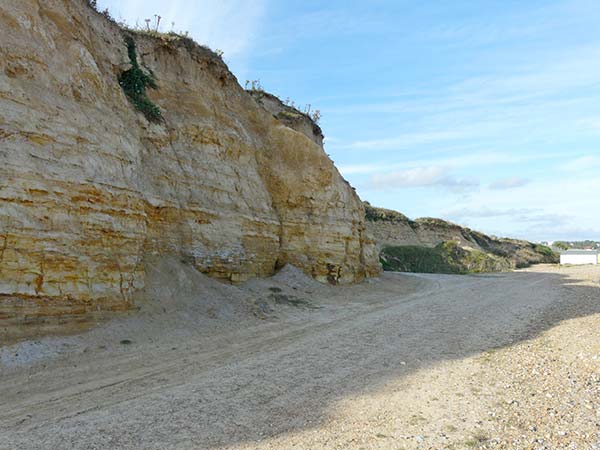
East Sussex Local Geological Sites - Little Galley Hill (img 1056)
Cliff height diminishes towards the eastern end of the site across Glyne gap. Siltstones with sandy interbeds are exposed down to the cliff base.
Photograph taken: 24/08/2011
Grid ref. TQ76780801
Direction NE
Image file: P1050177ed.jpg

Ashdown Brickworks, Bexhill (TQ70/12)
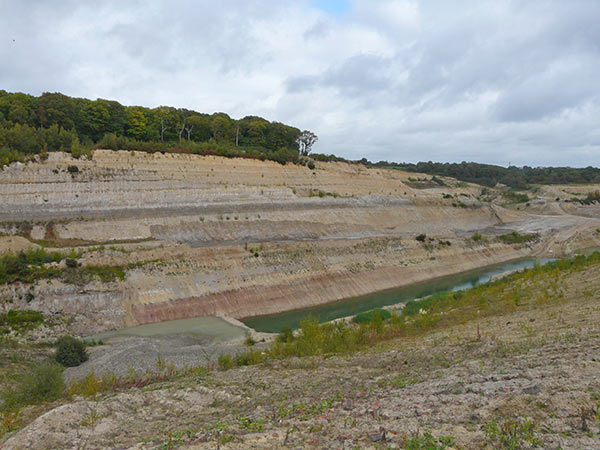
East Sussex Local Geological Sites - Ashdown Brickworks, Bexhill (img 1058)
North side of southwestern pit excavated in Tunbridge Wells Sand Formation. Shows “Red” clay in lower face, “Grey” clay in middle face and sandstones and siltstones in the upper face.
Photo taken: 05/10/2011
Grid ref TQ71690937
Direction NE
Image file: P1050581ed.jpg

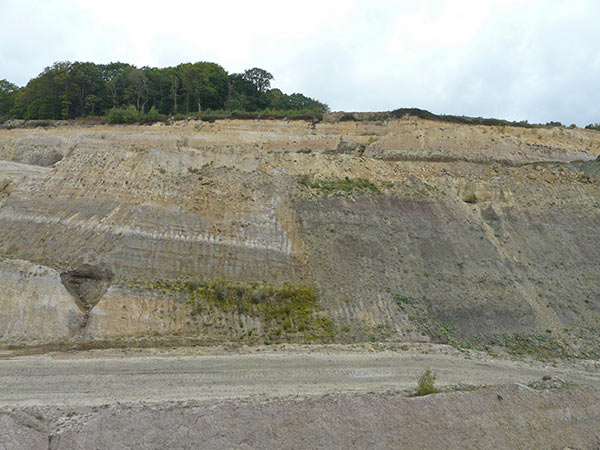
East Sussex Local Geological Sites - Ashdown Brickworks, Bexhill (img 1059)
Whydown Fault separating the southwestern and northeastern pits. Juxtaposes clays and siltstones of Tunbridge Wells Sand Formation to the left against clay and Northiam Sandstone in the Wadhurst Clay Formation to the right. Fault plane close to vertical and downthrown to left (south).
Photo taken: 05/10/2011
Grid ref TQ71960957
Direction WNW
Image file: P1050593ed.jpg

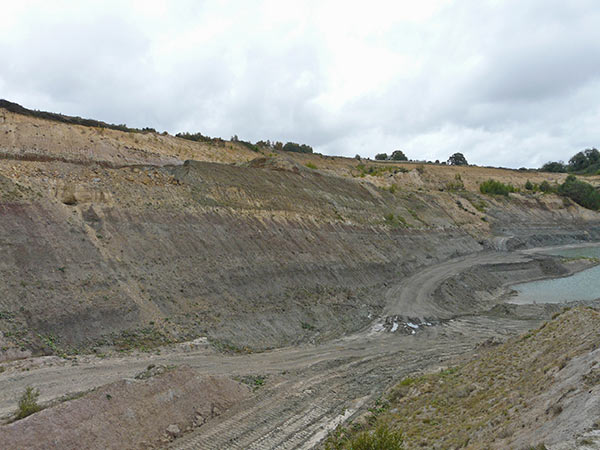
East Sussex Local Geological Sites - Ashdown Brickworks, Bexhill (img 1060)
Lower face of northeastern pit cut in Wadhurst Clay. Exposes “lower Blue” clay which varies from dark grey to dark reddish colour. Includes minor sands and the thick Northiam Sandstone in the upper and middle part of the face. A bench separates this face from a higher face cut in uppermost Wadhurst Clay and basal Tunbridge Wells Sand Formation.
Photo taken: 05/10/2011
Grid ref TQ71960957
Direction north
Image file: P1050595ed.jpg

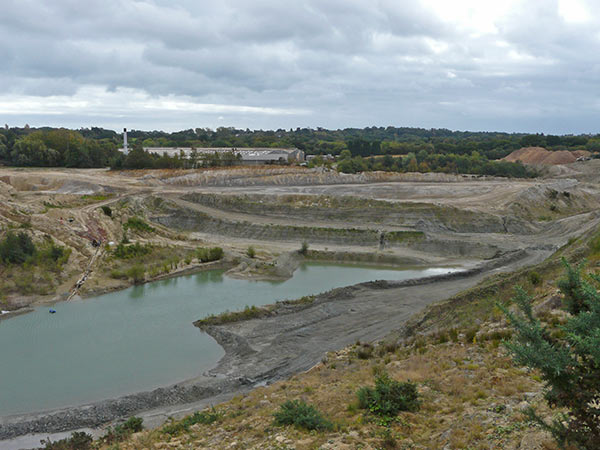
East Sussex Local Geological Sites - Ashdown Brickworks, Bexhill (img 1061)
Southern end of northeastern pit in Wadhurst Clay Formation has benches giving access to lower parts of the “lower Blue” clay. Beyond this across the Whydown fault is a low face cut in Tunbridge Wells Sand Formation showing a prominent lignite band dipping to the left.
Photo taken: 05/10/2011
Grid ref TQ72010978
Direction SSE
Image file: P1050606ed.jpg

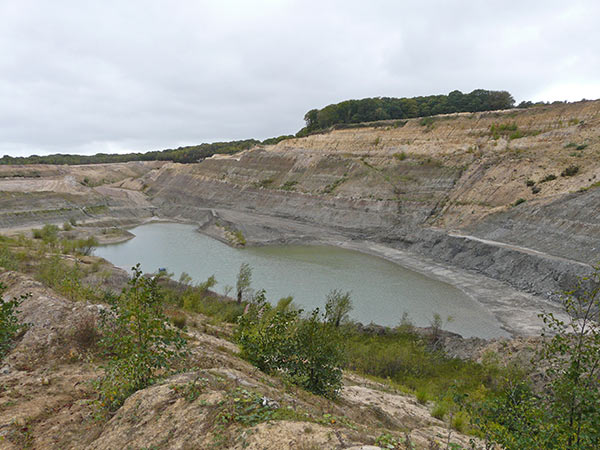
East Sussex Local Geological Sites - Ashdown Brickworks, Bexhill (img 1062)
Northeastern pit showing lower Wadhurst Clay face with prominent Northiam Sandstone bed in centre. The overlying Tunbridge Wells Sand Formationcomprises sandstones and siltstones which are less consolidated than those in the southwestern pit and tend to slump over the clay face as seen at right of photo.
Photo taken: 05/10/2011
Grid ref TQ72130974
Direction SW
Image file: P1050608ed.jpg

River Line, Netherfield (TQ71/135)
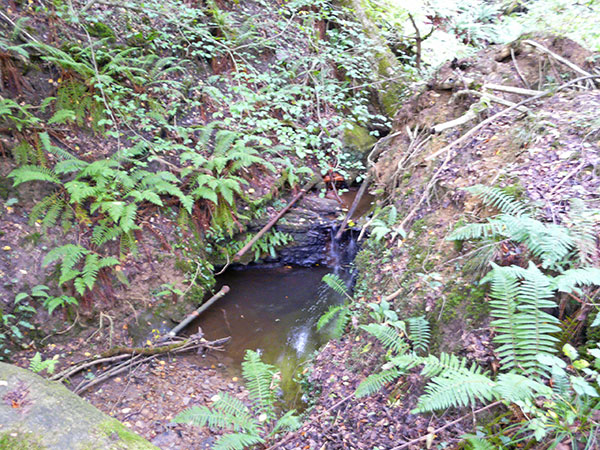
East Sussex Local Geological Sites - River Line (img 1064)
Small waterfall marking a limestone bed in Greys Limestone.
Photograph taken: 15/09/2011
Grid ref. TQ71491906
Direction west
Image file: P1050343ed.jpg

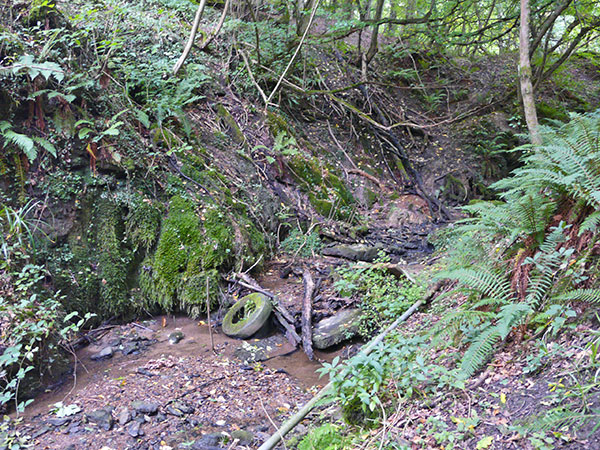
East Sussex Local Geological Sites - River Line (img 1065)
Bank exposures are obscured by vegetation or talus. Hard, dark shaley beds outcrop on the stream bed along with rubbish such as old tyres.
Photograph taken: 15/09/2011
Grid ref. TQ71501905
Direction SW
Image file: P1050344ed.jpg

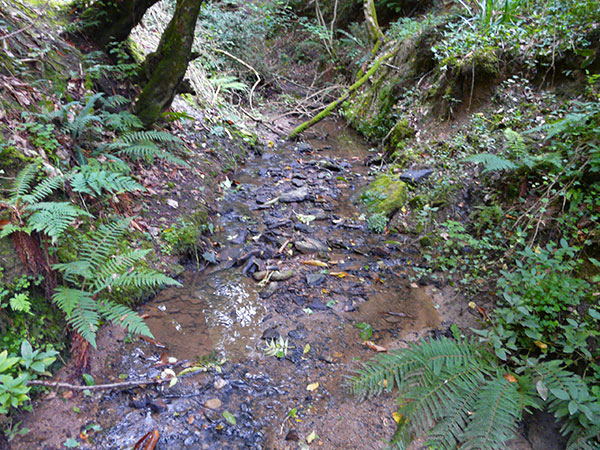
East Sussex Local Geological Sites - River Line (img 1066)
Dark shaley beds outcropping in the stream bed.
Photograph taken: 15/09/2011
Grid ref. TQ71511906
Direction east
Image file: P1050346ed.jpg

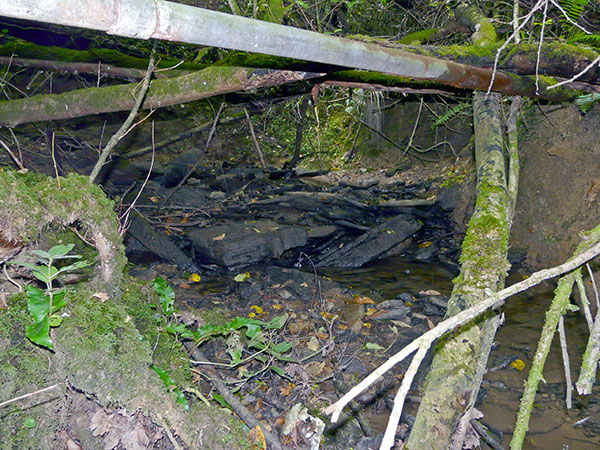
East Sussex Local Geological Sites - River Line (img 1067)
Slabs of dark harder shaley beds outcrop on the stream bed beneath fallen branches and discarded pipework.
Photo taken under very low light conditions.
Photograph taken: 15/09/2011
Grid ref. TQ71561906
Direction NW
Image file: P1050351ed.jpg

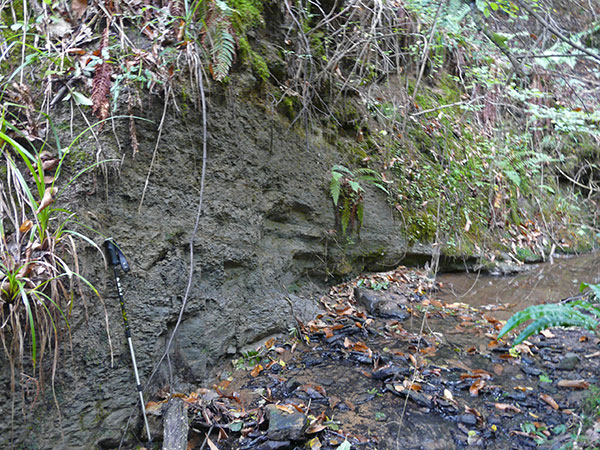
East Sussex Local Geological Sites - River Line (img 1068)
Bank exposure of grey clays with some thin more resistant beds, probably limestones. Shows steep dip to north, probably due to localised valley bulging.
1 m pole for scale.
Photograph taken: 15/09/2011
Grid ref. TQ71581908
Direction SE
Image file: P1050356ed.jpg

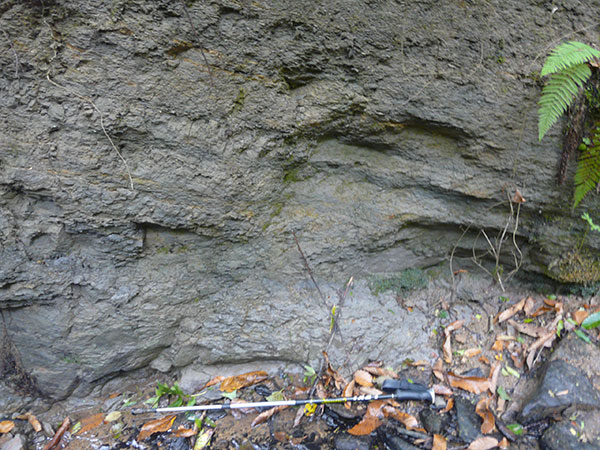
East Sussex Local Geological Sites - River Line (img 1069)
Detail of base of outcrop shown in photo 7. Exposes grey clays with thin more resistant beds, probably limestones.
1 m pole for scale.
Photograph taken: 15/09/2011
Grid ref. TQ71581908
Image file: P1050359.jpg

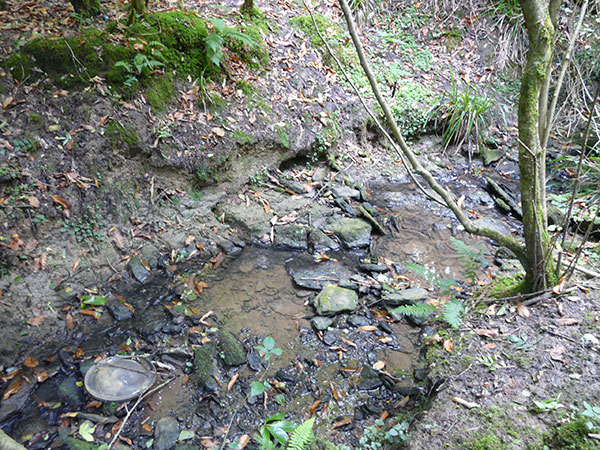
East Sussex Local Geological Sites - River Line (img 1070)
Outcrop of harder shaley beds in stream bed and bank. Probably from middle of Purbeck Group sequence.
Photograph taken: 15/09/2011
Grid ref. TQ71601910
Direction SSE
Image file: P1050360.jpg

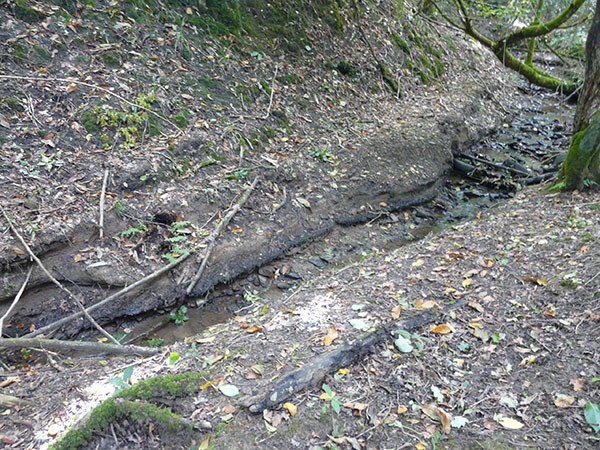
East Sussex Local Geological Sites - River Line (img 1071)
Bank exposure with dark shaley beds at base and lighter clays above which include more resistant layers, probably thin limestones. Middle of Purbeck Group sequence.
Photograph taken: 15/09/2011
Grid ref. TQ71661913
Direction SW
Image file: P1050366.jpg

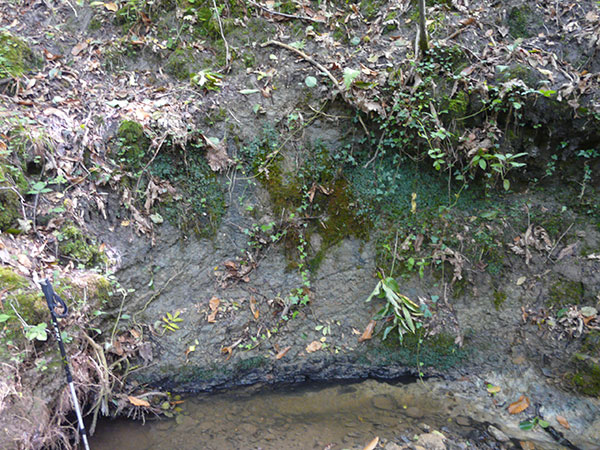
East Sussex Local Geological Sites - River Line (img 1072)
Bank exposure of grey clays with darker more shaley mudstone at base. Middle part of Purbeck sequence.
1 m pole for scale
Photograph taken: 15/09/2011
Grid ref. TQ71701914
Direction south
Image file: P1050371.jpg

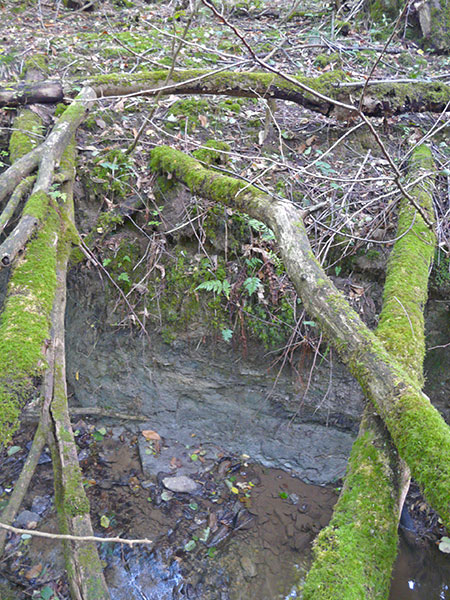
East Sussex Local Geological Sites - River Line (img 1073)
Bank exposure of grey clays and mudstones from middle part of Purbeck sequence.
Photograph taken: 15/09/2011
Grid ref. TQ71731916
Direction SW
Image file: P1050373ed.jpg

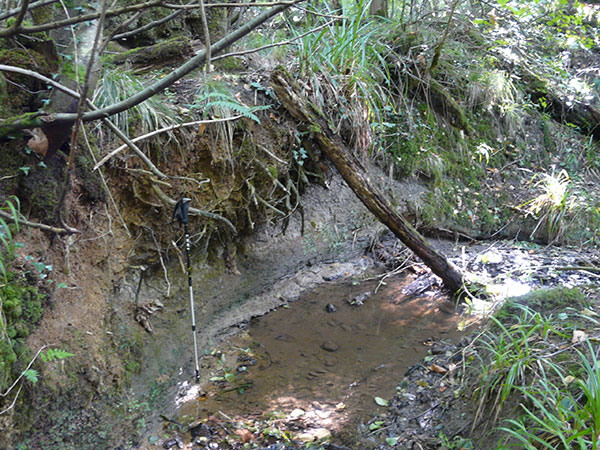
East Sussex Local Geological Sites - River Line (img 1074)
Bank exposure of grey clays with more resistant shale or limestone at the base. Possibly part of Blues Limestones beds.
1 m pole for scale.
Photograph taken: 15/09/2011
Grid ref. TQ71781916
Direction south
Image file: P1050375.jpg

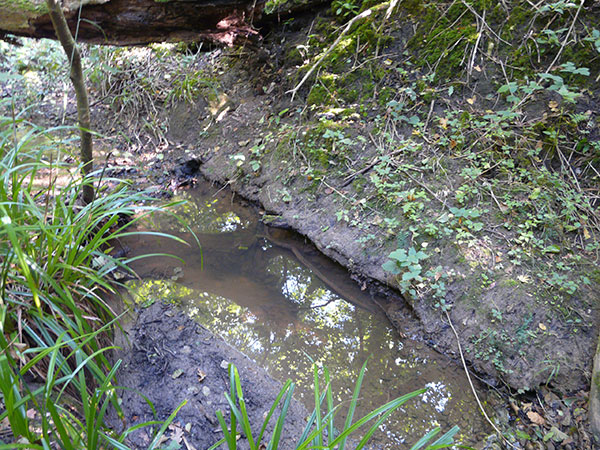
East Sussex Local Geological Sites - River Line (img 1075)
Bank exposures of more resistant shale or limestone. Probably part of the Blues Limestones sequence.
Photograph taken: 15/09/2011
Grid ref. TQ71791918
Direction SW
Image file: P1050378.jpg

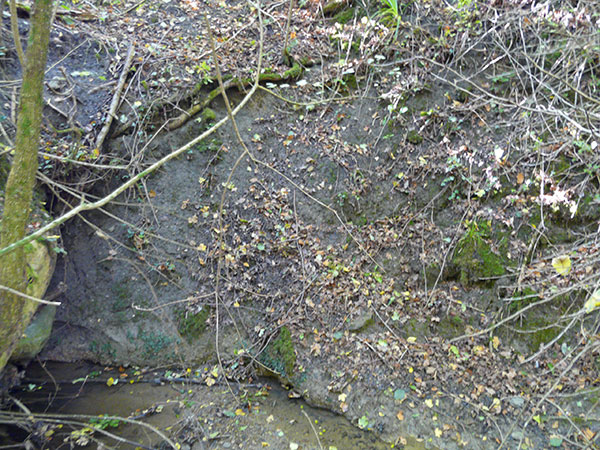
East Sussex Local Geological Sites - River Line (img 1076)
Vegetated bank to right of photo 14 exposing grey clays.
Photograph taken: 15/09/2011
Grid ref. TQ71791918
Direction north
Image file: P1050379ed.jpg

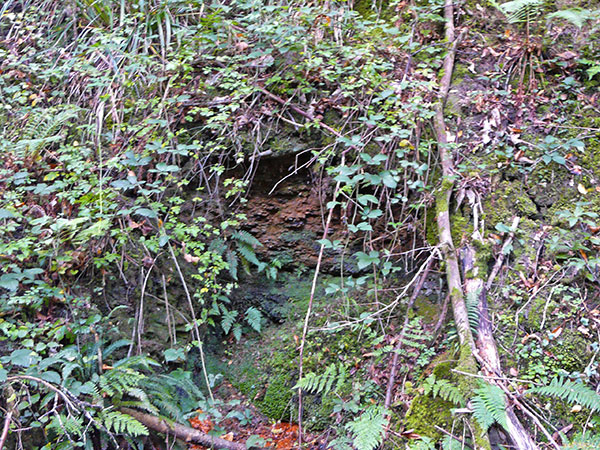
East Sussex Local Geological Sites - River Line (img 1077)
Small outcrop above south bank of stream probably representing the ironstone beds.
Photo taken with zoom lens.
Photograph taken: 15/09/2011
Grid ref. TQ71531907
Direction SSE
Image file: P1050381ed.jpg


East Sussex Local Geological Sites - River Line (img 1078)
Effluent outlet pipe from treatment works is located above what appears to be an exposure of Greys Limestone. Photo taken under very low light conditions.
Photograph taken: 15/09/2011
Grid ref. TQ71461907
Direction south
Image file: P1050384ed.jpg

Marline Valley Woods, Hastings (TQ71/38)
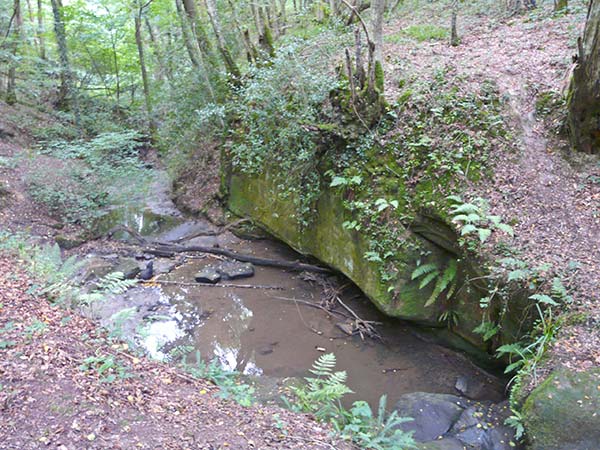
East Sussex Local Geological Sites - Marline Valley Woods (img 1080)
Sandstone face below main waterfall showing undercutting at base where thinner bedded flaggy sandstones occur.
Photograph taken: 25/08/2011
Approx grid ref. TQ78031230
Direction WSW
Image file: P1050181ed.jpg


East Sussex Local Geological Sites - Marline Valley Woods (img 1081)
Close-up of massive sandstone face 4m high on west bank of stream below main waterfall. Bedding detail is obscured by moss and other vegetation. Base is undercut where thinner bedded flaggy sandstone is present.
Photograph taken: 25/08/2011
Approx grid ref. TQ78011230
Direction NW
Image file: P1050184ed.jpg

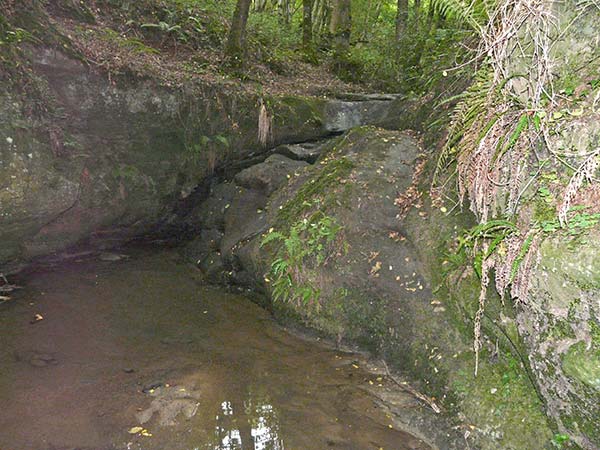
East Sussex Local Geological Sites - Marline Valley Woods (img 1082)
Main waterfall about 2 m high cutting through the lower part of the massive sandstone layer. The erosional surface appears ton follow the base of a channel structure in the sandstone.
Photograph taken: 25/08/2011
Approx grid ref. TQ78021230
Direction NW
Image file: P1050188ed.jpg

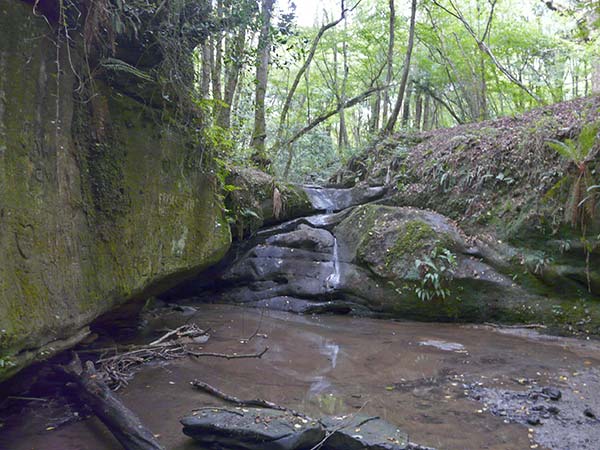
East Sussex Local Geological Sites - Marline Valley Woods (img 1083)
Main waterfall where stream cuts through the massive sandstone unit. Erosion has picked out channel structures in the sandstone.
Photograph taken: 25/08/2011
Grid ref. (TQ78021231 ?)
Direction NE
Image file: P1050190ed.jpg

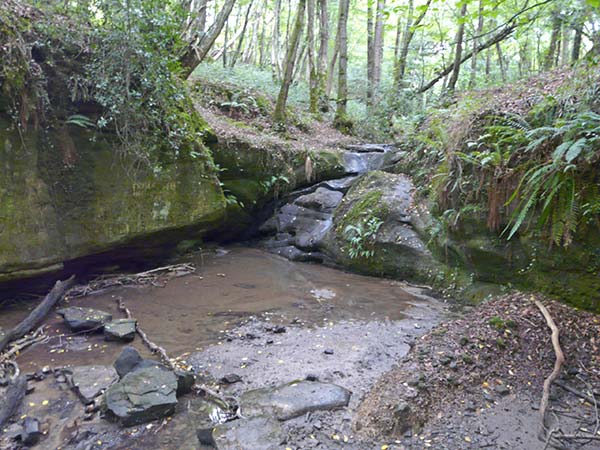
East Sussex Local Geological Sites - Marline Valley Woods (img 1084)
Main waterfall where stream cuts through the massive sandstone unit. Erosion has picked out channel structures in the sandstone.
Photograph taken: 25/08/2011
Approx grid ref. TQ78011230
Direction NNE
Image file: P1050192ed.jpg


East Sussex Local Geological Sites - Marline Valley Woods (img 1085)
Stream bed above lower waterfall follows a bedding plane surface in the sandstone picked out by erosion.
Photograph taken: 25/08/2011
Approx grid ref. TQ78011230
Direction west
Image file: P1050195ed.jpg

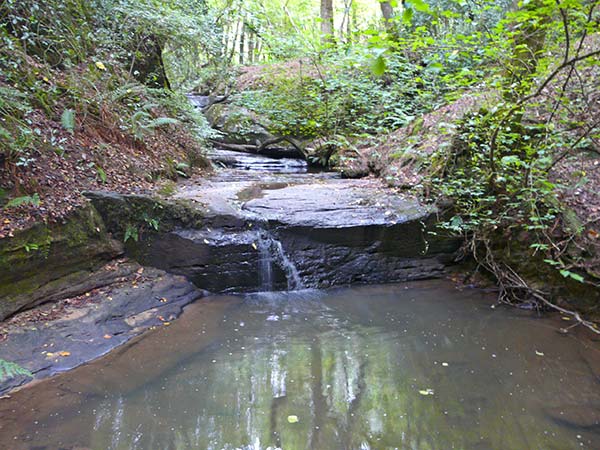
East Sussex Local Geological Sites - Marline Valley Woods (img 1086)
Lower waterfall cut in flaggy sandstone which shows cross bedding at left. Stream bed above the waterfall follows bedding plane surfaces in the sandstone, picked ou by erosion.
Photograph taken: 25/08/2011
Approx grid ref. TQ78001229
Direction NE
Image file: P1050197ed.jpg

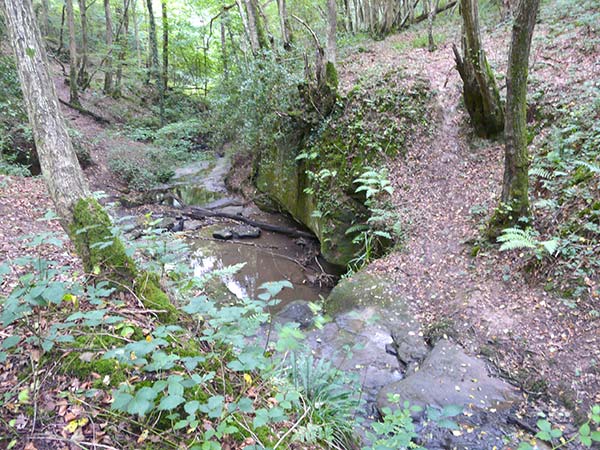
East Sussex Local Geological Sites - Marline Valley Woods (img 1087)
View of ghyll from above main waterfall showing massive sandstone in face on right and sandstone oucrops in stream bed.
Photograph taken: 25/08/2011
Approx grid ref. TQ78021231
Direction SW
Image file: P1050198ed.jpg

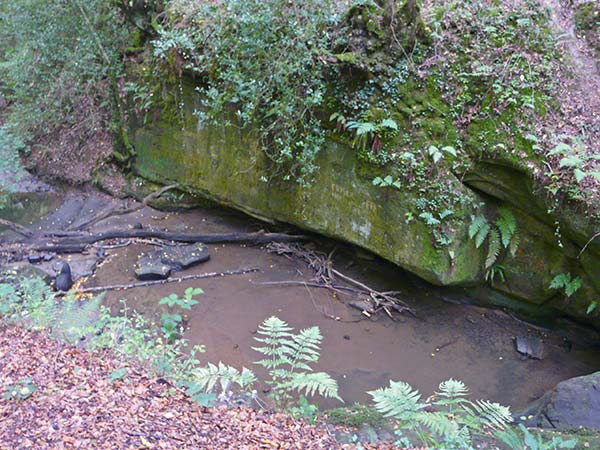
East Sussex Local Geological Sites - Marline Valley Woods (img 1088)
Massive sandstone face 4 m high with moss cover below main waterfall. Follows joint plane and is undercut at base where thinner bedded flaggy sandstones occur.
Photograph taken: 25/08/2011
Approx grid ref. TQ78011230
Direction west
Image file: P1050200ed.jpg

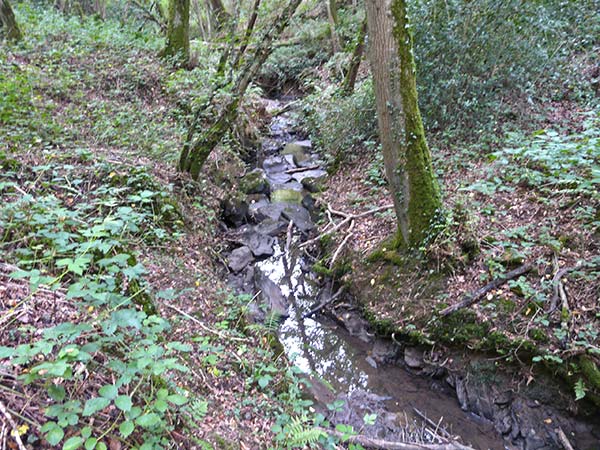
East Sussex Local Geological Sites - Marline Valley Woods (img 1089)
Outcrops of flaggy sandstone in the stream bed about 100 m upstream from the main waterfall.
Photograph taken: 25/08/2011
Approx grid ref. TQ78091235
Direction NE
Image file: P1050201ed.jpg

Freckley Hollow, Battle (TQ71/97)
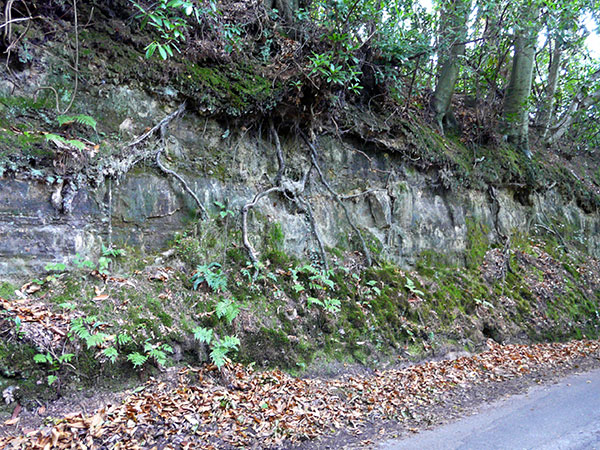
East Sussex Local Geological Sites - Freckley Hollow (img 1091)
Continuous Tunbridge Wells sandstone face along east side of lane. About 3 m high. Lower face obscured by talus.
Photograph taken: 15/09/2011
Grid ref. TQ71001477
Direction SE
Image file: P1050306ed.jpg

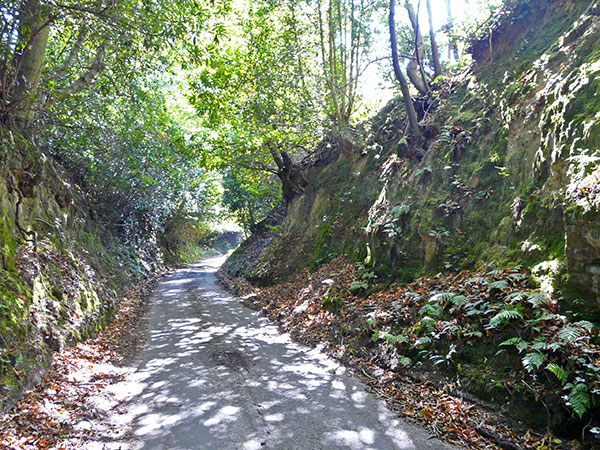
East Sussex Local Geological Sites - Freckley Hollow (img 1092)
Tunbridge Wells sandstone exposures on west side of lane near northern end. Up to 4 m high. Significant vegetation cover on faces and talus obscuring lower parts.
Photograph taken: 15/09/2011
Grid ref. TQ71001477
Direction south
Image file: P1050309ed.jpg

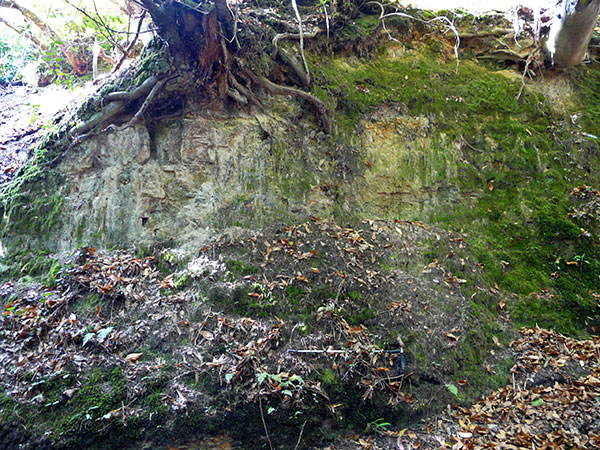
East Sussex Local Geological Sites - Freckley Hollow (img 1093)
Tunbridge Wells Sandstone face on west side of lane. Obscured by vegetation and talus.
1 m pole for scale.
Photograph taken: 15/09/2011
Grid ref. TQ71011476
Direction west
Image file: P1050313ed.jpg

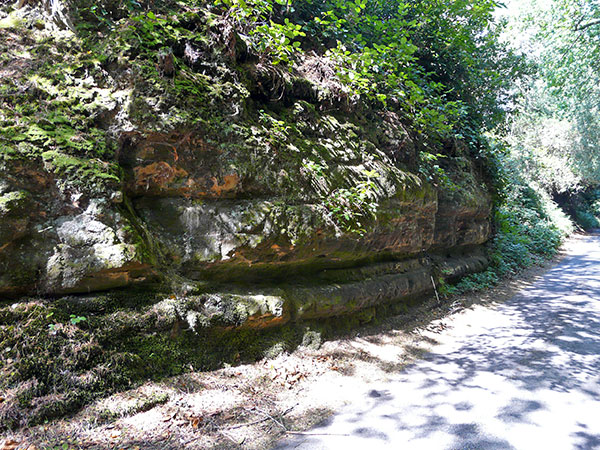
East Sussex Local Geological Sites - Freckley Hollow (img 1094)
Tunbridge Wells Sandstone face on west side of lane showing differential weathering picking out major bedding units and joints. Undercut at base.
1 m pole for scale.
Photograph taken: 15/09/2011
Grid ref. TQ71041460
Direction NW
Image file: P1050319ed.jpg


East Sussex Local Geological Sites - Freckley Hollow (img 1095)
Tunbridge Wells Sandstone face on west side of lane showing differential weathering picking out major bedding units. Sharply undercut at base. About 2 m high.
Photograph taken: 15/09/2011
Grid ref. TQ71041455
Direction NW
Image file: P1050321ed.jpg

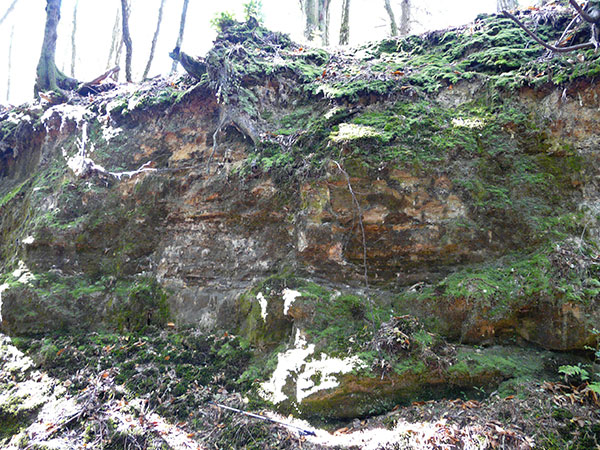
East Sussex Local Geological Sites - Freckley Hollow (img 1096)
Tunbridge Wells Sandstone face on west side of lane showing bedding detail. Significant vegetation cover.
1 m pole for scale.
Photograph taken: 15/09/2011
Grid ref. TQ71041455
Direction west
Image file: P1050323ed.jpg


East Sussex Local Geological Sites - Freckley Hollow (img 1097)
Close-up of Tunbridge Well Sandstone face on west side of lane showing fine bedding detail including cross bedding. About 1 m high.
Photograph taken: 15/09/2011
Grid ref. TQ71051453
Direction west
Image file: P1050324ed.jpg

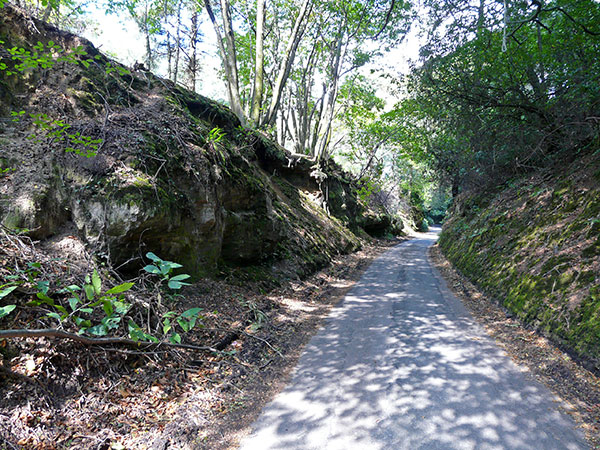
East Sussex Local Geological Sites - Freckley Hollow (img 1098)
Exposures of Tunbridge Wells Sandstone on the west side of the lane, shown in close-up in photos 5 to 7.
Photograph taken: 15/09/2011
Grid ref. TQ71051453
Direction north
Image file: P1050325ed.jpg

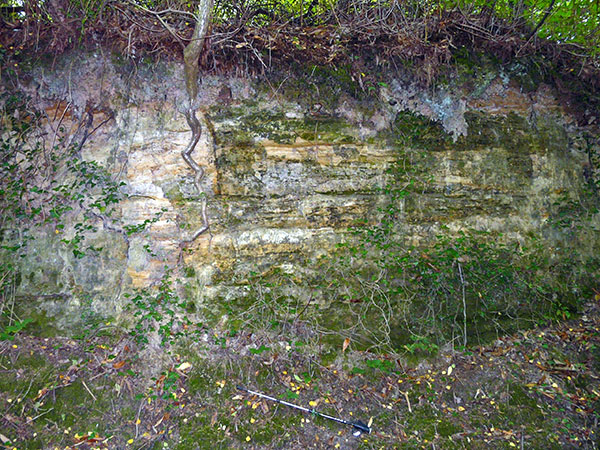
East Sussex Local Geological Sites - Freckley Hollow (img 1099)
Tunbridge Wells Sandstone face (west side) showing bedding detail with lateral thickness changes. Fine laminations visible where weathered surface removed.
1 m pole for scale.
Photograph taken: 15/09/2011
Grid ref. TQ71091443
Direction west
Image file: P1050330ed.jpg


East Sussex Local Geological Sites - Freckley Hollow (img 1100)
Tunbridge Wells Sandstone face on west side of lane. Bedding detail largely obcured by moss and other vegetation.
1 m pole for scale.
Photograph taken: 15/09/2011
Grid ref. TQ71091437
Direction west
Image file: P1050333ed.jpg


East Sussex Local Geological Sites - Freckley Hollow (img 1101)
Tunbridge Wells Sandstone face (west side) showing lateral thickness changes and some bedding detail including cross bedding.
1 m pole for scale.
Photograph taken: 15/09/2011
Grid ref. TQ71091434
Direction west
Image file: P1050335ed.jpg

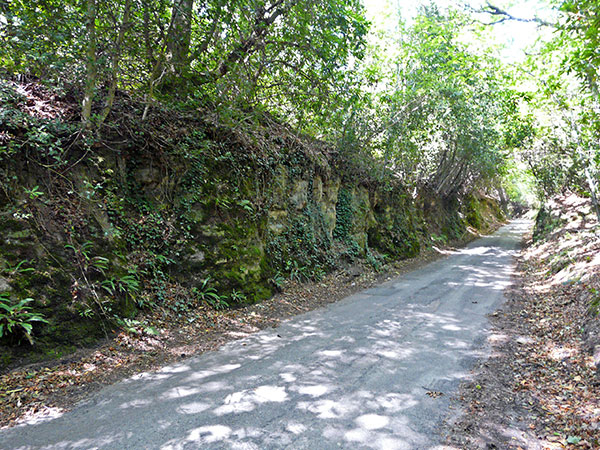
East Sussex Local Geological Sites - Freckley Hollow (img 1102)
Vegetated Tunbridge Well Sandstone face along west side of lane at southern end.
Photograph taken: 15/09/2011
Grid ref. TQ71101432
Direction NNW
Image file: P1050336ed.jpg

Brede Pit and Cutting (TQ81/07)
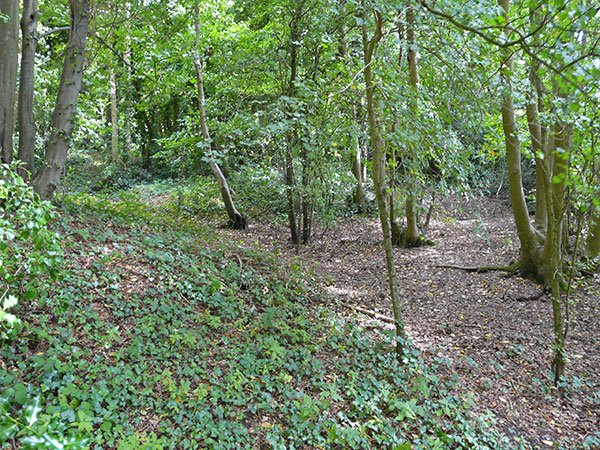
East Sussex Local Geological Sites - Brede Pit and Cuttingt (img 1104)
Centre of main pit viewed from the western end. Now extensively overgrown by trees and shrubs.
Photo taken: 25/08/2011
Grid ref TQ83101842
Direction NE
Image file: P1050209ed.jpg

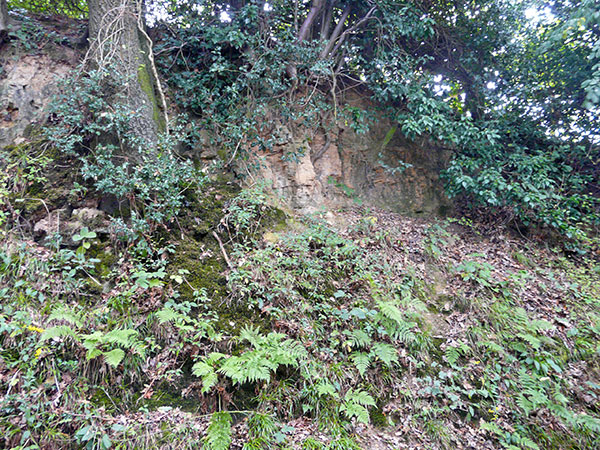
East Sussex Local Geological Sites - Brede Pit and Cuttingt (img 1105)
Thin bedded sandstone outcropping on the east side of the lane to Hare Farm. About 2 m exposed.
Photo taken: 25/08/2011
Grid ref TQ83191841
Direction ENE
Image file: P1050215ed.jpg

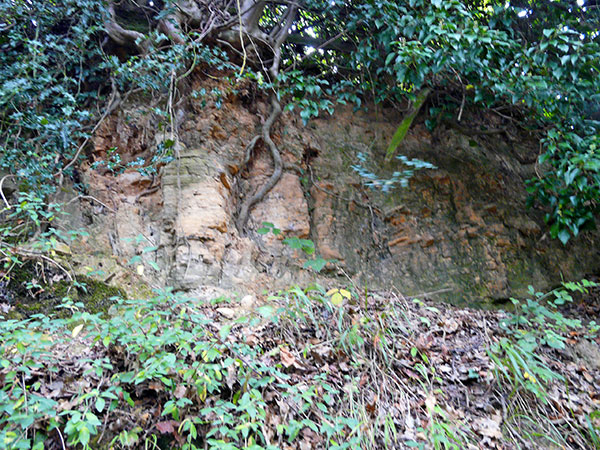
East Sussex Local Geological Sites - Brede Pit and Cuttingt (img 1106)
Close-up of thin bedded sandstone shown in photo2. About 2 m exposed.
Photo taken: 25/08/2011
Grid ref TQ83191841
Direction NE
Image file: P1050216ed.jpg

Northiam quarry (TQ82/08)
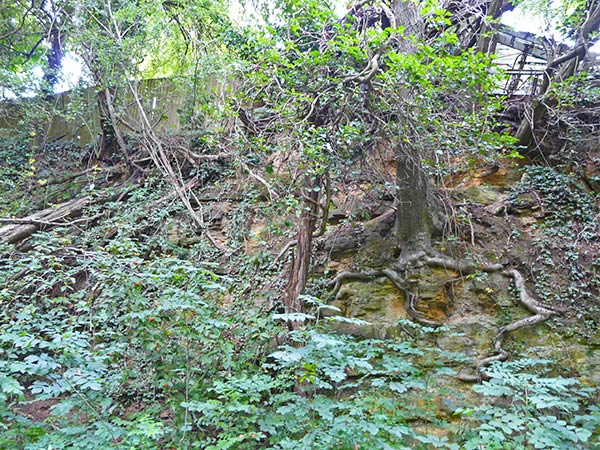
East Sussex Local Geological Sites - Northiam Quarry (img 1108)
Left (southern) side of the exposed section with considerable vegetation cover. Further left the face is obscured by slope wash and fallen trees.
Photograph taken: 28/04/2010
Approximate grid ref. TQ82922531
Direction NNW
Image file: P1050229ed.jpg

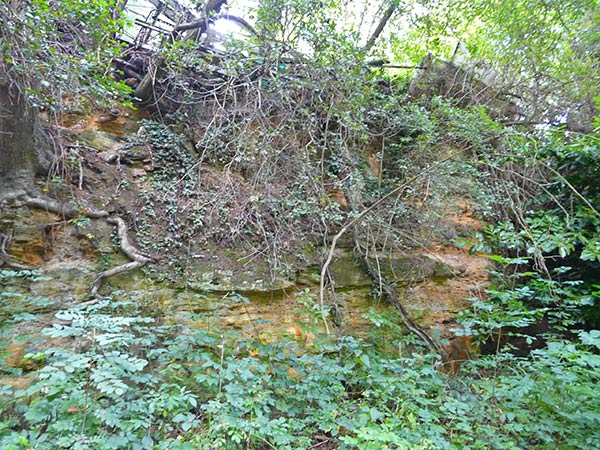
East Sussex Local Geological Sites - Northiam Quarry (img 1109)
Right (northern) side of exposed section about 4 m high obscured by vegtation on the upper part but relatively clear towards the base. Shows a succession of sandstone beds with uneven and cross bedding and lenses and partings of other lithologies. A prominent layer shows a lenticular channel shape with basal scour.
Photograph taken: 28/04/2010
Approximate grid ref. TQ82922531
Direction NNW
Image file: P1050230ed.jpg

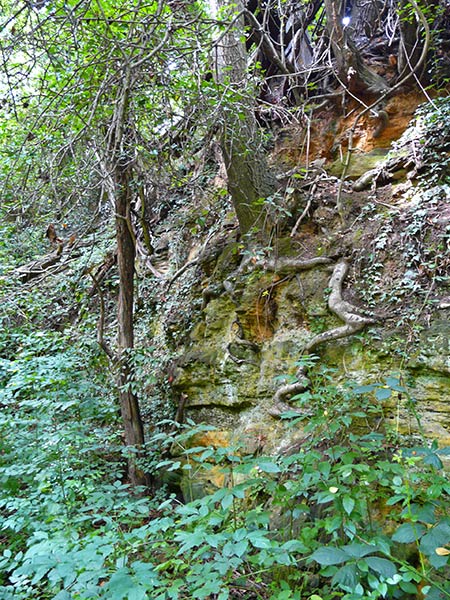
East Sussex Local Geological Sites - Northiam Quarry (img 1110)
Closer lateral view of face shown in photo 2. Exposes about 5 m of buff to cream coloured sandstones of varying thickness and lateral continuity. A lens of silty conglomerate is present towards the base.
Photograph taken: 28/04/2010
Approximate grid ref. TQ82922532
Direction NW
Image file: P1050235ed.jpg

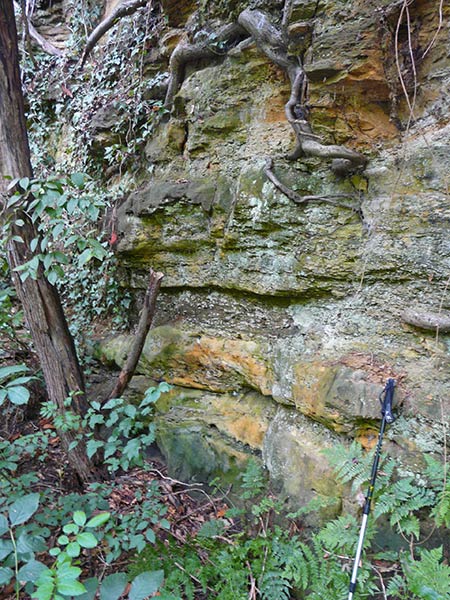
East Sussex Local Geological Sites - Northiam Quarry (img 1111)
Detail of lower part of face shown in photo 2. Exposes succession of sandstones with uneven bedding and lateral thickness variations. A lens of silty conglomerate is present towards the base.
1 m pole for scale.
Photograph taken: 28/04/2010
Approximate grid ref. TQ82922532
Image file: P1050236ed.jpg

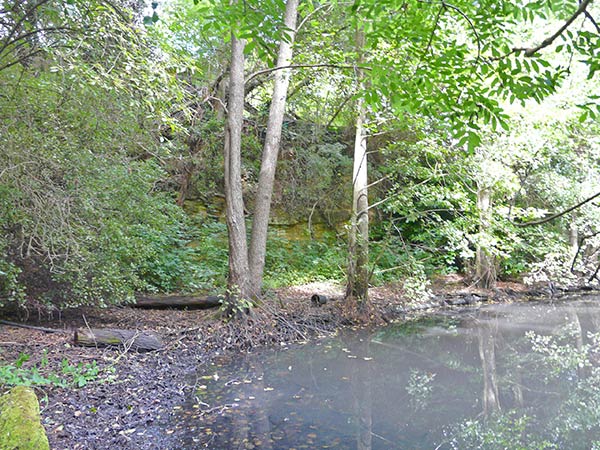
East Sussex Local Geological Sites - Northiam Quarry (img 1112)
Quarry face dimly visible through trees from the edge of the pond.
Photograph taken: 28/04/2010
Approximate grid ref. TQ82922531
Direction north
Image file: P1050238ed.jpg

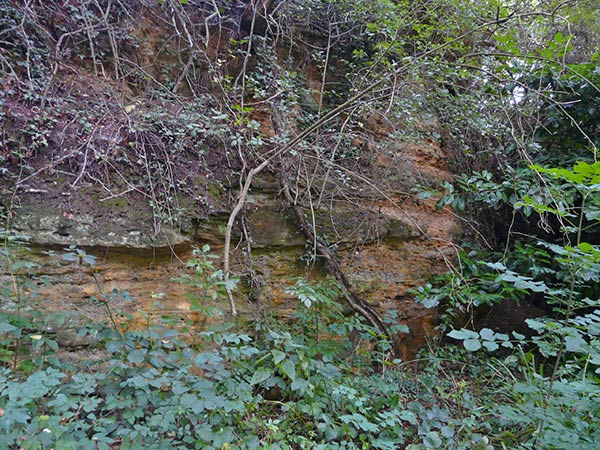
East Sussex Local Geological Sites - Northiam Quarry (img 1113)
Base of right side of exposure shown in photo 6. Exposes lenticular channel sandstone unit encased in thinner bedded sandstone and wedging out to the right. Encased in thinner bedded sandstones with uneven and cross bedding and lenses and partings of other lithologies.
Photograph taken: 28/04/2010
Approximate grid ref. TQ82922532
Direction NNW
Image file: P1050240ed.jpg

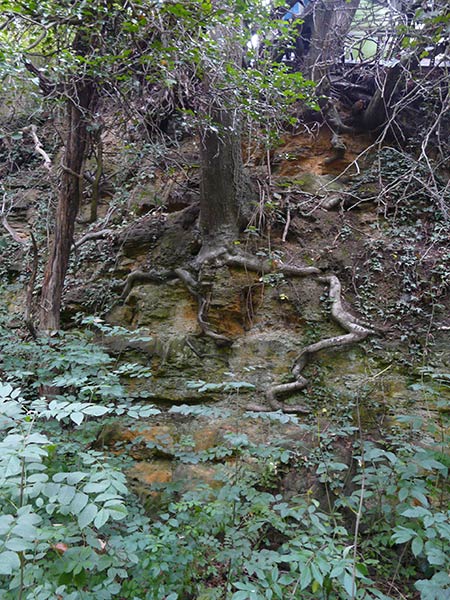
East Sussex Local Geological Sites - Northiam Quarry (img 1114)
Closer view of face shown in photo 2. Exposes about 5 m of buff to cream coloured sandstones of varying thickness and lateral continuity.
Photograph taken: 28/04/2010
Approximate grid ref. TQ82922531
Direction NW
Image file: P1050241.jpg

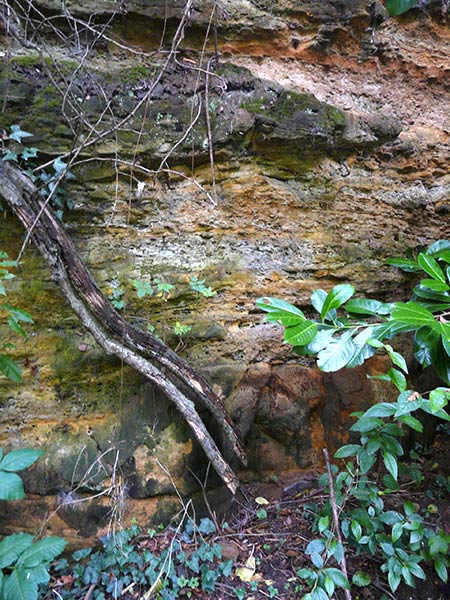
East Sussex Local Geological Sites - Northiam Quarry (img 1115)
Close-up of base of section in photo 7 showing massive sandstone at base with channel scour at left infilled by thinner beds extending up to and encasing the lenticular channel unit above. Note the lenses, partings and nodules of other lithologies within the thin bedded sequence which shows uneven and cross bedding. About 2 m high.
Photograph taken: 28/04/2010
Approximate grid ref. TQ82922532
Image file: P1050242ed.jpg

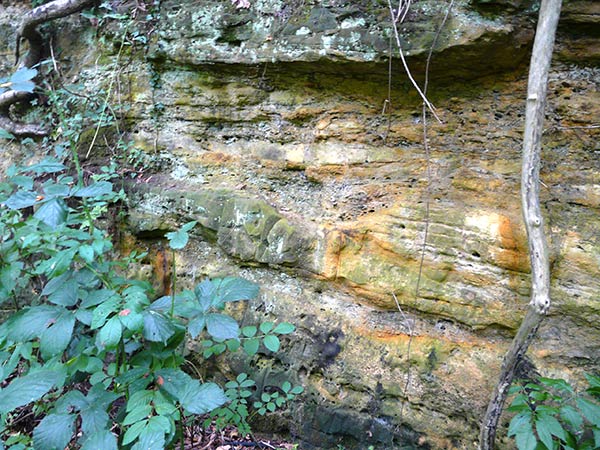
East Sussex Local Geological Sites - Northiam Quarry (img 1116)
Close-up to left of photo 8 showing massive sandstone at base with channel scour at centre infilled by thinner beds extending up to the lenticular channel unit above. Note the lenses, partings and nodules of other lithologies within the thin bedded sequence which shows uneven and cross bedding.
Photograph taken: 28/04/2010
Approximate grid ref. TQ82922532
Image file: P1050243ed.jpg

Coastal section: Rye Harbour Shingle Deposits (TQ91/01)
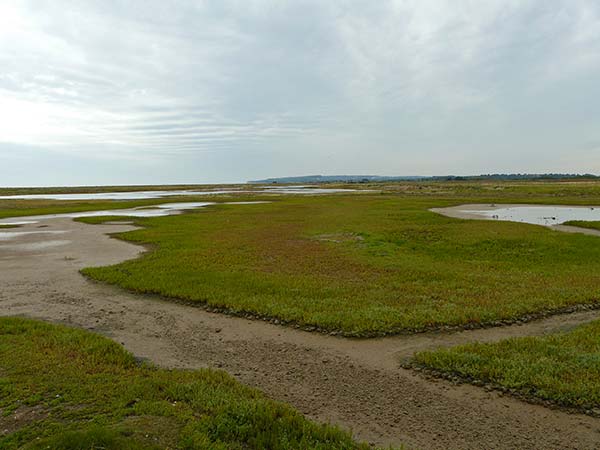
East Sussex Local Geological Sites - Rye Harbour (img 1118)
Salt marsh habitat behind the modern shingle beach and adjacent to the River Rother.
Photograph taken: 22/08/2011
Grid ref TQ94651841
Direction SW
Image file: P1040873ed.jpg

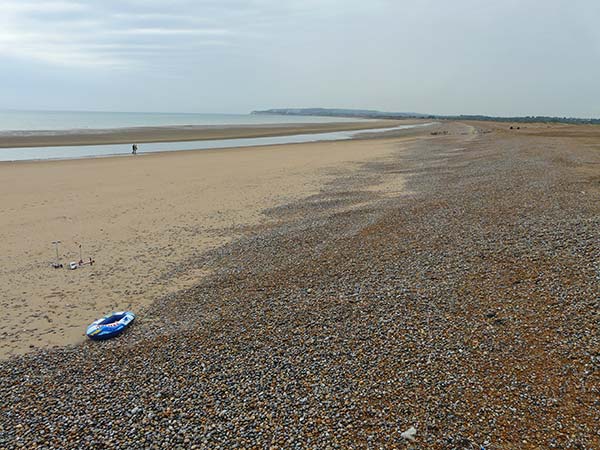
East Sussex Local Geological Sites - Rye Harbour (img 1119)
Rye Harbour beach looking from the mouth of the River Rother towards Winchelsea Beach. Sands adjacent to the river mouth are replaced by shingle to the west including an offshore bar. The shingle beach near the river mouth has been extensively bulldozed.
Photograph taken: 22/08/2011
Grid ref TQ95071793
Direction SW
Image file: P1040885ed.jpg

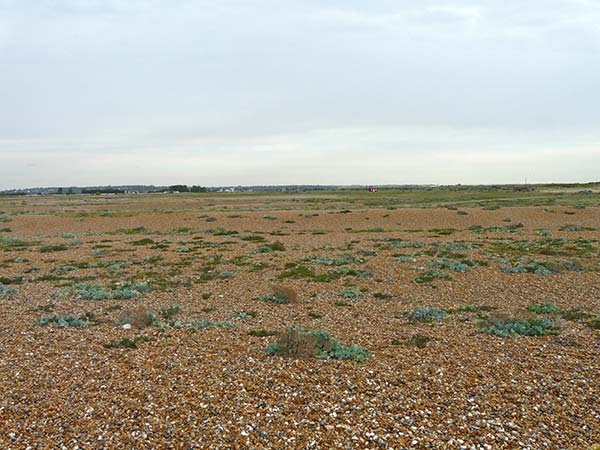
East Sussex Local Geological Sites - Rye Harbour (img 1120)
Looking inland from the modern beach across a set of shingle ridges. Note well developed vegetated shingle.
Photograph taken: 22/08/2011
Grid ref TQ94831789
Direction NW
Image file: P1040887ed.jpg

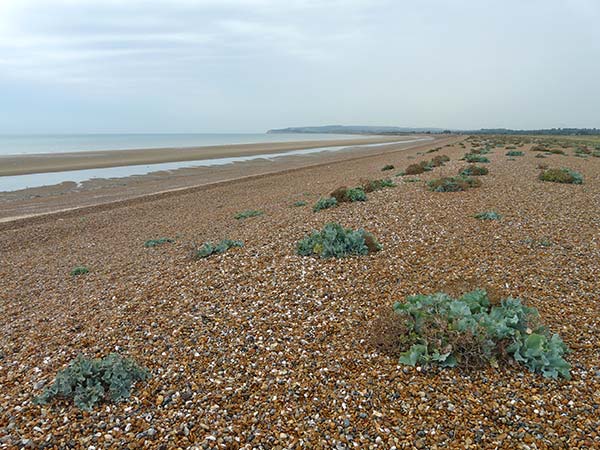
East Sussex Local Geological Sites - Rye Harbour (img 1121)
Shingle beach west of River Rother mouth showing ridges parallel to the shore and an offshore bar and lagoon. Note well developed vegetated shingle.
Photograph taken: 22/08/2011
Grid ref TQ94831789
Direction SW
Image file: P1040888ed.jpg

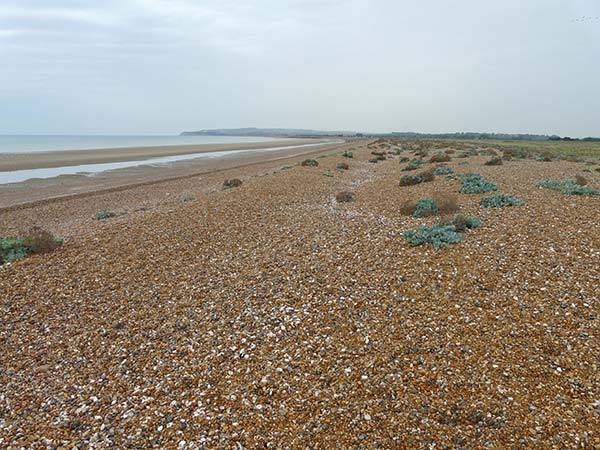
East Sussex Local Geological Sites - Rye Harbour (img 1122)
Shingle beach west of the River Rother mouth showing parallel ridges at the head of the modern beach and an offshore bar and lagoon. Note well developed vegetated shingle.
Photograph taken: 22/08/2011
Grid ref TQ94771787
Direction WSW
Image file: P1040889ed.jpg


East Sussex Local Geological Sites - Rye Harbour (img 1123)
Hollow between shingle ridges inland from the modern beach. The road on the left runs along a ridge crest. Note extensive vegetated shingle.
Photograph taken: 22/08/2011
Grid ref TQ94701790
Direction NE
Image file: P1040890ed.jpg

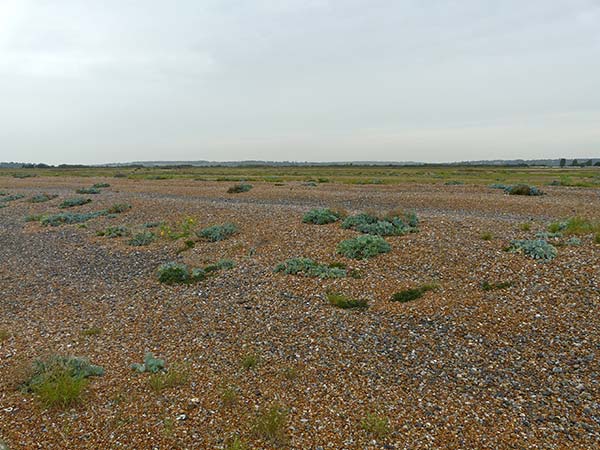
East Sussex Local Geological Sites - Rye Harbour (img 1124)
Looking across a set of parallel shingle ridges inland from the beach. Note well developed vegetated shingle.
Photograph taken: 22/08/2011
Grid ref TQ94621791
Direction west
Image file: P1040891ed.jpg

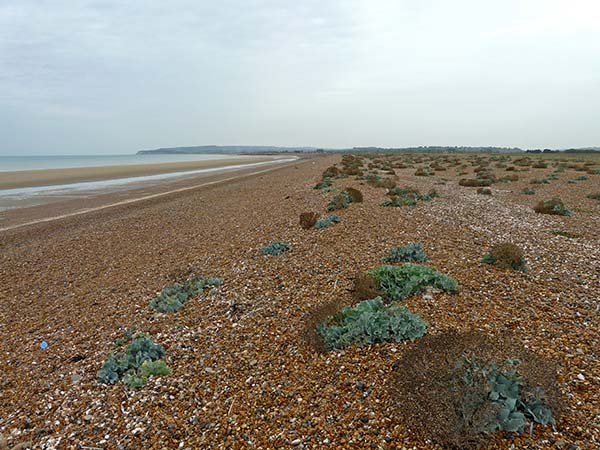
East Sussex Local Geological Sites - Rye Harbour (img 1125)
Broad outer shingle ridge behind modern beach and parallel broad ridge inland. Note well developed vegetated shingle.
Photograph taken: 22/08/2011
Grid ref TQ94591781
Direction SW
Image file: P1040894ed.jpg

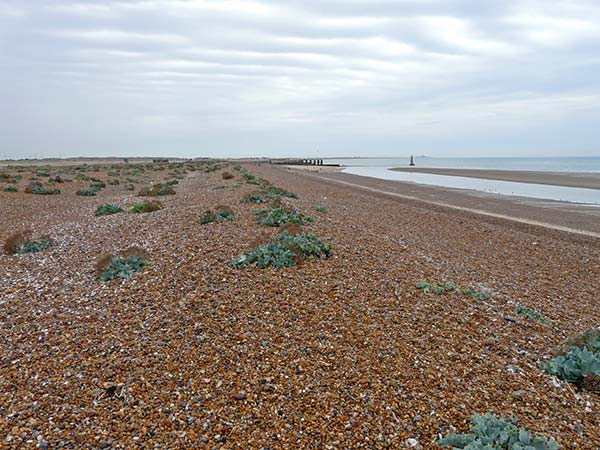
East Sussex Local Geological Sites - Rye Harbour (img 1126)
View east to Rother mouth with two broad shingle ridges behind the beach, low parallel ridges on the upper beach and an offshore bar. Note well developed vegetated shingle.
Photograph taken: 22/08/2011
Grid ref TQ94591781
Direction east
Image file: P1040896ed.jpg


East Sussex Local Geological Sites - Rye Harbour (img 1127)
Set of low parallel shingle ridges developed on the upper beach. More sand is evident on the lower beach. The offshore bar is fragmented towards its western end.
Photograph taken: 22/08/2011
Grid ref TQ93931757
Direction SW
Image file: P1040897ed.jpg

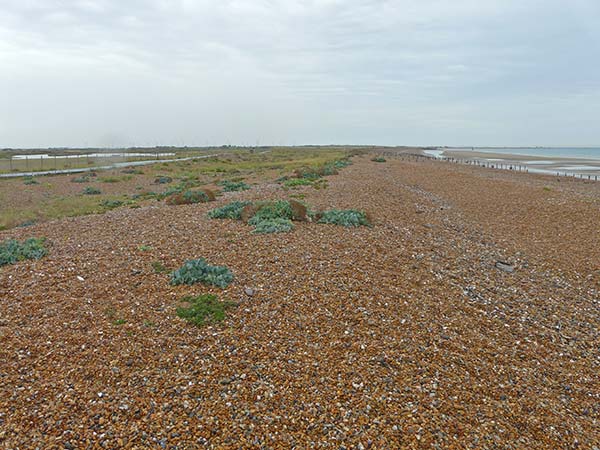
East Sussex Local Geological Sites - Rye Harbour (img 1128)
Broad shingle ridges behind the modern beach. Pond at left marks the site of a former gravel pit landscaped for new habitat.
Photograph taken: 22/08/2011
Grid ref TQ93581740
Direction ENE
Image file: P1040899ed.jpg

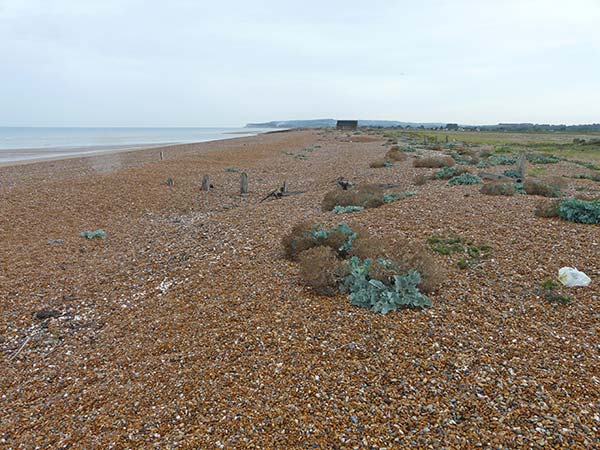
East Sussex Local Geological Sites - Rye Harbour (img 1129)
Towards western end of exposed shingle ridges with vegetated shingle.
Photograph taken: 22/08/2011
Grid ref TQ93581740
Direction SW
Image file: P1040900ed.jpg

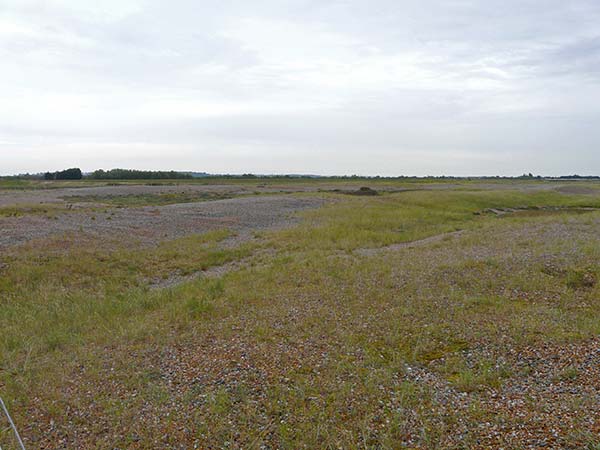
East Sussex Local Geological Sites - Rye Harbour (img 1130)
Broad shingle ridges inland from the modern beach. Partial vegetation cover. Local landscaping for new habitat.
Photograph taken: 22/08/2011
Grid ref TQ93441742
Direction NE
Image file: P1040901ed.jpg

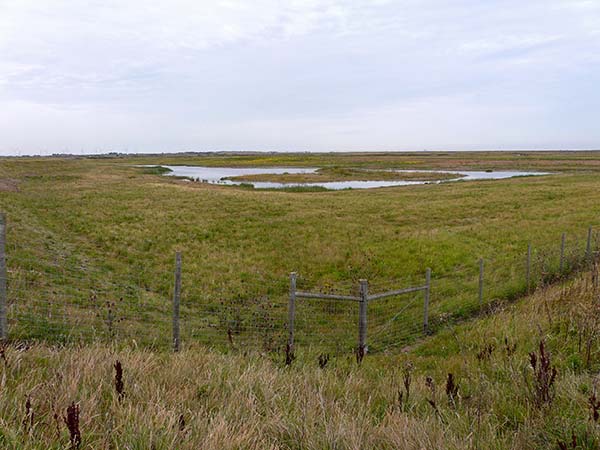
East Sussex Local Geological Sites - Rye Harbour (img 1131)
Fenced area of former farmland extensively landscaped for new habitat where ridge geomorphology is no longer evident.
Photograph taken: 22/08/2011
Grid ref TQ93231776
Direction SW
Image file: P1040906ed.jpg

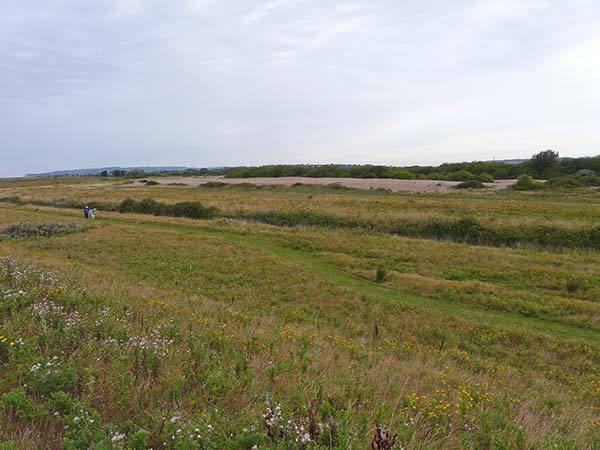
East Sussex Local Geological Sites - Rye Harbour (img 1132)
Shingle ridge topography, exposed and vegetation covered, still evident inland close to Rye harbour village.
Photograph taken: 22/08/2011
Grid ref TQ93981847
Direction WSW
Image file: P1040912ed.jpg

Winchelsea Cutting (TQ91/02)
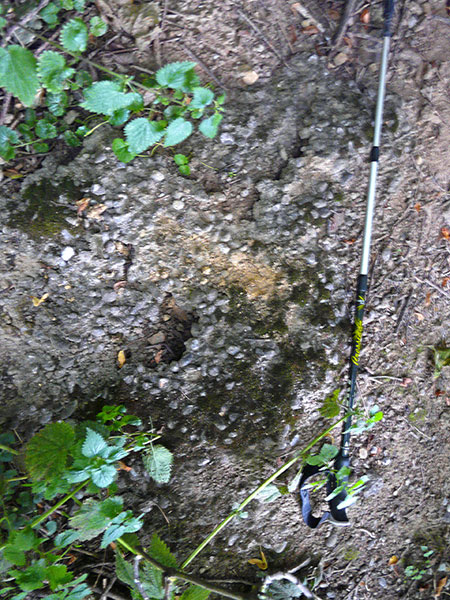
East Sussex Local Geological Sites - Winchelsea Cutting (img 1134)
Apparent exposure of Top Ashdown Pebble Bed in the middle of a thicket.
1 m pole for scale.
Photograph taken: 22/08/2011
Grid ref. TQ90241692
Image file: P1040945ed.jpg

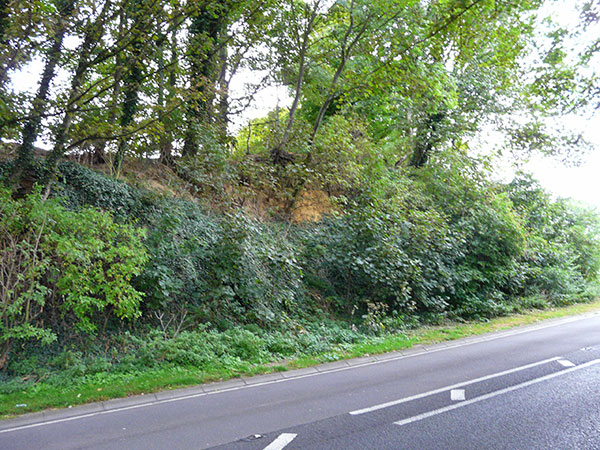
East Sussex Local Geological Sites - Winchelsea Cutting (img 1135)
SE part of site exposing Cliff End Sandstone at the top of the bank. The lower section is covered by slopewash and almost impenetrable vegation.
Photograph taken: 22/08/2011
Grid ref. TQ90201691
Direction east
Image file: P1040947ed.jpg

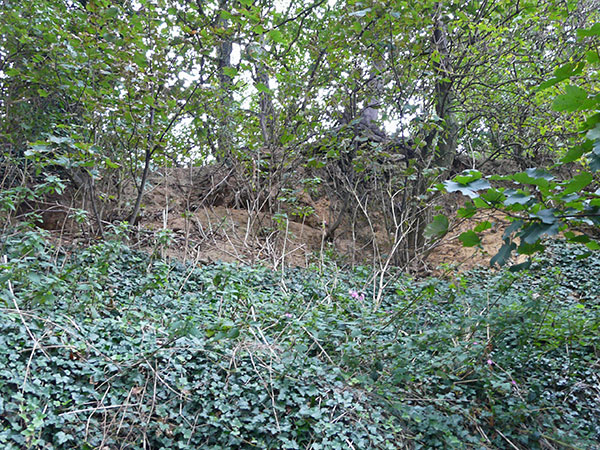
East Sussex Local Geological Sites - Winchelsea Cutting (img 1136)
Closer view of Cliff End Sandstone at top of cutting, obscured by slope wash and not easily accessible.
Photograph taken: 22/08/2011
Grid ref. TQ90211692
Direction NE
Image file: P1040951ed.jpg

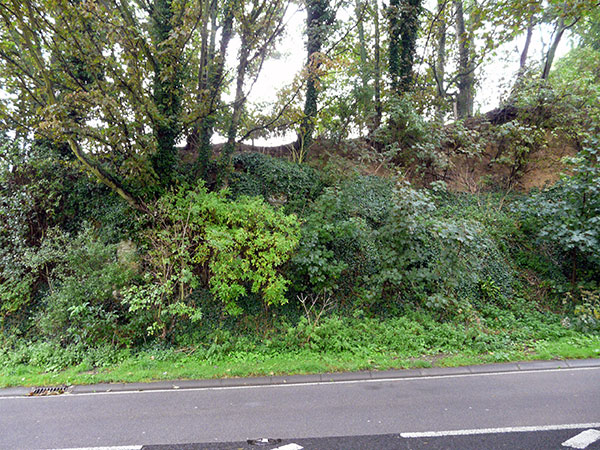
East Sussex Local Geological Sites - Winchelsea Cutting (img 1137)
In the lower part massive greyish Ashdown sandstone can be glimpsed through vegetation at centre and left. In the upper part brownish Cliff End sandstone is exposed to the right.
Photograph taken: 23/08/2011
Grid ref. TQ90201692
Direction ENE
Image file: P1040956ed.jpg

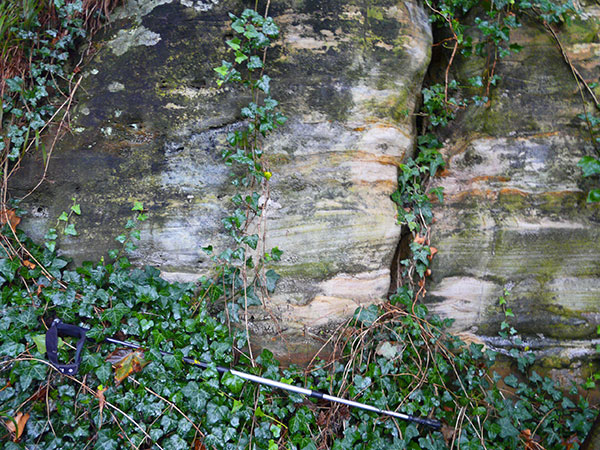
East Sussex Local Geological Sites - Winchelsea Cutting (img 1138)
Detail of base of Ashdown Sandstone exposure in photo 4 showing fine laminations and cross bedding.
1 m pole for scale.
Photograph taken: 23/08/2011
Grid ref. TQ90201693
Image file: P1040961ed.jpg

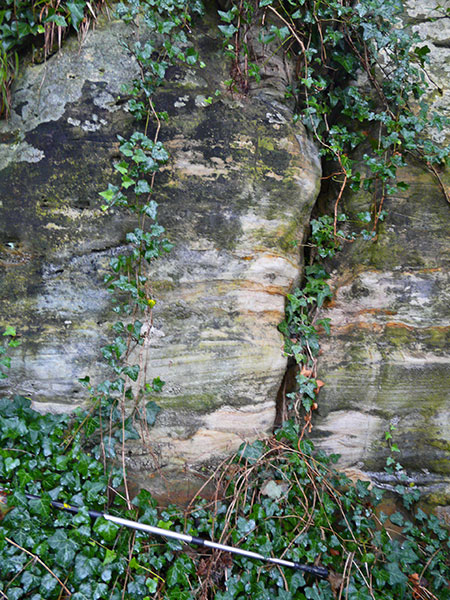
East Sussex Local Geological Sites - Winchelsea Cutting (img 1139)
Close-up of Ashdown sandstone exposure at centre of photo 1 showing fine laminations and cross bedding.
1 m pole for scale.
Photograph taken: 23/08/2011
Grid ref. TQ90201693
Image file: P1040962ed.jpg

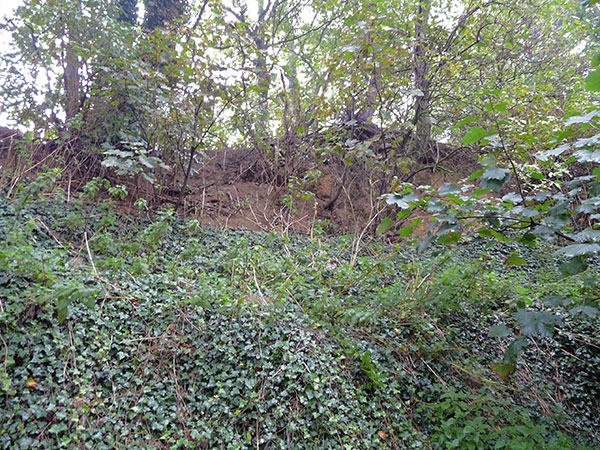
East Sussex Local Geological Sites - Winchelsea Cutting (img 1140)
Cliff End sandstone seen at top of cutting is obscured by slope wash and not easily accessible.
Photograph taken: 23/08/2011
Grid ref. TQ90211692
Direction NE
Image file: P1040963ed.jpg

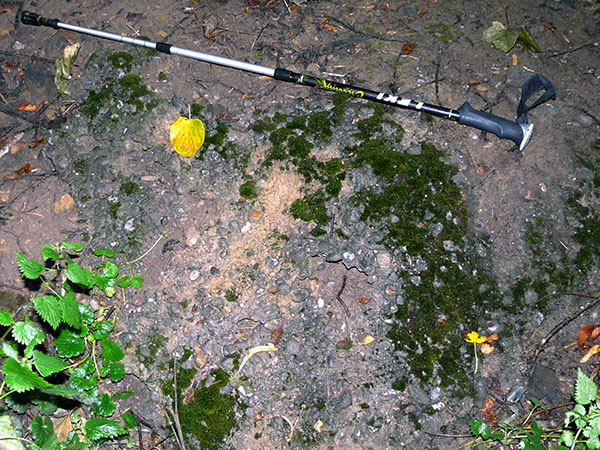
East Sussex Local Geological Sites - Winchelsea Cutting (img 1141)
Apparent exposure of Top Ashdown Pebble Bed in the middle of a thicket.
1 m pole for scale.
Photograph taken: 23/08/2011
Grid ref. TQ90241692
Image file: P1040972ed.jpg

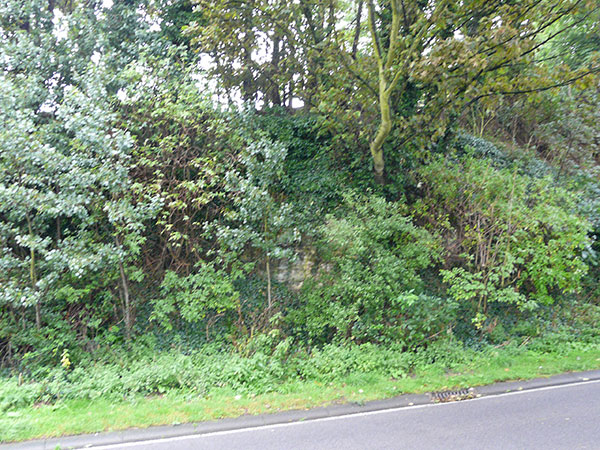
East Sussex Local Geological Sites - Winchelsea Cutting (img 1142)
NW part of site where Ashdown Sandstone exposures are present close to road level but mainly obscured by vegetation.
Photograph taken: 23/08/2011
Grid ref. TQ90191692
Direction NE
Image file: P1040973ed.jpg

Cadborough Cliff, Rye (TQ91/05)
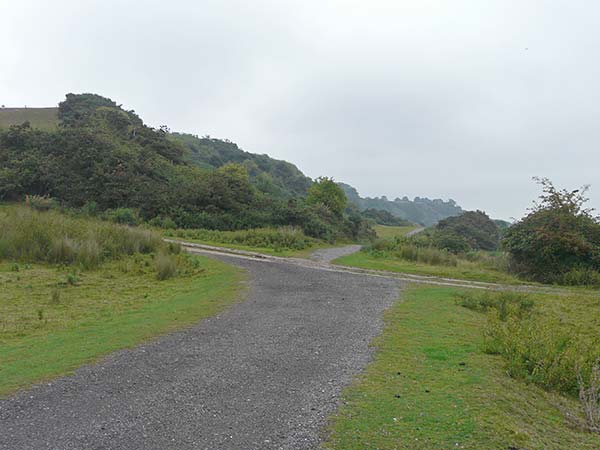
East Sussex Local Geological Sites - Cadborough Cliff (img 1144)
Southwestern end of Cadborough Cliff. A footpath/cycleway follows the foot of the cliffs to Cadborough.
Photograph taken:23/08/2011
Grid ref TQ89991899
Direction NE
Image file: P1040974ed.jpg


East Sussex Local Geological Sites - Cadborough Cliff (img 1145)
Lower hummocky slopes of cliff at southwestern end underlain by slump or landslide deposits.
Photograph taken:23/08/2011
Grid ref TQ90171915
Direction NE
Image file: P1040975.jpg

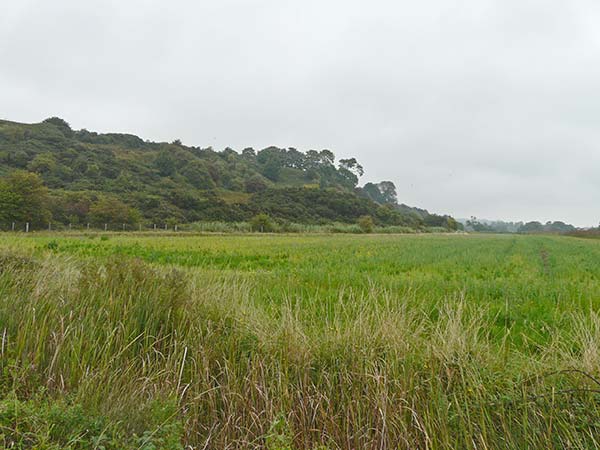
East Sussex Local Geological Sites - Cadborough Cliff (img 1146)
Heavily vegetated section of cliff to the right of photo 6.
Photograph taken:23/08/2011
Grid ref TQ90691929
Direction NE
Image file: P1040979ed.jpg


East Sussex Local Geological Sites - Cadborough Cliff (img 1147)
Heavily vegetated section of the cliff to the right of photo 5. A track at this point leads up to the top of the cliff and has some small exposures of sandstone.
Photograph taken:23/08/2011
Grid ref TQ90691929
Direction NW
Image file: P1040980ed.jpg


East Sussex Local Geological Sites - Cadborough Cliff (img 1148)
Southwestern section of cliff which is the highest part.
Photograph taken:23/08/2011
Grid ref TQ90691929
Direction WSW
Image file: P1040981ed.jpg

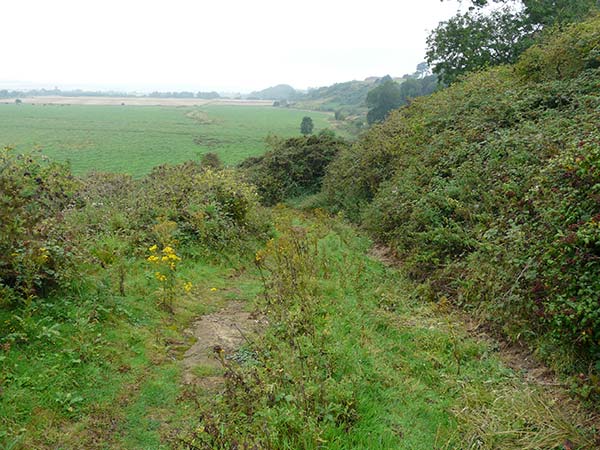
East Sussex Local Geological Sites - Cadborough Cliff (img 1149)
View from the track to the cliff top showing in foreground one of several small exposures of sandstone bedding planes which could be part of a slumped block.
Photograph taken:23/08/2011
Grid ref TQ90661940
Direction SW
Image file: P1040983.jpg

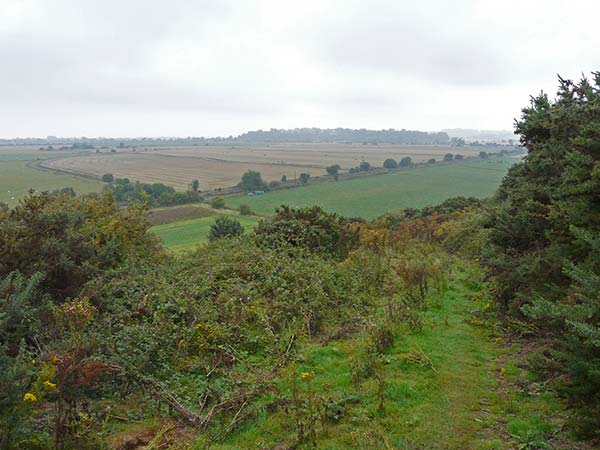
East Sussex Local Geological Sites - Cadborough Cliff (img 1150)
View from top of track up Cadborough Cliff towards the former island of Winchelsea.
Photograph taken:23/08/2011
Grid ref TQ90701946
Direction SW
Image file: P1040985ed.jpg

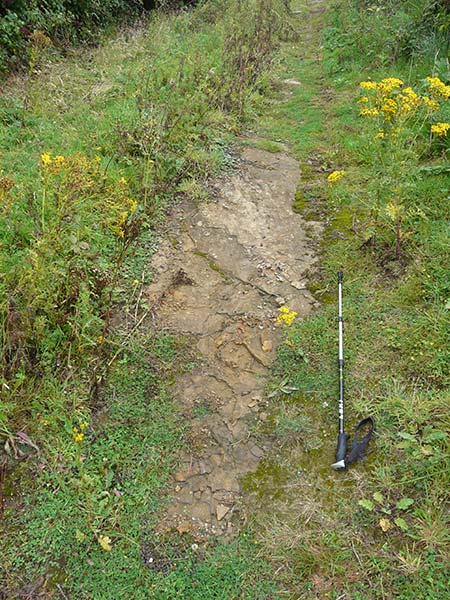
East Sussex Local Geological Sites - Cadborough Cliff (img 1151)
Detail of sandstone bedding plane exposed in track to top of cliff. This could be part of a slumped block.
Photograph taken:23/08/2011
Grid ref TQ90661940
Direction NE
Image file: P1040988.jpg


East Sussex Local Geological Sites - Cadborough Cliff (img 1152)
Cliff at northeastern end approaching Cadborough. Slopes are grazed and lower slopes are hummocky and underlain by slump or landslide deposits.
Photograph taken: 23/08/2011
Grid ref TQ91051976
Direction NNE
Image file: P1040991ed.jpg

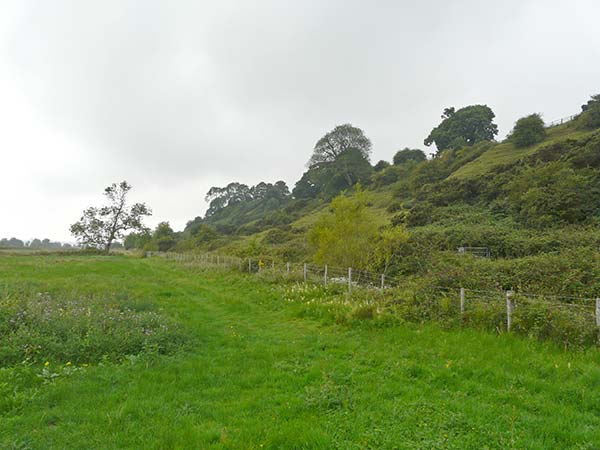
East Sussex Local Geological Sites - Cadborough Cliff (img 1153)
Less vegetated cliff towards northeastern end of Cadborough Cliff with some evidence of past slumping.
Photograph taken: 23/08/2011
Grid ref TQ91011970
Direction SW
Image file: P1040992ed.jpg

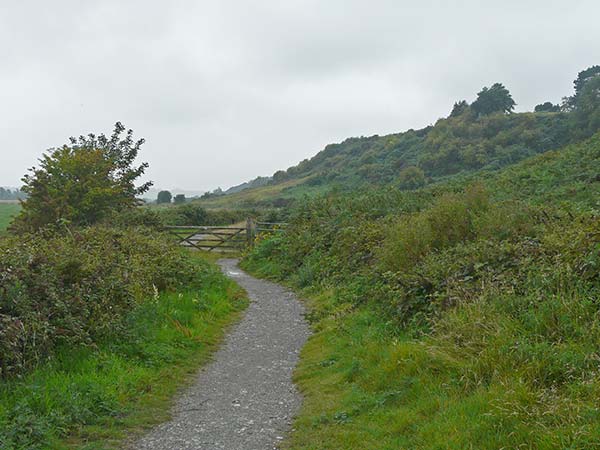
East Sussex Local Geological Sites - Cadborough Cliff (img 1154)
Looking SW along cliff with profile clearly shown on skyline.
Photograph taken:23/08/2011
Grid ref TQ90411931
Direction SW
Image file: P1040993ed.jpg

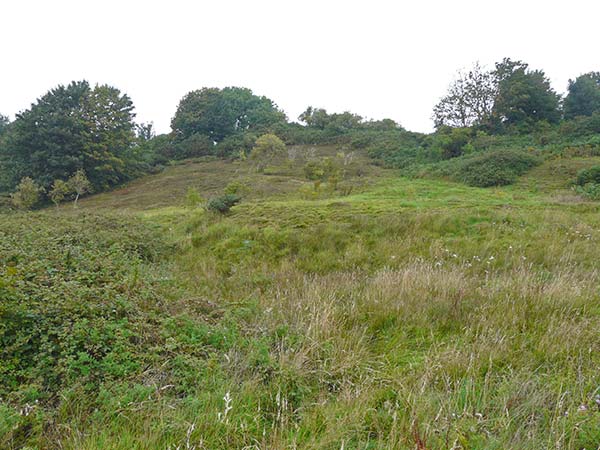
East Sussex Local Geological Sites - Cadborough Cliff (img 1155)
Grassy area showing cliff profile and lower hummocky slopes underlain by slump or landslide deposits.
Photograph taken:23/08/2011
Grid ref TQ90351926
Direction NNW
Image file: P1040994ed.jpg

Camber Dunes (TQ91/15)
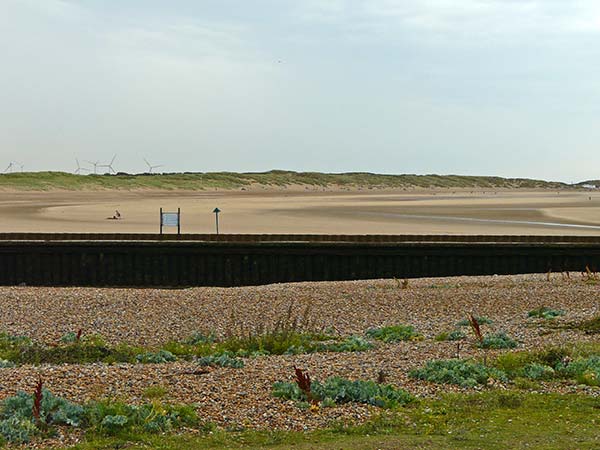
East Sussex Local Geological Sites - Camber Dunes (img 1157)
Camber Dunes and Camber Sands viewed from Rother River mouth. The dunes behind the beach are protected by marram grass and other vegetation and are up to 10 to 12 m high.
Photograph taken: 22/08/2011
Grid ref. TQ94881811
Direction NE
Image file: P1040880ed.jpg

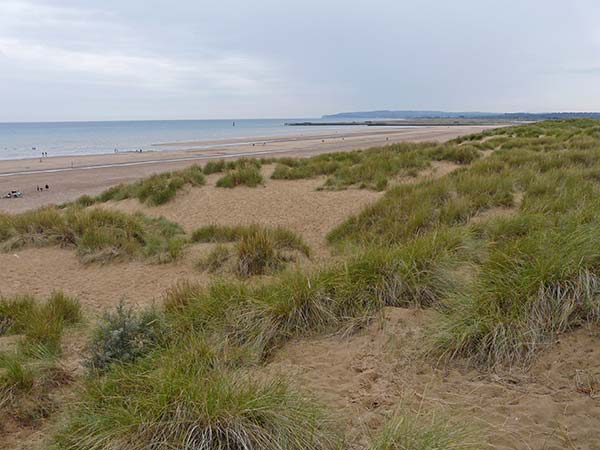
East Sussex Local Geological Sites - Camber Dunes (img 1158)
Shoreline dunes affected by visitor erosion in the accessible reserve area.
Photograph taken: 22/08/2011
Grid ref. TQ95881866
Direction SW
Image file: P1040915ed.jpg

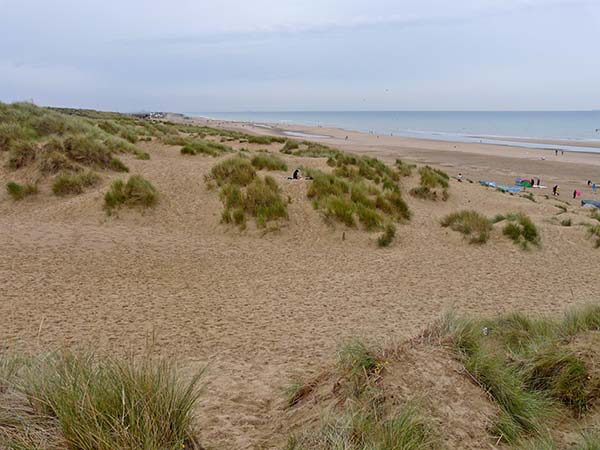
East Sussex Local Geological Sites - Camber Dunes (img 1159)
Wide access track through dunes with extensive lateral erosion by visitors.
Photograph taken: 22/08/2011
Grid ref. TQ95891866
Direction ESE
Image file: P1040916ed.jpg

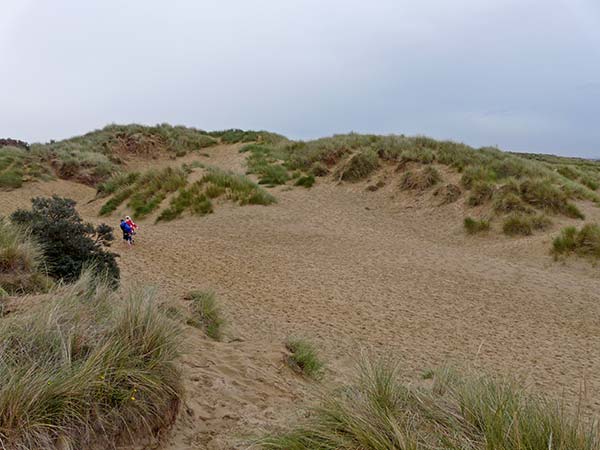
East Sussex Local Geological Sites - Camber Dunes (img 1160)
View to left of photo 6 looking across wide access track through dunes with extensive lateral erosion by visitors. Bank at top left exposes cross section of dune bedding.
Photograph taken: 22/08/2011
Grid ref. TQ95891866
Direction ESE
Image file: P1040917ed.jpg

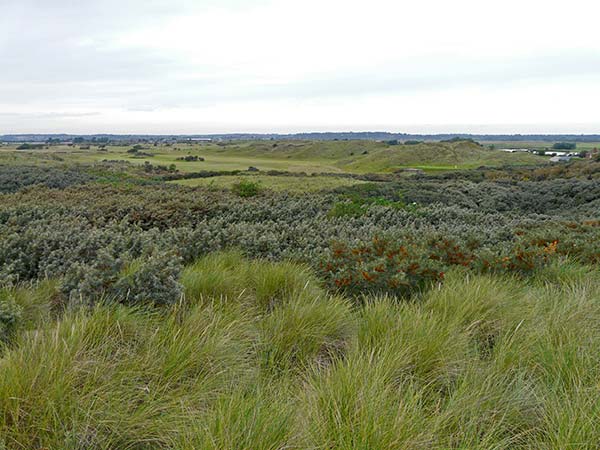
East Sussex Local Geological Sites - Camber Dunes (img 1161)
View across golf course showing line of large vegetated dunes at far side and scrub-covered dunes in the foreground. The centre has been extensively landscaped.
Photograph taken: 22/08/2011
Grid ref. TQ95791865
Direction NW
Image file: P1040919ed.jpg

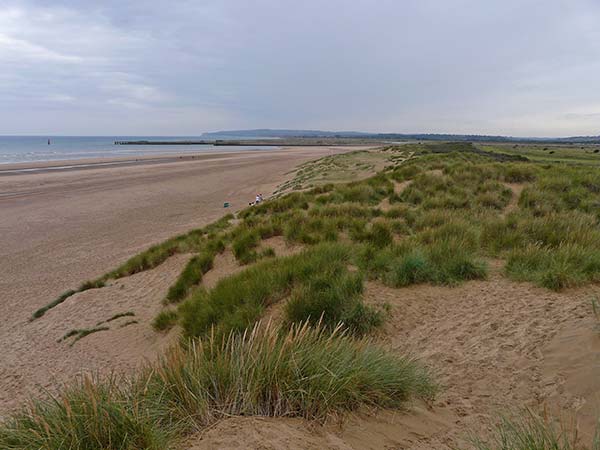
East Sussex Local Geological Sites - Camber Dunes (img 1162)
Shoreline dunes extending west along the edge of the golf course towards the mouth of the Rother River.
Photograph taken: 22/08/2011
Grid ref. TQ95701861
Direction WSW
Image file: P1040920ed.jpg

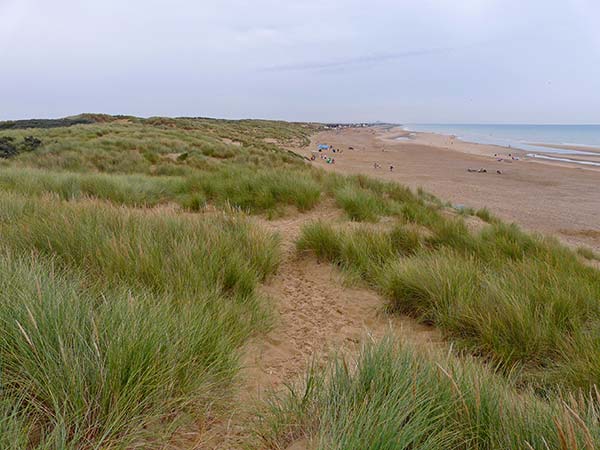
East Sussex Local Geological Sites - Camber Dunes (img 1163)
Shoreline dunes and wide sandy beach extending west towards Camber within the ESCC reserve. These dunes have substantial marram grass cover.
Photograph taken: 22/08/2011
Grid ref. TQ95701861
Direction east
Image file: P1040921ed.jpg

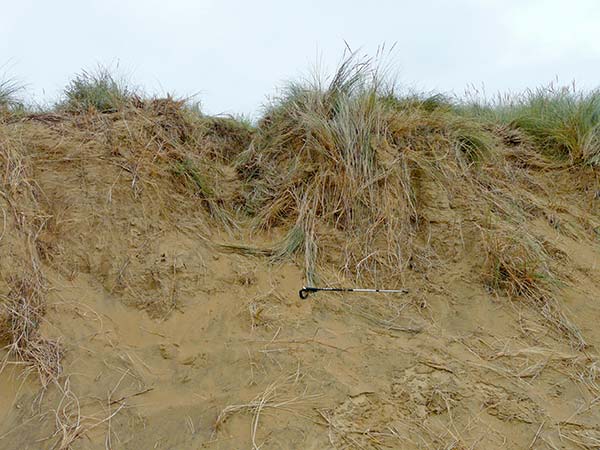
East Sussex Local Geological Sites - Camber Dunes (img 1164)
Bedding exposed at top of dune in photo 7 showing fine laminations and depositional dip.
1 m pole for scale.
Photograph taken: 22/08/2011
Grid ref. TQ95931870
Image file: P1040924ed.jpg

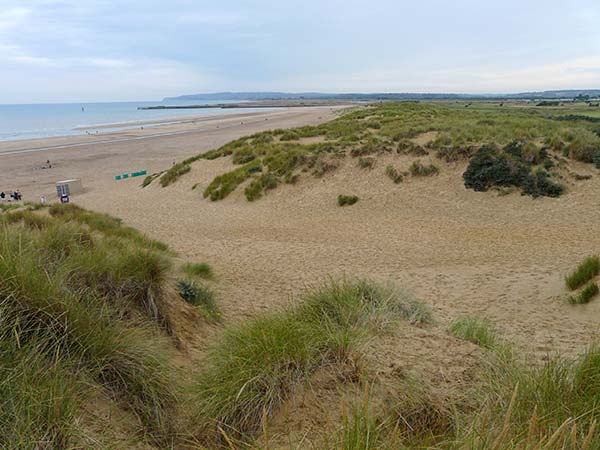
East Sussex Local Geological Sites - Camber Dunes (img 1165)
View to west across wide access track through dunes with extensive lateral erosion by visitors.
Photograph taken: 22/08/2011
Grid ref. TQ95941867
Direction SW
Image file: P1040926ed.jpg

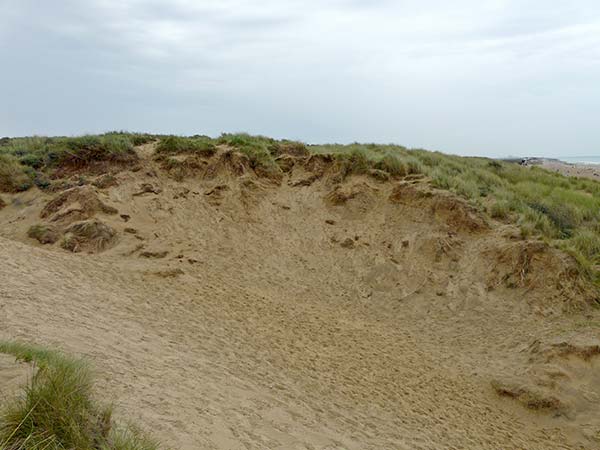
East Sussex Local Geological Sites - Camber Dunes (img 1166)
Eastern side of wide access track exposing cross sections of dune bedding.
Photograph taken: 22/08/2011
Grid ref. TQ96061864
Direction east
Image file: P1040927ed.jpg

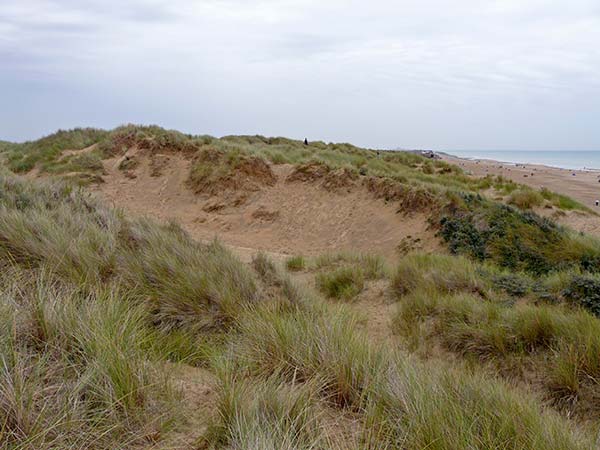
East Sussex Local Geological Sites - Camber Dunes (img 1167)
Eroded bank at side of access track showing exposed bedding at top of dune.
Photograph taken: 22/08/2011
Grid ref. TQ96161864
Direction east
Image file: P1040929ed.jpg

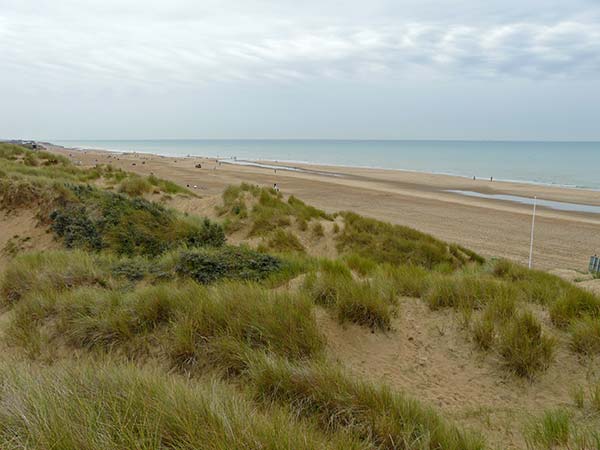
East Sussex Local Geological Sites - Camber Dunes (img 1168)
View to right of photo 13 showing eroded dunes behind the shoreline of the Camber Sands beach.
Photograph taken: 22/08/2011
Grid ref. TQ96161864
Direction ESE
Image file: P1040930ed.jpg

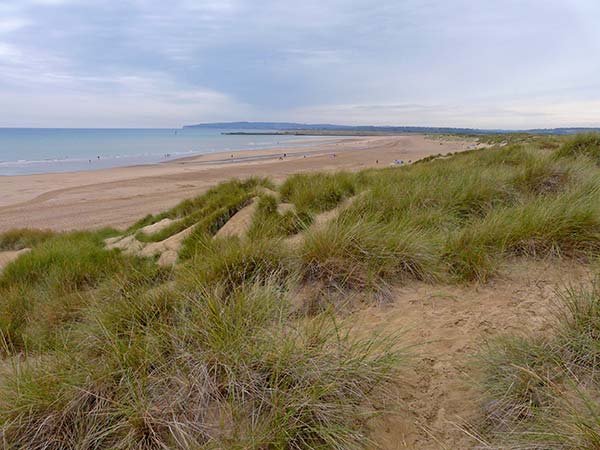
East Sussex Local Geological Sites - Camber Dunes (img 1169)
View to west from location of photo 14 showing the Camber Sands extending to the mouth of the Rother River and the sand dunes behind the shoreline.
Photograph taken: 22/08/2011
Grid ref. TQ96161864
Direction WSW
Image file: P1040931ed.jpg


East Sussex Local Geological Sites - Camber Dunes (img 1170)
Dunes with extensive shrub and grass cover inland from the shoreline dunes near eastern end of the reserve.
Photograph taken: 22/08/2011
Grid ref. TQ96251866
Direction NNW
Image file: P1040932ed.jpg

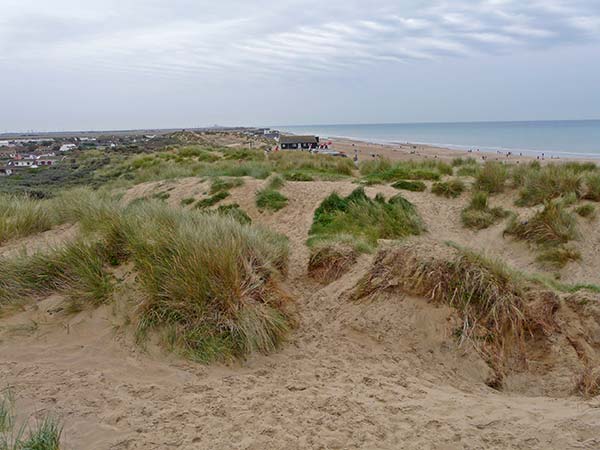
East Sussex Local Geological Sites - Camber Dunes (img 1171)
Eastern end of the reserve with more development and greater erosion of the dunes.
Photograph taken: 22/08/2011
Grid ref. TQ96351864
Direction ESE
Image file: P1040933ed.jpg


East Sussex Local Geological Sites - Camber Dunes (img 1172)
Shoreline dunes in eastern reserve area viewed from the beach.
Photograph taken: 22/08/2011
Grid ref. TQ96311855
Direction NNE
Image file: P1040936ed.jpg

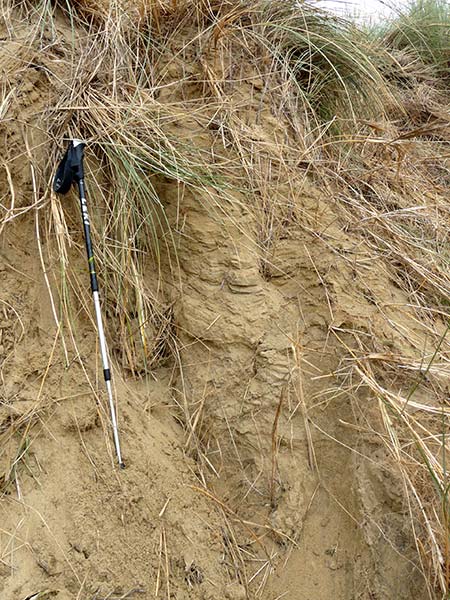
East Sussex Local Geological Sites - Camber Dunes (img 1173)
Bedding exposed at top of dune in photo 8 showing fine laminations and depositional dip.
1 m pole for scale.
Photograph taken: 22/08/2011
Grid ref. TQ95931870
Image file: P1040941ed.jpg

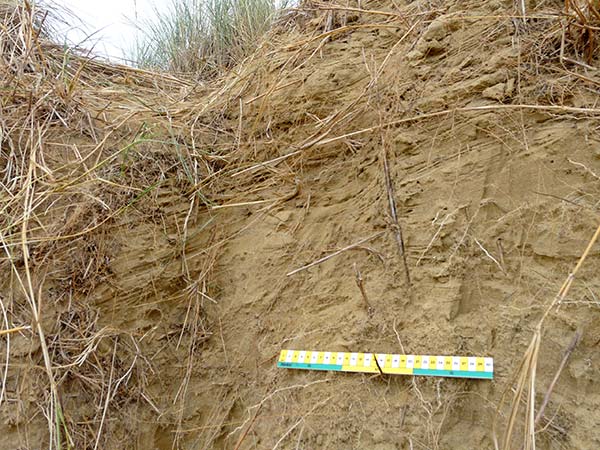
East Sussex Local Geological Sites - Camber Dunes (img 1174)
Bedding exposed at top of dune in photo 8 showing fine laminations and depositional dip.
30 cm scale.
Photograph taken: 22/08/2011
Grid ref. TQ95931870
Image file: P1040942ed.jpg

Houghton Greencliff, Rye (TQ92/13)
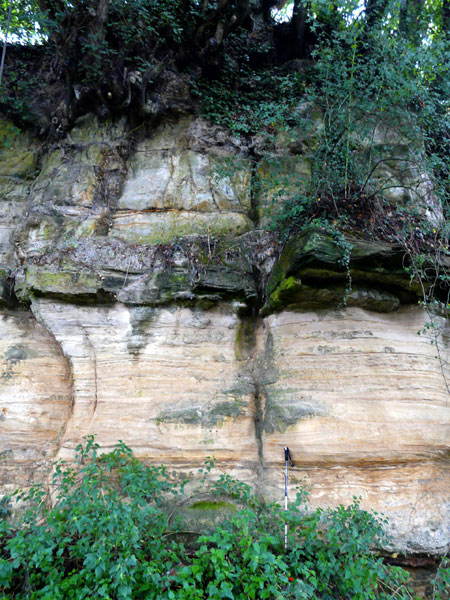
East Sussex Local Geological Sites - Houghton Greencliff (img 1176)
Closer view of part of the face in photo 1 showing two massive sandstone units of the upper Cliff End Sandstone, separated by a zone of cemented sandstone concretions (Tilgate Stone). 1 m pole for scale.
Photograph taken: 23/08/2011
Grid ref TQ93112245
Direction NW
Image file: P1040997ed.jpg

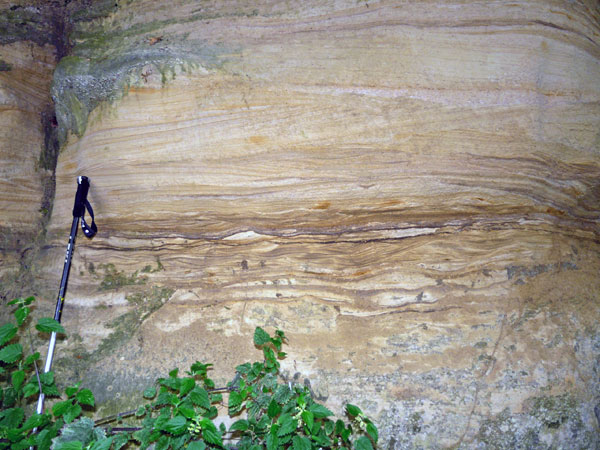
East Sussex Local Geological Sites - Houghton Greencliff (img 1177)
Close-up of lower face in photo 2. The detail of the sedimentary structures is exceptional showing ripples, cross-bedding and small-scale channelling. Thin dark carbonaceous layers composed of fine plant debris occur in the lower part.
Photograph taken: 23/08/2011
Grid ref TQ93112245
Direction NW
Image file: P1050001ed.jpg


East Sussex Local Geological Sites - Houghton Greencliff (img 1178)
Roadside exposure of two massive sandstone units of the upper Cliff End Sandstone, separated by a zone of cemented sandstone concretions (Tilgate Stone). Height of section about 4 m.
Photograph taken: 23/08/2011
Grid ref TQ93102244
Direction NW
Image file: P1050003ed.jpg

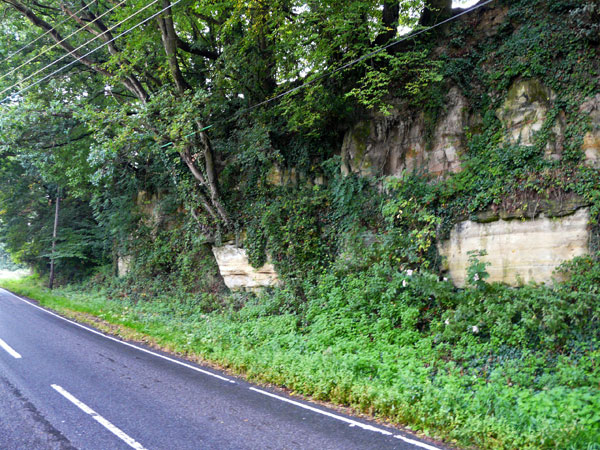
East Sussex Local Geological Sites - Houghton Greencliff (img 1179)
Roadside view showing the tree and vegetation cover affecting the Cliff End sandstone at the southern end of the exposure. Overall height of the exposure is 4 to 5 m.
Photograph taken: 23/08/2011
Grid ref TQ93102244
Direction SW
Image file: P1050004ed.jpg


East Sussex Local Geological Sites - Houghton Greencliff (img 1180)
Exposure of two massive sandstone units of the upper Cliff End Sandstone. separated by a zone of cemented sandstone concretions (Tilgate Stone). Height of section 4 to 5 m.
Photograph taken: 23/08/2011
Grid ref TQ93102244
Direction west
Image file: P1050005ed.jpg

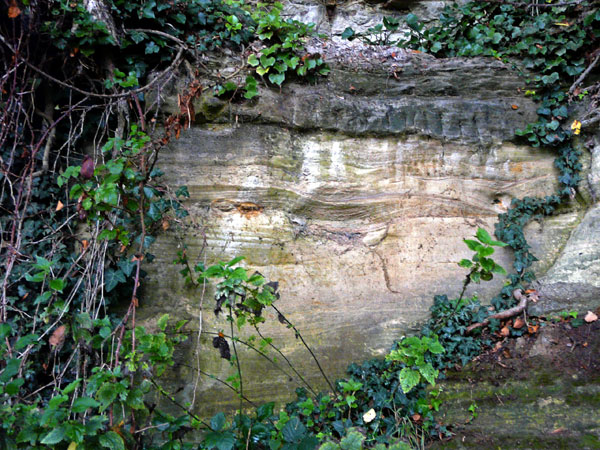
East Sussex Local Geological Sites - Houghton Greencliff (img 1181)
Close-up of the top of the lower sandstone unit shown in photo 4. Shows well-defined small-scale cross bedding, ripples and channels and the overlying zone of cemented sandstone concretions. Height of section about 1 m.
Photograph taken: 23/08/2011
Grid ref TQ93102244
Direction NW
Image file: P1050009ed.jpg

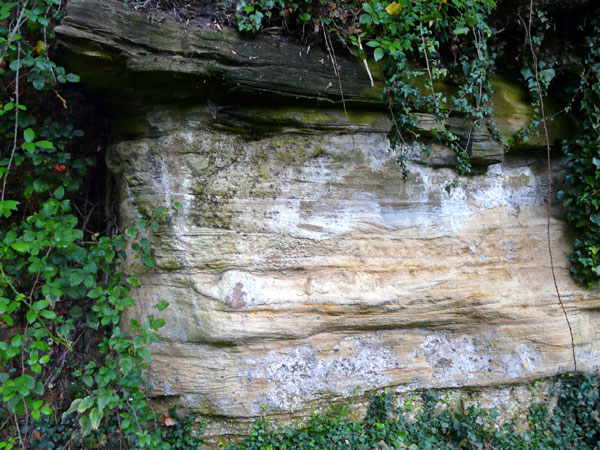
East Sussex Local Geological Sites - Houghton Greencliff (img 1182)
Detail of the exposure in the centre of photo 6 showing fine bedding detail in the lower sandstone unit picked out by differential weathering. Above is the zone of cemented sandstone concretions. Height about 1 m.
Photograph taken: 23/08/2011
Grid ref TQ93092243
Direction NW
Image file: P1050012ed.jpg


East Sussex Local Geological Sites - Houghton Greencliff (img 1183)
Southern end of the exposure of Cliff End Sandstone. The zone of cemented sandstone concretions is represented by an isolated example here. Height of section about 3 m.
Photograph taken: 23/08/2011
Grid ref TQ93082242
Direction NNW
Image file: P1050014ed.jpg


East Sussex Local Geological Sites - Houghton Greencliff (img 1184)
Wooded scarp of the old sea cliff viewed from the footpath on the east bank of the Rother.
Photograph taken: 23/08/2011
Grid ref TQ93422303
Direction NNW
Image file: P1050021ed.jpg


East Sussex Local Geological Sites - Houghton Greencliff (img 1185)
Scarp of the old sea cliff exposed by grazing at Cliff Farm. The slopes show evidence of former landslips.
Photograph taken: 23/08/2011
Grid ref TQ93552345
Direction NW
Image file: P1050024ed.jpg

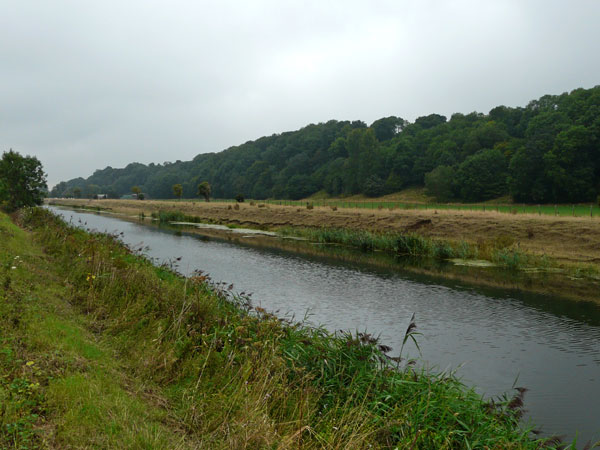
East Sussex Local Geological Sites - Houghton Greencliff (img 1186)
Wooded scarp of the old sea cliff viewed from the footpath on the east side of the Rother.
Photograph taken: 23/08/2011
Grid ref TQ93552345
Direction SSW
Image file: P1050025ed.jpg

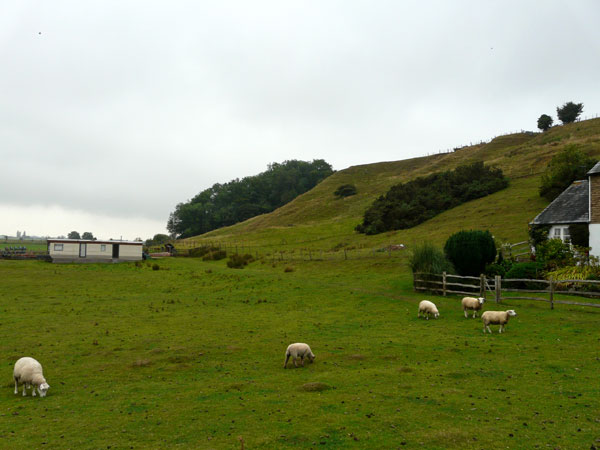
East Sussex Local Geological Sites - Houghton Greencliff (img 1187)
Profile of old sea cliff scarp viewed from the footpath at Cliff Farm.
Photograph taken: 23/08/2011
Grid ref TQ93362370
Direction south
Image file: P1050029ed.jpg

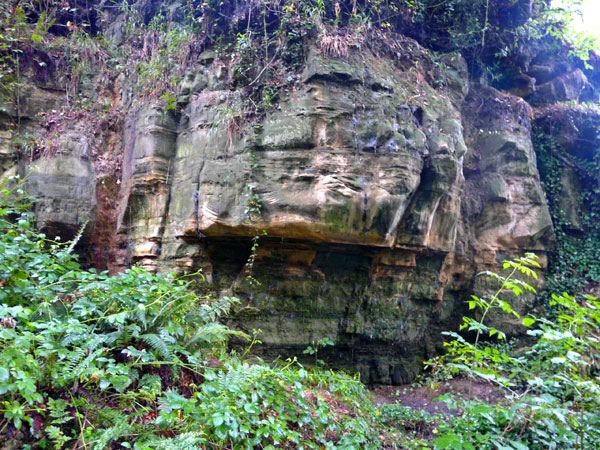
East Sussex Local Geological Sites - Houghton Greencliff (img 1188)
Massive sandstone within Wadhurst Clay Formation exposed in stream valley above Cliff Farm. Bedding detail obscured by vegetation cover. About 3 m high.
Photograph taken: 23/08/2011
Grid ref TQ93242370
Direction north
Image file: P1050031ed.jpg

Coastal section: Birling Gap (TV59/09)
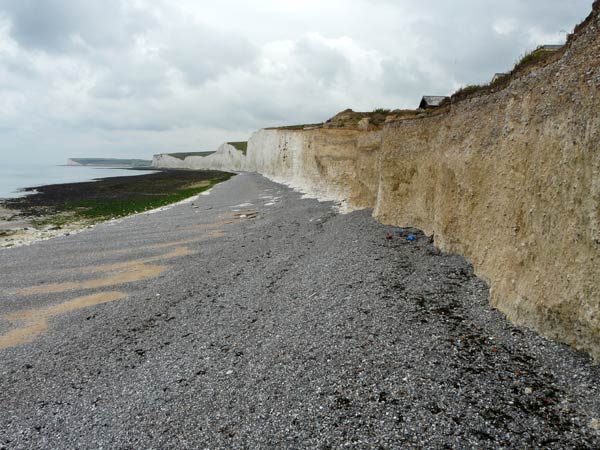
East Sussex Local Geological Sites - Coastal Section Birling Gap (img 1190)
Dry valley cliff section to west of steps at Birling Gap showing Pleistocene valley fill deposits overlying deeply weathered chalk extending down to beach level.
Photograph taken: 21/07/2011
Grid ref TV55389599
Direction WNW
Image file: P1040213ed.jpg


East Sussex Local Geological Sites - Coastal Section Birling Gap (img 1191)
Dry valley cliff section to east of steps at Birling Gap showing Pleistocene valley fill deposits overlying deeply weathered chalk extending down to beach level.
Photograph taken: 21/07/2011
Grid ref TV55389599
Direction SE
Image file: P1040214ed.jpg

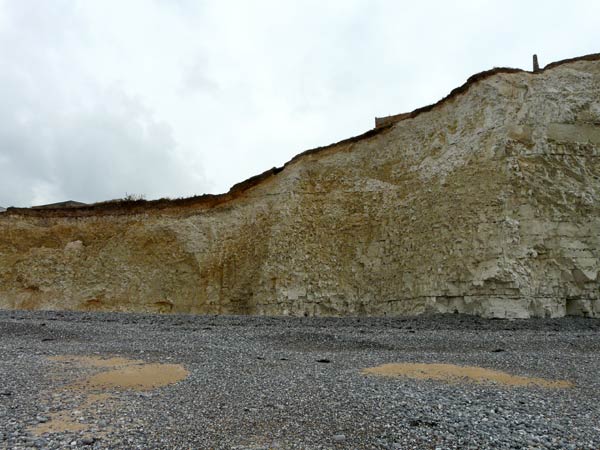
East Sussex Local Geological Sites - Coastal Section Birling Gap (img 1192)
Eastern edge of dry valley. Pleistocene flint gravels and flinty coombe rock at left with thin overlying loessic layer extending beyond. Underlain by chalk showing lateral transition from weathered chalk with distorted and disrupted flint bands to fresh chalk with regular flint bands.
Photograph taken: 21/07/2011
Grid ref TV55429591
Direction NE
Image file: P1040219ed.jpg

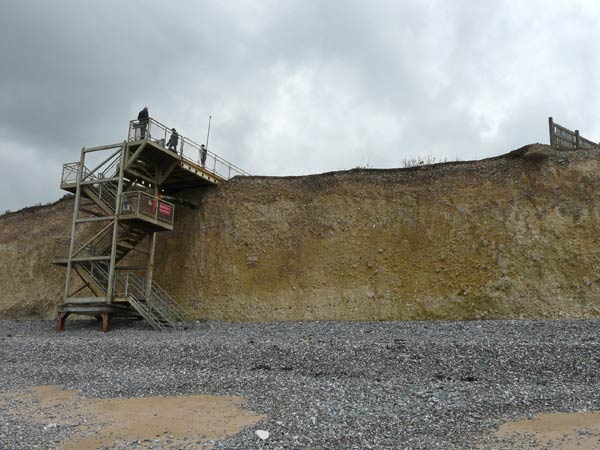
East Sussex Local Geological Sites - Coastal Section Birling Gap (img 1193)
Pleistocene flint gravels and flinty coombe rock to the east of the steps overlying deeply weathered rubbly chalk. Flint layers in the chalk are completely disrupted.
About 10 m high.
Photograph taken: 21/07/2011
Grid ref TV55389596
Direction NNE
Image file: P1040220ed.jpg

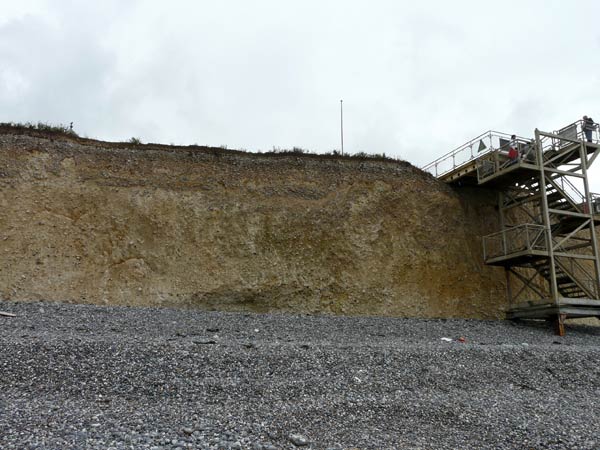
East Sussex Local Geological Sites - Coastal Section Birling Gap (img 1194)
Central part of dry valley west of the steps showing Pleistocene flint gravels and flinty coombe rock with contorted lower section overlying deeply weathered rubbly chalk. Flint bands in the chalk are completely disrupted.
Photograph taken: 21/07/2011
Grid ref TV55369599
Direction ENE
Image file: P1040221ed.jpg

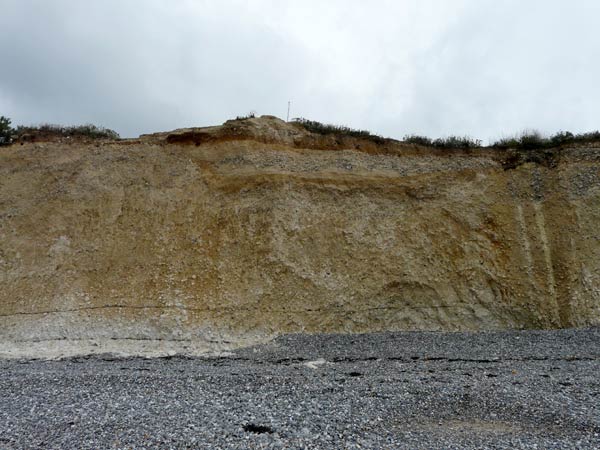
East Sussex Local Geological Sites - Coastal Section Birling Gap (img 1195)
Pleistocene flint gravels and flinty coombe rock with contorted lower section overlying deeply weathered rubbly chalk. Base of flint bands mostly disrupted except for those near the base of the cliff.
About 15 m high.
Photograph taken: 21/07/2011
Grid ref TV55339602
Direction NE
Image file: P1040223ed.jpg

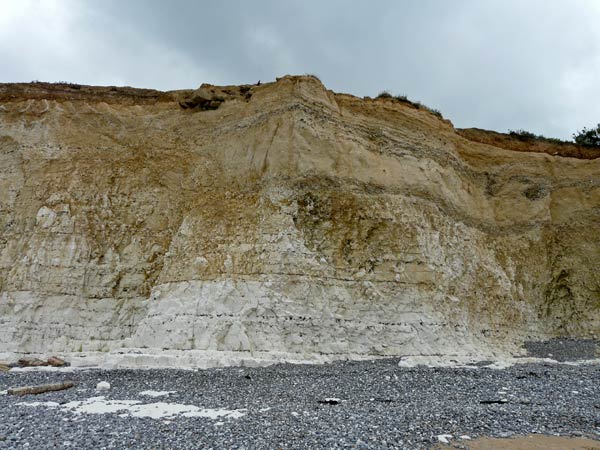
East Sussex Local Geological Sites - Coastal Section Birling Gap (img 1196)
Close-up of western edge of dry valley. Pleistocene flint gravels and fine chalky wash are underlain by chalk showing lateral transition from fresh chalk with regular flint layers to deeply weathered chalk with distorted and disrupted flint bands.
About 20 m high.
Photograph taken: 21/07/2011
Grid ref TV55319604
Direction NE
Image file: P1040225ed.jpg

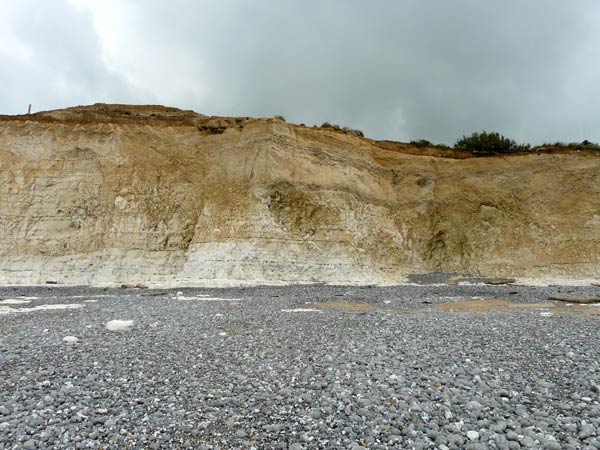
East Sussex Local Geological Sites - Coastal Section Birling Gap (img 1197)
Sharply defined western edge of dry valley deposits. Pleistocene flint gravels and fine chalky wash are underlain by chalk showing lateral transition from fresh chalk with regular flint layers to deeply weathered chalk with distorted and disrupted flint layers.
About 20 m high.
Photograph taken: 21/07/2011
Grid ref TV55289606
Direction NE
Image file: P1040226ed.jpg

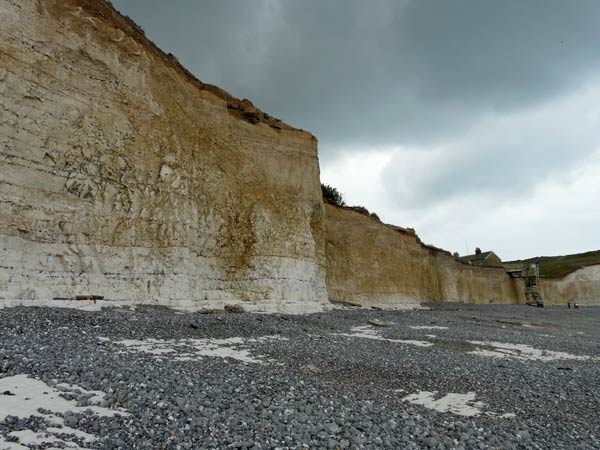
East Sussex Local Geological Sites - Coastal Section Birling Gap (img 1198)
Sharply defined western edge of dry valley deposits. Pleistocene flint gravels and fine chalky wash are underlain by chalk showing lateral transition from fresh chalk with regular flint layers to deeply weathered chalk with distorted and disrupted flint layers.
About 20 m high.
Photograph taken: 21/07/2011
Grid ref TV55309603
Direction SE
Image file: P1040229ed.jpg

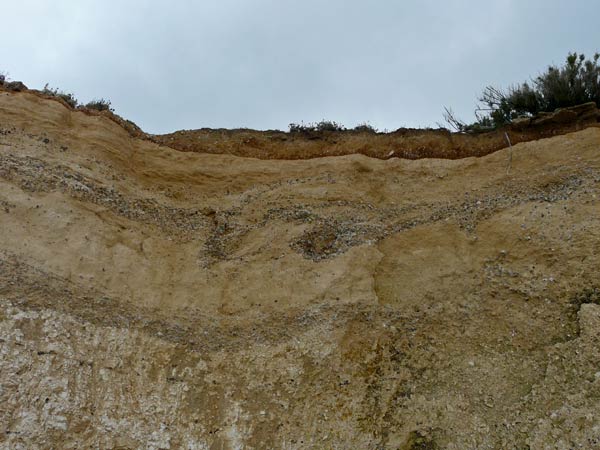
East Sussex Local Geological Sites - Coastal Section Birling Gap (img 1199)
Detail of Pleistocene deposits near western edge of dry valley shown in photo 6. Thin brownish loessic deposits at top overlie head deposits comprising pale chalky wash with interbedded flint gravels. The flint gravels at centre show marked involutions. At the bottom is weathered chalk with disturbed flint layers.
Photograph taken: 21/07/2011
Grid ref TV55329604
Direction NE
Image file: P1040259ed.jpg


East Sussex Local Geological Sites - Coastal Section Birling Gap (img 1200)
Dry valley cliff section at Birling Gap exposing Pleistocene valley fill deposits overlying deeply weathered chalk. The wavecut chalk platform is extensive and accessible here.
Photograph taken: 09/08/2011
Grid ref TV55439580
Direction NNW
Image file: P1040775ed.jpg

Coastal section: Seaford Head (TV59/10)
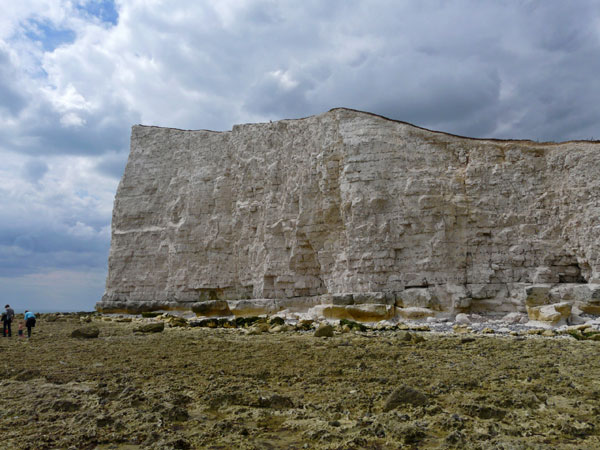
East Sussex Local Geological Sites - Coastal Section Seaford Head (img 1202)
Cliffs up to 35 m high at Hope Gap cut in well jointed Lewes Chalk with numerous close-spaced flint layers. Hardground layers are exposed at the base of the cliff beneath a prominent sheet flint.
Photograph taken: 13/07/2011
Grid ref TV50979736
Direction west
Image file: P1030887ed.jpg

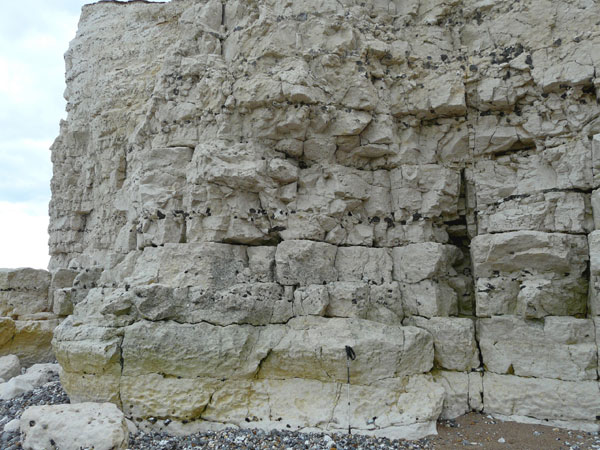
East Sussex Local Geological Sites - Coastal Section Seaford Head (img 1203)
Hardground layers in Lewes Chalk at the base of the cliffs. The Hope Gap Hardground is beneath the prominent sheet flint layer. Above this flint band are layers with slump features and shattered flints.
Photograph taken: 13/07/2011
Grid ref TV50989732
Direction NW
Image file: P1030920ed.jpg

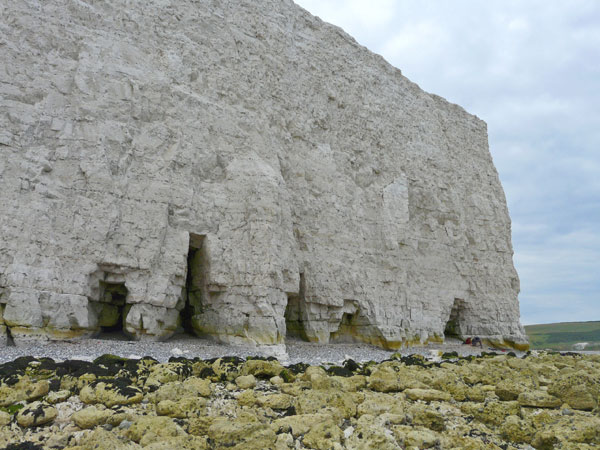
East Sussex Local Geological Sites - Coastal Section Seaford Head (img 1204)
Cliffs up to 35 m high near Hope Gap and cut in well-jointed Lewes Chalk with numerous flint layers. The sea cave shapes are controlled by joint planes.
Photograph taken: 13/07/2011
Grid ref TV50849730
Direction ENE
Image file: P1030925ed.jpg

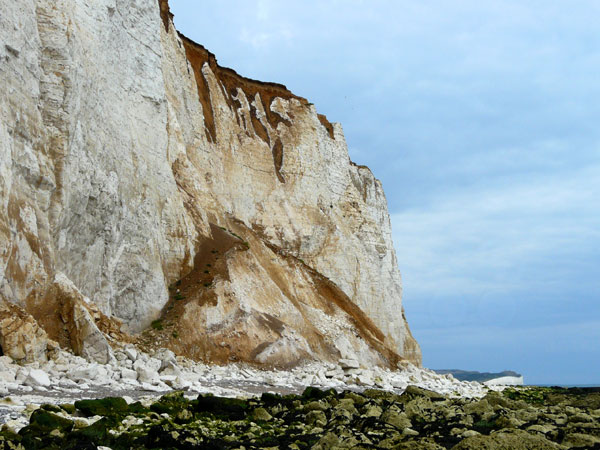
East Sussex Local Geological Sites - Coastal Section Seaford Head (img 1205)
Cliffs up to 60 m high towards Hope Gap and cut in Lewes Chalk overlain by Pleistocene deposits which infill well-developed dissolution pipes at top chalk. Note the large rockfall and boulders covering the wavecut platform.
Photograph taken: 13/07/2011
Grid ref TV50309746
Direction ESE
Image file: P1030936ed.jpg


East Sussex Local Geological Sites - Coastal Section Seaford Head (img 1206)
Pleistocene deposits infilling dissolution pipes at top chalk. These are the same dissolution features shown in Photo 12.
Photograph taken: 13/07/2011
Grid ref TV50439739
Direction NNE
Image file: P1030942ed.jpg


East Sussex Local Geological Sites - Coastal Section Seaford Head (img 1207)
Cliffs up to 65 m high west of Seaford Head cut in Lewes Chalk and Seaford Chalk with numerous close spaced flint layers. Rockfalls and boulders cover the wavecut platform.
Photograph taken: 25/07/2011
Grid ref TV50009751
Direction ESE
Image file: P1040270ed.jpg

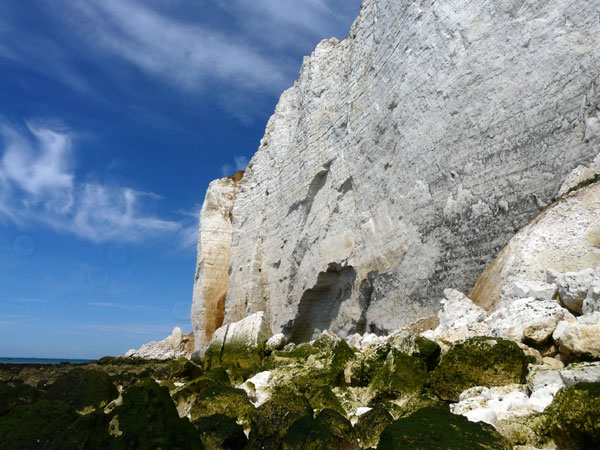
East Sussex Local Geological Sites - Coastal Section Seaford Head (img 1208)
Cliffs up to 75 m high west of Seaford Head and cut in Lewes Chalk and Seaford Chalk with numerous close spaced flint layers. Rockfalls and large boulders cover the wavecut platform.
Photograph taken: 25/07/2011
Grid ref TV49959751
Direction WNW
Image file: P1040274ed.jpg

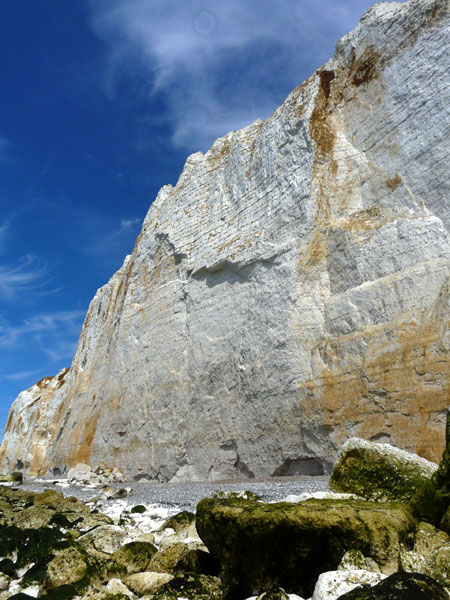
East Sussex Local Geological Sites - Coastal Section Seaford Head (img 1209)
Cliffs up to 80 m high beneath Seaford Head cut in Lewes Chalk and Seaford Chalk with numerous close spaced flint layers. To the west the dip increases and the overlying Seaford Chalk reaches beach level. The wavecut platform here is accessible.
Photograph taken: 25/07/2011
Grid ref TV49749754
Direction NW
Image file: P1040278ed.jpg

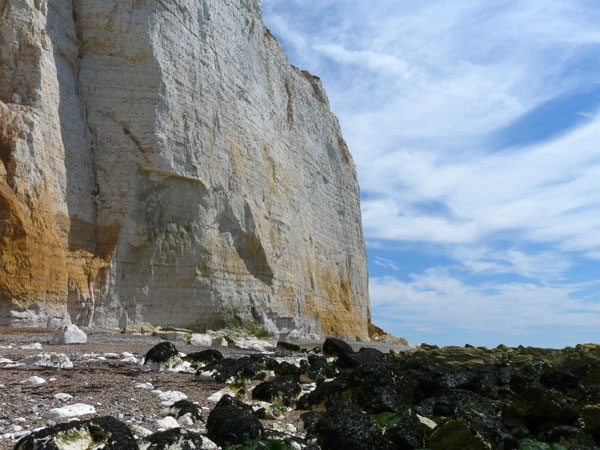
East Sussex Local Geological Sites - Coastal Section Seaford Head (img 1210)
Cliffs up to 75 m high west of Seaford Head and cut in Lewes Chalk and Seaford Chalk which here is relatively flat-bedded with numerous close-spaced flint layers.
Photograph taken: 25/07/2011
Grid ref TV49579766
Direction ESE
Image file: P1040283ed.jpg

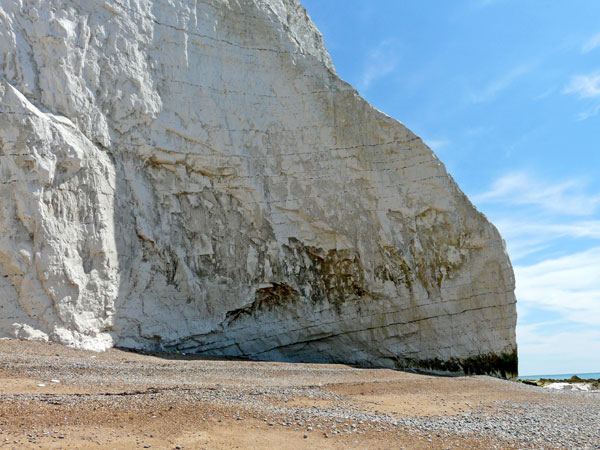
East Sussex Local Geological Sites - Coastal Section Seaford Head (img 1211)
Lower zones of Seaford Chalk below Seaford Head dipping 10° to left (north).
Note the prominent Seven Sisters Flint Band near the cliff base.
Photograph taken: 25/07/2011
Grid ref TV49239789
Direction ESE
Image file: P1040290ed.jpg

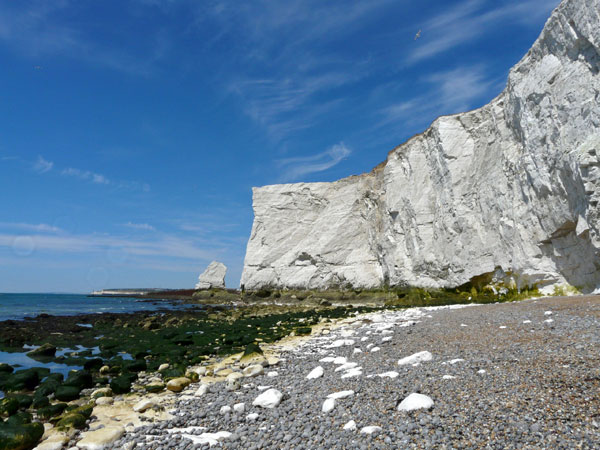
East Sussex Local Geological Sites - Coastal Section Seaford Head (img 1212)
Cliffs west of Seaford Head towards Splash Point. The northerly dip exposes first the Seaford Chalk (foreground) and then the overlying Newhaven Chalk at beach level.
Photograph taken: 25/07/2011
Grid ref TV49179795
Direction WNW
Image file: P1040291ed.jpg

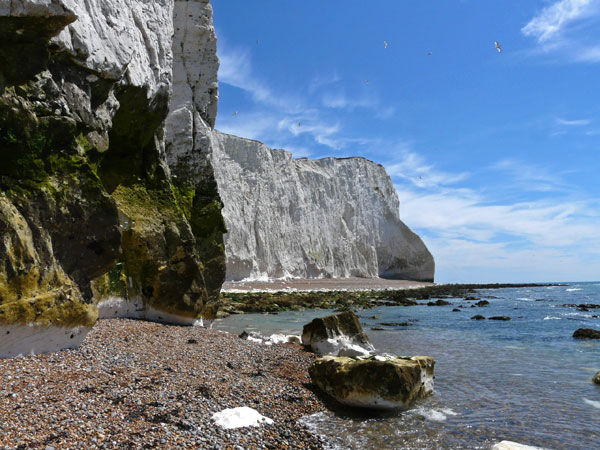
East Sussex Local Geological Sites - Coastal Section Seaford Head (img 1213)
Splash Point cut in lower Newhaven Chalk and cliffs up to 85 m high towards Seaford Head exposing the underlying Seaford Chalk.
Photograph taken: 25/07/2011
Grid ref TV49029804
Direction SE
Image file: P1040295ed.jpg

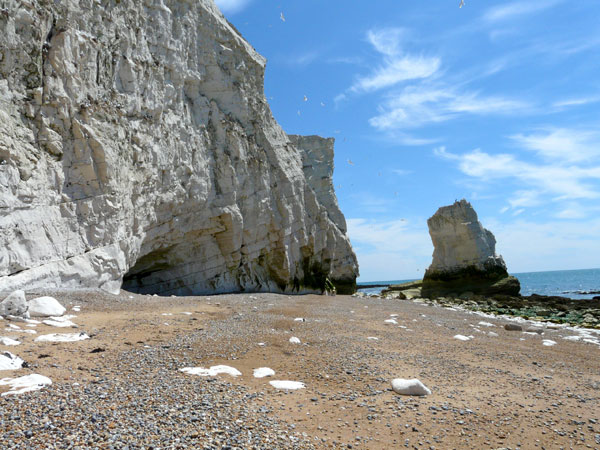
East Sussex Local Geological Sites - Coastal Section Seaford Head (img 1214)
Approaching Splash Point from the west. Cliffs and stack cut in lower Newhaven Chalk dipping 10° to left (north) on the Seaford anticline.
Photograph taken: 25/07/2011
Grid ref TV48959812
Direction SE
Image file: P1040299ed.jpg

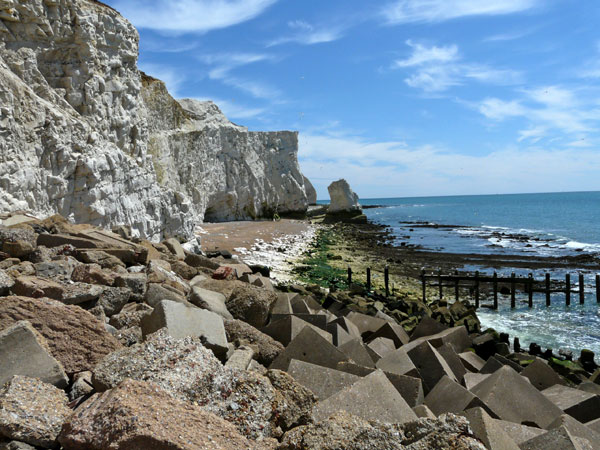
East Sussex Local Geological Sites - Coastal Section Seaford Head (img 1215)
Western end of site up to Splash Point viewed from concrete block defences. Cliffs up to 35 m high expose Newhaven Chalk and overlying basal Culver Chalk dipping north (to left and towards the camera) on the Seaford anticline.
Photograph taken: 25/07/2011
Grid ref TV48869816
Direction SE
Image file: P1040301ed.jpg

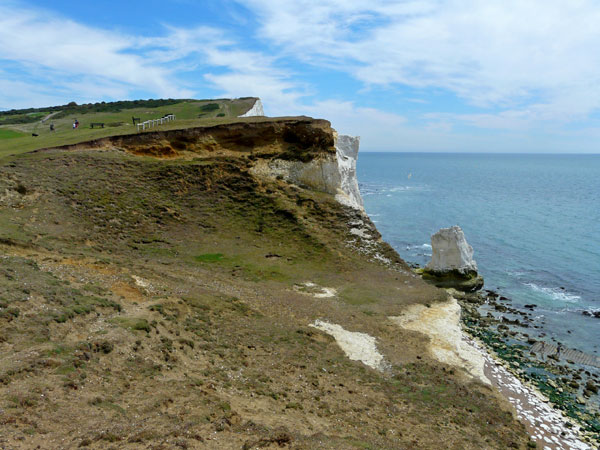
East Sussex Local Geological Sites - Coastal Section Seaford Head (img 1216)
Thin Woolwich Beds overlying basal Culver Chalk at Seaford end of the site. Sea stack is close to Splash Point and is cut in lower Newhaven Chalk.
Photograph taken: 25/07/2011
Grid ref TV48939816
Direction SE
Image file: P1040313ed.jpg

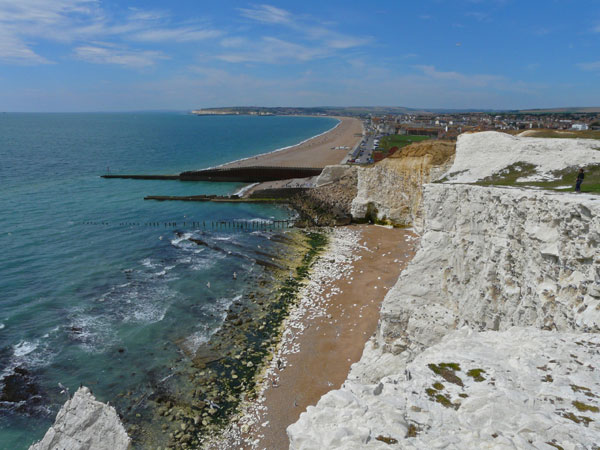
East Sussex Local Geological Sites - Coastal Section Seaford Head (img 1217)
Western end of site at Seaford showing breakwater and coastal defences. Cliffs up to 35 m high expose Newhaven Chalk in foreground and basal Culver Chalk at the far end of the beach overlain by thin Woolwich Beds.
Photograph taken: 25/07/2011
Grid ref TV49049805
Direction NW
Image file: P1040317ed.jpg

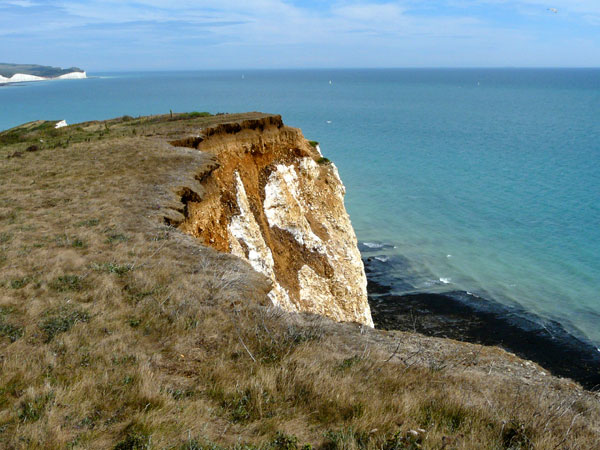
East Sussex Local Geological Sites - Coastal Section Seaford Head (img 1218)
Pleistocene deposits infilling dissolution pipes at top chalk. These are the same dissolution features shown in Photo 12.
Photograph taken: 25/07/2011
Grid ref TV50449745
Direction SE
Image file: P1040324ed.jpg

Coastal section: Hope Gap Steps Cuckmere Haven (TV59/10a)
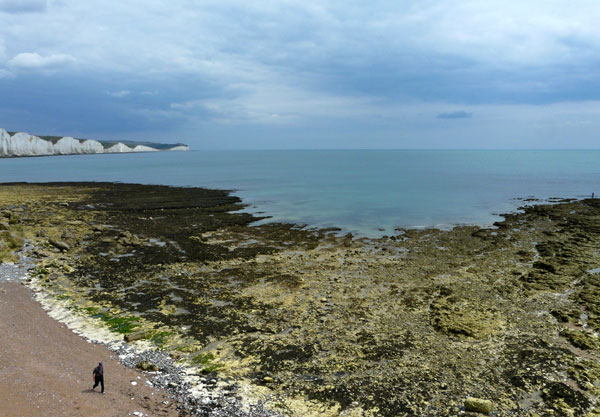
East Sussex Local Geological Sites - Coastal Section Hope Gap Steps to Cuckmere Haven (img 1220)
Very accessible wavecut chalk platform below Hope Gap Steps. The embayment marks the former course of a Hope Gap river which continued SE to join the Cuckmere.
Photograph taken: 13/07/2011
Grid ref TV50989738
Direction SSE
Image file: P1030883ed.jpg


East Sussex Local Geological Sites - Coastal Section Hope Gap Steps to Cuckmere Haven (img 1221)
Cross-section of shallow dry valley at Hope Gap Steps. Pleistocene silts, sands and flint gravels overlie weathered Lewes Chalk.
Photograph taken: 13/07/2011
Grid ref TV50989732
Direction north
Image file: P1030888ed.jpg


East Sussex Local Geological Sites - Coastal Section Hope Gap Steps to Cuckmere Haven (img 1222)
Lewes Chalk cliffs up to 25 m high viewed from the wavecut platform. Thick Pleistocene deposits, partly loessic, appear to be incised into the chalk to the right (east) with a gravelly flint lag at the base.
Photograph taken: 13/07/2011
Grid ref TV50989732
Direction NE
Image file: P1030890ed.jpg


East Sussex Local Geological Sites - Coastal Section Hope Gap Steps to Cuckmere Haven (img 1223)
Hope Gap Steps from the east showing the dry valley cut into Lewes Chalk. Cliffs are up to 35 m high at left and 25 m at right, where the chalk is overlain unconformably by Pleistocene deposits, partly loessic.
Photograph taken: 13/07/2011
Grid ref TV51159739
Direction west
Image file: P1030892ed.jpg

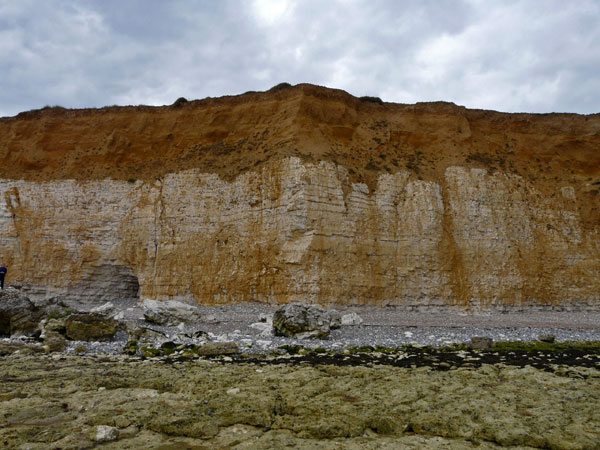
East Sussex Local Geological Sites - Coastal Section Hope Gap Steps to Cuckmere Haven (img 1224)
Cliffs about 20 m high cut in Lewes Chalk with numerous flint bands. Irregular unconformity surface at top chalk is overlain by thick Pleistocene deposits, partly loessic, which infill dissolution features.
Photograph taken: 13/07/2011
Grid ref TV51159739
Direction NW
Image file: P1030894ed.jpg

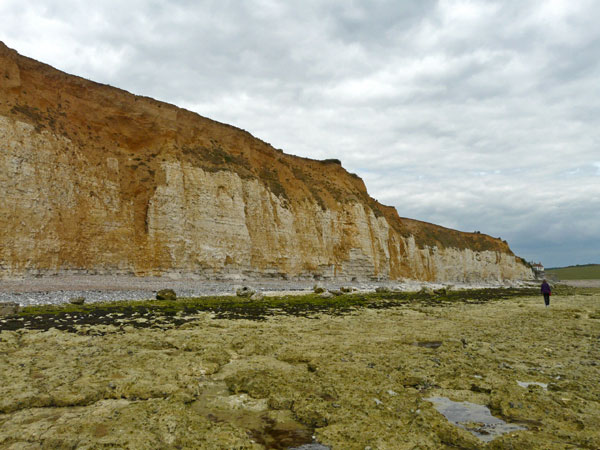
East Sussex Local Geological Sites - Coastal Section Hope Gap Steps to Cuckmere Haven (img 1225)
Lewes Chalk cliffs up to 20 m high viewed from the wavecut platform. Thick Pleistocene deposits, partly loessic, overlie the irregular top chalk unconformity as far as the Coastguard Cottages.
Photograph taken: 13/07/2011
Grid ref TV51159739
Direction NNE
Image file: P1030896ed.jpg

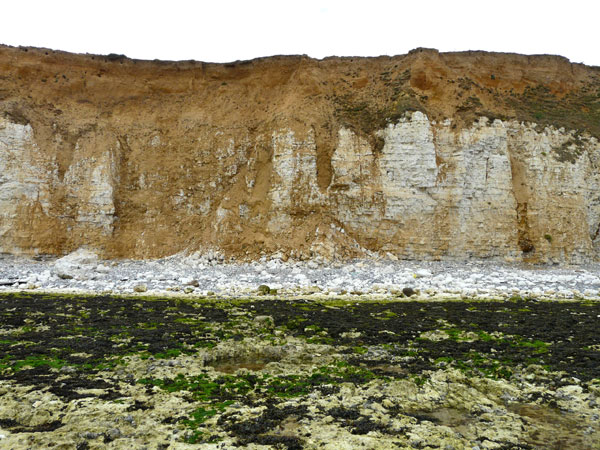
East Sussex Local Geological Sites - Coastal Section Hope Gap Steps to Cuckmere Haven (img 1226)
Cliffs about 20 m high cut in Lewes Chalk. Irregular unconformity surface at top chalk is overlain by thick Pleistocene deposits, partly loessic, which infill deep dissolution pipes in the Lewes Chalk. Small pool in foreground is an eroded cross-section of a pipe.
Photograph taken: 13/07/2011
Grid ref TV51259746
Direction NW
Image file: P1030900ed.jpg

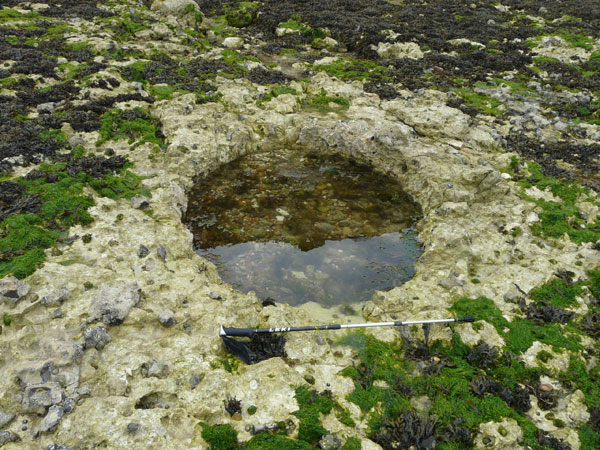
East Sussex Local Geological Sites - Coastal Section Hope Gap Steps to Cuckmere Haven (img 1227)
Circular pool on wavecut platform representing eroded cross-section of a dissolution pipe with harder cemented chalk forming a raised rim round the pool.
1 m pole for scale.
Photograph taken: 13/07/2011
Grid ref TV51249747
Image file: P1030901.jpg

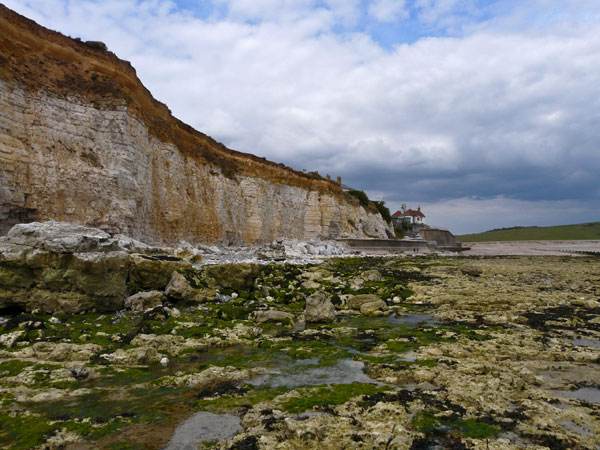
East Sussex Local Geological Sites - Coastal Section Hope Gap Steps to Cuckmere Haven (img 1228)
Lewes Chalk cliffs up to 20 m high viewed from the wavecut platform. Thick Pleistocene deposits, partly loessic, overlie the irregular top chalk unconformity as far as the Coastguard Cottages.
Photograph taken: 13/07/2011
Grid ref TV51319752
Direction NNE
Image file: P1030904ed.jpg

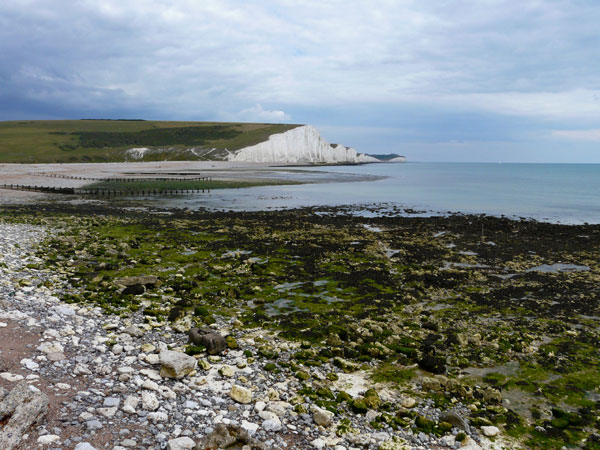
East Sussex Local Geological Sites - Coastal Section Hope Gap Steps to Cuckmere Haven (img 1229)
View from wavecut platform opposite Coastguard Cottages across delta and shingle beaches of Cuckmere Haven to chalk cliffs of Seven Sisters.
Photograph taken: 13/07/2011
Grid ref TV51379761
Direction ESE
Image file: P1030905ed.jpg


East Sussex Local Geological Sites - Coastal Section Hope Gap Steps to Cuckmere Haven (img 1230)
Close-up of cliff about 20 m high exposing well jointed Lewes Chalk with numerous flint layers and two near-vertical fractures (faults) with minor offset of the flint layers. Unconformity surface at top chalk is overlain by thick Pleistocene deposits, partly loessic.
Photograph taken: 13/07/2011
Grid ref TV51339757
Direction NW
Image file: P1030908ed.jpg

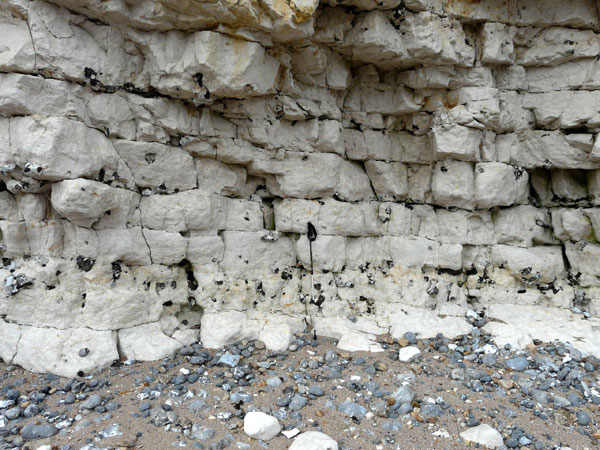
East Sussex Local Geological Sites - Coastal Section Hope Gap Steps to Cuckmere Haven (img 1231)
Detail of well jointed Lewes Chalk with close-spaced flint layers ranging from scattered tubular flints to sheet flints. 1 m pole for scale.
Photograph taken: 13/07/2011
Grid ref TV51289754
Direction NW
Image file: P1030910ed.jpg

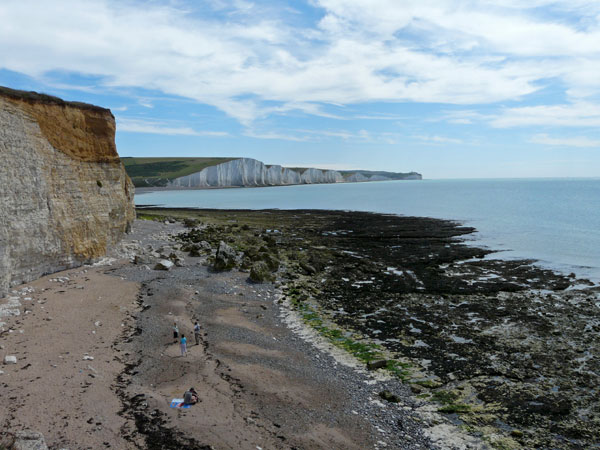
East Sussex Local Geological Sites - Coastal Section Hope Gap Steps to Cuckmere Haven (img 1232)
Cliffs at Hope Gap cut in Lewes Chalk overlain by Pleistocene deposits which appear to be incised into the chalk. Wavecut chalk platform is very accessible. View of Seven Sisters chalk cliffs across Cuckmere Haven.
Photograph taken: 25/07/2011
Grid ref TV50989738
Direction east
Image file: P1040261ed.jpg


East Sussex Local Geological Sites - Coastal Section Hope Gap Steps to Cuckmere Haven (img 1233)
Shingle beach on east side of Cuckmere River mouth looking across to the cliffs between Hope Gap Steps and the Coastguard Cottages.
Photograph taken: 27/07/2011
Grid ref TV52109755
Direction west
Image file: P1040332ed.jpg

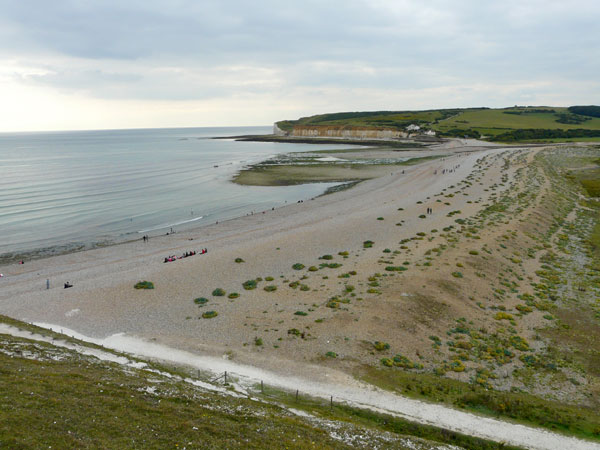
East Sussex Local Geological Sites - Coastal Section Hope Gap Steps to Cuckmere Haven (img 1234)
View across shingle beaches and delta of Cuckmere Haven to cliffs between Hope Gap Steps and the Coastguard Cottages.
Photograph taken: 27/07/2011
Grid ref TV52169759
Direction WSW
Image file: P1040428ed.jpg

Coastal section: Seven Sisters (TV59/10b)
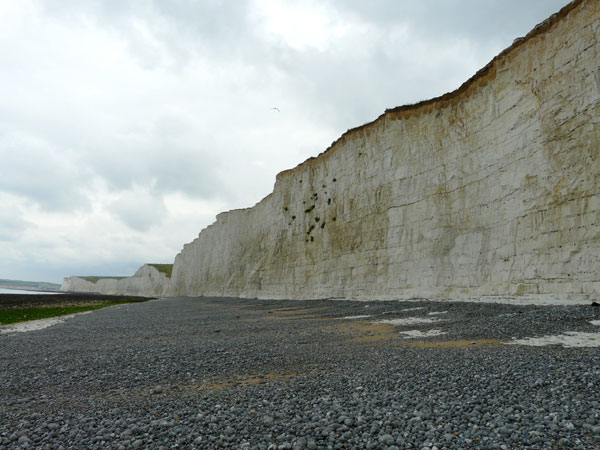
East Sussex Local Geological Sites - Coastal Section Seven Sisters (img 1236)
Cliffs west of Birling Gap about 30 m high exposing Seaford Chalk. Thin Pleistocene loessic deposits at top of cliff with cryoturbation lobes at top chalk.
Photograph taken: 21/07/2011
Grid ref TV55279607
Direction WNW
Image file: P1040231ed.jpg


East Sussex Local Geological Sites - Coastal Section Seven Sisters (img 1237)
Cliffs up to 40 m high beneath Went Hill Brow looking east to Birling Gap dry valley and the Belle Tout headland.
Photograph taken: 21/07/2011
Grid ref TV55079622
Direction SE
Image file: P1040235ed.jpg

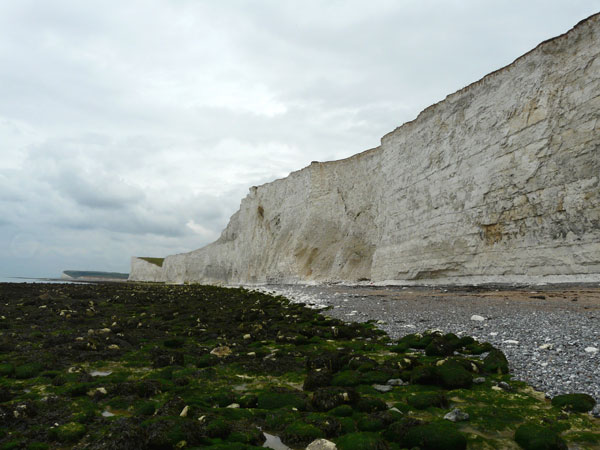
East Sussex Local Geological Sites - Coastal Section Seven Sisters (img 1238)
Cliffs up to 60 m high beneath Baily’s Hill. Thin Pleistocene loessic deposits overlie Seaford Chalk. Rockfall debris at foot of highest cliffs.
Photograph taken: 21/07/2011
Grid ref TV54769641
Direction WNW
Image file: P1040247ed.jpg

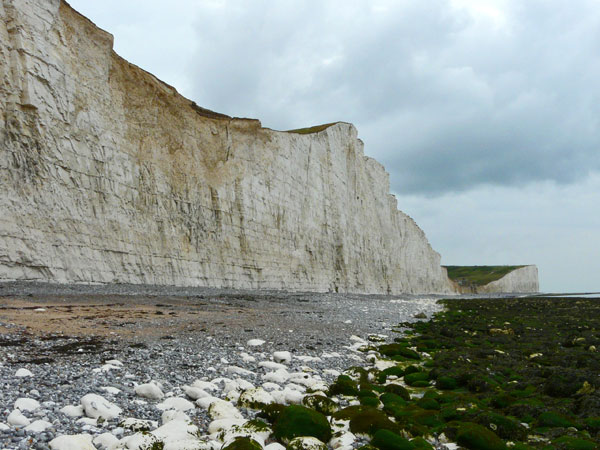
East Sussex Local Geological Sites - Coastal Section Seven Sisters (img 1239)
Cliffs from Michel Dean dry valley east to Birling Gap. Dry valley Pleistocene deposits and weathering clearly visible.
Photograph taken: 21/07/2011
Grid ref TV54719644
Direction east
Image file: P1040250ed.jpg

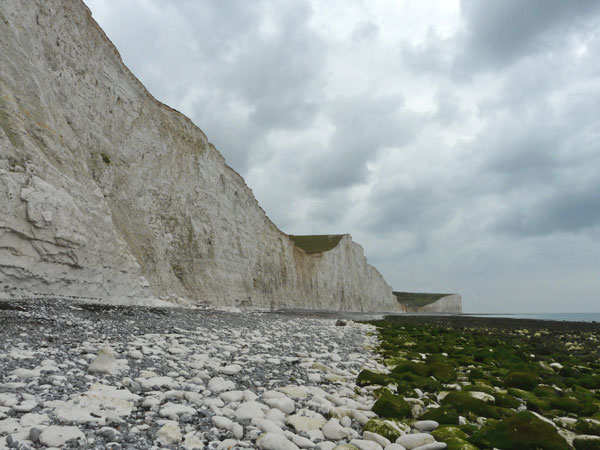
East Sussex Local Geological Sites - Coastal Section Seven Sisters (img 1240)
Cliffs east of Baily's Hill exposing Seaford Chalk with numerous flint bands. The nearer dry valley is Michel Dean and the far one is Birling Gap.
Photograph taken: 21/07/2011
Grid ref TV54629648
Direction ESE
Image file: P1040252ed.jpg

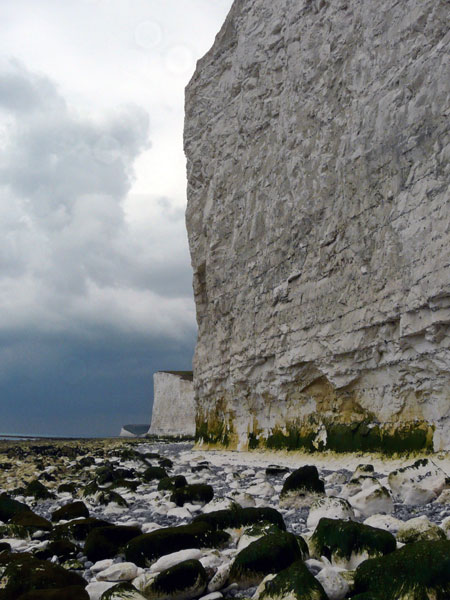
East Sussex Local Geological Sites - Coastal Section Seven Sisters (img 1241)
Vertical cliffs about 40 m high in Seaford Chalk beneath Flat Hill showing closely spaced flint bands.
Photograph taken: 21/07/2011
Grid ref TV54379660
Direction WNW
Image file: P1040256ed.jpg

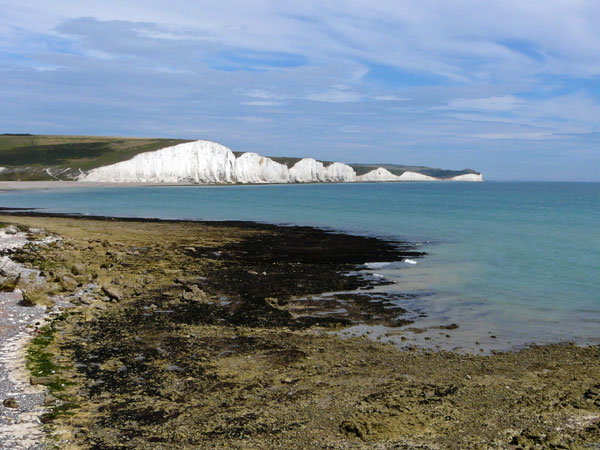
East Sussex Local Geological Sites - Coastal Section Seven Sisters (img 1242)
Seven Sisters cliffs viewed from Hope Gap steps. From this point seven cliffs are evident with intervening truncated dry valleys. However the view is foreshortened and the named Seven Sisters actually lie between Cuckmere Haven at left and Birling Gap, the large dry valley at the east (right) end.
Photograph taken: 25/07/2011
Grid ref TV50969737
Direction ESE
Image file: P1040328ed.jpg

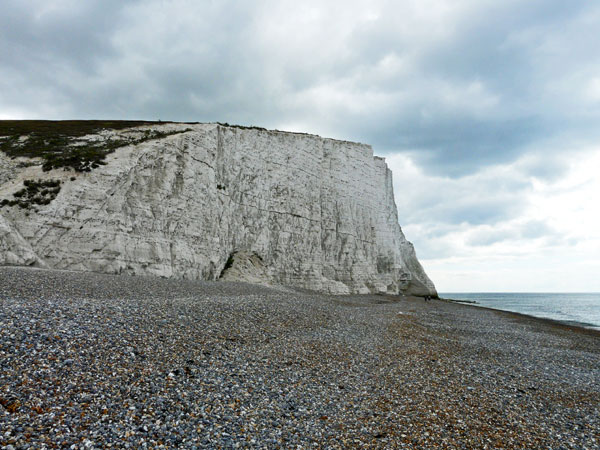
East Sussex Local Geological Sites - Coastal Section Seven Sisters (img 1243)
Western end of cliffs at Cuckmere Haven. Up to 80 m high exposing mainly Seaford Chalk. Beds here dip to the east and the Seven Sisters flint band rises up the cliff face.
Photograph taken: 27/07/2011
Grid ref TV52089754
Direction SE
Image file: P1040334ed.jpg

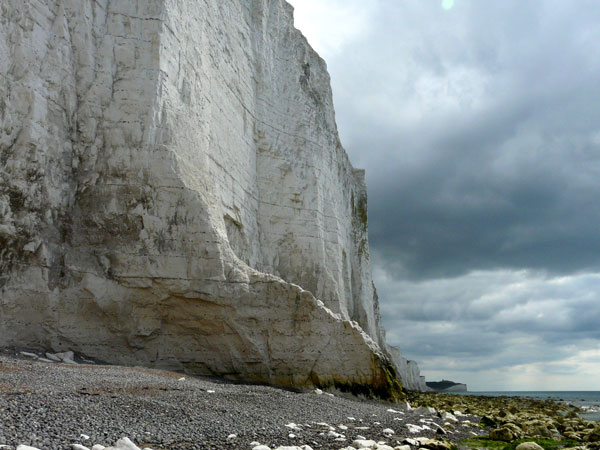
East Sussex Local Geological Sites - Coastal Section Seven Sisters (img 1244)
Part of a succession of buttresses at the base of the western cliffs beneath Haven Brow. Mainly Seaford Chalk exposed with Seven Sisters flint band crossing the middle of the buttress.
Photograph taken: 27/07/2011
Grid ref TV52319738
Direction ESE
Image file: P1040340ed.jpg

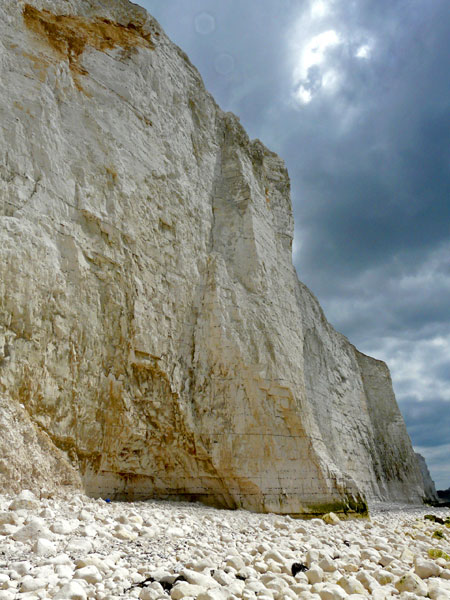
East Sussex Local Geological Sites - Coastal Section Seven Sisters (img 1245)
Vertical face of Seaford Chalk about 70 m high beneath Short Brow. Foreshore covered with relatively fresh reworked debris from rockfalls.
Photograph taken: 27/07/2011
Grid ref TV52709724
Direction ESE
Image file: P1040354ed.jpg

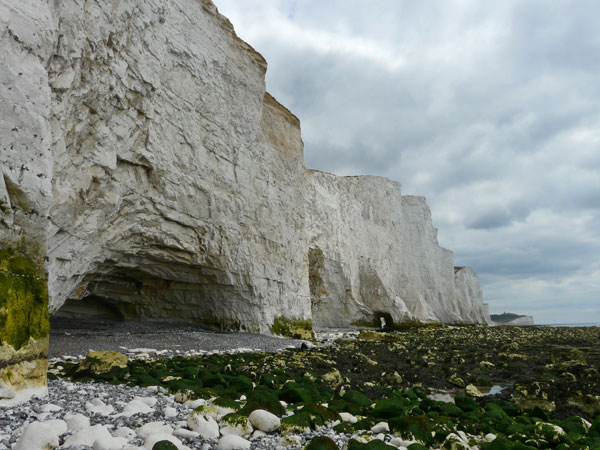
East Sussex Local Geological Sites - Coastal Section Seven Sisters (img 1246)
Cliffs below Limekiln Bottom dry valley looking towards Rough Brow. Large sea cave in foreground and buttress with arch beyond. Foreshore strewn with seaweed-covered boulders.
Photograph taken: 27/07/2011
Grid ref TV52839716
Direction ESE
Image file: P1040361ed.jpg

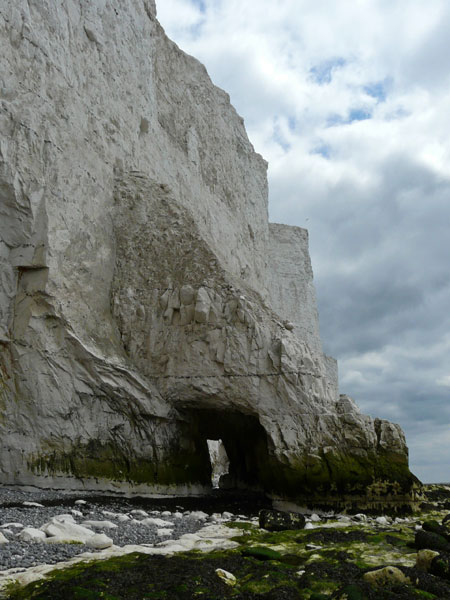
East Sussex Local Geological Sites - Coastal Section Seven Sisters (img 1247)
Vertical cliffs beneath Rough Brow with large buttress and arch at base.
Photograph taken: 27/07/2011
Grid ref TV52929714
Direction ESE
Image file: P1040363ed.jpg


East Sussex Local Geological Sites - Coastal Section Seven Sisters (img 1248)
Vertical cliffs of Seaford Chalk about 65 m high at Brass Point showing large rounded sea caves and buttresses.
Photograph taken: 27/07/2011
Grid ref TV53269696
Direction ESE
Image file: P1040372ed.jpg


East Sussex Local Geological Sites - Coastal Section Seven Sisters (img 1249)
View from below Brass Point along western part of the Seven Sisters cliffs towards Hope Gap.
Photograph taken: 27/07/2011
Grid ref TV53379694
Direction WNW
Image file: P1040377ed.jpg

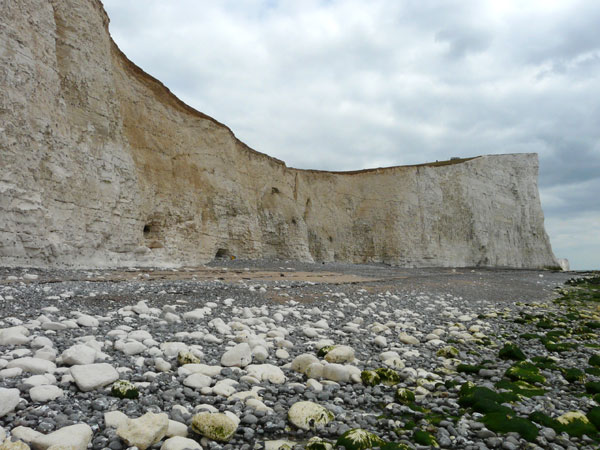
East Sussex Local Geological Sites - Coastal Section Seven Sisters (img 1250)
Dry valley at Gap Bottom showing thin head deposits overlie deeply weathered brownish chalk with distorted remnants of flint bands. Flint bands at base of cliff are relatively undisturbed.
Photograph taken: 27/07/2011
Grid ref TV53649685
Direction east
Image file: P1040383ed.jpg

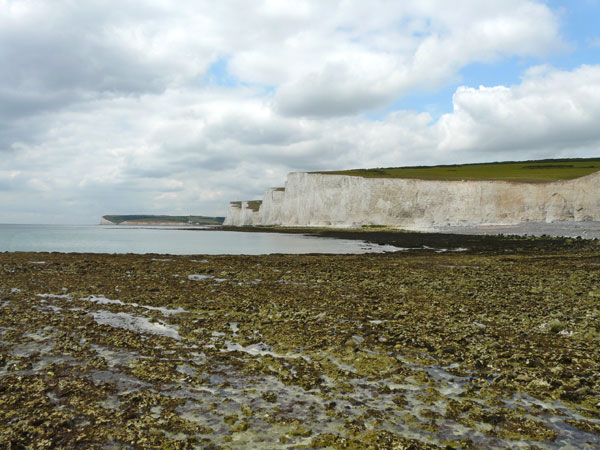
East Sussex Local Geological Sites - Coastal Section Seven Sisters (img 1251)
Cliffs to the west towards Hope Gap viewed from well-exposed wavecut platform at Flagstaff Point. The dry valley at right is Gap Bottom.
Photograph taken: 27/07/2011
Grid ref TV53819665
Direction NW
Image file: P1040393ed.jpg

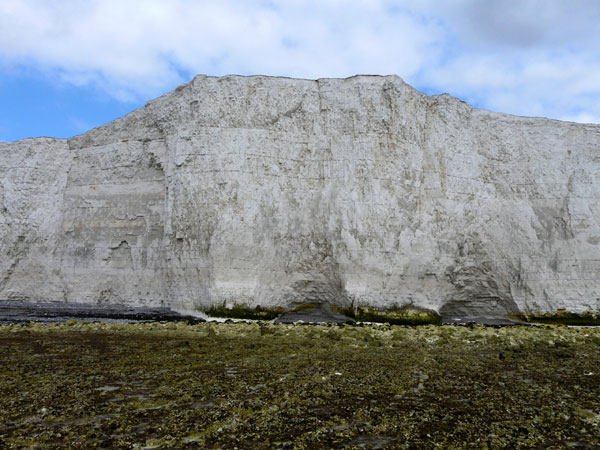
East Sussex Local Geological Sites - Coastal Section Seven Sisters (img 1252)
Cliffs at Flagstaff Point about 50 m high exposing horizontally bedded Seaford Chalk with numerous flint bands. Two rounded sea caves at base.
Photograph taken: 27/07/2011
Grid ref TV53819665
Direction NE
Image file: P1040395ed.jpg

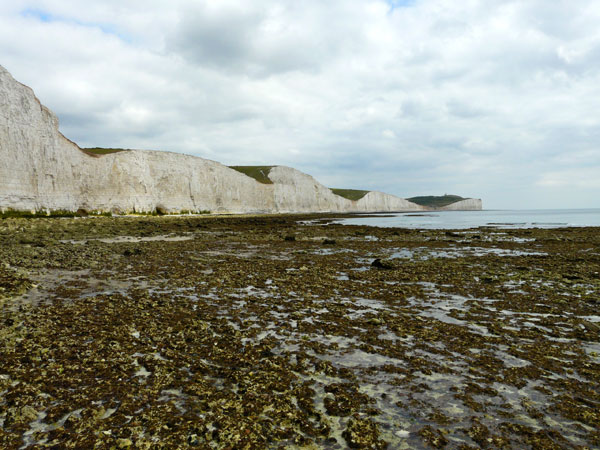
East Sussex Local Geological Sites - Coastal Section Seven Sisters (img 1253)
Cliffs to the east viewed from well-exposed wavecut platform at Flagstaff Point. The truncated dry valleys are Flagstaff Bottom, Flathill Bottom and Michel Dean with Birling Gap at far right.
Photograph taken: 27/07/2011
Grid ref TV53819665
Direction east
Image file: P1040398ed.jpg

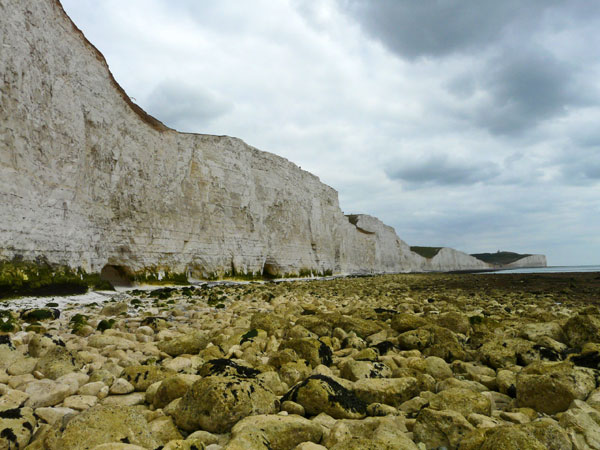
East Sussex Local Geological Sites - Coastal Section Seven Sisters (img 1254)
Cliffs east of Flagstaff Point about 50 m high exposing horizontally bedded Seaford Chalk with numerous flint bands. Thin dry valley Pleistocene deposits at top of cliffs (Flagstaff Bottom) and sea caves at base.
Photograph taken: 27/07/2011
Grid ref TV53949671
Direction ESE
Image file: P1040400ed.jpg

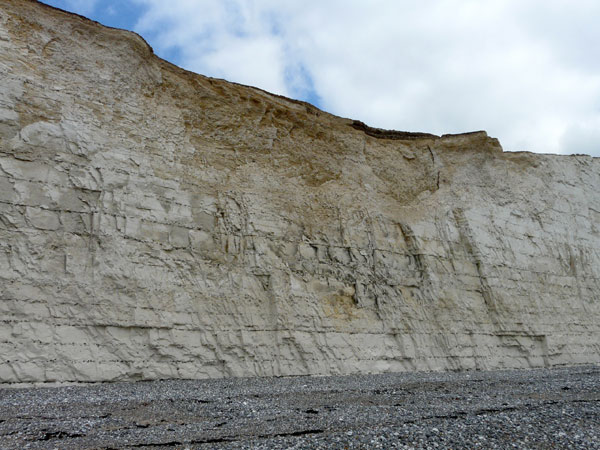
East Sussex Local Geological Sites - Coastal Section Seven Sisters (img 1255)
Cliffs about 30 m high at Michel Dean dry valley. Thin head deposits overlie deeply weathered brownish chalk with distorted remnants of flint bands. Clear transition to unweathered chalk below.
Photograph taken: 27/07/2011
Grid ref TV54749641
Direction NE
Image file: P1040407ed.jpg

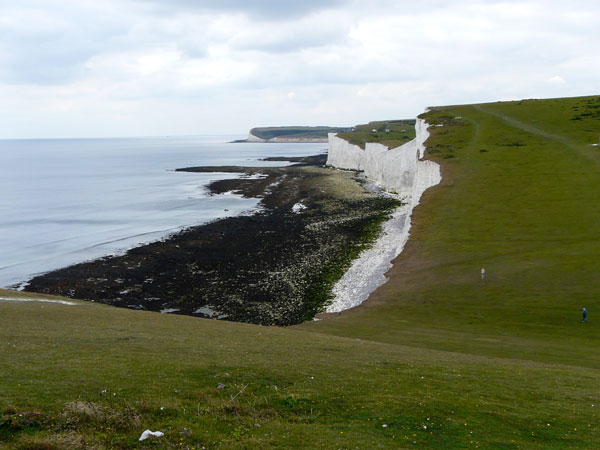
East Sussex Local Geological Sites - Coastal Section Seven Sisters (img 1256)
Looking across Michel Dean dry valley and exposed wavecut chalk platform out to Flagstaff Point.
Photograph taken: 27/07/2011
Grid ref TV54899638
Direction WNW
Image file: P1040411ed.jpg

Coastal section: Belle Tout to Birling Gap (TV59/10c)

East Sussex Local Geological Sites - Coastal Section Belle Tout to Birling Gap (img 1258)
Cliffs east of Birling Gap up to 45 m high exposing Seaford Chalk with numerous prominent flint layers. Thin capping of Pleistocene loessic deposits at top of cliffs.
Photograph taken: 09/08/2011
Grid ref TV55409592
Direction SE
Image file: P1040696ed.jpg


East Sussex Local Geological Sites - Coastal Section Belle Tout to Birling Gap (img 1259)
Cliffs east of Birling Gap up to 45 m high exposing well-jointed Seaford Chalk with numerous prominent flint layers. The shape of the sea caves at the base of the cliffs is controlled by jointing. The bedding is starting to rise gently to the east away from the axis of the Birling Syncline.
Photograph taken: 09/08/2011
Grid ref TV55479584
Direction SE
Image file: P1040699ed.jpg

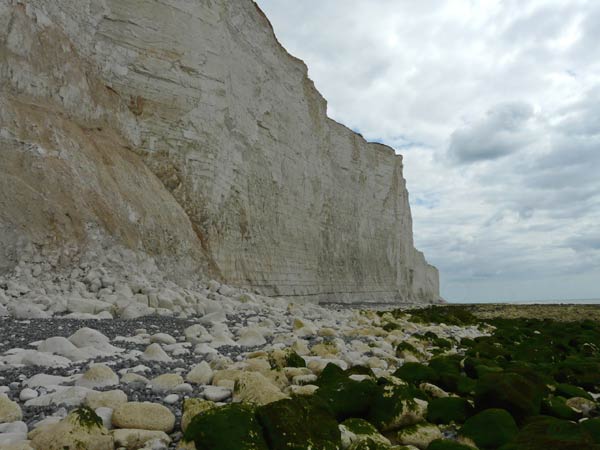
East Sussex Local Geological Sites - Coastal Section Belle Tout to Birling Gap (img 1260)
Cliffs up to 60 m high exposing Seaford Chalk with numerous continuous closely spaced flint bands. The Seven Sisters flint band is near the base. Bedding rises gently to the east away from the axis of the Birling Syncline. Rockfall debris at left.
Photograph taken: 09/08/2011
Grid ref TV55839558
Direction ESE
Image file: P1040706ed.jpg

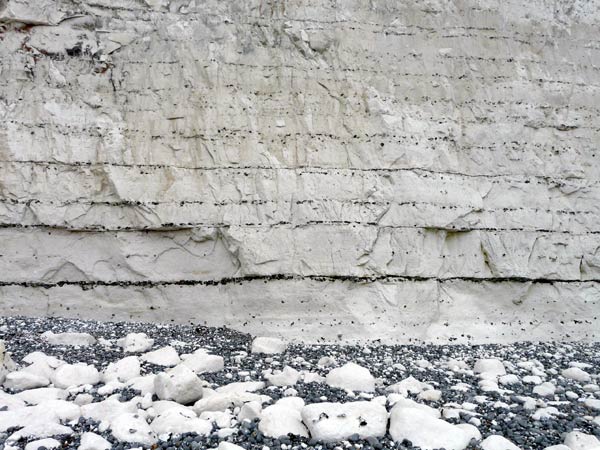
East Sussex Local Geological Sites - Coastal Section Belle Tout to Birling Gap (img 1261)
Close-up of base of cliff showing close-spaced tabular and nodular flint bands in the lower Seaford Chalk. The most prominent layer is the Seven Sisters flint band. Height of section about 4 m.
Photograph taken: 09/08/2011
Grid ref TV55909558
Direction NNE
Image file: P1040707ed.jpg

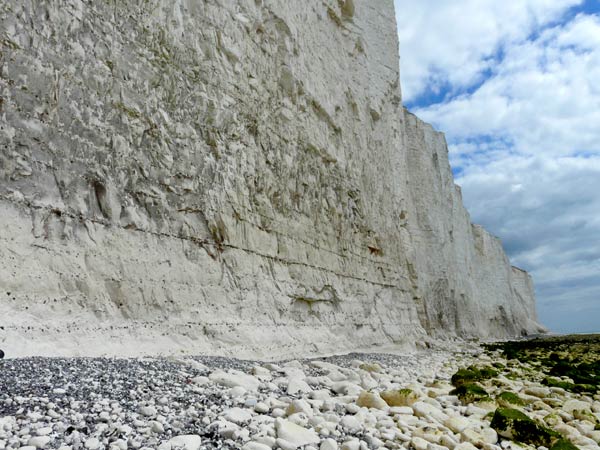
East Sussex Local Geological Sites - Coastal Section Belle Tout to Birling Gap (img 1262)
Cliffs up to 80 m high approaching Belle Tout exposing Seaford Chalk with numerous prominent flint layers. Marl seams occur in the section below the Seven Sisters flint band where the flint bands are less prominent. Gentle dip to left (west) towards the axis of the Birling Syncline.
Photograph taken: 09/08/2011
Grid ref TV56149553
Direction ESE
Image file: P1040710ed.jpg

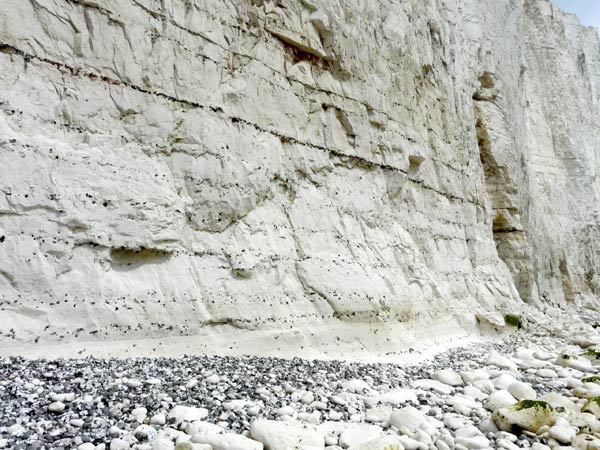
East Sussex Local Geological Sites - Coastal Section Belle Tout to Birling Gap (img 1263)
Close-up of base of cliff shown in photo 9. Marl seams occur in the section below the Seven Sisters flint band where the flint layers are less prominent.
Photograph taken: 09/08/2011
Grid ref TV56189552
Direction east
Image file: P1040712ed.jpg

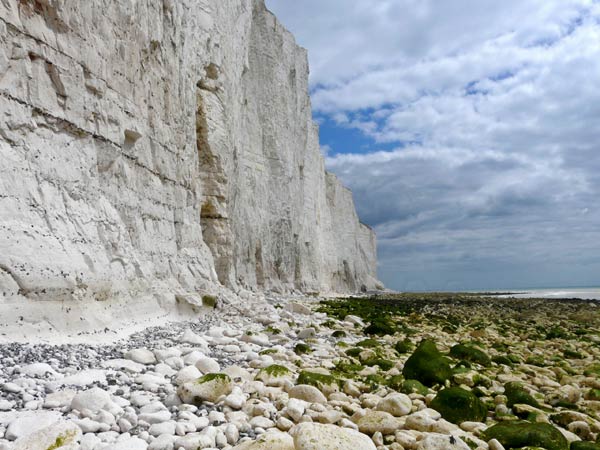
East Sussex Local Geological Sites - Coastal Section Belle Tout to Birling Gap (img 1264)
Cliffs up to 80 m high approaching Belle Tout exposing Seaford Chalk with numerous prominent flint layers. Marl seams occur in the section below the Seven Sisters flint band where there are fewer flint layers. Gentle dip to left (west) towards the axis of the Birling Syncline.
Photograph taken: 09/08/2011
Grid ref TV56189552
Direction ESE
Image file: P1040713ed.jpg

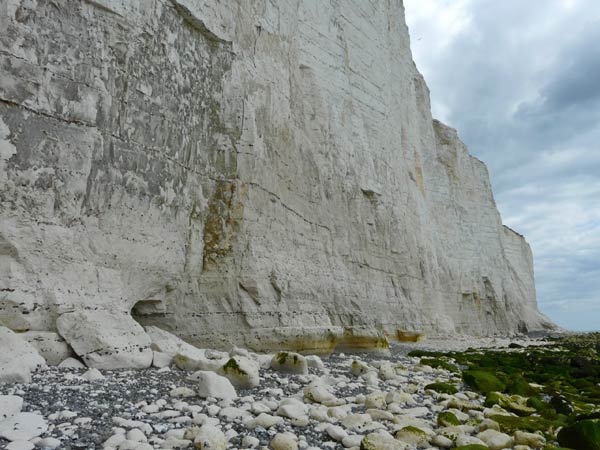
East Sussex Local Geological Sites - Coastal Section Belle Tout to Birling Gap (img 1265)
Cliffs 80 m high at Belle Tout exposing Seaford Chalk down to the Shoreham Marls at the junction with the Lewes Chalk. The most prominent flint layer is the Seven Sisters flint band.
Photograph taken: 09/08/2011
Grid ref TV56319550
Direction ESE
Image file: P1040716ed.jpg


East Sussex Local Geological Sites - Coastal Section Belle Tout to Birling Gap (img 1266)
Tubular flint lying on beach at Belle Tout. Probably derived from Bedwell's Columnar flint band high up in the cliff face.
30 cm scale.
Photograph taken: 09/08/2011
Grid ref TV56329549
Image file: P1040718ed.jpg


East Sussex Local Geological Sites - Coastal Section Belle Tout to Birling Gap (img 1267)
Basal Seaford Chalk at Belle Tout showing flint bands and marl seams and an oblique flint-filled fracture offsetting the layers. The most prominent flint layer is the Seven Sisters flint band.
Photograph taken: 09/08/2011
Grid ref TV56399549
Direction NNW
Image file: P1040720ed.jpg


East Sussex Local Geological Sites - Coastal Section Belle Tout to Birling Gap (img 1268)
Extensive chalk platform between Birling Gap and Belle Tout.
Photograph taken: 09/08/2011
Grid ref TV55829557
Direction SW
Image file: P1040763ed.jpg


East Sussex Local Geological Sites - Coastal Section Belle Tout to Birling Gap (img 1269)
Cliffs 45 m high exposing Seaford Chalk showing numerous prominent flint layers including the Seven Sisters flint band near the base and also a sea cave.
Photograph taken: 09/08/2011
Grid ref TV55829557
Direction NW
Image file: P1040764ed.jpg

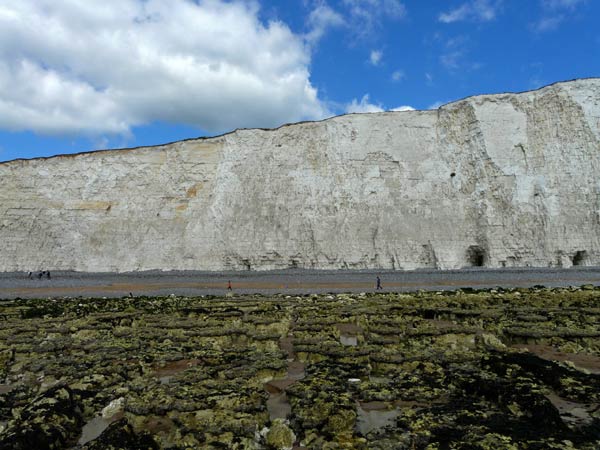
East Sussex Local Geological Sites - Coastal Section Belle Tout to Birling Gap (img 1270)
Cliffs east of Birling Gap up to 45 m high exposing Seaford Chalk with numerous prominent flint layers. Bedding is sub-horizontal, close to the axis pf the Birling Syncline. The wavecut chalk platform here is extensive and accessible.
Photograph taken: 09/08/2011
Grid ref TV55439580
Direction NE
Image file: P1040774ed.jpg

Coastal section: Beachy Head area (TV59/10d)
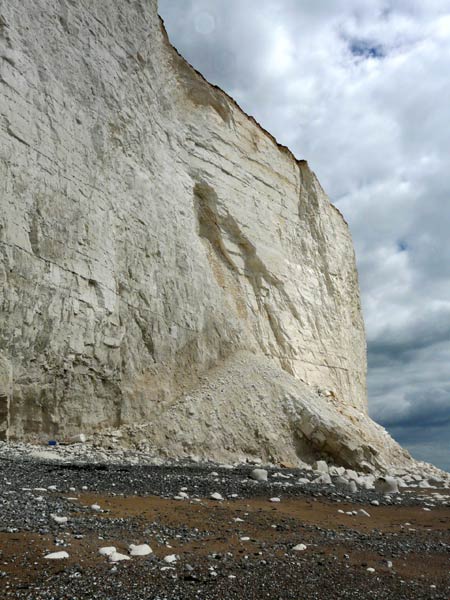
East Sussex Local Geological Sites - Coastal Section Beachy Head - west (img 1272)
Cliffs about 60 m high at Belle Tout exposing Seaford Chalk. Shows landslip scar with fallen slab at base. Seven Sisters flint band is high in the cliff cutting across the top of the slip debris.
Photograph taken: 09/08/2011
Grid ref TV56539543
Direction ESE
Image file: P1040726ed.jpg

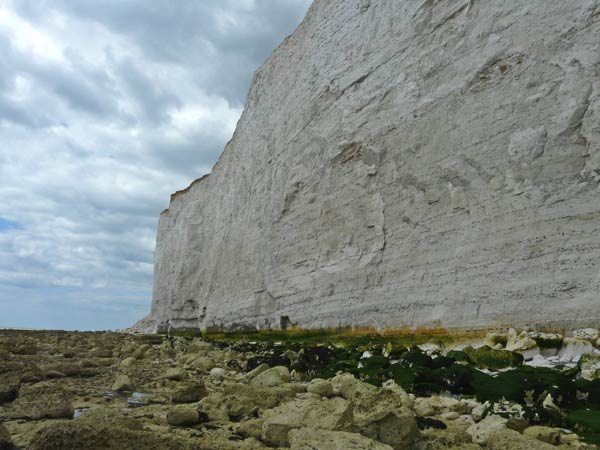
East Sussex Local Geological Sites - Coastal Section Beachy Head - west (img 1273)
Cliffs 50 to 60 m high east of Belle Tout showing gentle dip to the left (west) and exposing Seaford Chalk with numerous close-spaced flint bands (Seven Sisters band is high in the cliff). The lowest beds include marl seams and are close to the top of the underlying Lewes Chalk.
Photograph taken: 09/08/2011
Grid ref TV56849538
Direction west
Image file: P1040735ed.jpg

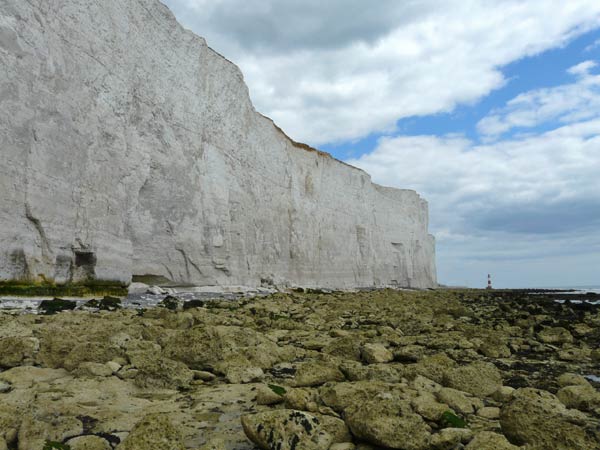
East Sussex Local Geological Sites - Coastal Section Beachy Head - west (img 1274)
Cliffs and wavecut platform east of Belle Tout. Dip is to the left (west) and beneath the Seaford Chalk successively older beds (upper Lewes Chalk) are exposed towards the Beachy Head lighthouse.
Photograph taken: 09/08/2011
Grid ref TV56359548
Direction east
Image file: P1040737ed.jpg

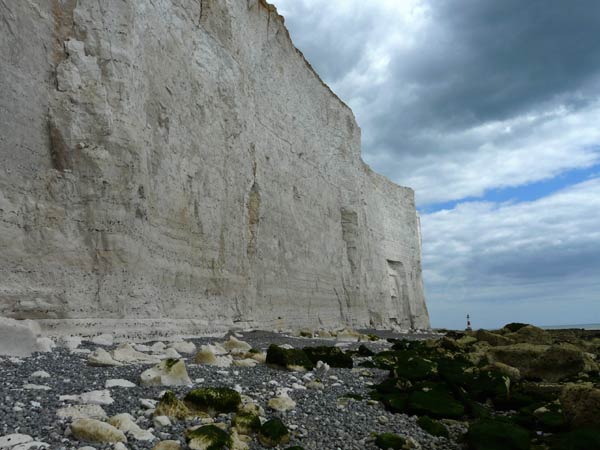
East Sussex Local Geological Sites - Coastal Section Beachy Head - west (img 1275)
Cliffs 60 to 90 m high between Hod Combe and Shooters’ Bottom. Mainly Seaford Chalk with upper Lewes Chalk (greyish and nodular) at base. Stratigraphy defined by numerous flint layers and also by marls in the lower section. Gentle dip to left (west).
Photograph taken: 09/08/2011
Grid ref TV56979539
Direction ESE
Image file: P1040738ed.jpg

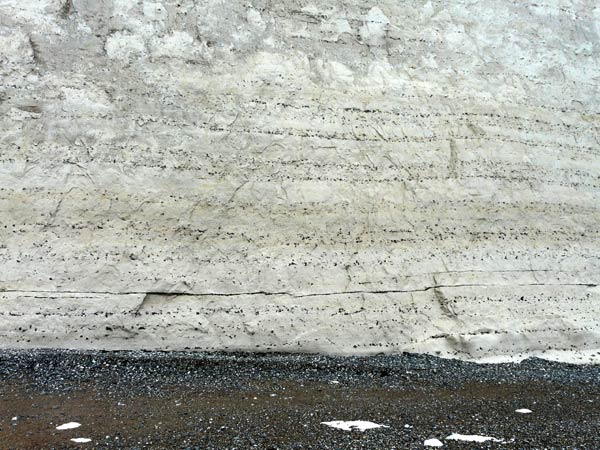
East Sussex Local Geological Sites - Coastal Section Beachy Head - west (img 1276)
Close-up of Lewes Chalk at base of cliff showing close-spaced flint layers, mostly with scattered flints but also a tabular layer.
Photograph taken: 09/08/2011
Grid ref TV57059539
Direction north
Image file: P1040740ed.jpg


East Sussex Local Geological Sites - Coastal Section Beachy Head - west (img 1277)
Cliffs about 90 m high and shingle beach below Shooters’ Bottom. Lewes Chalk at base and Seaford Chalk above. Stratigraphy defined by numerous flint layers and also by marls in the lower part. Dip to left (west).
Photograph taken: 09/08/2011
Grid ref TV57059539
Direction ESE
Image file: P1040741ed.jpg

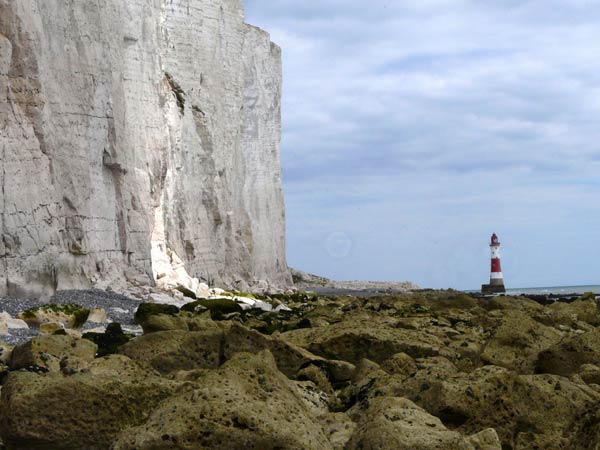
East Sussex Local Geological Sites - Coastal Section Beachy Head - west (img 1278)
Cliffs and wavecut platform east of Shooters’ Bottom. Cliffs cut in Lewes Chalk with overlying Seaford Chalk. Note tongue of debris from 1999 landslide extending towards the lighthouse. Photo taken with zoom lens.
Photograph taken: 09/08/2011
Grid ref TV57229533
Direction ESE
Image file: P1040745ed.jpg

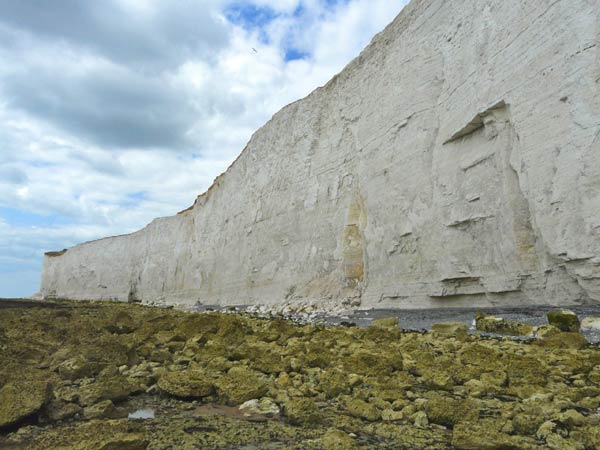
East Sussex Local Geological Sites - Coastal Section Beachy Head - west (img 1279)
Cliffs west of Shooter's Bottom up to 75 m high exposing Lewes Chalk at base and Seaford Chalk above. Gentle dip to west carries top of Lewes Chalk below the base of the cliffs in the middle distance.
Photograph taken: 09/08/2011
Grid ref TV57259528
Direction WNW
Image file: P1040747ed.jpg

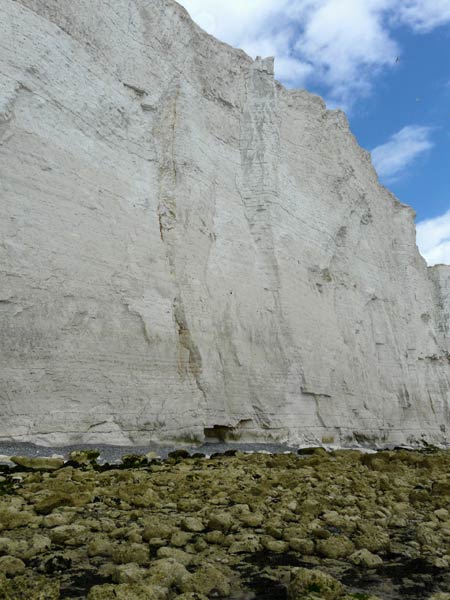
East Sussex Local Geological Sites - Coastal Section Beachy Head - west (img 1280)
Cliffs immediately west of Shooters Bottom up to 90 m high exposing Seaford Chalk in the upper part of the cliff and Lewes Chalk beneath. The Seven Sisters flint band lies in the upper half of the cliff here.
Photograph taken: 09/08/2011
Grid ref TV57259528
Direction NE
Image file: P1040748ed.jpg


East Sussex Local Geological Sites - Coastal Section Beachy Head - west (img 1281)
Cliffs east of Shooters’ Bottom rising from 90 m to 130 m at the lighthouse and exposing successively older beds in the Lewes Chalk at beach level.
Photograph taken: 09/08/2011
Grid ref TV57259528
Direction ESE
Image file: P1040753ed.jpg

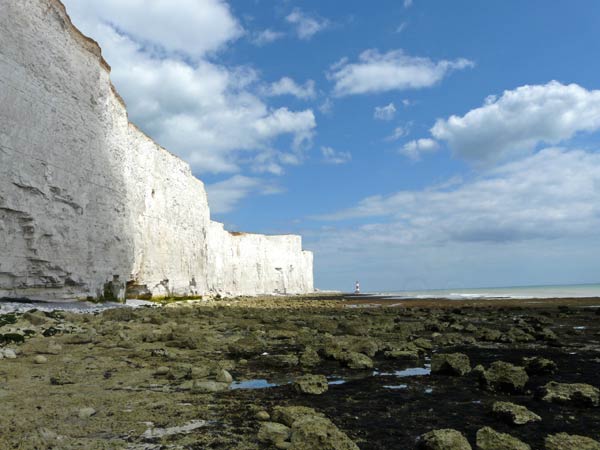
East Sussex Local Geological Sites - Coastal Section Beachy Head - west (img 1282)
Cliffs, sea caves and wavecut platform east of Belle Tout. Dip is to the left (west) and beneath the Seaford Chalk successively older beds (upper Lewes Chalk) are exposed towards the lighthouse.
Photograph taken: 09/08/2011
Grid ref TV56359548
Direction ESE
Image file: P1040756ed.jpg

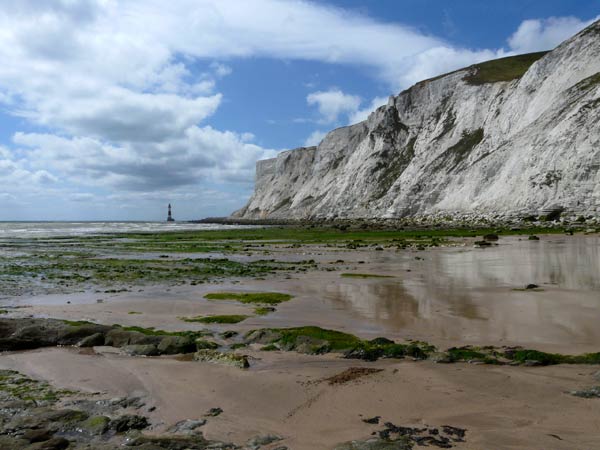
East Sussex Local Geological Sites - Coastal Section Beachy Head - east (img 1283)
Cliffs and foreshore west of Falling Sands to lighthouse. The gentle dip to the left (west) in these cliffs exposes first Zig Zag Chalk, then Holywell Chalk and then New Pit Chalk beds at beach level with overlying Lewes and Seaford Chalks in the cliffs.
Photograph taken: 10/08/2011
Grid ref TV59399545
Direction WSW
Image file: P1040809ed.jpg


East Sussex Local Geological Sites - Coastal Section Beachy Head - east (img 1284)
Cliffs up to 120 m high behind Falling Sands. The gentle dip to the left (west) in these cliffs exposes first West Melbury Marly Chalk, then Zig Zag Chalk and then Holywell Chalk beds at beach level with overlying New Pit Chalk culminating in Lewes Chalk at the top of the cliffs.
Photograph taken: 10/08/2011
Grid ref TV59399545
Direction NW
Image file: P1040811ed.jpg

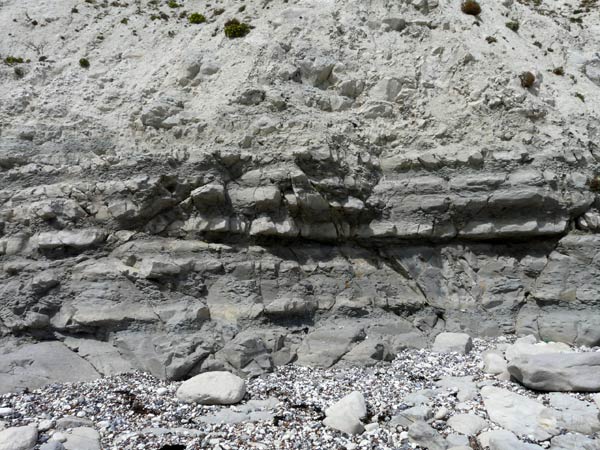
East Sussex Local Geological Sites - Coastal Section Beachy Head - east (img 1285)
Detail of West Melbury Marly Chalk at base of cliff showing about 2 m of alternating beds of marl and chalk.
Photograph taken: 10/08/2011
Grid ref TV59339553
Direction north
Image file: P1040813ed.jpg


East Sussex Local Geological Sites - Coastal Section Beachy Head - east (img 1286)
View west along base of cliffs towards lighthouse. Gentle dip to west exposes West Melbury Marly Chalk at base of cliff on right, then Zig Zag Chalk at centre and Holywell Chalk beyond.
Photograph taken: 10/08/2011
Grid ref TV59339553
Direction WSW
Image file: P1040815ed.jpg

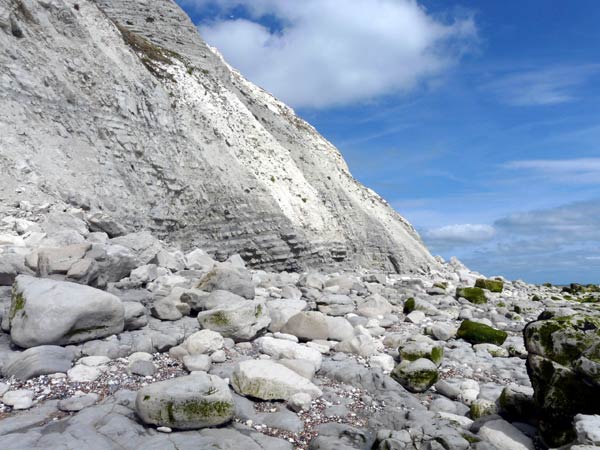
East Sussex Local Geological Sites - Coastal Section Beachy Head - east (img 1287)
West Melbury Marly Chalk exposed at beach level behind Falling Sands showing interbedded chalk and marls with dip to left (west).
Photograph taken: 10/08/2011
Grid ref TV59299551
Direction ENE
Image file: P1040817ed.jpg

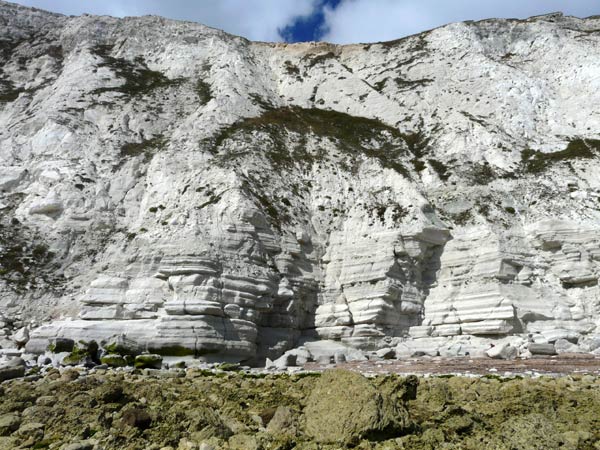
East Sussex Local Geological Sites - Coastal Section Beachy Head - east (img 1288)
Cliffs up to120 m high exposing Zig Zag Chalk with interbedded marls in lower cliff, dipping gently to left (west). Overlain by Holywell and New Pit Chalks with Lewes Chalk at the top.
Photograph taken: 10/08/2011
Grid ref TV59079546
Direction north
Image file: P1040820ed.jpg


East Sussex Local Geological Sites - Coastal Section Beachy Head - east (img 1289)
Cliffs up to 150 m high exposing top of Zig Zag Chalk ( at base) overlain by thick Plenus Marl (greyish green) and Holywell and New Pit Chalks (white). Lewes Chalk (greyish) eroded into pinnacles at top of cliffs.
Photograph taken: 10/08/2011
Grid ref TV58879540
Direction NNW
Image file: P1040826ed.jpg

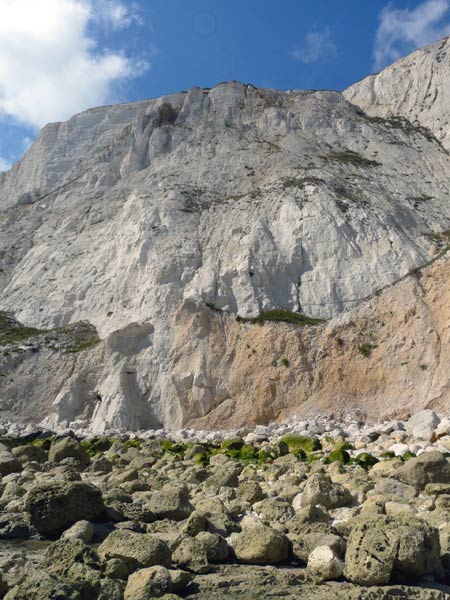
East Sussex Local Geological Sites - Coastal Section Beachy Head - east (img 1290)
Cliffs up to 140 m high exposing top of Holywell Chalk at base overlain by New Pit and Lewes Chalks with Seaford Chalk at top of cliffs. This is the location of the 2001 landslide which destroyed a natural feature called the Devil's Chimney. Eroded landslip debris obscures base.
Photograph taken: 10/08/2011
Grid ref TV58599530
Direction NW
Image file: P1040835ed.jpg

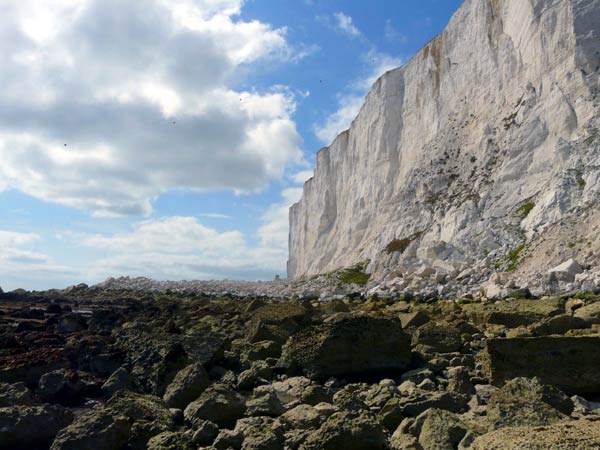
East Sussex Local Geological Sites - Coastal Section Beachy Head - east (img 1291)
Cliffs west of the lighthouse exposing Lewes Chalk overlain by Seaford Chalk. The upper part of the New Pit Chalk at the cliff base is obscured by landslip debris. Note the tongue of debris from the 1999 landlslide extending across the wavecut platform.
Photograph taken: 10/08/2011
Grid ref TV58429520
Direction west
Image file: P1040839ed.jpg

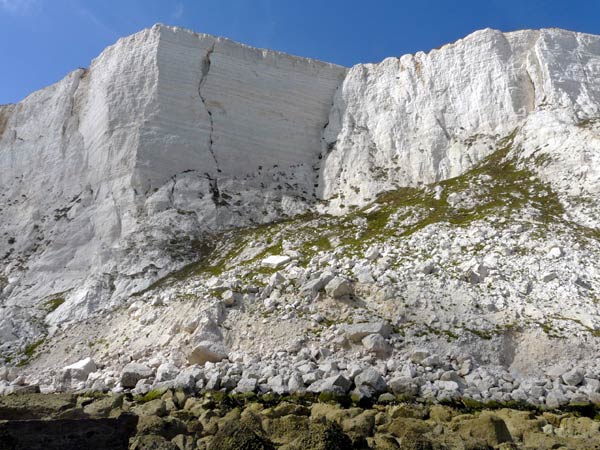
East Sussex Local Geological Sites - Coastal Section Beachy Head - east (img 1292)
Cliffs up to 140 m high exposing top of Seaford Chalk in the upper cliff underlain by Lewes Chalk. New Pit Chalk is mostly obscured by landslip debris. Cliff faces controlled by vertical joints. Note the prominent fracture in the cliff face.
Grid ref TV58429520
Direction NW
Image file: P1040843ed.jpg

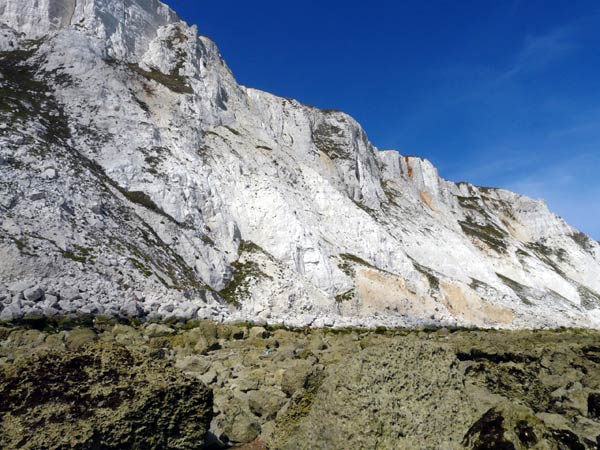
East Sussex Local Geological Sites - Coastal Section Beachy Head - east (img 1293)
Cliffs and wavecut platform east of the lighthouse exposing Holywell, New Pit and Lewes Chalks with basal Seaford Chalk at the cliff top. At the foot of the cliffs a series of debris fans from landslides have been truncated by wave erosion.
Photograph taken: 10/08/2011
Grid ref TV58429520
Direction NE
Image file: P1040845ed.jpg


East Sussex Local Geological Sites - Coastal Section Beachy Head - east (img 1294)
Cliffs up to 140 m high to the west of photo 10 exposing New Pit Chalk in lower cliff overlain by Lewes Chalk and Seaford Chalk at the top of the cliff. Eroded landslide debris obscures the base.
Photograph taken: 10/08/2011
Grid ref TV58499524
Direction NW
Image file: P1040848ed.jpg

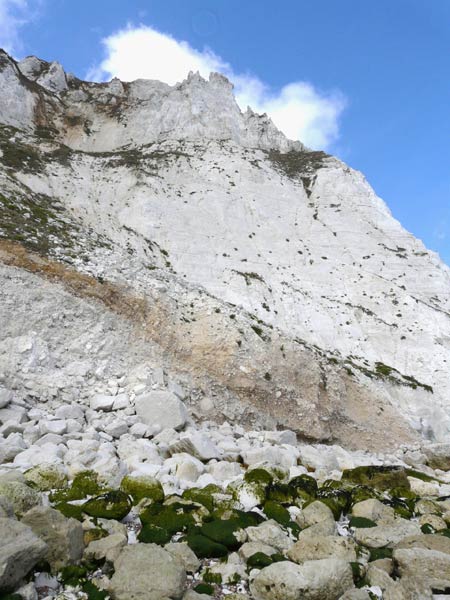
East Sussex Local Geological Sites - Coastal Section Beachy Head - east (img 1295)
Cliffs up to 150 m high exposing white Holywell Chalk and New Pit Chalk overlain by greyish Lewes Chalk eroded into pinnacles at top. Landslide debris at left.
Photograph taken: 10/08/2011
Grid ref TV58819539
Direction NNE
Image file: P1040850ed.jpg

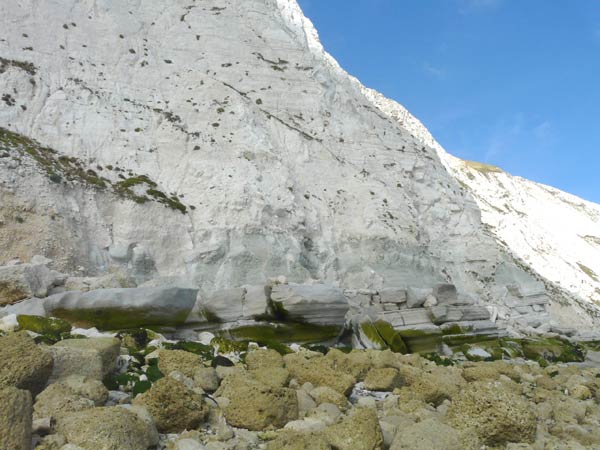
East Sussex Local Geological Sites - Coastal Section Beachy Head - east (img 1296)
Base of cliff exposing Zig Zag Chalk with interbedded marls overlain by Plenus Marls (greyish green) in turn overlain by white Holywell Nodular Chalk.
Photograph taken: 10/08/2011
Grid ref TV58849539
Direction NNE
Image file: P1040856ed.jpg

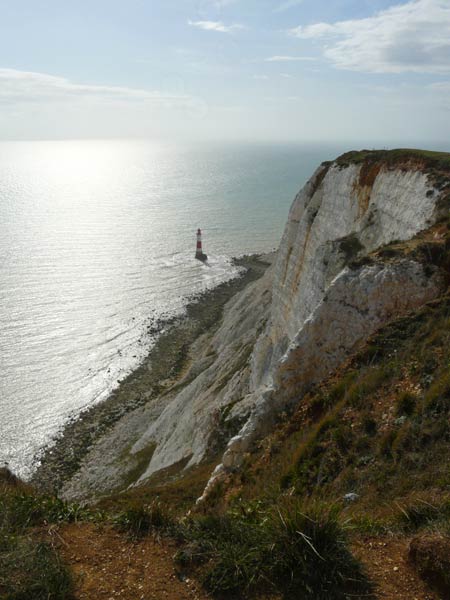
East Sussex Local Geological Sites - Coastal Section Beachy Head - east (img 1297)
Cliffs east of the lighthouse exposing Seaford Chalk with close-spaced flint bands in the upper cliff underlain by Lewes Chalk. The debris fans at the cliff base obscure the New Pit Chalk.
Photograph taken: 22/09/2011
Grid ref TV58799556
Direction SW
Image file: P1050467ed.jpg


East Sussex Local Geological Sites - Coastal Section Beachy Head - west (img 1298)
Cliffs, foreshore and lighthouse from the crest of the down above Shooters’ Bottom. The cliff tops expose Seaford Chalk.
Photograph taken: 22/09/2011
Grid ref TV57449532
Direction ESE
Image file: P1050472ed.jpg

Coastal section: Cow Gap (TV59/10e)
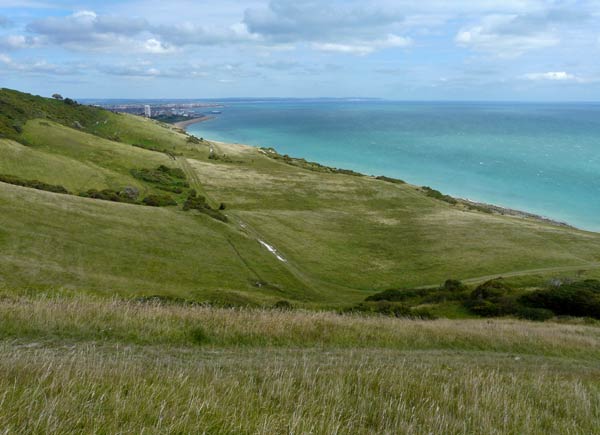
East Sussex Local Geological Sites - Coastal Section Cow Gap (img 1300)
Series of small embayments on the left in the chalk escarpment above Cow Gap. The top of the cliffs at right marks the head of a series of landslips, exposing the superficial deposits associated with the embayments.
Photograph taken: 10/08/2011
Grid ref TV60199570
Direction NE
Image file: P1040779ed.jpg

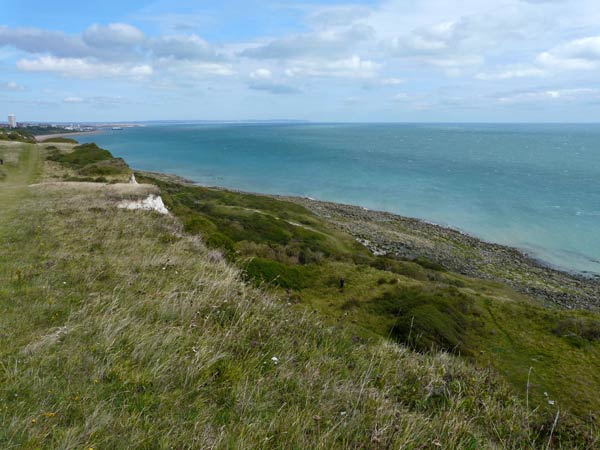
East Sussex Local Geological Sites - Coastal Section Cow Gap (img 1301)
Edge of scarp above Cow Gap with landslipped area below. Upper Greensand wavecut platform and reefs form the toe of the rotational slides over the underlying Gault Clay. The scarp face exposes chalk and locally also exposes Pleistocene solifluction deposits overlying chalk.
Photograph taken: 10/08/2011
Grid ref TV60499574
Direction NE
Image file: P1040783ed.jpg

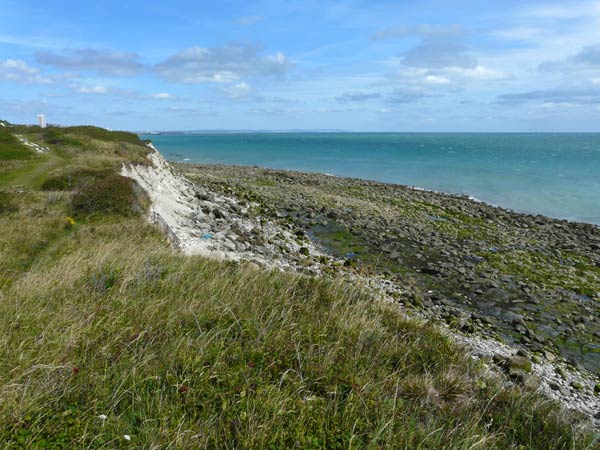
East Sussex Local Geological Sites - Coastal Section Cow Gap (img 1302)
Low chalk cliffs at foot of landslide area at Cow Gap with Upper Greensand wavecut platform exposed.
Photograph taken: 10/08/2011
Grid ref TV60619576
Direction NE
Image file: P1040786ed.jpg


East Sussex Local Geological Sites - Coastal Section Cow Gap (img 1303)
Cliffs to south of Cow Gap exposing the transition from Upper Greensand through Glauconitic Marl to West Melbury Marly Chalk. Dip to right (west) at toe of rotational slides. Upper Greensand forms a minor reef at left and Head Ledge, an extension of the wavecut platform at centre.
Photograph taken: 10/08/2011
Grid ref TV59559566
Direction SSW
Image file: P1040790ed.jpg

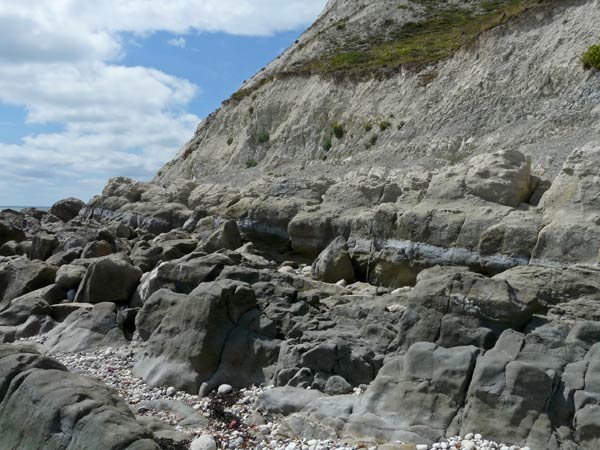
East Sussex Local Geological Sites - Coastal Section Cow Gap (img 1304)
Foot of cliffs south of Cow Gap showing closer view of transition from Upper Greensand to Glauconitic Marl (1 m pole for scale) and West Melbury Marly Chalk. Dip to right (west) at toe of rotational slide.
Photograph taken: 10/08/2011
Grid ref TV60549563
Direction SSW
Image file: P1040791ed.jpg

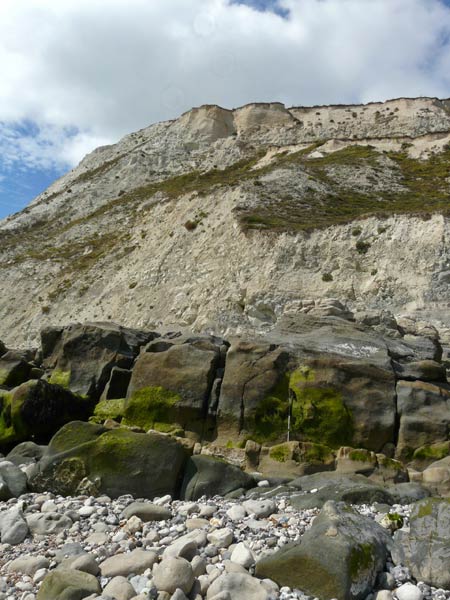
East Sussex Local Geological Sites - Coastal Section Cow Gap (img 1305)
Cliffs south of Cow Gap showing sequence from Upper Greensand (1 m pole for scale) to Glauconitic Marl, West Melbury Marly Chalk and Zig Zag Chalk. Dip related to toe of rotational slide.
Photograph taken: 10/08/2011
Grid ref TV60539561
Direction WNW
Image file: P1040795ed.jpg

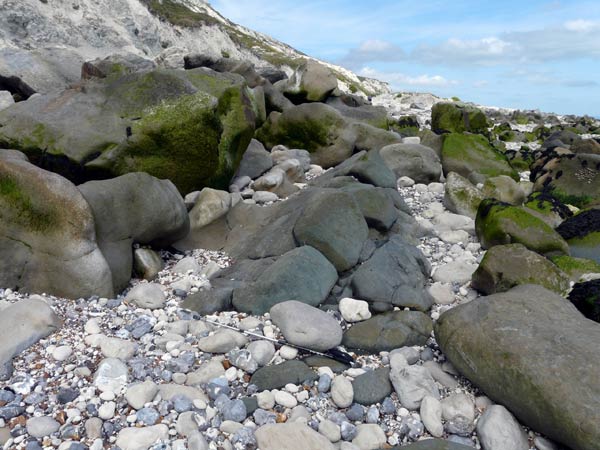
East Sussex Local Geological Sites - Coastal Section Cow Gap (img 1306)
Good example of massive greyish-green Upper Greensand exposed on the beach south of Cow Gap.
1 m pole for scale.
Photograph taken: 10/08/2011
Grid ref TV60529559
Direction NNE
Image file: P1040796ed.jpg

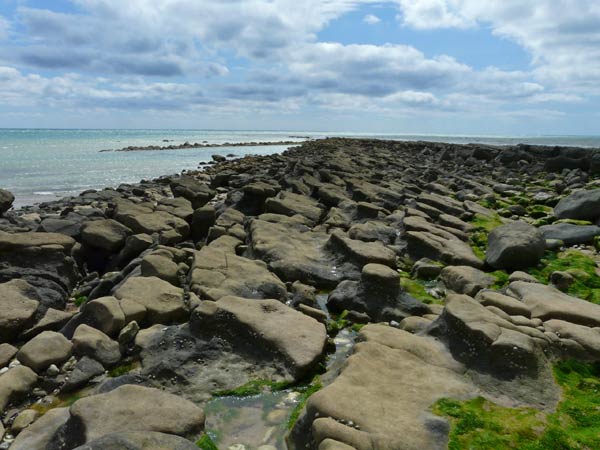
East Sussex Local Geological Sites - Coastal Section Cow Gap (img 1307)
Upper Greensand beds dipping to right (west) along Head Ledge. Minor Upper Greensand reef visible offshore.
Photograph taken: 10/08/2011
Grid ref TV60489556
Direction SSW
Image file: P1040797ed.jpg

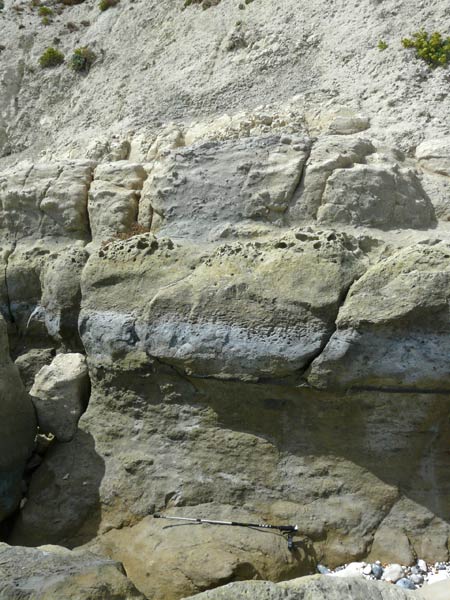
East Sussex Local Geological Sites - Coastal Section Cow Gap (img 1308)
Close-up of uppermost layers of the Upper Greensand overlain by more eroded Glauconitic Marl from which small phosphatic nodules can be seen protruding. This is overlain by West Melbury Marly Chalk.
1 m pole for scale.
Photograph taken: 10/08/2011
Grid ref TV60489558
Direction west
Image file: P1040799ed.jpg

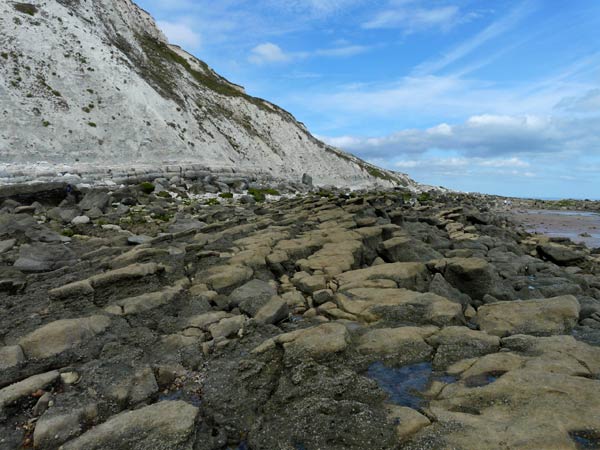
East Sussex Local Geological Sites - Coastal Section Cow Gap (img 1309)
Low cliffs and foreshore south of Cow Gap. Upper Greensand dips to left (west) overlain by Glauconitic Marl along foot of cliff with West Melbury Marly Chalk forming the cliff face.
Photograph taken: 10/08/2011
Grid ref TV60459550
Direction NNE
Image file: P1040803ed.jpg

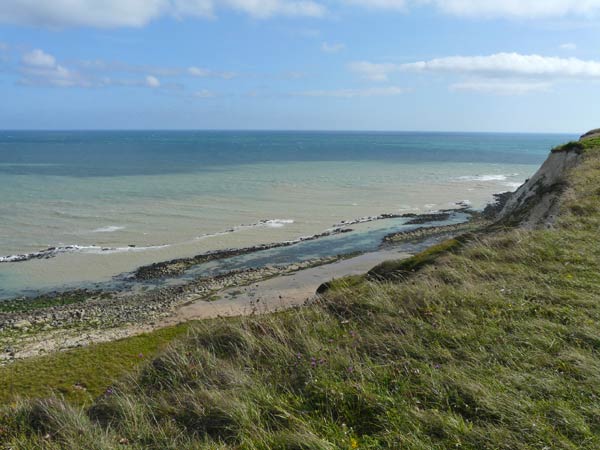
East Sussex Local Geological Sites - Coastal Section Cow Gap (img 1310)
Edge of scarp above Cow Gap with landslipped area below. Upper Greensand wavecut platform and reefs form the toes of a series of ancient landslips over the underlying Gault Clay. Ridges of Upper Greensand protect shallow lagoons underlain by Gault Clay.
Photograph taken: 10/08/2011
Grid ref TV60489572
Direction SE
Image file: P1040862ed.jpg

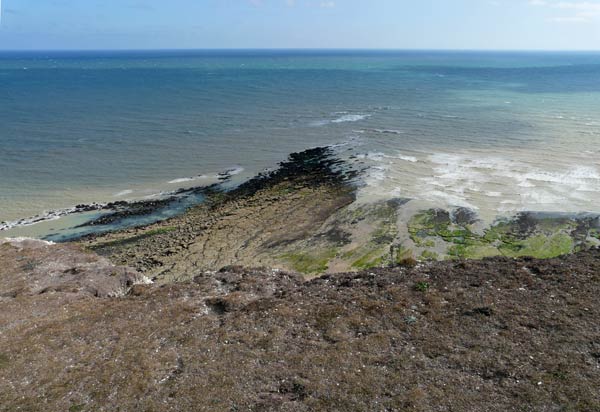
East Sussex Local Geological Sites - Coastal Section Cow Gap (img 1311)
Upper Greensand forms the Head Ledge reef.
Photograph taken: 10/08/2011
Grid ref TV60369561
Direction south
Image file: P1040867ed.jpg

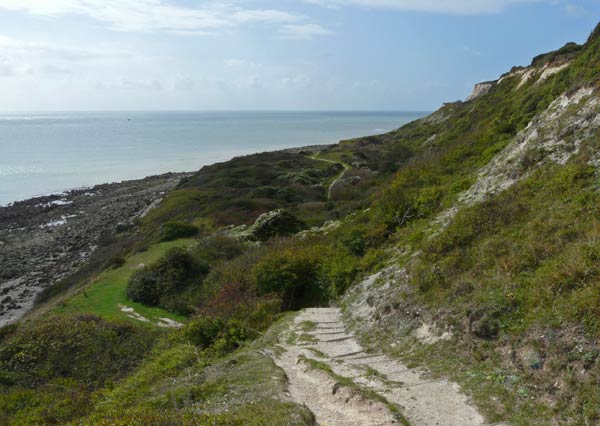
East Sussex Local Geological Sites - Coastal Section Cow Gap (img 1312)
Profile of landslip area above Cow Gap, locally exposing chalk overlain by Pleistocene solifluction deposits at head of scarp. Upper Greensand wavecut platform and reefs form toe of rotational slides over the underlying Gault Clay.
Photograph taken: 22/09/2011
Grid ref TV60729604
Direction SSW
Image file: P1050396ed.jpg

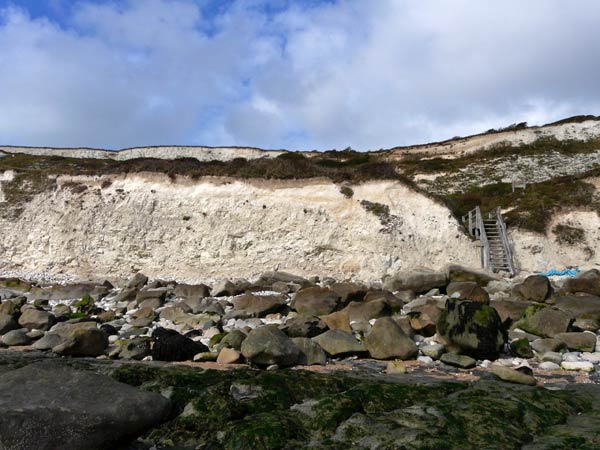
East Sussex Local Geological Sites - Coastal Section Cow Gap (img 1313)
Cow Gap steps with low cliffs of West Melbury Marly Chalk and Upper Greensand boulders on beach. Top of cliff and the scarp at head of landslide area above expose Pleistocene solifluction deposits overlying chalk.
Photograph taken: 22/09/2011
Grid ref TV60689578
Direction WNW
Image file: P1050402ed.jpg

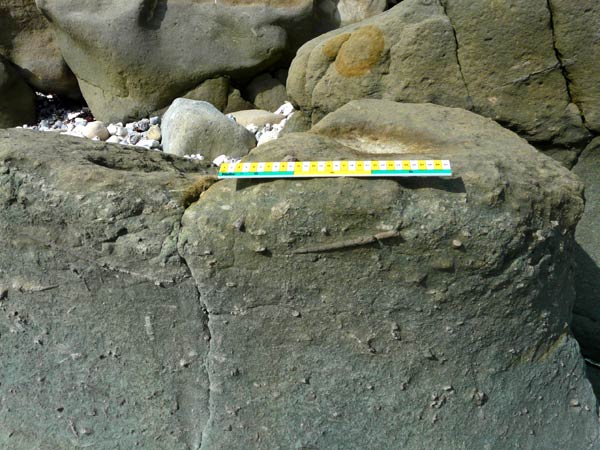
East Sussex Local Geological Sites - Coastal Section Cow Gap (img 1314)
Upper Greensand boulder showing numerous trace fossils (worm tubes?).
30 cm scale.
Photograph taken: 22/09/2011
Grid ref TV60709584
Image file: P1050408ed.jpg

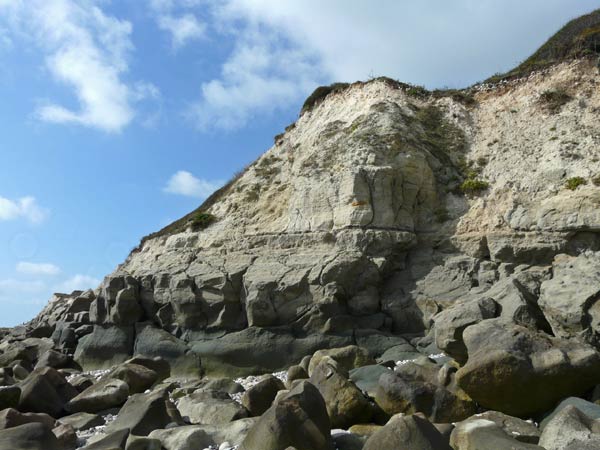
East Sussex Local Geological Sites - Coastal Section Cow Gap (img 1315)
Low cliff north of Cow Gap steps showing well exposed transition from Upper Greensand at base through Glauconitic Marl to West Melbury Marly Chalk.
Photograph taken: 22/09/2011Grid ref TV60729587
Direction SW
Image file: P1050412ed.jpg

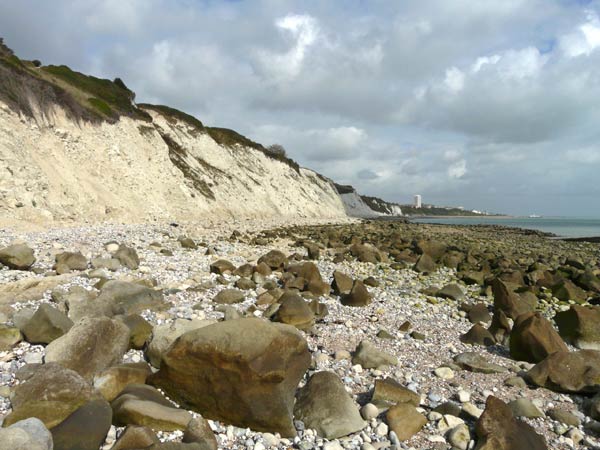
East Sussex Local Geological Sites - Coastal Section Cow Gap (img 1316)
Low cliffs of West Melbury Marly Chalk and the Upper Greensand wavecut platform north of Cow Gap steps.
Photograph taken: 22/09/2011
Grid ref TV60749594
Direction NNE
Image file: P1050413ed.jpg

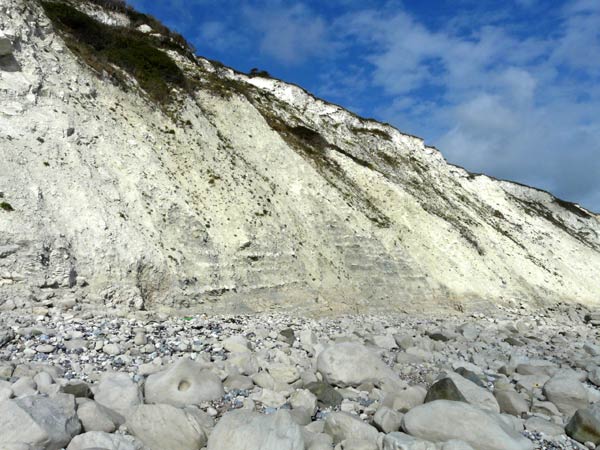
East Sussex Local Geological Sites - Coastal Section Cow Gap (img 1317)
Cliffs up to 40 m high near the northern end of the site exposing West Melbury Marly Chalk in the lower cliff . Debris obscures the upper part of the section.
Photograph taken: 22/09/2011
Grid ref TV60829616
Direction NNE
Image file: P1050416ed.jpg

Coastal section: Holywell Sections and Foyle Track (TV69/02)
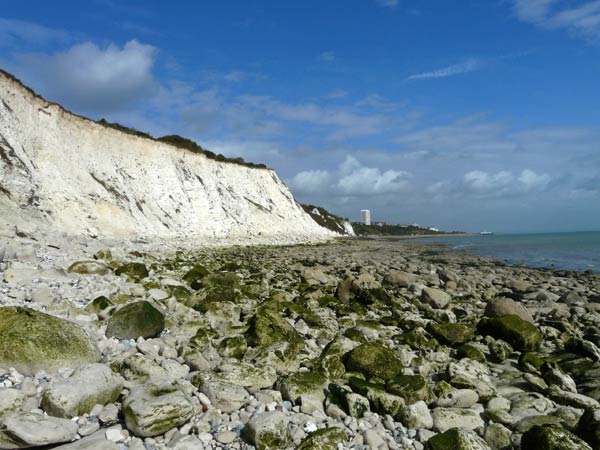
East Sussex Local Geological Sites - Coastal Section Holywell and Foyle Track (img 1319)
Cliffs up to 50 m high exposing Holywell Nodular Chalk with Plenus Marl at the base. The Upper Greensand reef is mainly submerged and the visible wavecut platform exposes chalk.
Photograph taken: 22/09/2011
Grid ref TV60929644
Direction NNE
Image file: P1050422ed.jpg

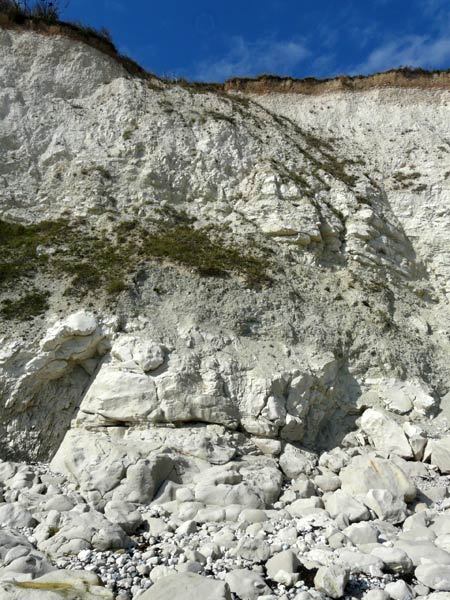
East Sussex Local Geological Sites - Coastal Section Holywell and Foyle Track (img 1320)
Cliff about 30 m high exposing top Zig Zag Chalk at base overlain successively by Plenus Marls, Melbourn Rock and lower Holywell Nodular Chalk. Thin Pleistocene solifluction deposits (Whitebread Hole) overlie chalk at the cliff top.
Photograph taken: 22/09/2011
Grid ref TV60929648
Direction WNW
Image file: P1050423ed.jpg

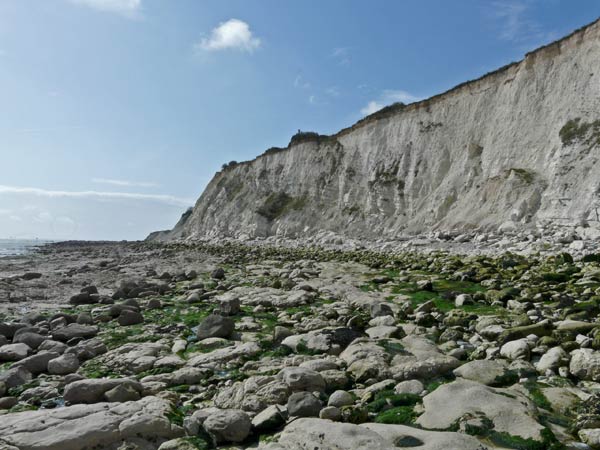
East Sussex Local Geological Sites - Coastal Section Holywell and Foyle Track (img 1321)
Cliffs up to 40 m high at the southern end of the site. The thick greyish Plenus Marls layer dips to the right (north) down to beach level separating the Zig Zag Chalk beneath from the Holywell Nodlular Chalk above. The visible wavecut platform exposes chalk and the Upper Greensand reef is partly submerged.
Photograph taken: 22/09/2011
Grid ref TV60989657
Direction SSW
Image file: P1050426ed.jpg

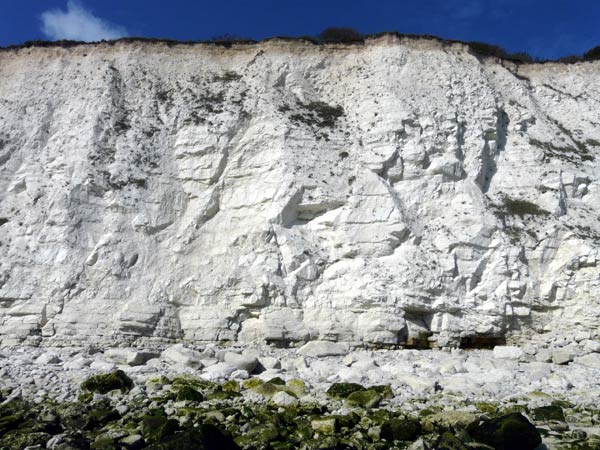
East Sussex Local Geological Sites - Coastal Section Holywell and Foyle Track (img 1322)
Cliffs 35 m high exposing massive white blocky Holywell Nodular Chalk. Melbourn Rock is exposed at beach level.
Photograph taken: 22/09/2011
Grid ref TV60989657
Direction WNW
Image file: P1050427ed.jpg

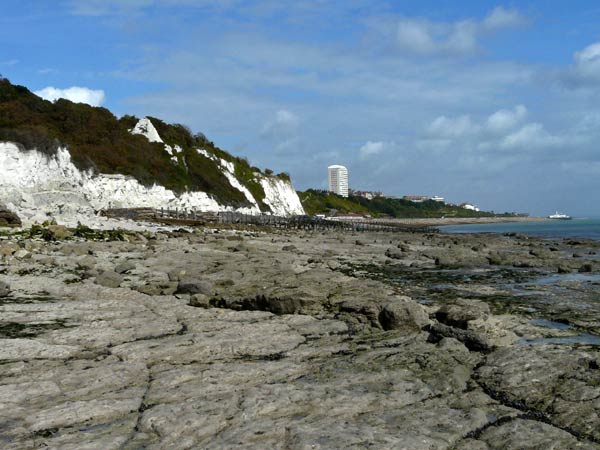
East Sussex Local Geological Sites - Coastal Section Holywell and Foyle Track (img 1323)
Cliffs towards Holywell exposing Holywell Nodular Chalk including the Pinnacle, above Melbourn Rock. Plenus Marls exposed at base of cliff to left. Wavecut platform exposes chalk. The Upper Greensand reef is further offshore and submerged (at this state of the tide).
Photograph taken: 22/09/2011
Grid ref TV60079670
Direction NNE
Image file: P1050431ed.jpg

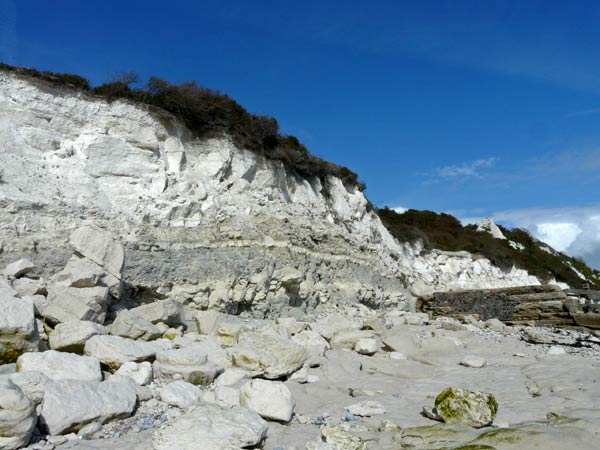
East Sussex Local Geological Sites - Coastal Section Holywell and Foyle Track (img 1324)
Low cliffs exposing thick greyish Plenus Marls layer separating underlying Zig Zag Chalk from overlying Melbourn Rock.
Photograph taken: 22/09/2011
Grid ref TV60109680
Direction NNW
Image file: P1050432ed.jpg

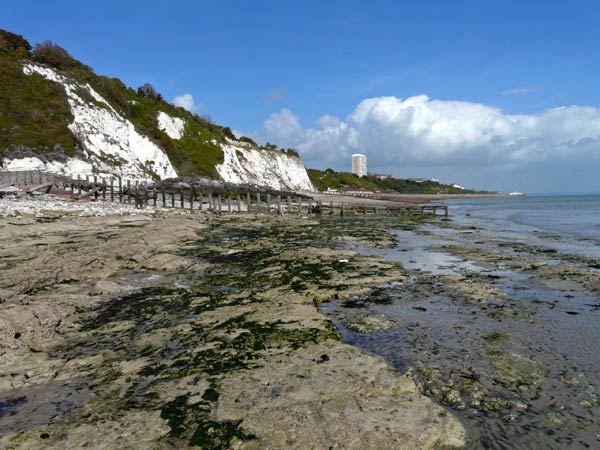
East Sussex Local Geological Sites - Coastal Section Holywell and Foyle Track (img 1325)
Cliffs up to 40 m high north of Holywell steps exposing Holywell Nodular Chalk. Short section of rock armour behind the groyne protects the Holywell spring. Wavecut platform exposes chalk. The Upper Greensand reef is submerged at this state of the tide.
Photograph taken: 22/09/2011
Grid ref TV60199688
Direction NNE
Image file: P1050438ed.jpg

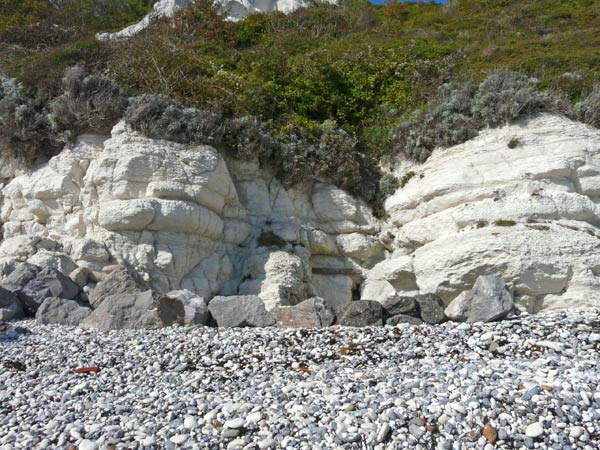
East Sussex Local Geological Sites - Coastal Section Holywell and Foyle Track (img 1326)
Holywell spring is located in the recess at the foot of the cliff which exposes basal Holywell nodular chalk with Melbourn Rock at base. The water emerges from the contact between Melbourn Rock and Plenus Marls.
Photograph taken: 22/09/2011
Grid ref TV60189696
Direction WNW
Image file: P1050444ed.jpg


East Sussex Local Geological Sites - Coastal Section Holywell and Foyle Track (img 1327)
Holywell Nodular Chalk with prominent marl layers exposed in cliffs north of the Holywell spring.
Photograph taken: 22/09/2011
Grid ref TV60249706
Direction NNW
Image file: P1050447ed.jpg

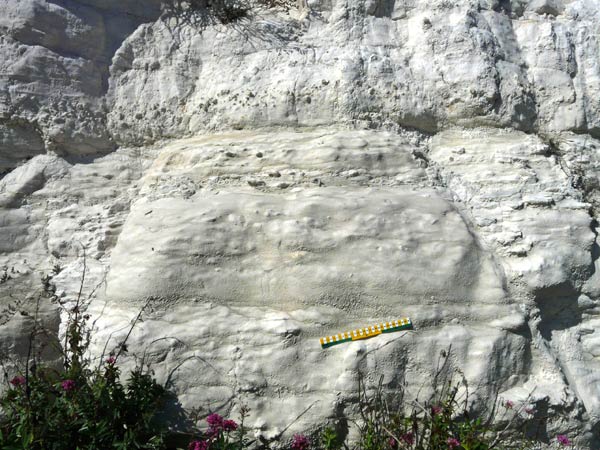
East Sussex Local Geological Sites - Coastal Section Holywell and Foyle Track (img 1328)
Detail of base of cliff shown in photo 11 exposing Holywell nodular chalk with prominent tabular marl layers and also thin wispy marl seams.
30 cm scale.
Photograph taken: 22/09/2011
Grid ref TV60249707
Direction WNW
Image file: P1050448ed.jpg

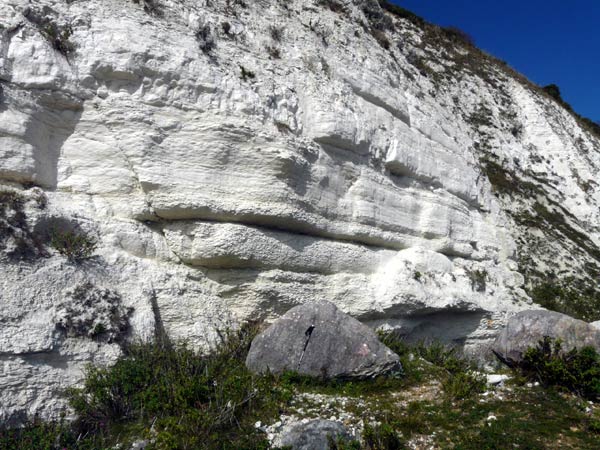
East Sussex Local Geological Sites - Coastal Section Holywell and Foyle Track (img 1329)
Cliffs north of Holywell steps exposing Holywell Nodular Chalk. Nodular layers and prominent marl seams, some with wispy bedding, in lower cliff.
1 m pole for scale.
Photograph taken: 22/09/2011
Grid ref TV60289715
Direction NNW
Image file: P1050451ed.jpg

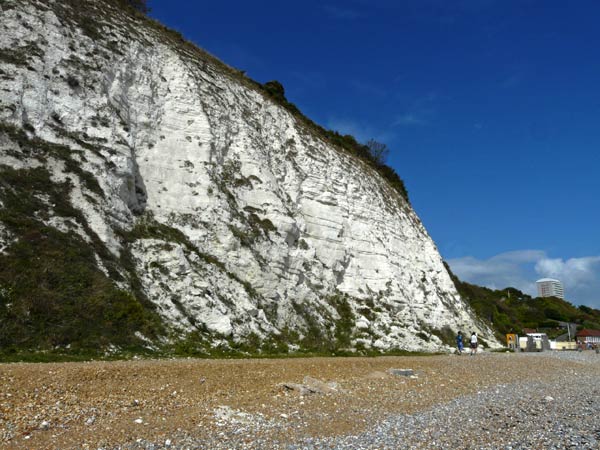
East Sussex Local Geological Sites - Coastal Section Holywell and Foyle Track (img 1330)
Holywell Nodular Chalk with Melbourn Rock at base exposed at the north end of the cliffs. About 40 m high. Nodular chalk with prominent marl layers.
Photograph taken: 22/09/2011
Grid ref TV60309717
Direction north
Image file: P1050453ed.jpg

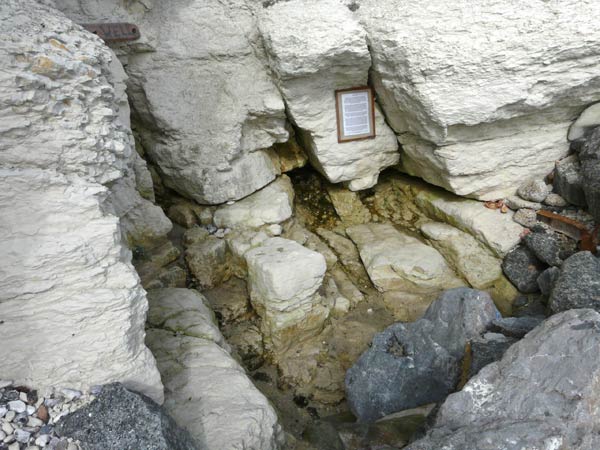
East Sussex Local Geological Sites - Coastal Section Holywell and Foyle Track (img 1331)
Holywell perennial spring at the base of the cliff where water emerges from the contact between Melbourn Rock and the relatively impermeable Plenus Marls below.
Photograph taken: 22/09/2011
Grid ref TV60189696
Image file: P1050455ed.jpg


East Sussex Local Geological Sites - Coastal Section Holywell and Foyle Track (img 1332)
Holywell Pinnacle and cliffs exposing white, blocky Holywell Nodular Chalk with marl seams, overlying Melbourn Rock. The Holywell spring is at the base of the cliffs off to the right.
Photograph taken: 22/09/2011
Grid ref TV60189694
Direction WNW
Image file: P1050456ed.jpg

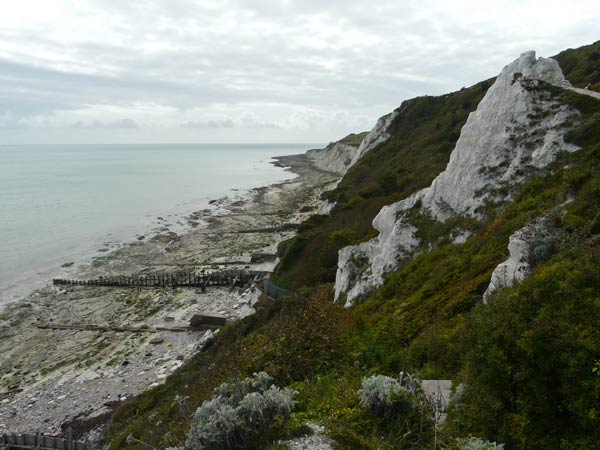
East Sussex Local Geological Sites - Coastal Section Holywell and Foyle Track (img 1333)
Holywell Pinnacle, chalk cliffs and foreshore to south. The pinnacle exposes Holywell Nodular Chalk. Wavecut platform exposes mostly chalk at this state of the tide. The Upper Greensand reef is largely submerged.
Photograph taken: 22/09/2011
Grid ref TV60179702
Direction SSW
Image file: P1050457ed.jpg

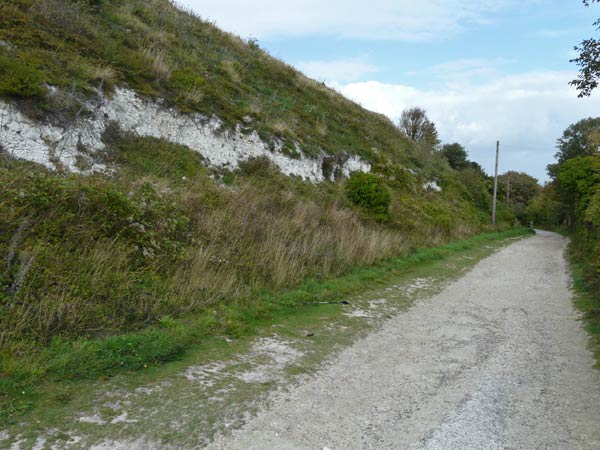
East Sussex Local Geological Sites - Coastal Section Holywell and Foyle Track (img 1334)
Lewes Chalk exposed in bank at north side of Foyle Track. Appears to be mostly obscured by vegetation and talus.
Photograph taken: 22/09/2011
Grid ref TV60049697
Direction NNE
Image file: P1050458ed.jpg


East Sussex Local Geological Sites - Coastal Section Holywell and Foyle Track (img 1335)
View north from Foyle Track. Wavecut chalk platform is visible as far as Eastbourne beach but not beyond. Rock armour below Holywell Pinnacle is opposite Holywell spring. Part of the submerged Upper Greensand reef can be seen faintly offshore.
Photograph taken: 22/09/2011
Grid ref TV60019679
Direction NE
Image file: P1050459ed.jpg

East Head
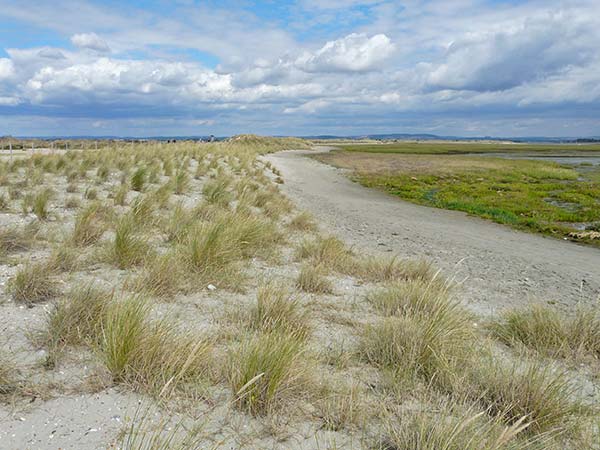
West Sussex Local Geological Sites - East Head (img 1337)
Sand dunes protected by marram grass, narrow beach and salt marsh on inner (eastern) side of East Head.
Photograph taken: 18/08/2010
Grid ref. SZ76579854
Direction north
Image file: P1020340ed.jpg

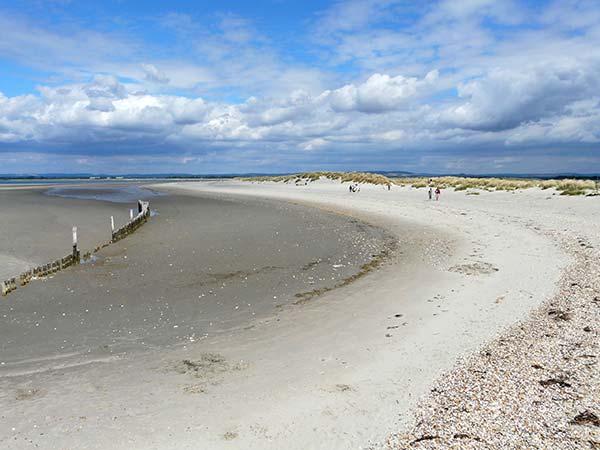
West Sussex Local Geological Sites - East Head (img 1338)
Extensive sandy beach along outer (western) side of East Head spit with dunes behind.
Photograph taken: 18/08/2010
Grid ref. SZ76539855
Direction north
Image file: P1020341ed.jpg


West Sussex Local Geological Sites - East Head (img 1339)
View to right of photo 3 showing interior of spit with extensive sand dunes protected by marram grass between the outer beach at left and the inner beach and saltmarsh at right.
Photograph taken: 18/08/2010
Grid ref. SZ76629880
Direction NNE
Image file: P1020347ed.jpg

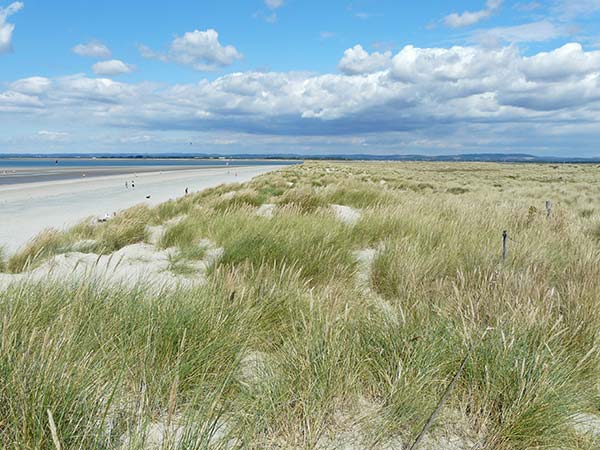
West Sussex Local Geological Sites - East Head (img 1340)
Outer (western) side of East Head showing sandy beach and extensive sand dunes protected by marram grass.
Photograph taken: 18/08/2010
Grid ref. SZ76629880
Direction NNE
Image file: P1020348ed.jpg


West Sussex Local Geological Sites - East Head (img 1341)
View to right of photo 4 showing inner (eastern) side of spit with extensive sand dunes protected by marram grass, a narrow beach and saltmarsh.
Photograph taken: 18/08/2010
Grid ref. SZ76629880
Direction NNE
Image file: P1020349ed.jpg

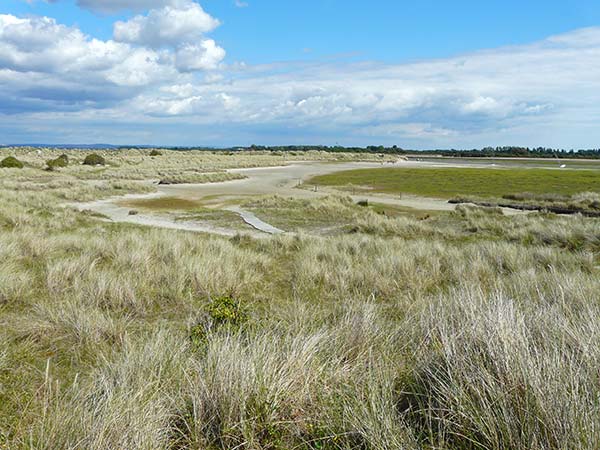
West Sussex Local Geological Sites - East Head (img 1342)
Looking towards the sand dunes at the northeastern tip of the spit with salt marsh at right and Ella Nore on the horizon.
Photograph taken: 18/08/2010
Grid ref. SZ76809913
Direction ENE
Image file: P1020351ed.jpg

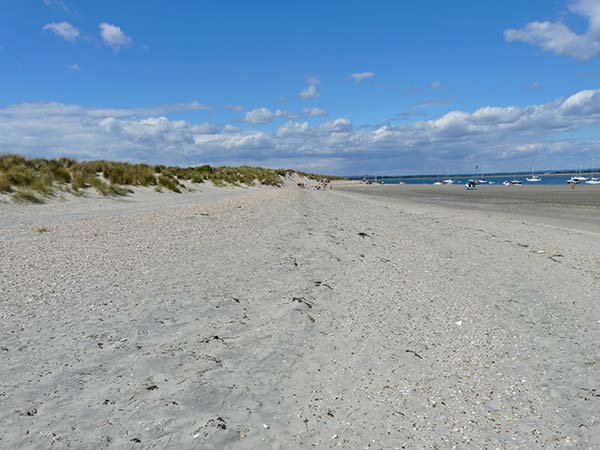
West Sussex Local Geological Sites - East Head (img 1343)
Beach and sand dunes along the northeastern edge of the spit.
Photograph taken: 18/08/2010
Grid ref. SZ77049920
Direction NW
Image file: P1020352ed.jpg

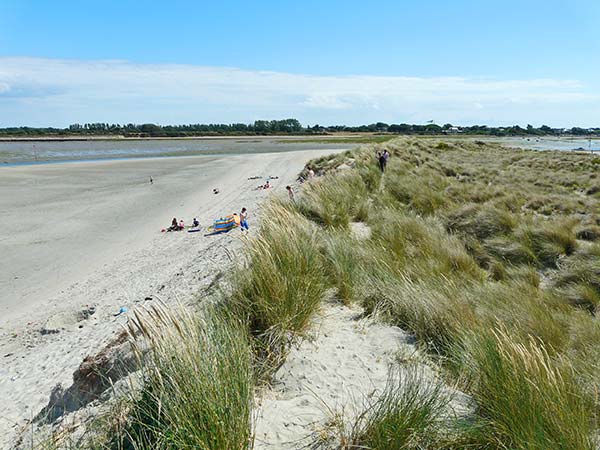
West Sussex Local Geological Sites - East Head (img 1344)
Sand and shingle beach backed by sand dunes with marram grass along northeastern margin of East Head spit.
Ella Nore LGS on horizon.
Photograph taken: 18/08/2010
Grid ref. SZ76929927
Direction SE
Image file: P1020356ed.jpg

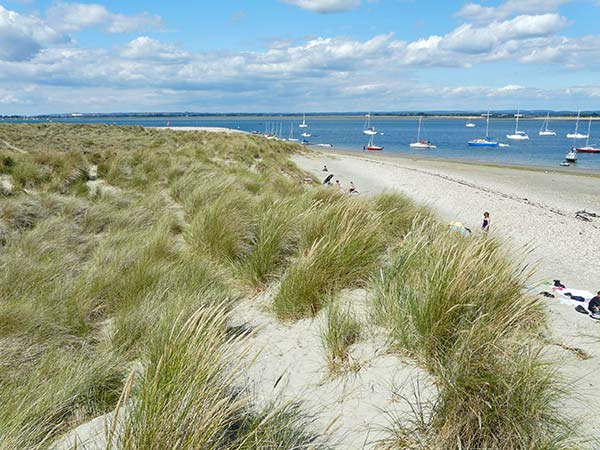
West Sussex Local Geological Sites - East Head (img 1345)
Sand and shingle beach backed by dunes with marram grass at the northern tip of East Head spit.
Photograph taken: 18/08/2010
Grid ref. SZ76929927
Direction NW
Image file: P1020357ed.jpg

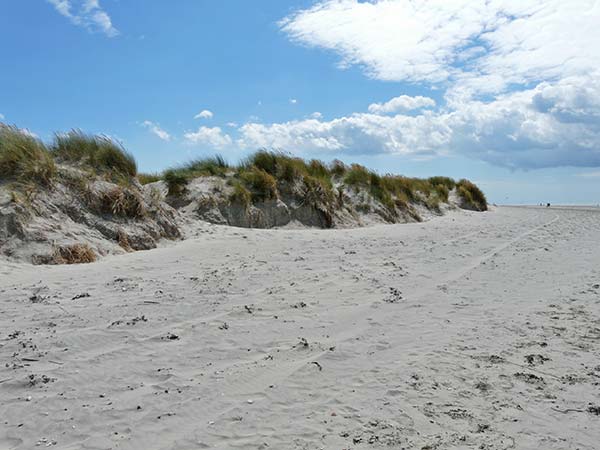
West Sussex Local Geological Sites - East Head (img 1346)
Eroded sand dunes behind beach near northern tip of East Head.
Photograph taken: 18/08/2010
Grid ref. SZ76589929
Direction SSE
Image file: P1020358ed.jpg

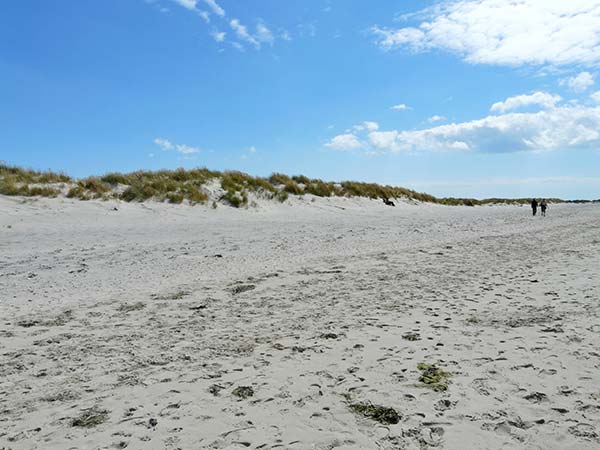
West Sussex Local Geological Sites - East Head (img 1347)
Sand dunes behind the extensive sandy beach on the outer (western) side of East Head spit.
Photograph taken: 18/08/2010
Grid ref 76539903
Direction south
Image file: P1020360ed.jpg

